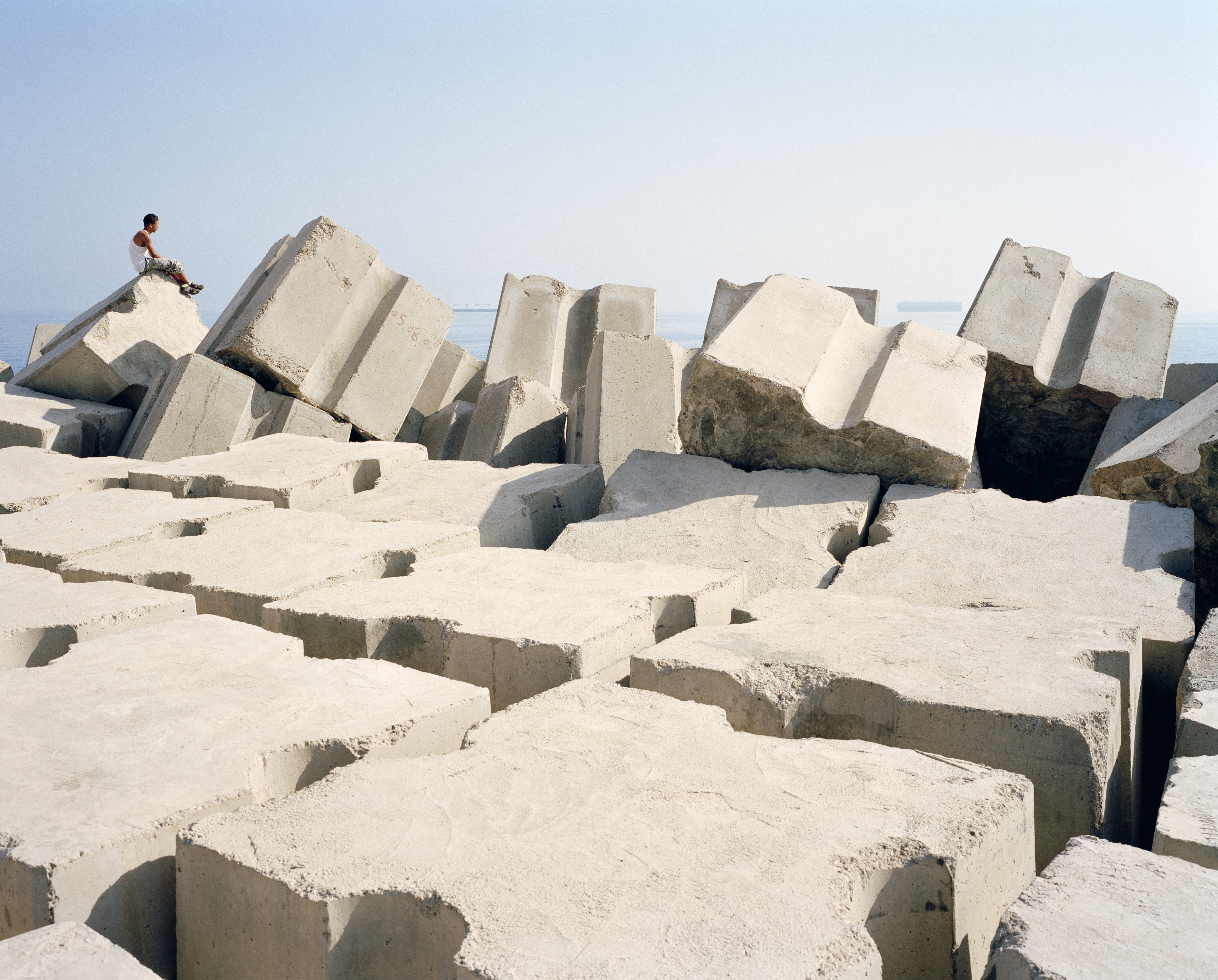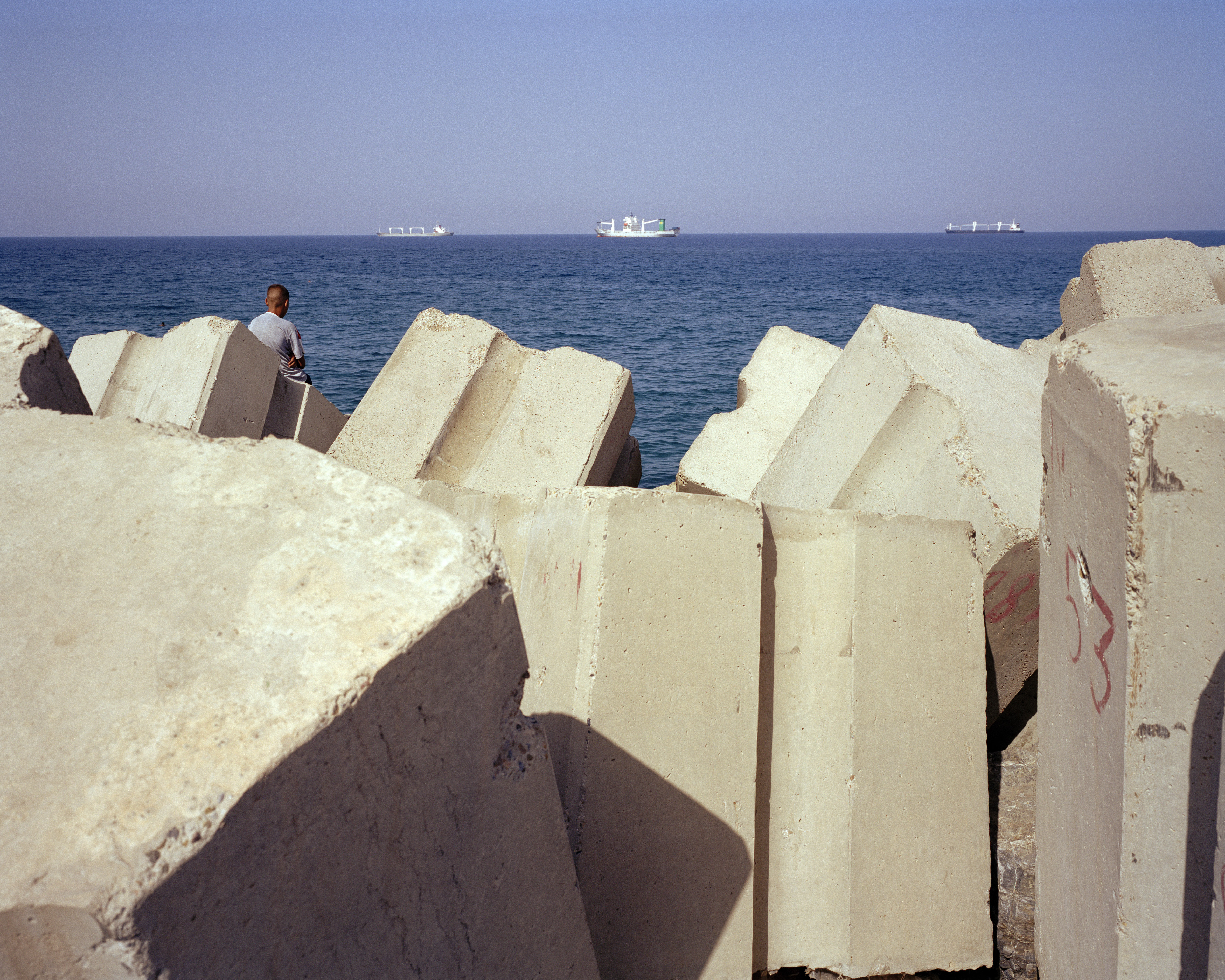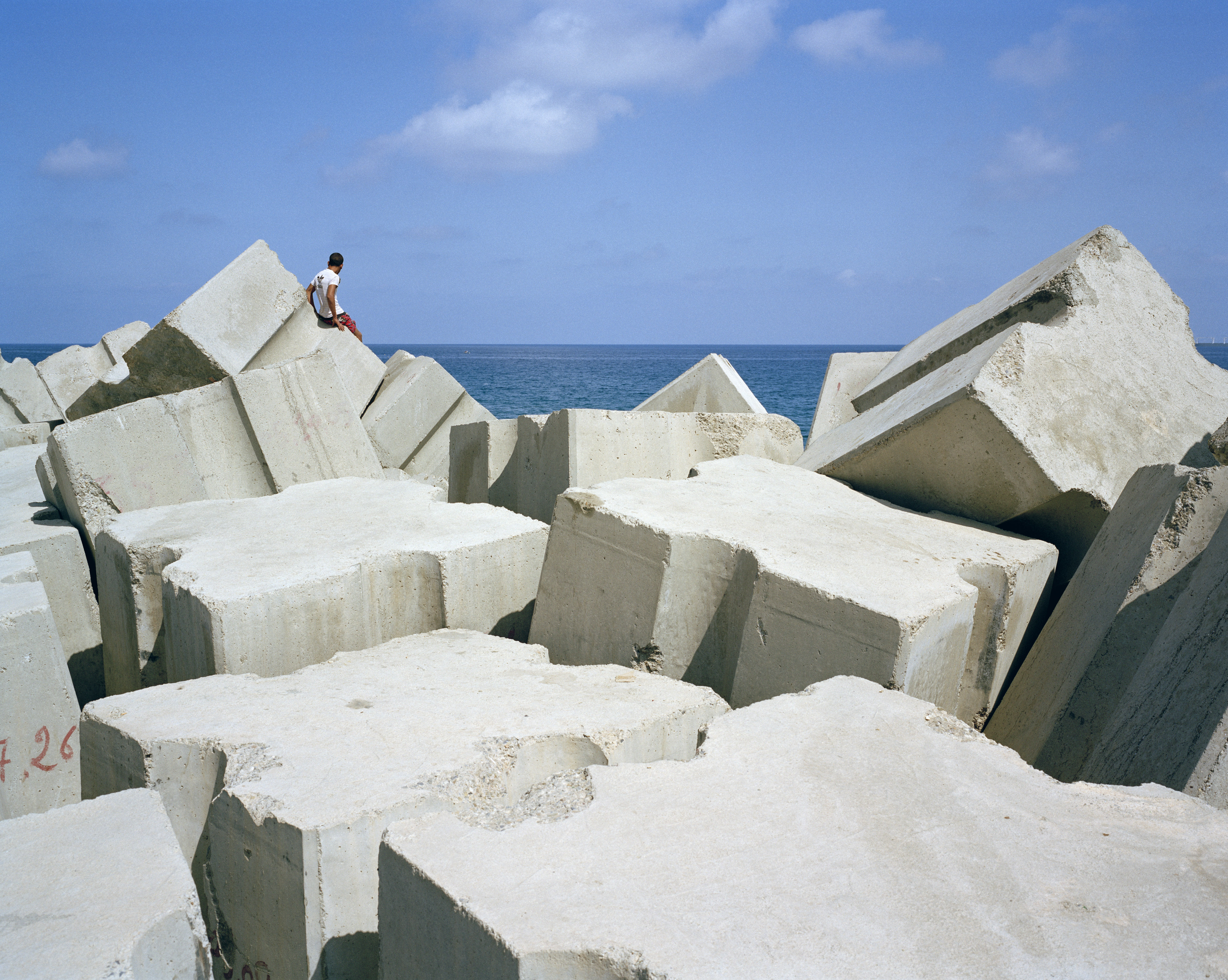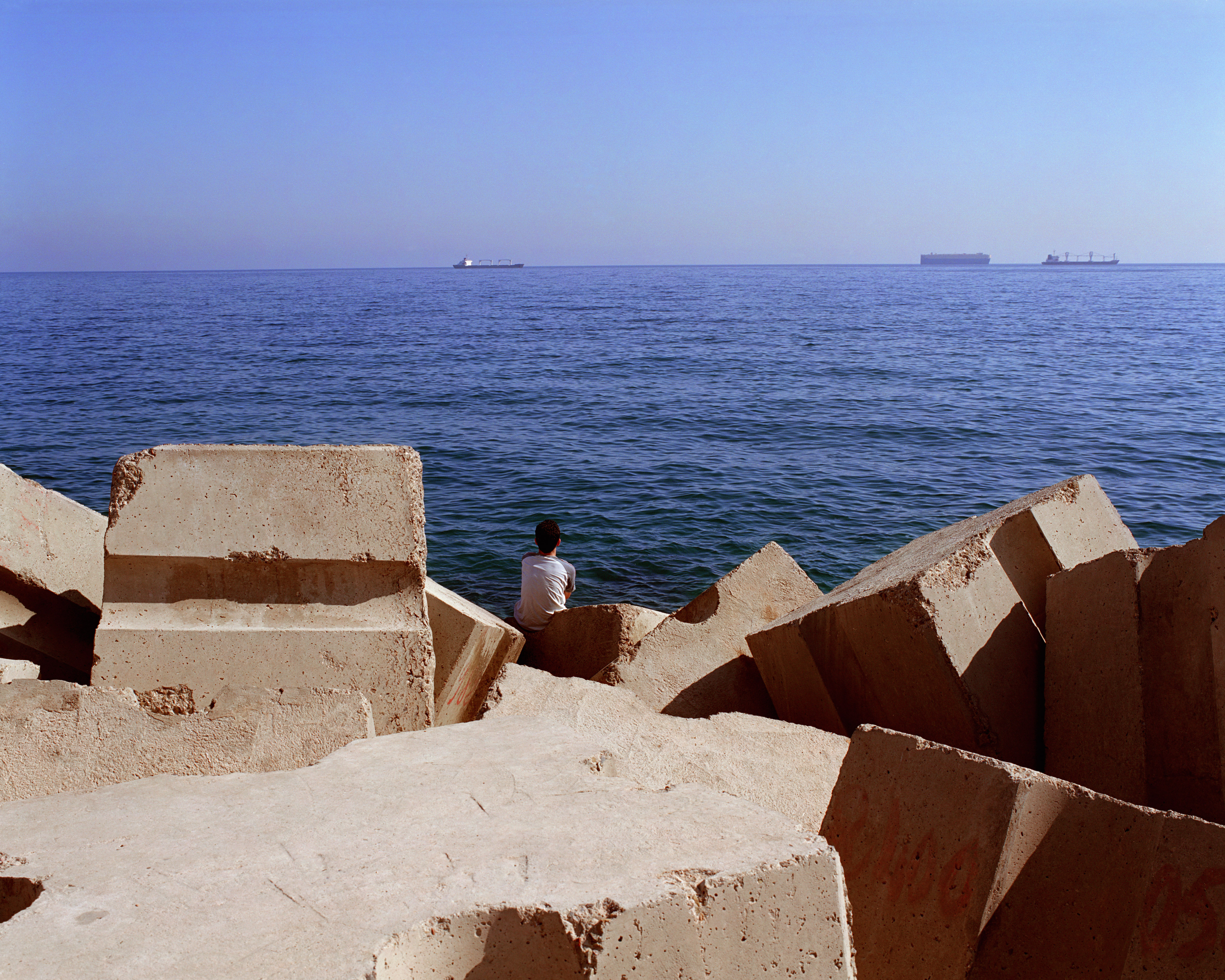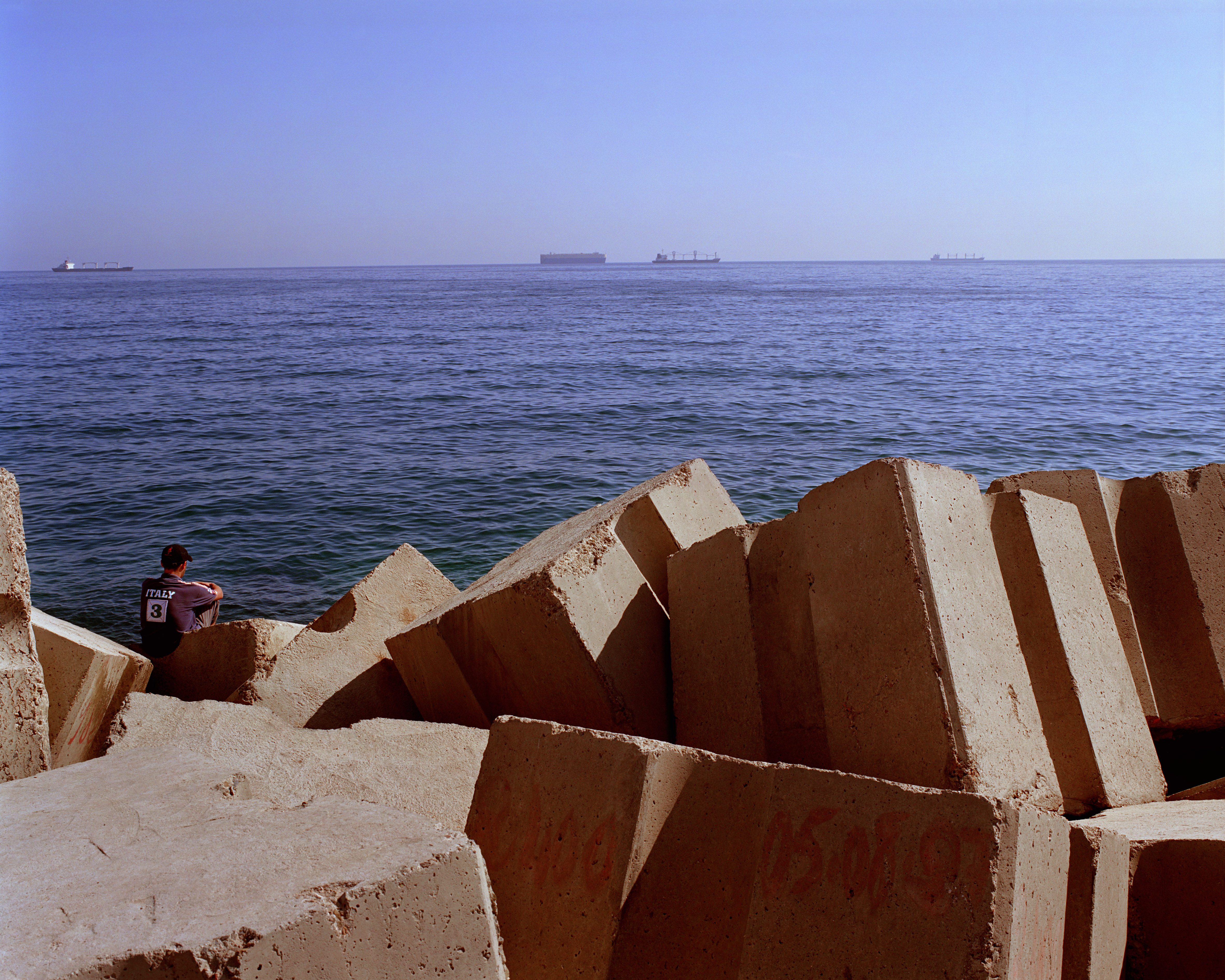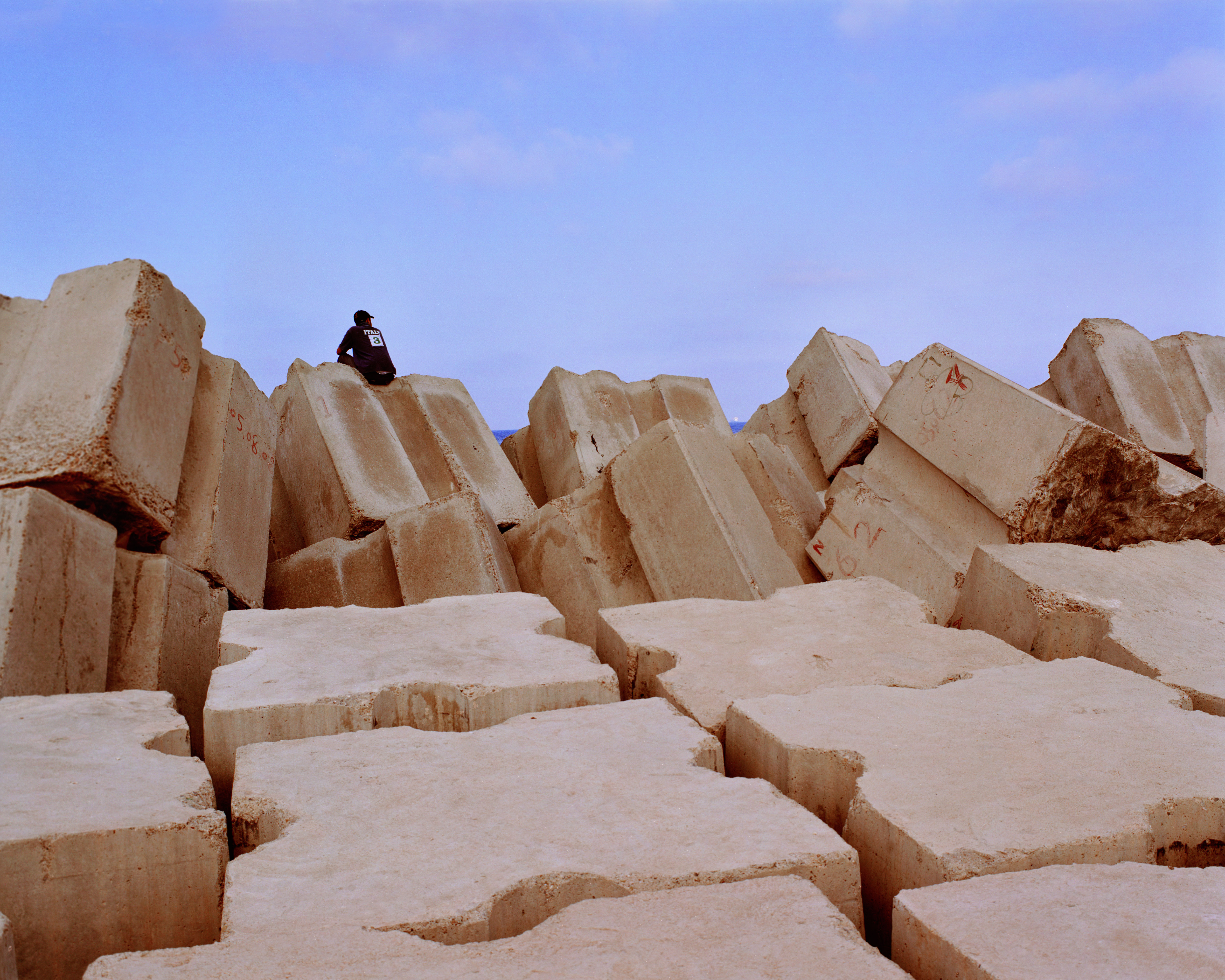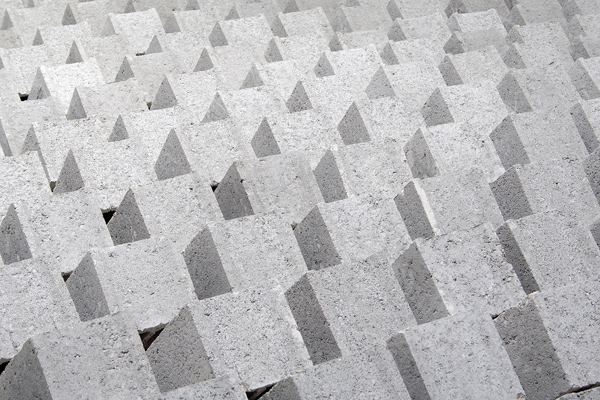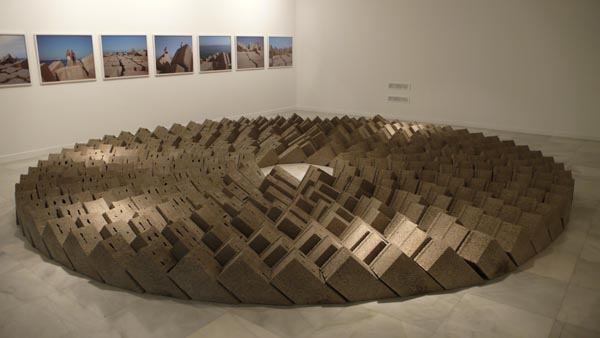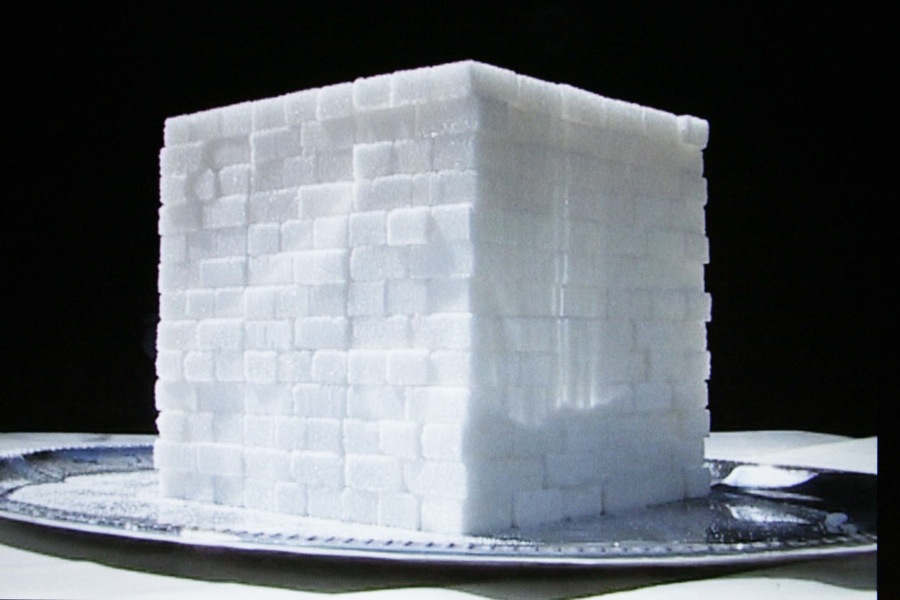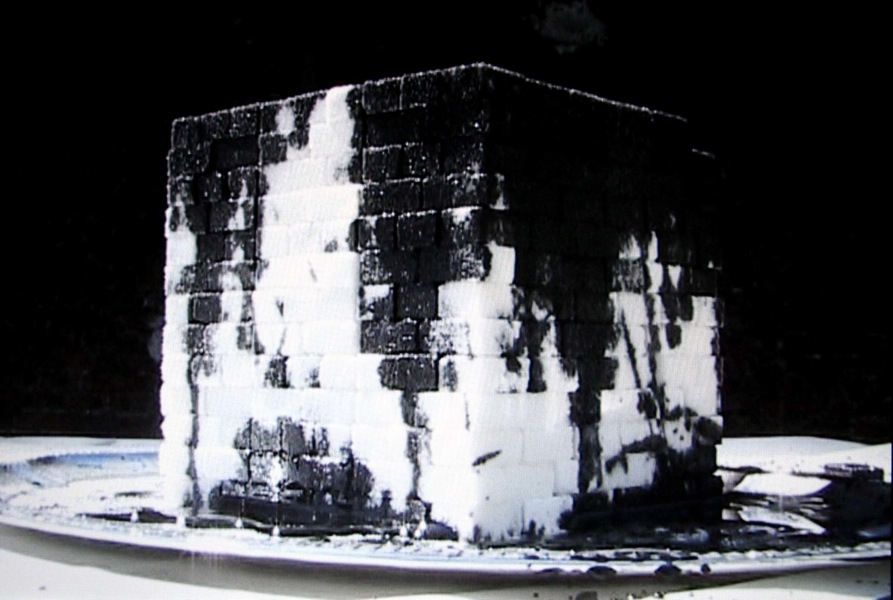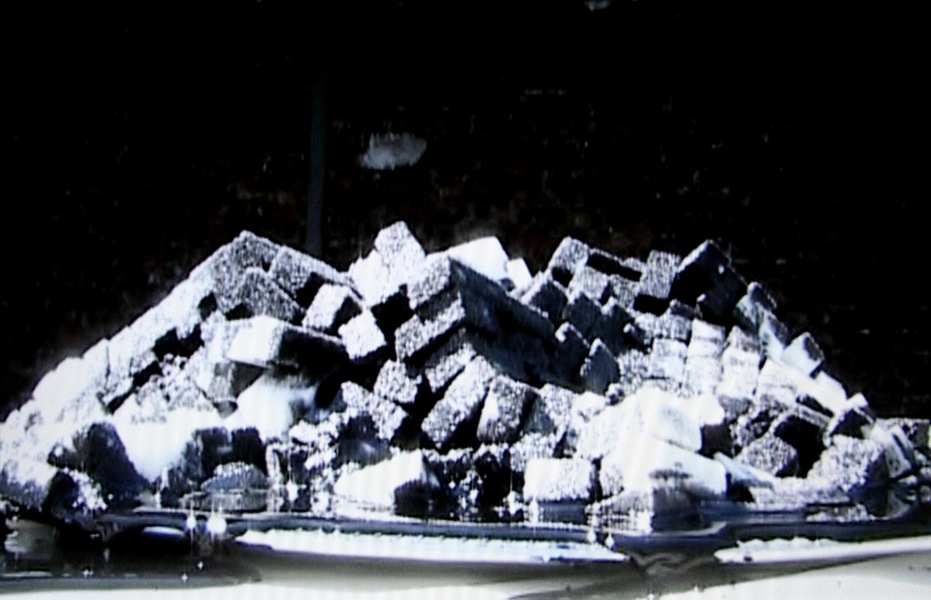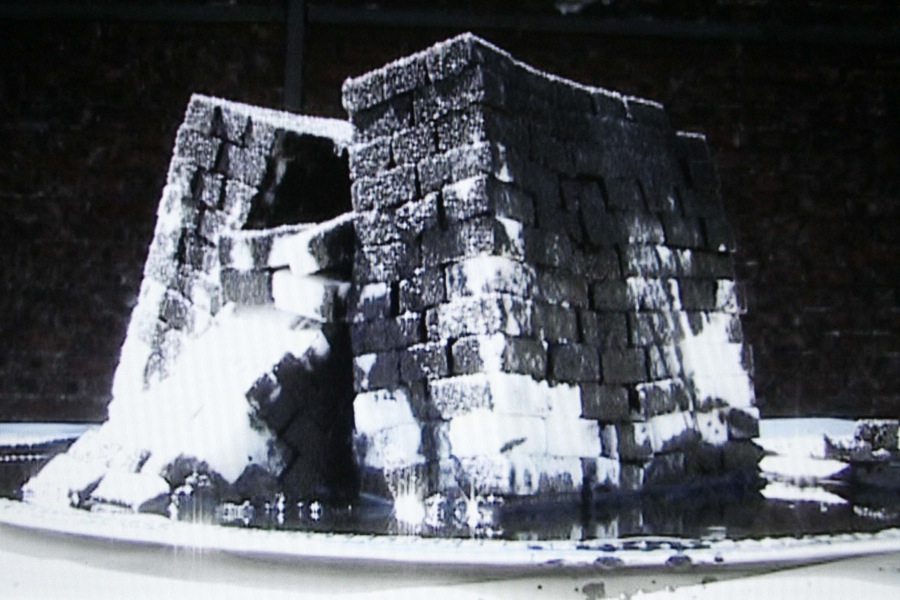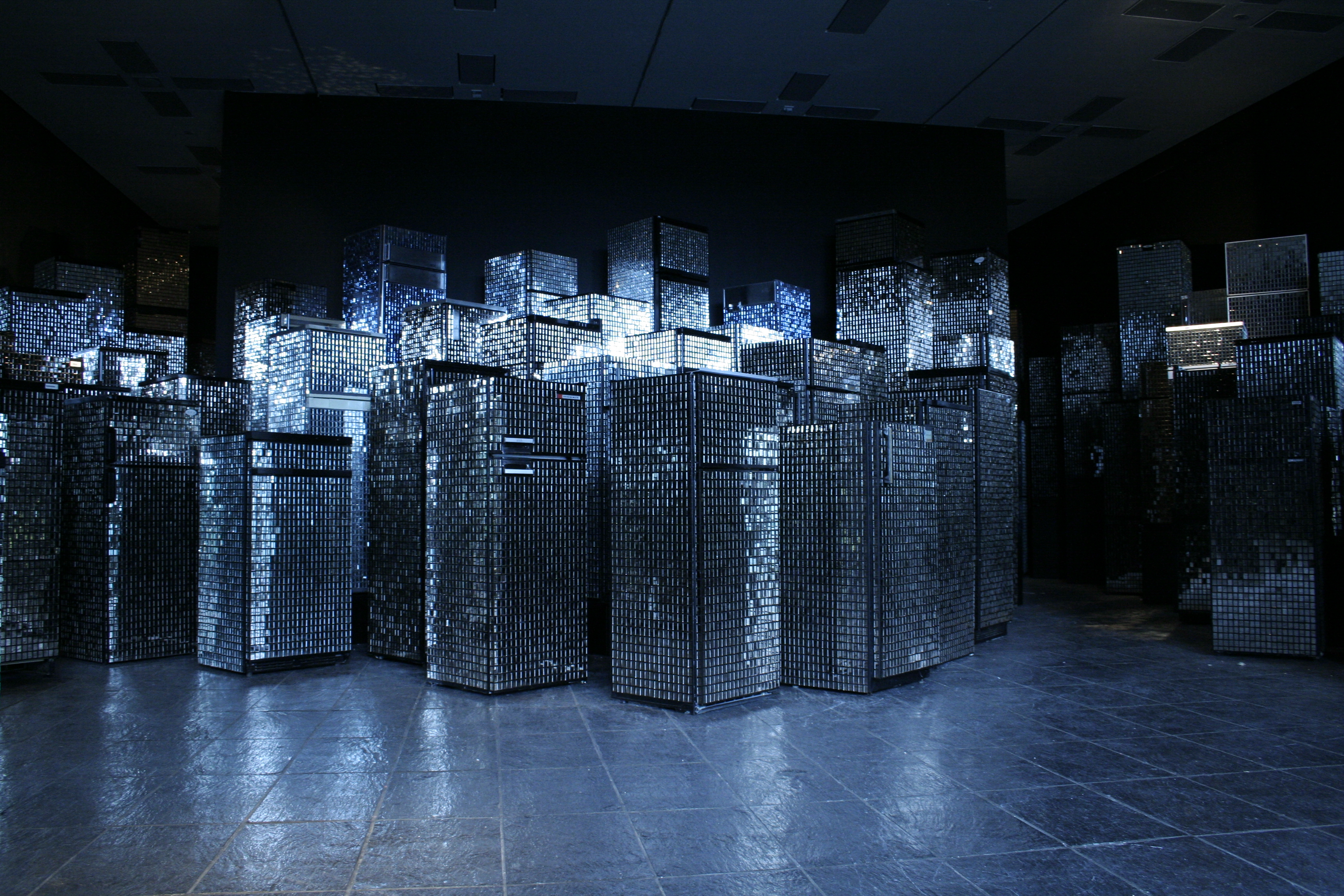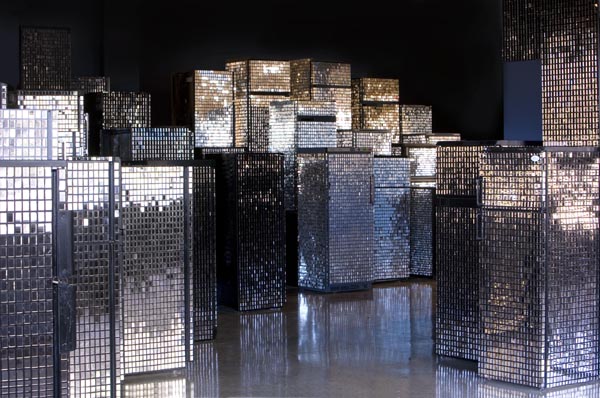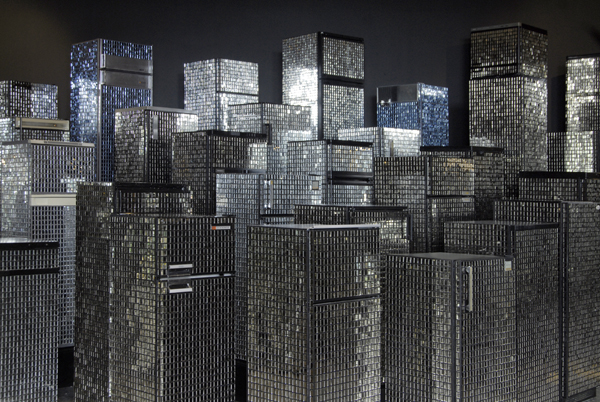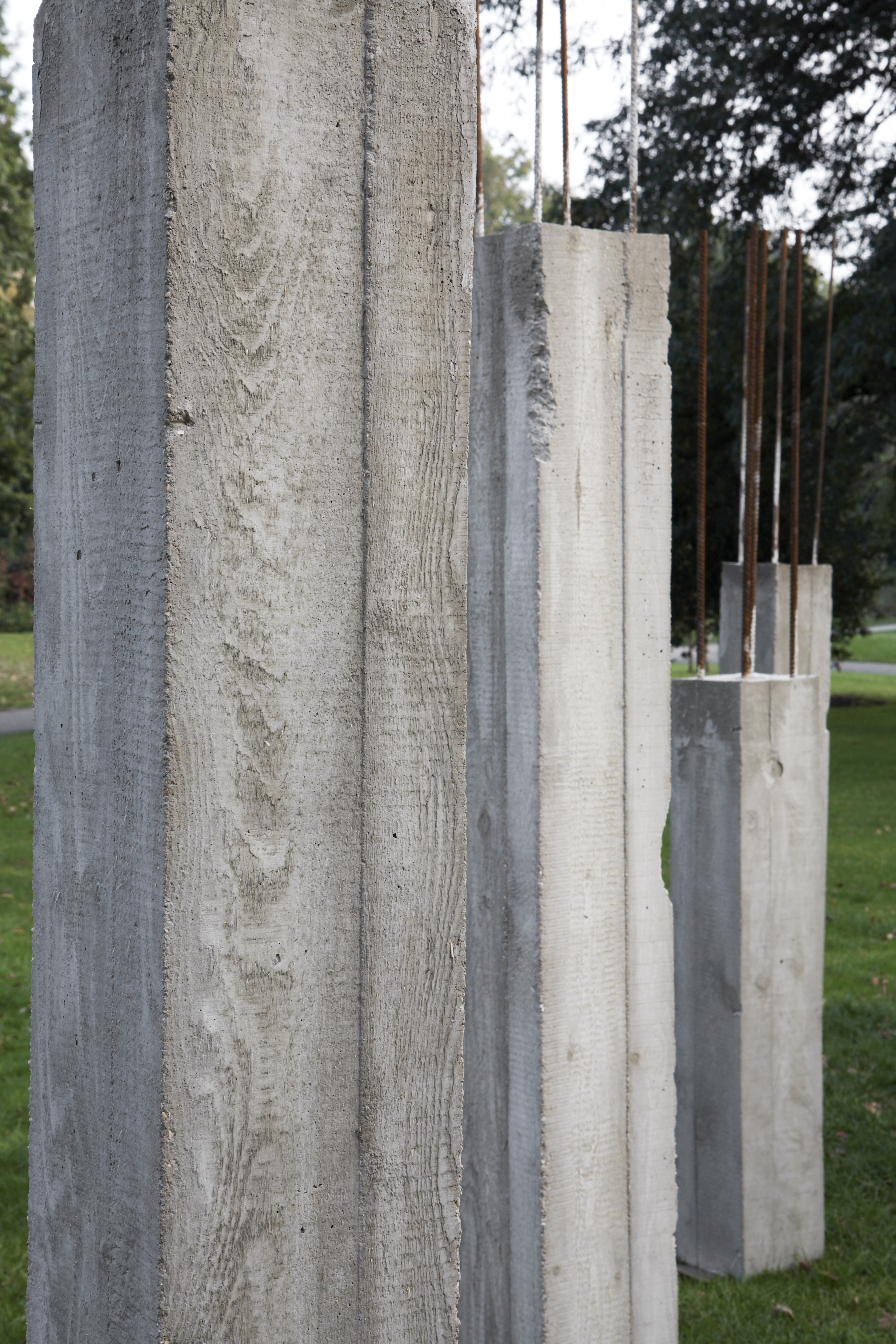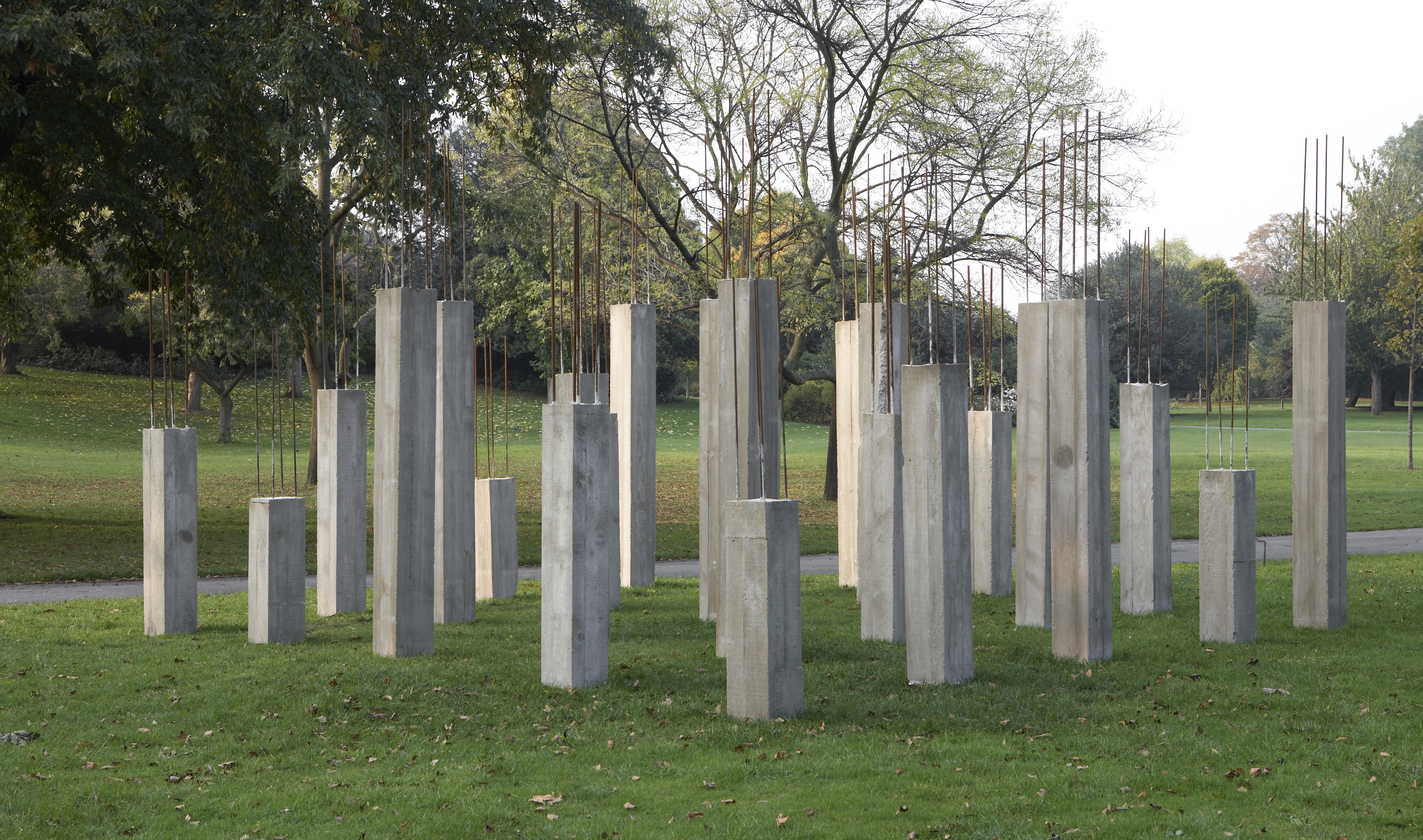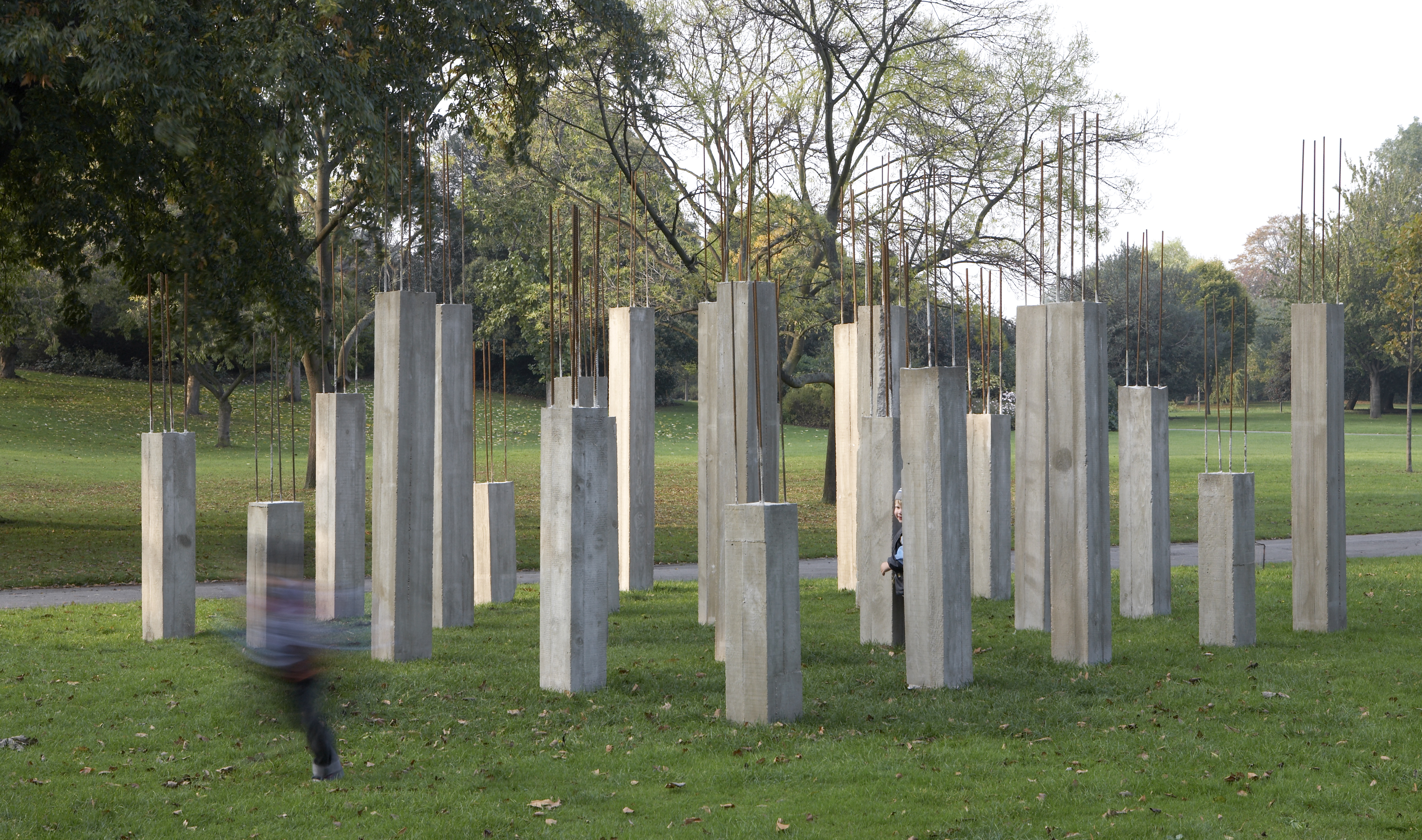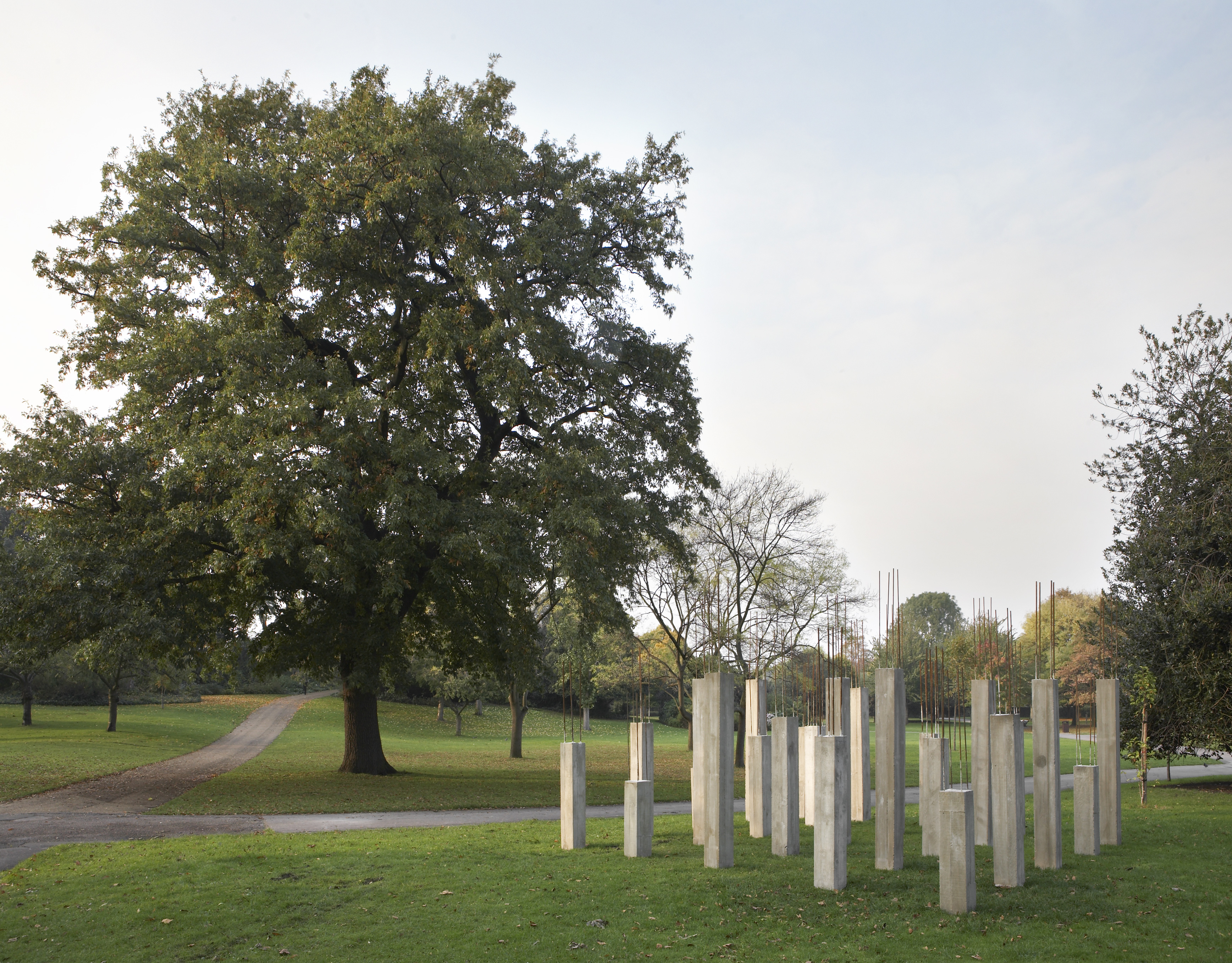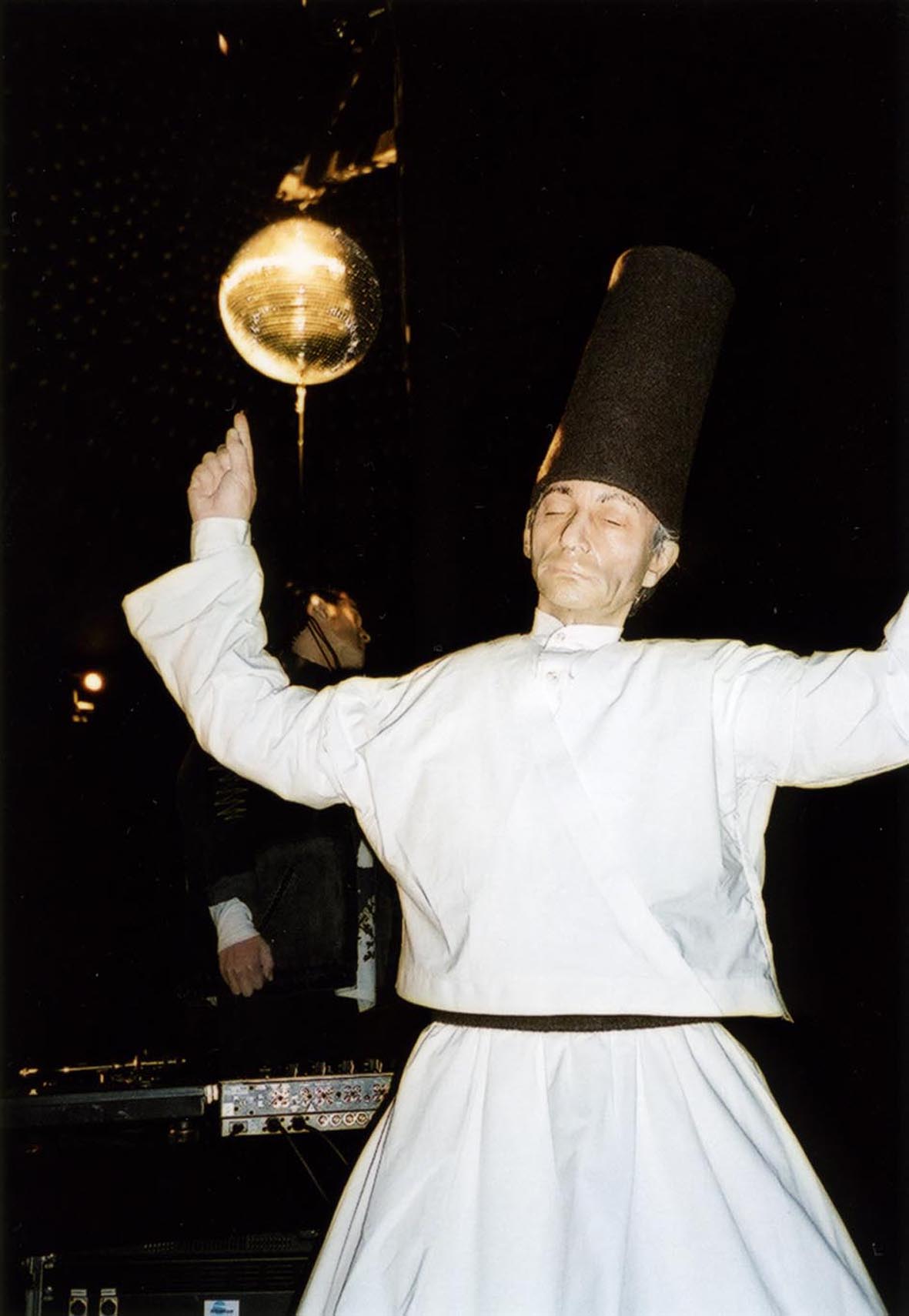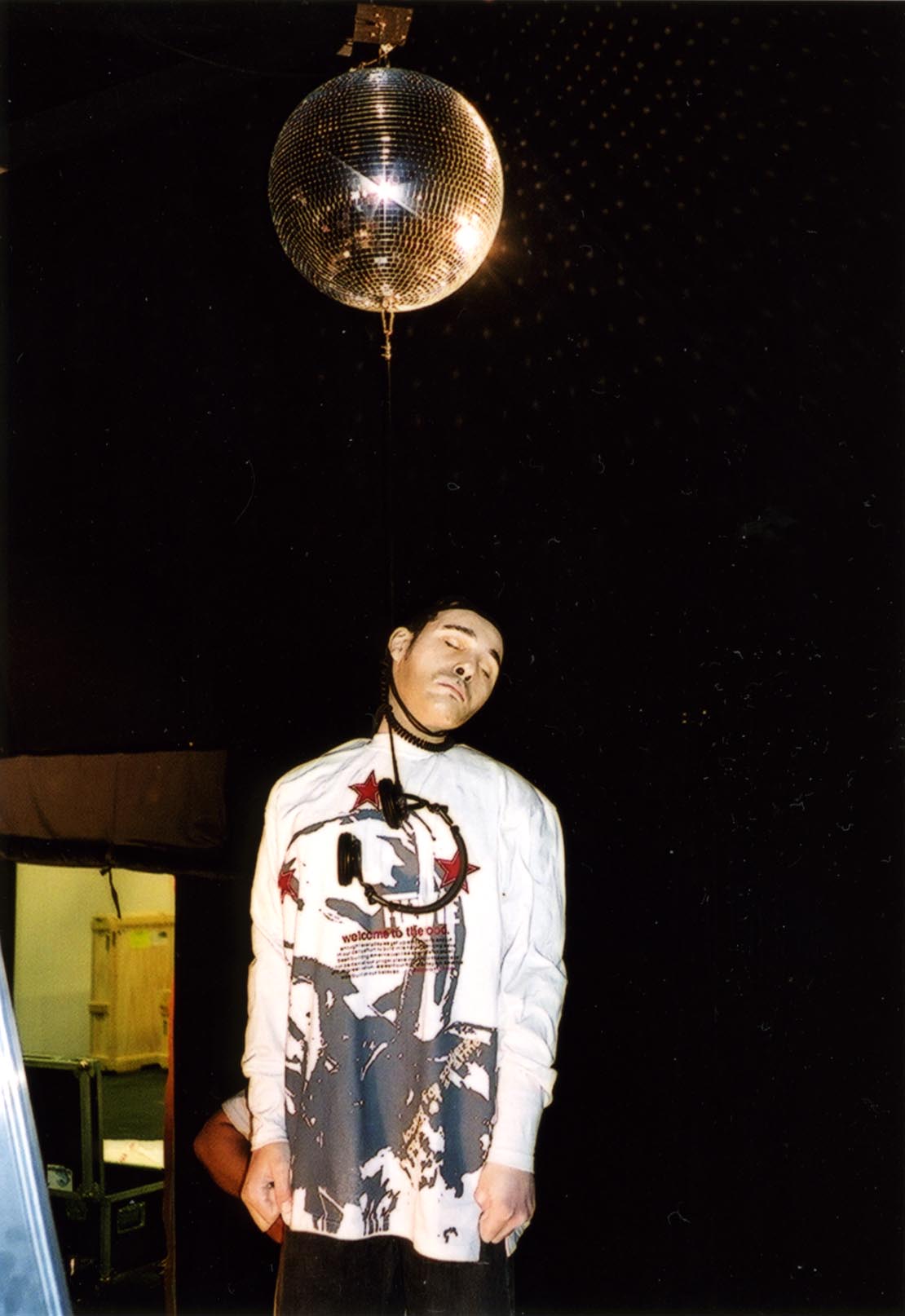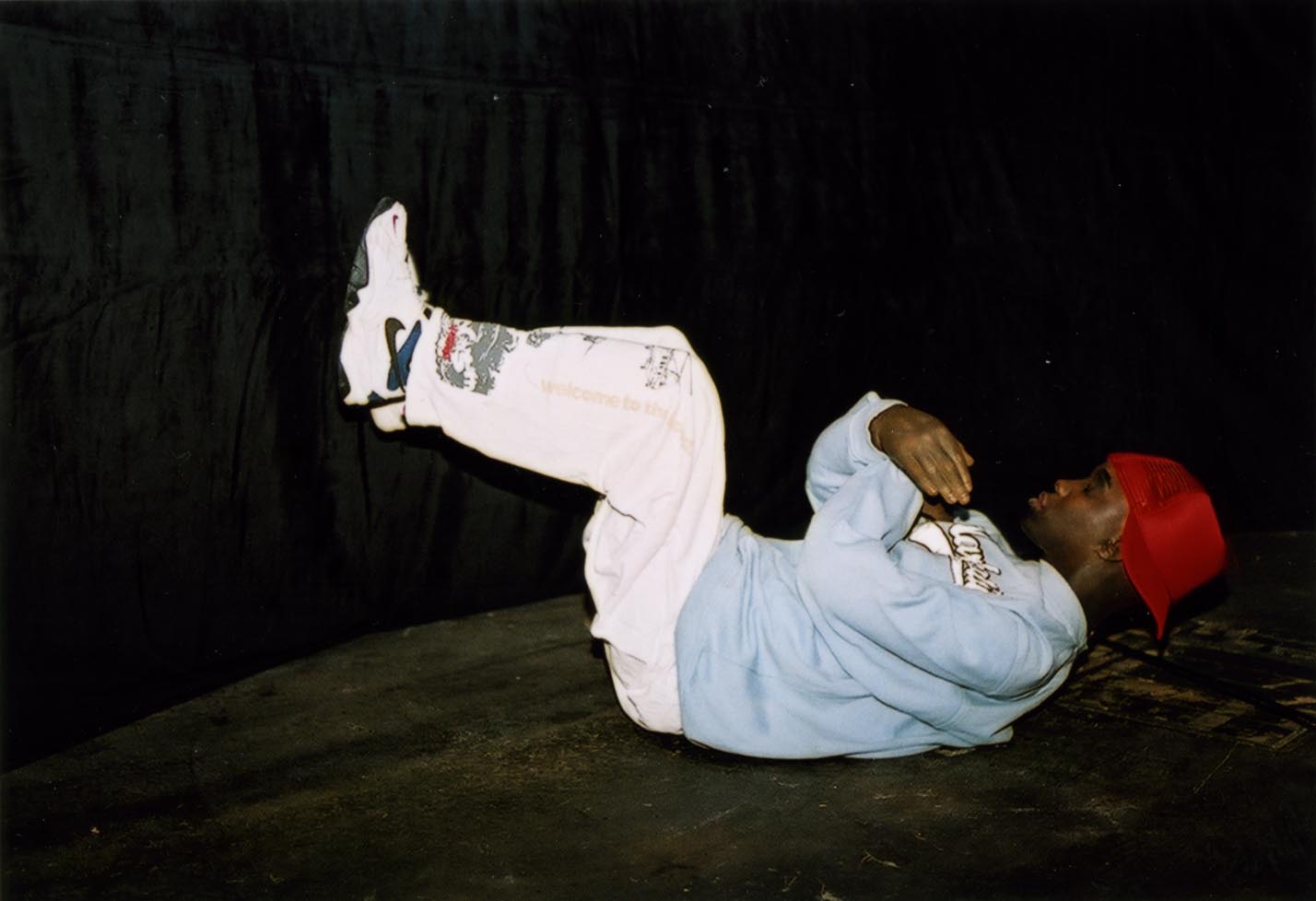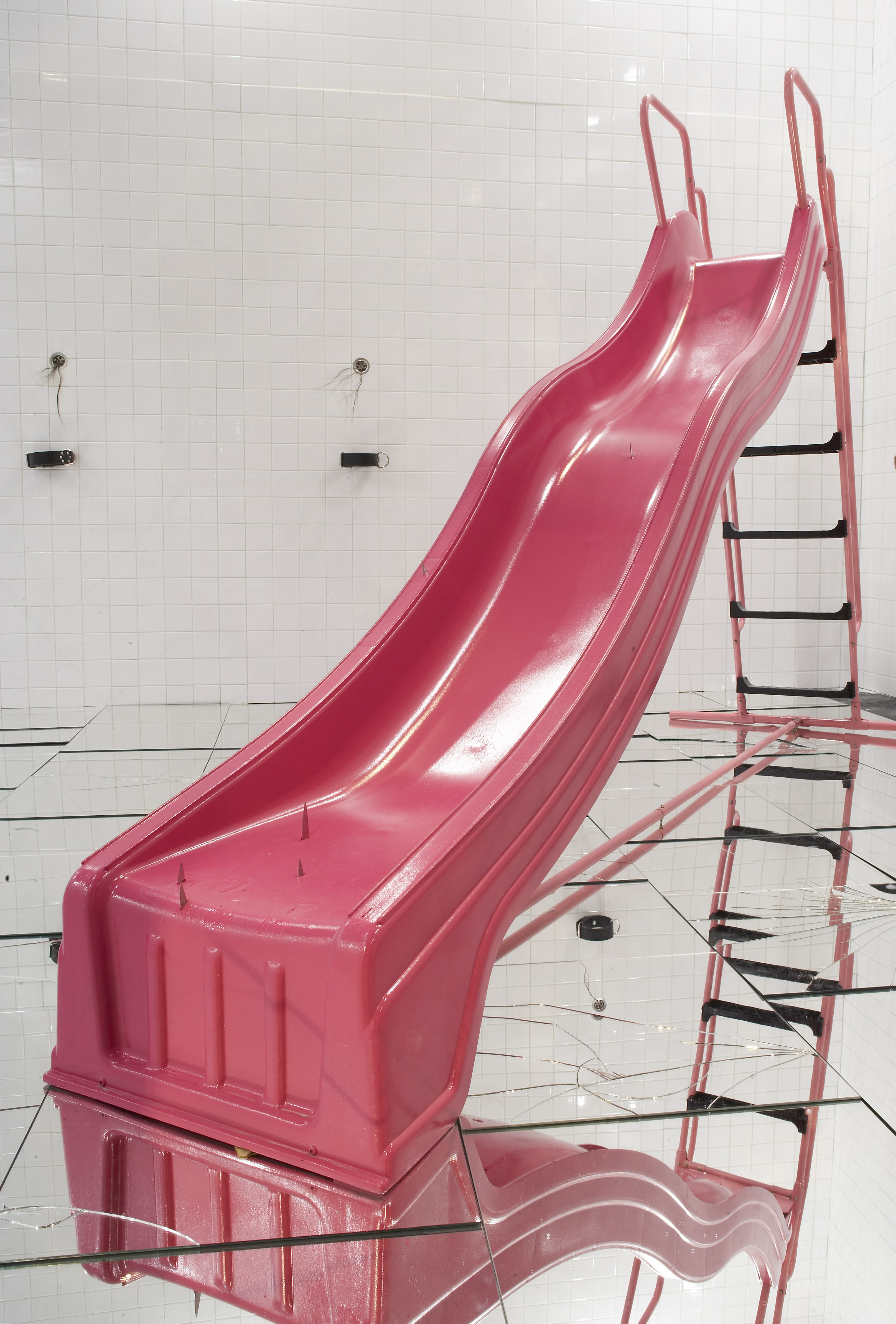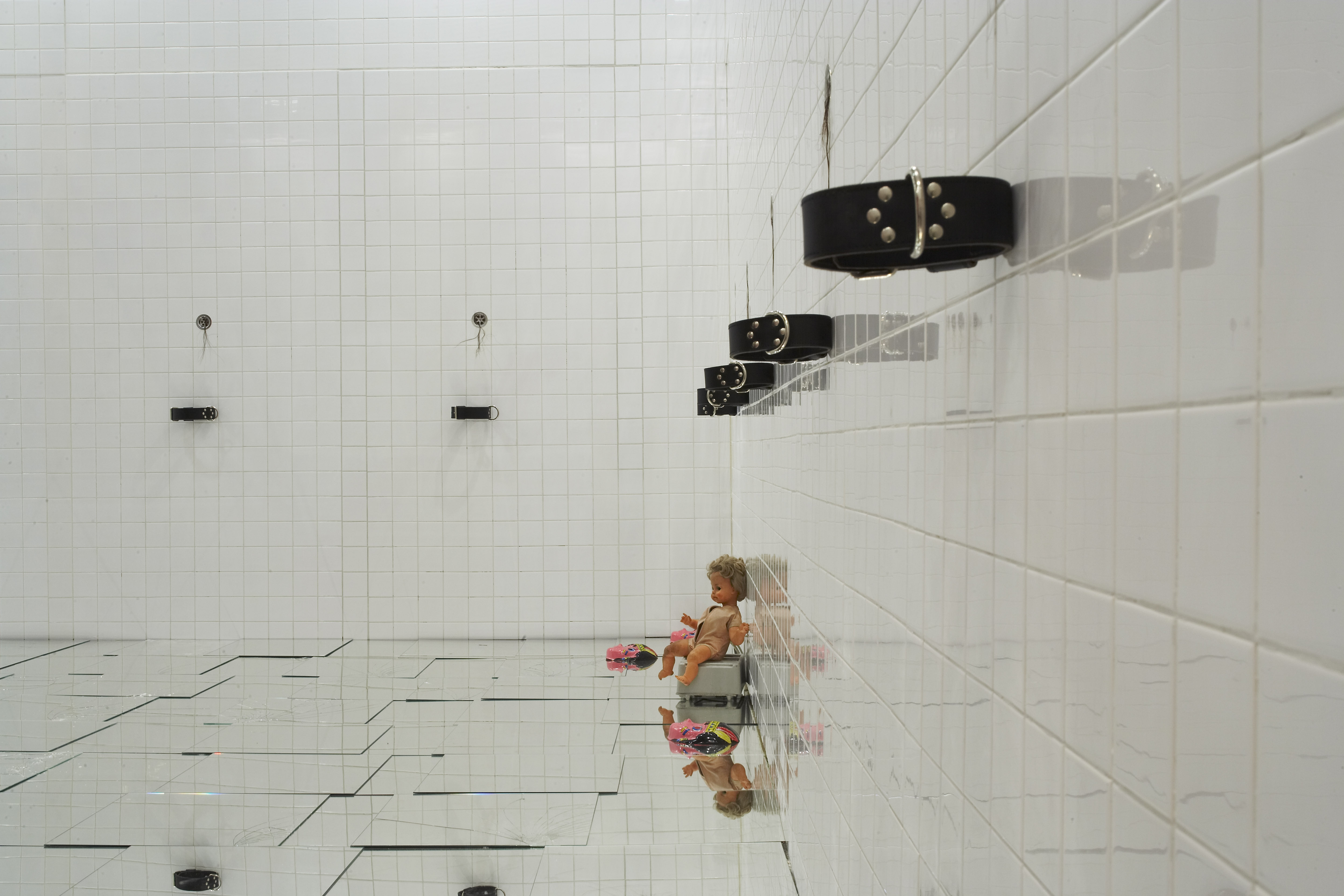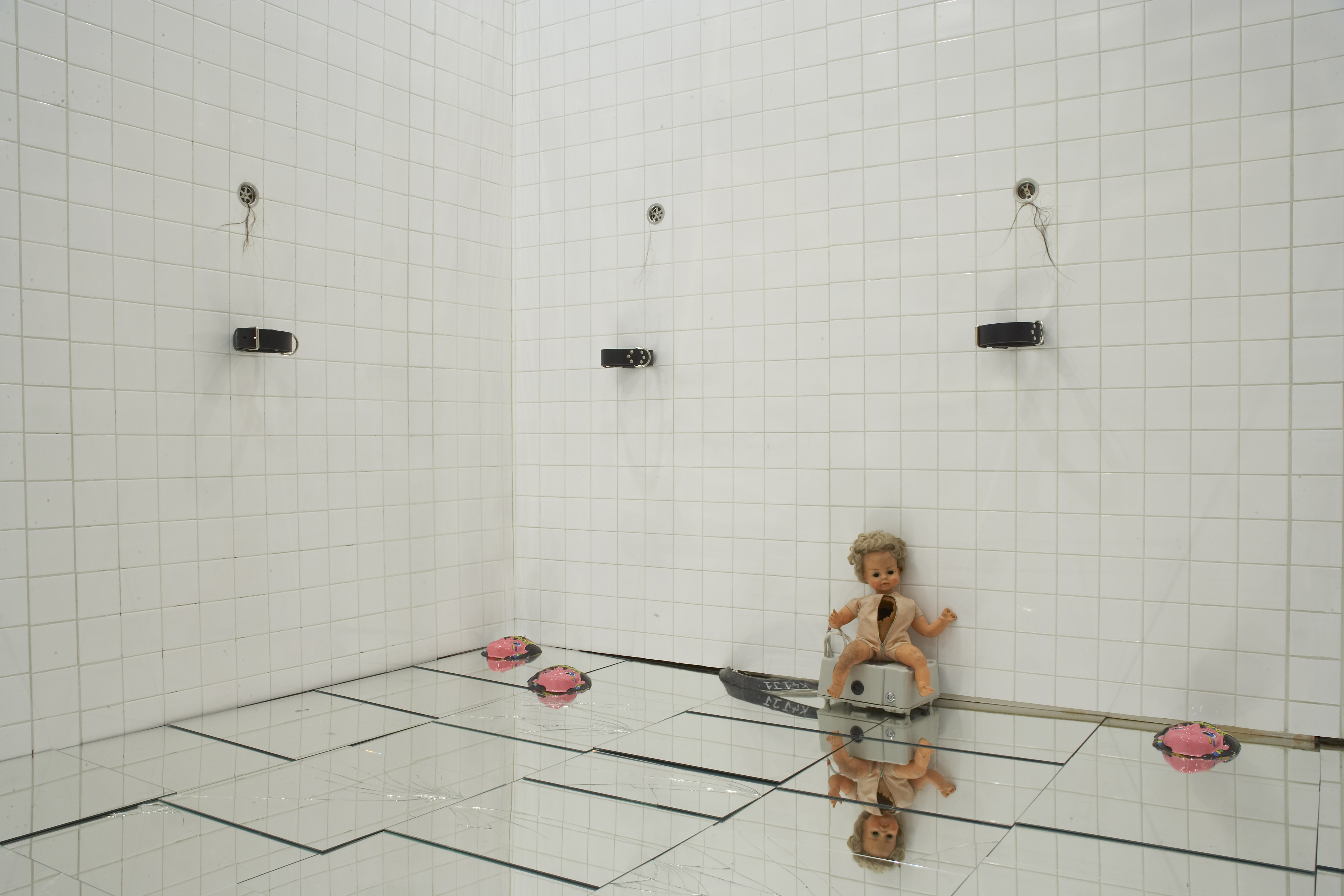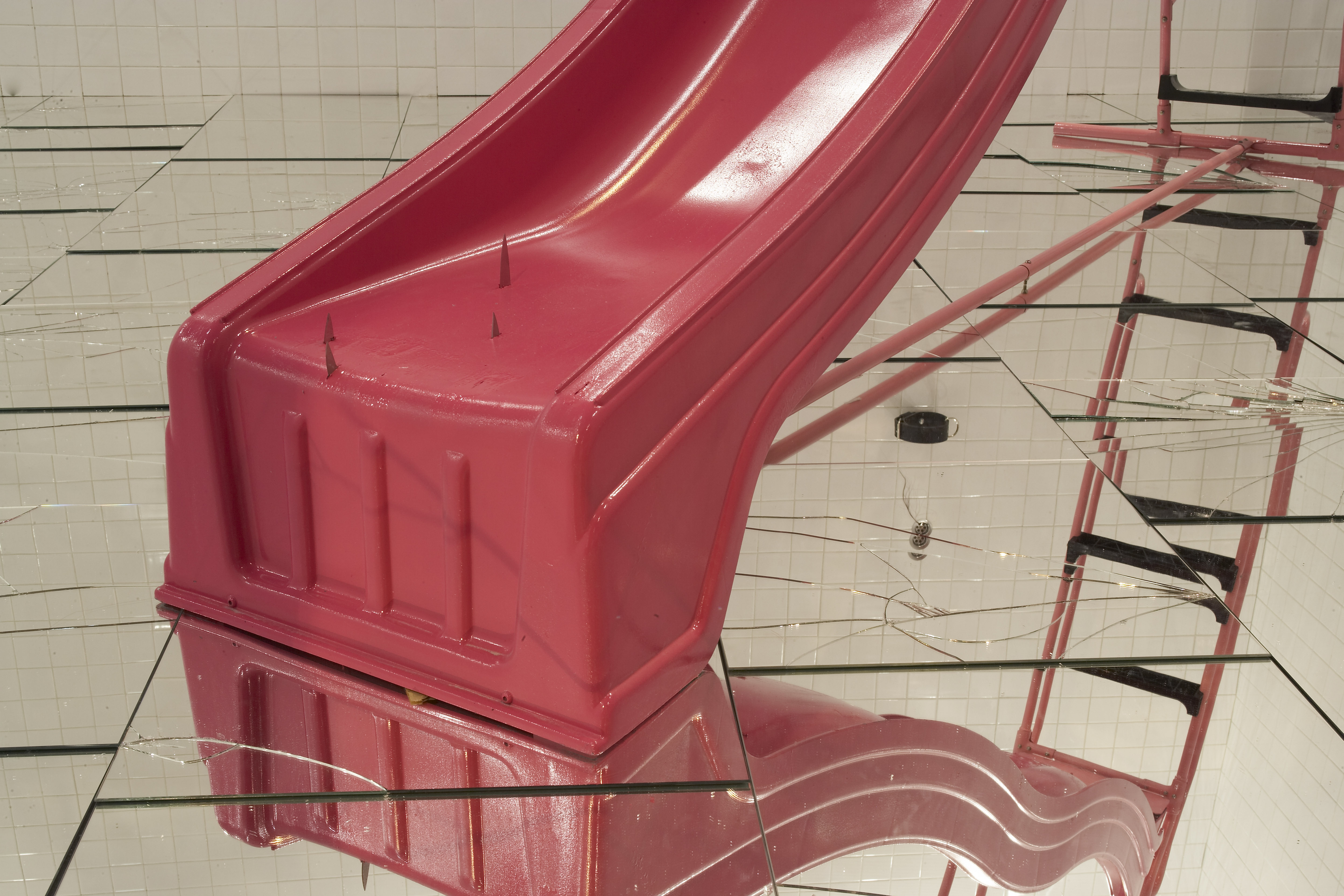On Silence, 2021

Installation. Prosthetics, wire
Exhibition view at Mathaf, MATHAF, Arab Museum of Modern Art, Doha / Qatar
Photo: Markus Elbaus
Les Entrelacs de l’Objet / The Object’s Interlacing, 2020
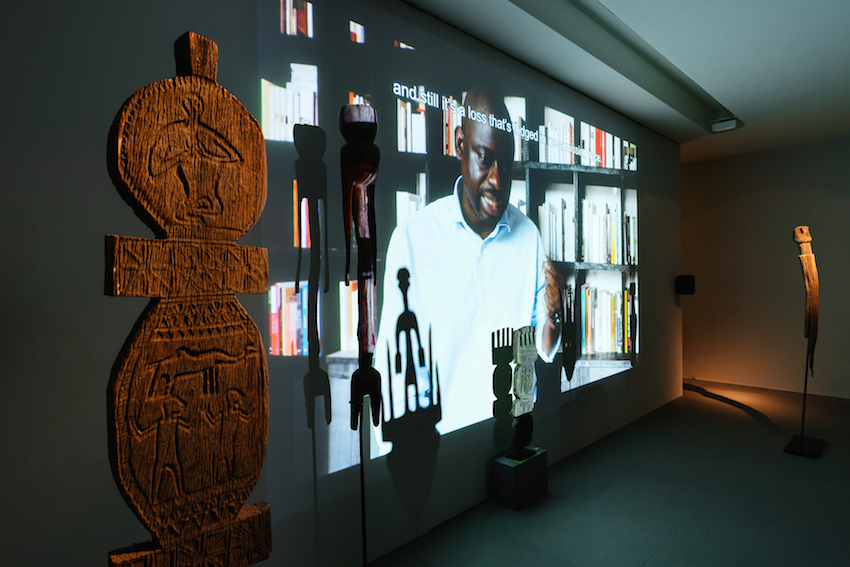
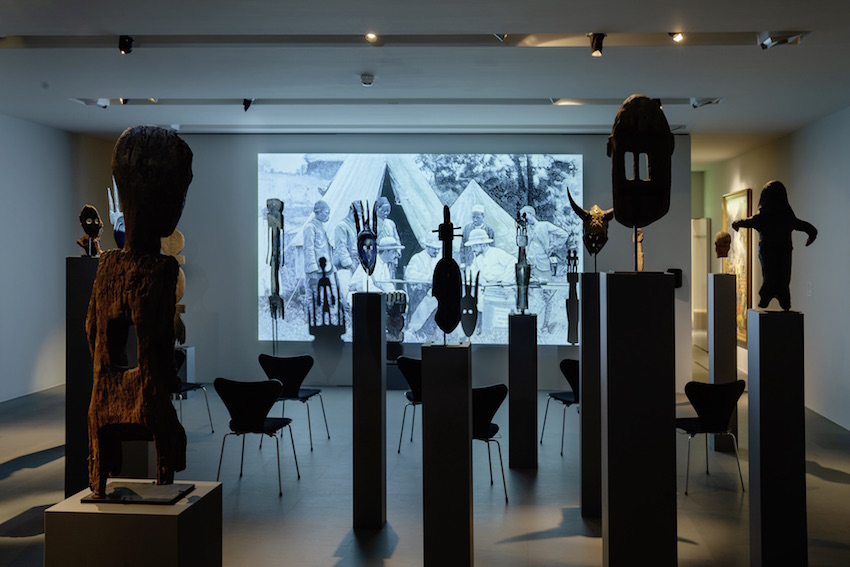
Installation with video (color, sound) and 22 objects (3D nylon prints and wooden copies of African artifacts)
Exhibition view at Kunsthaus Zurich, Zurich 2020
Photo: Franca Candrian
Kader Attia’s Work Holds a Mirror to the World’s Injustice. By Naomi Polonsky, 2019
A cluster of snails are glued, like barnacles on a ship, to a disused metal post, which stands in a field of dry grass, a shabby apartment block looming in the background. In the photograph, Snails (2009) by French artist Kader Attia, the molluscs are not a culinary delicacy served on a platter with garlic butter, but a symbol of the squalor and degradation of the Parisian suburbs. Attia has a talent for verbal and visual puns, for linking seemingly disparate things and giving them new meanings. He mines history, politics, literature, religion, art, anthropology, and medicine and finds echoes everywhere: between the facial scars of World War I veterans and members of African tribes, between the emotions roused by authoritarian dictators and jazz singers, between a Congolese “sickness mask” and Edvard Munch’s “The Scream.” But there is nothing distanced or clinical about Attia’s method. The current retrospective of his work at London’s Hayward Gallery, aptly named The Museum of Emotion, proves the artist’s simultaneous capacity for academic rigor and emotional depth.
The Museum of Emotion begins in the suburbs — or banlieues —of northeast Paris, where Attia grew up. It is a bleak and brutalist place. The snails are the only living beings in an urban landscape dominated by grey cement blocks. In the 2018 video work “La Tour Robespierre (The Robespierre Tower),” the camera slowly and shakily rises up a concrete tower block, story by story, revealing the minute differences of decor on an otherwise monolithic facade. The work is mesmerizing and claustrophobic. Another video piece, “Oil and Sugar #2” (2007), shows a stream of black oil dissolving a mountain of sugar cubes, which glimmer disgustingly in the sun. The wall label explains: “For Attia the modular form of these sugar cubes recalls the archetypal form of modernist architecture — the white cube — as well as the Kaaba, the black shrine at the centre of the Grand Mosque, in Mecca.” Contemporary global trade, twentieth-century European architecture, and ancient Islamic devotional practice all converge on the tiny and unassuming television screen. Nearby Greek mythology enters the scene, in an installation comprising a concrete block suspended over a mirror, wittily titled “Narcissus.”
In the next gallery is one of Attia’s best known works, “La Piste d’atterrissage (The Landing Strip),” a photographic series of a group of Algerian transgender sex workers living in Paris in the late 1990s and early 2000s, firmly on the margins of society. The snapshots, which are scattered across the wall as though stuck in the pages of a scrapbook, are by turns joyous and vulnerable. The title comes from the nickname given to the street on which the women work, but also connotes both migration and pubic grooming. Individual portraits of these women are also dotted around the rest of the exhibition: when we first enter we are greeted by Mounira from Oran, who jogs towards us gleefully in a green belly dancing outfit stuffed with banknotes. As we exit, we see Djamila from Maghnia standing on a street corner in leopard print shorts and PVC boots.
Attia, who himself is of Algerian heritage, has often explored the treatment of colonial subjects in contemporary France. In the video work, “The Body’s Legacies, Pt. 2: The Postcolonial Body,” a number of interviewees, including a journalist and an academic, discuss the “Affaire Théo,” the legal case concerning a young French-Congolese man called Théo Luhaka, who was attacked by four policemen outside Paris in 2017. Attia creates a kind of oral history of the event, documenting the legacy of this violent encounter from a number of different perspectives.
This process of memorialization is also at play in “Shifting Borders” (2018). In the three videos, survivors, academics, mental health professionals, and traditional healers talk about traumatic political events in East and Southeast Asia, such as the 1980 Gwangju Uprising in South Korea, in which over 600 people were killed by government troops. Amongst the screens are a number of chairs on which are seated pairs of old-fashioned prosthetic legs. For the artist, they are a symbol of the “material and immaterial scars” left by wars, famines and genocides.
Broken bodies appear elsewhere in Attia’s work. In “The Repair from Occident to Extra-Occidental Cultures” (2012), a full-room installation which resembles an enormous archive, Attia compares the different attitudes to facial scarring in Europe and Africa. On industrial shelves, images of soldiers after rudimentary plastic surgery are placed alongside African masks and busts with intentionally visible scars, as well as vintage photographs, newspapers and books, such as Claude Lévi-Strauss’s work of Structuralist anthropology, La Pensée sauvage (The Savage Mind). Attia’s installation is as much about how we present objects, as about the objects themselves. It is a museum display about museum displays.
Towards the end of the exhibition hangs a work called “Repaired Broken Mirror” — a mirror with a big slit down the middle, which has been stitched back together with wire. It is a fitting metaphor for Attia’s work generally. The artist holds a mirror up to the world, exposing it in all of its ugliness and injustice. But despite the grotesque visions of ourselves which we see reflected back, there is hope of repair. Attia wants the world to be a better place and tries to make this happen through his erudite, emotional, devastating art.
Published on www.hyperallergic.com
The Field Of Emotion, 2018/19
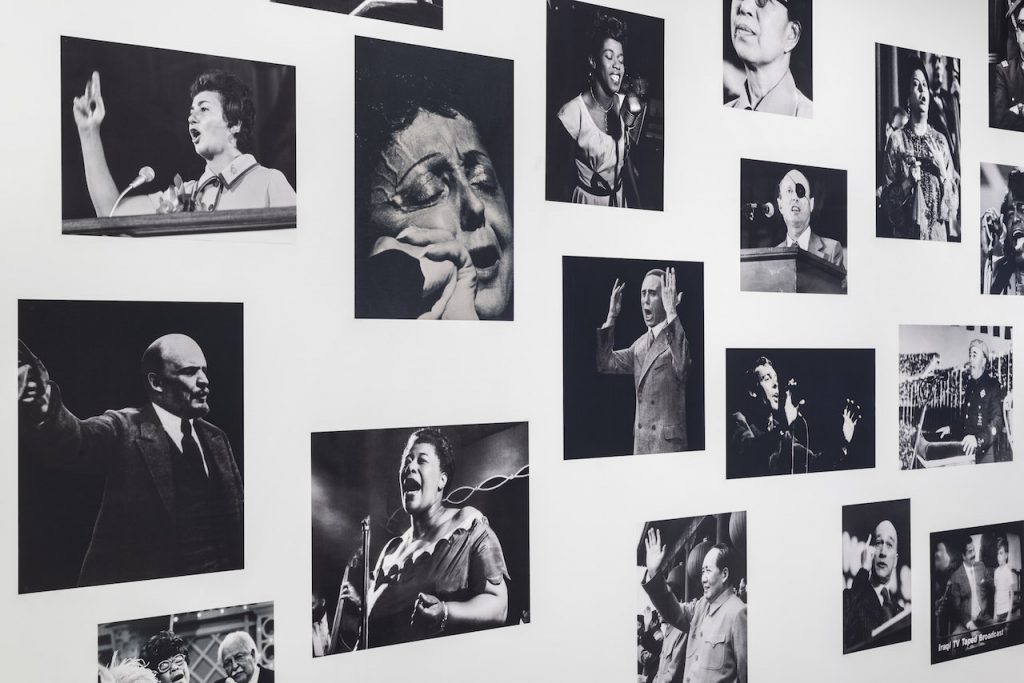
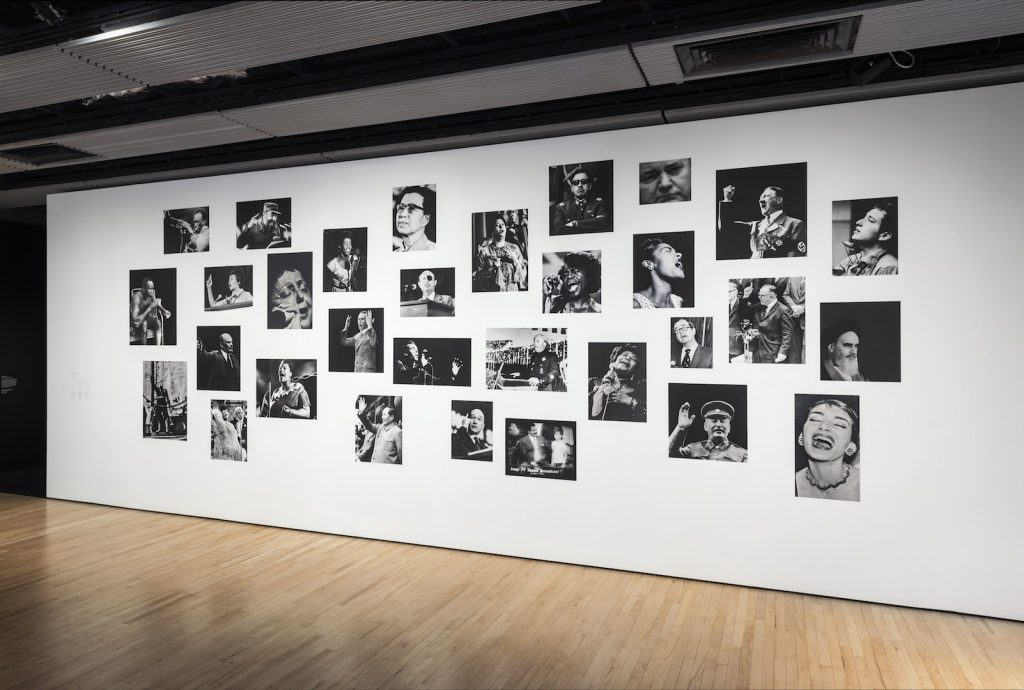
Site-specific wall installation; series of Fine Art inkjet prints
Exhibition view at The Hayward Gallery, London, 2019.
The Landing Strip, 2000-2002/2019
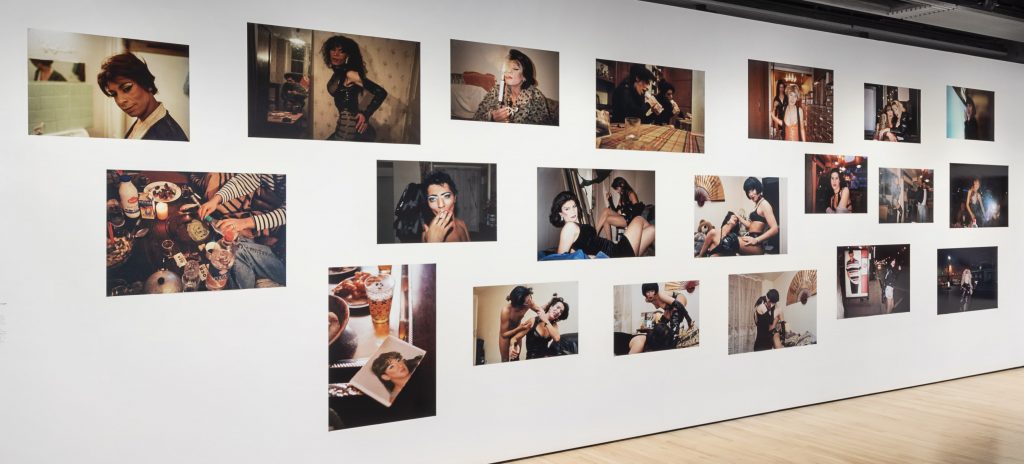
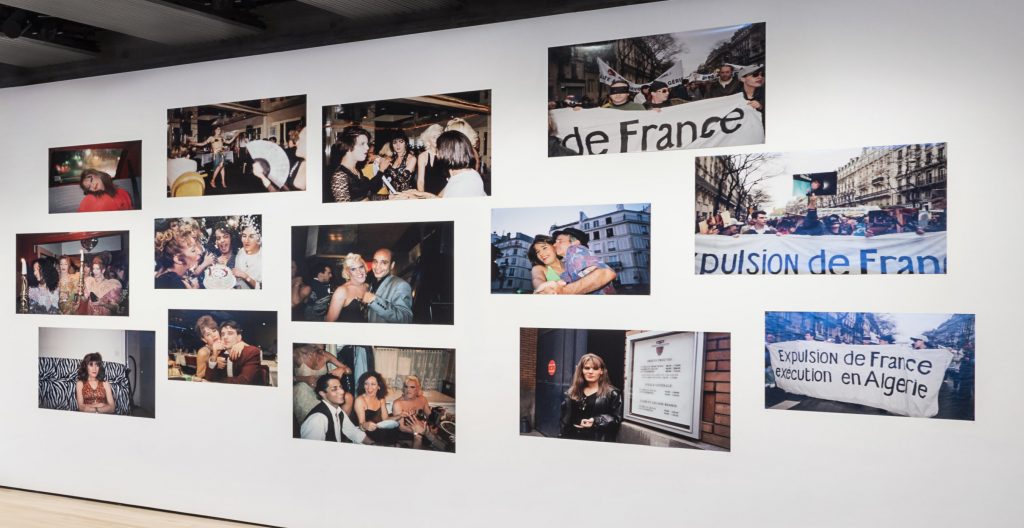
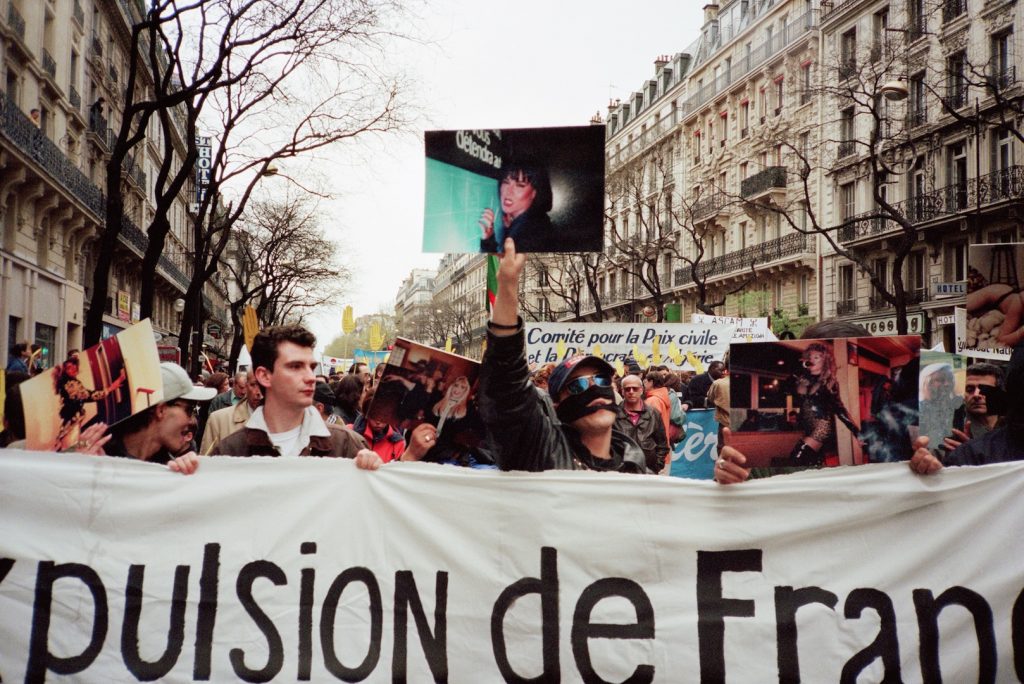
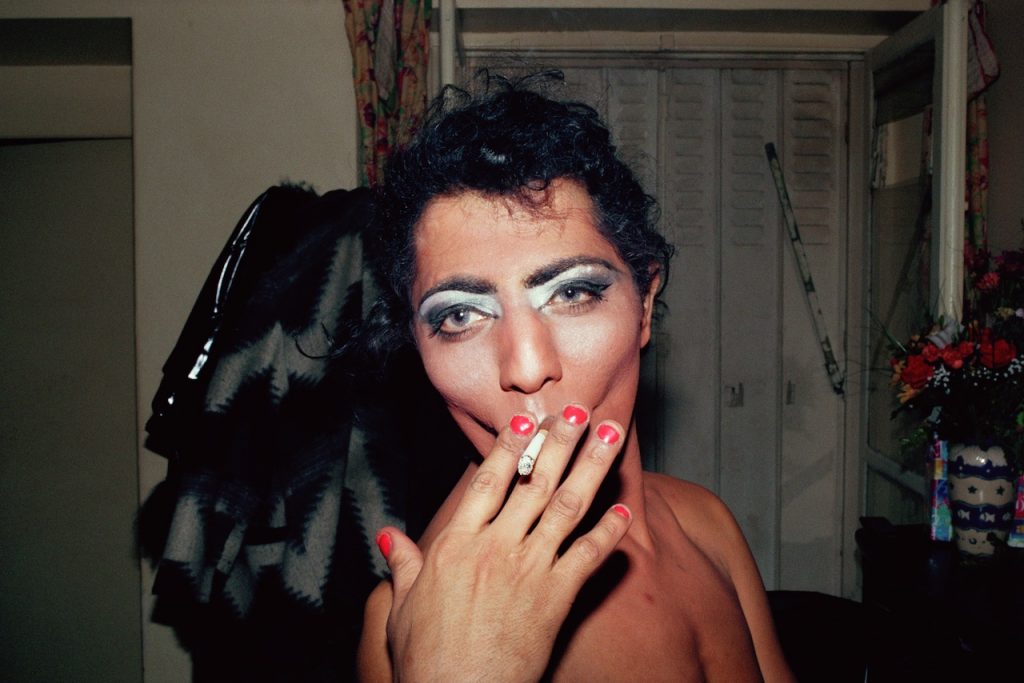
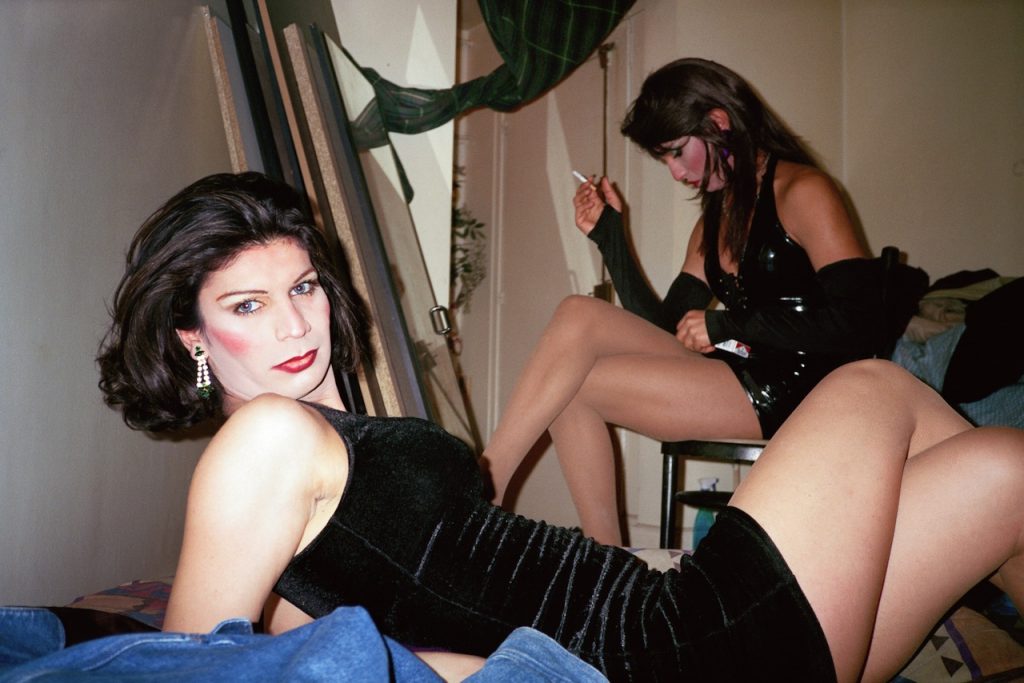
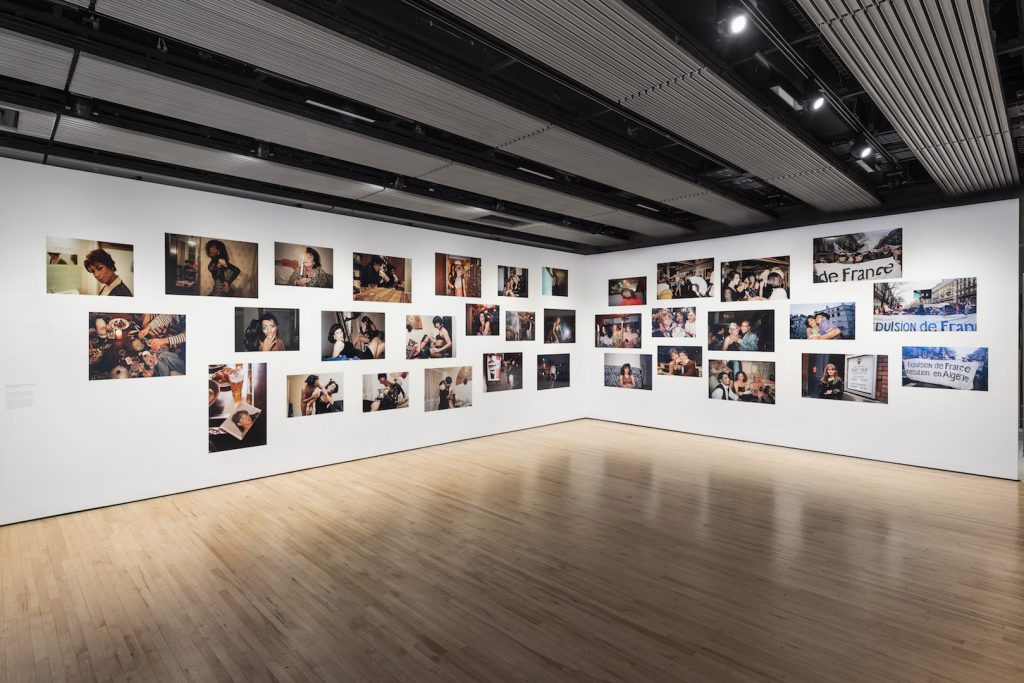
Site-specific wall installation of a series of c-prints
Exhibition view at The Hayward Gallery, London, 2019.
Fire, Anger and Humiliation in the Museum. By Françoise Vergès, 2019
Our feelings are our most genuine paths to knowledge.
Audre Lorde, 1982
On 2 September 2018, the National Museum of Brazil in Rio de Janeiro was destroyed by fire, losing perhaps 90% of its vast historical and scientific holdings, including an important collection of indigenous art, and recordings of now-extinct languages. It
was revealed that firefighters had not been able
to access enough water, ladders or equipment,
that the museum had no sprinkler system and was not insured. It was unsurprising to many that the Brazilian elite, heirs of the owners of vast estates built on the dispossession of indigenous peoples and the enslavement of Africans, had no interest in adequately funding the museum. The government has shown indifference, contempt and ignorance towards the complex history of its country, and the ideology of racial democracy has masked a long history of repression, racism, exploitation and military dictatorship. There is a connection to be made between the loss of hundreds of thousand of objects and the spoliation of lands and destruction of the environment – the fire stands as a metaphor for a conception of the past governed by forgetfulness and erasure. The problem is global: financial neoliberalism sees the world’s resources as limitless. As Kader Attia has explained, injuries – to people, to communities, to the environment – no longer need to be repaired; they are not acknowledged, they are asked to disappear.
What do we do when only ashes remain and there are not even fragments left to repair? In the aftermath
of the museum’s devastation, a group of graduate students launched a campaign to retrieve traces of the collection through images and videos taken by visitors throughout the years. This would create a new collection in which the lost objects could be evoked through images, clips and sounds charged with feelings – a ‘museum of emotions’. The campaign echoes many themes important to Attia, who deals with scars, injury and repair, traces and the memory of objects. His work acknowledges that emotions are stubborn, they make themselves known, disrupting – through contradictory feelings of anger, shame, humiliation, responsibility, desire to escape the past – the narrative of pacification provided by neoliberalist consumerism.
In the video installation Reason’s Oxymorons (2015; p. 61) Attia shows psychologists and other experts discussing the trauma engendered by colonial legacies of devastation and dispossession, and how this has been passed through generations, affecting even those born long after the end of the colonial period. Hence, the importance of the ‘notion of humiliation’ (1) in his practice in relation to colonial trauma, despite claims in Europe that ‘we’ should get over it. This is why this trauma must still be analysed as it was in the mid-twentieth century by Albert Memmi and Frantz Fanon, a piece of
work renewed by Algerian-French psychiatrist and psychoanalyst Karima Lazali in her 2018 book, Le trauma colonial. Both the French and the Algerian State, Lazali argues, have an interest in keeping colonialism in the realm of the unthought: that
which cannot be thought, formulated or expressed. She looks at colonial and postcolonial processes
that have produced a succession of mutilations of names, bodies and memories that work to alienate the subject from itself. (2) Violence replaces words. The ‘intractable’ situation identified by Fanon in the 1950s not only cast its shadow on the present but has been compounded by the policies of the postcolonial state. (3) Scars upon scars, injuries upon injuries, humiliations upon humiliations, dissimulated, masked, covered
by lies, misappropriations and false truths. Lazali writes that the postcolonial state’s heroic narrative is a camouflage concealing a fratricide war; the present is the past and the confusion of times forecloses any possibility of a future.
This is where Attia’s work intervenes. He shows
the scars, the need for the wounded to exhibit their injuries, and the ways in which they have been repaired – ‘unfinished’ to Western eyes who look
for the artifice of perfect erasure. Interviewing psychiatrists and psychoanalysts, as well as indigenous therapists, Attia’s seeks to explore colonial humiliation and injury and their lasting effects. Whereas in Western museums entire staff painstakingly restore statues, paintings and objects, returning them to what they declare to be their ‘authentic’ state, in works such as The Repair from Occident to Extra-Occidental Cultures (2012) Attia creates the art of the of the repaired injury, of the visible scar and in doing so offers us a museum of emotions. In writings such as The Wretched of the Earth (1965), Fanon looked at the ways in which trances and cleansing rituals done collectively allowed an individual to escape a body occupied and stultified by colonialism; protected by the community, they got rid of their persecuting internal demons, ghosts and specters. We could say that Attia’s work encourages a similar process by inviting the collective pectators to embrace those who bear colonial scars; in fact, all the humiliations inflicted by any kind of abusive power. For humiliation to be overcome, for wounds to heal, the injuries must first be shown and their histories listened to.
Contrary to systems that seek to erase or neglect, conceal or disguise, Kader Attia discloses, lays bare, divulges. Where Western obsession with repair delves into fakery and disguises, Kader Attia offers substance and unease. Objects stolen in the colonies tell multiple stories, of dispossession and uprooting, of forms of display and the history of violence, humiliation and scars. In his art, Kader Attia reveals the skilful art of dissimulation still practiced in most Western museums, especially when it comes to the legacies of colonialism, and in doing so, contributes to the ongoing debate about decolonising the museum and the status of the object.
1 Kader Attia in conversation with Ralph Rugoff in this volume, p. 13
2 Karima Lazali, Le trauma colonial. Une enquête sur les effets psychiques et politiques contemporains de l’oppression coloniale en Algérie (Colonial Trauma: An Inquiry into the Psychological and Political Effects Today of Colonial Oppression in Algeria) (Paris: La Découverte, 2018), p. 8. Our translation.
Ibid., p. 11
Published in: Kader Attia. The Museum Of Emotion, exh. cat., Hayward Gallery Publishing, London, 2019, p.86-87.
The Ambivalent Power of Emotions. By Giovanna Zapperi, 2019
The ways in which emotions are mobilised in the current political climate have become important fields of inquiry in Kader Attia’s recent work, especially as this relates to the legacy of colonialism in contemporary societies. The artist has long been engaged with the idea that we live in a world of entanglements rather than separations, against the widespread notion that cultures are autonomous and self-sufficient entities. In excavating the mutual dependence of modernism and colonialism, he has revealed the ways in which specific objects
and practices acquire new meaning once they
are dislocated from their original context. Attia’s anti-essentialist understanding of culture is
crucial to navigating the contradictions of a time marked by rampant nationalism and racism, with
the accompanying fears and aggressive fantasies projected towards others. As Kobena Mercer has noted, Attia’s work is about admitting that identity can only be lived and experienced under the sign of difference, not within the rigid duality of a narrative in which Europe’s entanglement with its others has been historically neglected. (1) The self, his works suggest, is less autonomous than it is relational, as identity emerges in response to a sense of difference, via an ongoing history of displacements and encounters.
More recently, Attia has tackled the contradictions
of the Western rational tradition in a series of works that explore emotion, healing and mental suffering. As with many of his past research projects, the notion of repair is a crucial point of departure for these later works, which refer to the possibility of healing while keeping the traces of the wounds visible. This notion is relatively open; it can refer to the material object, as well as to a set of historical, cultural and psychic processes. Importantly, it can be understood in terms of a constant regeneration, in which history is always present through a series of traces, as opposed to the forms of denial that characterise Western narratives of progress.
The multi-channel video installation Reason’s Oxymorons (2015) is an inquiry into how subjectivity, human relations and suffering are understood in different epochs and contexts. It forms a vital part of Attia’s endeavour to understand psychic processes
of injury and repair in modern societies. The work is conceived as a video archive, comprising a series of interviews conducted over a period of two years with a number of psychiatrists, ethnologists, philosophers, healers and patients living in different parts of the world. (2) The dialogues are organised according to
18 thematic sections, such as ‘Ancestors-Neurosis’, ‘Modernity-Capitalism-Schizophrenia’, ‘Genocide- Colonisation’, ‘Exile’, ‘Reason-Politics’, ‘Real-Virtual’ and ‘Totem and Fetish’. Across a diverse range of perspectives, the discussions address the possibility of a transcultural understanding and representation of the human psyche, while expressing a certain distrust towards the possibility of providing a unitary notion of the subject. (3) As historian Serge Gruzinski observes in one of the interviews, in the West ‘people feel that the ego is some kind of fortress shut off from the surrounding world’, whereas in other contexts the self can be conceived in its multiple connections to the outside world. Hence, one of the themes emerging from the discussions has to do with the possibility of expressing subjective experiences
and mental suffering within the context of cross- cultural encounters, displacement and migration, and the problems of how to translate systems of knowledge and belief across different historical epochs, geographic contexts and power relations. Ideas of entanglement and mutual dependence emerge as crucial features within Attia’s research into repair, exposing Western rationality as a cultural and historical formation, albeit a dominant one.
According to Attia, in order to counter the current politics of fear and hatred of the other, we need to understand emotions as crucial political actors. This has become particularly relevant since the attacks targeting the Paris population in 2015, which resulted in growing racism and Islamophobia and the adoption by the French State of a series of repressive measures aimed at restricting individual liberties. This was a turning point in Attia’s career, not just because
it accelerated his decision to open La Colonie, an independent space located in the multicultural area of northern Paris, (4) but also because opposition to the politics of fear from a progressive postcolonial perspective has been one of his main endeavours ever since. While boundaries seem to characterise our contemporary societies, Attia tries to build inclusive spaces of hospitality, discussion and knowledge production, proposing an experiment of social recomposition against the pernicious effects of both terrorist violence and state repression.
Conceived as a direct reflection on the ambivalent potential of emotions in legitimising (or struggling against) inequalities and political violence, the installation The Field of Emotion (2018) juxtaposes a series of photographic portraits depicting a number of male dictators and right-wing politicians – from Adolf Hitler to Slobodan Milošević, George Bush to Jean-Marie Le Pen – with others showing iconic female singers and activists, such as Aretha Franklin, Oum Kalthoum and Maria Callas. In both cases, the person is portrayed during a public speech or concert, emphasising the moment in which an audience is addressed affectively. Sometimes the artist has chosen a book cover or a newspaper clipping displaying a photographic portrait, while other pictures are simple black-and-white photographs. The contrast between the male dictators and the female singers and activists highlights the difference between propaganda and artistic expression, as the politicians’ calculated gestures contradict the emotional conviction that can be observed in the singers’ portraits. However,
in bringing together this assemblage from politics
and art, Attia also seems to point to the ambivalent entwinement of the visual language of propaganda and the range of affects conveyed by speech or song.
In a text written in 2018, Kader Attia explains that
he was interested in observing the techniques of propaganda and the manipulative power that modern political leaders have exerted over the masses. In his view, their appeal is always linked to the fantasy that something lost can be restored, therefore operating as both a psychic and a social force. (5)
At the same time, The Field of Emotion seems to suggest that in our late capitalist society, the way
an image moves us affectively can never be entirely separated from the commodification in mass culture. This is perhaps the reason why each portrait is covered by a vacuum-sealed transparent plastic food- storage bag, suggesting that the person’s charisma is ready for consumption.
The Field of Emotion brings to mind one of Attia’s previous works, Narrative Vibrations (2017), as both delve into the ambivalent power of emotions across the fields of art and politics. Narrative Vibrations’ main focus is the socio-cultural dimension of sound and its political and emotional resonances: in one of the installation’s spaces, circular plates containing couscous are connected to monitors that broadcast filmed recordings of Arabic postcolonial golden age divas. As the music starts, the couscous begins to vibrate and, literally moved by the singer’s voice through its acoustic vibrations, draws a series
of patterns and forms on the plates. (6) This installation is accompanied, in the adjacent space, by the video Prosody (2017), which shows three women reading
the poetry of Moroccan feminist writer Rachida Madani, while the camera focuses on their emotional responses to the text. (7) The video explores the ability to arouse emotions via the modulation of the voice’s duration, rhythm and intensity; it makes reference
to the experience of the newborn child, for whom meaning is primarily conveyed by the mother’s (or the care-giver’s) voice.
In both The Field of Emotion and Narrative Vibrations, the emphasis on the voice, gestures and facial expression suggests the antinomies between bodily and verbal language, voice and speech. In The Field of Emotion, the language of emotions is primarily understood in terms of its visual representation.
As opposed to Narrative Vibrations’ immersive atmosphere, here the absence of sound allows us to observe with more clarity how the ability to arouse emotions can lead to potentially destructive effects. The presence of singers, however, reminds us of the transformative power of acoustic and non- verbal forms of communication that relate to bodily experience – too readily forgotten in a Western tradition that sees language as the unique bearer of meaning. Even though these works and Reason’s Oxymorons do not refer directly to the current political situation, they suggest the need to address the structural entwinement between the emotional and the political sphere as a way to counter the deadly effects of the politics of fear in which our lives and societies are increasingly enmeshed.
1 Kobena Mercer, ‘After-flow: Kader Attia’s Postcolonial topologies’, in Nicole Schweitzer (ed.), Kader Attia (exh. cat., Lausanne: Musée cantonal des Beaux-Arts/Zurich: JRP Ringier, 2015), p. 61
2 The videos comprise interviews with a number of researchers, activists and practitioners based in Europe, Africa, the Middle East and North America, among which are Sister Thérèse Bou Nassif (head of the outpatients clinics in a psychiatric hospital), Souleymane Bachir Diagne (philosopher), Brigitte Derlon (ethnologist), Serge Gruzinski (historian and researcher), Momar Gueye (psychiatrist) and Christine Uwimana (psychiatrist and psychotherapist).
3 See Susanne Leeb’s discussion of this work: Susanne Leeb, ‘Die Kunst der Stunde’, Texte zur Kunst, No. 104 (December 2016), pp. 204–09
4 La Colonie, founded by Attia, restaurateur Zico Selloum and their families, opened on 17 October 2016. The official statement reads that the space
is a place of Savoir-vivre and of Faire-savoir (an untranslatable wordplay implying notions of life and learning, meaning that La Colonie is both a place of conviviality and knowledge production). Statement available at: http://www.lacolonie.paris/le-projet [last accessed on 11 May 2018]
5 See Kader Attia, ‘The Field of Emotion’ (2018): http://kaderattia.de/the- field-of-emotion/ [last accessed on 30 August 2018]
6 This method of visualising sound was pioneered by Ernst Chladni in the late 1780s, though he used sand rather than couscous.
7 Rachida Madani, Tales of a Severed Head, trans. Marilyn Hacker (Cambridge, MA: Yale University Press, 2012)
Published in: Kader Attia. The Museum Of Emotion, exh. cat., Hayward Gallery Publishing, London, 2019, p.60-63.
‘Reflecting Memory’: In the Hollowness of the Future. By Jean-Michel Frodon, 2019
It is immediately very precise, very factual. Looking at the camera, men and women describe physiological, psychological, mental and bodily phenomena. The men’s and women’s names are stated, and they are scrupulously set in context – geographically and professionally. They are in Paris, Berlin, Dakar, Chicago, London, Vilnius. What they describe concerns individuals – their patients or sometimes themselves. Gradually, through their words, ever- expanding concentric circles extend out around a common centre, an absent centre, which is absence itself. Artists (musicians, a dancer), a psychiatrist, a psychoanalyst, a historian, a journalist and some researchers broaden the resonance of something
that cannot be reduced to a metaphor: the missing
or phantom limb. The complex relationship between individuals and communities, and the possibilities of transposing personal experience and understanding to different scales, runs through the collection of contributions from which Reflecting Memory (2016) is woven. In this practical way, the understanding sets in that for those who suffer from this syndrome after an amputation or accident, it – the real referent – is still there. Bit by bit, through an array of statements from different sources and offering different approaches, connections with other subjects unfold: silence, denial, grief. They help to explore the ways in which the absent real does not become unreal, but quite the opposite – as the philosopher Paul Ricœur has explained so well – and not always for the worst.
What these practitioners of multiple disciplines describe is an invitation, or rather an invocation – just as one might invoke spirits or other references and visions. They do not speak of it but one thinks
of ‘A spectre is haunting Europe – the spectre of communism’. (1) They do not speak of it but one thinks of Umberto Eco’s The Open Work. (2) They do not speak of it but one thinks of Benedict Anderson’s Imagined Communities. (3) They do not speak of it but one thinks of Frantz Fanon’s Black Skin, White Masks, and even more of his Alienation and Freedom. (4) The revolutionary ideal, the potentiality of the arts, the historical and fantastical construction of the collective, colonial stupidity and suffering are all lurking within these images and words. And the words open up abysses – abysses that are very concrete even if they are ‘immaterial’, like limbs that hurt even though they are missing.
The images of ‘talking heads’ seem simplistic and minimal: they are primarily there to frame words, to document the telling of these stories that are always based on experience. But they are not alone. They
are in turn interspersed, inhabited and haunted, with strange shots whose gentle violence is increased by their initially inexplicable status. A man standing motionless on a railway line where trees are growing. Another sitting at a table in a café. Yet another, standing in front of some industrial wasteland. An elderly woman praying in church. Someone whose back is turned to an enormous statue of Lenin. There is something strange about these images, beyond their indeterminate reason for appearing. We do not know what it is – not yet. Later, after seeing the whole of Reflecting Memory, when we have understood that a mirror is repeating the image of a half-body, the other half of which has been subject to an amputation, we will be able to see these images again with the same sense of unease and concern. Ultimately, spotting the clues that could have hinted at this device is of little importance. There is no secret to reveal here,
no virtuoso incitement to congratulate the artist. There is a mystery that remains and that grows.
And a sense of suffering. For the moment, as we
see these static shots of static and silent people for
the first time, what is intriguing and disturbing is
the perception of a strangeness in the image. This strangeness – the barely discernable presence of the mirror – is to the image that it takes on what these images themselves are to the flow of statements by the film’s participants. As if it were nourished from within by this association of factuality and mystery, Reflecting Memory broadens out, incorporating into its insidiously circular movement the bases of communal life (the community needs its deceased and its absent members, not only to build itself but also for it to thrive and develop), key historical reference points (slavery, colonisation, the Holocaust, the gulags), contemporary schisms (racism, Islamist fundamentalism) and the multiple-versus- individual dialectic.
The very simple yet decisive gesture effected by the shots as they now show the amputees next to the mirror operates in relation to this immense, complex, heterogeneous combination that cannot be made continuous – between past and present, tragic and everyday. The side step taken by Kader Attia here – the shift in viewpoint that makes the subjects’ incompleteness visible (and with it their physiological, mental and often also social suffering) – brings
about an opening, a hollowness, that is shocking and moving. This so very physical flaw accommodates, literally on the surface of the skin, the unbroken chain of these absences that simultaneously order and contaminate our individual and collective existences – from the most intimate (part of a person’s body) to the most universal (history’s darkest moments).
On the level of the human face and body, the dark side that is thus revealed makes palpable – in both the sense of visibility and of affecting feelings (emotions, empathy) – what some other cultures know better than our own: that emptiness is not nothingness. Indeed, emptiness may well harbour the very essence, in forms that are forever unstable, always mysterious, never able to be assigned to an explanation or definition; and for this reason, the statements of the interviewed specialists are restored to their rightful place, as legitimate contributions that are effective
up to a certain point, but that could never cover
the entirety of what is involved in this physical and material non-presence of which they speak.
And it is up to artists – in this case Kader Attia himself – to give us access to it, as a mystery that should certainly not be elucidated: there can be no resolution for a mystery, as mysteries are nothing like whodunits to be solved or secrets to be revealed. Instead, it is about extending the power of the questions that they raise. Nor is there a ‘+’ or ‘–’ sign that can be unequivocally associated with a mystery. And although the thoroughly factual referents (an accident, an injury, a collective tragedy) that brought about the absence are all in varying degrees a matter of misfortune, the act of representing and thinking through it cannot be reduced to this, and is not engulfed in this sombre source. This act also reverses the direction of the temporal and political arrow of the presence of absence. It shifts from melancholy inspired by what has been lost, to a call to what is to come, and to bring into existence, including through what has been there – suffering, brutality, History. It
is an act that echoes Gilles Deleuze’s concept when he wrote that ‘the missing people are a becoming’ (5): in the half-open abyss of what is painfully missing, there can also be found that which is to be constructed, with what has been – that is, both literally and figuratively – the dead (to which the living cling). The dead, but not death. That is what is suggested by the film’s first speaker, the surgeon who strangely sees in it a human trait that he calls ‘repair’. But it is not only a question of repairing; it is also a question of inventing – as the surgeon says, too, when we see him again at the end, describing how he dedicates a great deal of time to explaining to his patients: ‘You won’t be like you were before.’ And nor will we be like we were before – none of us, ever. But, together with the past, the dead, memory and suffering, it is possible to go forward, to make a start. Through and beyond what is missing, what we miss, that is what Reflecting Memory invites us to do.
1 The opening sentence of Karl Marx and Friedrich Engels’s Communist Manifesto of 1848.
2 Umberto Eco, The Open Work, first published in Italian as Opera aperta (Milan: Valentino Bompiani, 1962)
3 Benedict Anderson, Imagined Communities (London: Verso, 1983)
4 Frantz Fanon, Black Skin, White Masks, first published in French as Peau
noire, masques blancs (Paris: Éditions du Seuil, 1952); Frantz Fanon, Alienation and Freedom, first published in French as Écrits sur l’aliénation et la liberté (Paris: Éditions La Découverte, 2015)
5 Gilles Deleuze, Cinema 2: The Time-Image, trans. Hugh Tomlinson and Robert Galeta (London: Continuum, 2005), p. 209
Published in: Kader Attia. The Museum Of Emotion, exh. cat., Hayward Gallery Publishing, London, 2019, p.94-95.
Kader Attia & Ralph Rugoff in Conversation, 2019
RR: What was the first sculpture that you made?
KA: Probably The Dream Machine, which was a vending machine that contained various products branded with a halal logo that I designed. I made it just after 9/11. In France at that time, young migrants from Muslim backgrounds were looking for a way to embrace consumerism, but through this sort of Islamic filter. For me, this was something new, because I grew up in a world where this did not exist: we didn’t eat pork, but we didn’t use halal, either. But at the end of the 1990s the teenagers from the part of the society that I come from – the French suburbs that were home to a large migrant population from North Africa and Southern Africa – were looking for a narrative that would speak to them and that they could feel a part of, rather than the official national narrative promoted in schools and the media. You’d go to school and read Victor Hugo and La Rochefoucauld to find big ideas. They were very important writers, but I discovered later that there were also tremendous French writers from the former colonies who were not taught in the schools in France, even though in some areas the majority of children are from African countries. Writers like Kateb Yacine from Algeria, Leopold Senghor and Boris Diop from Senegal, and the Moroccan poet Saida Menebhi. In terms of pop culture, there was a ‘born in the ghetto’ trend within urban fashion brands from the USA that had a strong impact on French Muslim consumerist society at that time. One of the most interesting was FUBU, which means ‘For Us, By Us’ – a black, hip-hop streetwear fashion brand. I wanted to take this a step further and explore this eagerness to create your own consumer universe, so I created the Halal clothing brand.
RR: How did you present your fashion brand – in a gallery exhibition?
KA: It was exhibited in a private gallery in Paris, and then in Nice at the Villa Arson. It was presented as a shop, a real shop, with ‘Halal’ sweatshirts, hoodies and jeans, also sexy things, including ‘Halal’ g-strings. It was crazy.
RR: Could people actually buy any of this merchandise?
KA: No, nothing was for sale – it was a political statement. I did register the name, however, and later I received many offers from companies to buy it – but I never sold it. Many young people commented on my Halal clothing on social media, some of them saying it was the biggest sin to put this holy word on clothes, and others saying, ‘No, I’m proud of it, it’s great. Halal is us and we are also now part of society – if I can buy one of these I will take
it and wear it proudly.’ The word of mouth was so strong that journalists contacted me and asked for interviews. That was the idea of the project – it was a sort of a cynical action to get a response from journalists. All of the French articles were Islamophobic, saying this is a brand created
by a Muslim, and it will encourage radicalisation, et cetera. This was in 2003 – so that tells you that the current rhetoric about radicalisation and Islam is nothing new.
RR: Before the Halal project you were mainly taking photographs. Did you start out taking pictures in and around the neighbourhood where you grew up?
KA: Yes, I was always taking pictures there. I grew up in a neighbourhood of concrete buildings – but behind these towers there was a huge area of forest and a farm. I remember how much time I spent there when I was a kid, looking at the landscape, drawing it. It was just a small piece of land, but in this very rough, poor, concrete place, it probably helped to create my desire for dreaming. I used to run alone in that forest, and I think my teenage years were made bearable because of the presence of nature. I don’t know if I would have been the same if I had grown up totally surrounded by concrete architecture.
RR: When did you realise that making pictures was something you wanted to pursue more seriously?
KA: I think my first photographs were of architecture, taken in Mexico when I was travelling. I was 19 or 20 at the time and I was fascinated by the Spanish colonial architecture
there. But I have to say that even though I was interested in the texture of walls and the shapes of buildings, I’ve always been taking pictures of people. I’m definitely a humanist photographer. When you photograph people – whether the person is posing for you or not – there are so many things going on: your curiosity for other cultures, other generations, other types of people; you are also trying to understand how they think. After Mexico I went to Algeria many times, and also to the Congo, where I took portraits of people in Brazzaville. When I was back in Paris after more than two years travelling, it happened that I was crossing the street one very sunny afternoon and I heard behind me, in the middle of this crowd in the street, two men talking like women in Arabic. I turned around and discovered the two men were dressed as women, wearing skirts and stilettos. People were staring at them but they didn’t care. They were just so free and brave that I decided to follow them. After walking for half an hour we ended up in a small, very bizarre café, full of transgenders from Algeria, which was for me, like, ‘Wow!’ I didn’t know that this world existed.
RR: You had never noticed any transgender people when you visited Algeria?
KA: At that time – this was 1998 – Algeria was in the middle of a civil war between the Islamists and the army. And to be someone who looked different could mean death. Many of the transgender people that I met were in Paris to escape from the risk of being killed in Algeria. So that was how it came about that I started to photograph this group of transgender immigrants – completely by chance, but also through curiosity. In addition, I felt there was something important to do, and that I needed to do something because
I was lucky enough to be there. I think this notion of curiosity is very important in my practice, because I really like to share not only my experiences but also a non-objectified view of people who are unknown to the mainstream. When I was working on these photographs over a two-year period, my aim was to show the viewer something they had no idea about.
RR: Why did you call this series of photographs The Landing Strip?
KA: ‘The landing strip’ is the slang way that they referred to where they were working as prostitutes in the outskirts of Paris, along these avenues that are so big and so flat that they ook like landing strips. They used to say, ‘I arrived here directly.’ It was a very tough area.
RR: Were they comfortable with you taking pictures of them? I can imagine that if you are an illegal immigrant and working as a transgender prostitute, you are probably worried about getting the wrong kind of attention.
KA: I think it was more difficult for me at first to gain their confidence because I was Algerian, and they were all worried I would send images to their families. It took about six months of building up trust before I could make the first pictures. I started out by trying to assist them with their legal efforts to stay in France, because they were all illegal immigrants. You can imagine the danger they faced: if they were arrested by the police and sent back to Algeria dressed as women, they might have been murdered on arrival. These Algerian transgender people are very strong. Few of them have pimps. They also have different ways to enjoy life – one of them is to have a nice big party for their birthday, but the birthday is like a ritual, either for presenting a new boyfriend or to entertain the audience with the love story that they are living with the boyfriend. As we became friends, they asked me to become the photographer of their parties and fake weddings. I know how to do wedding photographs, of course, with a flash and a nice camera. I did this because
it helped me become part of the whole family. And for me it was a way to illustrate the good moments in their lives, because I was also shooting scenes of prostitution and their difficult day-to-day existence. I wanted to represent the whole picture of their lives, to show that even illegal migrants working as transgender prostitutes have moments of joy, of happiness. For me, this is about being respectful. When we represent minority communities like this one, we need to include images that do not show them as victims.
RR: Many of your pictures portray very intimate scenes, and almost feel like they were taken by a member of the family. How did you manage to create this sense of closeness with your subjects?
KA: Since I was a kid I’ve always had a sort of empathy with the pain of others. It’s in my nature. And I really do think that this empathy is often expressed in my work. With The Landing Strip photographs, it’s the only explanation for why I was so interested: I was never intrigued by the glamour – though they are glamorous of course – but to be honest, they really touched me. Some of them have very tough stories. Especially in Muslim societies, they are often the perfect scapegoat. So when I talk about making humanist photographs, it means creating pictures that convey a certain respect for someone and trying to do as much as I can to retain the dignity of that person.
RR: You took approximately 2,000 photographs over this period. How did you finally decide that the project was finished?
KA: With a project like that you do not decide. It was very much a life project, and I do not think it is finished even today because their struggle is ongoing. Last January, I helped to organise a symposium on the relationship between prostitution and colonialism, and some Algerian transgender prostitutes came.
RR: Did you identify with the way these illegal immigrants risked publically defying social norms to fashion their own identity?
KA: I completely identify myself as a rebel, and I think transgender people are rebels. For me, this rebel attitude is definitely what makes a man or a woman into a bigger person. If we do not resist society, we become its slaves. This is why I have always been interested in political activism and why people’s revolts, rights movements, protest and demonstration are an important aspect of my work – lately, for example, fighting for migrants’ rights or exposing political injustice. And what I have discovered so far is that both transgender people and people like me are alone when we first decide to struggle. Of course then you discover the communities that are also resisting. During this period the transgender prostitutes became like my sisters. And if I was touched by them, it was partly because they were the incarnation of being alone and trying to establish a social group just to protect themselves.
RR: Was it difficult at the time to find a gallery willing to show these photographs?
KA: When I showed the first pictures to a fancy magazine in France, a Leftist one, the art director said, ‘Oh, they’re very nice, they’re beautiful – but an Arab girl on the cover of a magazine in Paris? This will never happen. A transvestite? No way, darling.’ Later I tried to show this work in many places, including galleries in Paris, and they all said no. Finally, one day I decided that I would show them myself.
RR: So would you consider that to be your first art exhibition?
KA: Yes, definitely. I transformed my small apartment in Belleville and painted it all black except for one section of white wall where I projected a slide show of these pictures. Then I covered the whole neighbourhood with advertisements for the show. And all the outsiders of Paris came! I should have photographed all of them. I did this every evening for three months and as word-of-mouth spread, activists and art-historians also came, and I met many incredible people.
RR: Most of your later video projects also feature groups that find themselves apart from the mainstream of society in one way or another, including amputees and people with mental health issues. You seem deeply interested in the experience of people who are different and so are made to feel like outsiders in their own society.
KA: I’m very much affected by the notion of humiliation. It’s extremely important for me to show that people from former colonies – for example, Algeria, where my family comes from – belong to generations struggling against humiliation. In Arabic, there is a word ‘hogra’, which means humiliation. When Arabic speakers talk about a former colonial eader they say, ‘They’ve humiliated us’. The Tunisian psychoanalyst Fethi Benslama, who I interviewed for my video dealing with phantom limb syndrome, says that colonisation
is exploitation, is rape, is expropriation – but colonisation is also humiliation.
RR: Did you personally experience humiliation growing up in Paris?
KA: Yes, of course. Among other things, I encountered racists insulting me and saying things like ‘Go back to your country’. It’s not by chance that I work with so much anger and passion on the subjects that are addressed in my work. We are surrounded by a continuum of humiliation in society and this produces monsters sometimes, like terrorists who feel they have nothing left to lose. From my perspective, our world today cannot be understood without taking into account the psychological and emotional aspects of society. That’s why I talk with a lot of psychiatrists for my projects. I’m also interested in schizophrenia and mental disease, because to some degree a mentally diseased person is alone. But within the context of their own illness, they make sense.
RR: You have spoken about the ongoing critique in your work of the West’s obsession with classifying and ordering knowledge in tightly logical systems. This critique animates some of your works that address the modernist housing estates in the Paris suburbs where you grew up.
KA: The way that post-war social housing for migrants and workers, called ‘Grands ensembles’ in France, was pushed by the rationalisation of space and time incarnates a crucial aspect of modernity: the so-called promise of equality and comfort. This has failed and it did so because of the obsession with creating a controllable tool for the nation state. I often think about the Panopticon when I am doing research on social housing. State surveillance of the ‘proletariat’ has always been a continuation of the colonial project that experimented on populations in other countries. Indeed, in many respects colonialism was the laboratory in which the design of the French suburbs was developed. Right after the independence of its former colonies, the French state knew that to grow their economy they would need a very cheap source of labour, which they would have to control with a national hegemonic narrative. French social housing landscapes form both a panopticon and also a kind of mise-en-abyme, and this is a symptom of a complex control machinery which started
with the accumulation of objects in cabinets of curiosity and continues today with the accumulation of people in these open-sky jails.
RR: You mentioned mise-en-abyme, which in art history refers to placing an image within a similar image, but the term also conjures the common experience of standing between two mirrors and perceiving a seemingly infinite series of reflections. This uncanny device is referenced in a number of your works, from wall paintings and sculptures to some of your photographs that depict housing estates as landscapes of repetition.
KA: For me, it is one of the most sophisticated ways of communicating emotion. In French, the term relates to the idea of a putting into darkness, of endless depth as well as repetition. So we can see different kinds of mise-en-abyme: the kind in the neighbourhood where I grew up, a landscape filled with similar modern and postmodern buildings, and the kind that plays with endless depth. The importance of this depth for me is its incarnation of nothingness, which produces a sort of anguish that relates to many things that I’m working on.
RR: I wonder if this mise-en-abyme device – which was used in the early twentieth century on commercial packaging for a number of popular food products – also illuminates anxieties around mass production, the endless multiplication of identical objects that reshaped the character of life in industrial societies.
KA: I think that my upbringing was shaped not only by the architecture of the French suburbs but also by the society of consumption. The next step, which we are living through today, is digital, which is even scarier. It is an example of the disappearance of physicality. The industrial revolution produced real goods, but today the physicality of human relations
is dissolving. For me, this is important because emotion is physical, not quantifiable, measurable, or digital. It’s part of our deepest elementary instinct – the gregarious instinct to gather together in groups.
RR: Your use of mirrors in a number of works also relates to the power of mise-en-abyme effects to simultaneously fascinate and unsettle a viewer.
KA: I have always been a bit scared by the depth of two mirrors facing each other. But it also fascinates me because it is a technology that has existed for thousands of years and
has been used as a magical, symbolic, ambivalent form. The early exchanges between Portuguese sailors and the Congolese involved the exchange of mirrors. There was an interesting text on this by Frantz Fanon in which he describes how the Portuguese people thought the locals were really stupid to be exchanging ivory for fragments of mirrors but for the Congolese people these were rare items. For them it was a translation of values, they already had a lot of gold and ivory.
RR: That history seems to surface in those works where you tile over African masks with mirror fragments.
KA: These works have a different source. In 2009, I visited the exhibition Picasso and the Masters at the Grand Palais in Paris, which included works by artists like Caravaggio, El Greco, Paul Cézanne… all of whom influenced Picasso. But there was not a single African mask. We know that African masks clearly influenced Picasso’s Demoiselles d’Avignon and the work of some of his contemporaries such as Georges Braque. Omitting them from this exhibition was an insult to the traditional art of Africa. In response to this exhibition the first thing I did was to make a work that simply showed to the audience how Cubism was invented. I took an old mask that I found in a market in Dakar – not a Senegalese one but a copy of a traditional Dogon mask. I plastered on mirror pieces following the angles of the mask. After I had put on five pieces, I looked at the mask and saw myself completely fragmented, so I continued to cover the whole surface. This mirror mask is showing everybody who looks at it a Cubist portrait of themselves. Its reference to the influence of African art on Picasso’s art is very simple and direct.
RR: In a number of your vitrine installations (pp. 118–26), African masks are placed alongside taxidermied animals such as cheetahs and monkeys. In these juxtapositions, are you recalling the way that museums of ‘natural’ history in the West traditionally presented ‘primitive’ cultures alongside exhibits of flora and fauna?
KA: In many of my works, especially when it comes to the complexity of dealing with the aesthetics and ethics of colonialism, I ironically re-enact what has been done historically. The vitrines are depicting what has been erected, worshipped and celebrated by museums as a way to explain the world, juxtaposing native populations with exotic animals. But for me it’s more than that. It’s very important to be clear with this use of material
that carries the legacy of colonialism, racism and the exploitation of other societies. In these vitrines I juxtapose animals that are imaginatively depicted by masks or wooden sculptures from traditional societies with stuffed animals produced for people of power
in Western cultures, for whom this literal form of representation – of making dead animals into life-like specimens – confirms a sense of mastery over objective existence. This says a lot about human nature, and what we need to keep an eye on: our physical relationship with the other and with creation.
RR: Some of these vitrines allude to acts of looking: a taxidermied animal seems to gaze intently at a mask, or stuffed birds are placed alongside optical instruments like telescopes. These scenarios bring to mind the notion that the vitrine itself is a kind of virtual optical technology, a display mechanism that dematerialises objects and stages them as images consumed behind a glass screen.
KA: I like the fact you evoke this, because my fascination with mirrors also comes out of
this desire to look. I come from a culture where ‘looking at’ is very important, including looking with malicious intent. In North African culture this is called the Evil Eye. And interestingly, here we are back once more to this question of physicality. The devotion that we give to objects and artworks, to the process of making an exhibition – what is it all about in the end? It’s that we want to be together. That’s why I want to call this exhibition The Museum of Emotion. I hope that we can open up physicality again as a medium of collective experience.
RR: You began to explore the aftermath of physical injury, and different cultural
ideas about repair, with your major installation The Repair from Occident to Extra- Occidental Cultures (2012; pp. 80–85, 87). A key and disturbing element in this work is the group of historical images that depict severe facial injuries suffered by soldiers in the First World War, images you also explored in Open Your Eyes (2010; below and pp. 76–79). How did you get interested in working with these portraits of men whose faces – the visual marker of our identity – had been brutally altered by violence?
KA: It was while I was doing research into the ritual scarification practiced in some traditional African cultures that I started to remember what I call the ‘broken faces’, these soldiers from the First World War. I’d seen images of them in the past, but I hadn’t looked carefully. Across seven years of research, reviewing thousands of images of these broken faces, I discovered that in the early years of the war the body retained a significant presence of the injury. The French and German armies were so overwhelmed by the number of injuries that they sent nurses onto the battlefield to sew up the faces of soldiers before they took them away. I then discovered that towards the end of the war, doctors evolved new techniques of repair – they began to work with sculptors and painters to imagine the missing jaw, for example, and to build resin prosthetics and paint them in skin tones. The repair had moved much closer to a fantasy of modernity, based on the Latin etymology of repair, reparare, which means going back to the original state. The First World War is the most interesting, significant event in modernity – probably the first collapse of modernity. And the ambition of giving back the injured body its original shape was tied up with this modernist vision. That is how society works now – we are fascinated with staying younger, removing wrinkles, all traces of aging. For me, this myth of the perfect is like the prehistory of the world we’re living in today. The notion of beauty is very important in this work too.
RR: The other main components in this installation are displays of damaged and repaired traditional carved masks from Africa. You placed these masks in proximity to the images of damaged human faces as if setting up an equivalency between them. The juxtaposing of these two types of elements, which no normal Western museum would have put together, is very unsettling.
KA: What interested me with this project was how to connect the facial injuries of soldiers with these broken artefacts that have been treated and repaired in a non-modern or even anti-modern way. In Western society, the pinnacle of repair has become to erase all signs of the injury (though these pictures show this wasn’t always the case). In traditional societies, it’s the opposite: they have ways to fix an injury that also keeps it visible. I’ve always been fascinated by traces, by the way that objects are used by time – broken, rusted, and so on – and as I continued my research I also became fascinated by this difference between traditional and modern modes of repair: one that acknowledges the passing of time, and the other one that aims to deny the effects of time.
RR: So you’re contrasting two aesthetics – one that embraces the traces of activity, and another that is trying to conceal or erase them.
KA: In the course of my research I discovered that when you look at these kinds of objects that I’ve included in The Repair… you’re not only looking at a repair but an injury. The word ‘repair’ is an oxymoron. Every repair is entangled with the injury – you cannot separate the two.
RR: Museums, of course, typically look askance at historical objects that have been repaired, as if they had lost their original meaning and were no longer ‘authentic’. By showcasing repaired artefacts in your installation, you raise a question about how institutions view the damaged works in their own collections…
KA: When I had a residency at the National Museum of African Art at the Smithsonian Museum in Washington D.C., the first question I asked of their anthropologists was, ‘Do you have a category for repaired objects in the database?’ Databases in such museums are huge: they have categories you have never even thought about. But I was surprised to find out they didn’t have one for repair. Later, a woman who had worked there for years showed me some of the repaired objects they had in storage, which were not easy to find. They had amazing objects, like a mask from Congo covered by a piece of tin metal torn from a milk box. For me these repairs are not only smart, they also have a lot to say. I think the fact that anthropologists from the West have completely neglected these objects is a sign; it explains something. It shows how much Western museography has been colonising these objects.
RR: The dramatic lighting for your installation and the way you group and display the various images and objects seems to refer to the theatrical presentations of old-fashioned history and natural history museums.
KA: For me that style of presentation was ironic, it was partly a critique of the modern obsession with classification. When
I use the word ‘modern’ here, I’m talking about the period following the rise of the age of reason, which saw the development of forms of certainties surrounding knowledge – what we today call epistemology. I’m critiquing those social sciences that claim to control and understand the world better than other ways of thinking, just by classifying it.
RR: You talked earlier about the cult of the original object, which you see as a crucial symptom of a dysfunctional modernism. You approach this subject from a very different angle in your video Reflecting Memory (2016; right and pp. 96–103), which explores – with great sensitivity – the difficult subject of amputation and the phenomenon of ‘phantom limb’ syndrome. Would you say that the video also explores our attachment to this idea of the original object – in this case, the intact human body?
KA: I think the video is definitely about the fact that the absence is painful. In German
you don’t say ‘phantom limb’ or, like in French, membre fantôme: in German it’s Phantomschmerzen – ‘phantom pain’. What is interesting is that this absence of the missing limb calls for repair through pain: what you feel when it hurts is actually your brain building the feeling of the pain so that you ask for repair to stop. For me, the video
is very much about the repair. In the end you are left wondering if repair is even possible or if the injury is ultimately irreparable.
RR: On one level, phantom limb syndrome is a very uncanny phenomenon: you are being haunted by a ghost that was once part of your own body.
KA: The neurologist Boris Cyrulnik says that it’s like losing someone with whom you have lived for many years. At the end of the film there is this moment where they are talking about the difficulty of mourning someone. And Boris says there are two ways to repair the pain of mourning. On the one hand, culture: art, literature, films, creating things. And on the other hand, affections: you have to liberate affection. Boris, who lost his mother and father in the Holocaust, is actually more of an idealist than some other people. The American scholar Huey Copeland gives an interesting answer at another point in the video, saying that for him intense grief is a visceral thing you cannot repair. And the film hangs between these two directions – on one hand there is the possibility of repairing, on the other hand irreparable grief. So my film was really an ongoing research process carried out through discussions with different people, and including poetic images in which there reside no particular answers. I really took care to make sure that Reflecting Memory ends without a moralistic sense of certainty… it is definitely not like a film from the History Channel.
RR: Your video also explores phantom limb syndrome as a possible metaphor for memories of cultural trauma – in a society, for example, which has isolated or amputated some particular part of the larger social body.
KA: When I worked on this film, it started out as a form of research. I was asking historians, anthropologists and psychiatrists if they thought we can compare the trauma of the phantom limb not only with the huge missing part of a society where there has been genocide or extreme racism, but also with the amputation of its knowledge of colonisation. I was not expecting a single answer but all of them said, ‘Of course, yes, we can.’ Fethi Benslama said, ‘We have to be careful because in psychoanalysis and psychiatry we should not use simple metaphors, but it works in this case.’ One of the reasons he said it is comparable is because sometimes the phantom limb cannot be repaired – there is no effective treatment to stop the pain.
RR: Like much of your work, this project involved an extensive research process – you interviewed anthropologists, psychiatrists, ethnologists, sociologists, plastic surgeons as well as amputees. But unlike the output of many ‘research-based’ artists, your work transforms the research into something emotionally as well as intellectually compelling.
KA: Research projects should not sweat the researches. This is why I was very happy when Fethi Benslama told me: ‘I really like this film, Kader, because it’s not a boring film. This is what we psychoanalysts need… Take the average book about psychoanalysis – if you are not a psychoanalyst you won’t read it.’ He said that the film tells us much more about the psyche than many essays about psychoanalysis, and in a very simple and poetic way.
RR: Your ability to immerse yourself in long processes of research seems to reflect the curiosity you spoke of earlier.
KA: I am interested in ways of learning constantly. I’m not talking about knowledge as encyclopaedia – I’m convinced by forms of knowledge that escape academia. I’m talking about modes of thinking and making correlations that are elliptical processes, and that lead you somewhere new. I think my research into the repair, for example, is something significant that will stay – and not only in my work. I have the feeling that I have brought to light something very important.
RR: For me, your work that most explicitly references research is the 18-channel video work Reason’s Oxymorons (2014; p. 61), which explores Western and non-Western approaches to treating mental illness. You created an office-like installation that resembled a research centre or mediatheque.
KA: With all the office cubicles in that installation, as well as the repetition of desks and the screens, I was wondering how to make sense of the times we’re living in by ironically representing the modern mania for order that is driving all societies, by exaggerating its aesthetics. At the same time I included many videos of African people talking, sometimes very academically, and sometimes not. This is what I’m willing to do much more today – give a place to non-Western and non-modern forms of thinking. I want to contribute to a critique of modernity by really making a space for those voices.
RR: You recently made a video trilogy – Shifting Borders (2018) – that explores different ways people deal with post-traumatic stress disorders in Korea and Vietnam. These three videos – The Paradoxes of Modernity, Recycling Colonialism and Catharsis: The Living and the Dead are Looking for Their Bodies – add a new chapter to your exploration of notions of repair. You seem especially interested here in the therapeutic role played by traditional spiritual beliefs as well as the importance of collective acknowledgement in healing socially-related trauma.
KA: I’ve always been interested in the way that before colonialism and the modernisation that happened at the end of the nineteenth century, humanity had been using traditional forms of healing that had lasted for thousands of years. In the film Catharsis, a psychiatrist talks about a case connected to the Korean Sewol Ferry disaster of 2014. One family received the luggage belonging to their eighteen-year-old son who had died in the sinking boat. The mother wanted to throw the luggage away but the father kept it, and put it on the passenger seat of his car every day and talked to it. One day, they met with a psychiatrist and they decided to open it. It was not easy. The psychiatrist opened it with the wife, and there was the son’s school uniform. They started to cry, and the psychiatrist had to admit that they needed the help of a spiritual healer. This openness to traditional belief systems is an interesting thing that I found in Asia. Even as they have completely transformed their economies, they have been able to adapt traditional legacies to deal with present situations. In Vietnam, I was very much struck by the worshipping of the Goddess of the Three Realms, which is still practiced today even though it was banned by the Communist party after the war. When you visit a medium in Vietnam who heals somebody who has been possessed by a dead US or French soldier, they take it seriously. I think it works because their religions are much more tolerant than Islam or the Judeo-Christian religions; they are animist, much more spongy. I have seen ancestor shrines in Vietnam that include representations of Christ alongside Ho Chi Minh and General Võ Nguyên Giáp.
RR: Besides offering a postcolonial critique, do you think your art can also play a kind of healing role by helping us to see groups of wounded people in a different light, and also helping them to see themselves in new ways?
KA: Until a couple of years ago, I never thought of that. But after making my video installations Reflecting Memory and Reason’s Oxymorons, I began to receive letters from people who were affected by stories in these works. There is an American guy who wrote me an email about Reflecting Memory, which he said he’d seen four times. He is an amputee who lost his leg in Vietnam during the war. When I make my videos, I go out and meet with all kinds of people. I’m a storyteller, and I’m a storyteller who tells the story of others. In the Shifting Borders films, I found some truly remarkable individuals who had experienced tremendous suffering; both myself and my interpreter were crying during one of the interviews. The shamans and the traumatised people who you see in these films, they are not academics, they are simple people and what they are saying touches all of us.
Published in: Kader Attia. The Museum Of Emotion, exh. cat., Hayward Gallery Publishing, London, 2019, p.8-33.
Exposition à Londres, l’insatiable curiosité de Kader Attia. La Hayward Gallery présente l’oeuvre de l’artiste, qui se nourrit des faits politiques. By Philippe Dagen, 2019
On appelait autrefois peinture d’histoire celle qui montrait les faits politiques présents et passés. Vélasquez, Goya ou Delacroix furent des peintres d’histoire. On pourrait désormais nommer art d’histoire celui qui montre les faits politiques présents et passés. Kader Attia en est aujourd’hui l’un des créateurs majeurs. Cet art opère par l’assemblage, l’installation, le collage, la vidéo brève ou longue. Un rectangle de papier peut lui suffire pour associer quelques photographies, ou il peut se déployer aux dimensions d’une salle.Cette variété de modes d’expression et, plus encore, l’insatiable curiosité et l’acuité des questions que pose Attia se vérifie dans son exposition à la Hayward Gallery, l’un des rares lieux d’exposition de Londres qui ne soit pas entièrement soumis à la mode et au marché.
Ce n’est pas une rétrospective, mais le déploiement d’une partie des travaux anciens et actuels conçu par l’artiste en fonction de l’architecture géométrique et quasi militaire du bâtiment, survivant du style brutaliste, angles droits, béton rugueux, sols dallés de gris. Entre cette dureté et les sujets d’Attia, la cohérence est totale. Attia est né en 1970 en banlieue parisienne et y a vécu. De la tour Robespierre de Vitry-sur-Seine (Val-de-Marne), il a fait un film d’un peu plus de deux minutes. L’image monte en silence le long de la façade de rectangles et losanges de 81 mètres de haut et passe au-dessus, jusqu’au vertige. Elle occupe tout le mur du fond de la première salle. En face, sur un petit écran, Oil and Sugar, autre usage de la vidéo : des morceaux de sucre qui s’effondrent, rongés par l’huile qui les dissout. Soit d’un côté la représentation nue du monde tel qu’il est et, de l’autre, la transcription allégorique d’une réflexion sur l’ordre et son effondrement.
Cette dialectique du documentaire et du symbolique se retrouve dans toutes les sections.
En 2000-2002, l’un des tous premiers travaux d’Attia, La Piste d’atterrissage, était un reportage photographique consacré à la vie de transexuels forcés de fuir l’Algérie pour vivre – de la prostitution souvent – en France, où ils étaient tenus pour des émigrés clandestins. On les y voyait changeant de corps, de langue, de pays et de vie : l’incarnation paroxystique d’un processus de mutation humaine que les mouvements migratoires tendent à généraliser, suscitant par là tous les nationalismes et communautarismes.
Ces scènes quotidiennes et ces portraits sont ici associés aux analyses du film The Body’s Legacies, dont celle du philosophe Norman Ajari sur les relations entre esclavage et musique. Ce sont deux façons complémentaires de rendre intelligible une question centrale des études postcoloniales. Une autre de ces questions est celle de l’invention du musée ethnographique en Occident dans la deuxième moitié du XIXe siècle, au temps de l’expansion coloniale. Dans un premier temps, ces
musées ont traité les Africains et leurs cultures comme des éléments d’un exotisme général au même titre que les animaux empaillés : ce qu’Attia résume dans des vitrines où cette promiscuité est réalisée matériellement. On pourrait penser qu’elle est définitivement proscrite aujourd’hui, mais quiconque a vu l’Africa Museum, récemment réouvert à Tervuren (Belgique), ex-Musée du Congo belge, sait qu’elle s’y maintient, sans aucune gêne.
Dans un deuxième temps, statues et masques sont devenus des objets d’art, beaux et muets. Aussi Attia recouvre-t-il des masques d’éclats de miroir ou les pare de chapelets de prière. Aussi glisse-t-il d’autres miroirs entre des statues que l’érosion a partiellement dévorées ou fait-il couler des larmes d’étain dans les fissures du bois. S’agit-il d’une simple restauration matérielle ? D’une esthétisation de ces sculptures qui étaient plus que des sculptures ? D’une réappropriation poétique ? D’un détournement criticable au nom de l’authenticité ? Ces mots et ces notions sont sans cesse agités dans les débats actuels, qu’ils portent sur la spoliation du patrimoine africain et sa restitution ou, plus largement, sur la réécriture de l’histoire des rapports entre l’Occident et le reste du monde. Alors que tant d’auteurs et d’autorités se permettent de trancher sur des sujets aussi difficiles, Attia donne à voir et à mesurer, pour qui veut bien y passer le temps nécessaire, leur complexité et les sous-entendus qui s’agitent par en-dessous. Montrée à la Documenta de Kassel en 2012, puis à Lausanne en 2015 et au Palais de Tokyo en 2018, la proliférante installation The Repair from Occident to Extra Occidental Cultures (2012) qu’il constitue autour de la notion, elle-même polysémique, de réparation, réunit des dizaines de livres et des journaux de la fin du XIXe siècle à aujourd’hui, de l’artisanat de tranchée de la première guerre mondiale – coupe-papier et crucifix fabriqués avec des douilles de balles et d’obus –, des photographies de soldats mutilés et d’autres de masques « de maladie » africains et aussi des objets hybrides, tels ces bijoux montés en Algérie avec des monnaies françaises à l’effigie de la puissance coloniale. Selon les versions, tel ou tel point vient plus particulièrement au premier plan : la mémoire de la Grande Guerre à Kassel et ici à Londres, le terrorisme et l’islamophobie à Lausanne et à Paris. Mais le fond demeure identique : l’incapacité des uns à comprendre les autres et la construction d’identités et de mythologies destinées essentiellement à définir un « nous » contre des « eux » qui seraient nécessairement dangereux ou méprisables, « sauvages », « barbares », tous « assassins ». Le mot installation n’est plus suffisant pour désigner ce système d’archives qui fonctionne par corrélations et contradictions alternées et interdit à la réflexion de se figer. Cette gigantesque machine à dérouter et déstabiliser la réflexion fonctionne à plein régime. Depuis 2018, Attia en assemble une deuxième. L’Afrique n’en est plus le lieu, mais l’Asie. Nous sommes dans la seconde moitié du XXe siècle : guerres de Corée et du Vietnam, divisions et
réunifications, interventions militaires françaises, japonaises et américaines, massacre d’étudiants commis à Gwnagju (Corée du Sud) en 1980 par la dictature militaire et mémoire actuelle de ces tragédies que l’Europe connaît mal et oublie souvent. Shifting Borders se compose d’écrans vidéos et de collections de prothèses de jambes. Celles-ci rendent sensibles jusqu’au malaise physique les mutilations des combats et des mines.
Les vidéos rapprochent des propos recueillis auprès d’anthropologues, chamans et parents de victimes. Ce qu’ils disent est souvent stupéfiant : autant les récits d’exactions que ceux qui démontrent avec évidence la permanence de cultes chamaniques là où l’on supposerait que communisme vietnamien et consumérisme coréen les ont éliminés définitivement. C’est là la création la plus désorientante et captivante qu’il nous ait été donné de découvrir depuis longtemps.
Published in Le Monde, 14.02.2019.
How Kader Attia Demonstrates the Radical Healing Power of Art. By Jane Ure-Smith, 2019
In 2009, when Kader Attia visited ‘Picasso and the Masters’ at Paris’s Grand Palais, he was surprised to find that the show included works by Caravaggio, El Greco and Cézanne, yet made no mention of the African art that inspired Les Demoiselles D’Avignon (1907). His response was to dig out a mask he’d found in a Dakar market and cover it with mirror fragments – to ‘show how cubism was invented’.
‘Mirrors and Masks’ (2013–15) – an exquisite series of small, mirror-tiled sculptures made a few years later – is one of many delights in the first full-scale UK survey of work by the Algerian-French artist at London’s Hayward Gallery.
‘The Museum of Emotion’ is an impassioned, defiant show that explores the two key words of its title from many different angles. Museums, as Attia sees it, are based on the ‘obsession of the Western mind to organize the universe’. For classification, read control: just as, historically, museums have accumulated objects in cabinets of curiosity, post-colonial France now amasses the descendants of people from its former colonies in the ‘open-sky jails’ of the banlieues, north of Paris. That is where Attia, now 48, grew up and into whose drab, claustrophobic embrace he draws us in the video La Tour Robespierre (2018).
The Repair from Occident to Extra-Occidental Cultures (2012), which garnered the artist much praise at Documenta 13, plays more literally on the cabinet-of-curiosities idea. Arranged on the shelves of what seems to be a vast museum storeroom are a dozen or more, larger than life, rough-hewn wooden busts, surrounded by books, pamphlets and vintage photographs. Those at eye level invite closer inspection before you recoil from their scarred, distorted visages: these are the ghosts of World War I soldiers, who became known as the ‘broken faces’.
Set alongside Open Your Eyes (2010), a startling slideshow that juxtaposes images of soldiers treated by pioneers of plastic surgery with images of patched-up African masks, The Repair… makes us question our notions of beauty and wholeness. And, prompted by the title, we are invited to ponder our attitudes to repair, a theme that has long intrigued the artist. In the West, people commonly discard damaged objects, valuing only those in pristine condition. By contrast, in traditional societies, items are mended and restored – often retaining a trace of the damage. In Reflecting Memory (2016), a film about ‘phantom limb’ syndrome that won him the Marcel Duchamp Prize, the artist pursues the theme of reparation into the realms of psychological healing.
For Attia, repair has become a metaphor for cultural re-appropriation and resistance. When I met him at his studio three years ago, he showed me a Berber necklace dotted with French francs that he’d acquired. Similarly, The Repair… includes fine examples of ‘trench art’ Attia collected, where cartridges and artillery shells have been ingeniously repurposed as ashtrays and button hooks. Better still, a helmet has been turned into a lute.
‘If we do not resist society, we become its slaves,’ Attia tells the show’s curator, Ralph Rugoff, in an interview for the catalogue. But defiance is only part of the story. The artist’s exploration of emotion generates huge warmth as well, most notably in his photographs of Algerian transgender sex workers in Paris (‘La Piste d’atterissage’, The Landing Strip, 2000–02). Having met the group by chance, he won their trust by helping them with their efforts to stay legally in France. ‘They became like my sisters,’ he says. ‘I wanted to represent the whole picture of their lives, to show that even illegal immigrants working as transgender prostitutes have moments of joy, of happiness, of hope.’
I have seen more dramatic Attia shows – not least at Frankfurt’s Museum für Moderne Kunst in 2016, where the artist rearranged the busts from The Repair… to form an ‘audience’ for Abel Gance’s powerful anti-war film J’accuse! (1938). The triumphs of this exhibition, however, are its coherence and the thoroughness with which Attia delves into the assumptions that underpin museums. What shine through are his political optimism and his belief in the radical healing power of art. His work really does, as Rugoff puts it, ‘illuminate the possibilities of a new idea of repair’.
Published on www.frieze.com; 25.02.2019.
Kader Attia at The Hayward Gallery. By Tabish Khan, 2019
A camera pans slowly up the height of the Robespierre Tower — a rather grim looking residential block in Paris. Once it crests the top it’s a relief to see the city beyond, rather than a claustrophobic close-up of the building. The effect garners sympathy with artist Kader Attia and his description of it as inhuman modernism. Opposite a cinder block hangs delicately over a mirror, one slip and the whole thing falls apart — it captures exactly how we often feel, zipping along London just about trying to keep our lives together.
Kader Attia’s exhibition is full of impressive installations but they’re often confounding. Sometimes they resonate, like the cinder block, but other times they don’t — a wall of photos of famous individuals from Lenin to Ella Fitzgerald all express different emotions. It’s not entirely clear what you’re supposed to take away from this wall: that all humans have emotions? We think most people already know that.
Then there’s an equally baffling pair of shoes reflected in a mirror before we arrive at our favourite two rooms. Attia examines the lack of acknowledgement of African art in Western art by placing a mask next to a book featuring Edvard Munch’s The Scream. A taxidermy cheetah and an African mask in a vitrine show how both wild animals and African culture have been placed in museums as recognition of European dominion over both worlds. It’s a challenging statement, executed in an intelligent manner.
The largest installation is made up of rows of shelves that look like they’re out a museum storage facility. Stacks of books and busts reference the first world war and the facial reconstruction surgeries carried out to those injured in conflict.
The artist is drawing a link in the similarities between the facial modifications of certain African tribesman and the post-war facial reconstruction surgeries. While it’s clear they look visually similar and there’s a general thread of modification and repair throughout a lot of Attia’s work, it often feels like the connections he’s drawing are very loosely affiliated.
Attia’s work is extremely diverse and often very powerful, although there’s sometimes a sense that despite the artist knowing what he’s trying to convey to the audience, the communication just isn’t clear enough.
Kader Attia: The Museum of Emotion, The Hayward Gallery, London. By Julia Schouten, 2019
Kader Attia offers an impassioned critique of the enduring effects of colonialism. Central to the French-Algerian artist’s sculptures, installation, collages, videos and photographs is the idea of post-colonial repair, as both a physical and symbolic act
Kader Attia: The Museum of Emotion opens at a time when the subject of colonial restitution has become an internationally publicised issue. In November 2017, on a visit to Burkina Faso, the French president, Emmanuel Macron, pledged to enable the “temporary or definitive restitution of African cultural heritage to Africa”. Macron subsequently commissioned a report from the academics Bénédicte Savoy and Felwine Sarr. Published in November 2018, it recommended that all objects looted during the colonial era be permanently returned to their countries of origin.
The report and Attia’s practice correspond in many ways (the artist is cited in the text on more than one occasion), most notably in that they address the historical, psychological and political effects of Europe’s colonial legacies, and the complexities of reparations. The report notes that speaking of the restitution of African cultural heritage “is to open merely one chapter in a much larger, and certainly vaster, history”. Yet, questions around restitution also get to the crux of the problem: “a system of appropriation and alienation – the colonial system – for which certain European museums, unwillingly have become the public archives”.
It is this same crux that defines much of Attia’s work: a critique of unabated colonial (western) systems of control and organisation. For example, the artist draws parallels between the colonial treatment of objects in museums and the design of modernist housing blocks, such as the Parisian banlieues where he grew up.
The exhibition begins at this intersection of modernism and colonialism, bringing together a selection of works that point to an incompatibility between the utopian ideals of modernist architecture and the realities of social housing. An Untitled (2013) work resembling a metal, cage-like, architectural model stands opposite the video projection La Tour Robespierre (The Robespierre Tower) (2018), which shows a seemingly infinite scroll of monotonous balconies on a housing estate. Attia draws attention to the alienating and oppressive effects of housing blocks, and of a divided society that pushes its immigrants to the fringes, cultivating an inhumane hotbed of humiliation and exclusion.
In the video The Body’s Legacies, Pt. 2: The Postcolonial Body (2018), Attia deepens his investigation into how descendants of people from former colonies are treated. He speaks to four people, among them a philosopher and a journalist, primarily about the case of Théo Luhaka, a French-Congolese man who, at the age of 22, suffered appalling injuries at the hands of four French police officers in 2017. They discuss the differing public perceptions and opinions that the assault engendered, interwoven with their personal experiences growing up in France and wider analyses.
One of the video’s speakers describes what he calls a “theatre of domination”, and this feels similarly relevant to the western compulsion to exert a sense of order and control in cultural institutions. In Measure and Control (2013), Attia ironically mimics the 19th-century mode of display common in natural history or ethnographic museums. In these displays, objects are classified into arbitrary cultural hierarchies. Non-western cultural heritage is divested of its original significance and co-opted to consolidate western notions of quality and superiority. The artist furthers this institutional critique in his juxtaposition of a taxidermy cheetah with a mask that depicts the animal. The comparison highlights that while one culture chooses to imaginatively depict, the other is predisposed to capture and stuff: a theatre of domination.
The vast installation The Repair from Occident to Extra-Occidental Cultures (2012) also plays with theatrical western modes of display, with its dramatic lighting and resemblance to an archive or museum storeroom. The shelving units and vitrines display hundreds of objects relating to Attia’s research into the concept of repair.
Here, as with the projected slides in Open Your Eyes (2010) towards the back of the installation, he juxtaposes facial scarification with severe, and quite disturbing, facial injuries suffered by soldiers in the first world war. Attia shows two distinct approaches to treating injuries, but also to beauty – traditional societies choose to keep scars visible, while western societies do their best to erase all signs.
Alternative approaches to healing are also explored in the three-channel video installation Shifting Borders (2018), in which Attia interviews mental health professionals, academics, traumatised survivors of conflict, and traditional healers. The narration oscillates between accounts of tremendous suffering and scholarly dissections of individual and collective traumas suffered in Vietnam and South Korea. Together, they explore the therapeutic role played by spiritual and shamanistic practices, offering other possibilities for dealing with trauma, outside the ostensible primacy of western medicine.
The prosthetic legs that surround the screens allude to the exhibition’s concluding video, Reflecting Memory (2016). In this work, Attia considers phantom-limb syndrome, a physical and psychological phenomenon where amputees experience sensations in a missing limb, as a metaphor for unresolved, collective trauma. The Savoy-Sarr report references Reflecting Memory in their chapter Of Compensation and of Reparation. They suggest that restitution can repair “the absence of the objects of cultural heritage and their effect on the collective psyche”. Yet Attia’s video is not so clearcut. While some of his speakerssuggest the possibility of healing the pain of mourning, others state that, sometimes, the phantom limb cannot be repaired – there is no effective treatment to stop the pain.
Attia’s work demonstrates the lasting material and immaterial scars caused by colonisation and its insidious spread of influence and control across the present day. He compassionately investigates means of repair through his meticulous research, which he presents through works that are intellectually compelling, but also accessible and emotive. His videos feel notably collaborative, making space for voices that offer alternative modes of thinking, of knowledge. They demonstrate a curiosity that is not tinged by an outsider’s or colonial gaze, but defined by an openness to see the world differently, through the eyes of others.
While the works in the exhibition do not explicitly deal with the restitution of African cultural heritage, it seems significant that Attia’s research is referenced in the Savoy-Sarr report. It demonstrates that the artist’s practice exceeds the traditional boundaries of art, and the healing potentials of his work transcend the gallery’s walls.
12th Gwangju Biennial: Imagined Borders. By Amy Zion, 2018
What is art’s role when geopolitical tensions run high and technology makes it difficult—perhaps even irresponsible—to tune out of the perpetual state-of-emergency news cycle that promises, and often delivers, news that impacts the daily lives of people near and far. That’s a reasonable question on many curators’ minds when they are tasked with organizing a large-scale exhibition like a biennale. In Gwangju, the small Korean city’s well-respected biennale, currently in its 12th edition, was concerned with geopolitics from its inception, and the title of the inaugural exhibition was “Beyond the Borders.” It opened in 1995, amid great political change in the Korean government, and the Biennale itself was founded as a memorial to the May 18, 1980 student uprising, which took place in Gwangju. This year’s iteration reflected on that first exhibition, and reopened the theme of “borders” with the title “Imagined Borders.” In April this year, the US-North Korea Summit in Singapore began the discussion to end the war that has divided the Peninsula. And on the weekend of the Biennale’s opening, the South Korean President crossed the Korean Demilitarized Zone for the North’s Independence celebrations, making the exhibition’s title seem more and more like a speech act. However, the theme was interpreted by eleven curators in seven exhibitions, along with special commissions and pavilion projects, all of which allowed the idea of borders to take on a far more abstract register. In sum as well as in parts, “Imagined Borders” highlights how the impact of trauma from 73 years of separation and two wars will not be erased if and when the map changes.
This year, four exhibitions are installed in the Biennale’s sprawling main hall, and three in the newly built Asia Cultural Center (ACC). In the main hall, the exhibition opens with a more traditional, arguably conservative interpretation of the theme with Clara Kim’s focus on artists whose work addressed modernist architecture and its role in nation building. The standout work in Kim’s exhibition, titled “Imagined Nations/Modern Utopias,” was The Lost Voyage (2011–18), a 50-minute video by Hyun-Suk Seo in collaboration with Ahn Chang-Mo about Sewoon Sangga, a brutalist megastructure built in Seoul in 1968, and how contemporary history—war, dictatorship, and economic growth—impacted the way it has been seen and used by Korean society. The last exhibition in the main hall was titled “Returns” and organized by David Teh. His contribution came out of an invitation to conduct research in the Biennale’s archives and was thus retrospective, meant to function like a “walk-in magazine,” that was heavy on archival material from previous iterations of the Biennale. It included new artist commissions as well, but functioned less like an exhibition than a place for visitors to sit and reflect on the current edition with respect to the history of the Biennale since 1995.
Between those two bookends in the main hall, Rita Gonzalez and Christine Y. Kim and Rita Gonzalez’s “The Ends: The Politics of Participation in the Post-Internet Age,” looks at how the internet’s promise of freedom and open borders has played out unevenly throughout the globe. The show broadens the typical roster of artists associated with this topic with compelling, large-scale installations from newer voices, including Julia Weist and Nestor Siré who research and produce a range of multimedia related to internet access and the distribution of information in Cuba, and Kim Heecheon, whose video Every Smooth Thing through Mesher (2018) relates Pokemon Go to Instagram to Bitcoin through the form of casual Facetime conversations between friends. Over at the ACC is a whole exhibition of North Korean chosonhwa traditional painting, curated by art historian BG Muhn, who reflected on his eight years of research in the Democratic People’s Republic of Korea (DPRK) and how it challenged his South Korean anti-communist attitude and trepidation toward “the North.” Through a selection of works like the simple, solo portrait A Smelter at Rest (2015) by Ri Chol, in which a helmeted figure lifts a steaming bowl to his lips, or Kim Chol’s Tiger Dashing in Winter (2014), Munh’s selection highlighted the humanist and less straightforward themes that share a longer history and set of references with the South, alongside the message-driven elements popularly associated with DRPK art in general. This selection framed the 73-year separation within the span of a much longer history and deeper, shared human experiences, and offered an image of the DRPK alternative to its homogenous and controlled press coverage.
Back in the main hall, Gridthiya Gaweewong’s surprising and captivating exhibition, “Facing Phantom Borders,” interpreted and spun out from this edition’s main theme with attention on artists working in Asia. Gaweewong focuses on work that was scaled down to human-to-human, one-on-one relations, for the most part, over grand narratives. It includes Tom Nicholson’s uneven series of video interviews between the artist and 10 asylum seekers (installed with a diorama of cast figures), titled I was born in Indonesia (2017). Nicholson is transparent in the videos about his goal to influence policy concerning asylum seekers in his home country, Australia. In one video, addressing a young Afghan, he wants to know, “Why do you want to live in Australia?” to which the young asylum seeker answers, “I don’t, I want to live in a peaceful country.” The artist then invites the young man to ask him anything; the young man smiles and says: “What is it like to live in a peaceful country?” The question is so simple, so disarming, that the artist grapples to respond, unfortunately resorting to a script addressing his own privilege, laden with a subtext of guilt, instead of answering the question directly. Still, the exchange, and the work as a whole, size front-page political issues down to personal interactions and expose the vast inequities between people, made palpable on an emotional and uncomfortable level.
Gaweewong’s exhibition also includes Kader Attia’s Shifting Borders (2018), part of a new Biennale initiative of commissions by international artists. The unassuming, three-channel video installation runs over two hours and is arresting throughout. The space is darkened with theatrical spotlights illuminating chairs Attia took from another Biennale site, the Former Armed Forces’ Gwangju Hospital, with antique-looking, full-leg prostheses “sitting” on top. The legs are a recurring motif in Attia’s artwork, as his interest in the relationship between western and non-western societies—which is informed by his experience growing up and living between Paris and Algeria. Each part of the trilogy could be watched in any order and each monitor is equipped with headphones and a place for two people to sit at a time. Attia interviews shamans, researchers, art historians, psychiatrists, and survivors of state violence and/or personal trauma in South Korea and Vietnam, weaving together a mind-bending portrait of the region that not only crosses geographic boundaries (between the two countries) but also explores a range of threshold crossings: between the living and the non-living, the “hell in the mind” and the world outside, the idea of oppressed and oppressor, referring specifically to Korea’s relationship with the US (oppressed) and Vietnam (oppressor). The interviewees repeat across the three screens and each of their stories or expertise unfolds in nonlinear sequences as the artist managed to juggle and sort the single-camera, single-subject interviews that made up the bulk of the material, by interspersing them with each other and organizing them into several thematic threads.
Shifting Borders is an argument for that illusive and often pejorative term “artist research.” By connecting stories of trauma survivors, doctors, researchers, shamans, and ethnologists, Attia demonstrates how interdisciplinary approaches to healing rely on art and religion as much as science and historical understanding. In the video, Professor Ngo Duc Thinh, director of the Center for Research and Preservation of Vietnamese Cultural Faiths in Hanoi, notes that ritual ceremonies for healing require light, color, music, and lyrics, which, he says, “all combine and affect the psychology and physiology of the sick.” But just as each subject’s testimony was connecting the science behind the rituals with elements of faith and creating a picture of how the region’s cultures dealt with the traumatic legacy of colonization and war, and how it affects not just those who were victims or witnesses but whole societies into the present—the subjects also offered conflicting interpretations of history. For instance, one video opens with a young historian who speaks of colonialism and says: “Korean history is a destroyed history.” Later on, art historian Joan Kee notes that in Koreans’ self-portrayal as the oppressed, they fail to acknowledge how their experience relates to their own activities in Vietnam as US-allied troops, or how they discriminate against North Korean defectors. But the work wasn’t about assessing whose argument is stronger, as it all plays out in front of a stage set with prosthesis; trauma slowly emerges as a character among the cast, one that plagues the psyche like a phantom limb.
Shifting Borders is an expansive, historically informed, and cross-disciplinary portrait of the region that could only be crafted by an artist and a foreign agent. Like many works in “Imagined Borders,” it pierces through the neon lights on the energetic streets and the cartoons and smiling characters that adorn signs and product packaging. It also goes beyond the rigorous formality and emphasis on hospitality one experiences as a foreign art tourist in these spaces and takes you straight to the wounds, the anxieties, and the pain that persists from state violence and will persist regardless of the outcome of contemporary geopolitics.
Countering the Virtual Dispossession, 2019
What the neoliberal economy of our consumer society is nowadays extensively imposing as “The virtual world” is actually the reality of a technological dependence that is based on an endlessly growing derivative of its markets. This new fractal geography is boosted by our obsession with progress.
The energy consumption and raw materials extraction required to develop, construct, and sustain the function of electronic devices, without which it would be impossible to enter the digitized world, are interdependent with our consuming behavior, dogmatized as a “raison d’être” by the society we live in: “I consume, therefore I am.” From the individual to the group, we are all the real objects of this contemporary virtualization—of both capitalism and science.
The subject has become the object of a virtual, capitalist order of things (and thought), within a “mise en abîme,” the depth of which is constantly increased by the improvement of data transmission speeds. In an endless loop, capitalism and science complementarily hijack each individual’s desire to possess. The Sisyphus “possession of the object,” as Jacques Lacan stated, “which is lost forever,” because it can never be reached but will always drag us toward it, is the key aspect of our natural social behavior instinct that is mimicked by capitalism and the sciences.
Be it society as a whole or each and every individual: our world continues to admire science as the promising gift that modernity has granted to mankind as a means to escape the conditions of an unsatisfying reality.
If a different form of virtual reality had survived over the course of the past centuries, what would the elders of earlier times have thought of the twenty-first century? As we all know, the virtual has always existed …
Around the world, from America and Europe to Africa and South East Asia, shamans and traditional healers say that spirits knew about the Internet long before it existed for us—as a shaman in Vietnam explained to me. He also told me that they would attack the Internet, because it has grown too fast and within this growth bad spirits auto-regenerate. Which is actually what viruses do …
Mankind has dealt with the fatal reality of natural and cultural evolution by inventing myths and beliefs that have helped people stand the pain of loss brought by death with a belief in the continuity of life in a virtual world. As does art, which is deeply connected to death, having emerged from the earliest sepulchers.
So what has happened since the Nietzschean “Death of God”? Have the old beliefs in a parallel immaterial world really gone? What kinds of beliefs lie between our contemporary world and the world of the past? Nothing has changed, except that we do not only believe in virtuality, we live in it, and do so not because of sepulchers, but thanks to the constantly improving ease provided by technology.
Mankind is a “social animal” and its sociability has been hijacked by technology and capitalism. People believe they are together through social media—but they are not. They are virtually united by proxy of a technological device.
Moved by a desire to improve an existence in the “digital community,” the self of any subject becomes an object of the digital grammar in the very moment of connecting to it. Of course this dispossession is nothing but the continuity of the same devotion that over centuries believers have been submitting to, when waging war and building up cultures and religions. But they were gathering, they were celebrating and fighting together or against each other in reality, instead of being procured by a device. What is war today? The demonstration of the dehumanization of massive executions, in which, again, capitalism and science play a crucial role. How? By producing new markets for killing methods where the lethal weapon is the signifier of the digitized cleanness … From war to social media, the physicality, which was formerly a person’s main experience of everyday life, is disappearing. This dissolution of physicality, from public meetings to battlefields, follows one agenda: to give the psychological advantage to the wealthiest and most technologically advanced groups, in order to impose their orientations on the others: as regards economy, politics, and culture. Modernity and capitalism have, since colonialism, been the archetypes of such agency, which is moved by the so-called power of science to dehumanize all others, whose singular personalized existence contradicts its uniform supremacy.
So even if the virtual worlds of yesterday, when people “really” were united in gatherings, rituals, and worshipping, still persisted today, there would be a difference as we are attending a virtual form of the dispossession of such togetherness—a dispossession that is brought about by neoliberal logic, a logic that generally aims at dispossessing the self and the physicality of any individual as well as its correlative social members.
Opposed to this logic is the need for a real space: a place where the relevance of collective meeting and acting do not pretend to answer the endless question of the virtual and the real—which is another kind of “mise en abîme”—but where a counter-narrative is elaborated through real exchanges, finally leading to further initiative and not just to representative project spaces, but to the re-appropriation of what is mankind’s most fundamental instinct, the physical gregarious one.
Schizophrenic Melancholia, 2018
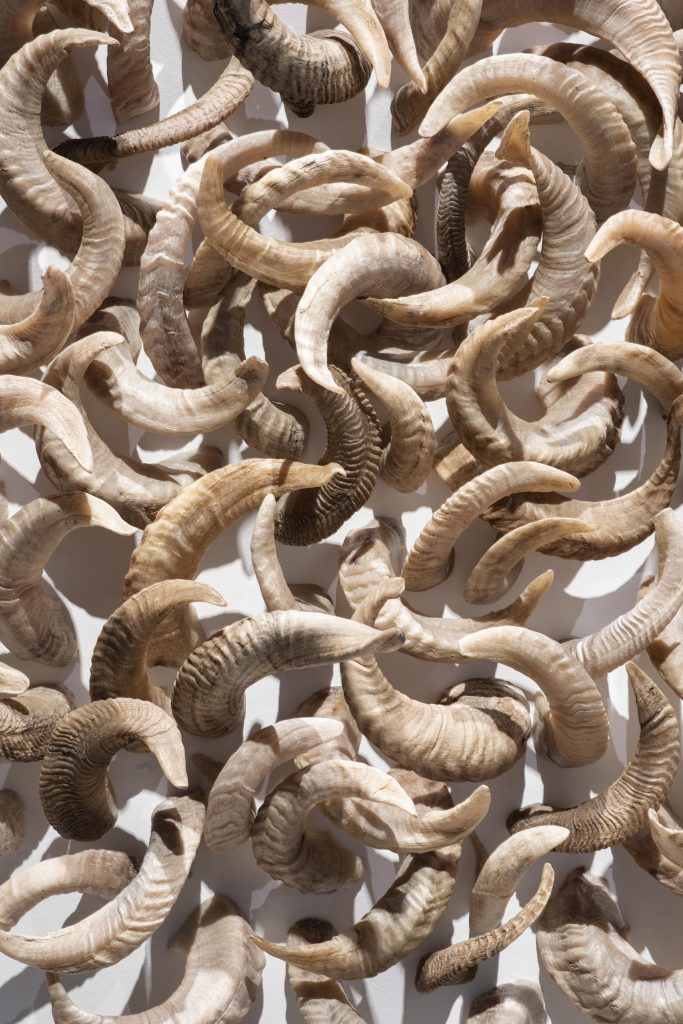
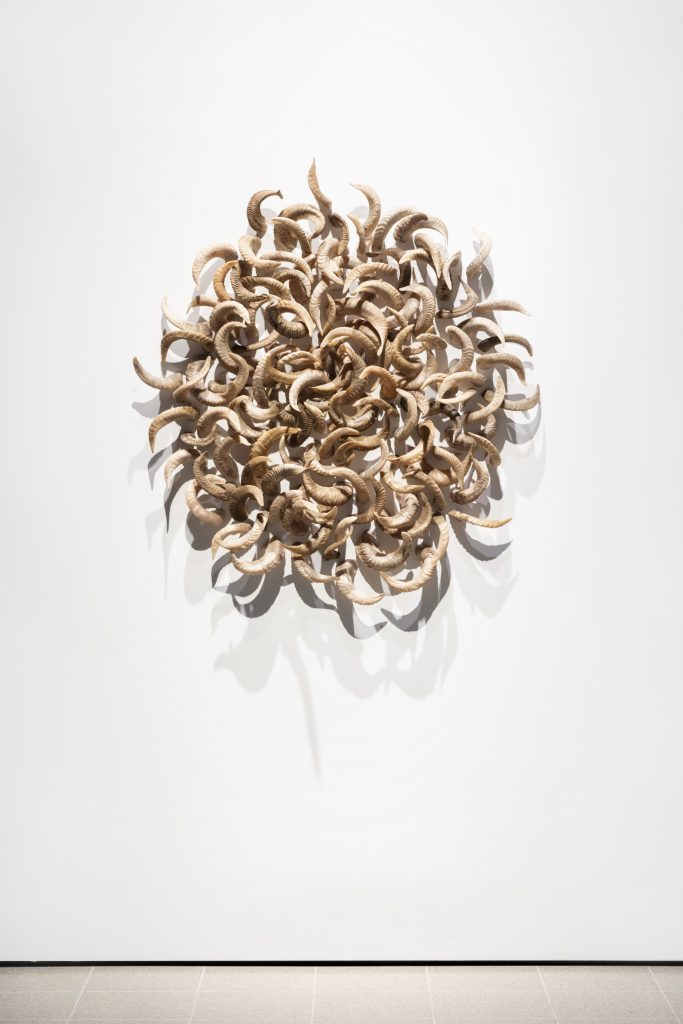
Wall installation of sheep horns
Exhibition view at The Hayward Gallery, London, 2019.
Doux et âpre souvenir, 2018
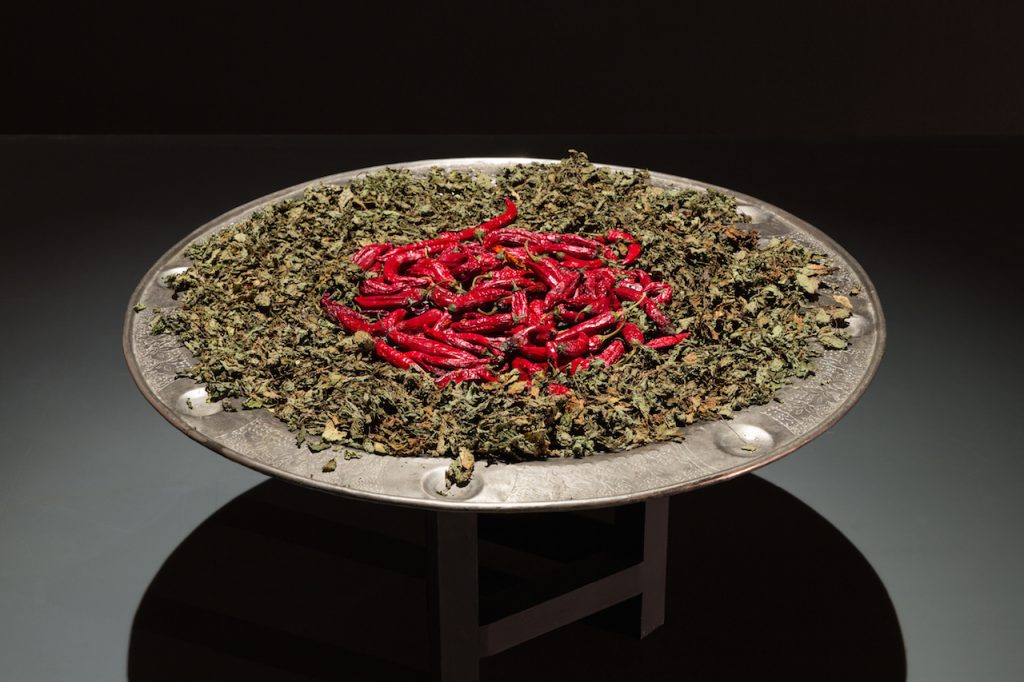
Mint leaves and chili peppers on Morrocan metal plate
Parfum d’exile, 2018
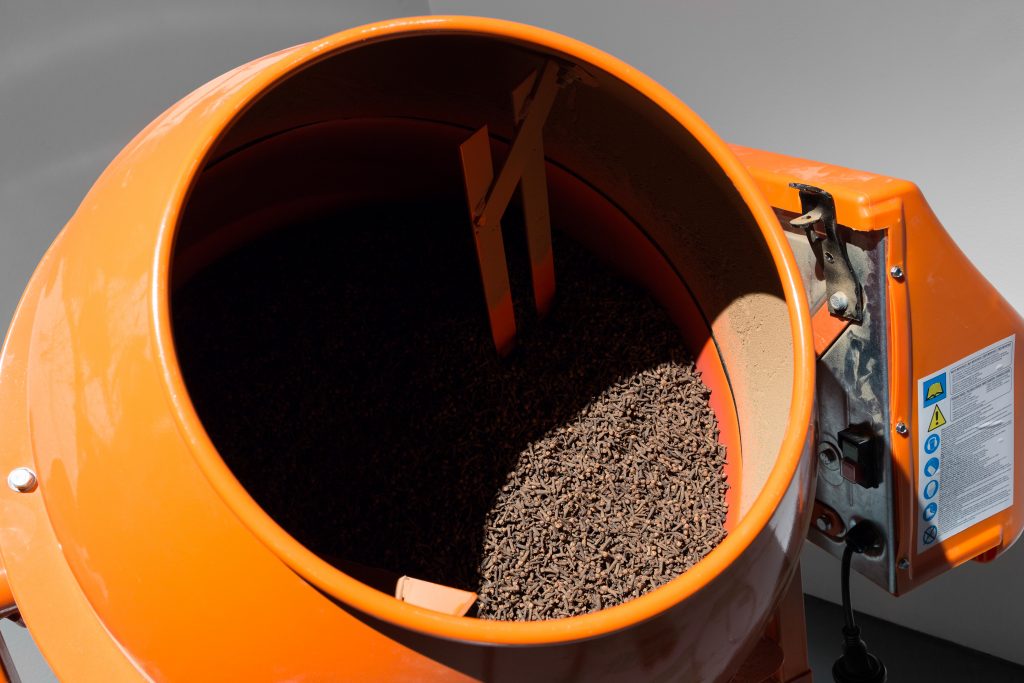
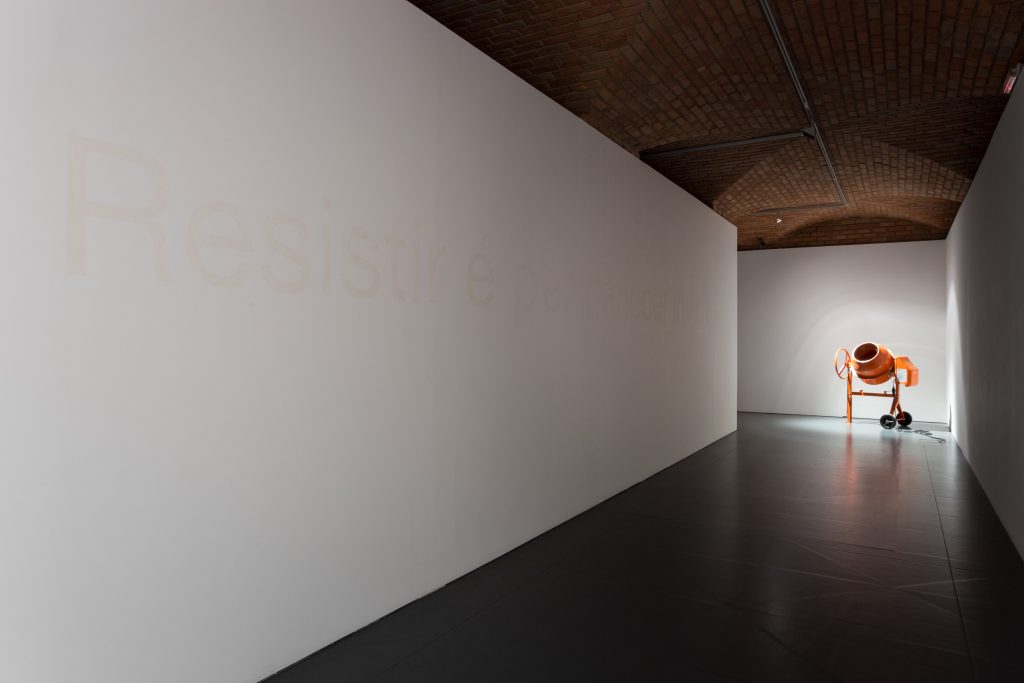
Concrete mixer, cloves
Exhibition view at Culturgest, Fundação Caixa Geral de Depòsitos, Lisbon.
Reason’s Oxymorons. By Chad Elias, in: Kader Attia, The Hood Museum of Art, Dartmouth, 2018
Over the course of two decades Kader Attia has developed a multimedia practice that investigates the cultural, political, and social transformations unleashed by colonialism. Central to this enquiry is the idea of “repair,” a concept that the artist uses to connect otherwise disparate fields of human activity: anthropology, architecture, craft, medical science, and psychiatry. Consider his installation The Repair: From Occident to Extra-Occidental Cultures (2013), which juxtaposes wooden sculptures made by traditional sculptors in Senegal with archival photographs of wounded World War I soldiers, whose faces have been subjected to rudimentary cosmetic surgery. In a Western cultural framework, repair is often understood to entail returning something or someone to an intact state. This is embodied in the methods of plastic surgery where the aim is not only to repair facial injuries, but to efface the traces of physiological reconstruction. Thus, according to this logic, “the beauty of the act of repair is represented by the
Disappearance
of scars altogether.”1 By contrast, Attia relates his discovery of a Congolese sculpture whose original shell-shaped eye had been replaced by an ordinary button. In foregrounding the aesthetics of its own repair, this artifact inhabits an impure state between cultures. Here, repair does not mark a return to origins but a further evolution in the life of objects and the people who shape them.
Attia’s longstanding preoccupation with repair is also manifest in Reason’s Oxymorons (2015), a work that analyzes how different cultures both conceptualize and treat psychiatric disorders. Filmed over two years in Africa and in Europe, this eighteen- channel video installation consists of interviews
that the artist has conducted with psychoanalysts, ethnopsychiatrists, art therapists, ethnomusicologists, and traditional healers. Arranged in individual cubicles, the recorded dialogues examine the psychological injuries caused by genocide, migration, colonization, and capitalism. The value of this comparative approach is twofold: the issue of mental illness offers a highly useful lens for analyzing the inner dynamics of African societies, while also eliciting a critique of a Western psychiatric methods and principles—particularly the division it sets up between reason and unreason.
In Madness and Civilization; A History of Insanity
in the Age of Reason (1961), philosopher Michel Foucault traces the invention of madness as an
object of medical categorization. Foucault argues that in the European Middle Ages, conditions like melancholia and delirium were associated with insight. The affliction is what “permits the sufferer to predict the future, to speak in an unknown language, to see beings ordinarily invisible.”2 In this world, insanity was still considered part of everyday life, and fools and lunatics walked the streets freely.
However, beginning in the seventeenth century madness would come to be defined as the anti- thesis of reason (déraison, unreason), and would progressively be pathologized. This period culminates with what Foucault calls the Great Confinement. With the institutionalization of the asylum in the nineteenth century, the mad and other social deviants are routinely incarcerated and forced to confess their ills. However, Foucault insists that the shift from premodern mysticism to modern rationality does rest on not a simple break or rupture in history. Rather, the notion of madness as a state of possession by the spirits will continue to haunt the discipline of psychiatry long into the twentieth century. This is particularly evident when the question of madness becomes entangled in European imperial projects.
In his interviews, Attia casts light both on the role
of traditional healers in mental health care in Africa and the adoption of Western psychiatric practices
in the wake of colonialism. At the same time, Reason’s Oxymorons interrogates the fraught relationship between psychoanalytic theories of the unconscious and the premodern religious beliefs that persist in many postcolonial nations. Sigmund Freud’s infamous description of female sexuality
as a ‘‘dark continent’’ and his theorization of the conflict between “primitive feelings” and the repressive demands of civilization in Totem and Taboo (1913) both rely on a conception of the Other that
is made possible by the European expropriation of African territories in the nineteenth century. Yet it would be reductive to see psychoanalysis as a mere instrument of the late colonial state. In the hands of radical thinkers, Freud’s psychoanalytic theory was also enlisted as a tool to challenge the authority accorded to the bourgeois-rationalist ego. More to the point, the supposition of the unconscious as
a forbidden zone of irrational desire and libidinal violence became important in thinking about the repressed underside of the so-called “civilizing mission.”
One of the more notable locations featured in Attia’s Reason’s Oxymorons is the Fann Psychiatric Hospital in Dakkar. In the 1950s, French psychiatrist and military doctor Henri Collomb initiated experimental treatment methods there that aimed at the psycho- logical reintegration of an individual in his or her cul- tural milieu.3 Championed as a form of transcultural psychiatry, the Dakkar School sought to incorporate traditional healers into its day-to-day practice. Indeed, the “healing villages” established in post- independence Senegal positioned psychiatric medicine as a supplement rather than an alternative to local knowledge. The villages’ open-door policy also attempted to take advantage of what Collomb saw as a more accommodating and flexible approach to madness in African societies. In seeking to incorporate family and community participation into the treatments, these villages recognized the therapeutic value of socialization.
In a video filmed in Dakkar, Attia engages in an extended dialogue with Professor Momar Guèye, who is now head of the psychiatric clinic at the Fann Hospital. Noting the comparatively low rates of reported schizophrenia in Africa, Guèye connects this to the high tolerance for certain forms of behavior that might otherwise be considered pathological. He explains that in Senegal, “people with mental illnesses are not systematically hospitalized. They see that person not as a problem that needs to be confined but as someone we should learn to live with.” When asked if the rituals associated with spirit possession can be seen to prefigure Freud’s idea of the unconscious, Guèye responds that it perhaps parallels what people in Wolof society
call the “rab.” Although this term has proved very difficult to translate, it is commonly understood to refer to an ancestor spirit that watches over a family or village.4 Certain symptoms of mental illness are often attributed to the rab, but Guèye also connects the rab to the psychopathology of everyday life. Thus, he describes it as a “superior force that drives us all . . . something that makes us do things with- out us meaning to.”
The insights produced by psychoanalysis made it possible to question the individual as a sovereign, autonomous entity who is completely in control
of his or her actions and thoughts. As I have suggested, this decentering of the ego drew on anthropological studies of the so-called magical or irrational thought of “the native.” However, there remains deep resistance to analyzing the workings of the psyche outside of a scientific framework. In a racialized hierarchy of knowledge, non-Western subjects are still cast as “second-class citizens in psychological modernity, poorly understood and crudely enculturated.”5 This presents a serious obstacle to the global translatability of curative analytical work based on the social life of the unconscious. Moreover, while the discipline of transcultural psychiatry was progressive in its attention to questions of culture, its crossing of boundaries threw up some unexpected contradictions. As Megan Vaughan observes, the Senegalese psychiatrists and nurses who took over at the Fann Clinic in the late 1970s “were deeply ambivalent about Collomb’s collaboration with traditional healers” and equally wary of “delving into the spirit world.” Ironically, the French doctors could draw on local therapeutic practices without necessarily risking their professional reputations, but their African counterparts were not afforded the same freedom.
The question of madness takes on a different inflection when seen alongside Attia’s parallel research on art therapy. Here, the artist considers the legacy of Art Brut, a term devised by French artist Jean Dubuffet in the 1940s to refer to the art produced by untrained, isolated, and in some cases mentally disturbed individuals. In his essay “In Honor of Savage Values,” Dubuffet challenges the tendency to pathologize the work of these unschooled artists. This connects with his larger critique of the demonization of madness in European culture. While Christendom views it as a sickness, “in many other civilizations, madness is on the contrary a highly honored value.”6 Taking inspiration from ethno- graphic art collections, Dubuffet opened up a dis- cursive framework in which the work of institutionalized patients would be appreciated not as objects manifesting a psychiatric diagnosis but as an open- ended aesthetic act that challenged cultural norms. In Reason’s Oxymorons, one of Attia’s respondents, Dr. Francis Théodore, a physician who heads the Ethnopsychiatry Department at Ville-Évrard Hospital in Paris, conjectures that many of the practitioners of Art Brut spent years in psychiatric hospitals. He concludes that art making in this context equipped subjects with a way to externalize and give form to inner obsessions that might otherwise be all consuming. Along the same lines, Théodore explains that for patients who suffer from psychosis and who typically have trouble determining what is real and what is imaginary, art can function as a crucial mediating object between inner states (for example, delusions or hallucinations) and external reality. When the topic turns to delirium, the psychiatrist notes that “there are day hospitals where patients can paint, but not as long-term projects.” As he goes onto conclude: “patients are no longer given the time to go completely mad.” Here Théodore echoes Dubuffet’s arguments against the inhibiting effects of institutionalized psychiatry.
Reason’s Oxymorons also explores what Warwick Anderson designates as “the globalization of the modern psychoanalytic subject.”7 The growth of ethnopsychiatric clinics in hubs of south-to-north migration such as Paris and London suggests a move beyond the dichotomies imposed by a colonial structure of knowledge/power. They also offer a crucial means for addressing the traumas produced by contemporary forms of mass displacement, deracination, and culture shock. Attia interviews several therapists who work with diasporic Meghrebian and sub-Saharan African communities in Europe. One of these, Abdelhak Elghezouani, is a Swiss Moroccan psychologist who works with newly arrived migrants from North Africa. Many
of his patients exhibit symptoms that do not correlate in any simple causal way to the mental injuries inflicted by exposure to war or oppression. Elghezouani gives the example of refugees who have fled violence but who only develop physical or psychological illnesses after receiving asylum in Switzerland. As manifestations of post-traumatic stress disorder (PTSD), these maladies cannot be traced back to an original trauma experienced prior to or during departure from their home country. Rather, the sufferers’ condition is the result of the stress that they experience upon arrival. In the case of migrants arriving in Switzerland, Elghezouani contends that the stress caused by acculturation relates to a growing cultural, civilizational, and social divide in the world.
In larger terms, Reason’s Oxymorons points to the gap between the rhetoric of market liberalization and democratic participation, and the growing inequalities that stem from the global financial crisis and the destabilization of developing nations in the global south. The attendant influx of stateless people from war-torn nations like Syria has given rise
to an infrastructure of borders, checkpoints, and camps that functions to screen out “undesirables.” Attia’s use of the office cubicle—a potent symbol
of atomized labor and the corporate exploitation of the mind—would seem to replicate this system of segregation. Indeed, viewers who enter the installation are forced to negotiate a maze of parallel
and perpendicular lines that restrict movement and obstruct interpersonal exchange. Yet the same assembled interviews offer an alternative to the divisive logic of contemporary geopolitics. The African patients who inhabit two worlds simultaneously—accepting modern medicine (for example, to treat epilepsy) while continuing to see a traditional healer—move between what many in the West would see as heterogeneous or even incompatible realities. By calling attention to these forms of boundary crossing, Reason’s Oxymorons stages more than a bipolar confrontation between Us and Them. Rather, this work suggests that “universalities” might exist in imperfect acts of cultural translation. This too is a matter of repair.
Notes
- Kader Attia, “Scarifications, the Self-Skin’s Architecture,” 2015, http://kaderattia.de/scarifications-the-self-skins -architecture-2/.
- Michel Foucault, Madness and Civilization: A History of Insanity in the Age of Reason (London: Routledge, reprint 2006), 98.
- The Clinique neuro-psychiatrique de Fann opened in 1956. Senegal attained independence from France in 1960. For a useful account of the Fann Clinic, see René Collignon, “Some Aspects of Mental Illness in French-Speaking Africa,” in The Culture of Mental Illness and Psychiatric Practice in Africa, ed. Emmanuel Akyeampong et al. (Bloomington: Indiana University Press, 2015), 163–85.
- Margaret Lock and Vinh-Kim Nguyen, An Anthropology of Biomedicine (London: Wiley-Blackwell, 2010), 292.
- Warwick Anderson et al., Unconscious Dominions: Psycho- analysis, Colonial Trauma and Global Sovereignties (Durham, NC: Duke University Press, 2011), 9.
- Jean Dubuffet, “In Honor of Savage Values,” RES: Anthropology and Aesthetics 56 (Autumn 2004): 264.
- Anderson et al., Unconscious Dominions,
Shifting Borders, 2018
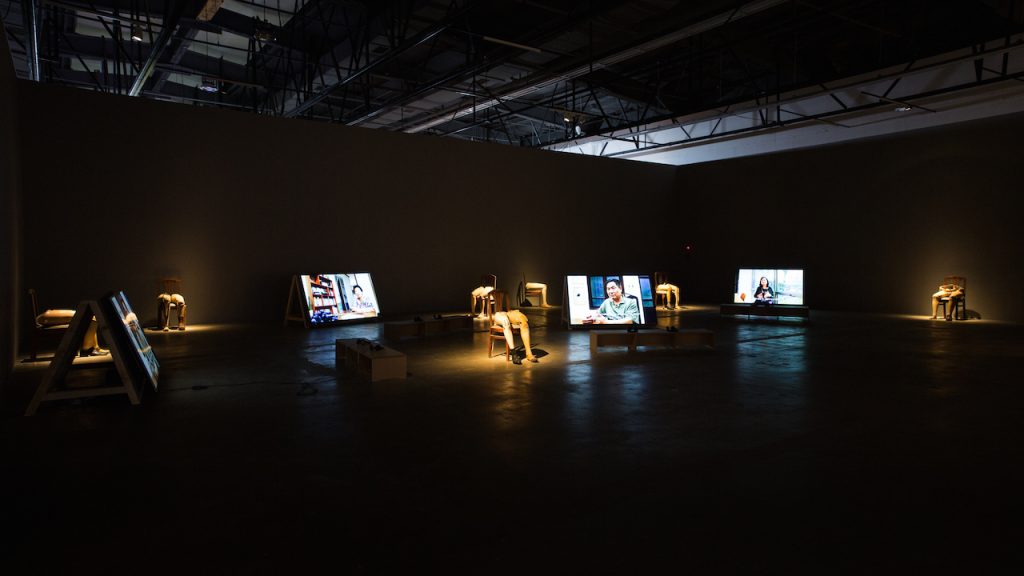
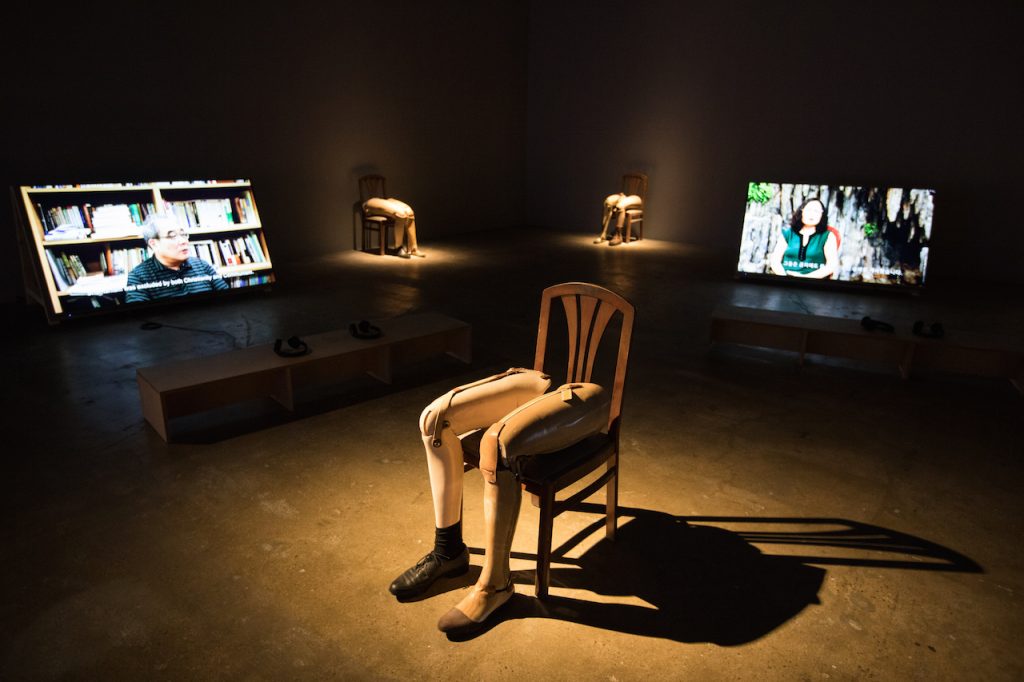
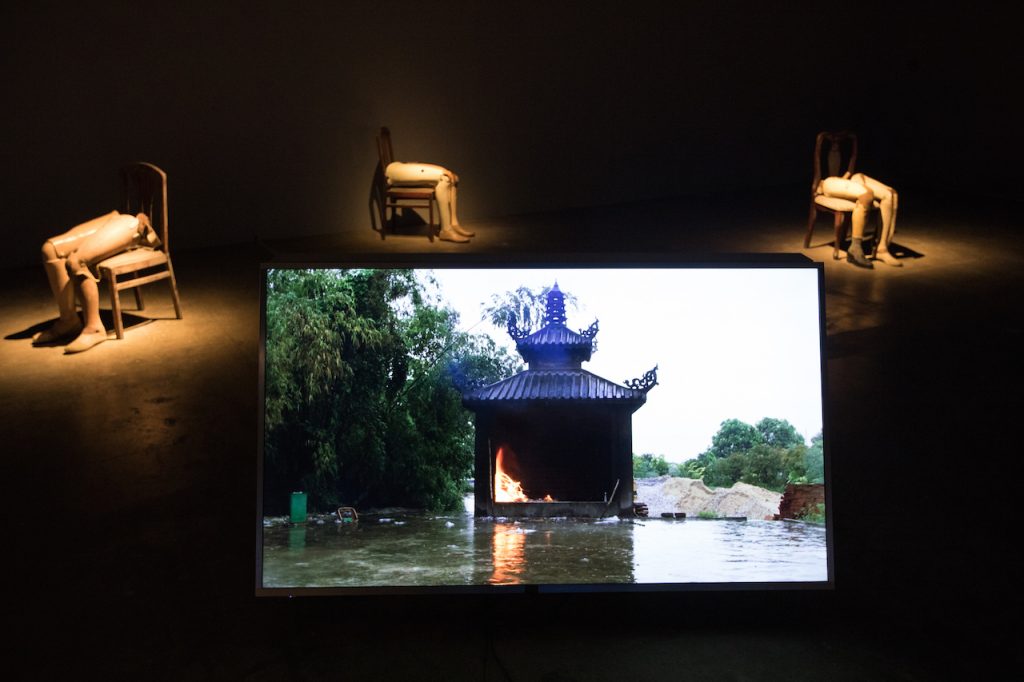

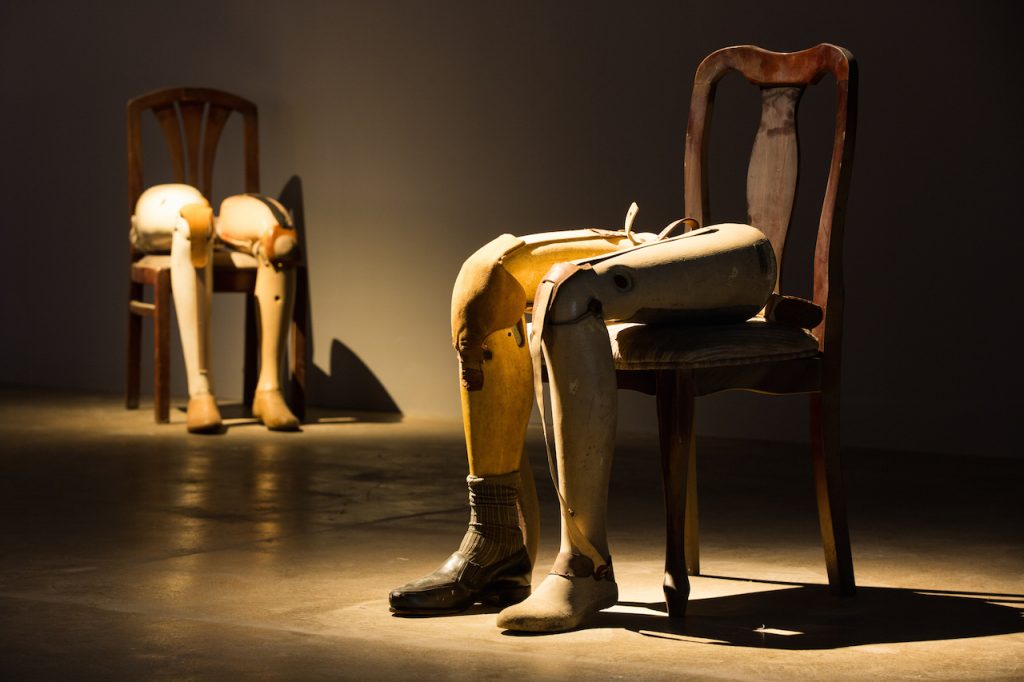
Mixed Media Installation; chairs, prosthetic legs, shoes; 3 channel HD digital film projection on 4 screens: «Recycling Colonialism», «The Paradoxes of Modernity», «Catharsis: The Living and The Dead Are Looking for Their Bodies».
Installation view at the 8th Gwangju Biennial, GB Galleries, Gwangju, Korea, 2018
Eternal Now, 2018
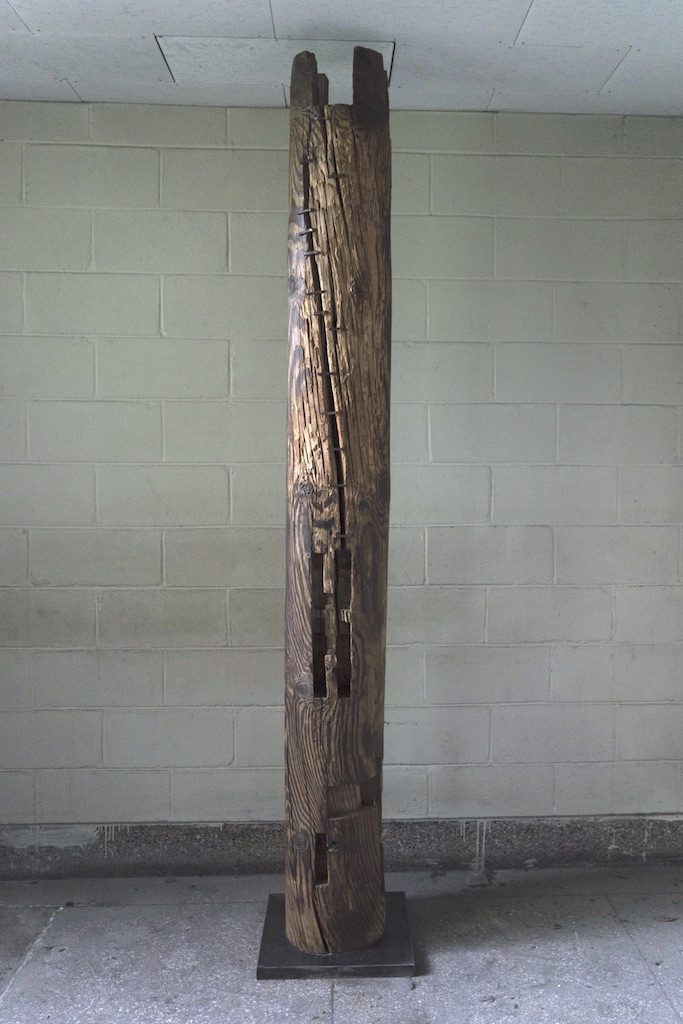
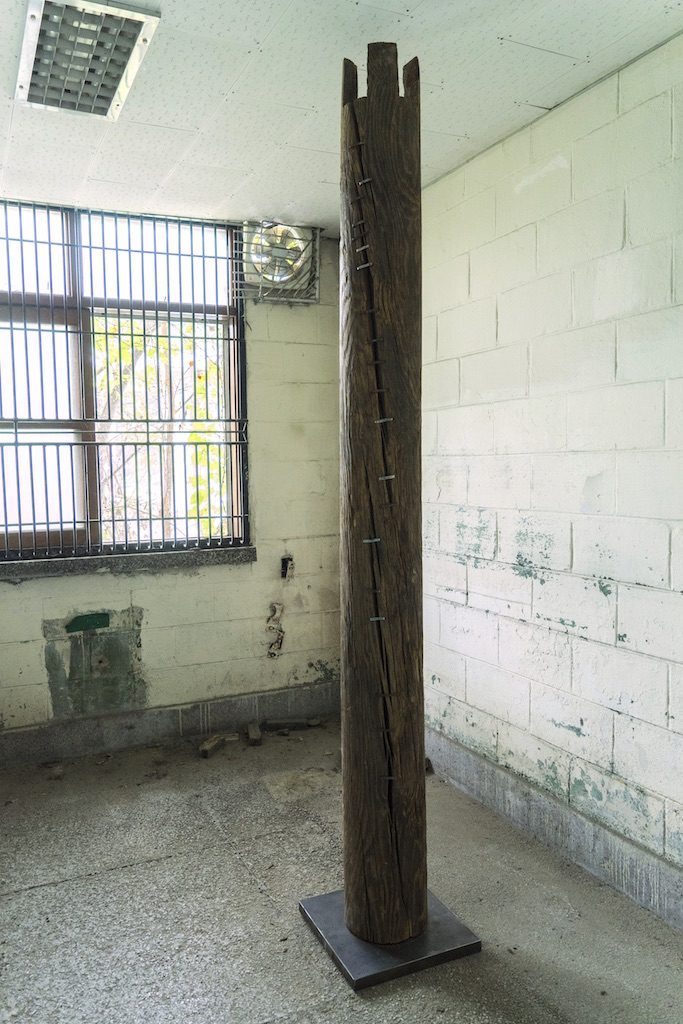
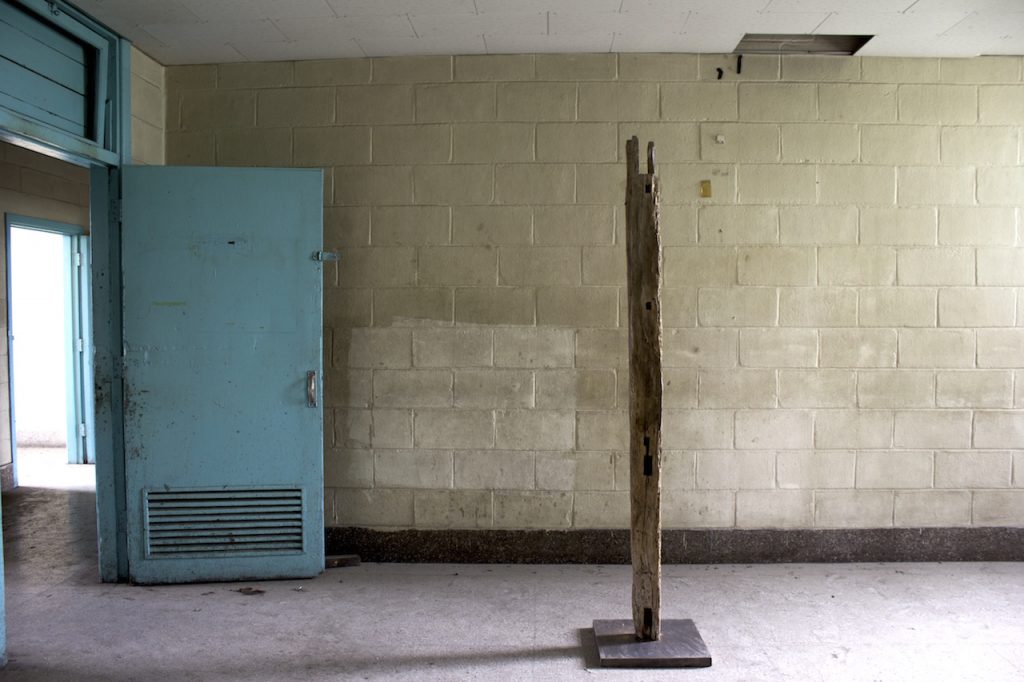
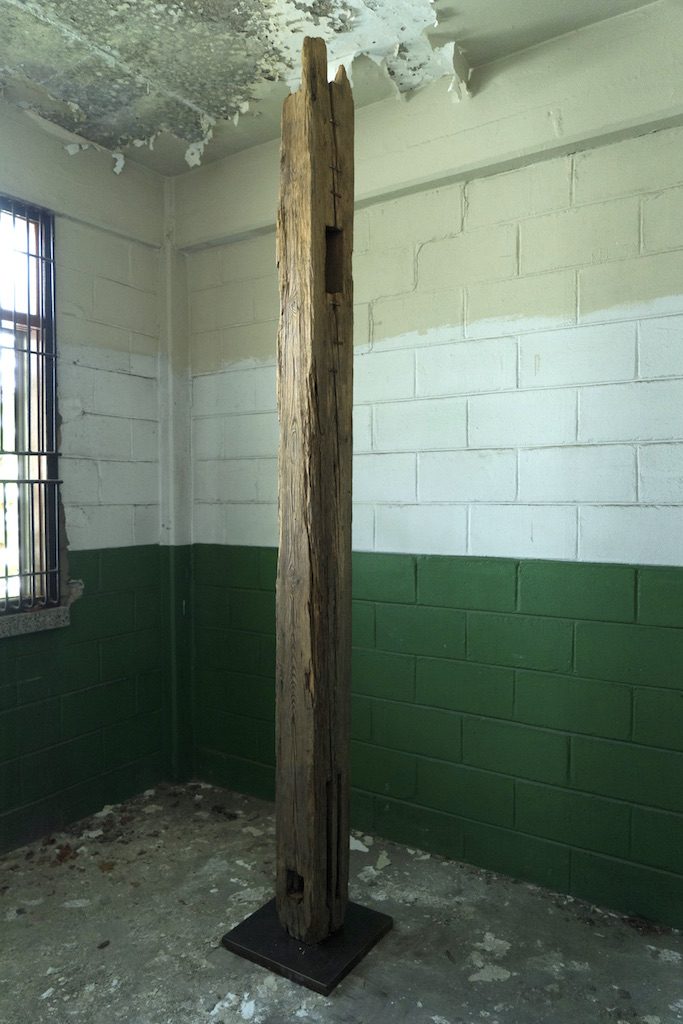

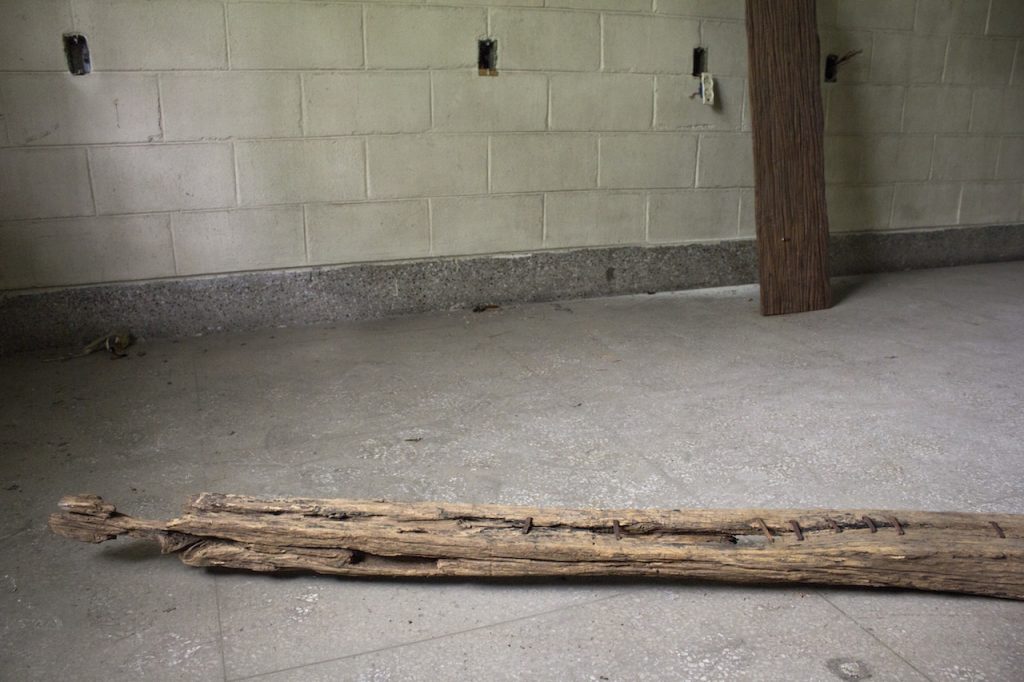
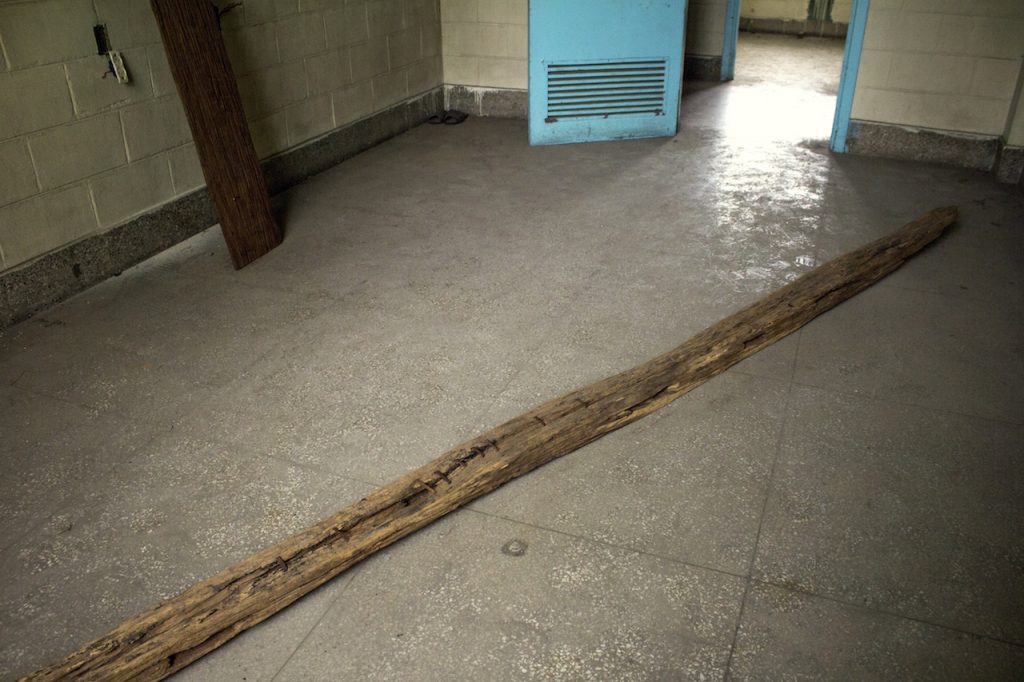
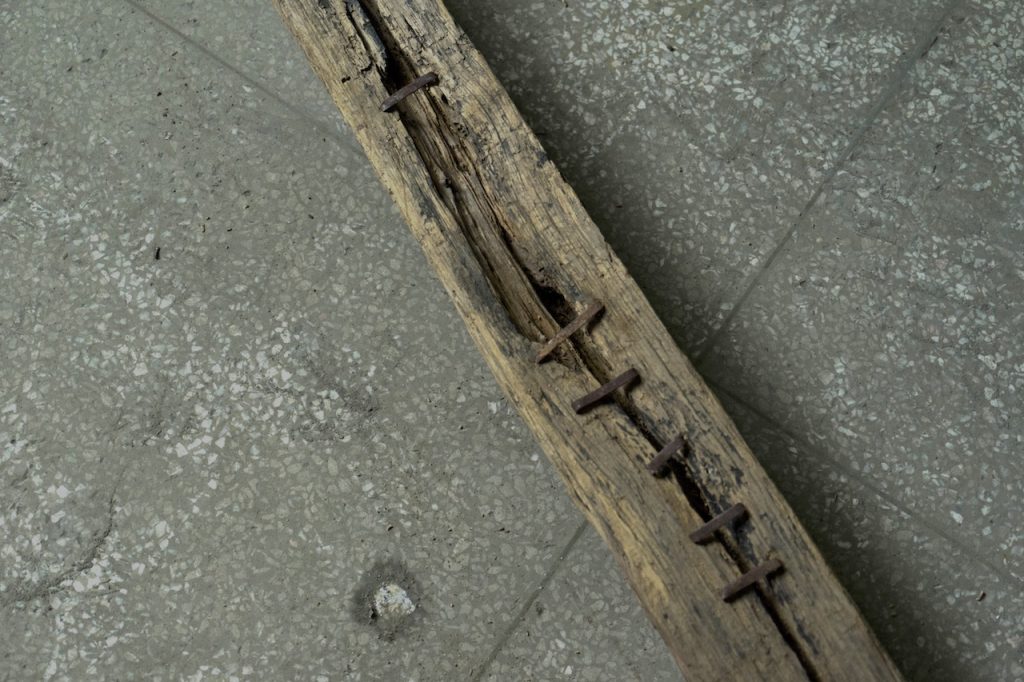
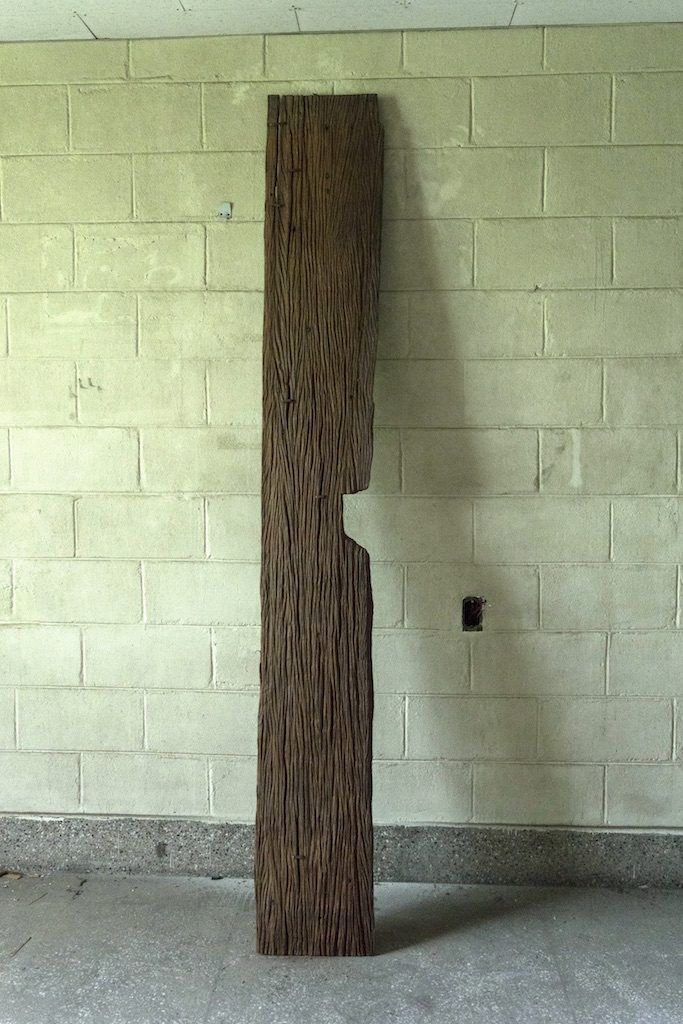
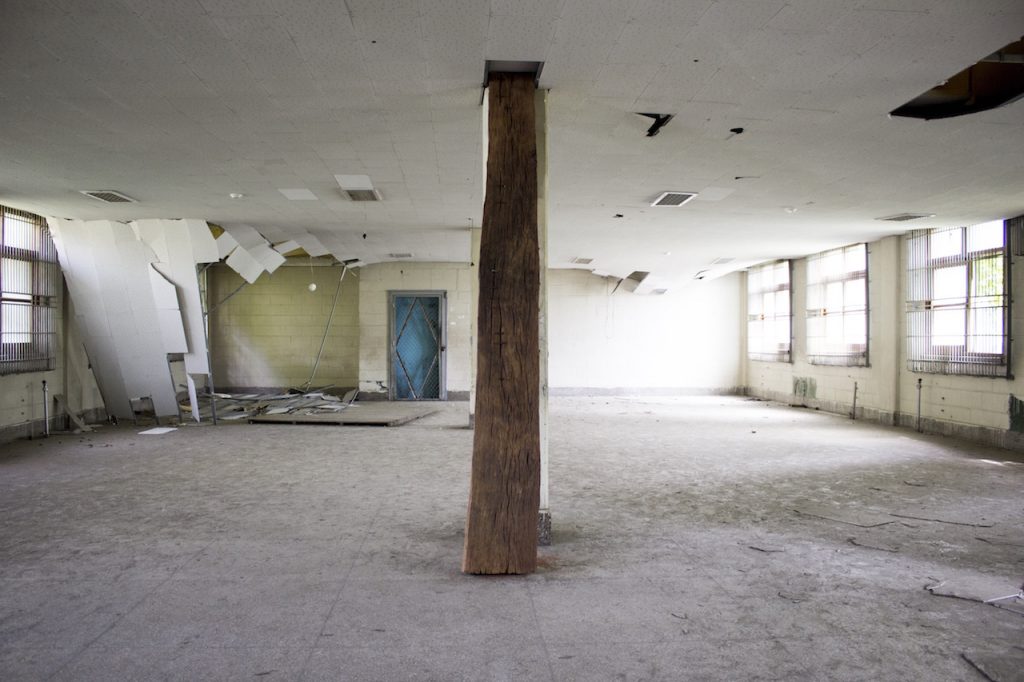
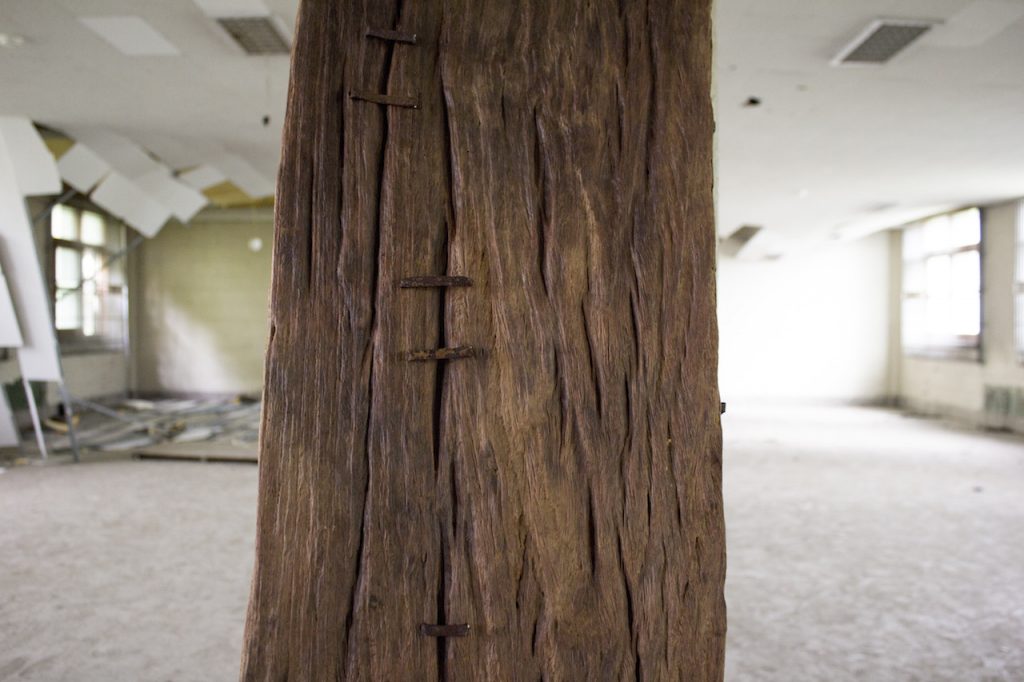
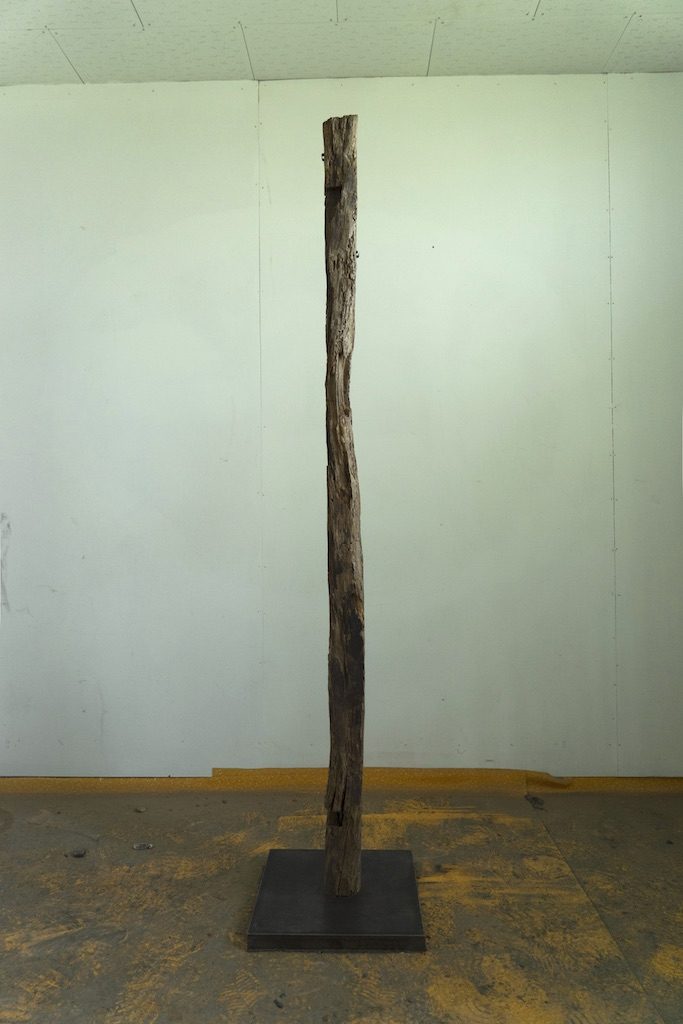
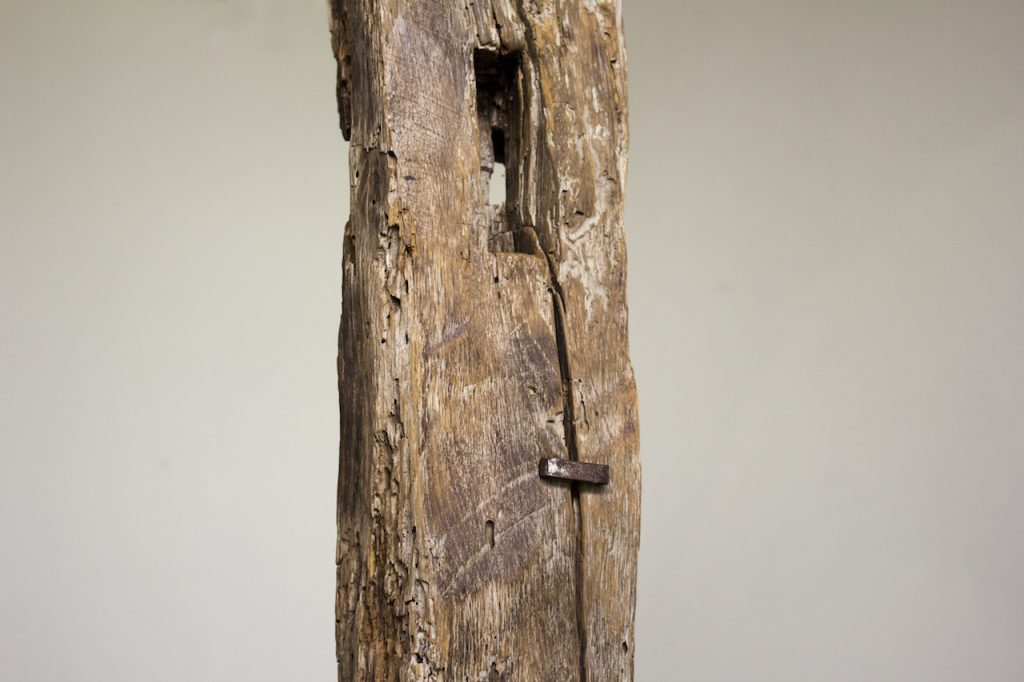
Installation; wooden beams from traditional Korean houses, metal staples and metal plinths.
Exhibition view at the Former Armed Forces Military Hospital, Gwangju, Korea, 2018 (Commissioned by the Gwangju Biennial)
Untitled, 2018
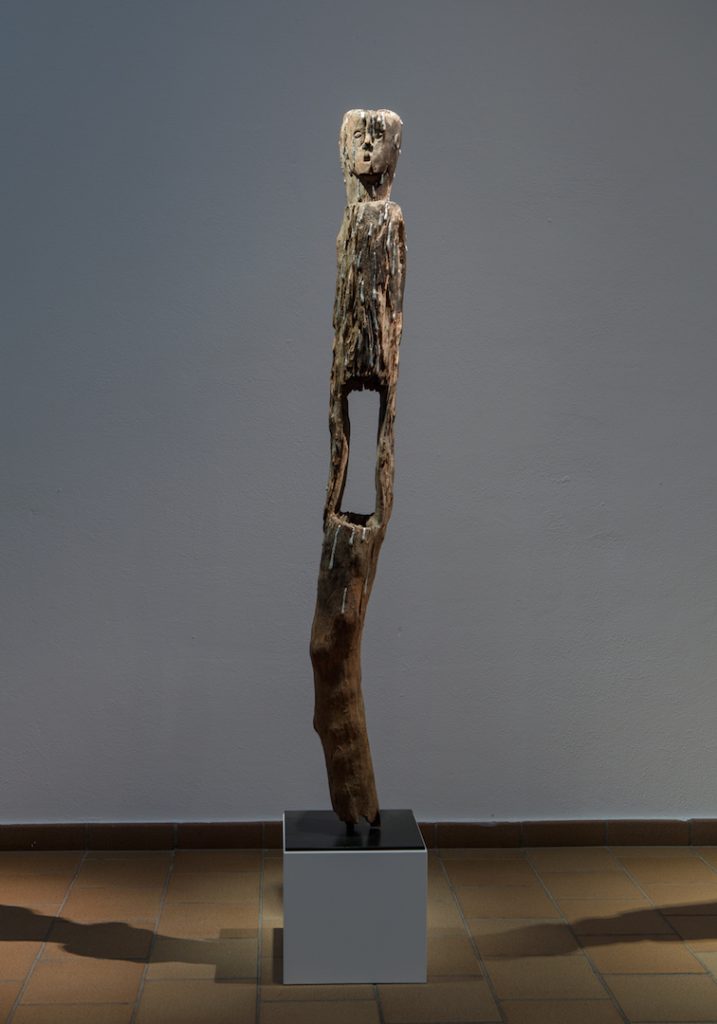
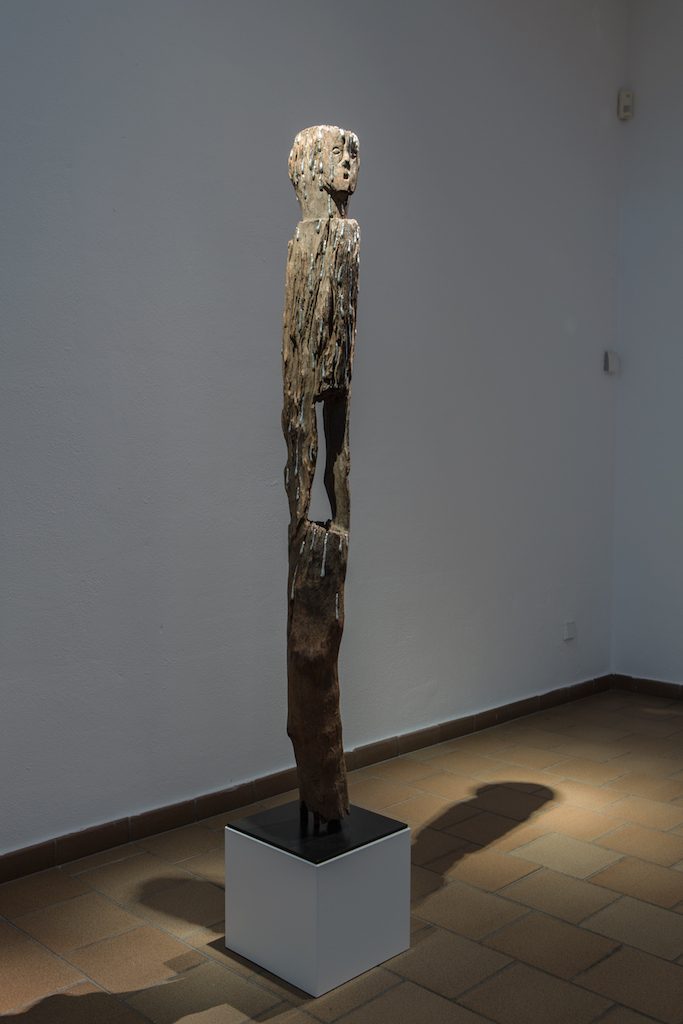
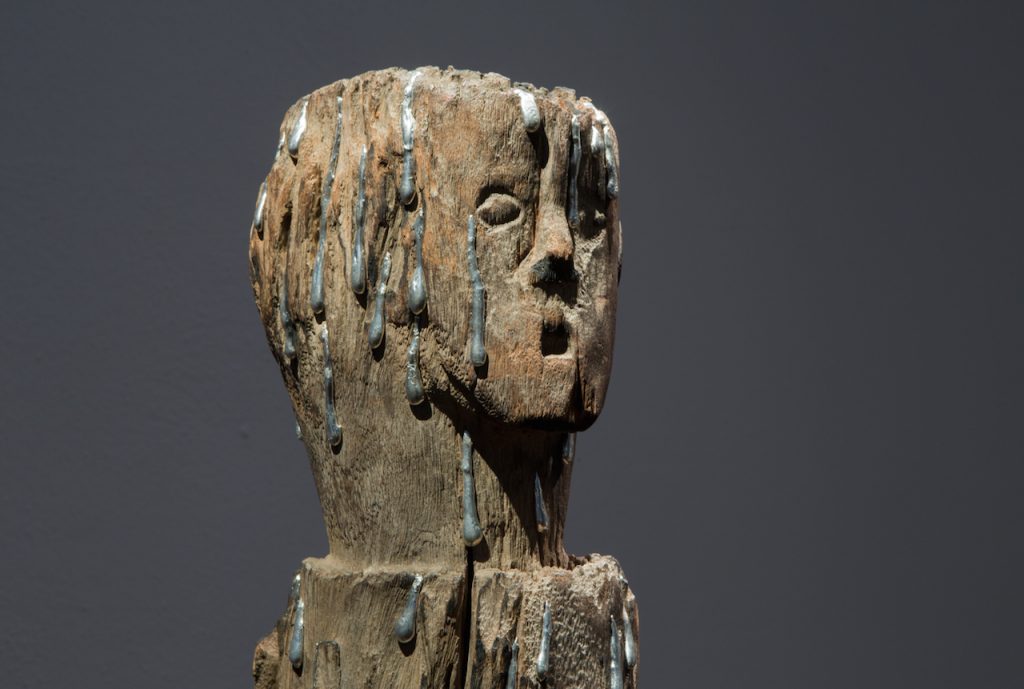
Ancient wood sculpture from Togo; tin
Exhibition view at Fundacio Joan Miro, Barcelona, 2018.
Untitled, 2018

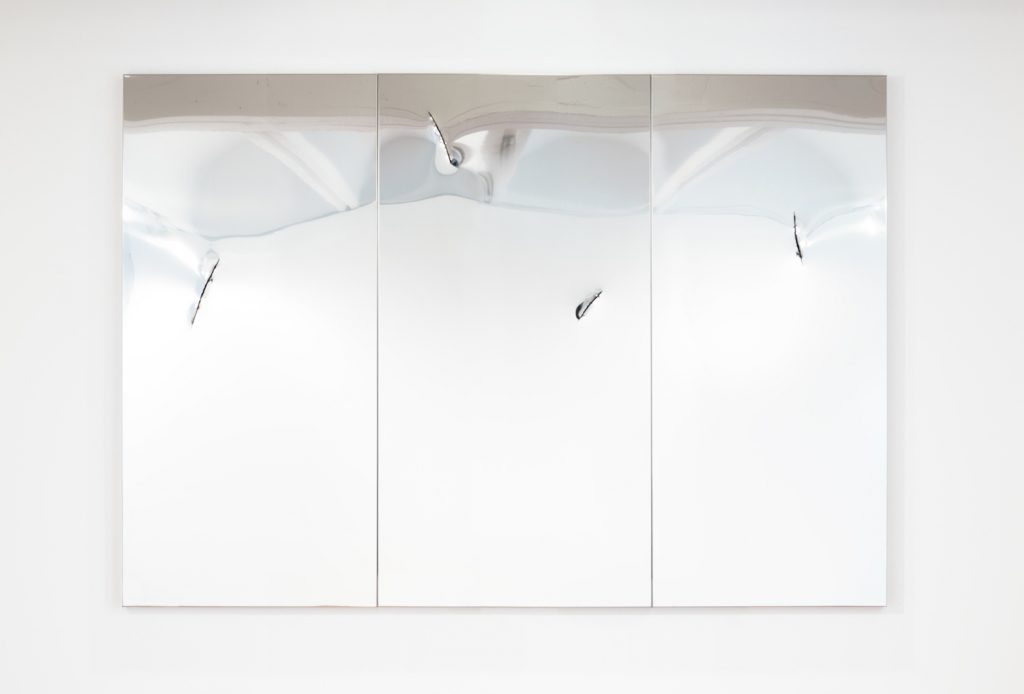
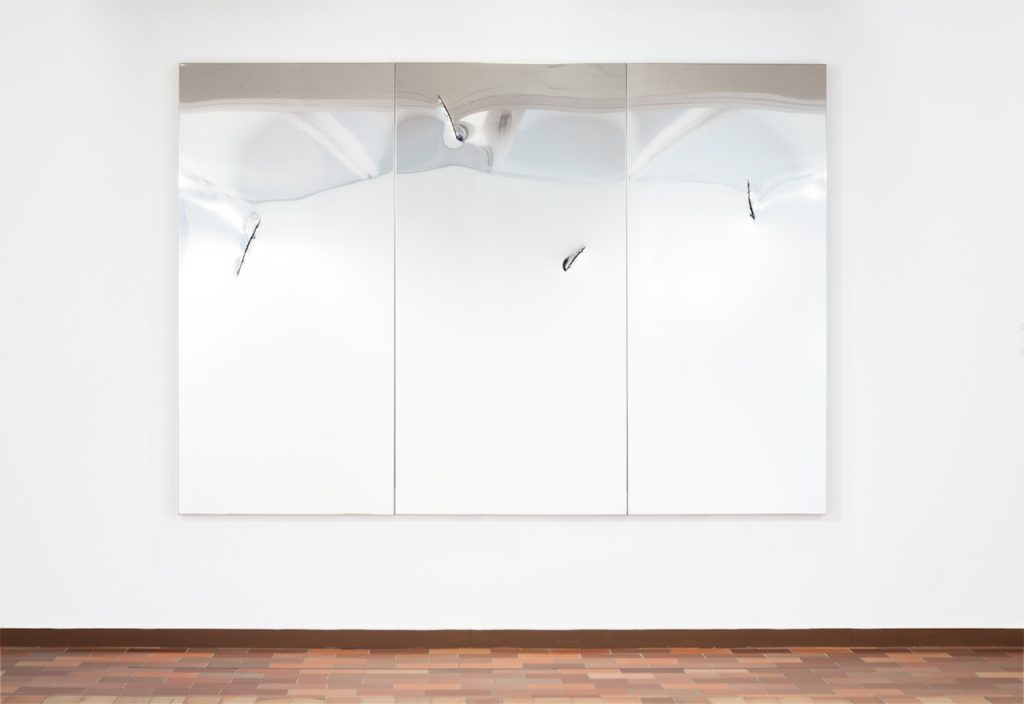
Triptych; Mirror-polished stainless steel
Exhibition view at Fundacio Joan Miro, Barcelona, 2018.
Héroes Heridos, 2018




Digital HD video projection, colour, sound; 47:15 min.
Exhibition view at Fundacio Joan Miro, Barcelona, 2018.
Kinuna l’Algéroise, 1999/2018
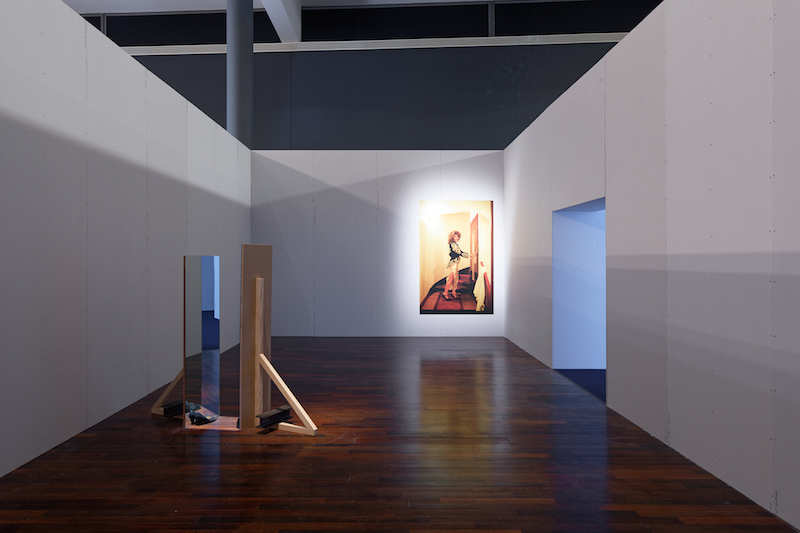
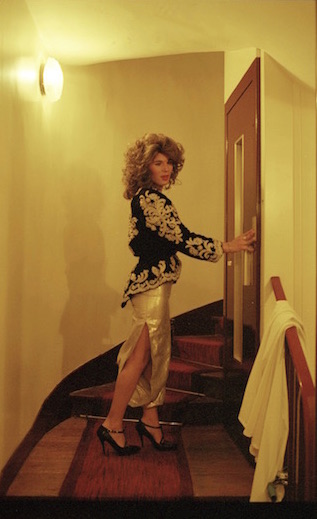
Kinuna l’Algéroise
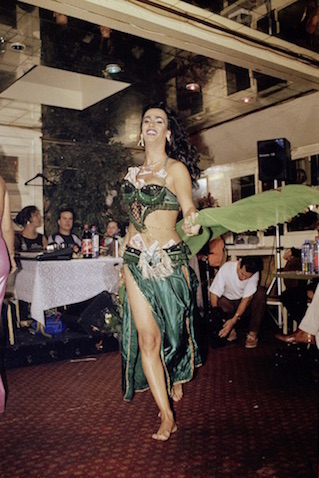
Mounira l’Oranaise
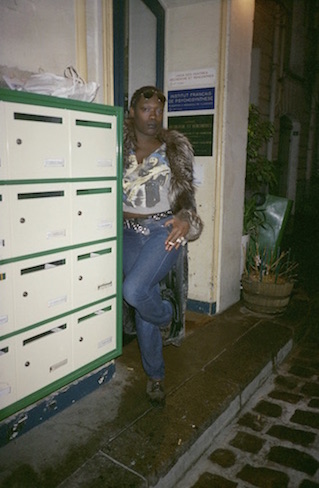
Christine des Îles
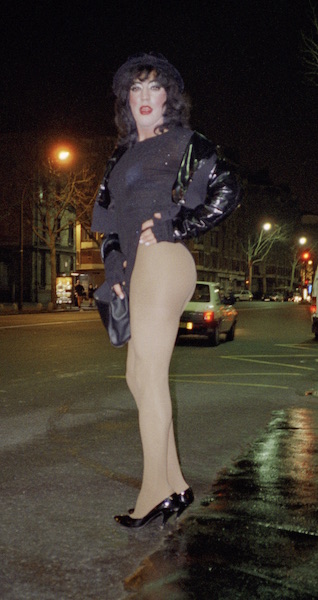
Olivia de Blida
Series of offset prints on poster paper; exhibition view «Les racines poussent aussi dans le béton», MAC VAL Musée d’Art Contemporain de Val-de-Marne, Virty-sur-Seine, 2018.
La Tour Robespierre, 2018
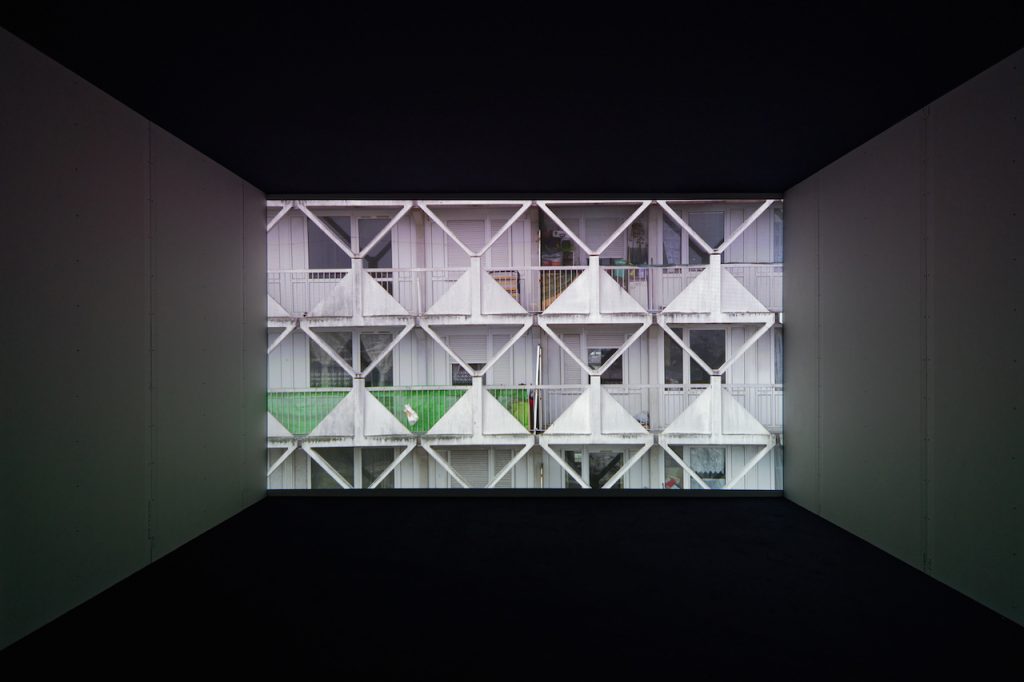
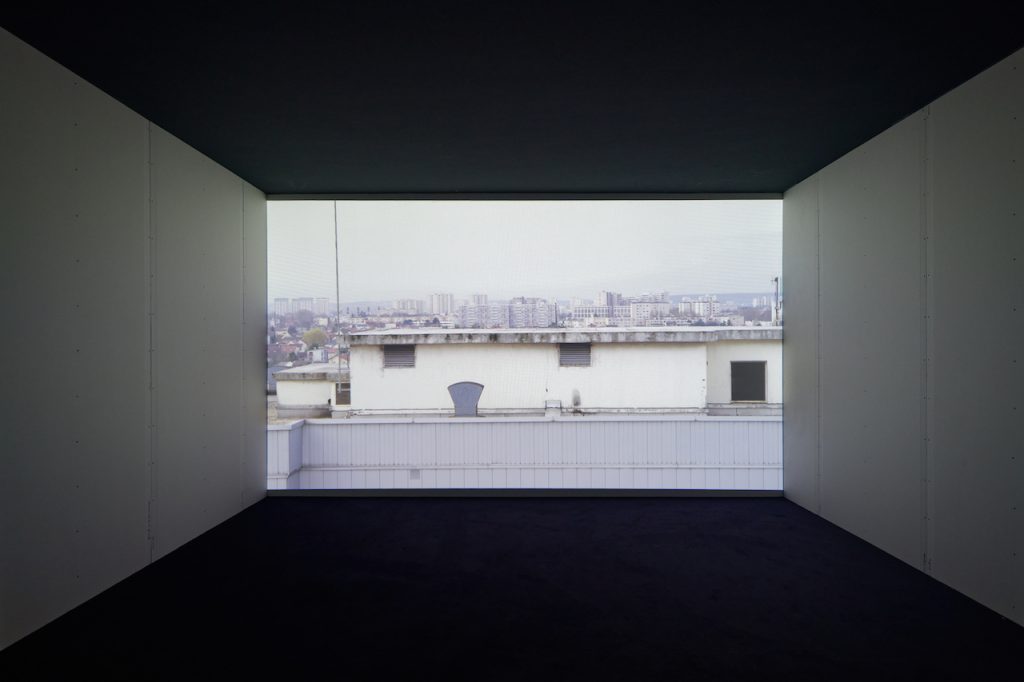
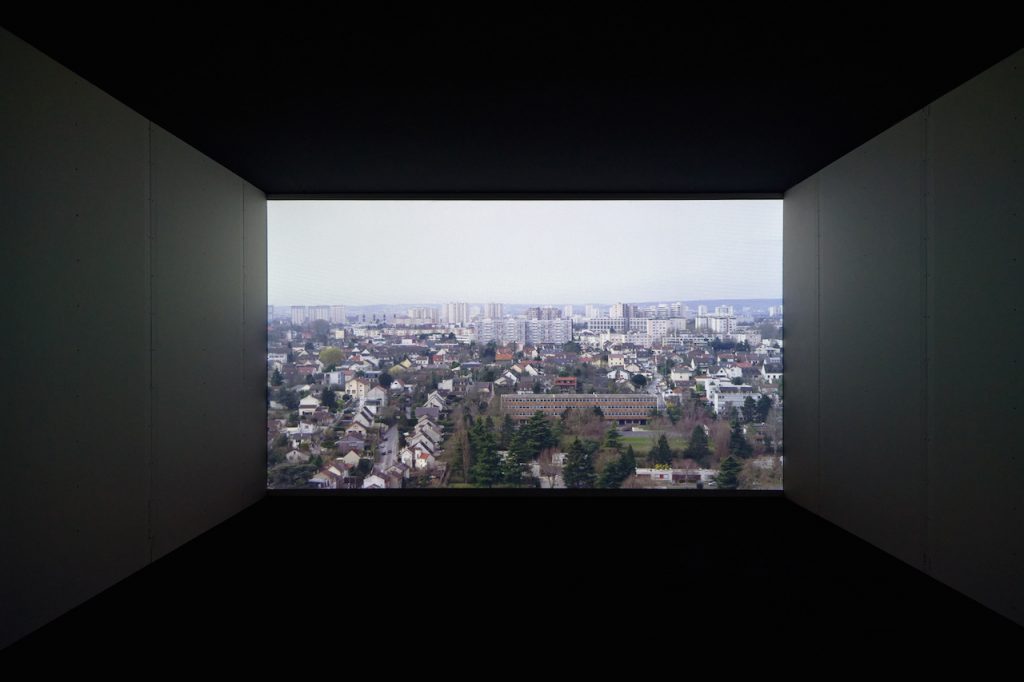
Single channel HD video projection; colour, sound, 2:14 minutes.
Exhibition view «Les racines poussent aussi dans le béton», Mac Val, Vitry-sur-Seine, 2018.
The Body’s Legacies, Pt. 2: The Postcolonial Body, 2018
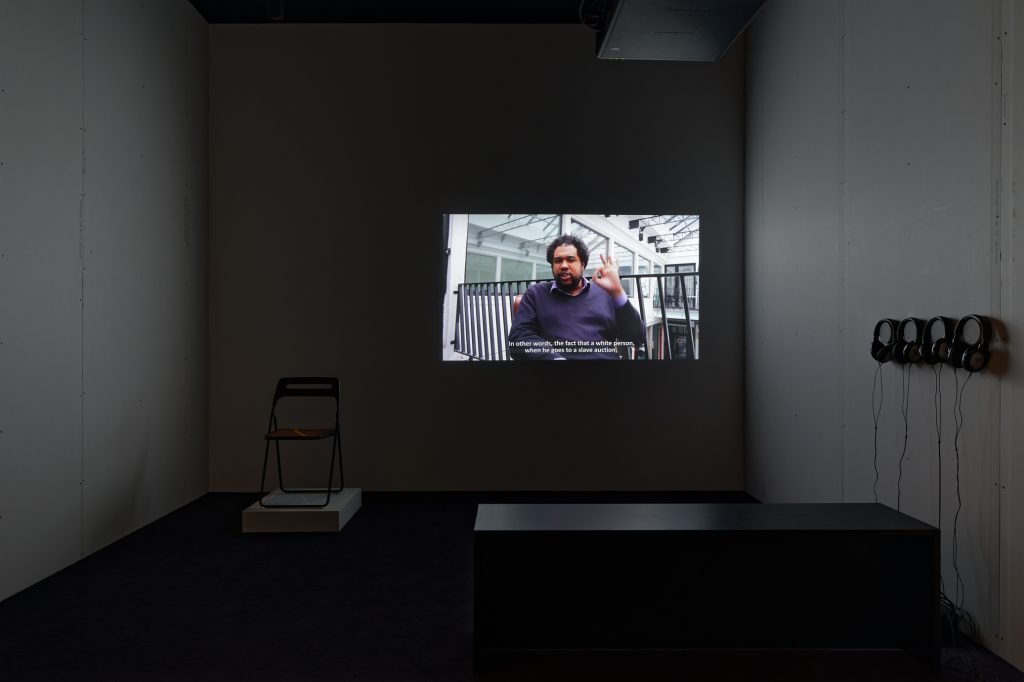
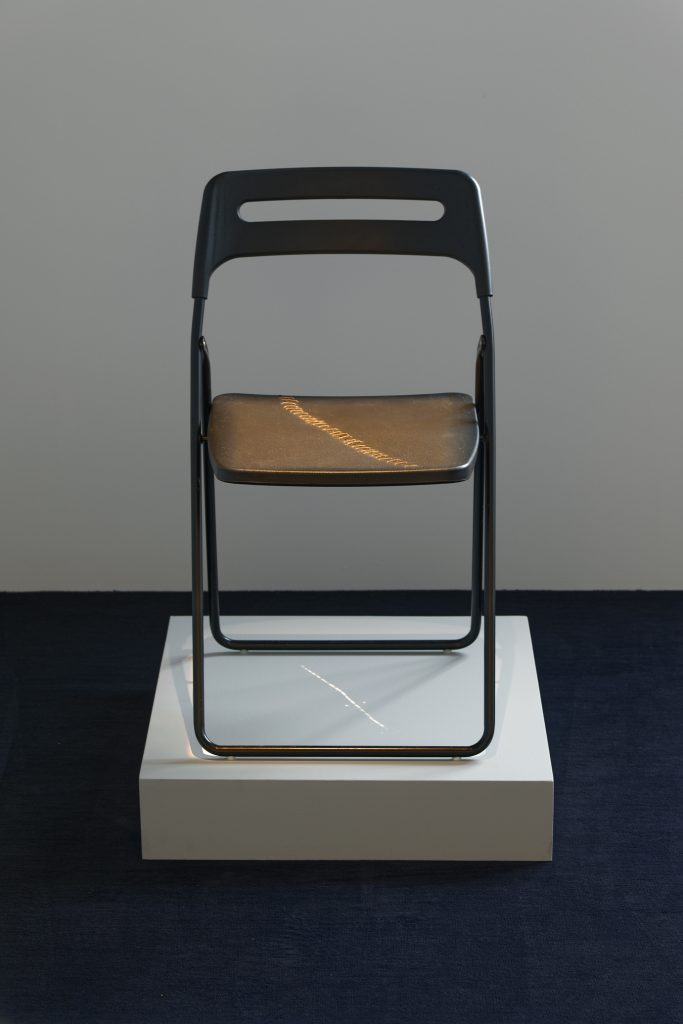
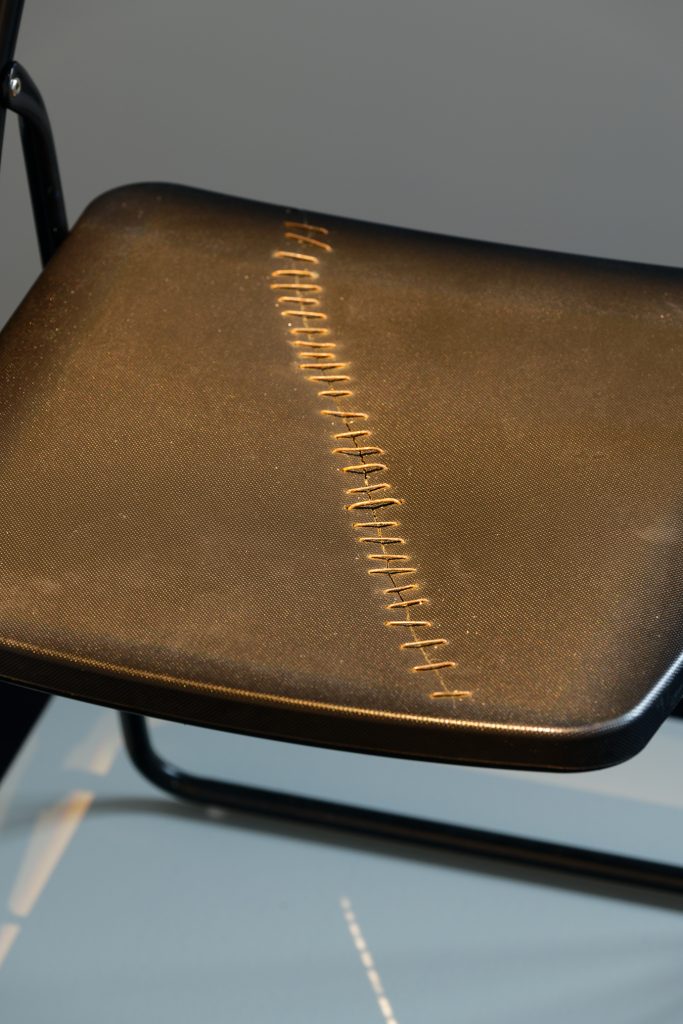
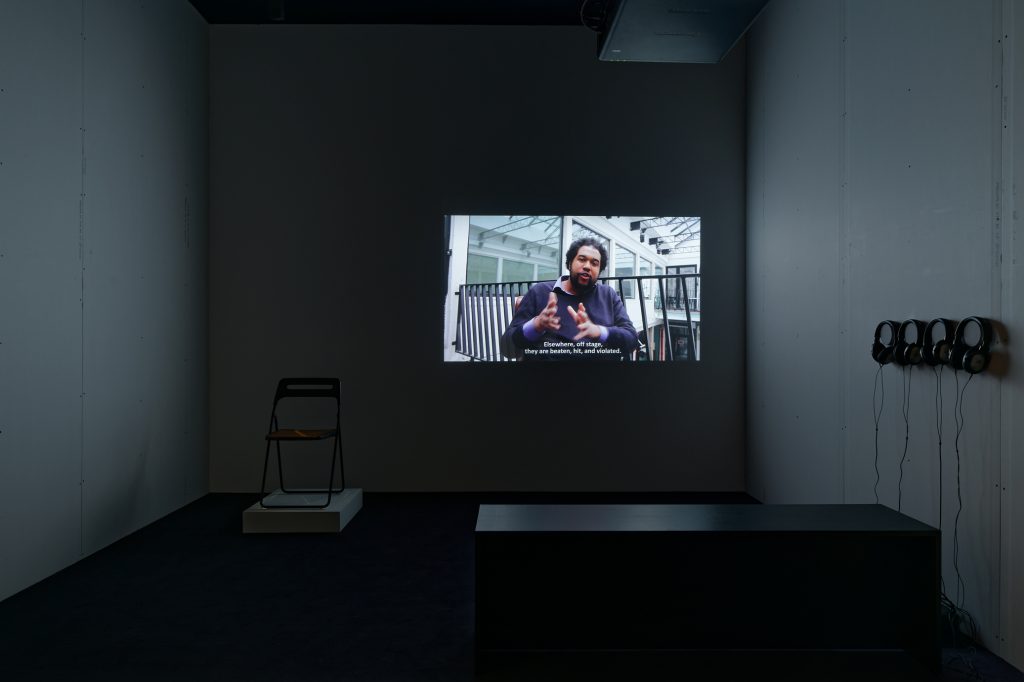
Single channel HD video projection; colour, sound, 48:00 minutes; plastic chair, wire.
Exhibition view «Les racines poussent aussi dans le béton», Mac Val, Vitry-sur-Seine, 2018.
Intégration, 2018
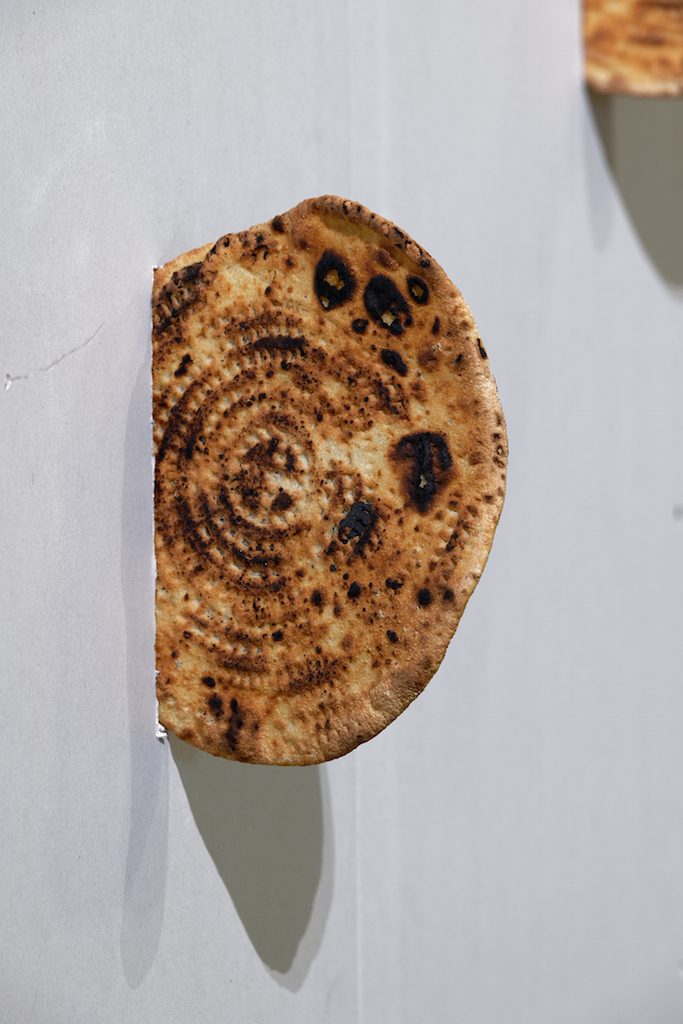
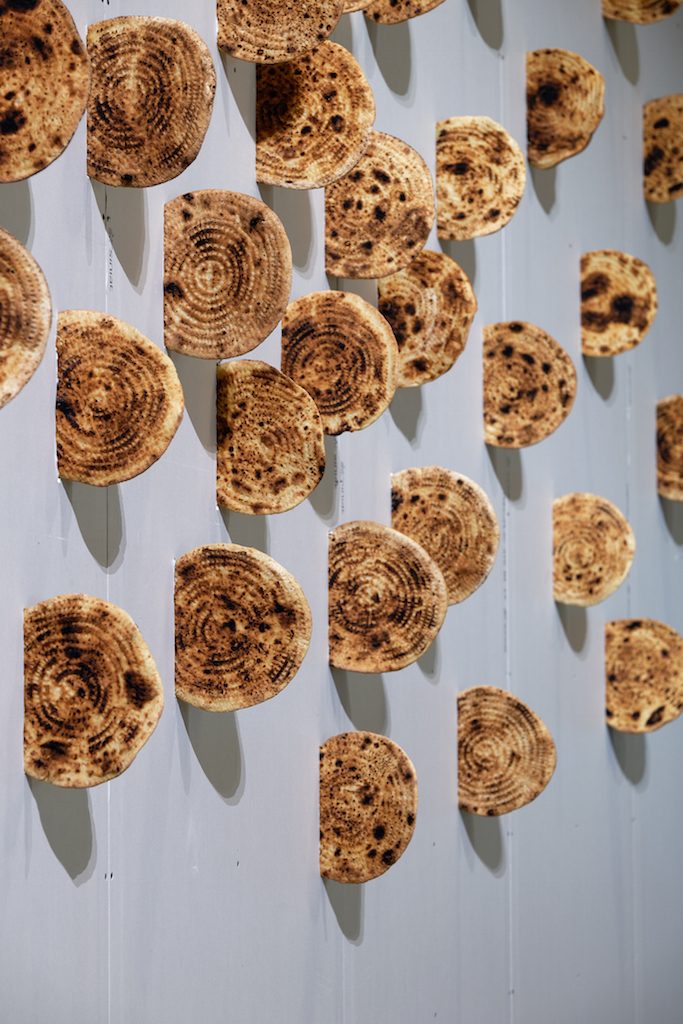
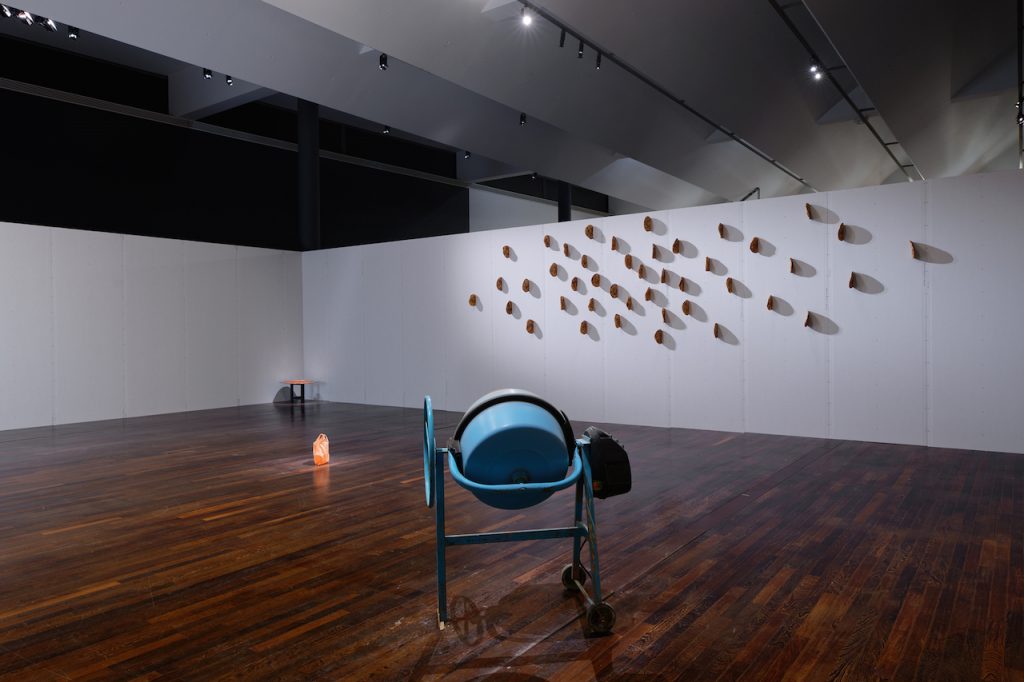
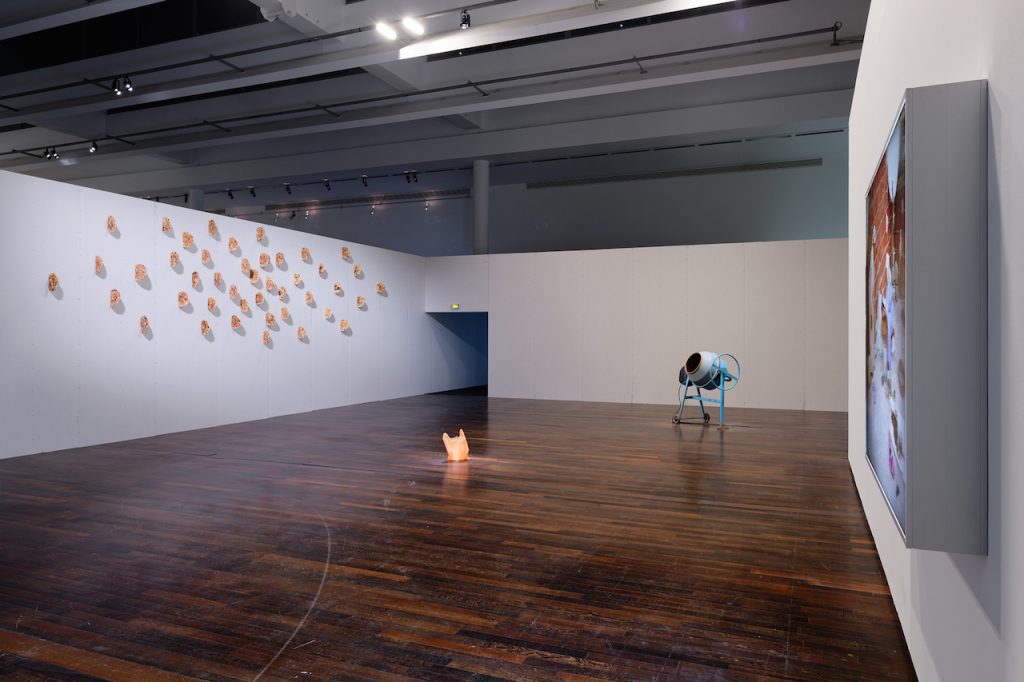
Site-specific wall sculpture; Kesra bread.
Exhibition view (with Plastic Bags, 2008; Parfum d’éxile, 2018; Doux et âpre souvenir, 2018; and We have never been Modern, 2015) «Les racines poussent aussi dans le béton», MacVal, Vitry-sur-Seine, 2018.
Untitled, 2018


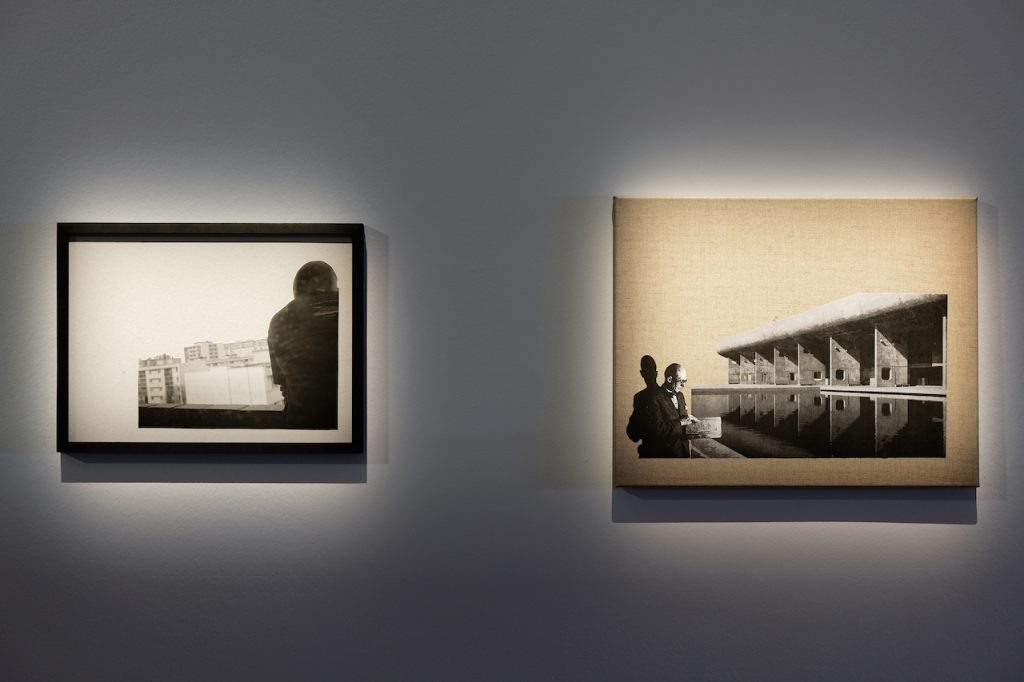
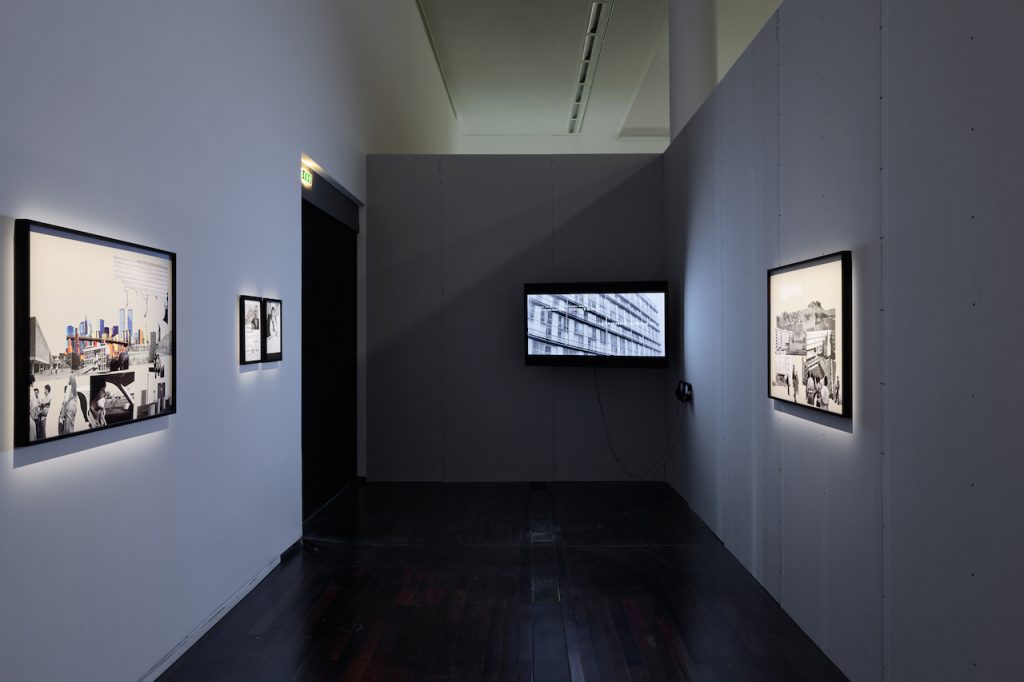
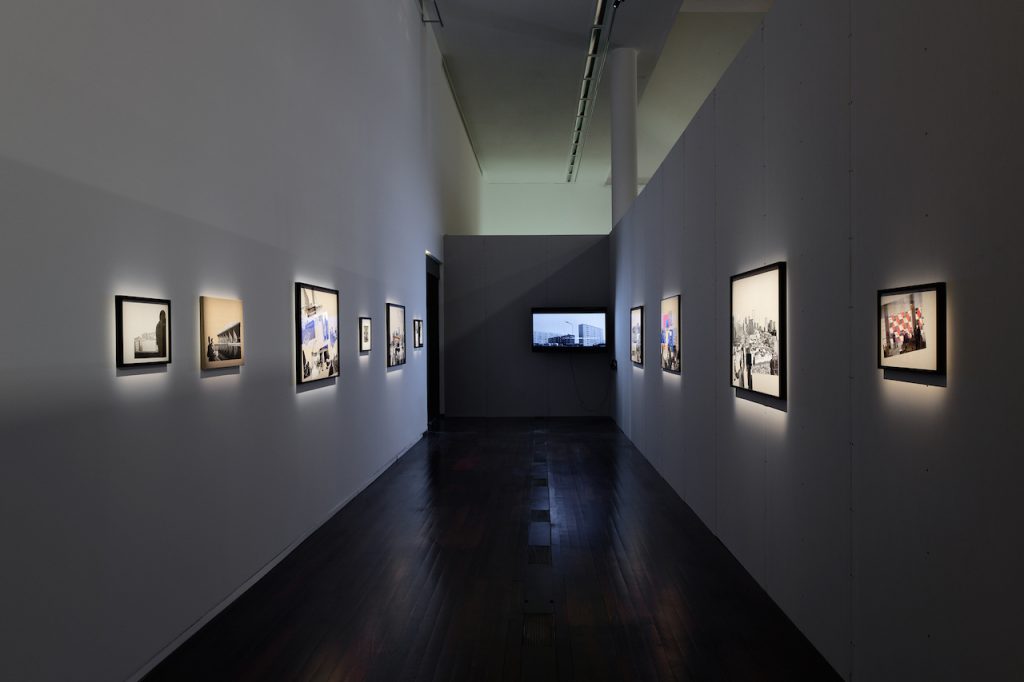
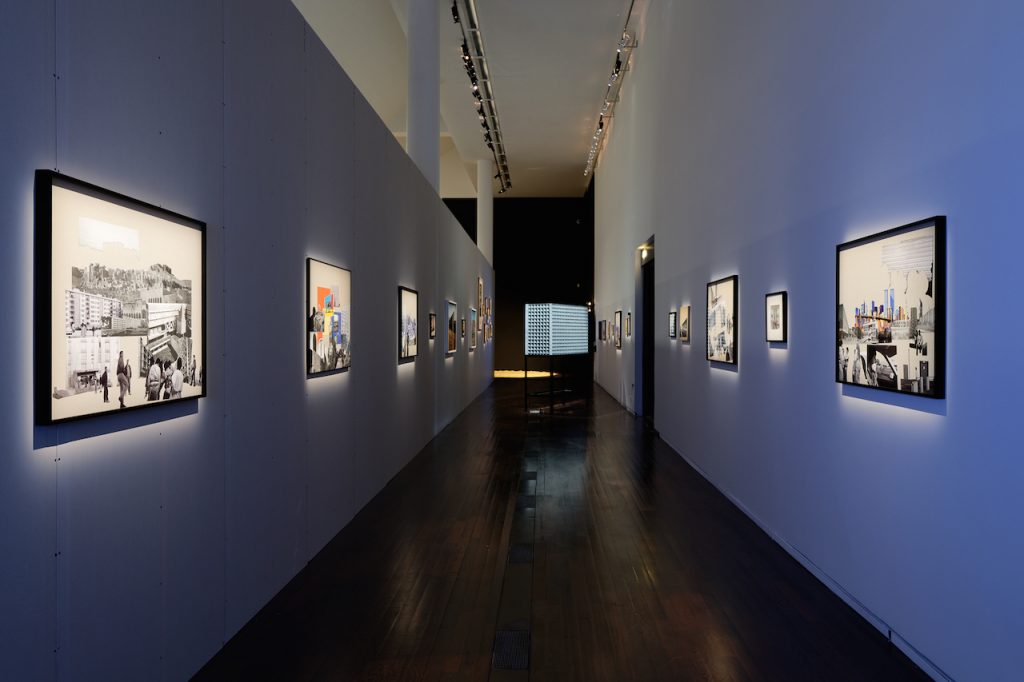
Collages, silver-gelatine prints, prints, drawings, excerpts from the films Pepe Le Moko (Julien Duvivier, 1937) and Mélodie en sous-sol (Henri Verneuil, 1963). Exhibition view «Les racines poussent aussi dans le béton», MacVal, Vitry-sur-Seine, 2018.
Mirrors, 2018
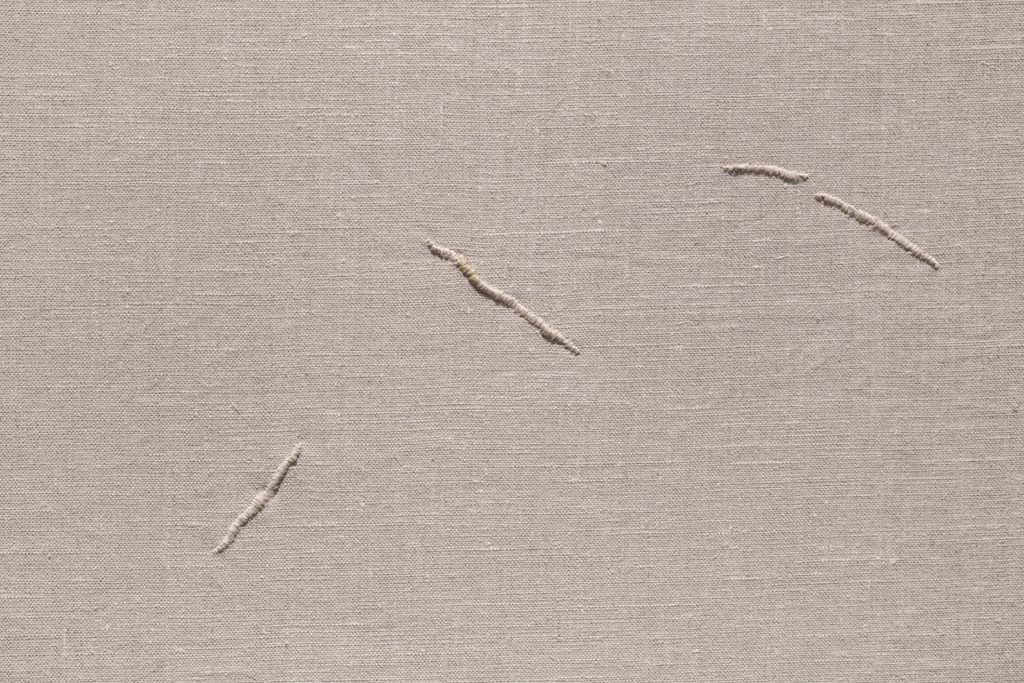
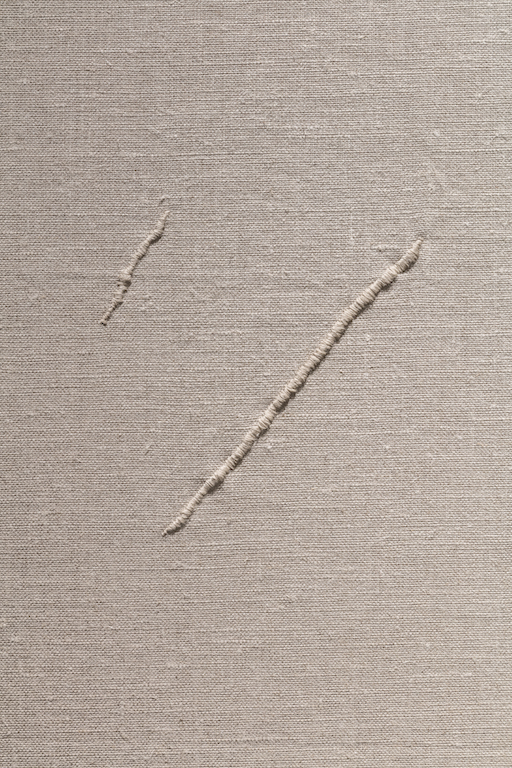
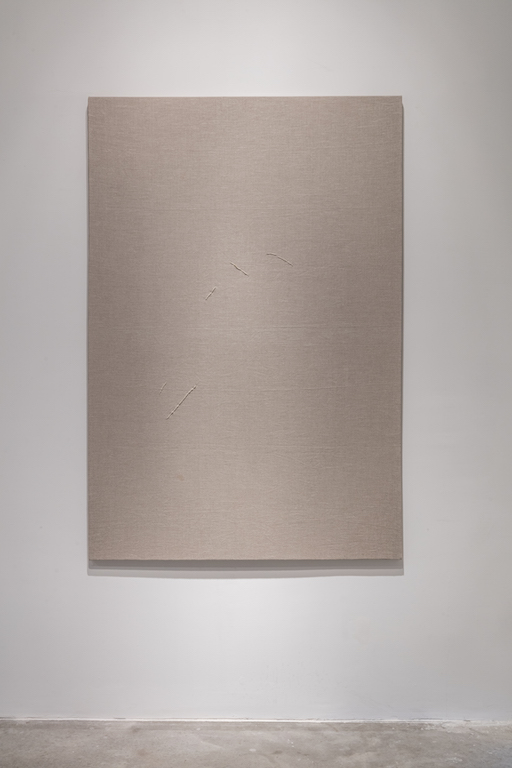
Stitched canvas, 200 x 165 cm.
Untitled, 2018

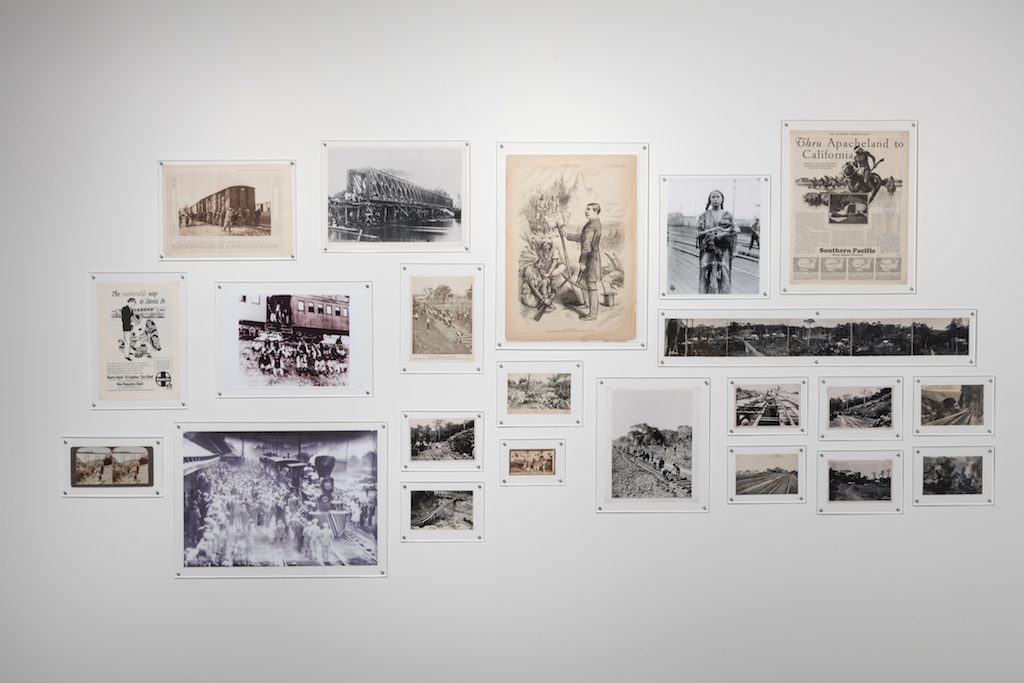
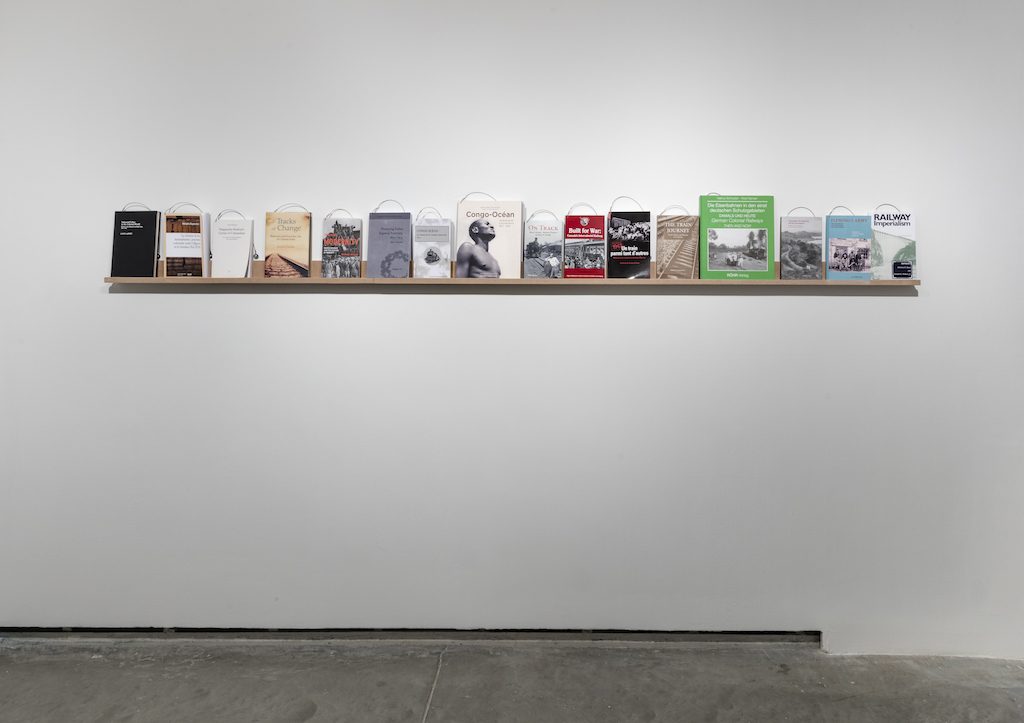
Antiquarian printed matter, 22 archival prints.
16 books, shelf.
The Body’s Legacies, Part 1: The Objects, 2018
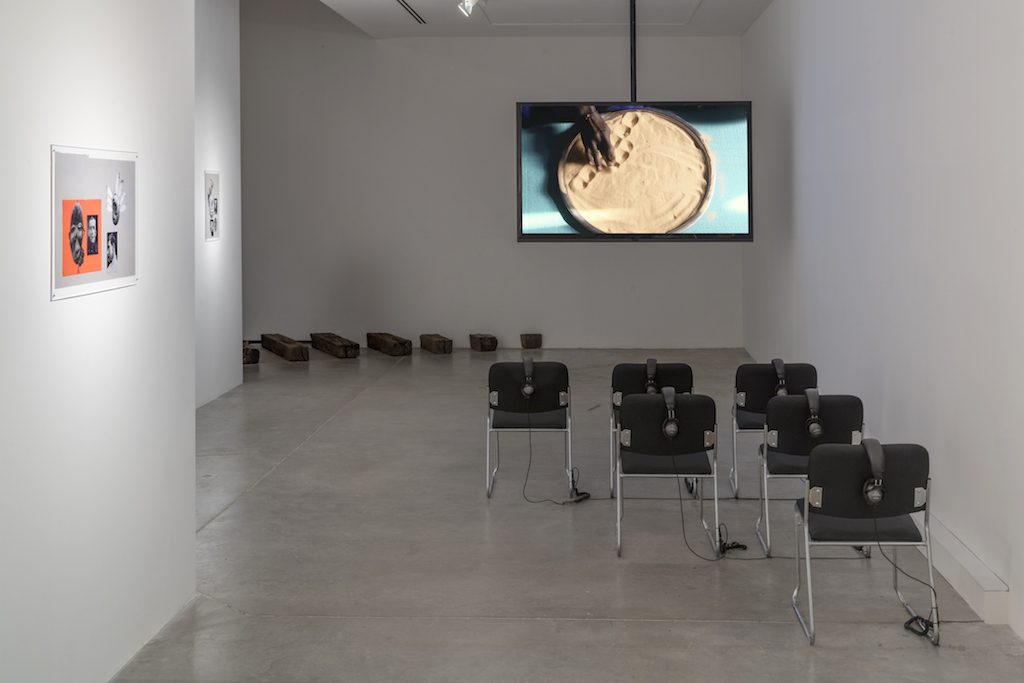
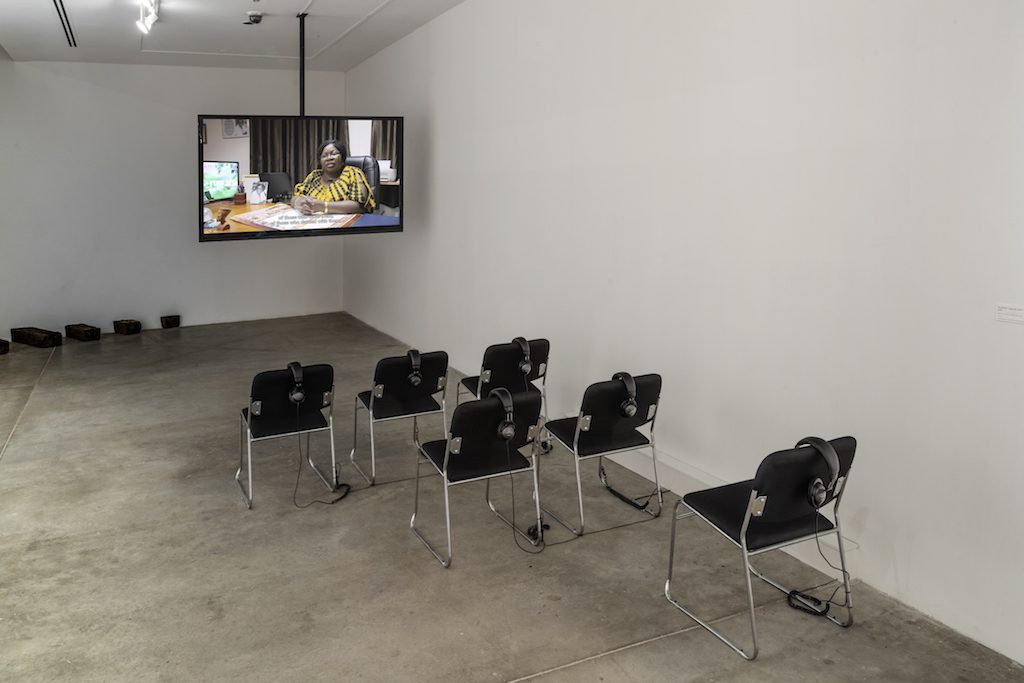
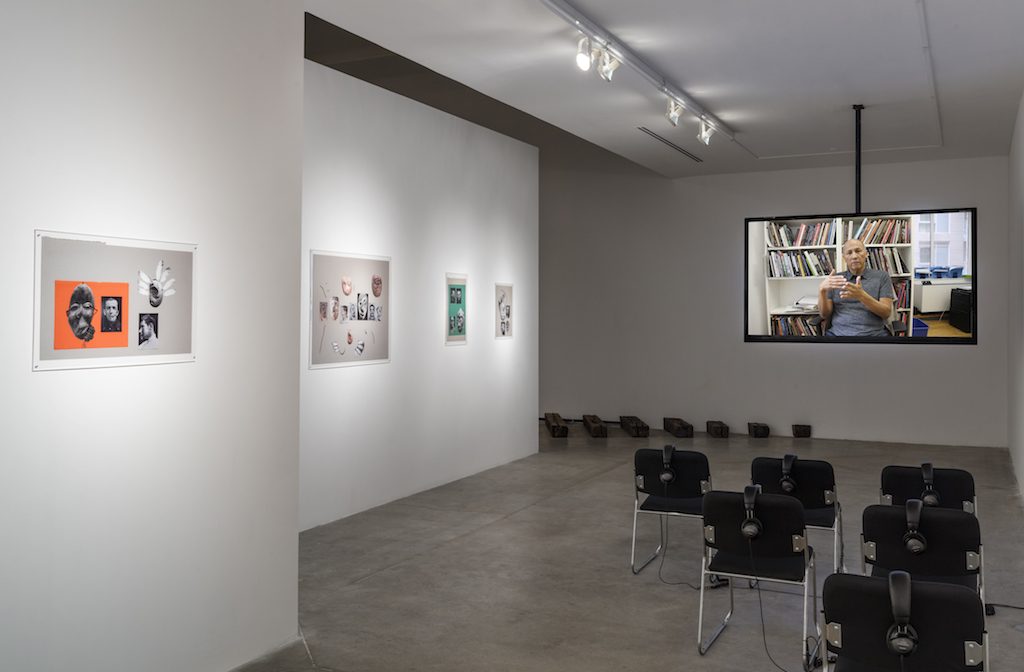
Single channel video projection, colour, sound; 57:11 min.
The Field of Emotion, 2018
Our contemporary world is haunted by wounds from the past.
Over centuries multiple inequalities have arisen—between rich and poor, between men and women, between races, between cultures. From the dawn of Humanity, one hundred billion humans have lived on the Earth. The trace of their existence remains in our psyche. But the traumas resulting from the worst moments in history such as wars, famines, and genocides have left lasting material and immaterial scars which, like a phantom limb of an amputated part of the body, are still there. They demand reparation.
The Tunisian psychoanalyst Fethi Benslama made this observation in the film Reflecting Memory, “In modern countries (…) in Europe or elsewhere in the world, (…) the streets are named after dead people. We travel through arteries of the dead. The world in which we live is a kind of psychological tomb where dead people live on as ghosts.”[1]
It’s this permanent proximity to the world of the dead that requires us to listen to their calls. Of what traces are the dead the name? What are these traces asking? Why are these mental phantoms not at peace?
The exploited of the capitalist mechanism applied to slavery to develop modernity. The humiliated and the dispossessed of all forms of occupations claimed through colonisation to bring progress after slavery whereas they were but a modified version of it. The victims of genocides, of fascism, from the Nazis to the Khmer Rouge, and all the deported and victims of communism’s famines—all have common denominators, namely to have undergone and succumbed to Western scientific modernity, and to have fashioned with their disappearance this call to Reparation. These common denominators interact, from extraordinary wounds to intimate wounds, from social groups to individuals.
It was by extending to the human psyche the body of my political research on the concept of reparation that I fathomed the importance of the immaterial character of wounds, and the silent cry that they emit between official History and the one lived endlessly in the secret of family and community stories. Mass traumas and injustices or those of simple individuals last far longer than the initial act; they are maintained by the dominant power’s stories while the mind imposes, troubles, and hides the necessity of their denunciation. This absolute, quasi-religious conception of science as a factor of modernity dominates the human psyche by the universalism of its conception of progress. This hegemony has led inevitably to the production of opposed reactions.
Already in his seventeenth seminar from 1970, Jacques Lacan cautioned us about the victory of science associated with a universal, global capitalism after the collapse of communism that he felt was near at hand.[2] For him the twenty-first century was to be one of belief in science and of global capitalism. But inevitably this universalisation of belief in science would produce contrary reactions: communitarianism, inward turning, individualism, radicalisation, fundamentalism, jihadism, and so forth.
As is pointed out by the majority of psychiatrists who have worked with radicalised subjects—that is candidates for suicide bombings whether in conjunction with a terrorist cell or as a lone wolf—nearly all of these individuals have passed through psychiatric services many times and/or through the prison system where they are radicalised. Of course it is customary to explain every Islamic attack by an action related to psychiatry or delinquency. However the mentors of radical Islam, from Al Qotob (…) to Al Zawahiri, the mentor of bin Laden, are far from being irrational subjects. On the contrary, they have constructed perfectly ordered discourses and strategies that recall those of officers in wartime and take inspiration from a specific history. Far from isolated, these leaders are at the head of immense networks, and the fascination that they exert on solitary fanatics through different media channels recalls the master as described by Jacques Lacan and before him Etienne de la Boétie in his essay on submission to the tyrant.[3] Their propaganda techniques manipulate lost souls living in poverty and emotional misery and who are turned inward while yet seeking to belong to a social group. But even though there is a great chasm that separates the brainy leaders of radical Islam from the small groups and lone wolves who decide to act at a precise time and place, there is a guiding thread that links them, namely the desire for reparation for the loss of the golden age of Islam. The call of the phantom Caliphate, the Muslim empire that ruled the world and the sciences for centuries, acts on the Muslim social body like a phantom limb of an amputated body. It is clear that the rise to power of Occidental France, England, and Spain signals the gradual end of the grandeur of the Caliphate.[4] It’s also clear that modernity in the Orient is achieved with canons not with the spirit of the Enlightenment. Indeed, reason will be violently refused by the ulema guardians of Islamic tradition who look with suspicion on the idea of “equality between all beings” claimed in one instance while elsewhere force is used to impose its will as Napoleon will do in his 1798 Egyptian campaign.
The phantom Caliphate is always calling ever louder within the Muslim psyche for the recovery of the Caliphate’s grandeur. It’s calling on the group and the individual, while the emotional, economic, and political inequalities of science and of neoliberalism daily make it grow across the world. One of the paradoxes of this quest is that it adheres to tradition and the past while also using all of today’s technological means (the Internet, cell phones, and so forth) to federate its attacks.
Modernity cultivates paradoxes. Indeed it’s modernity’s permanent Achilles heel. It preaches one path, but it never goes in a straight line.
While it praises the merits of equality that have come with progress, it deepens inequalities in order to progress. For example, take speed, one of the most celebrated technical criteria for progress. However, what roads and especially trains have brought to the world releases a succession of counter-reactions. As the Senegalese philosopher Sulemane Bachir Diagne has noted in my work his study Reason’s Oxymorons, the most striking and paradoxical action of modernity and colonization in Africa is that they have contributed to the Islamisation of inaccessible sub-Saharan African interiors that were still animist. This detail of modernity has gone totally unnoticed by European ethnologists who are more preoccupied by their desire to collect the remains of authenticity to elaborate their identitarian classification of peoples.
On the American continent the development of railroads led to the conquest and transformation of immense tracts of land, wounding forever the natural landscapes that had existed unchanged for millennia. All this while alienating with alcohol and poverty the peoples that had lived there for so long, humiliating them to the point of requiring them to live in open-air prisons—the reservations.
It is also fundamental to recall the role played by rails and trains in the deportation of millions of human beings from Stalin to Hitler, humans who have left lasting phantoms that call for reparation. If there is an element of scientific modernity and Western technology that ought to be held to account before humanity, it is transportation systems. From slave ships to locomotives, speed remains at the heart of our blind obsession with progress, at the peril of the life of millions of human beings who haunt our present, because their wounds are there—the past is there. One must only look at it straight on.
“Scars have the strange power to remind us that our past is real,” Cormac McCarthy tells us.[5]
Haunted by this idea, I have walked through the forest alongside the abandoned rails here in Germany. Alone with my camera I have tried to understand why and see how the wounds persist. From a landscape wounded in its entirety to the intimate traces it carries within itself, I have perceived the silent cries that inhabit it.
They appear in the abnormally hilly land, on the wood of deformed trees, and especially on the railroad ties where each crack, a gaping wound, makes one’s glance stop to wonder and calls for reparation.
The rail lines in Germany, Africa, Asia, and America all incarnate the wounds of a conquering modernity subjugating nature and culture. At once poetic and political, their identical alignment seems to annihilate all humanity, and yet each piece of wood, like each human being, ages in its own way—from one railroad tie to another, the wounds of time are always different.
I undertook to repair these wounds by pursuing what my research into reparation taught me was fundamental—that reparation is an oxymoron that also includes the wound: to deny it is to maintain it.
Whereas ancient societies from Africa to Japan repair while leaving the wound still visible (with kitsugi, for example, which consists in painting in gold the repaired crack in a ceramic object), the modern West applied to the letter the etymology of the word (from the Latin reparare which means “bringing back to the original state”) by totally erasing the wound and claiming to return to the original state of the wounded thing. Keeping the wood’s wounds visible, by repairing them with metal staples that allow the wound to look at you is to accept the real. What Western modernity denies by forever erasing the wound is the history and therefore time. These cracks, wounds deep in the aging wood, are testimony to its history, as tragic as it is, and define it as such in our correlative relation. To suppress or replace them with concrete railroad ties in order to go even faster produces the opposite effect: the stagnation of a certitude.
A society’s certitude is amnesia that pulls it sooner or later toward the repetition of its mistakes. The title of the installation, “J’accuse!” revives not only the headline of Emile Zola’s article publicly engaging him in the defence of Captain Dreyfus who was condemned for spying because of an overlay of anti-Semitism, but also the film by Abel Gance who after World War I decides to make an immense pacifist work that will describe the disasters of war. When in 1918 Gance decides to film actual broken faces to make visible the horror of war and terrify crowds to dissuade them from repeating the unimaginable, all the soldiers he invites to take part refuse. So he’s forced to make the film with actors wearing make-up. Almost two decades later at the time of the rise of Nazism, Gance decides to reconnect with the broken faces to show to the world what war produces in a scene where a character calls to the dead of the Great War from every nation so that they return and dissuade man from starting all over again.[6]
With my assistants in Dakar who are descended from Senegalese colonial infantry, the Tirailleurs Sénégalais, I sculpted into hundred-year-old trees the broken faces I found in hospital archives in France and Germany. To play the phantoms of the war of 1914-1918 as the film of Abel Gance is projected on a screen in front of them, I constructed the silhouette of a marching column of broken faces frozen in time and space staring at those who file past.
The work of art plays a crucial role in the reparation process. Besides the fact that it constitutes itself a reparation, it also questions a political horizon touching all the categories of society. It is always discussed, even hated, but never meaningless. Why? Because it incarnates the field of emotion! It is both a projection and a necessary mirror of society that seeks to exorcise its evil in order to find inner peace—“to purify oneself,” said Aristotle, and thus to restore peace in the community. He called that catharsis.[7] I call it the field of emotion.
Works of art—written, painted, or performed—are mirrors, for better or worse, of histories past, present, and future.
The History of thinking on power, the inheritor of slavery, of colonisation, and of genocides, writes tirelessly a hegemonic, universalist story, and denies by its certitude that of the phantoms of wounds that it generated, and which ceaselessly grow, despite the distance in time from the trauma. Like a phantom limb, these wounds are there and the works are a means to recall the necessity of their reparation even when they are irreparable.
[1] Kader Attia, Reflecting Memory, 2016, single channel HD vidéo projection, colour, sound, here : 13’:45”– 14’:13”.
[2] Jacques Lacan, Le Séminaire Livre XVII, L’envers de la psychanalyse (Paris: Seuil, 1991).
[3] Discours de la servitude volontaire ou le Contr’un [1576, Discourse on Voluntary Servitude, or the Against-One] (Paris: Flammarion, 1993).
[4] This becomes very clear from the simultaneity of the Reconquista and the Exploration of America under the flag of the kingdoms of Portugal and Spain. The first phase of the Reconquista in the 11th century coincides with the end of the Caliphate of Cordoba in 1031 after Berber uprisings, which was a precondition for Alfonso VI’s conquest of Toledo in 1085. The Reconquista finally culminated in the fall of the Islamic State of Granada and the triumph of the Catholic Kings: Muhammad XII’s surrender took place on January 2, 1492—the very year that is generally identified with Columbus’s discovery of America and the beginning of the Spanish and Portugese expansion on the South American continent.
[5] Cormac McCarthy, All The Pretty Horses (New York: Vintage Books, 1993), 135.
[6] Abel Gance, J’accuse, Pathé Frères/United Artists, 1919 ; Abel Gance, J’accuse, Forrester-Parents-Productions, 1938.
[7] Aristotle, Peri Poietikis / Poetics, chapter 6.
Untitled, 2017


Cardboard.
Untitled (Repaired broken mirror), 2013
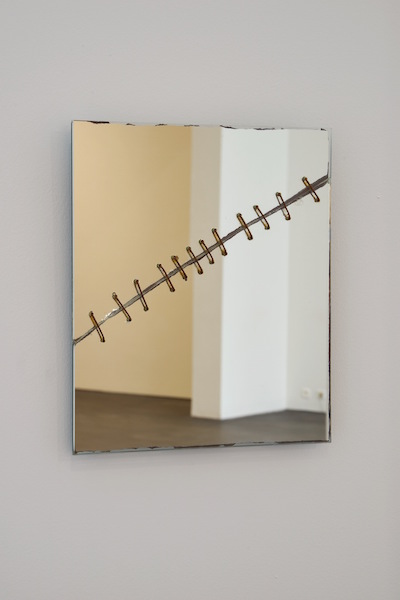
Mirror, staples.
Untitled, 2017

2 leg prostheses, chair.
Untitled, 2017




Bread, salt.
Narrative Vibrations, 2017
Human voice is immaterial and leaves no trace.
Perceiving its origin then seems impossible.
And yet the impalpable wind leaves its signature
on the mountains’ side.
(Jean Abitbol, «Odyssey of the Voice»)
From politics and science to myths and beliefs, the art of Kader Attia is questioning a variety of fields. While avoiding getting lost in the production of blind certainties, Attia’s ongoing research of „Repair“ causes to conclude, that determinism, even in the appearance of the most unpredictable automatism, has always been the secret of existence.
While humans believe they invent, they are endlessly discovering what has existed within the universe forever, through space and time. Sound is space and thus sculptural. It belongs to an order of things that has existed before and will exist beyond humanity.
As Prof. Jean Abitbol, the famous French Ear, Nose & Throat specialist and speech pathologist wrote in ‘Odyssey of Voice’: «Long before mankind, long before voice, there was the Big Bang that took the universe out of its silence.»
‘Narrative Vibrations’ is a journey between the form and the meaning of sound, from acoustic sciences to the emotion of poetry, translating the voice and its core social position in the Arab culture into material images and sculptures.
Attia drew inspiration from one of the fathers of acoustics, the German composer and physicist Ernst Chladni (1756-1827).
Based on Chladni’s discoveries, Attia artistically investigates the social power of the voice in Arab cultures: from transgender people, who try to change their voices, to the iconic singers. The voice’s political stake is at the center of this corpus of work, as much as political means to live together in the same society with our differences.
Attia’s initiatory journey leads the visitor through two corridors. In the first one, a wall is punctuated by the wide bibliography that has fuelled this work, collages, drawings and album covers, from the sciences of acoustic to the art of singing, as well as two filmed interviews with ethno-musicologists and an Arab-Andalusian music expert. The second corridor shows a condensed summary of the artist’s in-depth research on the visual and sculptural materialization of sound through the fundamental question of its meaning: the voice produces meaning through prosody. Beyond being just a natural music organ, it also transmits emotions with words.
The two corridors give access to a black room in the center. Here couscous semolina, placed on circular trays, connected to soundtracks of films or concert recordings from Arab postcolonial golden age divas (the ones Attia grew up listening to), is moved by electromagnetic waves provoked by songs and music, drawing natural and universal forms. These sound sculptures visualize the great discovery Ernst Chladni made in the eighteenth century: that some frequencies produce patterns that also exist in Nature, from the vegetal to the animal.
While the voices are discordant, high or deep, they nevertheless show an evident unity, revealing the agency of nature before and beyond human being.
The singers featured in the audio/video installation are:
– Meriem Fekkai
– Simone Tamar
– Noura
– Oum Kalthoum
– Asmahan El Atrach
– Warda Djazaria
– Reinette l’Oranaise
– Sabah
– Parisa
Narrative Vibrations, 2017
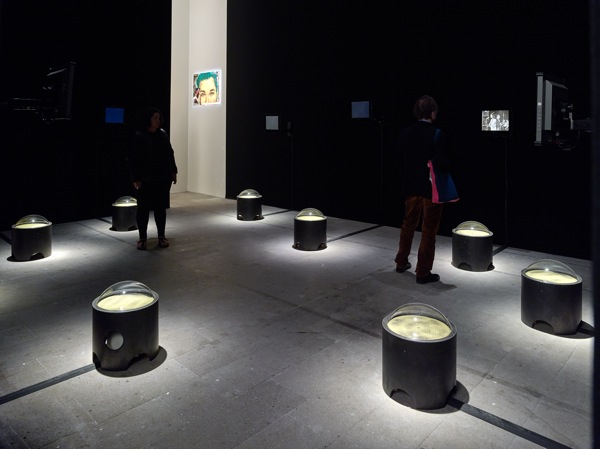
© Simon Vogel
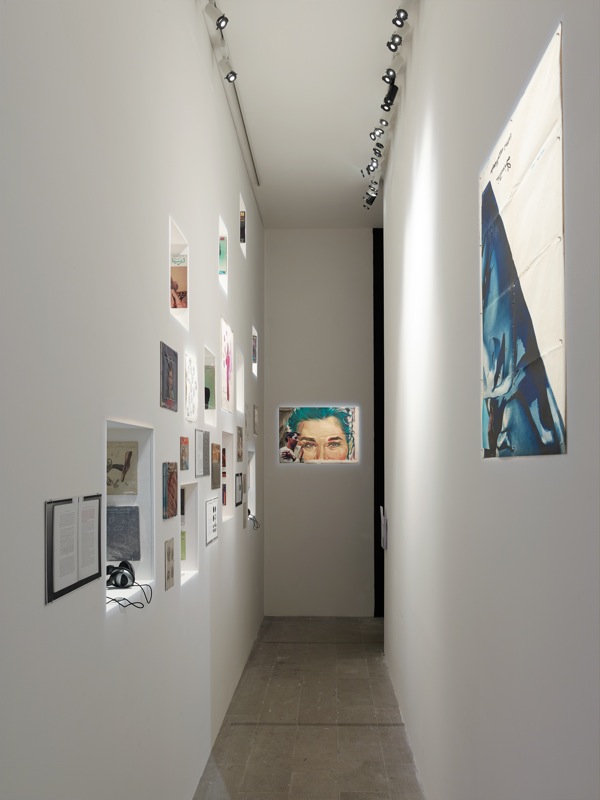
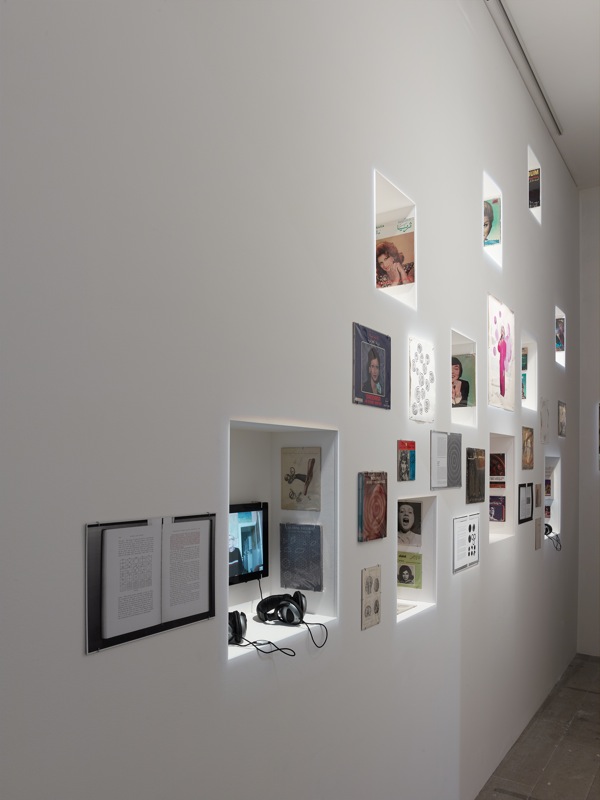
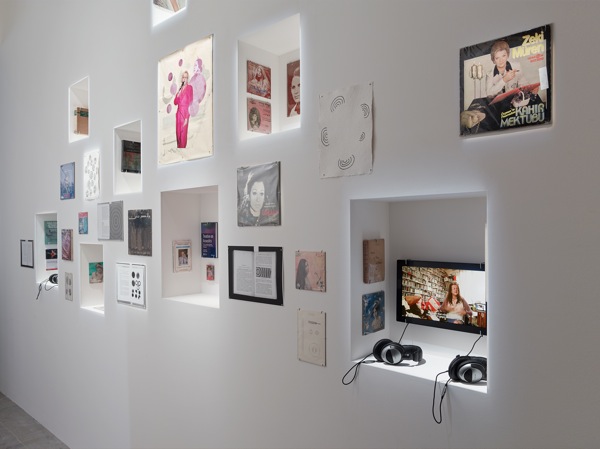
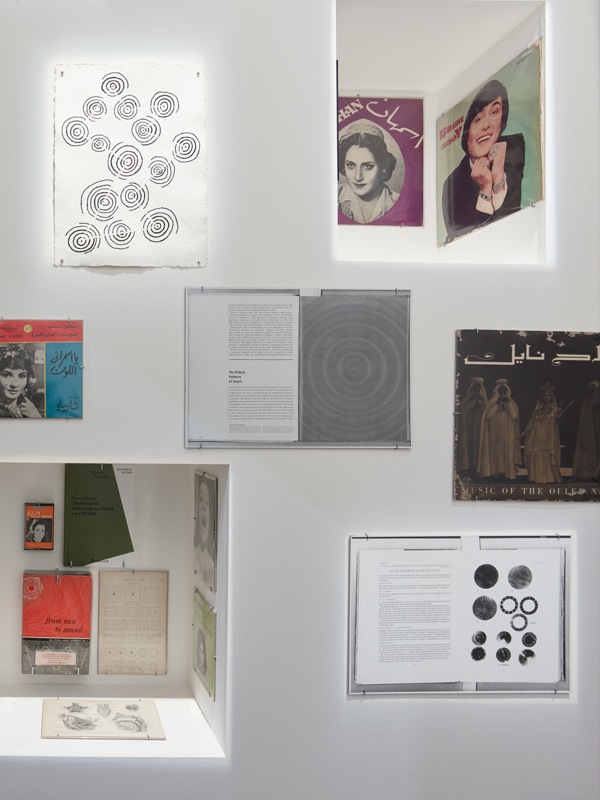

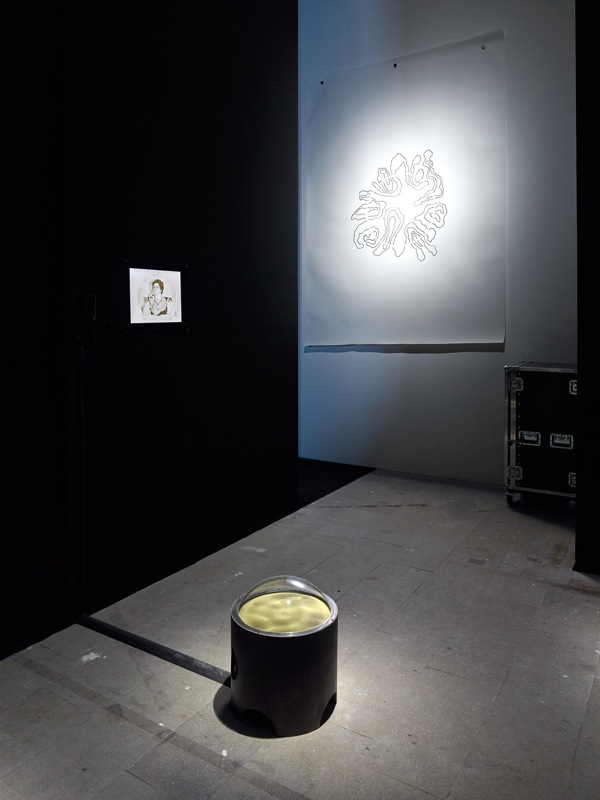

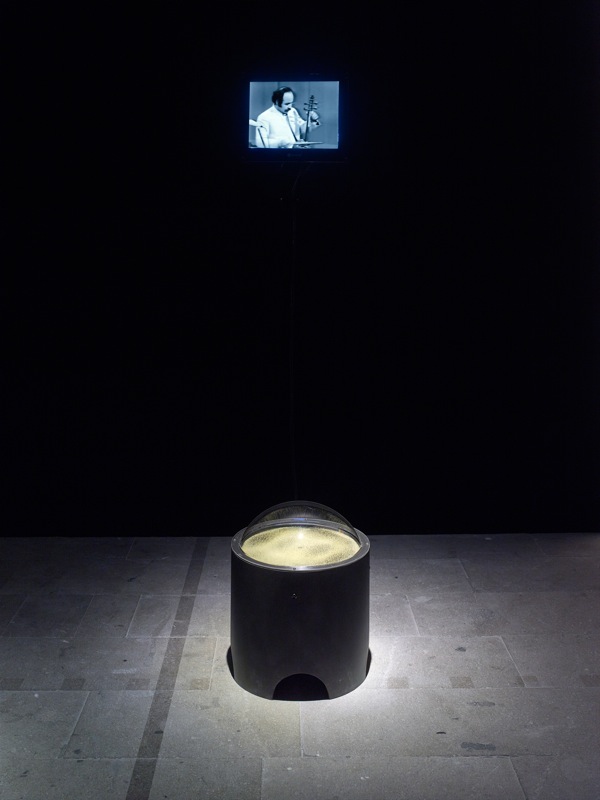
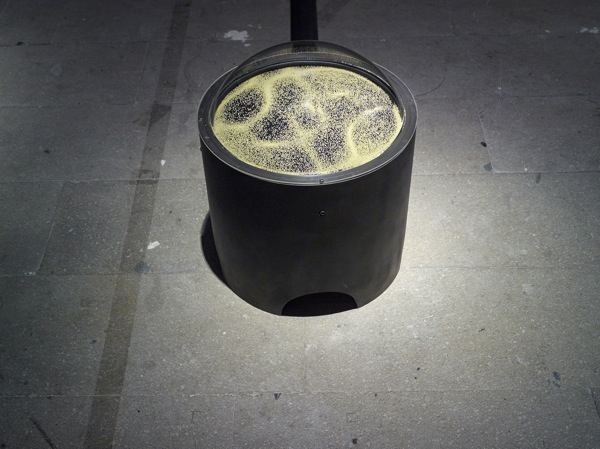
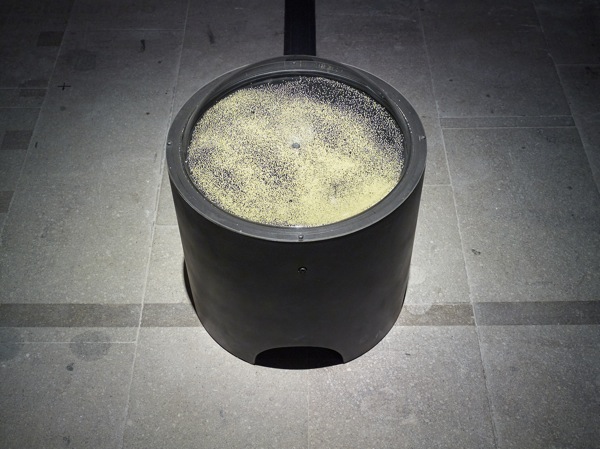
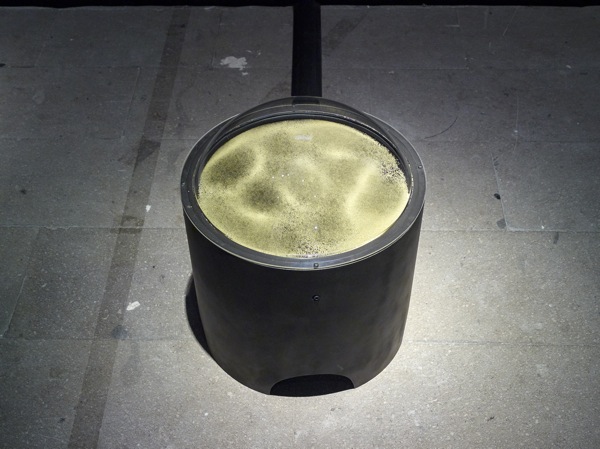

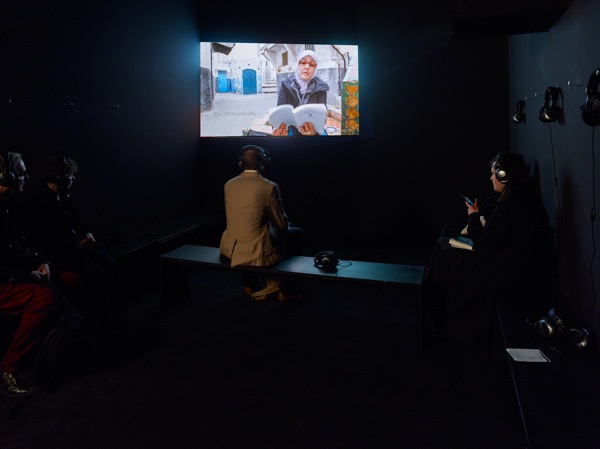
Mixed media installation, 57th Biennale di Venezia
Work On Memory, 2017
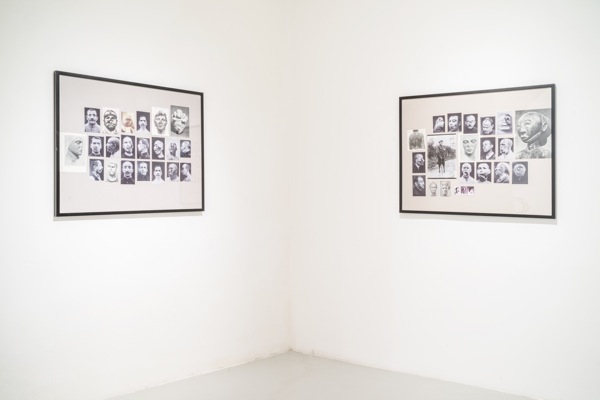
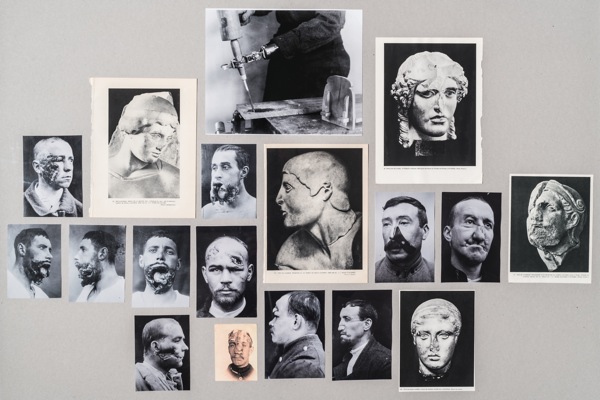
Series of collages
Self-Destruction, 2017
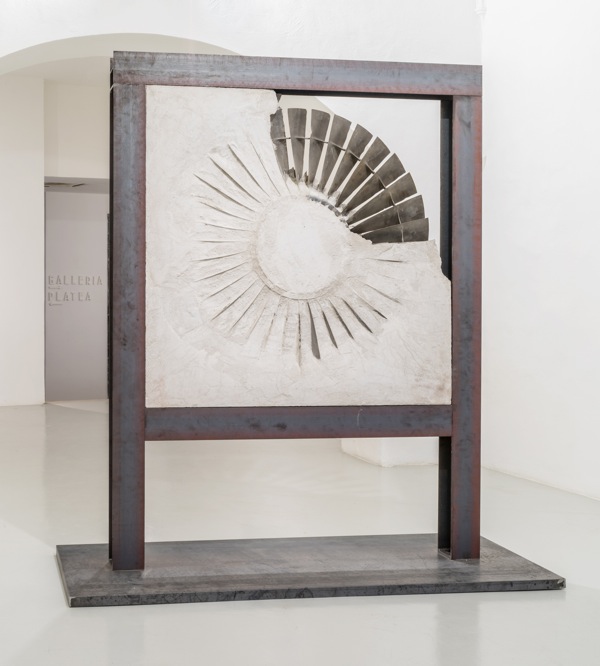
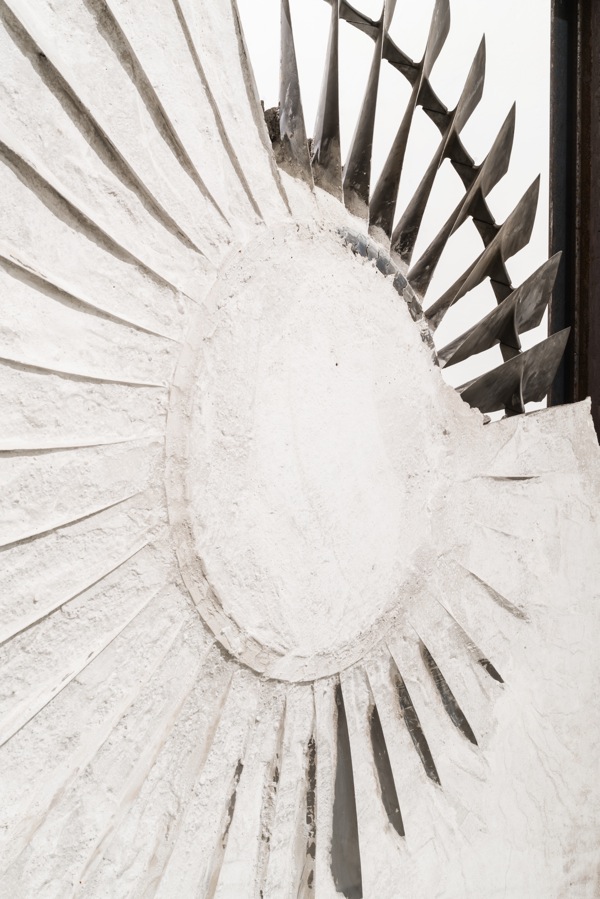
Iron, propeller, concrete
Sombre Joie, 2017
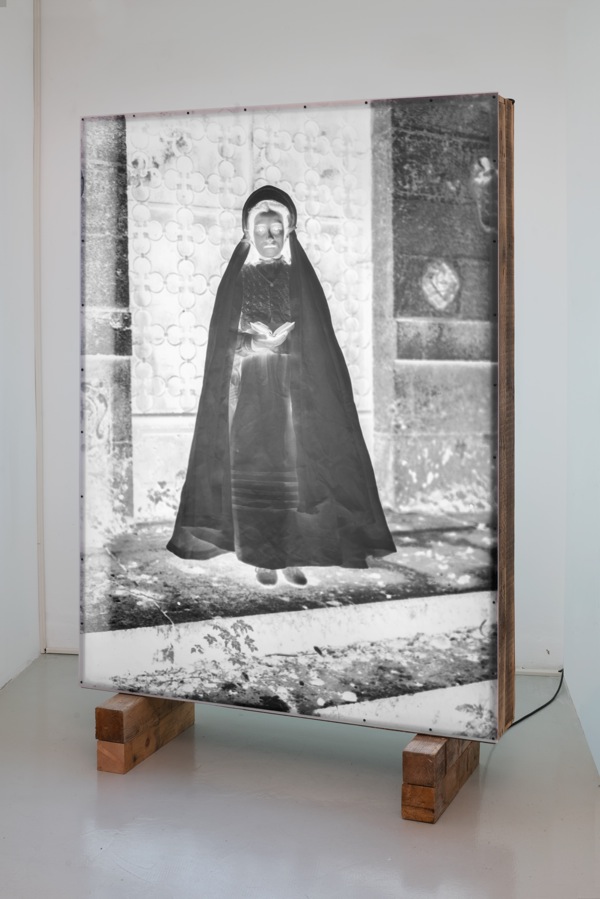
Light box
Traces of Infinity, 2017
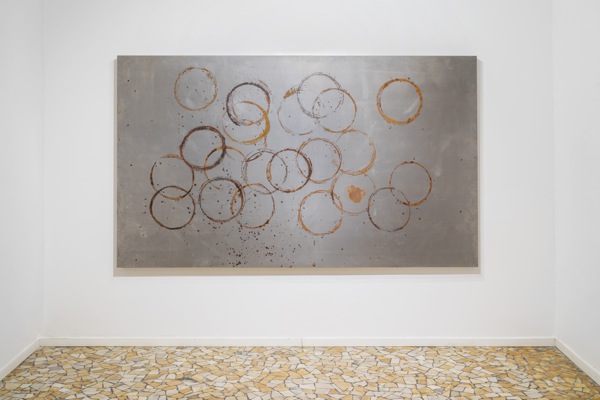
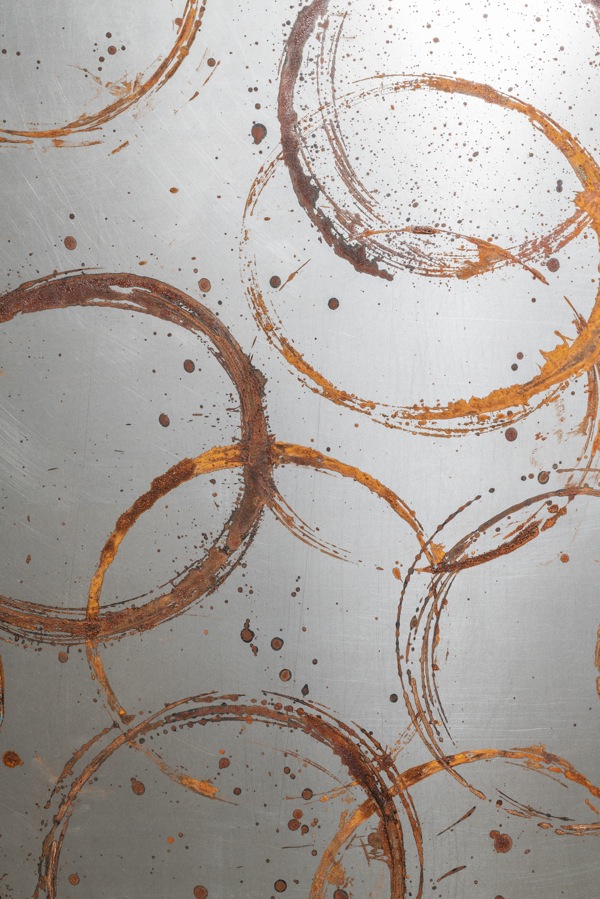
Steel plate, rust
Inséperables, 2017
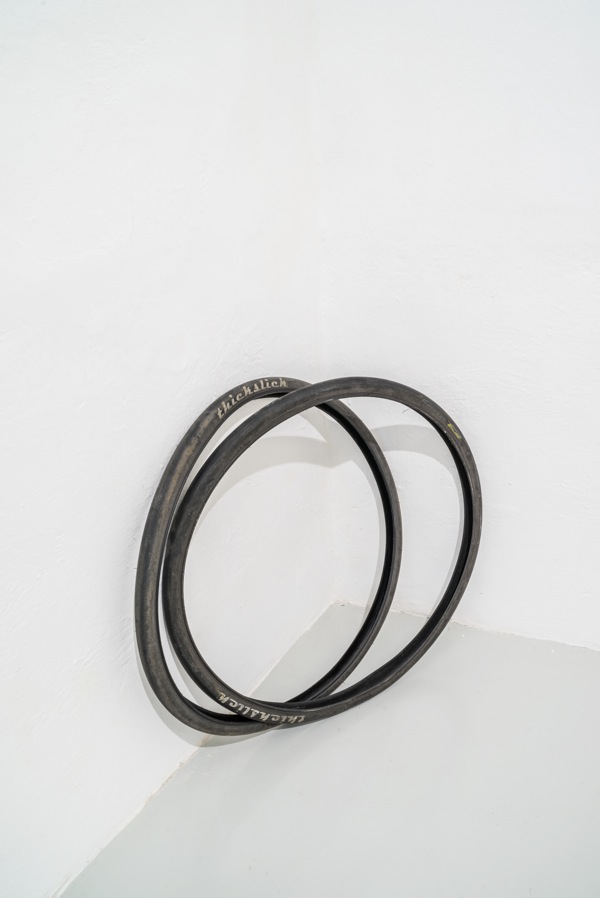
Bicycle tyres
Untitled, 2017
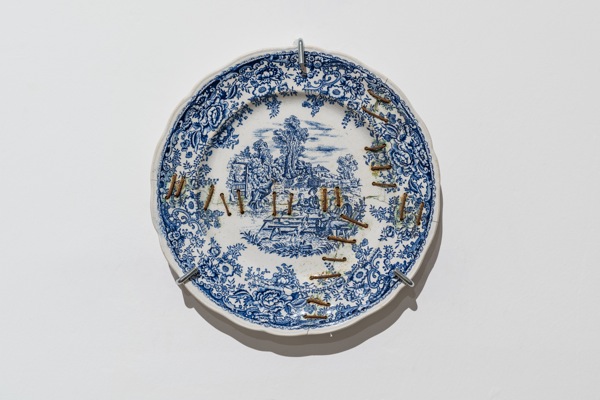
Ceramic plate, metal wire
Untitled, 2017
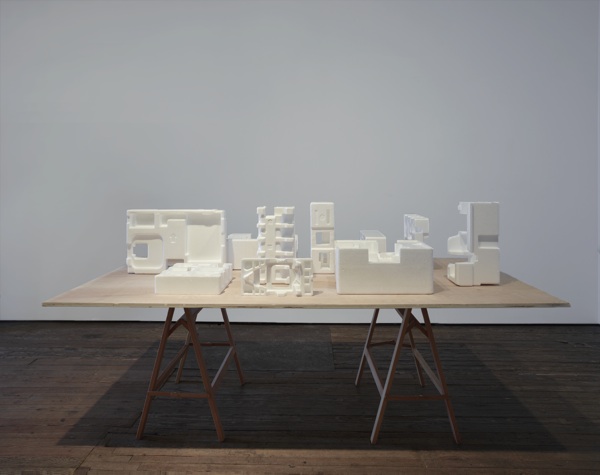
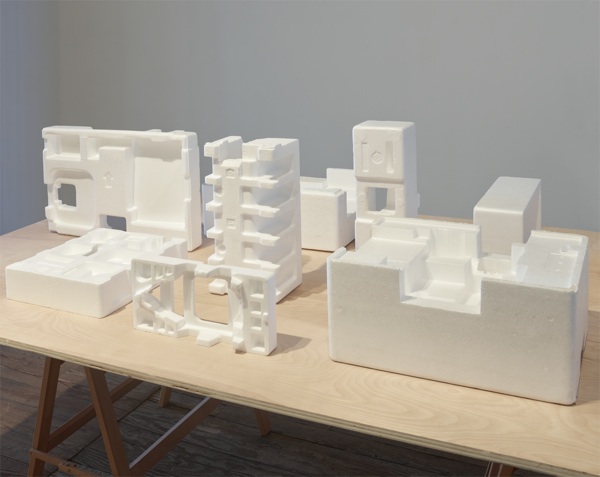
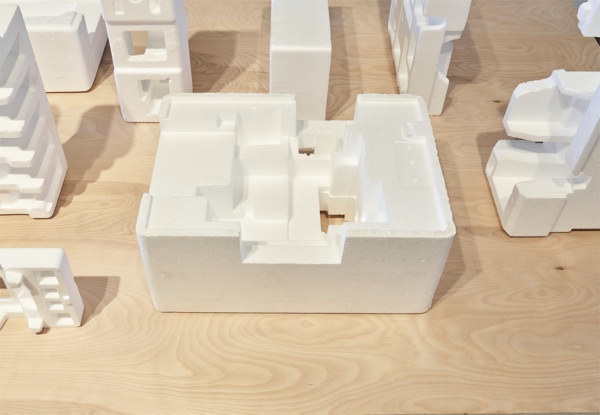
© Max Yawney
Styrofoam, wooden table
Reflecting Memory, 2016
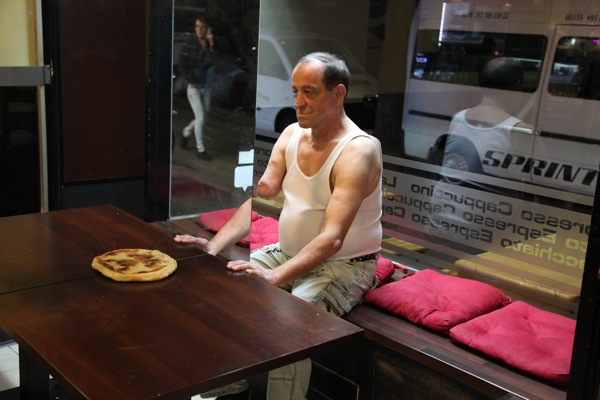
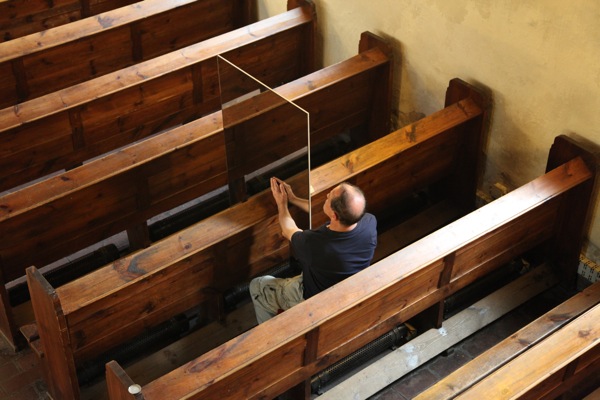
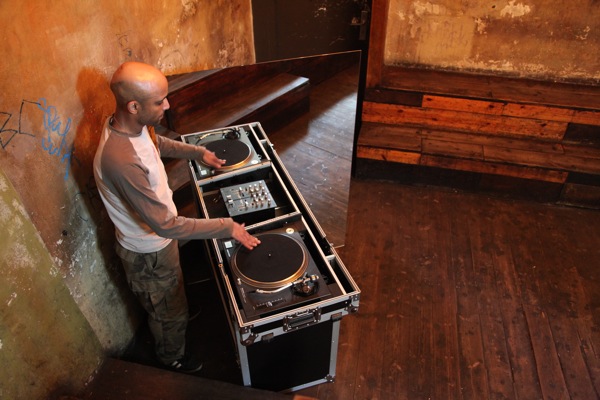
Video, HD, colour, sound, 45:56 min.
Entropy, 2016


Stainless telescopic arm for screens, ancient wood art object from Central Africa (Ngbaka ethnic group)
Untitled, 2016
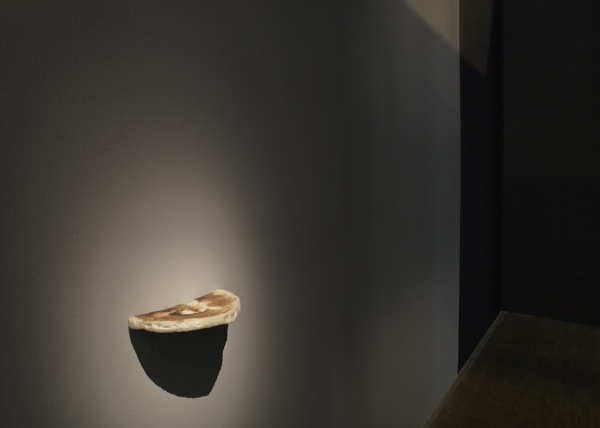
Algerian Matlouh bread
Counter Knowledges and Permissions. Irit Rogoff in conversation with Kader Attia, 2016
To contextualise this conversation for our readers, it took place in the wake of a presentation by Kader Attia entitled ‘The Abolition of Distances’ at Goldsmiths Department of Visual Cultures in London in January 2016. The discussion we had the next day picked up some of the themes of the talk regarding cultural perspectives that sustain the production and circulation of certain kinds of images of the non-West. We also focused on the ability of such images to aid the production of fear, one of the greatest forces sustaining the current security-obsessed state. But the conversation was aimed not just at the images circulating us but also their reading strategies and the other opportunities artists and thinkers have in order to question and subvert the smooth flow of over-determined knowledges. We began our conversation by insisting that knowledge could no longer operate as a set of discrete and framed forms of expertise divorced from their political conditions – this in the hope that its active potential might be let loose.
Irit Rogoff (IR)
Kader Attia (KA)
KA: I think specialisation is certainty. Not always, but the risk of specialisation is certainty. I’m sure you’ve experienced this with fellow academics. For instance, when I was giving lectures and doing research at Quai Branly, most of the anthropologists, specialists in this or that ethnic group, gave a formal description of the way repair was done instead of allowing a critical distance to evolve between the viewer, themselves and the object. They constantly disagreed amongst themselves because scholars are scientists, and scientists produce truth (or seek truths). Any mathematical equation is about the accumulation of a succession of truths that leads to one truth (the conclusion). But the artist has this amazing possibility to think by creating ellipses, and with this I mean unexpected correlations. Sometimes it fails and sometimes it’s magical, but it opens incredible pathways for knowledge. So, I do care about that, and I think that when you mentioned that some colleagues found the lecture reminded them of …
IR: The Sir John Soane Museum.
KA: For me, it’s a compliment. The Soane is a place full of unexpected correlations initially created by an individual mind, Sir John Soane …
IR: I too see it as a compliment that the presentation of your work seemed to have a similar ethos to the John Soane Museum with its jumble of seemingly unconnected objects. The lack of connection has to do with the objects not having a historical, national, regional, cultural or genre-based coherence and with the fact that original objects and facsimiles are combined without distinction. I think that what worries people about such assembled presentations that don’t adhere to a single logic is that they are not sure how or where they might locate the criticality of the discourse being presented. I think really one of the questions that we should talk about is, how can one, on the one hand, not limit knowledge to tiny little specialisations that cannot address the big and urgent questions, and, on the other hand, how working with a whole set of general knowledges can maintain the power for political struggle. Because that’s not so obvious since most political struggles are quite specific.
For myself, I’m not frightened by generalisations because I think that the most important thing for us is to know how to think the large and important questions and that generalisations can aid the ability to think big. But, for many, I think, of your listeners, the translation between the big questions and, by contrast, how to have real effective political power in the work that one does, on an everyday basis, creates a missing link, and it would be interesting for us to maybe think about the missing link. In essence what I am invoking is the thorny old set of questions we never seem to be able to escape, between the dual need to see the big picture and the imperative to be specific, close to the lived conditions of the day.
KA: I think that when you question this missing link, you’re already giving an answer because when you polarise on one side the big image and on the other the little mechanisms of specialisation, you are in fact addressing this link. Because something is always present: both in theory and in practice nothing doesn’t exist.
Actually this missing link isn’t absent at all; on the contrary, it’s essential between the sides. It’s the fundamental fold that links and divides the two sides you speak of … but of course, it has to be exposed, made visible and audible so that we can question it. Without it, the thought process would rely only on the big image or only on the little mechanisms. This would lack distance and fall once again into an impasse … (the dead-end of certainty).
IR: I also want to ask you about permission, which is the subject of our lecture series this term, about where you get your sense of permission. By this I mean the permission that you have to work in a different way, to start from elsewhere and mix materials that are of different histories and cultures? It seems an important question to ask within a body of work that is closely linked to postcolonial criticism. Because while postcolonial theory is crucially important as a critical body of thought, it is also often quite ethically rigid: there are rights and wrongs, offences and violations, and it’s quite difficult to mix things up.
I am very interested in the question of permission because I think we struggle for it rather than simply receive it. It took me many years to get a sense of permission in my own work because I was trained as an academic and there were certain understandings about how you legitimately went about producing knowledge, so I’m interested in that as part of your own artistic process. The lecture series that you opened last night, ‘Permissions: The Way We Work Now’, is dedicated to examining the different kinds of permissions that accompany decolonisation or gender emancipation or being critical of neo-liberal hegemonies. It assumes that operating from a position of being politically critical requires another form of working, a new methodology.
KA: I think there’s a crucial point here. In my practice, permission is an issue because, as you said quite eloquently, I address colonial matters, both directly and indirectly, dealing with instances of dispossession and reappropriation (I made work that looked at the dispossessing of traditional objects and questioned the role that the Christian missionaries and the Vatican played in this pillage). Yet colonial issues don’t only concern colonisation. They lead up to or are the continuation of other calamities, such as slavery, neo-liberalism, fascism, the hegemony of Western Modernity … the monopoly of suffering isn’t owned by colonisation or slavery. The domination of man over man is made up of endless and complex ramifications that continuously spread …
Within this sad state of things, the permission for another methodology in the creative process presented itself quite naturally in my work. In a way, it relies on permission as an act that becomes radical because it seeks freedom – freedom of thought. Colonisation of knowledge is one of the most ambivalent consequences of Modernity, and to extract oneself from it can be part of a radical choice that demands transgression of what would or wouldn’t be permitted, to find in fact the missing link between things that were separated or that will arise from an unexpected assemblage.
Then I think there are two things. Probably it sounds obvious to me because I’m on the other side of the lecture – and it’s not that obvious for the audience – but I have to say that I do not pretend to provide theoretical dogmas because I’m frightened of certainty. It can’t last that long in a world that is constantly changing. That’s why I appreciate the fact that you referred to the methodology of how to proceed rather than what we are looking for.
Yesterday’s lecture presents my interest in dismantling the entire frame and canvas that we’ve been forced to think and from which we need to define another way of understanding, another distance, I would say. This, I think, is very difficult, and the reason why I don’t want to propose a very clear political impact of the ideal I’m drawing out is that I’m not sure of it. I’m just proposing. And the lecture, as it was, is a proposal. It suggests another methodology – how we have to deal with this extreme and escalating violence through mass media today, as this is not about to end; how we have to rethink and reinvent the entire dialogue these productions tie us to; how we have to probably reformulate or reinvent the scale of mass media which we’ve committed to, because I think it’s all about scale. I talk about how there is a cultural scale in which we are, at some point, imprisoned.
We were talking about nature after a while, the story of the birds and the way they mimic intrusions in their environment and that, maybe, we can reflect at a different scale through nature’s agency, for instance. I’m thinking about an alternative methodology we could maybe find by looking at nature. All the political failures of mankind have an echo or an interdependent relationship with nature … That’s why the extinction of species today is the mother of all crises.
IR: Extinction of spaces?
AK: I was talking about ‘species’ rather than spaces. What we call ‘the age of Anthropocene’. The crisis of global warming, the disappearance of these ‘species’. This is, for me, the mother of all crises – economic, environmental, affecting relations between groups and individuals etc. …
IR: So this is what we were talking about last night, questions of how to shift to a planetary scale?
KA: At the same time, the abolition of ‘spaces’ is at the core of my lecture because it has been a crucial accelerating point these past fifteen years in world history. After being Modern and ‘specialists’, the Western world has woken up to a global world – global warming, global economy, global fear … But not one nation (or what remains of this so-called great narrative) has been able to fit into this new global infrastructure. What has been built during fifty years as the first largest community of different countries is collapsing. All European countries are building fences and closing their borders to protect themselves from refugees: it is a total paradox.
But again, I totally understand why some people can have difficulties in understanding the impact of the political aspect of my work, but it’s not my aim. I think it’s much more difficult because the current political situation changes every day. The political situation worldwide is becoming incomprehensible … I think of it as the metaphor of Sisyphus: at the end of the day, all we try to do is raise something above us but unfortunately it keeps going back towards the ground.
IR: While I totally agree with your analysis, I don’t think that you are in charge of global political solutions. I think, for me personally, as a thinker, the real importance of contemporary art is learning other ways of thinking something, finding other entry points into a problematic, not solutions for it.
KA: Exactly. I agree.
IR: I’m interested in the way in which art can point me to other ways of thinking very urgent issues and different points of entry and different knowledges, but also a whole set of permissions, for example. That’s one of the things that really interest me about the way you work vis-à-vis knowledge, giving yourself permission to start in the middle. Scholars, unlike artists, will always try to start at the beginning, whereas artists have the permission to start in the middle. I think starting in the middle is a very interesting strategy. You may have intuitively desired to start at the beginning, but it’s not a classically scholarly desire, so I’m very fascinated by this.
KA: Artists certainly allow themselves to think of knowledge differently than scientists do, even if Nobel Prize recipients, such as Serge Haroche, often say that to become a great scientist it requires imagination (next to observation and intuition). I ultimately think that this is the reason why art exists. To not only use elliptical thinking and to never cease to expose this but also to allow oneself to consider knowledge not as a part of the unavoidable order of things, that comes and goes between the signified and the signifier, but also as something that is out of control, unknown, that cannot be categorised, something unexpected … And this something that resides (as long as it isn’t used) in non-knowledge requires an open methodology in order to allow such freedom of access. This freedom of non-knowledge is perhaps a necessary mirror to the certainty that science blindly advocates … Artists are here to maintain this essential imbalance. I don’t know if artists begin by thinking of knowledge ‘from its middle’, as you say; I mainly think that they have always been moved by an agency that links social reality to the virtual (from traditional societies until now), and that this embodies the ‘middle’ you’re speaking of – this missing link between societies and beliefs …
What I’m trying to do with this lecture, ‘The Abolition of Distances’ – especially in the conclusion when I say that it’s not easy – is to illustrate how much we have been enclosed by the dialectic of the signifier and the signified. I speak of the Inca civilisation and of the Aztec in the way Serge Gruzinski explained them to me. He was working during many years on the Aztec calendar, on several Aztec codexes, and he discovered that the representations – the drawings – of what we see as depictions of a piece of corn are actually a representation of human flesh. When the piece of corn is very close to the calendar date of sacrifice or ritual, it means human flesh. And when the piece of corn is represented far from human sacrifice, it’s simply corn. The thing is, if you don’t know this, as a Western European academic you simply see a piece of corn. It took him more than ten years to understand this crucial detail … The fact that the representation of corn and human flesh is the same thing goes beyond any mode of Modern Western thinking. And this is what we don’t or can’t understand, because we analyse everything, even if in a correlative way. Everything passes through a signifier and signified process; there is constantly something that is referred to. Yet, in traditional societies, as for example the Inca, when something is represented, it is the thing. If we talk about the dispossessed traditional objects that are now disseminated in the Western world of ethnology, it’s the same thing. They are the spirits they represent.
And, what’s extremely complex for an art historian today is that when you are in front of this image, it doesn’t just represent one thing. It not only embodies human flesh or corn or the mountain or the butterfly or the fish, but it is supposed to be the thing! And for us – because I was asking him (it was a very interesting interview) about psychoanalysis and consciousness – what if we do an analysis and dig into the subconscious of traditional societies and ancient civilisations through their sculptures and what they left on paper? Well, he said, this is extremely complex because obviously they have a subconscious, that’s clear, but all referents …
So, what I found fascinating in the interview we had last time on Skype is that, like you, I care about the fact that, at the end of the day, the world we’re living in today allows us to criticise the system, to struggle against the system, against neo-liberalism, against neo-capitalism – we can critique. The real question is not the critique but how we critique. And I found that one of – I mean, as far as I’m concerned, and as an artist – one of the most interesting methods that I would like to develop through lectures, artworks, discussions, teachings, dialogues is to dig into this non-knowledge thing. Because it is an alternative to knowledge. Do you know what I mean?
IR: I do know what you mean, and I think I’m really sympathetic to it, but one of the questions – and it’s not a question to you, it’s a question to all of us, however we work, if we work for the same urgencies – is how we set up the problematic. For example, yesterday’s lecture was really a genealogy of the constitution of fear, over many, many layers, which then plays into a contemporary politics around global extremism and so-called terrorism. In this scenario one of the things you were unpacking – only one – was the fact that this does have a whole set of historical antecedents that makes the fear more powerful. It builds a layer of nineteenth-century fears and twentieth-century fears and twenty-first-century fears and so on. Each layer of fear building on a series of previous alarmist and prejudiced images. I too am interested in the politics of fear and in the systematic foregrounding of ‘the terroristic’ as a mechanism of surprising alarm. Except in my case, I’m interested in the spatial politics of instability, which is what I think of now as politics of fear. So, if, in an old mode, we may have been able to fortify the border, we could make the border stable by fortifying it so no one could get in and no one could get out, now the spatial politics of fear have changed dramatically. At a time when everything is exploding – cars, buildings, aeroplanes, suicide bombers etc. – fortified borders are meaningless. As a result there is a spatial instability since we are not able to isolate and fortify space. Space is vulnerable. And I think that’s another aspect of the politics of fear, especially since 9/11. An aeroplane becoming a bomb, crashing into a building was a kind of spatial understanding we never had before. And probably in the same way that at the beginning of the twentieth century aerial bombing was a completely new sensibility that totally rewrote the notion of space for people and produced a new vulnerability about was coming from above, from the sky.
KA: I found very interesting the way you politicise space … because you are spatialising the crucial issue of living together and the difficulties that arise from this. I’m thinking of migration and how it has become a so-called crisis (mass media uses this terminology constantly, but migration is a norm in nature and culture evolution). People have always migrated to survive, just like birds … America was built on this myth at the cost of the First Nations who were living there before. Anyway, I think it relevant to map the vulnerability of space nowadays because, as you said, from the beginning of the twentieth century, space became a threat inside of man’s psyche … Add the fact that new technologies have abolished distance and our appreciation of space becomes even scarier …
IR: So, I think we both have a real interest in the politics of fear and the kind of instability that it brings and how it is instrumentalised politically. The question is, what is it that one can do about the politics of fear, because one thing I think we all know is that you cannot explain away fear. You can analyse and analyse and analyse and it doesn’t erode or subdue fear. Fear is atavistic and you can’t explain it away, you can’t rationalise it, you can’t analyse it.
KA: Yeah, it’s a very interesting question and there are many answers.
IR: There are many answers and many directions we could take here, though I don’t find any of them very convincing, but I do know that we are able to develop strategies and positions with regard to stemming fear – for example, for me, teaching is one of the most important strategies I have at my disposal to do something about the politics of fear. The classroom, for me, is a place, a political space where I can address fear as a calculated politics rather than an intuitive response. And not just fear of Islamic extremism – fear of unemployment, fear of precarity, fear of a futureless world …
KA: Fear of yourself.
IR: … fear of yourself, fear of the fact that your education and your knowledge are not buying you a future the way they used to buy you a future, or in the way you had been promised a future.
KA: I agree.
IR: So we have many levels of fear and I think that we are honour-bound as practitioners of whatever to find a way of dealing with fear.
KA: The thing is that fear nowadays has become a business, a trade. Fear is connected to capitalism. I have to say that when I was reading, I think it was a Hezbollah chief in the 1980s who took this from Iran – I put the quote yesterday in the lecture – he was saying that at the end of the day, the only thing any enemy can do is create the fear of losing our lives. They have weapons to remove lives, and the psychological power they use is based on the fear we have of losing our lives. If we consider and accept that the ultimate accomplishment of life is in death, in suicide, in martyrdom, then their power collapses because their power is based on fear. So, on both sides …
IR: So if you have agency about the removal of life …
KA: Exactly.
IR: … then you don’t fear the loss of life inflicted on you by someone else.
KA: Yes … at the end of the day, the most powerful answer to fear is showing that you’re not afraid. You actually show your enemies that you don’t fear death for instance – it comes from a very old culture of martyrdom. This exists everywhere, as, for instance, in Israel 2,000 Jews committed suicide during the Roman Army’s siege of the Masada Mountain. It is probably a legend but powerful enough to have deeply impacted the local psyche, and even now many Israeli people bring their children to the Masada Mountain. It has become a kind of pilgrimage. Every culture has such mythologies and cults of martyrdom … but maybe it’s not a myth. Philosopher René Girard developed the concept that myths are actually based on real facts. And indeed, it’s disturbing that these kinds of myths are being reactivated more and more nowadays, especially because they have become something else, a trend, marketing, signs of existence and of belonging to the national narrative of a political agenda.
We can observe this in other contexts, with other communities still in the Middle East, like in Iran. After the Islamic Revolution, when Iran was involved in a massive war against Iraq, they constructed the same national narrative of martyrdom to federate millions of soldiers ready to commit suicide for the Islamic Revolution … because it was Saddam Hussein who, at that time, was more powerful and was backed by the USA through the Saudi monarchy. The Bassiji were young soldiers, some in their early teens, who were promised access to Paradise by the ‘guide’ Ayatollah Khomeini when they committed suicide against the Iraqi army’s front line, which was full of mines … They had reactivated the legend of Imam Hussein’s martyrdom, who was at the origin of the Shia. Imam Hussein was the grandson of the Prophet Muhammad. He was slaughtered with his family and relatives by the army of the Sultan of Damascus. Today the martyrdom of the Imam Hussein is still celebrated every year with blood by all Shia communities worldwide. It is called the Ashura …
In Iran, the reactivation of this legend had only one goal: to create a new generation of soldier-believers ready to die for the Islamic Revolution. In Islam it’s probably the highest sin to commit suicide (since only God can decide when you are meant to die). So, the invention of such a thing proves that the reactivation of the myth of martyrdom can be readapted to a political agenda.
The thing is, the struggle against fear is definitely becoming an ideological process, an act of resistance. I think if the notion of fear in the last two decades has turned into something political, it has to be understood as part of the new geopolitical order, from economy to religion. I’m also thinking here about Milton Friedman’s neo-liberal derivatives, such as producing fear of losing your home, your job, your health etc. …
IR: I suppose we have to acknowledge that beyond security fear is also central to neo-liberal ideology.
KA: Of course. Milton Friedman’s theory is, on one hand, based on a pragmatic view which divides the different steps of productivity and, on the other hand, on mankind’s basic individual and social behaviours. This means that ‘societies that aren’t ruled by cupidity don’t exist’. But there is more to it than just economical facts that were thought or debated before him by, amongst others, Adam Smith, Ricardo and Keynes … It’s the psychological aspect of fear. I think Naomi Klein in her ‘Strategy of Chaos’ spoke of this. She writes that Milton Friedman had been in touch with a psychiatrist who survived the concentration camps, and what he saw there convinced him that what humans will do out of fear, or even worse out of the fear of fear, is by far the worst. M. Friedman then applied the psychiatrist’s comments and conclusions towards economy. For instance, he sent his first students from the University of Chicago (who were called ‘the Chicago boys’) to Chile, because he supported Pinochet’s dictatorial methods of sociopolitical administration. There weren’t any public killings, but people ‘disappeared’ because the disappearance created fear … So, there is nothing better than fear to manage a population, to control a population. It’s the most powerful tool to control people. And Pinochet exemplifies this policy – there were tortures and kidnappings, most of the population disappeared and it was impossible to find the bodies. Remember the mothers of the missing students and dissidents called ‘las locas de mayo’ (the crazy women of May) demonstrating in silence with a portrait of their child? The fact that the kidnapped students were never found created far more fear than if they had been. So everyone was very scared by this fascist strategy of power. On the other hand, what Margaret Thatcher did also intended to generate another type of fear – the socio-economical fear I was talking about before: losing your job, your house etc. … you know the story.
Apparently now is maybe a good time to get to the Frankfurt exhibition … The title of the exhibition is Sacrifice and Harmony. The notions of sacrifice and harmony obviously go along the lines of many of the things I was talking about during the lecture, but not only that. It began with the philosopher René Girard, who died just two months ago … He was also the historian and ethnologist who developed the mimetic theory. Actually, he explains by going back to the beginning of mankind how evolution, social evolution, was possible thanks to sacrifice – more specifically, because mankind has, what he calls, a ‘gregarious instinct’, the instinct of gathering. Sacrifice brings harmony to the group. Before we sacrificed animals, we used to sacrifice humans. Then we started to sacrifice animals because some people were affected by the disappearance of some of their relatives, but the notion of sacrifice remains fundamental to make the group not only compact but also balanced. In his book entitled Le Bouc émissaire (the scapegoat) …
IR: This is Violence and the Sacred, right?
KA: Well I think Le Bouc émissaire was published after Violence and the Sacred, but it’s a continuation of it. For instance, they both develop his crucial argument that all myths were most probably inspired by real facts … At the beginning of Le Bouc émissaire he uses a poem from the Middle Ages that describes a pogrom. The first time you read the poem you think it describes a pogrom of Jews in a barbaric, surrealistic way – there’s a part where the victim is convinced to have spread poison into the river, but mathematically it’s impossible at the time to have contaminated an entire river, so reading this macabre poetic description of the pogrom sounds exaggerated … too many details sound impossible, but actually he slowly unfolds the poem and it leads to a strong conclusion, where the poem describes an event that had really happened. It was written for the ruler of the land after a massacre, at the end of the plague, which was described as an evil act committed by Jews … What I find interesting and important here is that from the earliest ages of mankind, society always found a scapegoat to sacrifice in order to find balance again. But nowadays, from one civilisation to the next, the notion of sacrifice for the harmony of the group has taken a global turn because we are facing the age of globalisation and the end of distances. What kind of alternatives do we have within the neo-liberal financial global order we live in if it isn’t to sacrifice ourselves? And this is what we are forced to do … We waste our lives on things linked to pseudo concepts that we consume. The neo-liberalist system, a blind mutation of capitalism, pretends that it is providing you life in a democracy, but it’s actually offering you nothing else than to sacrifice yourself, to work, to pay your rent or your credit, to eat, to heal yourself when you get sick in order to go back to work, then to reproduce and die. I know we are all embedded in this system, as soon as you light a cigarette, drink a glass of beer or wine or water, eat something, but it doesn’t mean that we can’t embody a virus to disturb this hegemonic system which endlessly colonises our life by removing what has been won after decades and decades of social struggle …
So, this is what I found very interesting as a proposal for a solo exhibition today: in the light of these paradoxical issues, this notion of ‘sacrifice for harmony’ or ‘sacrifice versus harmony’ has to do with the fragility of the world we’re living in and how to invent an alternative methodology of resistance.
IR: So you are saying sacrifice within a neo-liberal world system becomes the inability to not be entirely embedded within its logic? The inability to find an ‘outside’ of it?
KA: Let’s go back to the economic aspect. Is it clear for you that individuals have no choice but to live in the neo-liberal system of sacrifice? For me, this is the issue I really want to raise with the exhibition. Because what the neo-liberal system says about sacrifice – whether considering its methodical acts or aftermaths – is that it is them who are the others, the barbarians, the wild people, but us, the civilised, we don’t sacrifice’ since sacrifice means the blood of innocents. The relationship we have with death within these post-Modern neo-liberal systems is completely occluded by the illusion of living in peace. This form of fake peace is also very important. Because we do not care about the death of these others as much as we do living in peace and in harmony …
I’m now jumping to the opposite side of the exhibition, where there will be an important installation of sculptures (in terms of size), where an eleven-minute movie by Abel Gance called J’Accuse is screened. J’Accuse is a movie that was shown for the first time in 1918, just after the First World War. It’s an accusation – it took the ‘J’Accuse’ by Émile Zola as the title – against the incredible political and human disaster of the First World War. Just after the First World War, there were a lot of pacifist movements in France, in England, in Germany, everywhere. In 1938, one year before the Second World War, during the rise of the Nazis in Munich, Abel Gance reshot the very same movie.
And in this movie, you have this incredible moment when the lead character, who sounds like a kind of charismatic, messianic figure, is talking in front of a huge First World War cemetery … you know, the ones with crosses everywhere, thousands and thousands of crosses without names. And he’s calling out to the soldiers’ ghosts, telling them to ‘wake up, come back from hell, tell them what war is because they want to do it again!’ It’s very theatrical and expressive; it’s beautiful. And then, with a very primitive cinematographic effect, you have this silhouette of a man coming out of the graves and walking towards the camera. The thing which I found extremely interesting is that all the actors here are real former soldiers, the broken faces of the First World War. Did you know that the First World War, because of the incredible power of the weapons and the contrast between these already extremely powerful weapons and the very classical technics of battle, produced I think 6.5 million broken faces – the injured, wounded faces of soldiers; in French we call it gueules cassées. There were like 2 million in France, 1.5 million in Germany and in the UK there were more than 1 million. I’ve been thinking and working a lot on this, because what it triggered and represented for science at that time was an incredible challenge in terms of repair. The doctors, whether in Germany or at the Wellcome Foundation in London, or in Paris, doctors such as Hippolyte Morestin and Suzanne Noël, what they did, what they had to repair was just incredible. It created transformed and destroyed faces, and very, very impressive faces … with the mouth here and the nose on the opposite side of the face, you know the whole story … I can tell you more about this. I’m fascinated by the position and the way these soldiers had to exist after the war. Most of them ultimately went to psychiatric hospitals. They were repaired, but the way society looked at them, seeing them like monsters, destroyed them – not the weapons, but the reactions.
IR: A lot of German Expressionism of the First World War was preoccupied with this.
KA: Exactly, like Otto Dix and George Grosz, etc. … What I found interesting is that, in this installation of sculptures that I’ve been working on for many years now, because it started when I was preparing the documenta project, is the endless rhizomatic construction of links that repair is based on. In Senegal I was sculpting basically with wood. Then, I discovered that the pieces of wood I was working with were the same age as the injured soldiers represented in each sculpture – 100 years. I used portraits from the archives of the Frankfurt Historisches Museum, the Musée du Val-de-Grâce and even from here in London, from the Wellcome Foundation …
So, there will be a dialogue between the screen, this movie of Abel Gance and the huge installation of wooden busts representing a crowd of injured soldiers. Because it is absolutely insane to understand how these people, who were even scared by their own representation, their own new faces, accepted being screened in a movie. They actually believed that pacifism was an emergency for their time. We cannot agree more … We all know today what it meant, and we know what happened after …
IR: You are talking about a kind of new monstrosity, a sort of twentieth-century monstrosity. And I think the difference between the previous moments of monstrosity, medieval monstrosity and so on, is the fact that, there, monstrosity has a very acceptable place within a certain kind of cultural narrative, influenced by religious values that life was habituated in. Whereas, in fact, I think what you’re talking about now is a kind of monstrosity that cannot be received, that has no designated place in culture. So, as there is no interpretative community for the monstrosity of the First World War, so it becomes detritus, it becomes the exception and it is pushed out.
My question to that would be, yes, that’s a historical moment. But it begins to raise for us a new question. After a whole set of wars – not the Second World War, which has a kind of different place in the consciousness, but Vietnam, the Gulf Wars, again and again, Cambodia, Afghanistan – there is an inability to reintegrate a certain kind of experience back into the general cultural narrative. So your historical narrative starts us there, but how do we contemporise it? How do we make it part of a general cultural problematic of fear, because I think part of the inability to integrate is about illusions of the necessity of war for well-being. If wars are being argued as absolutely necessary to re-establish well-being, monstrosity cannot therefore be reintegrated into that narrative because it goes against the grain of the ultimate success of the war as re-establishing well-being. I also think that there is a capitalist narrative to what you call repair and to what I call the inability to reintegrate, because I think one of the great rhetorics of capitalism is that it can fix anything. It’s a fixer, capitalism.
KA: Capitalism aims at even more than fixing; it creates your new addiction, which makes the old ones obsolete. So, in reality, it doesn’t fix but addicts you to a new concept or product or goods, which you will need to consume. It replaces something you never needed by a new needless thing …
First of all, and if indeed we consider the First World War as the paroxysm of Modernity, it is, in the light of monstrosity, a complete paradox. Because in the case of Germany, for instance, it was perceived by the society as a huge shame, whereas in France, injured faces of soldiers incarnated heroism … Well this was in the official public sphere … Because monstrosity always frightened the modern psyche as a visual disturbance of its obsession for perfection. But indeed, we can now focus on wars that came after monstrosity broke with the smooth flux of the Modern narrative of well-being …
I was interested in the injured faces of soldiers initially because the First World War is, at this point in human history, probably the strongest conflict between two eras – the Classical age and the Modern one. Of course, Modernity as a concept started much earlier, but technically and technologically its culminating point and paroxysm is the First World War. Weaponry became so powerful, whereas the battlefield was still using the classic techniques of charging and trenches. At the very same time colonial empires were the most powerful economic, cultural, political and military modern orders … It was almost twenty years after the Berlin conference.
What’s important to understand when talking about capitalism as a constant illusion of fixing is that the real issue of war is the polarisation between repair and destruction. This helped me understand how much war and creation – war and art – work together in a very narrow, complementary and interdependent process, echoing the endless processes of life in the universe, which at some point are embodied and personified, and representing the notion of repair. Because there is no repair if there is no injury somewhere. Conceptually you cannot conceive of the notion of repair without an injury. Repair is fed by injury and vice-versa.
So, what’s extremely fascinating is that when you look into the First World War, first you understand that every avant-garde, every artistic avant-garde, every intellectual avant-garde started almost at the exact same time as a major conflict – either before, just after or during, like Dada in 1914 in Zurich, which was an ‘Antikrieg’, anti-war movement, but also pro-war movements, such as Futurism and the Performance poem left by Marinetti mimicking the sounds of bullets shot by machine guns. They were the witnesses of such extremes …
IR: It’s also a term that I don’t quite understand. I would really like you to elaborate more on it.
KA: What do you mean? If you talk about repair and the way I came to conceptualise it from my artistic research into practice, here’s an answer …
Let’s consider, for instance, the notion during the First World War when soldiers have these almost ‘unrepairable’ bodily or facial injuries, and young nurses were repairing them with what they found – string and needles – because this happened, most of the time, in the middle of the battlefields. They had no other choice than to repair them like a broken piece of wood. The very early repairs I observed in the archives, between 1914 and 1915, are extremely rough. Some people were repaired with a simple piece of wire or a string of leather. Then, slowly but surely, the evolution of repair during the entire First World War became more and more sophisticated. And by the end, you get almost ‘perfect’ repairs … Needless to say that among the many scientific challenges of the First World War, maxillofacial plastic surgery was one of the most important ones …
IR: Reconstituted faces …
KA: Reconstitutions in which surgeons sometimes used bones prostheses, wooden prostheses, resin prostheses for the missing parts of the face. The further you go into the First World War, I mean as it gets closer to its end, in 1918, the clearer it becomes that the main goal for facial injury operations is the complete disappearance of the incurred injuries. Although the real challenge for Modern science, in medical repair and in many other fields, was clearly to remove injuries; in traditional societies the notion of repair does the contrary …
For instance, traditionally, if a broken pot, a broken mask, a broken shield was repaired, was fixed by the repairer, this repair had to be visible. Said like this it sounds obvious, but it’s very important. We have forgotten to focus on such things. I recently interviewed a plastic surgeon in Paris, Maurice Mimoun, director of a department of plastic surgery in Paris. He told me that even after thirty years of practice, he is still fascinated by the flesh’s repair mechanism and the fact that a wound always leaves a scar; it never disappears … Repair in traditional societies – it could be a calabash, could be a mask, could be whatever, and as a human derivative, a body too – has to embody the injury as a sign. It has to express the injury in a post-injury state: the repaired. So you still have the failure, the fault, and then the piece of string that is roughly and sometimes very carefully there … It’s an act that marks, that signs the time (by keeping a trace of the injury as a moment in life) – the contradiction of ‘the Modern obsession for perfect’, which aims at making injury disappear, pretending to go back to the original state or to the idea of the original state, which is pure illusion. We are trapped in our connection between capitalism and repair, which I think is pure illusion …
IR: There has to be testimony to both.
KA: Exactly, that’s what I call the signature. The person who repairs the calabash, the plate or a body has to leave something visible so we understand that the piece was repaired. Maybe you remember these Japanese ceramic pots that are broken and then repaired. The cracks are painted in gold, and when you’re invited to the tea ceremony in such beautiful places, the owner gives you the pot with the flaws turned towards you, and you have to turn it back towards your host to give him the privilege he’s offering you. What I’m saying here is that we have two opposite conceptions of repair: on one hand, Modernity is obsessed with the disappearance of injury, and on the other, traditional societies who are, on the contrary, using the repaired injury as a starting point for the object’s new life. The object gets a new life, a new start. Metaphorically you can explain many things with this.
IR: But you can also say that it’s absolutely parallel to a theory of capitalism, for which there is only the present – capitalism has no history – it only operates in the present, and it only operates in terms of how a set of present conditions and resources can move about, can circulate more fully. A capitalist logic tells us that the offence and the means to repair it produce one another, are part of the same logic. So, the progress of modernity is always what you call a work of repair, the ability to find new solutions for a whole new set of offences that we have created. But parallel to that is the theory of capitalism, which absolutely refuses any kind of a history. And certainly refuses any inscription of offence. Capitalism is non-offensive. It does not have victims, it doesn’t have sacrifices. What it has is …
KA: It’s denying …
IR: It denies, but also it can’t think in those terms; it can only think in terms of growing resources, growing circulations, growing spheres of influence, of profit …
KA: No, but I also agree with you in the sense that there’s a difference between considering an injury as part of the history of the object or of the body and an injury that should disappear, that’s denied, because it’s – this is what I have summarised with nice words such as ‘the myth of the perfect’ – because it’s impossible. When you repair the body as a plastic surgeon – Professor Bernard Mole, another plastic surgeon I interviewed in Paris told me this – ‘every patient wants to come back again. When you become a plastic surgeon, you just get people who want to come back. This is impossible. They only believe it when they look in the mirror and say, “this is perfect”.’ I found this to be exactly what I like about your link between capitalism and the notion of repair, because I think and absolutely agree that capitalism’s temporality is an eternal now.
Indeed capitalism takes part in the denial of history, and we can observe the complete opposite in traditional repair (I am thinking of non-Western cultures and Western cultures prior to Modernity). This opposition is the ultimate celebration of history because of the importance that is given to the wound’s treatment. It shows its different moments and stages by maintaining the traces (the wound) and the potentiality of what it became (repair), achieving sometimes wonderful aesthetic forms that give a new life to the object …
IR: It’s an eternal now and it’s an eternal future. What you’ve accumulated in the present is of very little importance. This is what we learnt from Michel Feher, that the principle of neo-liberal capital is the accumulation of credit not of wealth. And credit is a promise for the future. On the basis of credit, you can grow, you can expand, you can have wider horizons, etc. etc. So this is tension of an eternal promise of the now and its expansion versus a recognition that we are propelled forwards by a series of offences in the aftermath of which we have to develop the technologies and abilities to make right, as it were, ever-more sophisticated medicine that will deal with ever-more sophisticated weaponry, that will injure more and more people that ever have to be healed … So, we have here a problem of two very contradictory logics. We know that, this is hardly new to either of us, but the question is what do you do, how do you make these logics talk to one another.
KA: Actually, according to capitalism, destruction and repair follow completely opposite rationales … On one side, we have perfected technologies of repair, while on the other, we have perfected technologies of destruction … it’s a huge paradox. But capitalism itself is a huge paradox. Especially since the beginning of the twentieth century, when most of the crises were caused by an excessive amount of money that doesn’t exist. Every time the market crashed between 1929 and today, it was due to credit and speculative bubbles. We borrowed money that didn’t exist to speculate, until the moment comes when everyone realises this and then the bubble explodes … and then, we start again. It’s what happened in 1999 with the Internet crisis, it’s what happened in 2008 with the subprime crisis, it is what is happening today because interest rates have never been so low, so everyone is borrowing money excessively …
The problem today is that the banks (via brokers and traders) that lost a considerable amount of money during the crises, which they were partly responsible for by lending money to insolvent people, are always bailed out with public money. Indirectly, it’s probably what David Ricardo referred to as ‘the invisible hand’ – an inherent reflex of capitalism that would repair the imbalances of extreme situations. But it no longer works like this today … Ricardo’s invisible hand was based on the fact that the English businessmen who built their economy mostly on a foreign one would always prefer to return to English banks, but today, within a globalised world, this invisible hand has become completely unpredictable … We see, on the contrary, how the Greek population, for instance, decided to refuse the dictates imposed by the relationships between finance and politics … The extent to which we need to lie to ourselves always amazes me …
That’s why it was important for my research on the concept of repair to begin with the traditional repair of objects and continue with human repair during the First World War. I then focused on the question of the human body and went back to traditional societies and discovered the fact that, like Didier Anzieu’s well-developed argument in his book The Skin Ego, in traditional societies body injuries have been so far a platform for exposing signs of belonging to a group – I’m thinking of cultures of scarification and human transformations. As I explained before, repair cannot exist without injury, in this sense I think the notion of repair is an oxymoron. It’s an issue that functions with paradox but it isn’t a paradox. It really becomes clear when we consider how scarification has always been mapping social structures in non-Western, non-Modern societies – Western or non-Western – because scarification was practiced in Europe during the Middle Ages. But this too is another issue, because scarification was in fact a medical process.
The fascinating thing here is that from nature to culture, injury and its process of repair have always been working through a kind of paradox, which always leads to an oxymoron. Mirroring what I was saying about capitalism, and following your interesting comments on ‘the eternal now and eternal future’, I think more and more that human culture is just mimicking nature as a superior order of things, which precedes it …
Let’s go back to the First World War, because I think Abel Gance’s movie is important to answer one of your questions. You said something very important – how to think about this in a contemporary way. And I’d like to give an answer to that. I think that nothing is more contemporary than the fear of a new major conflict right now. I’m thinking of the fact that Abel Gance shot his film again in 1938, two years after the rise of the Nazis. It was just before the Second World War. So he did his movie again, saying, ‘Are you crazy, guys? Aren’t you aware of what is rising now? We are going directly to the big war.’
I want to display with the installation, with J’Accuse and the wooden busts of soldiers, with the injured faces, the monstrosity of war and the incredible and genuine heroes acting in the movie, not acting on the battlefield. The heroic act of these broken faces is to transgress their own fear of being seen. I trust that the alternative to what you can’t struggle against is to at least resist by transgressing your own fear, the fear of yourself …
Many years ago, I wanted to make a movie with someone in Paris who was completely burnt. I used to work in a bar and he was an everyday customer, a very nice guy from Serbia, Goran. One day I told him I would like to make a movie. He never answered and then one day he said, ‘You know, Kader, I like you, you’re a very nice guy, but frankly I hate pictures.’ And then I understood clearly what it meant. Because I saw Goran every day, for me it was like I didn’t see that he was burnt.
I think what’s important in the project Sacrifice and Harmony is that in this day and age of civilisation shift there’s a real and very important question for curators, artists and viewers regarding a new exhibition: Why a new exhibition? Not only what and how, but why … Why another one? There are so many exhibitions that dissolve over time because of laziness, certainty or, even worse, political correctness … and amnesia! It is important because you were talking about the non-historical temporality in capitalism and looking for the eternal now – I would say amnesia is what’s equal to that.
IR: They’re mutually important.
KA: Consuming is based on amnesia.
So now we can come back to the fixed objects. In traditional societies, the notion of repair in itself is not only the signature of the repairer and the history of the object’s life – in other words the non-denial of the thing’s life – but it’s also an anti-consumerist thing. Because if you go today to traditional societies, even in Africa (where I spend half of my life), you find broken plastic baskets (I can show you pictures) repaired in a traditional way. The dictate of the whole consumerist and capitalist process says that when the basket is broken, you buy a new one. I think that’s why the notion of capitalism within the notion of repair is important to me.
But then again … I want to go back to your second question when you said you wanted to know more about repair. I think what you need to understand is that, for me, the word ‘repair’ is also a concept. A concept that exists with its own paradox, the injury. As soon as there is injury there can be repair somewhere, but there is more, before and beyond our cultural understanding. When Charles Darwin and Alfred Russel Wallace described the theory of evolution by saying that a living species cannot last if it becomes unable to adapt to the evolution of its environment, it means that a portion of the chain has to be able to adapt to its environment but not all of its members. This amount is represented within the species’ chain as variation. This is what’s very important because this is evolution. ‘Natural selection’ is the name they gave to the process that defined the members of a same species as more able to survive by generating a ‘more adapted’ variation. Natural selection is repair. It repairs the weakness and inadaptability of certain members by resisting against the disappearance of the entire species. Natural selection is due to an unconscious survival instinct that every living system is moved by. Variation appears in the vegetal and animal kingdoms but also within the immateriality of the intellect, human intelligence … Indeed, remember what Deleuze and Guattari described with their ‘rhizome’, if not the similarity with Charles Darwin’s tree of life, and probably beyond?
Remember the fruit … the example of the peach: it can have either velvety or smooth skin depending on the climate where it grows, but we give them different names, like nectarine or peach, but it’s just a variety, isn’t it?
IR: It’s a hybridisation of a plum and a peach.
KA: Exactly. What we have to understand here is that we shouldn’t mistake the variety that is artificially created with the variety that naturally proceeds from an evolutionary cycle. Let’s take for instance the lyrebird. Some years ago there was an amazing documentary showing this bird in the middle of the Papua New Guinea forest. The fact that the lyrebird is able to reproduce the sound of the modern machines that penetrate and destroy its environment doesn’t create a new variety of lyrebirds, because they’ve always been able to reproduce any sound, even before the existence of the machines they’re now mimicking. This is because like any living species on earth, these birds come from a long evolutionary chain. But at the same time, it could also be variation … Indeed, if we go over the history of the species, the fact that the lyrebirds produce this act of mimicking sounds from its new, aggressive and changing environment is also transforming them. The explanation for this is not only the modifications in the lyrebird’s environment but also natural selection …
Over many years, Alfred Russel Wallace and Charles Darwin co-developed the theory of the evolution of species, until one of them started to become sceptical about a non-logical fault in the theory … For Wallace, nothing explained the fact that humans have bigger brains (proportionally) than their ‘cousins’, the great apes. And there’s more … because of this oversized brain, humans were clever enough to dominate their environment and to survive. There was no need to lead human evolution to its greatest catastrophe, the industrial revolution, or in other words the beginning of the end of environment supremacy … Moreover, for Wallace, the whole theory concludes that any species on earth is allowed to survive thanks to the ability to interact with its environment. In other terms, if mankind has both an oversized brain and the ability to transform its environment to survive, it is because there is something beyond human logic that created this interdependence between humans and environment and facilitated the environment’s flexibility and receptivity to humans …
Wallace thought that there was a supernatural force behind this, but for Darwin, who was utterly convinced by determinism, this was random chance. So, what should we make of this controversy? On one side, natural selection is indeed, as considered by every scientist I’ve met, whether a biologist or a molecular scientist, a form of repair. Within any species, the flaws are repaired, otherwise the species would collapse. Repair is a matter of life. If you take bees, for instance, you have thousands of different species of bees, but they have all adapted to the context of their environment – the bees in Sweden are not the same as the bees in Israel etc. … For Wallace, the real challenge is not for species to be able to evolve with the evolution of the environment but to be able to evolve with mankind’s evolution.
IR: I’m really reluctant to open up yet another huge subject, but this has relevance in current debates around the Anthropocene. The belief that we existed in a naturally evolving environment and we’re now shifting to a man-made environment does seem extremely naive as a set of beliefs, in the sense that things are not that simple and they have been much more intertwined for a very long time.
KA: Yeah, I don’t know if you are thinking of those debates that took place last year that Bruno Latour is strongly defending. Although I have been and still am convinced by his essay ‘We Have Never Been Modern’, where the smooth dialectic between tradition and Modernity flows perfectly, I am very reluctant as to the relevance of the Anthropocene, which I would not qualify as naive but just delusional. I find the whole excitement around and about the Anthropocene very post-hippy re-enactment, so not really contemporary to our times …
IR: We cannot open up yet another big subject …
KA: The important point is that I do believe that repair is either at the origin of everything or articulating everything. If you start to observe (because watching has never been enough), you will have a hard time getting rid of such conclusions. Anything you look at – this door for instance – results from repair: there are two steps between the previous and the current state. Originally it was a piece of wood until the human hand decided to transform, cut and carve it and intervened culturally according to the natural process of agency. I think we can draw a parallel between natural selection (as a form of repair) and mankind’s modes of interaction with its environment which have produced what it is called culture …
I think it’s important to understand that the very simple definition of repair, as in ‘to fix something’, is insufficient. It is limited and won’t allow you to grasp this. But, if you keep the repair of injuries at a distance and consider together the traditional cultures and the way they created injuries to have traces on the body (scarification), the fact that when natural species that were about to collapse within their environment had to reinvent themselves and create variation to continue, if politically you try to understand whether democracy or capitalism are ideological processes of repair, if you find a complementary dialogue between art as a creative process and war as destructive process that are both completely linked and occur one after the other, only then can you really map the entire history of humanity on the fundamental process of death, creation, destruction, repair. And this for me is very interesting as a key to understanding the agency of mankind.
Most of the time I do think that creating art, any kind of art, from music to poetry, is a deep instance of repair. Heidegger used to say that if mankind had been immortal, art would probably not exist. According to him art aims at existing beyond the finitude, either for the group or the individual. Art might be animated by an instinct of staying alive in the universe.
IR: I think I’m following what you’re saying, but I find it very difficult to accept. This is, to me, mystical. I find mysticism difficult to accept. I want to finish with this … I understand what you’re saying about repair and I find it interesting analytically as it sets up a dynamic of actions or offences that are destructive and that then need to produce the mechanism of their own repair, which provides an interesting understanding of modernity and progress. But I’m not interested in the mystical part of it, which has to do with the fact that nature is imbued with its own mortality and its own destruction. However, how does one do this work as an artist, as opposed to an anthropologist or an activist? What kind of agency does this perception give one as an artist? And maybe this would be something that we could finish our conversation with … And anyway, I think this conversation will go on for years to come, so we don’t have to discuss everything that interests us today!
KA: I think there is something interesting when you said something about capitalism and this eternal now, or present. Let’s put aside the mysticism you aren’t into … I mean, I don’t think it’s mysticism …
IR: You’re allowed mysticism; it just doesn’t sit well with me, that’s all.
KA: You think it’s mysticism to talk about Wallace and Darwin, or …?
IR: No, I think it’s mysticism to produce a general theory of the importance of mortality for the notion of development.
KA: But this is Darwinism.
IR: Alfred Russel Wallace and Darwin are really very specific. You know, everything is linked to a particular life form, a particular kind of fieldwork, a set of observations – this bird, this lizard, and so on.
KA: But you know, sorry to interrupt you, Wallace was a mystic. He was a very powerful mystic and was convinced that there was some sort of parallel force that explained non-logical facts, such as why human brains have always been disproportionate … And by doing so, he also uncovered what rationalism opacified by creating mechanisms in our ways of thinking that are not self-critical but are dogmatic frames.
IR: I disagree that there should be mysticism. I don’t think like that, that’s all.
Right now, tell me about how the understanding of a whole set of historical and contemporary cycles as the mechanism of repair – which I think I now understand – how does this give you agency as an artist. This is what I want to finish with.
KA: I understand, but I am not sure about the epistemological relation between ‘artist and agency’. Art is unpredictable … and agency sounds like the contrary … two dissonances … but I agree with you, let’s go back to ‘the large perception of historical mechanism working as repairs’ and how it affects my own intellectual project and sensitive praxis …
When I was saying, for instance, that this object, an old crafted wooden door, completely hand-carved, is a form of repair, it’s the process of transforming a piece of wood, which comes from nature, into a carving of a beautiful conception of the universe. We call this culture. I’ve always been fascinated by the concrete productions of the hand – the object. I think I have to say that the extreme digitalisation of everything doesn’t scare me but frustrates me a lot. When I arrived here, I touched the door and I found it beautiful because of its physical presence not because of its image. I think, as an artist, as a sculptor – if you want me to go back to very concrete, less mystical things – I’m fascinated by forms when they carry physically their own history, with a kind of charge, their own energy … You can call it mysticism as well, but it would be denying the fact that chemically and physically matter keeps the trace of time. If you ask cellists why a Stradivarius sounds so amazing, they will answer that their own instrument isn’t a Stradivarius. But if they stop training for a month, theirs will sound different. Between musical instruments moved by vibrations, a religious representation made out of wood, and any other object which was cared for by an individual or a group, there is a common denominator that echoes the experience of time … I’m very curious to reuse, explore and tackle the notions of physicality and visuality in art.
IR: Well, you see, I think that I actually see it very differently. I think that the agency – I don’t know your practice very well, I know a little bit – but I think the agency comes from the incredible inconsistency between practices that you unfold when you present your work. This is where, for me, the agency comes. There is the collection of images you have assembled, there’s the reading of a million different kinds of texts, there is the translation of certain kinds of ideas into almost traditional objects that operate almost like traditional art, and all of this is going on simultaneously. For me, the agency comes from the inconsistency, from a kind of sense that we’re facing the world, and we have to use whatever we have in order to fire at it, and that if we retreat and work only in one idiom which has only one small audience and only one set of interlocutors and only one tradition, then we have no agency. And this really goes back to the very first question I asked you yesterday: What is the power of generalisation? I think that’s the power of generalisation.
KA: It’s incredible, because I was thinking about that when you were describing that inconsistency. I immediately thought that’s what I find interesting in generalisation. At the same time, I think it’s very easy to generalise conceptually with lectures or through dialogue like we are doing here, but it is another thing when you’re an artist in front of the complex notion of the artwork. Because you’re facing a Hydra snake that needs taming to perhaps reach a chaotic order …
IR: Yes, but you also say that your practice is not just making art – it’s having conversations, it’s teaching, it’s making archives, it’s all of these things.
KA: Between practice and theory there is a narrow space which both separates and binds those very different positions. So, when ‘the agency comes from the inconsistency’, as you said, it reminds me of the radical artistic positions of the avant-garde … Dada, then Surrealism, Tristan Tzara, Victor Brauner, Hannah Höch … the list of artists, writers, poets who dealt with inconsistency is long … but not activists, or philosophers, or theorists … How does one produce a rational statement through inconsistency?
So, to get back to your question, I find the notion of inconsistency to be exactly what I believe and defend, even as a new or different methodology of thinking and working. And indeed, intellectuals and scholars should sometimes mimic artists and art practices to be innovative, or at least as an alternative breath outside of the academic framework.
IR: I think it’s parallel to non-knowledge.
KA: I absolutely agree.
IR: I think this is a very good moment to stop. Thank you very much for joining me for this conversation.
Kader Attia. Sacrifice and Harmony. By Klaus Görner, 2016
Kader Attia, who was born in Paris in 1970 and grew up in Algeria and the suburbs of the French metropolis, takes the experience of his life in two cultures as the point of departure for his artistic praxis. For his investigation of the far-reaching impact of colonialism and Western cultural hegemony on non-Western cultures he adopts a poetic symbolic approach and enquires into the identity politics of historical and colonial eras against the background of a globalised world.
For several years, Attia has been focusing his research on the concept of repair as a constant in nature and human culture. In a variety of areas that appear heterogeneous at first sight – for example, architecture, science, philosophy, economy and gender – he examines the contrary systems of the modern West and traditional non-Western cultures. And what he observes is that every system of life is an endless process of repair. Attia had already shown his work in many exhibitions before his sensational installation The Repair from Occident to Extra-Occidental Cultures on the occasion of dOCUMENTA 13 earned him worldwide recognition in 2012. Since that time he has been invited to continue his approach in numerous solo and group shows.
Repair
Kader Attia uses the example of things he finds in the storerooms of ethnological museums – objects repaired by their original owners and therefore usually not placed on display – to illustrate two different models of repair. The patched vessels, statuettes, writing tablets and so on openly display their seams and pegs and thus their respective histories. The Western concept of repair, on the other hand, is guided by the ideal of the flawless recreation of the original state. In the consumer society cycle, defective objects are disposed of and replaced by new ones. The repair itself remains invisible, and is thus tantamount to an obliteration of history. In many of his works, Attia is now applying these two models to a wide range of different areas of knowledge and techniques while at the same time depriving them of unambiguous classification by pointing out comparable phenomena in the respective other cultural realm. He thus pursues a kind of reappropriation that makes reference both to the foreignness of the other culture and to elements of our own culture that are isolated and repressed. Here his concern is not with a reconciliation of cultural differences but with the keener perception of each culture’s inherent pluralities.
For the exhibition designed for the first floor of the MMK, Kader Attia developed a new work group. Sacrifice and Harmony describes a path of experience and a path of cognition. The artist considered the individual works and positions in the circular tour with the greatest care and repeatedly changed them. He attaches the utmost importance to their sequence. In this respect the architecture of the MMK presents a challenge as it does not dictate a strict succession of rooms. The central hall alone offers the visitor seven options for continuing through the museum. It is a space that does not support the idea of chronology, nor does any space in the building. The open structure adheres to a different principle.
Why this insistence on a fixed sequence? The reason lies in the idea that forms the core of Kader Attia’s work: the idea of repair. Every repair – and the term is to be understood here in its broadest sense – implies a non-arbitrary sequence, is a ‘story’, a sign of a history. It indicates an (initial) state which has undergone breakage, disturbance or injury, a trauma. Through the act of repair, a new state is attained. Attia’s interest in methods of repair that do not try to erase the signs of repair derives from his interest in the ‘history’. The majority of his works have a more or less obvious relationship to historical facts and artefacts.
As a process, repair thus denotes a development. The changes brought about by a repair link two states with one another; they represent an evolutionary process. For Attia, it is not the concept of adaptation that is crucial but that of repair. Because of the fact that he conceives of the evolution of species, of societies – indeed, of civilisation and cultures – as an unending process of creation, destruction and repair, we can justifiably speak here of a continuum of repair.
The Continuum of Repair
The term ‘continuum’, which derives from ‘continuo’ – to connect, unite, string together – virtually comprises the act of repair. At the same time, seen from the opposite point of view, it denotes a ‘whole which maintains itself as such regardless of the possible breaks and boundaries it can be subjected to’.[1] The continuum thus has two uses: it designates, on the one hand, the inconcludable process of repair itself and, on the other, the whole that results from that process. In this second sense, we can recognise an artistic method of Attia’s when he brings phenomena from different cultures, techniques or fields of knowledge together in a single context that makes precisely those distinctions appear as non-final, as bridgeable, perhaps as non-existent. The whole that comes into view in the process, however, is not an undivided whole merely awaiting discovery but a whole with ‘seams’ which forms itself anew – or emerges anew, as the case may be. In a spectrum ranging from the ability of the human body to close a cut in the skin to the ability of societies to reform again and again, to respond to other societies and merge with them, we can observe an analogous principle. The methods of repair, however, are multifarious and in the case of sacrificial rituals paradoxical. The idea of coping with crisis through renewed loss initially seems absurd.
Sacrifice and Harmony
‘Sacrificial feasts are traditional means of overcoming social crises of all kinds. Again and again exceptional emergency situations, hunger, epidemics and so forth can lead to human sacrifices. The customs that have to do with the recurring crises of society, with the young generation’s succession of the old, are more firmly established: there is no initiation without sacrifice. The constant renewal of the year is likewise dramatically accentuated by sacrifices celebrating the annihilation of the old in favour of the new.’[2] The paradoxical structure of sacrifice – recreation through annihilation – is the subject of Kader Attia’s deliberations in this show. He writes, ‘Contrary to the original perception of sacrifice as the repair of collective pain (to intensify and soothe the latter), the act of sacrifice in present-day societies serves the politics of fear as a key instrument in the negation of peaceful coexistence and social harmony. The depiction of this history of thought gives us an opportunity to better understand the responsibility we bear in the present situation and to avoid repeating the mistakes of the past.’
In times of escalating horror and fear, of the terror spreading throughout the world and producing new and more shocking images every day, the artist undertakes to rethink the ideational history of sacrifice in connection with his concept of repair.
The exhibition
As Attia himself expresses it, he investigates the consequences of ‘the centuries-old modern repressive colonial and hegemonic politics to which the West subjects technologically inferior societies’. To do so, he takes architectural examples, various concepts of the healing of traumatic experiences, and the world wars still relevant today as his models, which will be considered more closely in the following.
The path described by the exhibition begins with Los de arriba y los de abajo, a huge installation from 2015 which the visitor must walk through. Wire mesh has been stretched over the space between two rows of metal roller blinds to the left and right and is strewn from above with rubbish and refuse. This oppressive, claustrophobic situation of confinement and abasement was inspired by the actual conditions in the city of Hebron. The horizontal division of entire streets into Palestinian shops on the ground floor and the flats of Jewish settlers on the upper floors led to such construction measures. To counter the settlers’ habit of throwing their rubbish out of the window, the streets are covered over with wire mesh.
Walking through the ‘tunnel’, the visitor experiences the physical and psychological effects of a divided society. Attia sees not only daily humiliation in this situation but also an attempt to draw a psychological boundary between ‘clean’ and ‘dirty’ and a dissociation from the ‘bad other’.
The traumatic consequences of such experiences are also the subject of the video installation Reason’s Oxymorons, which can be described as a video library. Attia conducted numerous interviews with philosophers, ethnologists, historians, psychoanalysts, musicologists, patients and healers on topics such as “genocide”, “reason and politics” or “totem and fetish”. In its entirety the work represents an essay on psychiatric pathology as it is perceived in traditional non-Western cultures on the one hand and modern Western societies on the other. All of the interviews address various forms of injury with regard to their ‘repair’. The approaches and possible interpretations differ, however, in both the description of the causes and the methods of treatment. Every one of the films is assembled from fragments of the respective interview. This results in collages of the approaches and viewpoints that bring home the fact that neither the conflicts nor the proposals for their solutions can be deduced from a single cause. What is alluded to here can perhaps be described as the ‘pensée du tremblement’ (thought of trembling), to quote Édouard Glissant. It is a kind of thought that resists the force of its own respective system. This mode of thought conceives of the thinker’s own identity in relation to the other. It does not resist change through exchange without losing itself in the process.
The concept of visible repair is directed against amnesia. Seams and scars are testimonies to a history. For the MMK’s large triangular hall, Kader Attia created the monumental installation J’accuse. Eighteen larger than life-size wooden busts stand as silent observers before a wall projection showing a brief excerpt from a film by the French director Abel Gance (1889–1981). Even shortly after the First World War, Gance made an anti-war film entitled J’accuse; in 1938, in view of the imminent threat of war, he produced a second version. The second film closes with a powerfully eerie scene in which the protagonist – as a last resort in his efforts to warn the world – summons the dead of the battlefields of Verdun to set out in a gruesome parade. Not only do the graves open up; monuments erected to commemorate the soldiers killed in action also come to life. To the horror of the people living there, the ghastly procession makes its way through cities and villages.
Whereas for his first version Gance had used footage of real combat operations, for the second version he persuaded wounded war veterans – gueules cassées – to join the admonitory procession of war dead at the end of the film. Gueules cassées is the term used for the many thousands of soldiers who suffered severe facial injuries during the First World War. After that war, the shocking photos of these victims had frequently been published in anti-war literature, for example War against War! by the pacifist Ernst Friedrich, first published in 1924. The scarred faces of the wounded, which plastic surgeons had attempted to salvage in countless operations, bear horrible witness to a suppressed past while at the same time presaging the coming atrocities.
Kader Attia has used the gueules cassées images in many of his works and installations. They are testimonies to injury and attempted repair. By translating the photos into wooden busts, a different act of repair has now been performed. Under Attia’s guidance, sculptors from Senegal carved the sculptures, taking the historical photographs as their models. The artist thus reminds us that several African countries were involved in the First World War as colonial territories of the belligerent parties and had suffered thousands of losses. The wood from which the busts were carved was chosen according to its age: it is approximately as old as the people it depicts.
The exhibition closes with a work to which the meaning of a sum can be attributed. Attia sums up his conception of evolution in the equation Chaos + Repair = Universe. Every change is preceded by a disruption, decline or demise; the parts constituting the former state merge in an unforeseeable manner to form a new whole. The sphere consisting of many fragments of mirrors alludes to the concept of repair as a universal principle. The sphere has been used since antiquity as an image of the cosmos, unity and continuity. Yet unlike the gapless sphere of being described by Parmenides, the wholeness of this work by Attia is full of seams and cracks. The gaps between the shards afford a view of the interior and the infinite reflections that render both the individual fragments and the repairs an inconcludable process of refraction. It is a creative process of renewal in which – as we are repeatedly reminded by the mirrors in Attia’s oeuvre – the beholder is always a constitutive element. The plurality of perspective, it would appear, counters the ossification of thought and feeling. It shows every ‘whole’ as something composed from parts, and every separation as preliminary.
[1] Norbert Herold, ‘Kontinuum, Kontinuität’, in: Joachim Ritter (ed.), Historisches Wörterbuch der Philosophie, Schwabe: Basel, 1971–2007, vol. 4, col. 1044.
[2] Walter Burkert, ‘Griechische Tragödie und Opferritual’, in: id., Wilder Ursprung: Opferritual und Mythos bei den Griechen, Wagenbach: Berlin, 1991, p. 25.
Published in: Kader Attia. Sacrifice and Harmony, exh. cat., MMK Frankfurt, ed. Klaus Görner, 2016.
Destruction et réparation. By Philippe Dagen, 2016
En se saisissant de la notion de réparation et en plaçant l’essentiel de ses réflexions et de ses travaux sous ce signe, Kader Attia accomplit un geste très singulier. Jusqu’alors, cette notion n’était pas apparue dans le champ de la création et de la réflexion artistique, et le mot n’y avait pas cours. Or elle touche à l’essentiel de notre temps. Par cette voie qu’il est le premier à suivre, Attia accède et fait accéder à une compréhension particulièrement pénétrante de notre monde et de ce que les arts en donnent à comprendre, bien au-delà du champ artistique au sens strict du terme. Ce sont quelques observations et déductions conduites en ce sens qui seront présentées ici. Elles ne prétendent pas épuiser le sujet, en raison même de son étendue, mais en rendre manifestes les enjeux principaux.
Le mot réparation s’entend de plusieurs manières, dans plusieurs registres de vocabulaire et, par conséquent, de sens. Délibérément, on commence par celui qui paraît le plus apparemment trivial. Par réparation, dans la langue du quotidien, on entend le fait de remédier à des dégâts ou à des malfaçons qui privent un objet de ses fonctions, quels que soient cet objet et ses fonctions. Il s’agit, par des opérations variées, de lui rendre ses propriétés perdues ou diminuées. Ceci suppose soit d’avoir recours à des pièces de rechange prévues à cet effet, soit d’employer d’autres moyens plus empiriques et imprévus. Dans ce second cas, la réparation s’opère sur les modes de l’invention seconde, du détournement, du bricolage souvent. A l’évidence, c’est ce cas qui retient l’attention. Le premier, celui de la réparation anticipée, n’est qu’une opération préalablement intégrée à un système par précaution : la roue de secours en cas de crevaison – au niveau le plus bas de complexité – ou les processus de rectification et d’autorégulation intégrés aux programmes informatiques – au niveau le plus haut. Il s’agit chaque fois d’opérations anticipées qui n’exigent aucune part d’invention de la part de ceux qui y procèdent, puisqu’il suffit de suivre des procédures prédéfinies.
Infiniment plus intéressante est l’autre situation : comment rendre à nouveau opérationnel un objet en pratiquant sur lui des interventions qui n’ont pas été prévues par ceux qui l’ont produit ? C’est évidemment à cette situation que s’intéresse Kader Attia quand il attire le regard sur une calebasse cassée et réparée au moyen de ligatures et de résines, ou sur un masque fendu et renforcé à l’aide d’agrafes de fer ou de pièces découpées dans des vêtements usagés. Ces exemples sont pris à des sociétés artisanales, à un stade préindustriel. Mais il est évident que d’autres pourraient être pris dans des sociétés à d’autres stades de développement technique. Quiconque a roulé en Afrique ou dans nombre de pays d’Asie a fait l’expérience de véhicules qui, initialement fabriqués en usine, ont par la suite été réparés dans des ateliers qui tiennent plus de la forge que de la chaîne de fabrication. Dans ce cas, il n’est pas rare que des pièces métalliques soient élaborées pour remplacer les pièces défaillantes. Elles sont parfois fabriquées avec du métal de récupération. Ou ce sont des adaptations pratiquées à chaud ou à froid par des spécialistes de cette économie de la transformation. Ce qui est vrai des automobiles et des trucks l’est aussi de beaucoup d’autres produits, notamment les armes.
Que l’on évoque des exemples pris en Afrique, en Inde ou au Pakistan – mais ils pourraient être pris en Amérique latine ou en Asie du sud-est – est en soi un indice. Ce qui se joue dans de telles réparations, aujourd’hui, est la rencontre entre des niveaux de développement, des temporalités et des idéologies différentes. Et ceci est vrai, comme on le verra plus loin, aussi bien dans le champ de l’art que dans ceux des autres activités humaines.
Schématiquement, on distingue deux modes de fonctionnement : celui de la production-destruction et celui de la réparation. Par production-destruction, on entend le système économique global contemporain qui repose sur des structures de production rationalisées et standardisées grâce, désormais, aux capacités des ordinateurs et de tout ce qui va de pair – robotique, modélisation, impression 3D etc. Ces structures et les méthodes d’exploitation qui leur sont associées fabriquent dans des quantités régulées par le marché des articles tous identiques. Ceux-ci ont atteint ces dernières décennies des niveaux de complexité qui étaient inconcevables il y a un siècle – et l’étaient encore pour beaucoup il y a un demi-siècle. Ces articles s’abîment et courent le risque de la panne, que ce soit en raison d’un accident, d’un usage intensif ou d’une obsolescence plus ou moins programmée par l’industrie elle-même. Ils doivent alors être abandonnés et de nouveaux objets doivent être acquis pour les remplacer : c’est ce que l’on appelle la société de consommation. Celle-ci fonctionne sur un rythme de renouvellement dont chacun a pu s’apercevoir combien il s’est accéléré, accélération en grande partie déterminée par des découvertes et améliorations technologiques incessantes. Votre tablette numérique, votre smart phone sont d’ores et déjà périmés au regard de ce qui se fabrique à l’instant même. Il va falloir en changer. Et si vous les avez cassés, ils ne sont pas réparables : en raison de leur structure même, il serait aberrant car infiniment trop long et délicat d’essayer de les remettre en marche. Abandonnez-les et leurs composants seront recyclés selon un processus industriel qui n’a rien à voir avec la réparation : il procède à la destruction de l’objet et au reconditionnement de ses matériaux. La temporalité propre au mode production-destruction est donc rapide, de plus en plus rapide.
Pour prendre une comparaison du côté des industries de divertissement : cette temporalité est celle du cinéma et des séries. L’économie de ce secteur exige que soient sans cesse mis en circulation de nouveaux films et de nouveaux épisodes, afin de soutenir la consommation. Autant dire que ce système exige l’hyper-productivité, seule capable de satisfaire une consommation excitée par la publicité. Il vit dans un temps court, segmenté, privé de continuité – le plus souvent privé de mémoire. Il a pour discours explicite ou implicite une idéologie – si l’on peut employer ce terme lourd de son passé philosophique – qui est celle de la nouveauté et de la perfection technique : une forme d’idéalisme qui rêve d’un monde où tous les désirs de consommation sont instantanément satisfaits par le surgissement ininterrompu de produits toujours plus performants, toujours plus savants, au design et à l’ergonomie toujours plus « purs ». Si l’on souhaite étudier cette idéologie, qui est celle dans laquelle sont immergées les sociétés des pays les plus avancés et les plus riches, il suffit de se reporter aux spots publicitaires conçus pour faire vendre des produits du numérique – Apple excelle dans cet exercice – ou encore aux œuvres de Jeff Koons. Ce dernier est, par excellence, l’artiste de ce monde. Ses premiers travaux se plaçaient explicitement à l’enseigne de « the new » sous forme d’aspirateurs d’un modèle alors très perfectionné, présentés dans des caissons lumineux semblables à des vitrines. Ses travaux plus récents, dont les très connus Balloon dogs, donnent à voir des surfaces réfléchissantes parfaitement lisses et propres, des couleurs brillantes et attrayantes et des formes courbes biomorphiques. On sait – on doit savoir même, car l’artiste insiste volontiers sur ce point – que la production de ces sculptures exige des technologies savantes, des investissements lourds et une application de tous les instants. Elles cristallisent les qualités essentielles des industries actuelles, dont elles sont les meilleurs symboles. La seule différence est qu’elles échappent au cycle production-destruction en raison de leur statut d’œuvre d’art, elle-même fondée sur leur fonction symbolique.
On ne répare pas un Jeff Koons. On ne peut imaginer un Balloon dog aux flancs griffés, au vernis écaillé, aux volumes cabossés. Si de tels accidents venaient à se produire, aucune restauration ne serait tolérable. L’idée d’agrafes suturant une coupure ou d’une sorte de rétamage a quelque chose du sacrilège – ou du comique. Quel serait le résultat ? Il finirait par ressembler à ces globes irréguliers que Kader Attia obtient en attachant par des fils de fer des fragments de miroirs brisés, qui ne célèbrent pas la perfection d’une sphère au poli « miroir » digne de Koons – ou de Kapoor – mais portent à son paroxysme la pratique du ramassage, du remaillage – la réparation à son stade ultime.
Simple opposition de styles ? Nullement. Ce que cette pratique engage, ce qu’elle énonce par le visuel et le tactile, c’est la distinction que l’on a formulée précédemment entre deux modes antagonistes de fonctionnement, entre deux mondes. Par nature, par principe, la réparation refuse et réfute l’idéologie du neuf et de la forme parfaite, la temporalité brève de la production-destruction, la précipitation de la consommation. La réparation propose une alternative au remplacement. Elle s’ingénie à rallonger la durée de vie des choses. Elle a pour dessein de préserver ou de rétablir leur efficacité, leur valeur d’usage, quel que soit cet usage. Ainsi considérée, la notion de réparation, a une force critique que l’on n’attendait pas d’elle : elle s’oppose aux principes selon lesquels fonctionnent les sociétés dites avancées. Le plus souvent, dans les régions du monde qui ont été citées plus haut, c’est par nécessité économique, faute de moyens, faute d’instruments.
Temporalité accélérée et discontinue, a-t-on dit de la temporalité de la production-destruction. Un objet réparé porte les traces d’une histoire. Sur le vase brisé le mieux recollé, la ligne de la fracture demeure perceptible. Or cette ligne suggère non seulement que du temps a passé et que l’objet a traversé une durée, mais elle est aussi le signe de sa fragilité. Il s’en est fallu de peu qu’il ne disparaisse. Les peintres de vanité du XVIIe siècle plaçaient parfois dans leurs natures mortes allégoriques des vases ébréchés ou des verres en déséquilibre, parmi les fleurs fanées, les fruits à moitié pourris, les chandelles éteintes et les crânes humains. La chose réparée porte la marque de la blessure et donc la pensée de la mort. Quand, dans son installation Arab Spring, Attia brise des vitrines parfaites, ces vitrines prenant pour modèle celles qui se trouvaient au musée de Bagdad, il fait certes allusion à la guerre en Irak, au pillage du musée et au trafic de pièces archéologiques. Mais il confronte aussi le spectateur à la vue et à la pensée de la disparition et du désastre : rien ne résistera, tout sera dispersé ou réduit en miettes. Face à cette destinée, l’idéologie du « new » et de la perfection pèse peu. La comparaison, qui a pu déconcerter, entre les globes d’éclats de miroir d’Attia et les Balloon dogs de Koons, ou entre les vitrines de The New et celles d’Arab Spring, met en évidence un antagonisme infiniment plus large : les formes artistiques sont aussi des formes idéologiques et le concept de réparation est aussi opérant dans un champ que dans l’autre.
Une réflexion de nature plus historique doit alors intervenir. La réparation comme technique domestique semble avoir été pratiquée depuis des millénaires : probablement depuis les sociétés humaines les plus anciennes. On connaît des silex qui, au paléolithique supérieur, ont été retaillés dans une forme nouvelle après une cassure accidentelle ou réaffutés parce que leur tranchant s’était émoussé. Il n’en est pas de même dans l’histoire des arts. Les procédés artistiques les plus précoces pouvant être mis en rapport avec la réparation apparaissent entre cubisme et Dada. Des éléments disparates, usés ou cassés pour la plupart, sont assemblés par une sorte de bricolage qui attribue à chacun d’eux une efficacité nouvelle. Le morceau de pied de chaise se change en signe : il désigne, par allusion, métonymie ou analogie, un meuble ou un instrument de musique. Même changement de statut pour le manche de couteau qui avait perdu sa lame ou la boîte privée de son couvercle. L’assemblage, le montage leur confèrent une nécessité nouvelle en faisant d’eux des éléments d’une structure imprévue : une structure à faire apparaître une nature-morte par exemple. Ce qu’assemblage cubiste et dadaïste et réparation ont en commun se nomme généralement bricolage : un processus allant de la récupération à l’intégration dans une structure qui suscite des réactions visuelles et mentales, une structure qui crée du sens. Que l’on se réfère à Picasso, à Tatline ou à Haussmann ne change rien au raisonnement. Et le fait qu’Haussmann intitule L’esprit de notre temps le bricolage qui associe une tête de mannequin à des débris métalliques variés, trouvés dans la rue ou dans un atelier abandonné, ce titre incite à formuler cette remarque : l’art de la récupération et de l’assemblage apparaît au moment où l’industrie fait pour la première fois triompher à une échelle jamais atteinte auparavant le système production-destruction. Ce moment se nomme Première Guerre mondiale, première guerre industrielle de l’humanité.
Il est éminemment significatif que Dada, art du bricolage approximatif, surgisse au moment où la productivité des moyens de destruction devient le critère principal qui décide de la victoire et de la défaite. Il est du reste tout aussi significatif que les soldats des tranchées n’aient eu de cesse de développer des bricolages avec des douilles d’obus ou de balles pour obtenir des bibelots d’intérieur, des souvenirs modestes ou même des instruments de musique. Avant d’être anéantis par les progrès de la physique, de la chimie et de la balistique, ces combattants sans illusion et sans grand espoir bricolent des assemblages. Ces manipulations pauvres et approximatives sont à l’opposé des opérations massives et assurées que les machines de guerre accomplissent quotidiennement et dont ils sont les victimes en masse. Autrement dit : de même que la réparation s’oppose aujourd’hui au cycle consumériste de la production-destruction, de même, il y a un siècle, l’assemblage de menus débris et vestiges s’opposait de son mieux au triomphe de la mort rationalisée et industrialisée.
Ceci aussi, Attia l’a compris et l’a rendu visible. On ne s’expliquerait pas sinon l’intérêt qu’il manifeste depuis longtemps pour la Première Guerre mondiale, l’art des tranchées et ce que l’on nomme en français les « gueules cassées » : les combattants défigurés mais vivants dont la chirurgie devait s’efforcer de « réparer » les irréparables blessures et mutilations. Chirurgie « réparatrice » dit-on en effet en français pour désigner la chirurgie qui tente de recomposer un visage ou de restaurer l’équilibre d’un corps. Il est aussi des thérapies qui tentent de « réparer » des souffrances et des lésions moins visibles : les traumatismes psychiques qui affectent les victimes militaires et civiles.
Or c’est dans cette situation que nous vivons désormais, de plus en plus, partout, sans protection assurée, sans sécurité durable. A peine est-il besoin de signaler que nous vivons à l’ère des terrorismes, des « purifications ethniques », des guerres civiles et étrangères. A l’inventaire des champs de bataille sans cesse s’ajoutent de nouveaux lieux, de nouvelles villes, de nouvelles régions. Aucune distinction entre civils et combattants ne tient plus, dans la mesure où tout membre d’une société – femme ou homme, jeune ou vieux – peut être tenu pour un ennemi et éliminé comme tel au nom d’une idéologie, d’une religion, d’une haine. Ecrire que nous vivons dans un monde déchiré est un euphémisme. Ajouter que nulle prévision ne l’annonçait il y a un quart de siècle, au moment de l’effondrement des régimes communistes, est un autre euphémisme. Vues d’Europe, les guerres étaient dans les années 60 et 70 du siècle dernier un passé qui ne se reproduirait pas – les deux conflits mondiaux, les conflits de la décolonisation – ou un ailleurs assurément douloureux mais lointain – le Vietnam, le Biafra. Depuis trois décennies, les guerres, c’est partout, y compris en Europe : des guerres nationales et religieuses dans ce qui fut la Yougoslavie à cette autre forme de guerre qui procède par attentats partout, 11 septembre à New-York, 13 novembre à Paris. Attia en est naturellement pleinement conscient, lui qui suit d’aussi près que possible les évènements au Moyen-Orient et en Afrique, lui qui se rend aussi souvent à Beyrouth qu’à Dakar.
Ce bouleversement mondial, dont on ne saurait conjecturer aujourd’hui quand et comment il prendra fin, après quels désastres et quelles révolutions, a ainsi fait revenir au premier plan de la mémoire et des travaux historiques la Première Guerre mondiale, parce qu’elle a été la première du monde moderne et qu’elle demeure, si l’on peut dire, pour ainsi dire « exemplaire ». Quand, en 2012, Attia contraint les visiteurs de la Documenta de Kassel à s’arrêter devant les photographies insupportables des soldats défigurés entre 1914 et 1918 et place à proximité des exemples de l’ « art des tranchées », il prend acte de la façon la plus violente de cet état de fait. En 2012 encore, le Centre Pompidou-Metz consacre une exposition à l’année 1917, manifestation à laquelle l’auteur de ce texte a lui-même participé dès sa conception. Il ne s’agit pas d’une simple coïncidence de date, mais d’une prise de conscience simultanée : d’une convergence « en aveugle ». Plus tard, elle se change en convergence concertée et réfléchie entre les protagonistes, qui s’aperçoivent qu’ils vont dans la même direction, qu’ils suivent les mêmes intuitions et les mêmes obsessions. Il y aura ici matière à réflexion pour les historiens de la culture et des arts qui, dans quelque décennies, s’apercevront que la réapparition de la Première Guerre mondiale au premier plan des sujets d’intérêt et d’étude a été l’un des symptômes des bouleversements de la fin du XXe et des débuts sinistres du XXIe siècle et l’un des éléments de leur compréhension par les artistes et les intellectuels. Après Kassel, Attia a continué dans ce même sens. Ainsi, dans son exposition lausannoise intitulée de façon explicite Les blessures sont là, le regard du visiteur tombait-il sur des prothèses de jambes du genre de celles que l’on confectionnait pour les mutilés qui devaient être « appareillés » _ du genre de celles qu’Otto Dix fait apparaître dans ses œuvres de 1920, Prager Strasse, Die Skatspieler ou ce cortège de blessés qu’il exposa lors de la Dada Messe de Berlin et qui a été détruit durant la période nazie. Ainsi revient-on du reste à Dada et il serait aussi juste de citer ici Les automates républicains de George Grosz, autre œuvre de 1920, autre représentation satirique d’une impossible réparation qui finit par la transformation de l’être humain en machine obéissante et meurtrière.
Ces observations tendent toutes à mettre en évidence combien les travaux d’Attia répondent à l’état actuel du monde, non seulement en collectant les signes et les représentations les plus caractéristiques de notre temps, mais encore en proposant des comparaisons et des analyses. Ainsi, à Lausanne encore, avait-il conçu un dispositif qui tenait visuellement du dépôt d’archives et d’images et établissait des analogies entre les représentations de l’ « Arabe » et du « Nègre » dans la presse française au temps des conquêtes coloniales – dans le dernier tiers du XIXe siècle – et celles que diffusent désormais les médias occidentaux et ceux qui assurent la propagande de l’Etat Islamique. Leur forte similitude, à plus d’un siècle de distance, était en soi une réflexion instructive. Mais il était plus encore instructif de mesurer combien les stéréotypes de la cruauté, de la barbarie ou de la lâcheté dominent les représentations à ces deux époques : parce qu’elles sont profondément inscrites dans la mémoire collective occidentale et parce que les metteurs en images islamistes les exploitent en connaissance de cause afin de mieux réactiver terreurs et dégoûts. L’orientalisme des temps coloniaux fournit la propagande djihadiste en images obsédantes qu’il ne leur reste qu’à réinterpréter presque à l’identique : décapitations en musique sur fond de désert, drapeaux claquant au vent.
En concevant une telle installation analytique, en compilant les images qui soutiennent son interprétation, Attia met en pratique une conception de l’artiste que l’on peut dire celle de l’artiste-anthropologue et historien. Très récente, elle répond à notre présent. Il est flagrant qu’elle n’a plus rien en commun avec les définitions de l’art qui avaient cours jusqu’aux années 1980. Celles-ci, au nom de l’autonomie de l’art, affirmaient que l’objet de l’art était l’art lui-même, l’étude de ses moyens et de ses concepts, leur décomposition, leur mise à nu. Ou bien, à l’inverse – mais toujours dans le champ circonscrit de l’art – des citations, des variations stylistiques, des jeux avec le passé de la peinture par exemple : les maniérismes savants de ce qui a un temps été nommé postmodernisme. Vue d’aujourd’hui, cette période est révolue et il apparaît de plus en plus clairement que le dogme de l’autonomie de l’art n’était soutenable qu’à une époque où la situation géopolitique maintenait la paix et où la situation économique garantissait la prospérité des pays industrialisés et consuméristes. Serait-il scandaleux de soutenir que les pratiques et les théories minimalistes et conceptuelles se sont développées aux Etats-Unis et en Europe occidentale parce qu’il n’y avait aucune autre urgence, aucune inquiétude, mais, au contraire, une stabilité garantie ? L’œuvre de Stella, du pré-minimalisme du début des années 1960 au baroque ornemental des décennies suivantes, est l’exemple d’une création qui n’est à aucun moment sollicitée ou ébranlée par des circonstances extérieures : par ce que l’on appelle communément l’histoire. Et pour cause : celle-ci était alors immobilisée, gelée dans le face-à-face de deux superpuissances qui ne s’affrontaient que dans des conflits périphériques. Rares ont été dans cette période les artistes qui ont osé s’engager dans des réflexions politiques, bien au-delà des limites du champ artistique, à l’exception des artistes allemands qui ont engagé dès les années 60 un travail sans concession sur le passé de leur pays natal, Richter comme Haacke, Baselitz non moins que Beuys.
Aujourd’hui, cette position d’extériorité revendiquée de l’art ne peut plus être tenue. L’artiste-anthropologue, sur le modèle que réalise Attia, s’empare de tous les moyens visuels, prend à toutes les sources d’information, avance des hypothèses, rappelle des faits méconnus. Son propos : mieux comprendre notre monde et entraîner ses contemporains dans cette recherche. C’est dans cette entreprise nécessaire qu’Attia s’est engagé.
Published in: Kader Attia. Sacrifice and Harmony, exh. cat., MMK Frankfurt, ed. Klaus Görner, 2016.
Kader Attia. The Phantom Limbs in Art. By Clémentine Deliss, 2016
“Ceux qui sont morts ne sont jamais partis:
Ils sont dans l’ombre qui s’éclaire…”
(Birago Diop, “Les Souffles”, mars 1943)
Since his seminal work on the gueules cassées, a two-channel projection that juxtaposed archival photographs of the mutilated faces of soldiers from WW1 with images of broken and mended ethnographic objects, Kader Attia has developed a unique continuum of inquiry between political, aesthetic, and architectural expressions of repair.[i] For Attia this word, with its mechanical, even domestic, connotations of stitching and fixing, extends beyond visible strategies of reparation and the discourse of restitution. He inverts the term to articulate the chaos that lies behind the internalised rendering of that which has been pathologically harmed or forcibly removed. Whether this wound is located on a person’s face or embedded within the socio-political tissue of a continent or a faith, the process of repair generates ambivalence. For while it may succeed in eradicating signs of a damaged past, it also reconstitutes trauma through artificial means creating multiple somatic remainders and prosthetic monuments to that which is no longer there.[ii] Repair, in Attia’s artistic vocabulary, denotes the endless agency of a chtonic, subterranean process of regeneration in contrast to a rationalist affirmation of progress.
Like an activist of the mind, he forges subtle and unexpected paths that penetrate the exclusive portals of occidental bibliophilia. His installations are recognised for their vast structures laden with volumes of twentieth century books and publications. Against these shelved remnants of modernist capital, he produces new unforeseeable dialogues. He manages to cross-fertilize advanced academia with meanings from the periphery by tapping into the experience and folk wisdom located in marginalised territories. Moreover, he articulates these exceptional dialogues through sculptural and poetic form evoking, in the words of Aby Warburg, the symbolic connection between a “culture of touch and a culture of thought”.[iii]
With their tactile geometry, Attia’s sculptures, however immobile, are unusually kinetic. Steel shrapnel, mirror fragments, glass mosaic, wire mesh, copper filaments, iron staples, rubber, string, cardboard and wood together build the fallen matter that Attia engages with. Grand yet humble, like the offerings of a market-stall holder at the end of the day, these small goods, however desolate, represent the world. In “Chaos + Repair = Universe” he stitches together the shards of coloured mirrors to build an improbable globe. Glimpsing through the gaps, a shiny multitude of autonomous elements appears, each with its distinctive colour, shape and geography. His allegorical construction becomes the porte parole of René Girard’s snowballing mechanism of mimetic desire, the mirror-jewels reflecting the spiralling void of consumerist craving, contagious, sharp-edged and inherently divisive.
Built from the “slips and scraps of history (that) know no hierarchy”[iv], Kader Attia’s artworks address what he calls the “metaphysics of everyday objects”. Each thing, fabricated and manipulated by someone, bears the tangible biography of this person and their relations to others. He reinstates the signature of the modest man who fixes the broken calabash, adapting it with care so as to restore its original function. This workshop of life is condensed within a concrete gesture of the hand, expressed through the “minor science”[v] of everyday survival. This is far from the current cycle of “production-destruction”[vi], with which we replace and update commodities at an inordinate speed of consumption. It is about the conservation of common histories, which like “congealed actions”[vii] are gently and poetically etched into the domestic object. Repair makes something operational once again, transforming its ontology in ways that the original maker had not predicated. Whether looped together by hand using the age-old method of embroidery, or soldered through robot-assisted nanotechnology, ultimately this corrective and recursive process produces the same outcome. The archetypal chain stitch of remedial surgery is repeated ad infinitum, its technicity updated in the eternal hope of improving the human condition. Attia’s practice speaks about the mythic relations between harm and healing, often identifying that which we prefer to ignore. He draws us back to the forensic qualities of daily existence located between the macro-politics of socio-religious collapse and the intimate injuries, ruptures and dislocations borne by individuals.
And so it can be argued that the exceptional capacity of Attia’s artworks is that they are intentionally fractured, made to reveal absent organs and missing parts, asymmetries needing to be equalised, or cognitive responses on the verge of being performed. His sculptures and collages incite the viewer to compensate for the epistemic black-outs, handicaps and penalties within visual art’s hierarchical replication of social and ethical injustices. Unrelenting, like the dogged pain of a phantom limb, his sculptures obliterate our critical distance. They inject us with a split-second placebo that both releases and manipulates our expectations. Before we can stop to think, we read Cubism’s tectonic reference to African masks in the modular cardboard packaging of electronic equipment.[viii] And yet Attia’s work is a far cry from any formal trickery or knee-jerk reaction. It’s about introducing a larger poetic and political frame around the dysfunctional relations of longing and violence that have qualified the building of empires across space and time.
Take the city of Ghardaia built in the 11th century by Mozabite architects in the Algerian M’zab valley and viewed as a miracle of engineering. Inspired by the writings of French anthropologist Marcel Mercier, Le Corbusier visited Ghardaia in 1931. There he discovered numerous design solutions, which he later reformulated for his Cité Radieuse. 70 modernist years (and several centuries) later, Attia outlandishly reconstructs a model of Ghardaia out of couscous grain. Like a castle made of sand, once exhibited in a museum, it threatens to crumble and dissolve, demanding impossible forms of reconstruction and conservation. This is where his methodology of analogical thinking becomes so acute. By employing a specific materiality gleaned from daily experience, he turns an aesthetic moment in colonial ideology on its head. The “couscous Ghardaia” reveals African-Berber, working-class sources within French urban planning. This fragile, sculptural chimera represents the unseen neglect that weighs heavily upon Algeria’s post-colonial modernity and is felt right through to the suburbs of Paris today.
So what happens when an artwork consciously invokes the viewer to compensate for the disequilibrium and absence that something or someone else has produced? By extension, what form of intellectual and aesthetic supplement is Kader Attia introducing through his work? Which sculptural syntax does he deploy in order to articulate the extended continuum that characterises the concept of “repair”? For Attia is fascinated by forms that transport their own history and, more specifically, that echo the human body with its somatic charge. Modernity’s dogma of reparation, he suggests, is to revert to the perfect, to hunt for the authentic utopian organism. Cosmetic surgery, for example, seeks to erase the lines of human aging such that the intervention of the scalpel dissolves entirely. But no organ can be sutured without affecting another point in the body. If you stitch skin, you pierce it: you harm in order to heal. Through this incision, the injury is remediated: the subject transgresses its original wounded state and a new topology emerges. As Attia’s investigations demonstrate, repair does not reduce the process of fracturing; it increases it, allowing meanings to proliferate beyond control.
It would be misleading to divide Kader Attia’s practice into an anthropological and an artistic dimension. He doesn’t seek to explain or contextualise but rather to generate new perspectives for the public. To do so, he splinters his artistic identity, cohabiting several disciplinary sectors in order to develop a revelatory technique, a choreography of relations between seemingly incongruous practices. Through his sculptures, collages, installations, performances and photography, Attia experiments with the limits and failures of analogical thinking. By creating constellations that are elliptical, he asks us to recognise the blind spots and chasms in our knowledge of the world’s aesthetic practices. The correlations he sets up between ideas and things extend beyond the formalist affinities inscribed by Primitivism into twentieth century art and through which we have learned to accept correspondences between African masks and fauvist or expressionist painting. His work is an open system of “porous subjectivity”.[ix] Rather than freeze-dry the status quo, he crafts tactile filters that remediate the damages of the past. A Sakalava funeral stake injured by time is embellished and repaired with small droplets of metal alloy; a Dogon mask acquires a shimmering and protective armour of mirrors. Here Attia performs a critique of the policing framework that seeks to control the discourse on African art today, bringing it back at every turn to a reasoning based on ethnicity and provenance. Instead he asks: Can we accept that we don’t know enough? Can we find ways of working with lacunae and absences, the non-knowledge that surrounds these artists and their productions?
Kader Attia is probably the only contemporary artist to have repeatedly visited the extensive holdings of nineteenth century ethnographic museums with their vast collections of non-European art. He has entered the quasi-clandestine cabinets of Josephite missionaries and gained access to the secreted collections of the Vatican. Indeed, this is how we first met, when Attia came to the Weltkulturen Museum in Frankfurt in 2012 to locate further examples of damaged goods. No other artist I can name has managed to infiltrate these guarded catacombs of material culture in such a systematic way. Attia has achieved this by identifying an apparently innocuous area of classification, one that has no status in the data bank. By requesting items that belong to the inexistent category of the “repaired object”, he makes visible the chain of interdependency that links together different cultures and their practices. Neglected within the evolving canons of European art history, the artefacts he selects represent epistemic amputees, specimens of histories that have been dismembered. Scattered around Europe, together they build a reservoir of aesthetic energy held in paralysis. The “spectro-poetic” [x] is engraved on their blighted bodies, rendered inaccessible in the vast stores of ethnographic museums. And so all those glass vitrines, shattered in the performance “Arab Spring”, indicate not only an individual’s desperate attempt to break through the techne of colonial classification with its discourse of display and control. His action, as if opening Pandora’s box, demonstrates the impotence and compromise of today’s social and aesthetic revolutions.
Through his artworks, Kader Attia draws us into the double bind of pride and defiance that accompanies a history of loss and dispossession. And therein lies the contradiction that he seeks to reveal: the dilemma of the 21st century with its residue of a modernist fascination for the soiled, festering underbelly of civilisation’s discontents pitted against the contemporary heroism of a hygiene-centric, post-touch condition. His politically charged production draws our attention to the cyclical agonism between injury and repair. The subtraction of limbs borne by today’s refugees from Afghanistan, Libya, Iraq, and Syria who, mutilated and handicapped, have migrated to France and other European cities, symbolises not only a breach within the social order, but illustrates the psycho-pathological scars of centuries of religious strife and industrial exploitation.[xi] Apparitions loom behind the secrets of the past and, when suppressed, only discharge further ghosts and phantom references.
Adamantly physical in its execution yet highly conceptual, Kader Attia’s art offers the public a dynamic conduit between political, social and cognitive fields. The normative frameworks of anthropology, neuroscience and medicine are twisted into a new cord of poetic traction. Not unlike the ideogrammatic poetry of Guillaume Apollinaire or Pierre Albert-Birot when he writes, “Nous sommes des circonférences”[xii], or even the lyrics of Lou Reed in “I’ll be your mirror”, Attia’s artworks perform a never-ending surgery on language, image and volume. His concept of the phantom limb in art is situated between Paul Valéry’s “objet ambigüe” and Marcel Duchamp’s “Ready-Made”. From Valéry we retain the poetic uncertainty of meanings, the blurring of nature and culture, the object at the edge of the unknown.[xiii] With Duchamp, the artefact is interchangeable, manufactured industrially and quintessentially anonymous. In contrast, for Kader Attia, a repaired object remains an organ. It displays the active DNA of its own morphology, the wilful marks of appropriation, and the poetic indentures of time’s passing.
And so it is that Kader Attia’s practice as an artist speaks about an intense preoccupation with aesthetic and psychological imbalance, with the disequilibrium created by an ideology of perfection and consumption. Whether we are gazing at stapled shards of mirror that emit only a partial image, or contemplating the bricolage of a cardboard chassis on a scooter, Attia points us to the ideological flaws and material frays that define our conjoined, post-colonial present. His installations appear smooth and coherent, his objects seductive and resolved, yet it is the sensitivity with which he articulates the troubling disfiguration of history and the fracturing of individual memory that makes his body of work so contemporaneous, rigorous, and poetic at once.
Clémentine Deliss
[i] A particularly succinct rendition of the notion of continuum can be found in Kader Attia’s installation „Continuum of Repair: The Light of Jacob’s Ladder“, Whitechapel Gallery, London, November 2013-2014.
[ii] Interestingly, both Carl Einstein and Frantz Fanon in their very distinctive ways discuss the phenomenon of fragmentation. Carl Einstein takes on a more psychoanalytic approach, writing that, “a far-reaching condition is concentrated in the fragment. (…) This is ecstatic isolation. By decapitation and dismemberment, one isolates that which is decisive: concentrated possession and sadism.” See « L’enfance néolitique (Hans Arp) », Documents II, 8, 1930, translated by Charles W. Haxthausen, in October 105, Summer 2003.
Frantz Fanon, in contrast, speaks of “tinctures of decay” and “mental disorders” that occur when one denies “the other person all attributes of humanity”, in other words, a wholeness to the conception of reality. See Frantz Fanon, “Colonial War and Mental Disorders” from “The Wretched of the Earth”, 1965, translated into English by Constance Farrington, reproduced in Kader Attia, “Repair”, Black Jack Editions, 2014, p. 436.
[iii] “Between a culture of touch and a culture of thought is the culture of symbolic connection.”
Aby Warburg, Images from the Region of the Pueblo Indians, 1923
[iv] Walter Benjamin, « ARCHIVE – Images, Texts, Signs”, translated by Ester Leslie, edited by Ursula Marx, Gudrun Schwarz, Michael Schwarz, Erdmut Wizisla. Verso, 2007, p. 32
[v] In “Metaphysiques Cannibales. Lignes d’anthropologie structural”, Eduardo Viveiros de Castro describes his initial wish to write a book modelled on Deleuze & Guattari’s „Anti-Oedipe“, In his case, he speculates that the academic narcisscism of occidental anthropology might yield to the status of a « minor science », humble to its subject: the very people whom it studies. PUF, 2009, p. 3
[vi] See Philippe Dagen, « Destruction et Réparation » in Kader Attia, Sacrifice and Harmony, MMK, Kerber, 2016, p. 82
[vii] « Les artefacts possèdent une ontologie ambiguë : ce sont des objets, mais ils indiquent nécessairement un sujet, car ils sont comme des actions congelées, des incarnations matérielles d’une intentionnalité non matérielle. » Eduardo Viveiros de Castro, “Métaphysiques Cannibales’, PUF, 2009, p.28
[viii] « [I]l nous semble que les formes tectoniques, n’étant pas mesurables, sont les formes les plus humaines, parce qu’elles sont les signes d’un homme visuellement actif agençant lui-même son univers et refusant d’être l’esclave des formes données. » Carl Einstein, Notes sur le cubisme, in Sebastian Zeidler, « Life and Death from Babylon to Picasso: Carl Einstein’s Ontology of Art at the Time of Documents », published in Papers of Surrealism, Issue 7, 2007.
[ix] Serge Grusinski interviewed in « Reason’s Oxymorons », Kader Attia, Video installation with 22 films at Galerie Nagel Draxler, 2015.
[x] Jacques Derrida in « Spectres de Marx », Éditions Galilée, 1993
[xi] René Girard writes, “Le corps humain est un système de différences anatomiques. Si l’infirmité même accidentelle, inquiète, c’est parce qu’elle donne une impression de dynamisme déstabilisant. Elle paraît menacer le système en tant que tel. On cherche à la circonscrire mais on ne peut pas ; elle affole autour d’elle les différences qui deviennent monstrueuses, elles se précipitent, se télescopent, se mélangent, à la limite menacent de s’abolir. La différence hors système terrifie parce qu’elle suggère la vérité du système, sa relativité, sa fragilité, sa mortalité ! » in « Le Bouc Emissaire », Grasset 1982, p.34.
[xii] Pierre Albert-Birot, «Poème au mort», La Lune ou le livre des poèmes, 1924, tiré de Pierre Albert-Birot, Poésie 1916-1924, Mortemart: Rougerie, 1992, p. 199-202.
[xiii] Paul Valéry writes, “Le hazard, dans mes mains, vint placer l’objet du monde le plus ambigu. Et les réflexions infinies qu’il me fît faire, pouvaient aussi bien me conduire à ce philosophe que je fus, qu’à l’artiste que je n’ai pas été.” In “EUPALINOS ou l’Architecte”, 1921, p.49
Published in: Kader Attia. Sacrifice and Harmony, MMK Frankfurt, Kerber, 2016.
„L’Empreinte de l’Autre». Interview with Kader Attia, 2016
Invité au Centre Georges Pompidou par l’ADIAF à l’occasion du Prix Marcel Duchamp 2016 dont il est le lauréat, Kader Attia nous entraine dans un espace pensé comme une exposition personnelle. Sa proposition nous fait suivre le cheminement d’une réflexion qui, à travers la thématique de la réparation du corps, ouvre notre réflexion sur les questions de la mémoire, des origines, de l’héritage, du langage, de la culture, dans de dimensions « éthiques et politiques » et nous engage à agir dans l’actualité. Nous faisant emprunter une suite de couloirs en spirale, Kader Attia nous convie à entrer dans un territoire dépouillé, de parole comme avec le film Réparer la Mémoire ou de silence avec Entropie, jusqu’à un espace central où le visiteur entre dans l’installation L’Empreinte de l’Autre. Une oeuvre qui interpelle ce qui est enfoui au plus profond de l’inconscient collectif.
Cherchez-vous à provoquer une rencontre avec l’installation L’Empreinte de l’Autre ?
Absolument. Beaucoup de gens sont fascinés par cette installation et me demandent quelle en est la signification. Cette incompréhension m’intéresse parce que dans l’art, ce qui nous marque très longtemps, est ce que nous ne comprenons pas. Beaucoup
de visiteurs, même des adolescents, voient dans les pièces de L’Empreinte de l’Autre des masques africains.
Quelle peut être l’origine de cette identification ?
Cette œuvre explore notre psyché d’enfants du modernisme et du postmodernisme, des esthétiques qui n’appartenaient pas au monde occidental mais qui ont été apportées en Occident par la colonisation. Aujourd’hui, si nous sommes capables de dire qu’il s’agit de masques africains, c’est parce que nous avons été surimpressionnés par ces esthétiques brutalistes venues d’ailleurs, par l’empreinte de l’autre. Si nous étions face à cette œuvre au XVe siècle ou au XVIIIe siècle, nous ne la verrions pas de la même manière et elle nous serait incompréhensible.
Pensez-vous que les occidentaux assument cet héritage de la colonisation ?
L’installation nous place devant une vérité qui est en nous mais que le déni fait que nous ne voyons pas. Depuis trois ou quatre décennies, il persiste une tendance que j’appelle l’amnésie des sociétés consuméristes. Elles ne vivent que dans l’instant et considèrent que tout est une sorte d’état des choses qui existent comme cela. On oublie très vite que les arts premiers ont influencé considérablement les arts modernes et en particulier le cubisme, et nous faisons comme si cela n’était pas important.
À partir de quels objets l’installation est-elle composée ?
Mes œuvres sont des ready-made. Je n’ai opéré aucune modification à ces emballages de micro-ondes, de disques durs ou de radios que j’ai collectés pendant près de trois ans dans les poubelles de Berlin où je réside. Il ne faut pas oublier ce que dit Marcel Duchamp quand il dit que c’est le regardeur qui fait l’œuvre.
Son emplacement au coeur des 100m2 de l’exposition est-il « stratégique » ?
Je crée des situations spatiales, sonores et visuelles pour impliquer le spectateur qui a mon avis est le troisième chaînon de l’histoire. Je travaille beaucoup sur les questions de contraste entre les dimensions des espaces, des couloirs, des espaces silencieux, des espaces de parole. Le spectateur est confronté à l’œuvre dans un contexte, comme le dit Duchamp. C’est comme exactement vous et moi maintenant. Nous ne sommes pas deux, il y a vous, moi et le contexte. Et ce troisième secteur est fondamental. Si nous nous rencontrions dans un bar, nous n’aurions pas la même conversation même si nous parlions de la même exposition.
Un autre exemple de cette mise en situation est le miroir présent dans l’exposition qui renvoie à ce propos sur le manque…
Cet élément en forme de lame avec ce trou au milieu est en fait une prothèse. L’un des acteurs du film y insère le moignon de sa jambe. Sa jambe gauche se reflète alors dans la prothèse qui est elle-même aussi une lame. On a là une sorte de mise en abîme de la réparation.
À travers certains gestes de reconstruction, de réparation, ne cherchez-vous pas à recréer une forme d’unité ?
L’idée d’unité est très présente dans mon travail. J’ai beaucoup été influencé par la lecture du structuralisme et de Lévi-Strauss. L’installation porte une réflexion qui est d’ailleurs pour moi la poursuite d’une des conférences de l’anthropologue dans laquelle il explique à des étudiants américains en leur montrant un masque de Colombie-Britannique qu’un jour il leur montrera un masque ou un objet d’une autre culture qui n’a jamais rencontré celle-ci et qui pourtant sera similaire. Et cinq ans plus tard, il leur présente un masque du Congo quasiment identique. J’aime beaucoup cette phrase qui dit que c’est parce que nous sommes tous différents que nous sommes tous semblables. Je pense qu’il y a effectivement dans cette question d’unité quelque chose que je poursuis.
L’unité et la continuité passent-elles pour vous par une réflexion sur la mémoire ?
La mémoire, ce n’est pas commémorer un événement une fois par an. Il faut l’entretenir dans le débat et l’assumer. Je montre dans le film „Réparer la mémoire“ que c’est l’accepter, accepter ses blessures. C’est un travail qui se fait dans le cas de traumatisme aussi bien pour les victimes que les descendants des bourreaux. Je crois que la notion de continuité est fondamentale. J’aime beaucoup le texte de Bruno Latour „Nous n’avons jamais été modernes“ où il explique la continuité entre la tradition et la modernité. C’est incroyable comment nos sociétés postmodernes sont brainwash, amnésiques. Au point que parfois je me demande comment une ville comme Paris n’implose pas. Je crois qu’en fait cette production d’une amnésie est une des raisons pour laquelle elle résiste. L’oubli, beaucoup de neurologues psychiatres pourraient vous en parler, est une des capacités du cerveau permettant à l’être de survivre.
Quelle est la place du langage dans votre travail ? Est-il important comme Boris Cyrulnik l’affirme dans le film que les choses doivent être dites ?
Le film Réfléchir la mémoire m’a aidé à comprendre à quel point le langage était sans doute le miroir par excellence dans la culture humaine. Nietzsche dit à propos du langage qu’il met un nom sur la chose, qu’il donne un nom à la chose. Le langage que l’on utilise est le résultat d’un long processus de création ou d’évolution de mots qui en appelle d’autres et qui en appelle d’autres. Quand vous parlez vous vous référez à quelque chose qui se réfère à quelque chose qui se réfère à quelque chose, etc. En fait, le langage est un processus mimétique par excellence. Quand René Girard écrit dans La Rivalité mimétique les rapports entre les êtres humains dans les sociétés primitives, il décrit les débuts de la civilisation.
Published in: Point contemporain, 30.01.2017
In the Service of Repair: Kader Attia on Systems of Belief and ‘Reason’s Oxymorons’. By Robin Scher, 2017.
In 2007, the French-Algerian artist Kader Attia created an arresting installation with sculptures of hundreds of disembodied chadors—large pieces of cloth of the kind wrapped around the heads of many Muslim women—rendered in aluminum foil and splayed across a gallery floor. The piece, titled Ghost, tapped several of Attia’s recurring themes, from the clash of civilizations to belief systems reliant on what he himself calls “non-knowledge.” The poignant quality of the work owed to the paradoxical plea within its spectacle: a call for self-reflection invoked through a dissolution of the self. Attia has described experiences of the sort as an act of “repair,” with the term extending far beyond the connotations associated with a simple fix or restoration. For Attia, repair is a constant, evolving, holistic operation—in his own words: “an endless process of intellectual, cultural, and political adjustments that humanity carries on in parallel with its natural process of evolution.” In his work, Attia has spent over a decade attempting to elucidate his conception of repair through a variety of media, from photography and sculpture to installation and video. In its range of realizations, his art can appear disparate, but beneath it all lies a rigorous, research-based practice that forms the foundation from which his encoded, existential ideas emerge.
His inquisitive inclinations are on display in Reason’s Oxymorons (2015), a multi-channel video installation on view for the first time in U.S. at the Lehmann Maupin gallery on New York’s Lower East Side through March 4. The installation features a “video library” made up of 18 screens placed within an array of empty office cubicles, like a cube farm in which isolated workers sit and toil for productivity’s sake. In the midst of such an environment—and from the perspective of an upraised balcony adjoining the room—Attia asks that the installation be seen from the point of view of the personal (through one-on-one videos conducted with subjects involved in the field of psychiatric pathology) as well as the political (through subject matter that fits within a broader social construct of productive systemization).
Filmed over two years, the videos involve conversations Attia had with psychoanalysts, psychiatrists, philosophers, ethnographers, and religious practitioners from Africa, Europe, and North America, all discussing different approaches that Western and non-Western cultures have taken in their attempts to understand and treat mental-health disorders. Arranged into categories such as “Language,” “Trance,” “Magical Thinking,” and “Reason and Politics,” each video comprises a fragmented collection of conversations that connect various ways different cultures attempt to define complex matters of the mind.
At a push, Attia labels himself as a sculptor, but his main material might be juxtaposition. Before delving into the topic of psychoanalysis while in New York a few weeks ago installing his current show, he began with thoughts about modern conceptions of beauty. “It’s fascinating to see how much this culture of hedonism, beauty, and eternal youth has been capitalized,” Attia said, citing an example of how repair has been interpreted by a modern capitalist society. “Nowadays it’s normal that people use very expensive products, creams, and Botox to kill cells and paralyze their skin.”
Attia attributes this to an “unspoken ideology of flawlessness.” But, in trying to remove wrinkles and return skin to an unblemished state, modern Western culture has developed a fundamental misunderstanding of repair. “It has something to do with this illusion that, in controlling the injury by removing it, you have superiority over time and history,” he said.
Attia is no stranger to injury. Born in France in 1970 to Algerian parents, he grew up with dual nationalities, bouncing between countries where his mother and father separately resided. Later, he would spend four years living in the Congo as part of his Algerian non-military service. Through these experiences, Attia witnessed firsthand the physical and psychological toll of colonization. What he observed was that, unlike physical scars, marks of psychological injuries are immaterial and thus in need of different kinds of repair—a path that would later lead to Reason’s Oxymorons.
“Subconscious,” the title of one of the installation’s 18 videos, is understood as a concept in very different ways by Western and non-Western societies. “In traditional non-Western societies they often attribute [the subconscious] to ancestors,” Attia said, noting how this belief continues to be used as a descriptive mechanism for explaining psychological illnesses like depression. The presence of such maladies are lent a supernatural quality, which may not directly solve the problem but does help patients living with the condition. “When I discovered that the legacy and power of ancestors is still present in Sub-Saharan Africa, it was really something. It’s this very deep and dense link—which still exists through a kind of animism—to traditional societies and the very darkest and primitive age we all come from.”
Comparing the efficacy of this line of thinking to psychoanalysis as each relates to possible forms of treatment, Attia became fascinated by one question: How do practitioners of traditional non-Western medicine effectively convince patients that their psychological suffering is rooted in something supernatural? The best answer he found came from a French ethnologist named Brigette Derlon. In the video focused on the subconscious, Derlon explained to Attia that a person can be convinced of anything from ghosts to the spectral presence of ancestors when influenced by the cultural group that surrounds them. This suggestive notion led Attia to the conclusion that psychoanalysis, rather than an exact science, is best considered something more fluid and dynamic, influenced by contextual factors.
This realization is central to the purpose that guides Reason’s Oxymorons. The piece, for Attia, is about avoiding easy categorization: the kind of proverbial cubicles that keep ideas and beliefs separated from each other. Offering his ideal for an alternative by way of example, Attia suggests that in a different society our understanding of psychiatric pathology would be treated as less “a science to heal disease or illness[and] more as a philosophy to understand.” By embracing this approach, Attia believes modern society would be better equipped to deal with social problems that continue to arise from our increasingly interconnected world.
Like much of Attia’s practice, then, Reason’s Oxymorons can be read as a stand against rigidity—a point emphasized by Attia through his parting words: “Without repair, there would be no movement. I think repair is the movement. Descartes explained that life is movement, a change from one space and time to another. This is a fundamental understanding that applies from the arts to sciences.”
He continued, making the link explicit: “What is an artwork if not a repair? Why do we create art? We just unconsciously continue this agency of nature that is repairing. We just want to improve one space and time, by proposing another space and time.”
Published on www.artnews.com, 24.02.2017.
Kader Attia’s ‘Reason’s Oxymorons’. By Andrew Stefan Weiner, 2017
Despite their enigmatic, aloof character, most of the works in Kader Attia’s current exhibition at Lehmann Maupin are relatively easy to make sense of.
Whether in their medium (neoconceptual sculpture), their mode of facture (readymade assemblage), or their topic (cultural hybridization), they exemplify what we now expect of “global contemporary art.” This isn’t meant pejoratively; the sculptures are poetic, spare, and subtle, compelling attention while frustrating reductive interpretation. They show why the artist is receiving ever- broader acclamation, and they make clear that he deserves it. Attia’s inventiveness and spatial intelligence are evident from the show’s outset, most memorably in an arrangement of Styrofoam packing materials upon a wooden table (Untitled, 2017), a piece that looks like it might have taken minutes to assemble but that reads as a mordant update of Constant’s designs for New Babylon (1959-74).
By and large, the other sculptures in the show successfully achieve the objectives they seem to set for themselves, reworking established tropes of the Western neo- avant-gardes by interrogating their assumed universality; the precedent of artists like Jimmie Durham and David Hammons is clear. With that said, the piece that stands out is the one that doesn’t really work, at least not in the way art is typically assumed to work. This self-contradictory aspect is clear in its title (Reason’s Oxymorons, 2015), and even more so in its borderline impossible objective: to conduct exploratory research into the relation between Western European modernity and some of the numerous cultures that have served as its Other. The terms of this investigation are sprawling, even utopian: the time frame ranges from initial colonial encounters to the present; the geographic focus centers on sub-Saharan Africa (but is not limited to this already enormous region); and the definition of culture includes not just art, music, and narrative, but ontology, sociality, ritual, religion, bodily sensation, and collective trauma. Such concerns are not themselves new; they were in fact the subject of Anselm Franke’s pivotal 2010-2013 set of exhibitions “Animism: Modernity through the Looking Glass,”(1) which constellated critical scholarship, research-based art, and artist-theorist collaborations. What distinguishes Attia’s approach is his diverse, engaging roster of collaborators, which includes historians, philosophers, anthropologists, psychoanalysts, and traditional healers and shamans. Many of these people are positioned between former colonial centers and their subjugated territories; some of them work as ethno-psychiatrists or as psychologists treating migrants and refugees.
After recording video interviews with these individuals, Attia edited their responses into 18 groups under such headings as “Exile,” “Genocide,” “Trance,” and “Modern Science and Traditional Therapy.” These compilations then became part of a massive, maze-like multi-channel installation, which used generic store- bought workstations and office partitions to construct a warren of individual viewing cubicles. If this environment clearly recalled the atomized, coercive architecture of the huge conglomerates that operate across global divides—not just multinational corporations, but also aid organizations and NGOs—it also brought to mind the much more modest space of a university A/V library. However coincidental, this resemblance spoke to the work’s reliance on documentary, archival, and didactic procedures: modes quite distant from the relative formalism of the sculptures Attia was showing. It’s debatable whether this difference marks a stylistic discrepancy or a more radical contradiction; much more could be said about the critical stakes involved in such questions, which might seem confined to terminology but ultimately concern nothing less than the sociohistorical ontology of art. Yet regardless of how one views such matters, it seems clear that the effectiveness of works like Reason’s Oxymorons depends on how they negotiate the tensions between how art looks and what it means or says or does.
In the case of Attia’s installation, resolving this question meant evaluating how the piece worked on two planes: both as art and as research. For this viewer the work’s material, sculptural dimension seemed secondary, not so much an afterthought as a means toward an end. Its artistic character resided rather in the labor of conceiving and executing the project—a more difficult (and interesting) object of judgment. On that score, the most successful part of the piece wasn’t so much the manner in which the videos were recorded or grouped or edited, but the way the artist was able to find compelling speakers and elicit their stories and thoughts. While sculpture is still often described with an implicitly gendered rhetoric of agency—sculptors carve, find, construct, assemble, install, and so on—
Attia’s approach made clear that sculpture can also depend on attunement, empathy, and listening, or on the spatial arrangement of narratives and concepts. This stance assumed a particular resonance in light of the artist’s ongoing interest in the practices of repair and reparation, and the meanings such activities can have in the context of intercultural encounter, violent or otherwise. Similarly, when it came to research, the interesting aspects of Reason’s Oxymorons weren’t what one might expect. Whether as history or ethnography, as theory or reportage, Attia’s recordings didn’t supply much new information, and they seem unlikely to change the thinking of anyone familiar with these complex, much-studied subjects. Several crucial topics weren’t really dealt with head-on or in meaningful detail: the continuing impact of colonization and decolonial struggle; the politics of neoliberalization under regimes of global governance; the relation between migration and the emergence of new nationalist and quasi-fascist regimes in the global North. It was strange to find hardly any discussion of Frantz Fanon, given his irreplaceable contributions to the fields of ethno-psychiatry and postcolonial studies. Without more clarity on such matters, it was hard to discern a stable argument within the piece or to regard it as a decisive critical intervention.
Despite these shortcomings, many of Attia’s subjects spoke in ways that were both erudite and poignant, deploying established Western concepts even as they questioned them; such an approach conveyed a different kind of knowledge than the sort of quantifiable “outputs” that the term “research” often connotes. An anthropologist explained how certain Mesoamerican cultures lack the concept of an afterlife: for them, “the dead dissolve.” A Cameroonian psychotherapist convincingly demonstrated how a traditional African saying proves the existence of an indigenous concept similar to what Sigmund Freud would much later theorize as unconscious projection. A Rwandan psychiatrist who survived the genocidal violence in her country reinterpreted the work of Primo Levi in a moving account of her own struggle with nightmares and flashbacks. These voices linger in one’s mind well after leaving the show, along with seemingly insignificant details, like the strangely empty drawers in all those desks. Ultimately, that fact seems much more important than the questions of what kind of art the installation is, or whether it’s successful in the terms we typically apply to art. It seems fair to think of Attia’s recent work in the same terms many researchers use for their own activities; on this view, Reason’s Oxymorons reads as something like an interim progress report from a much longer project. One hopes that Attia can find ways to bring the thoughtfulness of his video investigations into closer contact with the refined but somewhat safe aesthetic of his sculptures. If he succeeds in doing so, he could produce work that might transform not just how we judge particular artworks, but how we think about art, the way art “thinks,” and the powerful role it plays in our own thinking.
(1) “Animism” was a cooperation between Extra City – Kunsthal Antwerp;
Museum van Hedendaagse Kunst, Antwerp; Kunsthalle Bern (2010); Generali Foundation, Vienna (2011); and Haus der Kulturen der Welt, Berlin (2012), later also presented at e-flux (2012), and the Ilmin Museum of Art, Seoul (2013-14). Andrew Weiner is Assistant Professor of Art Theory and Criticism in the Department of Art and Art Professions at NYU-Steinhardt.
Published in: Art Agenda, 28.02.2017.
Modern Architecture Genealogy, 2015
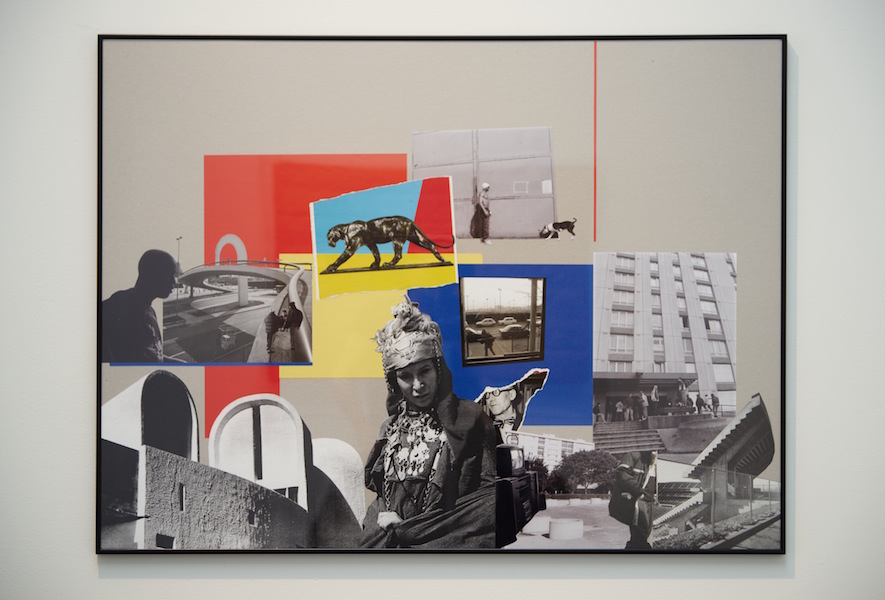
Collage; silver gelatin print and vintage documents on cardboard.
Reconstructions, 2016
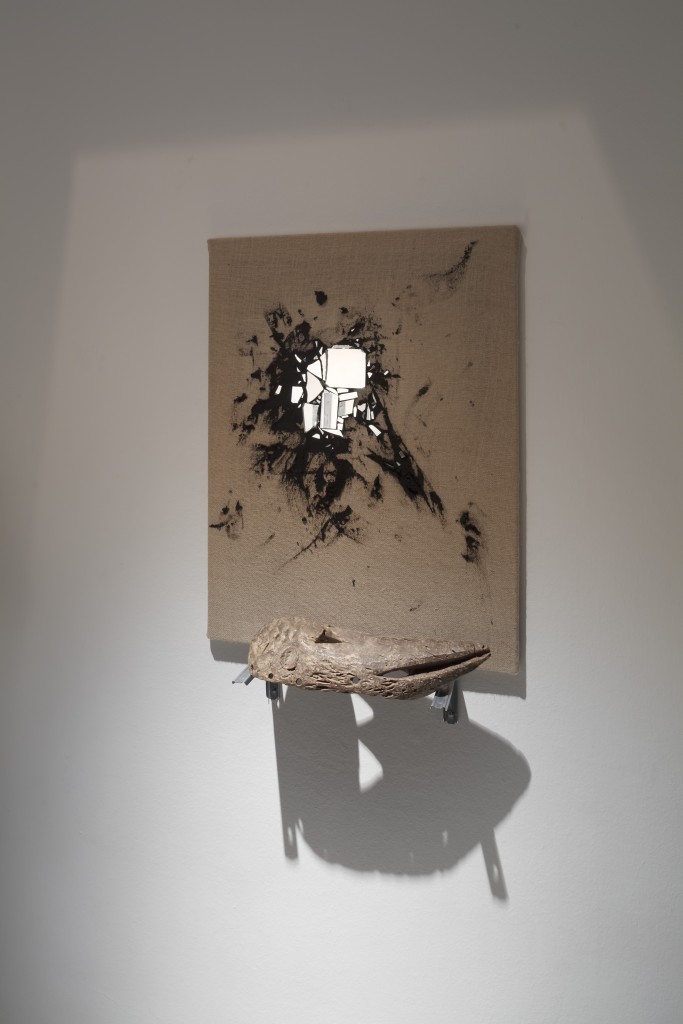
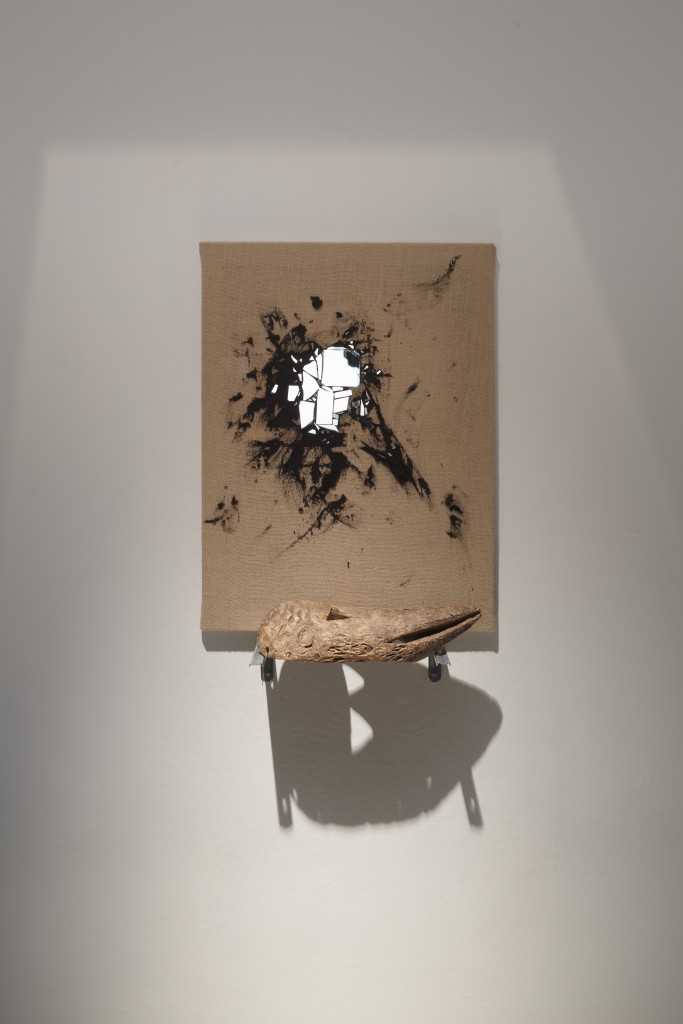 © Axel Schneider
© Axel Schneider
Canvas, Mirrors, Mask.
Untitled (Sacred), 2016
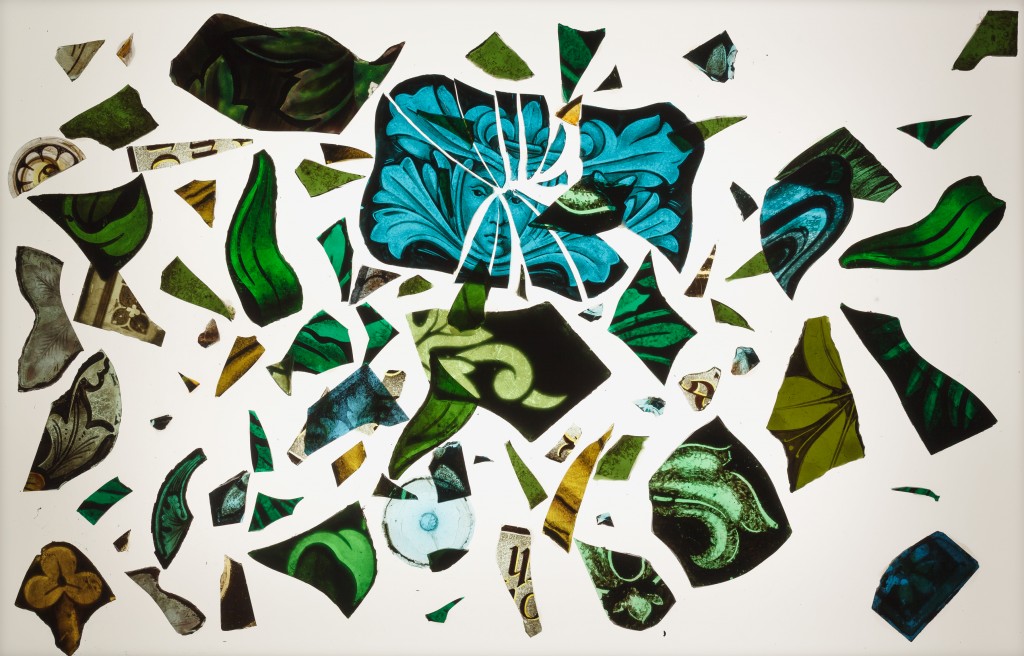 © Axel Schneider
© Axel Schneider
Sculpture, light, colored glass
Untitled (Violence), 2016
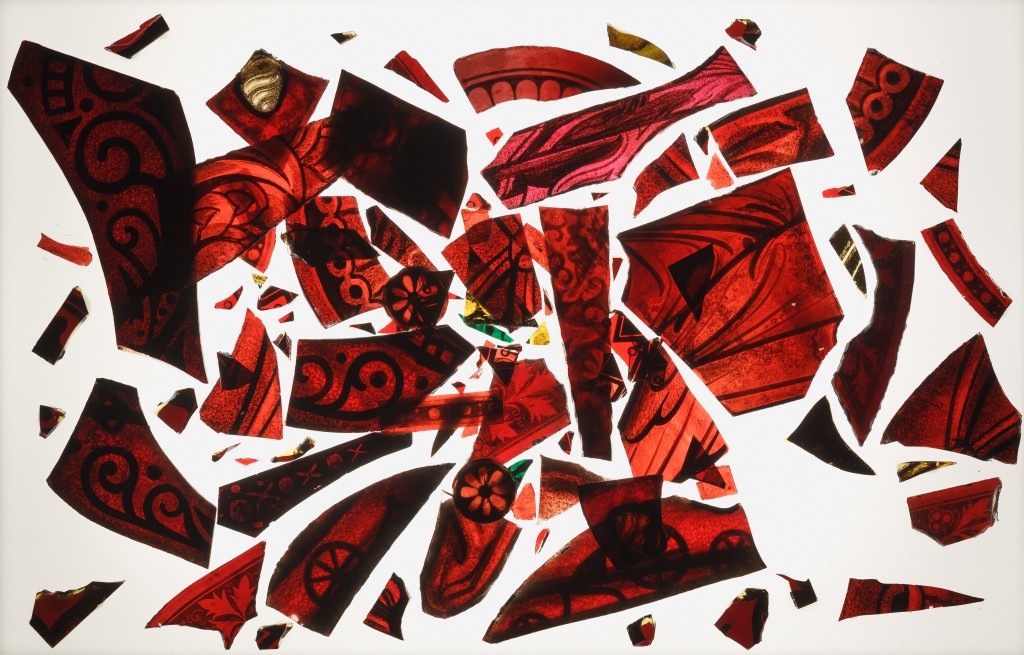 © Axel Schneider
© Axel Schneider
Sculpture, light box, colored glass
Intifada: The Endless Rhizomes of Revolution, 2016

 © Axel Schneider
© Axel Schneider
Installation, metal sculptures, rubber, stones, newspapers, photocopies
Dak’Art 2016, The 12th Biennale of Contemporary African Art in Dakar, Palais de Justice, Dakar, 2016
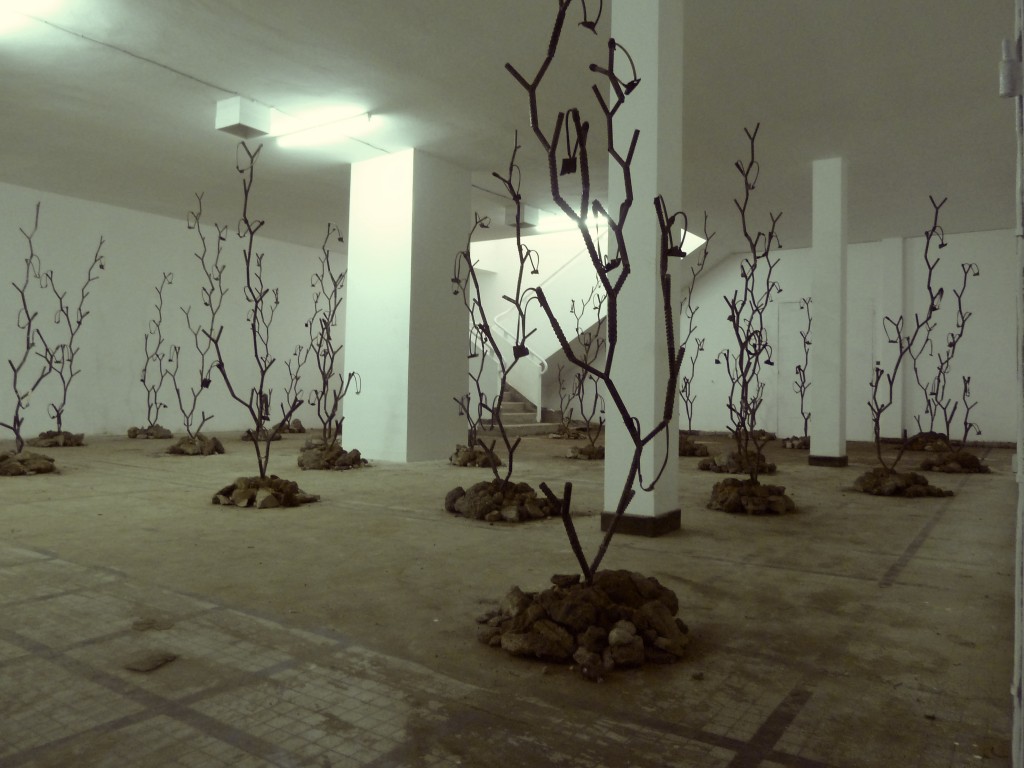
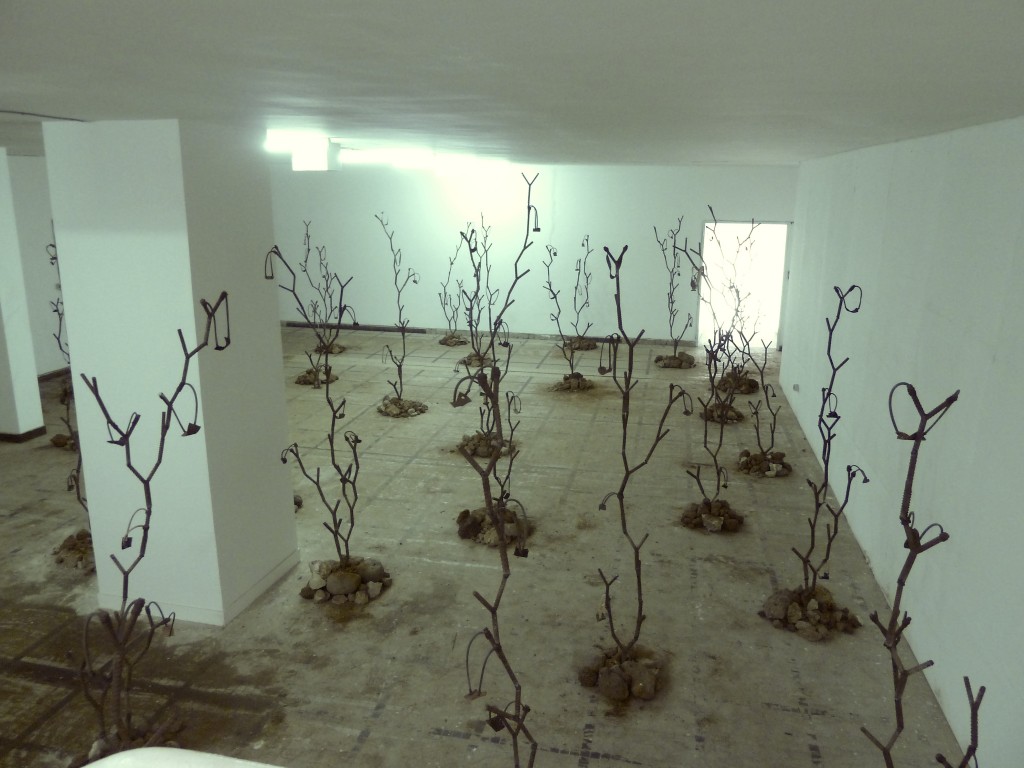
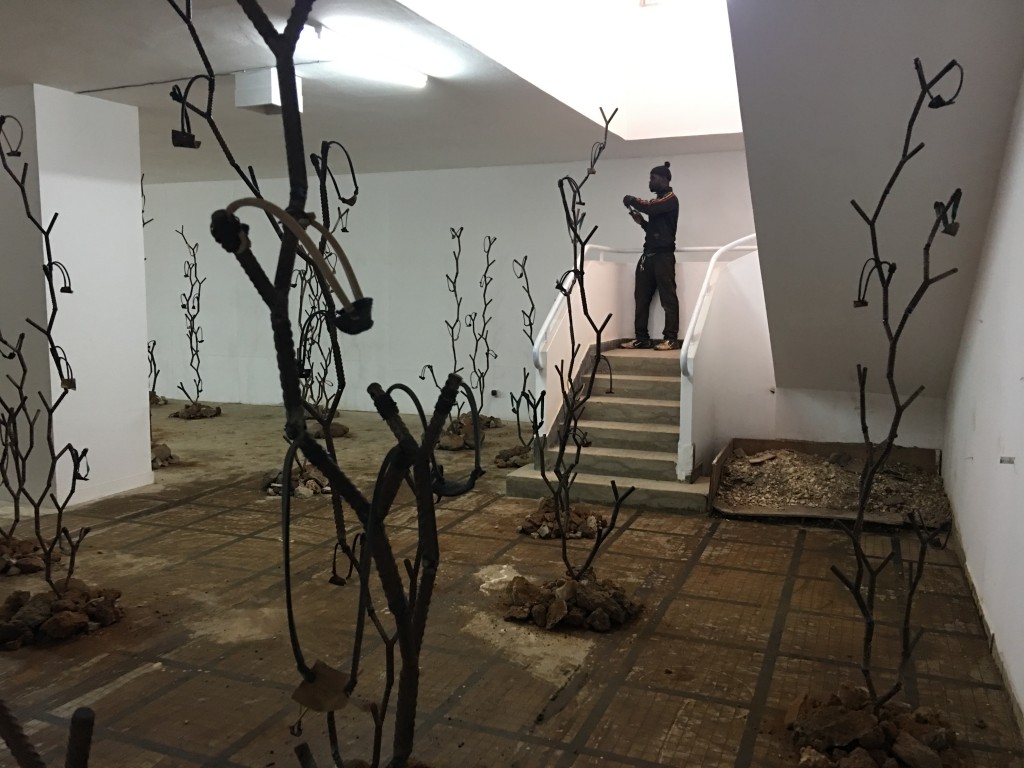
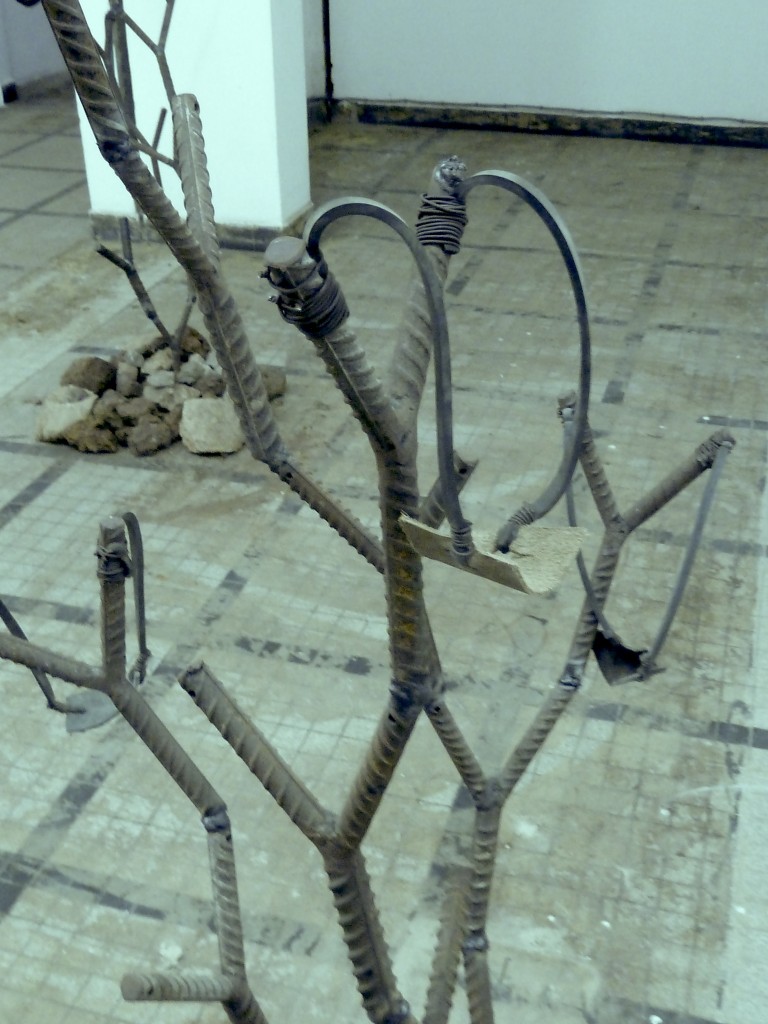
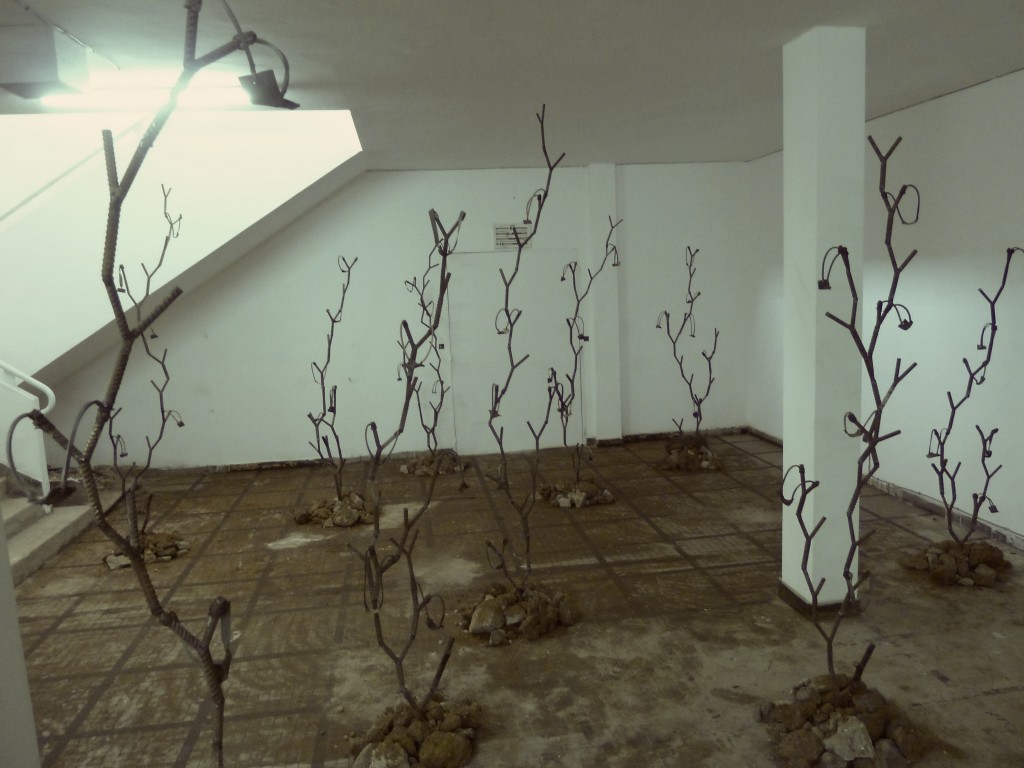
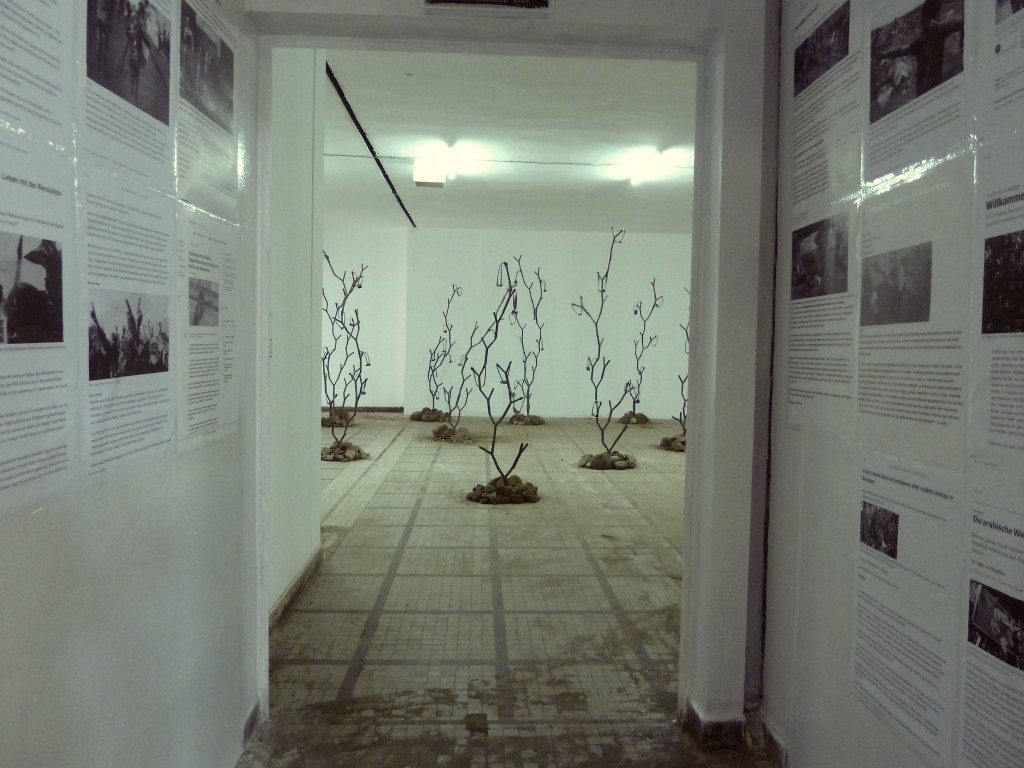
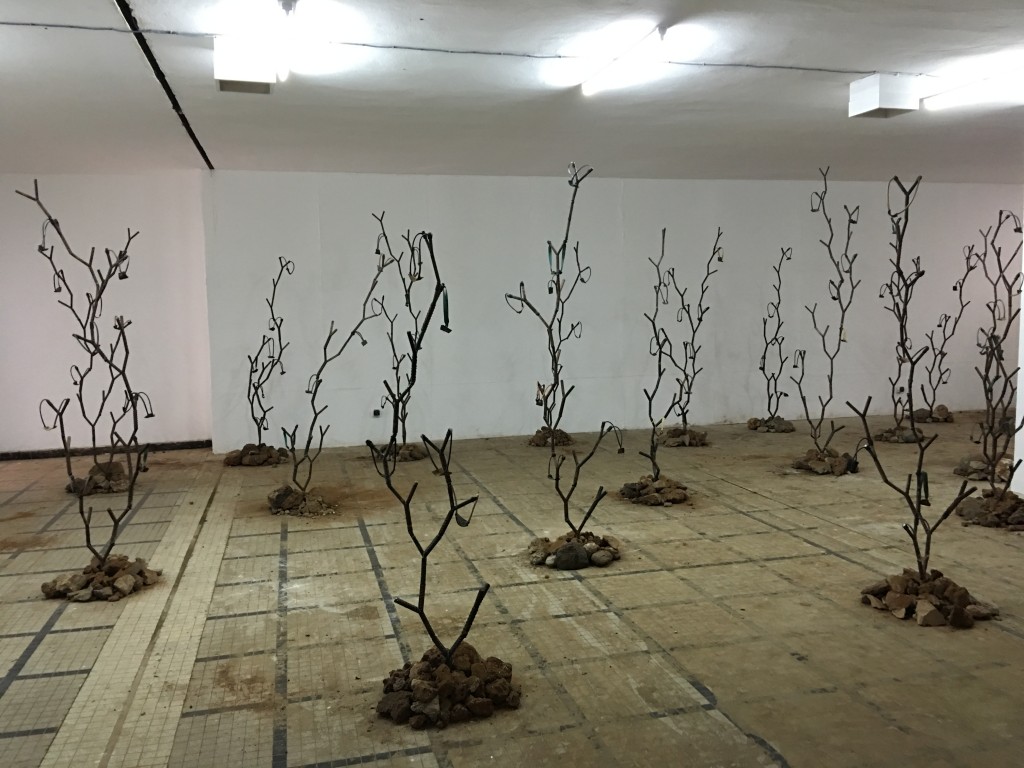
Modern Architecture Genealogy, 2014
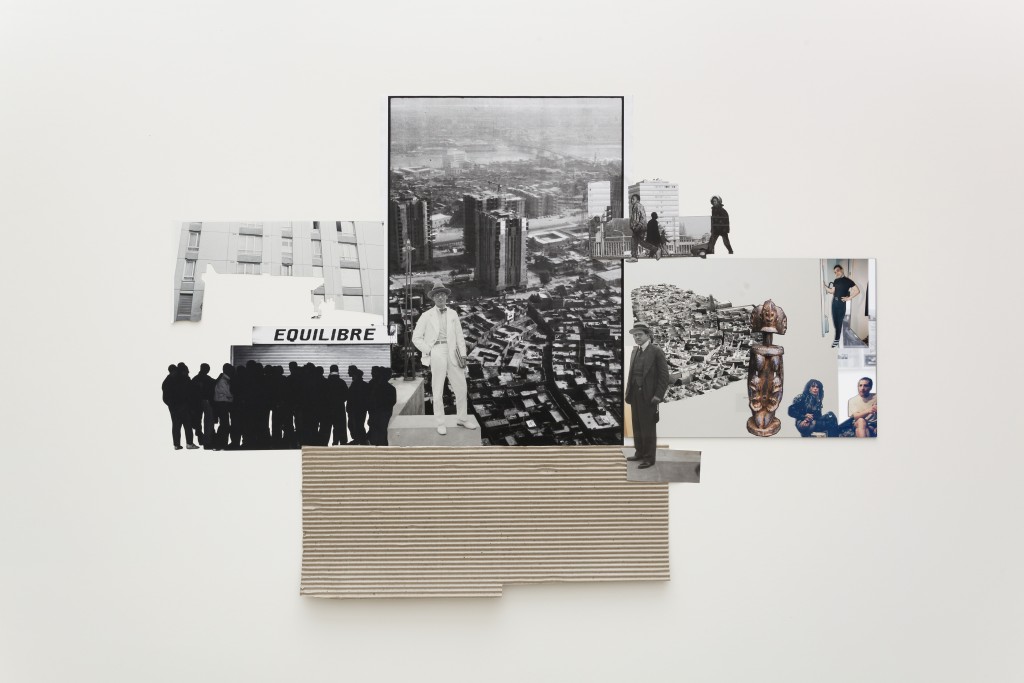
© Axel Schneider
Collage, paper, photography, photocopying, graphics from old books, mirror

© Axel Schneider
Collage, canvas, analogue photography
When Cardboard repairs Plastic # 1, 2016
Sculpture, plastic bumper, cardboard, resin, stainless steel
When Cardboard repairs Plastic # 3, 2016
 © Axel Schneider
© Axel Schneider
Sculpture, paneling for scooters, cardboard, resin, metal base
Untitled, 2016
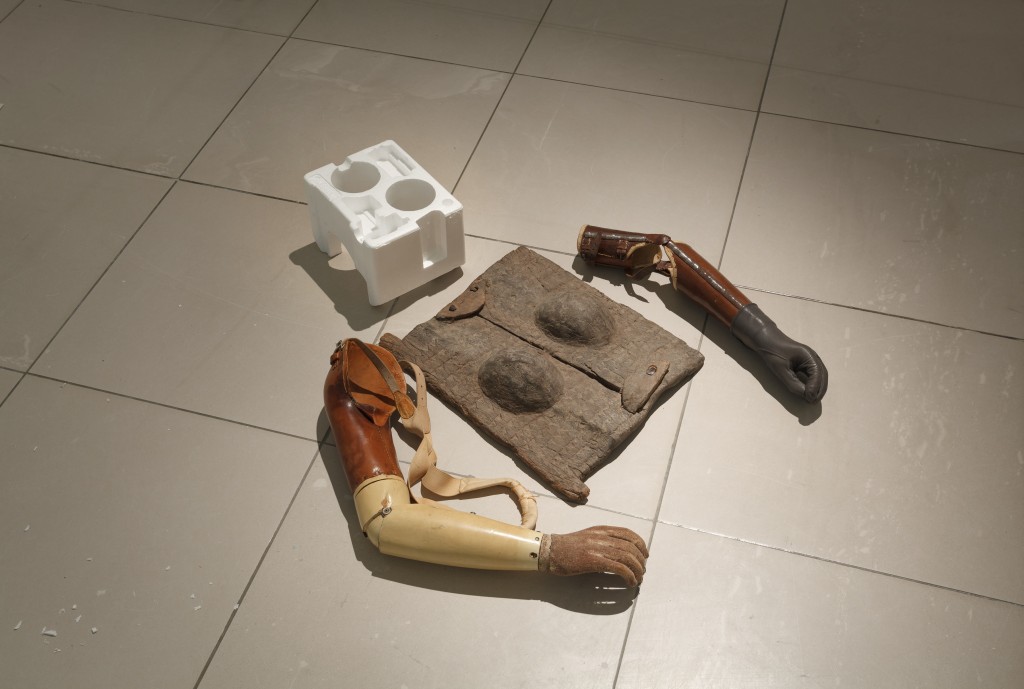
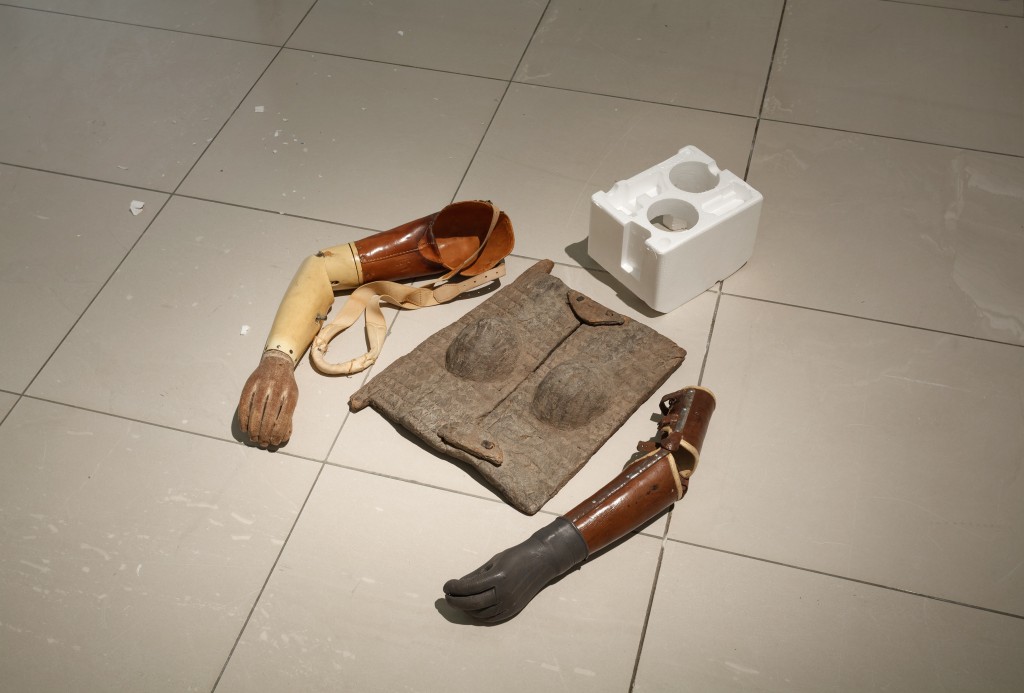
Sculpture, styrofoam cubes, prosthetic arms, wooden door of Bambara
Untitled, 2016
 © Axel Schneider
© Axel Schneider
Sculpture, wooden Boccio Totem, tin, metal base
The Scream, 2016
Diptych, Medical Mask, Book
Untitled, 2016
Installation, Strobe Lights, Slide, Overhead-projector

© Axel Schneider
Parabolic Self Poetry, 2015
Light Box
 © Axel Schneider
© Axel Schneider
Los de Arriba y Los de Abajo, 2015

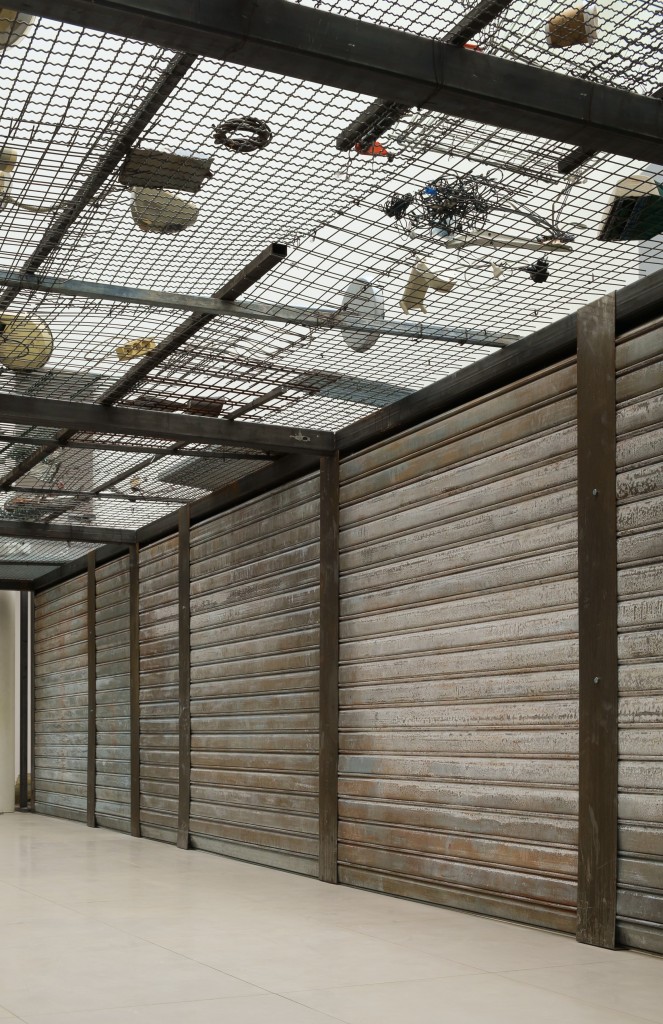 © Axel Schneider
© Axel Schneider
Installation, Metal Structure, Roller Blinds, Fences, Rubbish, Documentation, Press Articles, Books, Wooden Shelf
Interview with Marion von Osten, 2014
Kader Attia: This conversation could begin on an American road between Los Angeles and San Antonio. You know, the endless roads scattered with old cheap motels, like the ghosts of the modern dream designed in 1950s aesthetics and acting as a link to a so-called era of great progress. Back when the west was a symbol of conquest, and capitalism was an ideal. . .
I thought about you when I was in San Antonio. I visited several seventeenth-century Spanish Christian missions, or rather what was left of them. Most of these beautiful architectures can easily be compared to any Mediterranean Christian architecture. If you remember that Spain had been colonized by Muslims for five centuries, you can see and understand better how Spanish colonial style took root in America thanks to characteristic Arabian-Muslim vernacular architecture. This brings up my first question to you, instigator of the amazing project In the Desert of Modernity: Colonial Planning and After (2008–2009): Is colonialism responsible for the evolution of architecture through and toward a modern agenda?
Marion von Osten: Historically speaking, the purpose of any colonial plan was to create new settlements and to bring new housing solutions for a distinct non-indigenous population arriving from some other part of the world. When I say “distinct,”
I mean separated. These constructions were created for colonists—colonial settlers—and separated them from other, already existing habitations and social communities. The colonial settle ment is thus a biopolitical entity, a satellite community in a partially unfamiliar area and one that does not want to mingle. But
as it has been proved, this will to segregate itself from the local environment always fails. In relation to your comment about Spanish missions, I just visited the historical Franciscan missions in California, where I learned that the church and cloister in Santa Barbara, for example, were built by local Comanche tribes.
This is important, for the Franciscan monks would not have survived without the Comanche, as the latter fed them when they arrived in the eighteenth century. Also, the First Nations handled the construction of the cloister, church, and houses while teaching the monks how to craft textiles and pottery. After the mission was established, the natives were given free food and Christian education as a reward for their labor. Here it becomes interesting because, even though their survival was completely dependent on the Comanche’s local knowledge and food, the monks assumed native people to be naive people who needed education and to be taken care of. This is what makes any colonial civilizing mission so paradoxical, as it depends on local people’s knowledge, yet it does not acknowledge them as de jure subjects. This is also expressed in architecture. You can find some transcultural translations in these specific places. The church design is based on drawings from Vitruvius’s famous architecture book from ancient Rome. However, the monks only followed Vitruvius’s model of a Roman temple because they had no other example. Plus, in this strange church-temple you can find small transpositions of Comanche ornaments on the ceiling and Mexican figurative elements beside paintings with belated baroque aesthetics. This eclecticism or conscious or unconscious translation—praised as California’s multicultural heritage—conceals that Christian and Roman aesthetic traditions remained hegemonic, while other transcultural elements remained marginal. This hierarchy in the use of aesthetics is mostly expressed in the settlement designed by monks for First Nations converts. The Comanche housing facility next to the cloister showed very modern lines; it was designed like a camp built in a grid-like structure. This small-scale housing grid, specifically created for the natives, echoes philosopher Jacques Rancière’s words about distributing the sensible1 and, therefore, about domination.
Even when we need to constantly highlight transfers and exchanges created through specific cross-continental encounters like between the Comanche and Franciscans, as they later became a particular Christian group following early communist ideals, architecture still reveals this hierarchy and dominance that denied the Comanche’s rights to be represented as gifted fishers, sailors, and farmers or as spiritual collaborators, political allies, or even fighters. When the economic and military interests of Spain, Russia, the Mexican Empire, and, later, the United States caused never-ending conflicts on this territory, the first to suffer abuses and die were the Comanche.
And there, again, what is striking is the specific rationality in the Comanche settlement from the Santa Barbara mission,
for it consequently used this same grid pattern. The grid, as a planning principle, is to be found in the organization of most colonial processes. It already existed during the Roman Empire, so in the end, Spain was not the first one to use it. This grid structure is an artificial and rational pattern free from any context and can be expanded any time. It is about expansion, identifying and conquering new territories in any part of the world. It is about housing a great number of people, about future population growth, since the grid can easily spread into any direction. It is also the same pattern as the famous Philadelphia grid developed during the eighteenth century, and yet when you come to studying colonial cities, you realize it had already been adopted for years in each and every one of them. A village or town based on this structure is the very basis for creating any new artificial site or, just like in Caracas, for example, a colonial town similar to many other places you might add to your own research. New town planning and the grid structure that are nowadays perceived as high modernist aesthetic items were brought into building practices and modern discourse through colonial expansion.
KA: Your answer reminds me of how Spanish Emperor Carlos Quinto ordered Mexico’s city planning, following a parallel and perpendicular street pattern. And do you know why? To have control over the population. When Tenochtitlan was taken over by the Spanish they decided to slowly develop their new city on top of the former Aztec capital. These days, some architecture from these colonial settlement projects, such as the Catedral del Zócalo, are slowly falling down because of the old Aztec temples underneath. These “conscious and unconscious forms of cultural translations” seem to be another kind of “repairing,” because they act as endless cultural translations from one cultural space/time to another. To come back to this colonial settlement planning and to why it reminds me of the first urban plans in Mexico during the early sixteenth century that aimed at controlling people, do you sometimes think that architecture consists of filling a given space, while actually it is the contrary, thus making urban plans more important than the buildings themselves in the end? Do you think that projects led by you and me, among others, like the architect and urban planner Michel Écochard in Casablanca, aim at controlling people through some vertical panopticon or, on the contrary, providing intimate spaces for the inhabitants? And eventually, what drew them to totally close their own balconies?
MvO: Yes, I think you are right, colonial settlement is mainly about organization and urban landscaping, but not so much about establishing an individual house for one particular settler. Biopolitical implications are quite obvious when we think of them as closed entities. What most people ignore, as your question pointed out, is that this vision of colonial planning has considerably influenced modern building concepts like, for instance, city planner Ebenezer Howard’s famous garden city. A book entitled A View of the Art of Colonization: In Letters Between a Statesman and a Colonist (1849), edited and co-written by Edward Gibbon Wakefield, which also served as propaganda to convince the British government to build a settlers’ colony in New Zealand, mainly influenced Howard’s concept. But the latter’s goal with the garden city that actually started his career in the US before being published in the United Kingdom went even further than its colonial blueprint. The idea was to sustain, through a satellite city concept, “a healthy, natural, and economic combination of town and country life”2 thanks to balanced working and relaxing times. This concept aimed at getting away from the contentious relations between industrialization and countryside. Just like in future replicas of the garden city—such as the satellite city or the cité nouvelle—life, production, and education were strongly connected. Moreover, spatial organization of confined islands, segregated from the heart of the city and from other social groups, must have been based around new ideas about labor conditions and accumulating wealth as well. In Howard’s original vision of a confined settlement, discipline and control were obviously part of the strategy. It is also strongly related to hygienic and epidemic argumentations. Only later was consumption added to the garden-city movement, following new town-planning systems created in the twentieth century. From then on, the new town emerged not as a sign of total enclosure, but as a place that was organized from A to Z. The principle of neighborhood units also appeared there and then developed in the US with urban planner Clarence Stein.
When living in Casablanca under French protectorate, Marshal of France and colonial administrator Louis Hubert Gonzalves Lyautey followed ideas close to Northern American industrial development plans and Howard’s garden city concept in his vision of the European colonial town, Casablanca. This concept, first introduced in European cities, was later used as a strategy to shut the local community out of the center when building what they called the Habous neighborhood or the new medina. Later on in the 1940s, Verlieer, a French town planner and socialist, appropriated the garden-city model again in his new planning of the huge Aïn Chock settlement, a fantasy of a Moroccan village using the grid plan; local workers then lived far away from the heart of Casablanca. A few years later, Écochard established a housing grid for his constructions —applying the “Housing for the Greatest Number” principle— because of the increasing number of colonial factories or even service workers. This housing grid, as the main instrument for new urban neighborhoods, was also meant to replace the numerous slums from the late 1940s to the mid-1950s that were mostly inhabited by rural migrants. In fact, the large-scale housing programs were the French protectorate’s attempts to build modern settlements for the colonized just when anticolonial uprising emerged as Morocco obtained independence in 1956. In those times of resistance, the French urban planning services strategies varied from reordering the slums (restructuration) to temporary re-housing (relogement) while also creating new housing estates with controlled rents (habitations à loyer modéré), all according to Écochard’s grid. His master plan applied notions of “culturally specific” housing, making—according to his vision—local construction practices the starting point for developing a variety of housing typologies adapted to each category of inhabitants. These categories were still confined to already existing definitions of cultural and racial differences. However, it was only under colonial rules that categorization reinforced and was turned into a means of exercising governmental power. Écochard’s plan divided the city into different residential zones for European, Moroccan, and Jewish residents, as well as industrial and trading areas. Only “Muslim” housing estates were built far from the “European” colonial city by creating a so-called zone sanitaire (sanitary zone), the boundaries of which were actually the newly built motorway. This spatial separation was also inherited from the colonial apartheid regime during which Moroccans were forbidden from entering the protectorate city unless employed as domestic servants in European households, and, likewise, that constituted a strategic measure, facilitating military operations against any possible resistance.
KA: Do you remember, Marion, how we first met many years ago? I think it was for a video work called Normal City (2003) (depicting social building facades from my teenage years in Paris’s suburbs). Could you find a link between European western or eastern social architecture aesthetics and what has been functionally experimented as a modern housing ideal for the native people and “adapted” in former colonial areas (during pre-independence times)? Again, I am thinking about Écochard in Morocco or architect Fernand Pouillon in Algeria, who apparently tried to adapt their designs to local indoor and outdoor living traditions. I always have the feeling that it is only possible to live in (not to say survive) such a neighborhood, just like in millions of other social housing blocks built for immigrants in the west, because the inhabitants re-created a social structure identical to those of the villages most of them came from. Everyone knows each other and says hello, and if something wrong is about to happen, someone can see it from their window and, for instance, advise you to remove the bag you forgot in your car or park it in another place so that you can keep an eye on it. So, again, here is my question: How do you deal with this dialectic between social housing aesthetics and ethics, this complementarity of minimal functionality and aesthetics? Does it make sense to you? Does this aesthetics fit its own time, which was considered “nice” or stark on the contrary?
And last but not least, could this aesthetics have been part of the control project that happened through standardization of the subjects (the inhabitants) as the objects of the modern social order. . . ?
MvO: I think you are right in both cases, since the modernist project was and is about ambivalences, on the one hand, to grant people with a better life but, on the other, to control and educate them. The Écochard grid was dimensioned according to a typology of houses with courtyards believed to be appropriate for future inhabitants who will live in slums. His so-called culturally specific “Housing Grid for Muslims” measured eight meters by eight and consisted of two rooms and a wide outdoor space related to Arabic patios. Part of the ensuing 64 m2 was organized as a so-called neighborhood unit resulting in an intricate, ground-level structure of patio houses, alleys, and public squares. A single house in this grid consisted of two or three rooms and a patio by way of entrance. Using a variety of combinations, it was designed to be flexible enough to eventually adapt to creations seen in other housing types (individual or collective), states the architectural historian Catherine Blain. The patio house in Écochard’s vision allowed “growth” through usage. As psychologist Monique Eleb stated during the conference “The Colonial Modern” at Haus der Kulturen der Welt, Berlin—which you attended in 2008—the patio reference was not a copy of a traditional courtyard house but a European (mis)interpretation. On the other hand, the patio house structure developed in French colonies should be understood as a modernist synthesis, a Eurocentric translation that also carried pedagogical intentions to teach people modern industrial production and consumerism.
Though housing programs in French colonies from the 1950s/ 1960s did take certain specific local, regional, or cultural conditions into account when they were conceived, with decolonization these conditions turned out to be much more complex than originally thought. The single-floor, mass-built modernist patio houses, intended to facilitate control over Moroccan workers, are now so altered that one can no longer distinguish their original base structures. The builders simply used the base of the original design and foundations to construct three- or four-floor apartments. The many ways of appropriating space and architecture by people can also lead to assume that neither colonialism nor postcolonial governments ever managed to establish complete control over the populations.
KA: I agree, and it sounds very interesting, as an investigation process, to reveal how and why reappropriation emerges. As far as I am concerned, it took me years of thinking to be able to observe early “signs of reappropriation,” from architecture to any items, even human behaviors. Rancière offered an interesting analysis in The Emancipated Spectator,3 which is a reference to another article called “Le Tocsin des travailleurs” (The Tocsin of Workers), published in the nineteenth century in an old French union newspaper. . . To sum it up, the article describes a worker cleaning the wooden floor in a bourgeois house, removing the old surface with a large blade (tough job). After long hours of efforts, he decides to stand up and then looks out the window. He slowly ends up appreciating the view, as well as the perspective leading to the horizon of French “classic” gardens. The pleasure he takes there makes him dream of how he would set up all the furniture in this room, just like he would at home, following his own tastes to decide the kind of furniture he would buy, as well as where and why he would put a given item in a given place, etc.
Rancière explains how, from bending on the floor and working hard to standing up in order to stretch a bit and look out the window, the worker switches from one state to another: from “the manual state” to the “visual state.” At this very moment,
he stops being only hands executing orders so as to “reappropriate” his own self by watching and coming up with his own conclusions. From the hands to the eyes, his individuality reappropriates its freedom by reappropriating the perspective his social position has shut him out of and from which his eyes had been taken off. Founder of mutualist philosophy Pierre- Joseph Proudhon was the first to highlight “reappropriation.” Remember his “property is theft”?4 It also meant social struggle is a reappropriation of what has been dispossessed by the bourgeois and bureaucratic system. . .
Another personality you made me discover in one of your essays, “Architecture Without Architects—Another Anarchist Approach,” published in e-flux journal, issue no. 6, in 2009, is the British anarchist and architect Mark Crinson (perhaps you did it on purpose). The questions such an interesting political figure and personality raises within the understanding of contemporary social architecture are in the continuity of Proudhon’s thought.
I would definitely compare him to Paul Robeson, a multitalented personality. This African-American former athlete, who was physically impressive due to his height and voice, was an actor, a singer, and an active communist. In a movie, I saw him sing the Chinese national anthem on a stage right in the middle of the street! The notion of cliché might not exist in human nature; it is probably a product of the modern mind as a consequence of rationalism based on two obsessions: measuring the world with classification (through categories) of things and the fantasy of progress as a pure sign of evolution.
Philosopher and literary critic Edward Said has beautifully summarized the relationship between anarchism and architecture through the western cliché of Orient with his recognition that the Orient has been Orientalized by Occident. It sounds like a legacy of the western desire to control otherness, first culturally, then politically.
The way windows and balconies were arranged in so many social housing buildings designed by European minds in non-western, colonized contexts from Asia to North Africa (in Casablanca, for instance) raises two questions. If these transformations of balconies into kitchens or closed, inward facing rooms are “reappropriations,” then what about freedom? In the cité verticale, why have all the large and comfortable balconies, which aimed at opening each apartment to the outside so as to take advantage of both public and private spaces at the same time just like a private courtyard, been covered and closed by the inhabitants? Was it for self-protection, for moral issues (which are linked to Islam and privacy) in response to a design generated by another culture from another time, the culture of colonial domination imposing its utopian vision on another culture?
Could we say that adding confinement to these constructions is a “reappropriation”? When in Arabian Berber Muslim culture, domestic privacy cuts women off from outside eyes so there is no way to see their faces and bodies in their private apartment, could we say that the modern European architecture gender issue failed here? Or as Said investigates in his essay Orientalism,5 is it a purely western fantasy to think it is easy to reach Muslim Arabian women? I am sure you have seen examples of these thousands of old colonial postcards representing such “western fantasies,” like half-naked women in their apartments. . .
MvO: I vaguely remember an article about veiling in North Africa, stating the first forms of veiling noticed by natives were English ladies covering themselves from the sun and sand. And the author then highlighted the invention of sunglasses with which you can look around even though no one can know what you are looking at, since your eyes cannot be seen. So, I have no answer to your last questions, but perhaps some more comments on your first one that might lead to a whole set of future investigations on what we like to call production and what is called appropriation.
There is a concern about the use of the word appropriation and its concept: in it sleeps the very notion of property, as you pointed out when you quoted Rancière. The concept of appropriation thus suggests that something used to belong to some
thing/somebody and was later developed by somebody or/and used in another geographical context or fashion. This concept suggests no original articulation in itself. Notions such as copy, imitation, and appropriation deny any immediate emergence, yet in the meantime, this emergence is claimed by western modernists, like the architects we were talking about. In the last decades of cultural anthropology and postcolonial thinking, appropriation was used to mark tactics and strategies in a de Certeauian sense, I believe, to show that programs and concepts from above can be altered and subverted from below. But somehow it also suggests that there would be no “first” voicing, but always a belated reaction, only existing because there already was a first voicing by somebody else. The problem I have started to have with this concept is that it is mainly used for describing social class relations or in non-European articulations. When you talk about reappropriation, it aims at making this all a bit more complicated, since it is not clear who a concept and idea originally belonged to. And, as I discuss it in my own research, this is also true about modernism, as it can only be understood as a constant translation or synthesis of vernacular practices into a more rationalizing and universalizing concept that was later called modern. Still, it was a concept that appropriated the Arabian kasbah, the Indian bungalow, the courtyard house, arts and crafting from the colonies, etc. According to this, it escaped the classical and renaissance past, but in the same way the classical era claimed to have higher taste and value, to be more civilized and universal in
the end. What I try to highlight is that it is a product of worldly relations and many forms of transculturation mainly triggered by colonialism. But when we think about the uses and adaptations the inhabitants made that can be so easily spotted in Casablanca, it becomes incredible. Actually, the modifications are not mere changes or adaptations; some houses have been completely overworked. Then it brings us back to different issues about biopolitics and government matters specific to each society.
One could say people who lived in Écochard’s grid in Casablanca adapted a non-functional house and rebuilt it. Écochard surely thought his system was functional and so people would get used to it. But what actually happened is that they built a new house upon an old structure that did not offer many possibilities because it was too small, as it aimed
at creating nuclear family households. Therefore, one could agree on the fact that inhabitants have altered, adapted, and appropriated existing structures to their needs, thus subverting European programs. But when you sort of ignore the original structure, is this still appropriation, is this not production? Nowadays, scholars tend to link appropriation to the concept of freedom. Yet, it can only be done in such a case as the one
I am talking about—this is what I am criticizing here: European ground structure is considered the ultimate model from which all other activities have emerged. If you do not follow this Eurocentric idea, you need to accept that the inhabitants have built new structures on top, if that was possible. Until now, this local “growing house” building practice or culture has been associated with the already existing construction methods in the northern African medina. Many studies have ended there so far. But when you read documents that show more concern about the history of the medina as a transcultural encounter site than about French colonial cultural politics aiming at Orientalizing and museumizing the medina as a site of pre-modern forms of production, it gets even more complicated to distinguish whose building practices and cultures we are talking about. And this is what lies at the heart of the problem: that architecture was and is still read as the expression of one cultural identity and not of a different way of living, trading, and articulating that had been exchanging with other cultures long before the beginning of colonial modern projects and in which the northern hemisphere was not always the ruling, colonizing power since other local imperial forces had their own ways of governing people and handled war, trade, and exchanges
in their own fashions. These transcultural traces are seldom found in current discourses, as they are mainly based on binaries of the modern and pre-modern, on political identity, and do not focus on transfers, translations, and exchanges.
KA: Philosopher Achille Mbembe has spoken of boundaries referring to the Berlin Conference of 1884–1885.6 Before that, the nature of boundaries was different. There were areas between ethnic groups that were meant to both separate and bind them. In fact, these were places for traditional trade, war, language exchanges, etc. . . They were exchange areas of a different kind. They would revitalize both cultures. . .
I would like to come back to the complex reappropriation concept and whether any situation or item that embodies it is born from nothing or, on the contrary, is linked to some already existing thing or not.
Let’s take the example of Écochard’s cité verticale and the balconies that have been “re”-covered by all inhabitants.
Indeed, the use of “re” (for reappropriation or repair) as an intellectual western speculation and deduction occurs through the prism of western modern intellectual values and references. From philosopher Immanuel Kant’s critique of philosopher David Hume’s analysis we know that the way we read the world is based on the relationship between cause and effect: “causality” . . . It is true we are unable to think things from within themselves. If you watch a house or a flower, you can be sure that neither of them will be able to think of what it is…And so there is no human mind able to think this house or this flower by and within themselves. It always has to think them through the “relation” that exists between this thing and the mind. The relation between themselves consists of both the experience of the object and all the references linked to this relation. This relation is called “correlation”. . .
So when we have a close look at a house and a building that have been “rebuilt” by the inhabitants, then we are just part of this “correlation”. . . Thus, if social architectures that developed through a modern political agenda in North Africa tried to provide the natives with a western vision of modern housing but have been quickly “re”-adapted by them, then it is just an endless process of human knowledge based on “correlation”. . . Indeed, you can do a very simple analogy to link such a behavior by native people to modern western “new” architecture: This is how traditional homes and cities (medina) were built. . . There is not a single house isolated from another in a medina. Each one is built against another so as to provide both a strong, load-bearing wall to the new house and a connection to another area from the terrace. . . Even when the first one is in construction, the second one is being built at the same time. . . In vernacular urbanism, the notion of “city” is the accumulation of houses built “one against another,” which I have been able to observe in North and South Sahara. . . What architect Charles-Édouard Jeanneret, also known as Le Corbusier, found fascinating in a city like Ghardaïa (Algeria), for instance, is the fact that every street of this medina puts town facilities (market, madrassa, mosque, grocery store. . . ) within walking distance. When he created his first cité radieuse in Marseilles, he claimed it to be a “vertical Ghardaïa,” and each corridor in this modern social housing was called a “street,” as they linked all flats to social facilities you can find in the building, such as a swimming pool, a kindergarten, a school, a church, etc. In fact, he even used to say this is a vertical “Beni Isguen” (Berber name for Ghardaïa). Just as people from North Africa constantly adapted to their natural environment for centuries, they did adapt to their new artificial environment. . . And to push the “re”-adaptation process further, I would add Le Corbusier’s “reenactment” on a so-called personal creation, which sounds just like a repair of his modern building project, yet with traditional functionalism.
When you pointed out that the first veil story we heard about was a British woman protecting herself from sand, you also meant that, in the Sahara, men are veiled, too. Therefore, indeed, what you see is never what reality is. Especially from a western insight. . .
I recently came upon an interesting story about a vernacular, iconic architecture made of clay in the Sahara. . . A story I had already heard but that was never established as true. Did you know that Djenné’s mosque in Mali is a fake? Actually, what looks like an authentic twelfth-century mosque is not. . . This beautiful architecture was “re”-built by the French at the beginning of the twentieth century in 1907.
As far as I am concerned, this is extremely interesting, as we always point out that there is “reappropriation because of dispossession.” But what if the reconstruction of a mosque that has been destroyed several times by local people and foreigners is ordered by a colonial power—in this case, by William Merlaud-Ponty, the French governor?
People in Mali do not complain, but in all former colonies, especially French ones, relationships to colonial architecture are highly problematic. In Morocco, associations such as Casamémoire are doing a great job protecting architectural legacy, but in Algeria, protecting construction built under the former colonial administration is considered nonsense, except for religious buildings. As a matter of fact, most churches were saved due to the fact they became mosques. This is another process of reappropriation, just like so many Ottoman mosques were turned into churches during colonization. . . It is an end- less process, and reappropriation is a loop, too.
MvO: Cultural articulations always have these incredibly rich, multiple trajectories, but traces and transfers are likewise valued differently than the people producing culture: the architect earns cultural and symbolic wealth; the carpenter does not.
On colonial grounds, this perception or creation of value starts with the ideological construction of traditional behaviors and acts against modern behaviors. In this binary pattern, there is competition between two value systems. This pattern is mostly due to European scholars. French Orientalists’ analyses and texts about local economies, crafts, and building traditions either state Moroccan local productions were non-original copies of an Arabian style or call Berber crafting authentic indigenous art as long as it had no disturbing contact with Arabian aesthetics. These Eurocentric and anti-Arabian classifications caused great problems for the post-independence generation, and also do not help to understand what a non-capitalist local economy is even nowadays.
Still, crafts production—the way French powers categorized it—was the local Moroccan economy playing a part in trade relations and style exchanges over centuries. In opposition to what French people believed, not only was it more than a mere stable canon reproducing itself and simply influenced by the Ottoman Empire, but like in the medina district, local production was also an expression and meeting point for different aesthetic trajectories and translocal trade relations with Africa and Europe. Moreover, guilds were in charge of controlling the local market, rewards, trades, and production standards in Morocco over centuries, too.
When the French protectorate took over the government, one of the first interventions concerned guilds; that is to say, local economy and local production. New goods were introduced from other markets. Shoes produced in Asia, for instance, partially destroyed local shoe production. That had an impact on European markets because Moroccan leather products were imported to Europe as well; however, trade relations changed with the introduction of Asian products. Therefore, it also modified the classification of local production, trade relations, and local and traditional crafts, since the intervention into Moroccan guilds by French officials caused these manufactured goods to be seen as traditional and belated. On the one hand, the local economy was now considered traditional/ pre-modern, and on the other, the French argued that these forms of “cultural production” would need to be protected
and supported by French officials in the future when Morocco would be completely modernized. This double-faced destruction—devaluing and finally protecting local economy—made it possible to declare it a mere extra, a boutique element decorating the real thing that would be consumer goods made from industrialization.
For all of these reasons, the medina district was protected by Lyautey as a kind of living museum about ancient living habits, surrounded by the cité nouvelle built for French colonists. To help Moroccan local trade, Lyautey had an Oriental-modern Habous neighborhood constructed; by the way, it still exists as a central market area isolated from the former European city center. I am talking about this because it is linked to your last comment—the fact we missed this very point in our first project in Berlin at Haus der Kulturen der Welt in 2008, as we did not focus on who actually were the construction workers involved in building the new modern city of Casablanca. We were focusing on governance ideologies and anti-colonial resistance, but not so much on how working relations dramatically changed after French intervention. So how were these workers recruited? Obviously, most of them were Moroccan, while the planners, architects, and technicians were European. I only understood it after reading about it, but the Moroccan workforce was there because of the same intervention in the local economy and because of the catastrophic decrease in handicraft skills that occurred after protectorate intervention in Morocco. So, first you have to destroy local production and value systems, then you have a highly skilled workforce build the new city for Europeans as well as some houses for the Moroccan workforce.
But these free-floating skills were not just used in the name of colonial powers; they also served a lot of other purposes. As you know, the medina house has always been an adapted and growing house. It was always accommodated according to a family’s need, then it could be made bigger when it became too small. This actually was the local building practice, and you can find it in the whole Mediterranean area. Italian villages and smaller cities were built the same way, thanks to adapted construction practices through which buildings can grow. This practice has not been erased by the colonial power; besides many others, this skill survived industrialized means of production and can still be found nowadays. But as a result of colonial rule, local production, being in the margin of industrial chains, has been turned into folklore and transformed into a souvenir culture. But still, this is an economy with its own logic besides other globalized forms of production, and it also makes it possible for people to let houses grow and adapt to the population’s needs.
1 Jacques Rancière, The Politics of Aesthetics: The Distribution of the Sensible, trans. Gabriel Rockhill (London: Continuum International Publishing Group, 2004).
2 Ebenezer Howard, Garden Cities of T-morrow, second ed. (Adelaide: ebooks@ Adelaide, 2012), p. 11, online at: https:// ebooks.adelaide.edu.au/h/howard/ ebenezer/garden_cities_of_tomorrow/ index.html.
3 Jacques Rancière, The Emancipated Spectator, trans. Gregory Elliot (London: Verso, 2009).
4 Originally published in 1840 in French as “La propriété, c’est le vol!“; Pierre-Joseph Proudhon, What Is Property?: An Inquiry into he Principle of Right and of Government, trans. Benjamin R. Tucker (New York: Humboldt Publishing Company, 1890).
5 Edward W. Said, Orientalism (New York: Pantheon Books, 1978).
6 See, for instance, Achille Mbembe, “At the Edge of the World: Boundaries, Territoriality, and Sovereignty in Africa,” Public Culture, vol. 12, no. 1 (Winter 2000), pp. 259–284.
Published in: Kader Attia and Léa Gauthier,
eds., RepaiR. Paris: BlackJack Éditions, 2014.
In Conversation. Kitty Scott and Kader Attia, 2014
Kitty Scott: The notion of repair is central to your current thinking. Can you tell me where and how this originated?
Kader Attia: I have been working on the concept of repair for many years. There are several origins of my interest, but the central one is linked to the term “re-appropriation.” Over a long period I have observed, in my home village in Algeria as well as in other African cities I have lived in like Brazzaville, how much sociocultural and socioeconomic contexts were grounds for the “re-situation” of things as well as words – that is, of both material and immaterial signs. Sometimes the Western cultural vocabulary called it recycling, but it was much more complex than this.
It started to become more obvious after considering the different points of view on re-appropriation of three thinkers: Pierre-Joseph Proudhon, Oswald de Andrade and Frantz Fanon. Proudhon invented the term re-appropriation based on the principle that property is theft and gave it a political connotation. This insight will influence a whole range of thought about re-appropriation. A few decades later, the poet Andrade, with his poem / manifesto about cultural anthropophagy, moved the concept toward the cultural field. “Tupi or not Tupi: that is the question” – referring to the native Tupi people of Brazil and, of course, to Shakespeare – is its first sentence. Finally, Fanon situated the word in the colonial context, raising the issue of re-appropriation in relation to the notion of repair and what people had been dispossessed of. Re-appropriation – a concept that arose within European anarchism during the Industrial Revolution and developed within different colonial contexts – governs all relations between modernity and tradition. It sheds light on the parallel relationship between power and modernity and, more precisely, colonization and modernity.
Thus re-appropriation began to take on its larger meaning, which is actually that of repair. As I understand it, the motivation for these struggles – from the social struggles of the Industrial Revolution to the racial and cultural struggles of colonization – came from an instinctive desire of the human mind for repair. From culture to nature, repair, as a concept, became more and more clear in my observations.
KS: Can you trace this concept in animate and inanimate things? I am thinking in particular about objects and images I have seen in dOCUMENTA (13) and more recently in Berlin.
KA: After years of research and observation mainly focused on concrete things such as those belonging to the sacred or the profane – from the holiest to the most everyday of objects – it slowly dawned on me that a similarity exists at the core of reality in the differences they share, but not only these. Indeed, René Descartes states in his book Regulae ad directionem ingenii [Rules for the Direction of the Mind] that the order of things does not only lean on a system based on comparisons or similarities but that, through inference, we can also assimilate differences between things as analogies that bind them together.
When a Congolese fetish is made of, or includes, a Western item and when a Western item made of a bullet or a bombshell from the First World War is transformed into a holy Christian artefact or an everyday object, these things create a new, ambivalent reality that emerges from the one belonging to its original context and that links it to another – the context of its new reading. Each transformed object embodies a bridge that can be seen as both animate and inanimate. Objects created by the mind and the hand within contexts of poor material conditions always embody such a bridge between two spaces – including the one between nature and culture, which is key – as well as between multiple times.
During the First World War, soldiers from different countries, stuck in the middle of hell – often the place where they met an early death – made artefacts. This trench art, the things they made with their hands, was constructed out of deadly objects such as bullets, shells and other remnants of war. From the tools of destruction, they produced art and in doing so they have created another reality. This very reorientation is a repair.
Modernity has embodied a rupture of the bridge that used to link us to nature’s logic. What remains of that is now, to some degree, present within the social sciences. For example, in Germany the terminology used in ethnological museums to name their subjects is Naturvolk, which means “people of nature.” The hegemony of culture as a form of knowledge emerged from such disciplines as the unique power to control otherness, as Michel Foucault demonstrates in his Archaeology of Knowledge. So what if, parallel to everything visible and vibrating, an inanimate order of things is the real canvas or net on which the human being is based?
In any minor human flesh injury, any biological injury, or when any natural element is broken, the body instinctively “auto-repairs” itself as if the injury was insignificant. What the human mind does when it is repairing is just following nature’s logic. It is more obvious when the rupture is really big, but in the end the only thing the mind does is continue a natural specificity, which is an endless repair. So the difficulty of repair is its fatal automatism. Actually here we should not say that the human mind “does,” because it is not just an act consciously thought by the mind. It is a natural process. I call this “the continuum of the repair.” Continuum is what it is all about here. I have developed this notion in work I made for the Whitechapel Gallery entitled Continuum of Repair: The Light of Jacob’s Ladder.
KS: A subtheme in your research is the notion of reconstructive surgery and its relation to the notion of the repair. A more extreme version of this strand of thinking leads us to plastic or cosmetic surgery, which is so prevalent today. Is this area of repair something you have considered in relation to this body of work?
KA: Yes it is, especially through my research on transgendered bodies. They are always between different forms of representation – representation dictated by the social sphere, which channels all relations between people through a visual contact, more than the private one. The illusion of not being “discovered” as a man for a transgendered woman, especially from the modern Western world, is an important stake of living a transgender life.
KS: Where do you find these repaired objects? Can you describe the search process?
KA: For more than a decade, I have observed and researched contemporary objects during my frequent travels to North and Sub-Saharan Africa. Little by little, I collected some contemporary repaired objects. This activity led me to dig deeper into their history and to question the origins of the repairs. Eventually I began to look in museums, where antiquities are stored, whether in Africa or the West. I wanted to make sure that the starting point of my interest in the repair within traditional cultures – say, an nchakokot, or raffia “skirt” made by the Kuba people of the Congo that a friend had given me – wasn’t a rare or isolated phenomenon. It was a fascinating time. Many things I learned at this moment were fundamental to my subsequent research. For example, it is difficult to find repaired objects because the Western institutions where I worked never had a category for repaired objects in their databases. The repair of antiquities from non-Western, traditional cultures used different methods and forms. The most common method would be to use a staple to hold something fragile together, but there are many other methods, including the most unexpected: using a Western material in the repair, through delicate and skilful plaiting, all of which gives a new, decorative supplement to the repaired object.
And last but not least I realized re-appropriation and repair are two concepts that exert a relation of mutual interdependence.
KS: Your discussion here focuses on objects. Can you tell me how you have worked with images? What are you looking for in imagery? Where do you find the images that come into the project and how do you work with them in the context of exhibitions?
KA: I have always been fascinated by images. My first artworks were photographs. I even taught photography for two years when I was younger. And the first time I exhibited here in Berlin, where I live now, I showed a very humanist slide show, entitled La Piste d’atterrissage [The Landing Strip, 1997-99], at the KW Institute for Contemporary Art in the early 2000s, in “The State of Things,” organized by Catherine David. Years have gone by and I now also find pleasure in space, sculpture, volume and installation. However, sometimes using images is unavoidable and imperative in the face of the real object’s presence. The difficulty is then to produce an artwork that won’t fade in front of the superiority of the object’s presence, because nothing will ever compete with the strength of an object’s presence in front of the viewer’s eyes. This is even truer when the research theme deals with the object as such.
KS: So why images? What do they bring to the corpus of knowledge displayed in an installation like Repair?
KA: Images articulate reality without substituting for it. They talk about a reality through the proxy of their physical and intellectual characteristics. Yet in the frame of repair as a physical element, the fundamental reason for their interest is their political aspect. Indeed, whether in traditional cultures – in which repair is displayed as a new element and, above all, as the expression of an individual (the repairer) intended for a group (the community, or maybe some other group) that underwrites an individuality – or in modern Western cultures – in which the stake of this act of repair is the disappearance of the wound as well as of the repair itself – in both case the ethical result asserts a desire for the superiority of culture over nature, over, that is, a specificity peculiar to a natural order of things. The wound of a body as well as of an object is the result of a natural weakness, and the act of repairing it is cultural, hence ethical and political. It’s because they are highly political that images are, in that case, of interest to me. First of all, contrary to objects from traditional non-Western cultures, images are a pure technical and semantic product of Western modernity – and so a unidirectional political tool, from the West toward itself. Images, cultural products par excellence, perhaps embody a form of repair of culture over nature peculiar to the West, just as these non-Western repaired objects embody the sign of a re-appropriation and a repair of culture – that is, of knowledge – over nature, in the sense of the natural order of things.
Last but not least, the slide show included in the installation The Repair from Occident to Extra-Occidental Cultures illustrates a critique of the amnesia indirectly – and sometimes directly – enshrined by modernity in regards to the cultures of people who are still close to nature, and particularly of those whose rituals of intentional body transformations embody the cultural continuity of human genealogy itself.
From ethnography to ethnology and then to anthropology, modern sciences have always tried to rationalize the evolution of humankind through measurement and categorization. Yet in my opinion this mathematical, Cartesian logic misses one thing: magic. Images in this artwork, as well as in art in general, embody the link that separates and links us to the magic of things.
The loop or the Vortex, 2015
The Loop or the Vortex
In 1996, I was living in Brazzaville, in the Congo, for almost four years. I was working with an NGO on cultural heritage. One afternoon, while killing time with my friend Armand, he showed me a dead tree lying on the street, and started to explain that, during the night, this tree would turn into a large Boeing 747. Taking off from this street in a poor suburb of Brazzaville, it would fly into the sky toward Paris, to land there on the Champs-Elysées. All this during the night. There, the sorcerer and his colleagues would leave the aircraft, and open the doors of the shops, which sell technological goods, such as plasma-screen TVs, fridges, computers, etc., and bring them into the aircraft. After that, they would take off from Champs-Elysées Avenue and fly back to Brazzaville, to this street in the Bacongo neighborhood. Then they would unload the magical aircraft with all these goods, and transform it back into its original shape: an old dead tree. Believe it or not, Armand said, this is true.
What my friend Armand, who was a computer analyst, described without a single doubt, remained stuck in my mind for many years, as an echo of the Western theory of the “cargo cult” in ethnological studies.
The cargo cult is a myth that has been observed in several traditional societies, but it first appeared in the Melanesian Islands, when contact with modern Western colonizers occurred within exchanges through everyday life objects. The traditional populations were disturbed by the unexpected materials and functions of the “sophisticated” objects brought by the white male colonizer. In traditional societies colonized by modern man, a form of reappropriation of the freedom to enjoy the material objects and technological goods of the invader occurred in many different ways.
The analyses synthesized by ethnologists, in the wake of the emergence of such myths , which show a break in time of the group’s traditional cosmogony, has come within the scope of social sciences as a way of reacting to the frustration of the native’s desire, that de facto confirms the superiority of the white man and, above all, of his modern attributes.
Modern scientific thought has summarized the cargo cult as the production of beliefs relating to modernity’s objects, such as domestic appliances, computers, etc. But no one has ever investigated traditional societies’ perception of the fact that traditional everyday objects or sacred, ancient ones have been collected and gathered in Western modern institutions like ethnology museums.
And yet it seems that, in many respects, the way ethnological objects are worshiped and gathered in museums, where you have to line up, wait and pay your ticket to have the chance to admire such or such fetish, continues another form of belief, which these objects refer to. The French ethnologist Monique Jeudy-Ballini used to live in the south of New Guinea, where the conservation of old masks has never existed, because the Papua New Guinea communities, especially those from the Sepic society, used to destroy the masks as part of a ritual.
There, she explained to people living in very remote areas of New Britain, that in Europe, we were installing old masks and statues from their area in places where people could pay to see them. They answered: “So you get our old objects to put them in temples, worship them and meditate in front of them?”
Thinking about things in a complementary way—in an endlessly reciprocating way—is fundamental when one thinks of the complexity of humankind’s structure.
That’s why it is important, beyond this theoretical and rational scholars’ synthesis, to be sensitive to the incredible flexibility of the magical that binds the technological in the cargo cult. Because what sounds to a Western anthropological modern mind like the invention of myths out of ignorance and frustration appears as another form of philosophy.
As the Senegalese philosopher Souleymane Bachir Diagne says in “African Art As Philosophy,” “sacred or secular objects in traditional societies devoid of a system of writing, embody not an Art but a Philosophy.” The fascination for Western objects, observed as the cargo cult, leads to a production of new concepts as an answer to modern Western hegemony, supported by colonization.
But the fundamental stake here goes beyond social-economical and social-political injustice.
From concrete, limited social order to the immaterial infinity of beliefs, the open-minded thought the cargo cult is based on draws its perspective from both an animist conception of the universe and the complex, endless agency of the digital, which is limitless because it is based on algorithms.
The story of the transformed plane indeed clearly shows another form of repair, beyond the political perspective. From one natural element (a tree) to a cultural and technological one (a plane), this repair mimics a natural instinct for improvement, which has always existed within nature, but here making the metaphorical move from nature to culture.
And there is more.
From a natural state to the engineering of steel and gas, the myth of the appropriation of modern power is built here on a transformation helped by the belief in magic. This transformation allows the fellow of the group to be a part of the modern order, and then adapt to the new technological environment he’s confronted with.
Struggling for centuries against their environment by developing an endless ability to adapt, traditional cultures, newly colonized by the West, had to readapt to a new environment. An environment where the secular relation between the individual and the social was not more important than the relation between the individual and the machine within a dogmatic hegemonic order called modernity.
A metaphor of the movement between the natural gregarious instinct (shared by the individual and groups in all traditional societies since Neanderthals) and the individualist cultural environment brought by the colonializing modernity recalls one of the main criterion of the theory of the evolution of species: adaptation to the environment’s shifts in order to survive.
So two crucial, polarized issues emerge from this phenomenon named the cargo cult, in the light of the concept of repair from the political to the magical.
On one hand, the concrete one, repair articulates a socio-political and socio-cultural adaptation. On the other hand, the immaterial one, repair articulates a virtual adaptation that the rhetoric of animist beliefs and digitalization share.
Where does this adaptation instinct come from?
The human mind constantly questions its time, its past and its future, in order to endlessly adapt to its changing environment. It comes from thousands of years of teaching itself to understand the world. This reaction repairs a state of unsuitability in a new environment. The conclusion of my article “The Loop,” published in Supercommunity, answered the question, “Is the Universe a gigantic computer?” with “The Universe is not a gigantic computer, but humankind is mimicking one.”
Adaptation to change is only a mimesis of the natural order of things, to which humankind is subordinated. Humans only reproduce the model of resistance through adaptation that exists among all living species.
It seems fundamental here to come back to the theory that has forever fixed the universal structure of the evolution of species.
This notion of natural evolution through adaptation has been at the core of modernity’s naturalist scientific thought, in the midst of the 19th century’s colonial and industrial era.
But it’s important to remember that this theory was not only put forward by Charles Darwin, as people commonly think.
While Darwin, already celebrated by Linnaean Society, worked slowly for 20 years on the writing of his theory of the evolution of species, he received in 1858 the book of someone unknown in the scientific field, named Alfred Russel Wallace.
Wallace was a British naturalist, geographer, explorer, anthropologist and biologist. Darwin barely knew him, because they only exchanged letters on the issue of evolution, but nothing more. Wallace is an autodidact who had to drop from school at 16 to work with his brother because their father was broke. Darwin comes from science’s aristocracy. His grandfather Erasmus Darwin had left an important mark on that time’s contemporary sciences. Wallace is 35 when he sends his book to Darwin, who will be deeply depressed after reading it. Indeed, this book, gathering Wallace’s observations on the Malay archipelago, is word for word the theory that he himself his writing, but with lightning reasoning and a quickness to conclude in a clear-sighted way.
Darwin later answered Wallace to invite him to develop the theory on the evolution of species with him, which will lead to the terminology “natural selection.”
They will remain friends all their lives, despite a fundamental conflict over the issue of natural selection, of adaptation, to which we shall now come back.
Wallace reached the same conclusions as Darwin regarding the evolution of species, however he does not use the expression “natural selection,” and rather considers the mechanism of evolution as the result of environmental pressure. Whereas for Darwin, evolution comes from competition between the members of the same species. The difference is tiny, and they worked together on the theory in any case, until Wallace created a fundamental controversy. It led to a discord that made Darwin write, “I hope you haven’t totally killed your and my child.”
In 1869 Wallace announced that, in the end, he wanted to limit the scope of natural selection, where man is concerned. One of his main arguments was that the brain of prehistoric men was disproportionate compared to their needs, which was a clear contradiction with the fact that natural selection works following the principle of immediate utility. He wrote: “Man comes from an inferior animal form, but (…) has been modified in a special way by another force, the action of which has come in addition to the one of the natural selection.” This force had an impact on man’s environment and vice versa.
Actually, Wallace claims that basing the theory of natural selection on the adaptation to a constantly changing environment or a competition between members of the same species means denying an absurd aspect of the evolution of the human species. Indeed, the human species had no reason to evolve since the Neanderthals, because it was already able to survive in its environment with hunting and gathering, fishing, etc. Why then has it evolved up to the era of the industrial revolution—the moment that marks the beginning of the end of environment because of pollution?
In both cases, natural selection based on the superiority of the members inside one species, or on other species, for Darwin, and on a superior capacity to adapt to the pressures of an environment, for Wallace—the theory of evolution—has one mistake. This error is due to the fact that the more humankind adapts to its environment, or grows, the more it develops, the more it destroys its environment and itself. Destroying its reason for being: environment. This environment that gives birth to it and makes it evolve, with which it has always had an interdependence, incredibly unbalanced by evolving human intelligence and the basic need to survive. From this nonsense, naturalist Alfred Russel Wallace started to think that there is something else, a superior force that has produced man’s disproportionate and useless cerebral capacity, who as Neanderthal was already able to survive for centuries, while at the same time creating the environmental pressures that have triggered man’s capacity to always adapt more.
The questions Wallace raises here are: if the environment pressured species in their evolution, why has the human species been privileged physically, whereas it is one the most vulnerable? And why does the interdependence between species and the environment have the destruction of the environment as its unique outcome?
This unexpected conclusion articulates two types of repair. First of all, the natural selection of a weak individual giving way to the strong one, according to Darwin’s thought, or of the one the most able to adapt to its environment and its changes, specific to Wallace. So if the environment, as Wallace thinks, is in a process of destruction, then there is an even more complex issue, which is the adaptation no longer to the environment, but to the human being. Because if Wallace thinks the intelligence of an extra-human force has maneuvered illogicalities like the overdeveloped capacity of the human brain for simple activities, humankind has been able to adapt to its changing environment, to dominate the other weaker species, as well as to its weaker fellows, but would it be able to adapt to its own superiority?
What Wallace unveiled is the crucial stake of the human species adapting to the human species, to survive in the post-Industrial Revolution era. For Darwin, this other force that would have created the illogical conditions of evolution for man and its superiority is a blind chance.
Wallace disagrees, because, for him, the theory of evolution proves that it comes from a succession of causes and consequences, and not from chance; otherwise mankind would be a mistake.
Chance or mistake, the crucial question is: is there still time to repair this self-destructive agency, defined by Wallace, or is this unavoidable destructive agency the repair of the mistake, of which mankind is the name?
First of all, we need to understand that according to Wallace and Darwin, a destruction of mankind means either the end of humankind through the end of the environment, or the end of humankind, replaced by another superior intelligence created by him or that created him.
The question of humankind’s destruction is not new. Cinema, literature, painting, music, religion and so on have often treated this topic widely; it is still at the core of our contemporary images and haunts our minds. Within the contemporary psyche, the end of humankind is either coming from environmental disasters or from the competition between humans and other superior technologies created by themselves or by alien.
Without any modern technology, the Dogon people from Mali, like many other civilizations (the Incas, the Persians, the Arabs) used to practice astronomy. The Dogons have observed with naked eyes that every 60 years, a very bright star returned to the sky. They named it Siguitolo. They have made it the main temporal axis of their cosmogony. Then every 60 years, they celebrate it with a ritual, named “Sigui.” Old and new masks of the Dogon country, like the famous “Kanaga,” dance from one village to the other for more than a year until the star leaves the sky…
We had to wait until the middle of the 20th century and new telescopes to at last observe this phenomenon, and discover that it was in fact two stars joining on the same axis every 60 years: Sirius A and Sirius B.
Visible and invisible physical phenomenons have influenced the cosmogony of several civilizations, and the beliefs that came from them have also been at the basis of other discoveries. The grammar that was used, as scientific as it could be, wasn’t always figures, but words or images.
Because one always believes above all in images.
During the 9th Century, Ibn Al Khawasimi, who gave his name to algorithms, wrote his fundamental essay Kitābu ‘l-mukhtaṣar fī ḥisābi ‘l-jabr wa’l-muqābalah or Abstract of calculus by restoration and comparison. This book consists of six chapters. It does not contain any figures. All the equations are expressed with words. The square of the unknown is named “the square” or mâl, the unknown is “the thing” or shay (šay), the “root” is the jidhr, the “constant“ is the dirham or adǎd. The word al-jabr was taken by Europeans and later became the word algebra.
From the 9th century until now, algorithms have changed our lives. They are everywhere, even where we don’t know yet that they exist. That’s the case of algorithms that look for things that we don’t know about, and even more of those that deal with things that we don’t know yet do not exist. Producing a formula to describe universes that we don’t even know don’t exist: this is the definition of algorithms, to which mathematicians like Donald Ervin Knuth refer as “black magic.” The industrial revolution, which Alfred Russel Wallace considered to be the beginning of the end of mankind, has been transformed into an era of high technology, where the binarization of everything is constantly increased.
We slowly slip toward a world where the decaying physical environment will give way to another digital environment, which we build like a perfect mirror of our superiority. This virtual alter ego, made of billions of algorithms, some of which we have no idea of, has probably acquired the agency of repair that deeply defines the human species who created it.
To adapt to this superiority of humankind, about which Wallace warned us, means actually to adapt to our artificial superiority, which is increasingly disproportionate in comparison with our average brain capacity.
We can not compete with the velocity of algorithms combined with technology.
Regarding “black magic,” to which mathematicians refer in term of algorithms, that describe worlds we have no idea of, it is crucial to remember that this conception of immaterial powers parallel to the human world has always existed in ante-modern animist beliefs. It had the freedom to describe what we didn’t know and to enjoy this non-knowledge. Why? Because non-knowledge prevents any civilization from falling into certainty, as certainty is the beginning of madness and decadence.
This ambivalent relation between an artificial power described by Wallace, which seems to be more and more embodied by the endless digitalization of the universe, and old animist cosmogonies and their beliefs in immaterial powers, describe a loop. A loop or a vortex which endlessly reenacts itself, from immaterial beliefs to the belief in virtual technology. Remember what I told you at the beginning of this lecture: “One always believes above all in images…”
The Matrix, the story the Wachowskis have put in words and images, is particularly eloquent on this question. Especially the second part of this trilogy, when the Matrix is “reloaded.”
In this story, the hero, Neo, reaches the center of the matrix after having overcome and destroyed almost all obstacles, except agent Smith, whose goal is to stop Neo. But Neo then discovers that two artificial intelligences of the matrix, the Oracle and the Architect, who have created and manage the matrix’s net, might have created him, and that he has already reached the center of the matrix five times before. But he doesn’t remember, because each time the matrix was reloaded. They have created him to challenge and destroy all the obstacles they have built in order to improve them, and protect the center of the matrix even better, from human rebels, from Agent Smith, and Neo himself. So the more they reload the matrix the better its protection system is.
The only uncontrollable fact is that Neo is also human, and humans are unpredictable. But even when he decides to sacrifice himself to kill Agent Smith, the matrix can be reloaded again.
Like Sisyphus and his rock, mankind is prisoner of an endless loop, condemned to be ruled by machines and algorithms.
This loop, or more correctly, this vortex process (because it is not perfectly repeating itself by going back to its original state), helps us to understand one of the crucial points of the repair of this unbalanced relationship between humankind and the disappearance of its concrete physical world into a virtual digitalized order of representations.
Remember that we do believe first of all and after all in images.
It is because we do believe in images that, in the Age of Reason, a concept, named by Emmanuel Kant, “correlation,” emerged.
Neither an image nor an object can think by itself that it is an image or an object, nor can our minds. The thought depends always on a connection between the object and the mind. This connection, going back and forth between the object and the mind, has been conceptualized by Kant under the name of correlation. René Descartes’s “Discourse on the method” enhanced this concept with the use of inference. Between two different things the mind always draw an analogy, which is the “difference” between them.
For a couple of years, a new way of thinking beyond and before the correlation, from the simple concrete thing to the universe, has emerged from French philosopher Quentin Meillassoux in his essay “After Finitude.” A focus on the possibility of thinking beyond and before the Kantian correlation, which always drive our way of thinking, means thinking the thing within the thing, independently from the belief process based on the relationship. Actually, independently from the secular factor of causality. This new orientation from the classic modern standard of thinking correlatively, by considering the concrete object, shows how much this theory stigmatizes a fear. The human fear confronted by the endless disappearance of physicality: firstly because of the “dataization” of the universe, called rationalism, and secondly by the binarization of everything.
This fear of artificiality leads to artificial intelligence. The main actors of global digitalization, like Bill Gates, Steven Hawking and other mathematicians, have been warning us about artificial intelligence for years now.
As said before, artificial intelligences are our alter egos. But to understand how artificial intelligences think, we have to build their archeology. Artificial intelligences continue the modern human mind’s creation. They are therefore also ruled by the principle of correlation. Like images, in which we believe, artificial intelligences are actually algorithms thinking by using images in a process probably similar to correlation. Remember that the father of the algorithm, Ibn al Khawazimi, only used words and images in his fundamental equation. Here is one of the crucial frames of modern philosophy, which lasts until our contemporary digital era, through algorithms using the correlation to grow endlessly. As correlation is the keystone of our perception of the world, through the concept of the signifier and the signified, we might have transmitted this dialectic of reading images to artificial intelligences.
Conclusion :
The real stake is whether the frame of the thought, within this very limited pattern of the signifier and the signified, will be able to be reinvented.
Monotheistic civilizations all have a system of writing, which makes them based on an eternal cognitive dialogue between the object (the significant) and its referent (the signified). The book is an object, but it refers to an immaterial reference. What Serge Gruzinski explains very well regarding the system of writing and the psyche of civilization, which have disappeared, and their cosmogonies, is that when you look at a codex and watch drawings (ideograms), you think that the piece of corn for instance refers to corn and food. But actually it also refers to human flesh, as Aztecs were anthropophagous (cannibalistic) during their ceremonies. The link between those multiple referents that a simple piece of corn can refer to is even more complex for us when we understand that it could also refer to the mountains or the sun, as well as to a bird. Ancient civilizations did not frame their thought within the limited geometricality of the signifier and the signified, but on a variable geometry, where a continuum between things structured the endless universe. Beyond the object and correlation, we have to reinvent an unpredictable way of thinking outside modernity’s old dialectic of the signifier and signified.
Kader Attia, 2015
After-Flow: Kader Attia’s Postcolonial Topologies. By Kobena Mercer, 2015
Post … refers to the aftermath or after-flow of a particular configuration. The impetus which constituted one particular historical or aesthetic moment disintegrates in the form we know it. Many of those impulses are resumed or reconvene in a new terrain or context, eroding some of the boundaries that made our occupation of an earlier moment seem relatively clear … and opening in their place new gaps, new interstices. Stuart Hall (1)
Encountering the two-channel slide projection in which tribal carvings patched with materials that came to hand are paired with the broken faces of World War I veterans who have undergone reconstructive surgery, one instantly sees the umbilical bond that made these figures ontological siblings. Both are survivors of modernity’s onslaught, but these visual twins were separated at birth by ideologies that blocked our recognition of their common DNA. Open Your Eyes (2010) announces a moment in which, as its title implies, we can now recognize the mutual interdependence between modernism and colonialism, which for more than a century was a relation hidden from view by the idea that the world’s cultures were each entirely autonomous, self-sufficient wholes that conferred identity by means of discontinuous boundaries of belonging. In the act of pairing, Attia reveals a continuum in which modern art movements that demanded a transformative role for art in response to social realities blown apart by global war in the 1914-1918 period arose in mutual genesis with colonial lives that survived the death-driven violence on which capitalist modernity relies, in Congo Free State during 1885-1908, for instance, for these interconnections are made visible, and critically intelligible, in each of the morphogenetic resemblances that Attia’s double slide projection puts forward.
Just as the verb to “pair” nestles within “repair,” one might say that alongside archival materials arranged on storage shelving, and sculptural busts carved in marble and wood, which all contribute to the installation The Repair from Occidental to Extra-Occidental Cultures (2012), first shown at dOCUMENTA 13, Attia’s visual twinning of damaged faces and neo-tribal bricolage is a signal work for our global contemporary age as it singularly upholds Paul Klee’s dictum that “art does not reproduce the visible; rather, it makes visible.” (2) Where topology is a branch of modern geometry that describes unbroken inter-connectedness among points, lines, and planes in a vast range of space-time configurations that escape the intelligibility of the Euclidean model, in which subject/object dualities render the viewer discontinuous from a world viewed as a visual field available to human mastery, Attia’s ability to make visible the networks of interlocking dependencies that our present inherits from the past makes him a topologist of the “post” condition that shapes our global contemporary lives. His art is postcolonial not because of his individual biography alone but because his aesthetic choices and moves position him as an inheritor of an agonistic modernism. Asking art not to express or to represent, but to interrupt the habitus which determines what is seeable, sayable, and thinkable, Attia is also a post-medium artist working with photographs, film, drawing, collage, and installation, although it is revealing that “if you ask him to define himself … he would say that, above all, he’s a sculptor.” (3)
Spatial relationships have primacy for Attia as the investigative starting point for works that probe the colonial foundations of modernist architecture and urbanism, where questions of dwelling and place-making are cast in new light from the vantage point of migration and diaspora. Space also matters as the medium through which Attia engages viewers as participants in immersive encounters that put embodied perception into contact with site-specific histories in the contexts where his exhibitions are installed. But what distinguishes the sculptural dimension that encompasses Attia’s defining interests in architectural intersections of modernism and colonialism is the unique way in which his spatial interventions initiate a series of displacements that profoundly alter our perception of the temporalities by which our global present is archivally entangled with the deep imperial past.
Born to Algerian parents in 1970, Attia grew up in the banlieues of Paris while frequently visiting relatives in North Africa as well, and his studies in Barcelona, along with two years in Democratic Republic of Congo prior to his first exhibition in 1996, gave him cross-cultural insight into the porous character of nation-state boundaries that need to be enforced in the name of territorial sovereignty, but which often fail to conceal their arbitrary and precarious nature. Intimately aware of the spatial relations through which social flows of race, class, and ethnicity are channeled into fixed patterns of exclusion and hierarchy, Attia has been attentive to cross-currents in a post-9/11 world where Islamophobia and anti-immigration policies have met their match in unpredictable eruptions such as the clashes between French-Arab youth and police in the banlieues of Paris and other cities in 2005. Under such circumstances, spatialized relations of power and subordination that are ordinarily administered by regulatory norms reveal fluctuating potentials for alternative possibilities that lie beneath the city’s paving stones. In the counterpoint whereby a migrant perspective shuttles back-and-forth across spatial fixities, making moves that interrupt archival relations as a result, Attia’s topologies cut through ideologies which fail to see that multiculture is nothing new, merely a reconfiguration of elements brought together under colonialism. He thereby introduces critical optimism in answer to the view that “our condition is largely one of aftermath,” as Hal Foster puts it, describing how “we live in the wake not only of modernist painting and sculpture but of postmodern deconstructions of these forms as well.” (4) Since art historian Terry Smith also regards contemporaneity as a state of “aftermath,” (5) where there are no fully-fledged substitutes for discredited worldviews that lie all around in ruins, it is striking to note Stuart Hall’s countervailing emphasis when he argues that “post” is best grasped not “to mean ‘after’ in a sequential or chronological sense,” but rather as a turn for, “a turn is neither an ending nor a reversal … all of the terms of a paradigm are not destroyed; instead, the deflection shifts the paradigm in a direction which is different from … the previous moment.” (6) Tracking Kader Attia’s reparative turn as it has developed from his early concept of “signs of re-appropriation,” I would like to draw attention to the hopefulness put into play by his inventive topologies, especially as what they make visible in unfixing the modernism/colonialism nexus is best understood in terms of his conversations with conceptualist paradigms that enacted the shift from sculpture as autonomous object to installation as architectural intervention.
Cutting through Closed Limits
Documenting concrete blocks on the Algerian shoreline installed by the government at France’s request, so as to act as a barrier preventing clandestine emigration across the Mediterranean, Attia’s Rochers Carrés (2008) photographs reveal the paradoxical interplay between law and transgression whereby rules that forbid an action, in fact, generate the desire to break the rules. Drawing on Edouard Glissant’s notion of the lieu-communs as a “fertile zone of inexhaustible energies, where relationships are continually generated and woven between one place and another,” Manthia Diawara pinpoints Attia’s discovery of such a common ground where youths show “their refusal to accept the state’s attempt to control their movement from Algeria to Europe” by reclaiming a site where, “they have created subterranean connections and relations with other people in other places confronted by nationalism, incarceration, anti-immigration laws, discrimination, and barriers to boundary crossings of all kinds – places including but not limited to Lampedusa, Palestine, and the border between the U.S. and Mexico.” (7)
Rochers Carrés maps a topology connecting viewers with “other people in other places,” but what also comes to mind for me is an after-trace of Spiral Jetty (1970). In earthworks such as these, Robert Smithson’s dialectic of site (Utah’s Great Salt Lake in this case) and non-site (gallery exhibitions and photographs that are the viewer’s primary access to the work) set up topological relays among real-world distances of space and time. Where the non-site is the “other place” that allows for critical reflection so as to denaturalize the site, the photographic rectangle which mediates the dialectic led to Smithson’s use of mirrors, most notably in his Yucatan Mirror Displacements (1-9) (1969). Giving rise to an experience of landscape in which “vision sagged, caved in, and broke apart,” such “anti-vision” (8) decenters the Euclidean subject. Along similar lines, Attia’s Holy Land (2006) precipitates a crisis of optical positions in colonial space.
Placing forty five arch-shaped mirrors on Fuerteventura beach in the Canary Islands, Holy Land activates a topological circuit on the land/sea borderline. Approached from the land, one apprehends a scene of emigration, for the Canaries are Spanish territories, hence part of Europe, but only 100 kilometers from Morocco. Seeing the non-reflective side, which makes each mirror resemble a gravestone, thus calls to mind the treacherous risks of oceanic crossings. Coming from the sea, on the other hand, the mirrors suggest instead a scene of immigration, in which arrivants would see themselves reflected in arched surfaces that evoke Islamic ornament and Gothic architecture simultaneously. Bringing multiple geo-historical points into connective relation through the sculptural mediation of the mirrors, it is “as if someone had punched holes in space and a second reality had come to light.” (9) Whereas Smithson’s Yucatan travels sought to denaturalize the optical co-ordinates of Euclidean geometry, Attia, for his part, punctures the epistemological partitions that dualistically separate East and West, Islam and Christianity, Africa and Europe, in spaces governed by the master codes of colonial discourse.
Holy Land is a “site construction,” in Rosalind Krauss’s vocabulary, and such “practice is not defined in relation to a given medium … but rather in relation to … logical operations on a set of cultural terms.” (10) The topologies Gordon Matta-Clark created by means of “building cuts,” which introduced voids to make the skeletal structures of architectural edifices visible, are dramatic “logical operations,” although a work such as Conical Intersection (1975), which cut a projectile of voided space through two buildings adjacent to the Pompidou Center in Paris, was criticized for its complicity rather than critique of property relations in the built environment. (11) Smithson and Matta-Clark made cuts into phenomenological space, displacing the modernist category of the autonomous art object while retaining the category of authorial expression, whereas Attia’s act of cutting “holes in space” is not delimited to an observable site or to a physical structure but takes aim at the discursive formation that hides and obscures the interdependent genesis of modernism/colonialism. Krauss describes practices which interrupt “the cultural determinants of the opposition through which a given field is structured,” (12) yet throughout the twentieth century, modernist architectural history adhered to a narrative that structured the field exclusively within the West, refusing to see the colonial relationships in which Adolf Loos or Le Corbusier, for instance, developed their views. To cut open sightlines into such a closed edifice, as Attia has done, is an extraordinary achievement when we consider how resistant to self-reflexivity the field of modernist architectural discourse turned out to be.
When Hall claims that “multiculturalism has had the effect of unsettling and unmasking many of the foundational assumptions and discourses of liberalism,” (13) his viewpoint clarifies Attia’s trajectory at two distinct levels of analysis. Questioning universalist assumptions in the discourse of aesthetics since Kant, Attia belongs to a generation of contemporary artists who have revisited conceptualist strategies while undertaking a turn toward “context reflexivity” that leaves behind the self-sufficient art object, and the expressive authorial subject, so as to activate engagement with culturally and socially located viewers, thereby renewing art’s capacity for radical critique. (14) Archival research into the modernist architecture of mass housing built in Algeria and Morocco during the decolonization era, moreover, has led Attia to a concept of “re-appropriation” in which subaltern agents who transport materials from one place to another unsettle models of culture as organic totality by revealing instead hybrid flows of translation.
Watching the video piece Oil and Sugar (2007), in which a pristine block built of sugar cubes gradually disintegrates under contact with the oil’s dark viscosity, one anticipates an entropic outcome as a result of the incompatibility of the two substances, yet the hypnotic power of the piece has nothing to do with metaphor or symbol and everything to do with understanding matter not as “thing” but as process. Where the cube, the sphere, and the pyramid provide architecture’s elementary volumetric forms, to which modernists wanted to return by eliminating ornament and figuration in purifying acts of simplification, Western philosophy was often led by Plato’s idealism to think of a realm of unchangable geometric forms whose perfection was only poorly copied in the phenomenal world of appearances available to the human senses. Although his choice of materials is pointed – sugar was the commodity on which Atlantic trade was built, fossil fuels were the precondition of industrialization – Attia’s matter-of-fact documentation lays bare the essentialist mindset behind architectural values that came to dominate twentieth century modernism. The implications are far-reaching. Once essentialist foundations are opened to scrutiny by the countervailing contrast of a process-relational outlook, of the kind one associates with Gilles Deleuze in philosophy today or Baruch Spinoza in the past, opportunities arise to leave behind noun-based definitions of “universals,” as immutable laws having a transcendental existence, and embrace instead a verb-oriented understanding of “universalization” as a worldly process in which categories and values, far from being fixed for eternity, are subject to the flow of becoming that allows for the morphogenesis of forms that can never be predicted in advance.
Attia’s choice of couscous, a non-solid state material, in Untitled (Ghardaïa) (2009), is of the utmost importance. Fabricating an architectural maquette of the Mzab Valley city in Algeria that Le Corbusier took as a source of inspiration when he traveled to the region in 1931, the “logical operation” enacted by Attia’s sculptural intervention is postcolonial precisely because it did not set up an opposition to the French modernist architect who is often heroically centred in the received narrative, but placed Corbusian discourse “under erasure.” Making visible the North African context of the Arab city Le Corbusier drew upon as a model for urban planning, Attia’s use of perishable foodstuff entails a performative or event-based dimension, for the maquette is remade each time it is shown, and such a temporal element exposes, by contrast, the desire for durability and permanence that the high modernist architect had built on colonial foundations. (15) Like flat roofs in Mediterranean vernacular buildings that were appropriated in Bauhaus modernism, what is at stake is a split in Western practices of abstraction that took elements out of indigenous cultural contexts without acknowledging the colonial networks of trade and travel that brought dominant and subordinate identities into contact. (16) That Josephine Baker deeply fascinated both Le Corbusier and Loos is no coincidence, for the fetishistic split whereby modernist primitivism romanticizes the other who is placed on an idealist pedestal, while material inequalities of race are subject to disavowal, was repeated in the discursive knots of architectural modernism. (17) Where the modernist mimesis of a medieval Arab city refused to openly acknowledge its dependence on “other people in other places,” even as it claimed aesthetic universalism for itself alone, what got hidden in Corbusian discourse was its inclination to impose its universalist values from above, often in authoritarian terms that were reinforced, after 1945, by the liberal political state.
Clement Greenberg, extolling self-criticism as modernism’s ultimate telos, regarded Kant “as the first real Modernist,” but his claim that “Western civilization is not the first civilization to turn around and question its own foundations, but it is the one which has gone furtherest in doing so,” (18) now reads as nakedly self-serving exceptionalism since the postcolonial turn has made visible a set of ideological positions which, for over fifty years, were widely accepted as beyond dispute. Yet when Hall says of himself, “I am … a child of the Enlightenment. I know what the Enlightenment did to free us from superstition, from religion,” (19) his position of immanent critique, operating in-and-against discourses whose Westernism he calls into question, equally applies to Attia, both in his art-making and in the archival research that informs his projects.
Following the archival topology that conjoined the Maghreb to the modernist metropolis, resulting in works such as Untitled (Couscous) (2009), Attia investigated the path that led Roland Simounet, a student of Le Corbusier, to observe how migrant laborers, building social housing complexes in 1950s Algeria and Morocco, would “at the end of each day … take some materials left in the garbage at the building site” to construct their own makeshift dwellings. While Simounet found “the shantytown’s dimensions were almost exactly the same as those of the Modulor,” (20) thus revealing an instance of universalization in a rapprochment between Le Corbusier’s calculus for private living space and local rule of thumb proportions, his method of participant observation paved the way for the recognition of subaltern agency in the acts of re-appropriation whereby top-down policies of urban planning and mass housing in French colonies met counter-currents from the bottom-up. Such dialectical insights led to the study of vernacular architecture exemplified by Rudolf Rudofsky’s exhibition, Architecture Without Architects (1964), which began to dismantle author-centric high modernism in favor of an overall ecology of the social habitat. (21)
Kasbah (2009) took shape in light of archival passageways Attia’s research opened up. Transposing into the gallery corrugated iron sheets at angles that evoked shantytown structures, alongside television aerials, the installation’s site/non-site dialectic entailed a spatial inversion whereby visitors walked on top of, and around, surfaces that would otherwise be above the heads of those sheltered by such bricolaged dwellings. A topology such as this puts identities into contact by way of a fold, rather than opposition or containment, which is what Attia’s research on Fernand Pouillon uncovered. Responsible for mass housing projects in Algeria commissioned by the colonial administration, Pouillon’s architecture used space as a medium of social control. While residents tried to adapt his regimented apartment complexes to their needs, Pouillon is a figure in a key mid-century moment when modernism was taken up by departing colonial powers as a symbolic gift to be exchanged for continuing loyalty and co-operation after independence. In British colonies, civic structures were built in the idiom of “tropical modernism,” although one-off projects by Jane Drew and Maxwell Fry pale in comparison to the mass scale of modernist initiatives in the 1950s Francophone context. (22) As a means of postponing the break toward independence, it is revealing that modernist architecture flourished in Lusophone colonies such as Angola and Mozambique as late as the 1970s. To notice that it was only in the 2000s that artists and architectural historians identified “the colonial modern” as a distinctive site of inquiry is to observe that even when the vernacular architecture paradigm was brought to bear on the signifying practices of the postmodern city, the break with author-centred and object-directed priorities in architectural discourse nonetheless remained locked within the closed limits of a narrowly West-centric outlook that refused to see how dependent global capitalism is on migrant labor flows that connect North America’s megacities to the underdeveloped South. (23)
As Attia conceptualized the dynamics of re-appropriation in the “decolonial” scene, the back-and-forth hybridization whereby given materials acquire new meanings once they are taken out of their initial context, and recycled to gain resignifying potentials, departed from organicist models of culture as self-sufficient wholes assumed to coincide with the nation-state’s territorial borders. Noticing, on returning to the Congo, how an item of raffia loincloth called nshakokot among Kuba women had been repaired with patches of European gingham cloth, Attia arrived at an alternative approach to culture tout court. In a world that has undergone many forms of globalization since Columbus left the closed sphere of medieval Europe in 1492, the recombinant process whereby something new is brought into being, not ex nihilo, but through acts of substitution and displacement among signifying elements that enter into a common repertoire when different cultures come into contact, offers us a more accurate model of what culture actually does as it travels and circulates across the globe. Rejoining Hall’s sense of hybridity as “another term for the cultural logic of translation … which is agonistic because it is never completed,” (24) Attia imparts to the idea of repair a hard-won awareness of the traumatic violence that modernity left in its wake even as the chronometry that flows from Attia’s emphasis on a “continuum of repair” (25) is emphatically future-oriented in its optimism about what global cultures might yet become as a result of their hybrid multiplication.
Futures for the Commons
In a world where identities are contradictorily thrown together on a daily basis by the twists and turns of globalization, art that acts on hybridity’s critical potential is, by default, committed to an ethical as well as an aesthetic investigation of the spatial relations through which a commons is created when people strive to negotiate their multiple differences, for as urbanist David Harvey puts it, “The city is the site where people of all sorts and classes mingle, however reluctantly and antagonistically, to produce a common if perpetually changing and transitory life.” (26)
The bricoleur who knows that absolute originality does not exist once culture itself is understood as a universal condition of permanent translation, in which signifiers migrate across arbitrary boundaries, is most likely also aware that “aftermath” did not begin with 9/11 since, for many of the world’s peoples, surviving modernity’s catastrophic advent has been a condition of daily life for centuries. Attia introduces an emphasis on continuity – with its neon tube placed between two mirrors, Jacob’s Ladder (2014) extends light into vertical space ad infinitum – that undercuts the closed dualisms of self/other inherited from the codes of colonial discourse not in the name of a monoculturally assimilative liberalism, which thinks of what is universally human in terms of sameness beneath the skin, but in acknowledgement that everyone’s identity is lived, in the modern age, under the sign of difference, where any closure of the signifying chain is perpetually delayed by cross-cultural translation. It is impossible to understand the presence of Arabs in France, Turks in Germany, North Africans in Italy, Muslims in Spain and Portugal, or South Asians and Caribbeans in Britain in post-1945 Europe without a cognitive map of spatial relations that were historically inaugurated by colonialism. Yet when anti-immigrant discourse cries out that “too many are coming in,” or says the state should “send them back,” as was the case in 1970s Britain when I grew up, the fears that find metaphorical expression in images of spatial boundaries being burst apart depends on a common-sense topology whose closed dualities render Europe’s deep historical entanglement with “other people in other places” invisible and opaque. The counter-assertion black Britons made in resistance – “we are here because you were there” (27) – spelled out an elementary lesson in geography and history. Along similar lines one might say the postcolonial topologies set into motion throughout Kader Attia’s practice lead to a concept of repair that is aligned neither with an idealist call for conciliatory healing nor a legal calculus that seeks reparation for the damage done by slavery and colonialism, but rather with a world-historical outlook in which it is understood that, if our futures are not predestined, then we have the ability to decide what happens next by virtue of choices we make here and now.
Demonstrating a sculptural sensibility attuned to the agency of voids that interrupt our expectations about navigating space, one of Attia’s early works, Ghost (2007), set forth a topology in which the gallery’s secular space was connected to a sacred space of worship, even as any passivity that might be associated with commonplace images of Muslim women in prayer was overturned since the massed figures had enough agency to block the viewer’s entry into the white cube. But the facelessness that confronts us in Ghost’s aluminium-fabricated figures is far from fear-inducing in the strange kind of feeling it provokes. If the face is a surface that prevents the formless contingencies of the human condition from spilling forth, as Gilles Deleuze and Félix Guattari suggest when they see “faciality” as a plug that acts as a visual container for the infinite range of potentialities that are open to human identity, then Ghost’s sculptural voids are, in fact, portals into fresh possibilities open to us all. (28) As with each of the entrypoints into networks and flows which interconnect us with “other people in other places,” Attia’s topologies enliven our awareness of the infinities of becoming that are rendered available to consciousness once hidden continuities of point, line, and plane begin to unfold in new spatial constellations.
- Stuart Hall, “Museums of Modern Art and the End of History,” in Stuart Hall and Sarat Maharaj, Modernity and Difference, Gilane Tawadros and Sarah Campbell (eds.), INIVA Innovations no. 6, Institute of International Visual Arts, London 2000, p. 9.
- Paul Klee, Creative Confessions, (1920), Tate Publishing, London 2013, p. 16.
- Lea Gauthier, “Foreword,” Kadia Attia: RepaiR, Blackjack Editions, Paris 2014, p. 6.
- Hal Foster, “This Funeral is for the Wrong Corpse,” in Design and Crime and Other Diatribes, Verso, New York and London 2000, p. 125.
- See Terry Smith, The Architecture of Aftermath, University of Chicago, Chicago 2006 and What is Contemporary Art?, University of Chicago, Chicago 2009.
- Hall, “Museums of Modern Art and the End of History,” p. 9.
- Manthia Diawara, “Kader Attia: All the Difference in the World,” Artforum International, February 2014, p. 160-167.
- Robert Smithson, “Incidents of Mirror Travel in the Yucatan,” in Collected Writings, Jack Flam (ed.), University of California, Berkeley 1996, p. 124 and p. 130.
- Ellen Blumenstien, “Randonée: Objects and Quasi-Objects,” in Ellen Blumenstein (ed.), Kader Attia. Transformations, Spector Books, Leipzig 2014, p. 29.
- Rosalind Krauss, “Sculpture in the Expanded Field” (1979) in The Originality of the Avant-Garde and Other Modernist Myths, MIT, Cambridge MA 1985, p. 288.
- See, Gordon Matta-Clark, Phaidon, London 2003.
- Krauss, “Sculpture in the Expanded Field,” p. 290.
- Stuart Hall, “The Multicultural Question,” Political Economy Research Centre Annual Lecture, 4 May 2000, Firth Hall Sheffield, http: red.pucp.edu.pe. Accessed 20 Feb 2015. The lecture was written up as “Conclusion: The multicultural question,” in Barnor Hesse (ed.), Un/settled Multiculturalisms: Diasporas, Entanglements, Transruptions, Zed, London 2000, p. 209-241.
- See Juliane Rebentisch, Aesthetics of Installation Art (2003) trans. Daniel Hendrickson with Gerrit Jackson, Sternberg, Berlin 2012. Attia discusses his approach to an engaged viewership in Kader Attia and Simon Njami, “The Work, the Artist, and the Other,” in Magdelena Malm and Annika Wik (ed.), Imagining the Audience: Viewing Positions in Curatorial and Artistic Practice, Art and Theory Publishing, Stockholm 2013, p. 133-140.
- Le Corbusier’s 1931 Algeria trip must also be seen in relation to his 1933 visit to New York, see Mabel O. Wilson, “Dancing in the Dark: The Construction of Blackness in Le Corbusier’s ‘Radiant City,’ in Steve Pile and Heidi Nast (eds.), Places Through the Body, Routledge, London 1998, p. 99-113.
- See Paul Overy, “White Walls, White Skins: Cosmopolitanism and Colonialism in Inter-War Modernist Architecture,” in Kobena Mercer (ed.), Cosmopolitan Modernisms, MIT/INIVA, Cambridge MA and London 2005, p. 50-67.
- See Anne Cheng, Second Skin: Josephine Baker and the Modern Surface, Oxford University Press, New York 2011.
- Clement Greenberg “Modernist Painting,” in The Collected Essays and Criticism, Vol 4, University of Chicago, Chicago 1995, p. 85-93.
- Stuart Hall cited in Laurie Taylor, “Culture’s Revenge: Laurie Taylor interviews Stuart Hall,” New Humanist 121:1, March/April 2006, http: newhumanist.org/uk/960/cultures-reverenge-laurie-taylor-interviews-stuart-hall. Accessed 20 Feb 2015.
- Kader Attia cited in Kobena Mercer, “Conceptualising Modernist Architecture in Transcultural Spaces: An Interview with Kader Attia,” Atlantica: Journal of Art and Thought n° 50 Spring-Summer, 2011, p. 44-61; see also, Kader Attia, “Signs of Re-Appropriation” in Tom Avermaete, Serhat Karakayali and Marion von Osten (eds.), Colonial Modern: Aesthetics of the Past, Rebellions of the Future, Black Dog Publishing, London 2010, p. 50-57.
- Rudolph Rudosky, Architecture Without Architects: A Short Introduction to Non-Pedigreed Architecture, (1964), University of New Mexico Press, Albuquerque 1987.
- See Mark Crinson, Modern Architecture and the End of Empire, Ashgate, Aldershot 2003.
- Robert Venturi, Denise Scott Brown, Steven Izenour, Learning from Las Vegas (1972), revised edition, MIT, Cambridge MA 1977.
- Hall, “Conclusion: The multicultural question,” op cit., p. 226.
- “Kader Attia and Magnus af Petersens in Conversation”, in Magnus af Petersens & Emily Butler (eds.), Kader Attia. Continuum of Repair: The Light of Jacob’s Ladder, London, Whitechapel Gallery, Whitechapel Gallery, London 2014, p. 13-29.
- David Harvey, ‘The Creation of the Urban Commons,’ Rebel Cities: From the Right to the City to the Urban Revolution, Verso, London and New York 2013, p. 67.
- I discussed the slogan in Kobena Mercer, “Black Britain and the Cultural Politics of Diaspora,” in Welcome to the Jungle: New Positions in Black Cultural Studies, Routledge, New York and London 1994, p. 7.
- Gilles Deleuze and Félix Guattari, A Thousand Plateaus: Capitalism and Schizophrenia (1980) trans. Brian Massumi, University of Minnesota, Minneapolis 1987, p. 168.
Published in: Kader Attia, Les blessures sont là, exh. cat., Musée cantonal des Beaux-Arts, Lausanne, edited by Nicole Schweizer, edition jrp-ringier.
The Loop or the Vortex, 2016
In 1996, I was living in the Congo Brazzaville during almost 4 years. I was working with an NGO on cultural heritage. One afternoon, while killing time with my friend Armand, he showed me a dead tree lying on the street, and started to explain that, during the night, this tree would turn into a large 747 Boeing plane … then taking off from this street of a poor suburb of Brazzaville, it would fly into the sky toward Paris, to lend there on the Champs Elysée avenue. All this during the night. There, the witch and his colleagues would leave the aircraft, and open the doors of the shops, which sell technological goods, such as plasma screens, fridges, computers etc… to bring them into the aircraft. After that, they would take off from Paris Champs Elysées avenue and fly back to Brazzaville, until this street of the Bacongo neighborhood. Then they would unload the magical aircraft of all these goods, and transform it back into its original shape: an old dead tree… Believe me or not, this is true.
What my friend Armand, who was a computer analyst, described without any single doubt, remained stuck in my mind for many years, as an echo of the Western theory of the Cargo Cult in ethnological studies.
The Cargo cult was first described as a Melanesian movement encompassing a diverse range of practices and occurring in the wake of contact with the commercial networks of colonizing societies.
In traditional societies colonized by the modern Man, a form of reappropriation of the freedom to enjoy the attributes and technological goods of the invader has always occurred in many different ways.
The analysis synthesized by ethnologists, in the wake of the emergence of such myths, which show a break in time of the group’s traditional cosmogony, has come within the scope of social sciences as a way of reacting to the frustration of the native’s desire, that de facto confirms the superiority of the white man and above all of his modern attributes.
The modern scientific Thought has summarized as the “Cargo Cult” the production of beliefs relating to Modernity’s objects, such as domestic appliances, computers, etc… But no one has ever asked the question of traditional societies’ perception regarding the fact that traditional everyday objects or sacred ancient ones have been collected and gathered in Western modern institutions like ethnology museums.
And yet it seems that, in many respects, the way ethnological objects are worshiped and gathered in museums, where you have to line up, wait and pay your ticket to have the chance to admire such or such fetish, continues another form of belief, these objects refer to… The French ethnologist Monique Jeudy-Ballini used to live in the South of New Guinea, where the conservation of old masks has never existed, because the Papua New Guinea communities, especially from the Sepic society, used to destroy the masks as part of the ritual…
There, she explained to people living in very remote areas of New Brittany, that in Europe, we were installing old masks and statues from their area in places, where people could pay and see them. Here is what they answered: “So you get our old objects to put them in temples, worship them and meditate in front of them?”
Thinking about things in a complementary way (in an endless reciprocating way) is fundamental when one thinks the complexity of Human Kind’s structure.
That’s why it is important, beyond this theoretical and rational scholars’ synthesis, to be sensitive to the incredible flexibility of the magical that binds the technological in the “Cargo cult”. Because what sounds, for a Western anthropological modern mind, as an invention of myths due to ignorance and frustration, appears as another form of philosophy.
As the Senegalese philosopher Souleymane Bachir Diagne says in “ African Art As Philosophy ”: “sacred or secular objects in traditional societies devoid of a system of writing, embody not an Art but a Philosophy”. The fascination for Western objects, observed as the “Cargo Cult”, leads to a production of new concepts, as an answer to the Western modern hegemony, helped by colonization.
But the core stake here goes beyond the social-economical and social-political injustice.
From the concrete limited social order to the immaterial infinity of beliefs, the widely open minded thought, the Cargo cult is about, draws the perspective from an animist conception of the universe, to the digital and its complex endless agency, which has no limits because based on algorithms…
The story of the transformed plane shows indeed clearly another form of repair, beyond the political position. From one natural element (a tree) to a cultural and technological one (a plane), this repair mimics a natural instinct for improvement, which has always existed within Nature, but here doing metaphorically the movement from Nature to Culture.
And there is more…
From a natural state to engineering of steel and gas, the myth of the appropriation of modern power is built here on a transformation helped by a belief in the magic. This transformation allows the fellow of the group to be part of the modern order, and then adapt to the new technological environment he’s confronted to.
Struggling for centuries against their environment by developing an endless ability to adapt, traditional cultures, newly colonized by the Western modern agenda, had to readapt to a new environment. An environment, where the secular relation between the individual and the social group you belong to was not more important, than the relation between the individual and the machine within a dogmatic hegemonic order called Modernity…
A metaphor of the movement between the natural gregarious instinct, the individual and groups shared in all traditional societies since Neanderthal, and the individualist cultural environment brought by the colonializing modernity, recalls de facto one of the main criterion of the theory of the evolution of species: adaptation to the environment’s shifts in order to survive…
So two polarized crucial issues emerge from this phenomenon named the cargo cult, in the light of the repair as a concept, and so, from the political to the magical…
On the one hand, the concrete one, the Repair articulates a socio-political and socio-cultural adaptation. On the other hand, the immaterial one, the Repair articulates a virtual adaptation that the rhetoric of illusion animist beliefs and digitalization share…
- From where does this instinct of adaptation come?
The Human mind constantly questions its time, its past, and its future, in order to endlessly adapt to its changing environment. It comes from thousands of years of teaching its brain to understand the world. This reaction repairs a state of unsuitability toward a new environment. The conclusion of my article “The Loop”, published in Supercommunity, day 44, answered the question: “Is the Universe a gigantic computer ? ” by “ The Universe is not a gigantic computer, but Human Kind is mimicking one. “
Adaptation to change is only a mimesis of the natural order of things, to which Human Kind is subordinated. They only reproduce the model of resistance through adaptation that exists among all living species.
It seems fundamental here to come back to the theory that has forever fixed the universal structure of the evolution of species.
This notion of natural evolution through adaptation has been at the core of modernity’s naturalist scientific thought, in the midst of the 19th century’s colonial and industrial era.
But it’s important to remember that this theory was not only put forward by Charles Darwin, as people commonly think.
While Darwin, already celebrated by the Linnaean Society, slowly works for 20 years on the writing of his theory of the evolution of species, he receives in 1858 the book of someone unknown in the scientific scene, named Alfred Russel Wallace.
Alfred Russel Wallace is a British naturalist, geographer, explorer, anthropologist, and biologist. Darwin barely knows him, because they just exchanged letters on the issue of evolution, but nothing more. Wallace is an autodidact, who had to drop from school at 16 to work with his brother because their father was broke. Darwin comes from sciences’ aristocracy. His grandfather Erasmus Darwin had left an important mark on that time’s contemporary sciences. Wallace is 35 when he sends his book to Darwin, who will be deeply depressed after reading it. Indeed, this book, gathering Wallace’s observations on the Malay archipelago, is word for word the theory that himself his writing, but with lightning reasoning and a quickness to conclude in a clear-sighted way.
Darwin later answered Wallace to invite him to develop the theory on the evolution of species with him, which will lead to the terminology “natural selection”.
They will remain friend all their life, despite a fundamental controversy on the issue of the natural selection, of adaptation, to which we shall now come back.
So Wallace reached the same conclusions as the old naturalist Darwin regarding the evolution of species. However, he does not use the expression “natural selection”, and considers the mechanism of evolution as the result of environmental pressure. Whereas for Darwin, it comes from a competition between the members of the same species. The difference is tiny, and they anyway worked together on the theory, until Wallace created a fundamental controversy. It will lead to a discord that will make Darwin write: “I hope you haven’t totally killed your and my child”
In 1869 he announced that, in the end, he wanted to limit the scope of the natural selection, when Man is concerned. One of his main arguments was that the brain of prehistoric men was disproportionate compared to their needs, which was a clear contradiction with the fact that natural selection works following the principle of immediate utility. He wrote: “Man comes from an inferior animal form, but (…) has been modified in a special way by another force, the action of which has come in addition to the one of the natural selection.” This force had an impact on Man’s environment and vice versa…
Actually, Wallace claims that basing the theory of the natural selection on the adaptation to a constantly changing environment or a competition between members of the same species means denying an absurd aspect of evolution of the human species. Indeed Human species had no reason to evolve since Neanderthal, because it was already able to survive in its environment with hunting and gathering, fishing, etc… Why then has it evolved until the era of the industrial revolution, the moment that marks the beginning of the end of environment because of pollution.
In both cases, the natural selection based on the superiority of the members inside one species, or on other species, for Darwin, and on a superior capacity to adapt to the pressure of environment for Wallace – the theory of evolution, has one mistake. An error due to the fact that the more Human Kind adapts to its environment, or grows, the more it develops, the more it destroys its environment and itself. Destroying its reason for being: environment. This environment that gives birth to it and makes it evolve, with which it has always had an interdependence connection, incredibly unbalanced by the human evolving intelligence and the basic need to survive. From this non-sense, naturalist Alfred Russel Wallace started to think that there is something else, a superior force that has produced this disproportionately useless cerebral capacity of Man, who at the Neanderthal stage was already able to survive for centuries, while at the same time creating the environmental pressures that have triggered Man’s capacity to always adapt more…
The questions Wallace raises here are : if the environment has pressured species in their evolution, why has the human species been privileged physically, whereas it is one the most vulnerable? And why does the interdependence relationship between species and the environment have the destruction of the environment as its unique outcome?
This unexpected conclusion articulates two types of repair. First of all, the natural selection of a weak individual giving way to the strong one, according to Darwin’s thought, or of the one the most able to adapt to their environment and its changes, specific to Wallace. So if the environment, as Wallace thinks, is in a process of destruction, then there is an even more complex issue, which is the adaptation not to the environment anymore, but to the human being. Because if Wallace thinks the intelligence of an extra-human force has maneuvered illogicalities like the overdeveloped capacity of the human brain for simple activities, Human kind has been able to adapt to its changing environment, to dominate the other weaker species, as well as to its weaker fellows, but would it be able to adapt to its own superiority…?
What Wallace unveiled is the crucial stake of the human species adapting to the human species, to survive in the post industrial revolution era. For Darwin, this other force that would have created the illogical conditions of evolution for Man, and its superiority is a blind chance.
Wallace disagrees, because, for him, the theory of evolution proves that it comes from a succession of causes and consequences, and not from chance, otherwise Mankind would be a mistake.
Chance or mistake, the crucial question is :
– is it still time to repair this auto destruction agency, defined by Wallace, or is this unavoidable destruction agency the repair of the mistake, of which mankind would be the name ?
First of all, we need to understand that, according to Wallace and Darwin, a destruction of mankind means either, the end of Human kind through the end of the environment, or the end of Human kind, replaced by another superior intelligence created by him or that created him.
The question of Human kind’s destruction is not new. Cinema, literature, painting, music, religion, etc… have often treated this topic widely; it is still at the core of our contemporary images and haunts our minds. Within the contemporary psyche, the end of human kind is either coming from environmental disasters or from the competition between human and other superior technologies created by him or alien.
Without any modern technology, the Dogon people from Mali, like many other civilizations: the Incas, the Persians, the Arabs, used to practice astronomy. The Dogons have observed with naked eyes that every 60 years, a very bright star, was coming back in the sky. They named it Siguitolo…They have made it the main temporal axis of their cosmogony. Then every 60 years, they celebrate it with a ritual, named “ Sigui ”. Old and new masks of the Dogon country, like the famous “Kanaga”, dance from one village to the other for more than a year until the star leaves the sky…
We had to wait until the middle of the 20th century and new telescopes, to at last observe this phenomenon, and discover that it was in fact two stars joining on the same axis every 60 years: Sirius A and Sirius B.
Visible and invisible physical phenomenons have influenced the cosmogony of several civilizations, and the beliefs that came from them have also been at the basis of other discoveries. The grammar that was used, as scientific as it could be, wasn’t always figures, but words or images.
Because one always believes above all in images.
During the 9th Century, Ibn Al Khawasimi, who gave his name to algorithms, wrote his fundamental essay Kitābu ‘l-mukhtaṣar fī ḥisābi ‘l-jabr wa’l-muqābalah or Abstract of calculus by restoration and comparison. This book consists in 6 chapters. It does not contain any figure. All the equations are expressed with words. The square of the unknown is named “ the square ” or mâl, the unknown is “the thing ” or shay (šay), the “root” is the jidhr, the “constant“ is the dirham or adǎd. The word al-jabrn 3 was taken by Europeans and later became the word algebra.
From the 9th century until now, algorithms have changed our lives. They are everywhere, even where we don’t know yet that they exist. That’s the case of algorithms that look for things that we don’t know, and even more of those that deal with things we don’t know yet that they do not exist… Producing a formula to describe universes that we don’t even know that they don’t exist: this is the definition of algorithms, to which mathematicians like Donald Ervin Knuth refer as « Black magic ». The industrial revolution, that Alfred Russel Wallace was considering as the beginning of the end of mankind, has been transformed into an era of high technology, where the binarisation of everything is constantly increased.
We slowly slip toward a world, where the decaying physical environment will give way to another digital environment, which we build like this other perfect individual, mirror of our superiority. This virtual alter ego, made of billions of algorithms, some of which we have no idea of, has probably, given its superiority and the agency of repair that deeply defines the human species who created it, the goal to repair this mistake that has been human species.
To adapt to this human kind superiority, Wallace was warning us about, means actually to adapt to our artificial superiority, which is increasing disproportionately comparing with our average brain ability.
We can not compete with the velocity of algorithms combined with technology.
Regarding “black magic”, to which mathematicians refer in term of algorithms, that describe worlds we have no idea of, it is crucial to remember that this conception of immaterial powers parallel to the human world has always existed in ante-modern animist beliefs. It had the freedom to describe what we didn’t know and to enjoy this non-knowledge. Why ? Because the non-knowledge avoids any civilization to fall into certainty, as certainty is the beginning of madness and decadence…
This ambivalent relation between an artificial power described by Wallace, which seems to be more and more embodied by the endless digitalization of the universe, and old animist cosmogonies and their beliefs in immaterial powers, seems to describe a loop. A loop or a vortex, which endlessly reenacts itself, from the immaterial beliefs to the belief in virtual technology. Remember what I told you at the beginning of this lecture: “We do believe in images…”.
Matrix, the story The Wachowskis have put in words and images, is particularly eloquent on this question. Especially the second part of this trilogy, when the Matrix is “reloaded”.
In this story, the hero “ Neo” reaches the center of the matrix after having overcome and destroyed almost all the obstacles, excepted agent “ Smith”, whose goal is to stop Neo. But Neo then discovers that two artificial intelligences of the matrix, the “ Oracle and the Architect ”, who have created and manage the matrix’s net, might have created him, and that he has already reached the center of the matrix five times before. But he doesn’t remember, because each time the matrix was reloaded. They have created him to challenge and destroy all the obstacles they have built in order to improve them, and protect the center of the matrix even more, from human rebels, agent smith, and Neo himself. So the more they reload the matrix the better its protection system is…
The only uncontrollable fact is that Neo is also human, and human are unpredictable. But even though, when he decides to sacrifice himself to kill agent smith, the matrix can be reloaded again.
Like Sisyphus and his rock, mankind is prisoner of an endless loop, condemned to be ruled by the machines and the algorithms.
This loop or more correctly this vortex process, because it is not perfectly repeating itself by going back at its original state, helped us to understand one of the crucial points of the repair of this unbalanced relationship between human kind and the disappearance of his concrete physical world into a virtual digitalized order of representations…
Remember that we do believe first of all and after all in images…
It is because we do believe in images that, at the Age of Reason, a concept, named by Emmanual Kant “ Correlation ”, emerged.
Neither an image nor an object can think by itself that it is an image or an object, and our mind as well. The thought depends always to a connection between the object and the mind… This connection, going back and forth between the object and the mind, has been conceptualized by Kant under the name of correlation. Renee Descartes’ “ Discourse of the method ” enhanced this concept with the use of inference. Between two different things the mind always draw an analogy, which is the “difference” they do share.
For a couple of years, a new way of thinking beyond and before the correlation, from the simple concrete thing to the universe, has emerged from French Philosopher Quentin Meillassoux in his essay “After Finitude”. A focus on the possibility to think beyond and before the Kantian correlation, which always drive our way of thinking, means thinking the thing within the thing, independently from the belief process based on the relationship. Actually, independently from the secular factor of causality. This new orientation from the classic modern standard of thinking correlatively, by considering the concrete object, shows how much this theory stigmatizes a fear. The human fear confronted to the endless disappearance of the physicality, first of all because of the “dataization” of the universe, called rationalism, second of all by the binarization of everything.
This fear of artificiality leads to artificial intelligence… The main actors of the global digitalization, like Bill Gates, Steven Hawking and other mathematicians, have been warning us about artificial intelligence for years now…
As said before, artificial intelligences are our alter egos. But to understand how artificial intelligences think, we have to build their archeology. Artificial intelligences continue the human modern mind’s creation. They are therefore also ruled by the principle of correlation. Like images, in which we do believe, artificial intelligences are actually algorithms thinking by the use of images on a process probably similar to correlation… Remember that the father of Algorithm, Ibn AL Khawazimi, did only use words and images in his fundamental equation. Here is one of the crucial frames of modern philosophy, which lasts until our contemporary digital era, through algorithms using the correlation to endlessly grow. As correlation is the keystone of our perception of the world, through the concept of the significant and the signified, we might have transmitted this dialectic of reading the images to artificial intelligences.
Conclusion :
So the real stake is weather the frame of the thought, within this very limited pattern of the significant and the signified, will be able to be reinvented.
Monotheistic civilizations all have a system of writing, which makes them based on an eternal cognitive dialogue between the object (the significant) and its referent (the signified). The book is an object, but it does refer to an immaterial reference. What Serge Gruzinski explains very well regarding the system of writing and the psyche of civilization, which have disappeared, and their cosmogonies, is that when you look at a codex and watch drawings (ideograms), you think that the piece of corn for instance refers to corn and food. But actually it also refers to human flesh, as Aztecs were anthropophagous ( man eater ) during their ceremonies… The link between those multiple referents, a simple piece of corn can refer to, is even more complex for us, when we understand that it could also refer to the mountains or the sun, as well as to a bird… Non modern antic civilizations did not frame their thought within the limited geometricality of the significant and the signified, but on a variable geometry, where a continuum between things structured the endless universe. Beyond the object and the correlation, we have to reinvent an unpredictable way of thinking outside modernity’s old dialectic of the significant and signified.
The Loop, 2015
e-flux journal 56th Venice Biennale
This special issue of e–flux journal is published in cooperation with Wuhan Art Terminus (WH.A.T.)
The Loop …
Peoples from ancient times have left traces of astronomic observations, the origins of which are still mysterious. Indeed, it seems impossible to have seen or understood certain cosmic phenomena without the technological means that are at our disposal today. Even if Sumerians, Egyptians, Greeks, Dogons, and Mayans may have benefited from exceptional conditions of observation (wave pollution from big cities didn’t exist at the time), many questions will remain unanswered.
How could, for instance, the Dogons, from Mali, observe and build their whole cosmogony around one star (the star of Sirius), which they named Sigui Tolo? This star is in fact a double star, made of Sirius A and Sirius B, which seem to be aligned on the same axis only once every 60 years. That’s also the rhythm at which Dogons celebrate the Sigui (the “ invention of speech and death “ ).
In July 1998, Jean-Marc Bonnet-Bidaud, an astrophysicist, goes to visit the Dogons in Mali to research the central role of the Sirius star in the Dogon cosmogony. He is taken to a place where two huge stones stand—one named Sun, and the other one Sirius—near a cave with a window that’s used as observatory. At this precise point, Bonnet-Bidaud observes the common rise of the Sun and Sirius, as described by the Dogons since always. How could they know this? How could they know about the “white dwarf”—which they named “the companion of Sigui Tolo”—and know that it revolves around Sirius every 60 years? This small star, visible only through large telescopes, could be observed for the first time only at the end of the 19th century.
From the concept of the infinitely big, present in Mesopotamian sciences, to the concept of the infinitely small in the works of the Greeks like Democrite, the common denominator of all these civilizations is without a doubt the fact that they added an intuitive imagination to the logical sciences.
On the altar of human knowledge, on each side of which stand sciences and arts, mathematics and arts are opposites. I am referring here to artistic creation in its unlimited and unexpected aspect: the perpetual and illogical movement that determines its development. A biological, physical, historical phenomenon can be explained, but it is impossible to write the equation that would answer why the human mind has always sought, and will always seek, to enhance the creation of emotion. Metaphorical formulas can be developed, but what endlessly changes the nature and purpose of art can never be logically explained. Even if unsolved equations do exist, it is impossible to build a mathematic reasoning to structure the unstructurable, where neither causality nor effect are controllable.
Emotion remains an unexpected juxtaposition of cognitive functions that, all gathered together in a certain moment and space, will activate the senses. This kind of bio-communicative system can be mathematically interpreted (which is, by the way, not only methodology used by human beings), but the causation of the talent that generates emotion from new shapes and concepts is totally irrational.
It is always surprising to see that when Wolfgang Amadeus Mozart used to write his masterpieces, there is no trace of marks or redactions on his scores.
What is important here isn’t so much the contrast between the unstained aspect of the work and the “humanity” of the individual (who makes mistakes by nature). What is striking here is the feeling that for music to come out of a human brain as perfection, the whole basis of the mathematic structure of the music must have existed beforehand, before even Mozart’s existence. Music shares with mathematics that both are discovered. Mozart does not invent a symphony, he discovers one that already existed somewhere and organizes it during month or year in his brain. Einstein discovered the theory of relativity, Higgs the one of boson particle. They didn’t invent them: the theories were waiting to be discovered.
It seems like music’s structure can be explained with mathematics, indeed, but not the irrational origin of the urge that triggers the process through which it will be ordered in a certain direction, and then renew itself indefinitely. What is a masterpiece if not a mysterious coincidence—an immeasurable quantity of totally unexpected and paradoxical circumstances merge in a particular moment and space: point T. This phenomenon, rare in any artistic discipline, keeps in itself the enigma of its unexpected and extra-human origin, which makes it forever fascinating. Of the billions of factors that converge toward this one point, only one is fundamental: the factor of repair. Why? Because it translates from one space/time to another one, an improvement.
The omnipresence of repair in the universe is without a doubt the only reason for being that mathematics and art share. Without the process of repair, there would be nothing—neither chaos nor stability. Everything is led by a determinist agency: repair.
One of the most characteristic phenomena of human biological and cultural evolution is repair. I first perceived this phenomenon through simple observation in the social-cultural and social-political fields in a concrete sense. From non-occidental tradition to occidental modernity, I have conducted many years’ worth of research that led me to reconsider the totemic dimension of traditional cultures and their connection to the immaterial worlds of the ancestors, as well as of the cultures of modernity and their dogmatic connection with its motor: progress, which turns it back on the past, toward an ambivalent relation between the artistic avant garde and the wars of the world.
I have been working on the visual and physical aspect of this issue and its virtual ramifications, but always from the cultural field.
Little by little, reading Charles Darwin and Alfred Russel Wallace’s theory on the evolution of species, synthesizing the “natural selection” necessary to any species to survive in their environment with a process of repair, my research has gone beyond the level of “bricolage” of the savage mind dear to Claude Levi-Strauss.
- from the magic mind to quantum physics…
A discovery of 2012 Physics Nobel Prize winner Serge Haroche opened my eyes to other horizons where repair seems to be omnipresent. When trying for years to imprison an elementary light particle (a photon) between two mirrors, he and his team could capture it only for a tenth of a second. What comes next is fascinating: after the one tenth of a second, this photon disappears. Where does it go? No one knows. Why does it disappear? “Because nature isn’t perfect,” says Haroche. These two words put together tackle a fundamental issue: nature, and imperfection. Would that which the human mind misses or mistakes also be imperfect? Would that which culture does not understand be totally imperfect? Extra-human phenomena belong to an order of things that surpasses us, and then reappropriates tirelessly what belongs to it—repairing a situation that, for a short moment, takes away its power. Because the “imperfect” interpretation of nature, from a human’s point of view, has its virtual symmetry from nature’s point of view: the abnormality triggered by this experience. From the quantum order of things’ point of view, it is the situation of this experience that is imperfect. Taking the photon “anormaly isolated” back after a tenth of a second, the quantum order of things repairs this fault through which this subtraction has been possible.
I discussed this situation with quantum physicists, and all agree that the symmetry of connections exists at the quantum level, the universe being symmetrical, or rather each particle having its symmetry in the universe. There are different reasons why this wave disappears from our world, but what is sure is that, to reappear somewhere and be pieced together again, the information that defines it must be stored somewhere.
In the universe, the only known phenomena able to make anything disappear, from matter to light, are black holes. Their mass depends on the quantity of matter they swallow, and keeps increasing.
The black holes are invisible and can’t be observed with the naked eye; they can only be noticed through the gravitational influence they operate on their close environment (which has recently been observed by astrophysician Andrea Ghez on the black hole at the center of our galaxy : Sgr A*), or through a “mathematical journey” that, with the help of equations, makes it possible to get close to its periphery and ultimately, to its center: its singularity.
Different astrophysical theories have debated what happens at the surface and the inside of black holes.
In 1976, according to Leonard Susskind, the British theoretician Stephen Hawking claimed that “black holes did violate the fundamental principle of the keeping of information because of the process of evaporation that leads to their progressive disappearance: Hawking’s radiation.” And yet, still according to Leonard Susskind, we should consider the concrete example of a computer. The information stored in its hard drive can be erased. But in reality it is only ejected in the atmosphere, as a quantity of energy absorbed by the molecules around it. But it hasn’t totally disappeared.
Here is what Susskind says: “when a particle interacts with another one, it can be absorbed, reflected, or also disintegrate in several other particles. But its initial state (electrical charge, mass, impulsion, etc…) can be rebuilt from the product of its interactions. The information borne by this particle is, then, always kept.” This is a fundamental law of quantum physics, and maybe even the most important one were it quantum or “classical.” Since Leonard Susskind developed the Holographic principle, we know that when a black hole swallows an object, it keeps the information that define the latter at its surface called its horizon of events.
The name given to that principle comes from the analogy with an hologram, a process through which an image in three dimensions is built from the projection of coded details in a two-dimensional film. The holographic principle then stipulates that the horizon of a black hole contains the totality of the information included inside.
The information contained in a black hole isn’t forever lost, but coded on the surface of its horizon as data.
- Why keep them, if not to use them again?
“The horizon would then keep all information borne by all the elements that gave birth to the black hole, but also of all the objects that attracted by the force of gravity, have gone through the horizon. They would then be returned through photons produced during the evaporation process. Information associated to black holes would then be rejected in the Universe, even if in a blurred form,” writes Leonard Susskind. “From then on, they should not be seen as devourers, but as some kind of information tanks.”
Because of the acceleration of the circular movement on the black hole’s horizon of events, a disk of accretion forms that works like a dynamo: the more it swallows, the more it turns, and the more it turns, the more it rejects energy.
The more a black hole attracts matter, the more it rejects its elementary information. Let’s try, for example, filling a dog’s plate using a fire hose… a huge quantity of water will spilled out. The movement created by acceleration generates a huge and powerful electromagnetic issue that creates, on both sides of the black hole, two gigantic jets of gamma rays, electromagnetic eruptions and rejected gas.
What seemed, for decades, destructive, is now clearly acknowledged by every astrophysicist as creative. Even Hawking admitted he made a mistake. Through Susskind’s theories and the phenomenon of reject, it is now clear that black holes contribute toward the forming of new stars and galaxies. This intermediary cataclysmic phenomenon leads in fact to a cosmic act of creation. It illustrates, at an extraordinary physical scale, a fundamental principle of creation: repair. From the death of a massive star by an explosion into a supernova new other stars are born.
Repair in the cultural sense of the word can apply to politics, economy, art, and sciences, but it is above all the continuum of an extra-cultural activity. What we claim to control, gathering information to re-use it, is only pure imitation of fundamental physical phenomenon that structures an order of things which precedes us and will succeed us…
It is not the universe which is a gigantic computer, but us who are mimicking it.
“Nothing is lost, nothing is created, everything transforms,” wrote Antoine de Lavoisier.
The Universe seems therefore to be then a gigantic fractal vortex swallowing itself and endlessly regenerating.
Kader Attia
download PDF
From the policies of distance to the abolition of spaces. 2015
From the policies of distance to the abolition of spaces.
Since the beginning of time, images have shaped our thoughts. Before being made of letters and signs, words were images.
As Victor Hugo wrote in his travel journal ‘Alps and Pyrenees’ : « Two rivers that run down each side of a mountain and join at its foot to form a single river make the letter Y. Two synergies giving birth to a superior force, the letter Y, that could also be the silhouette of a praying man, raising his hands to the sky. »
The fact that thought will always be fond of semiological reflexes illustrates through the fascinating history of letters how much we believe above all in images…
Over the past decades, our relationship to image has gone through an unprecedented evolution. The technological ease of video production and reproductability has considerably amplified the illusion of how we perceive our world through space and time. This mutation hasn’t stopped accelerating since September 11th 2001, thanks to the improvement of two growing technologies: the global digitalization of network communication and the nomadisation of communication tools. At any given moment and almost everywhere, we either have access to images as a source of information, or are in contact with images that were filmed on the other side of the world and this no matter how tragic they might be. The spontaneity with which violence is retransmitted on personal screens has become part of mass culture. Escalating dramas determine the power games that will in turn be instrumentalized through politics of fear. When George W. Bush used the pretext of « War on Terror » right after the September 11th attacks, he was setting the conceptual foundation of « the axis of evil ». It gave purpose to the fear that would allow him to govern and be re-elected.
Similar to Western political power, radical Islam takes part in the new geopolitics of fear through images. Martyr operations – brought to its paroxysm with the 9/11 attacks – are nothing more than a military strategy befitting unbalanced power relations.
The images of hostages being executed while facing the camera, the macabre setups and cold indifference of terrorists who are both authors and performers acting in God’s name, now characterize our perception of a world being sucked into the spiral of a new form of violence.
But, beyond and beneath these setups, the main issue isn’t religious although it might seem like the contrary. It is the result of a human tendency to become the machine that produces thoughts on the basis of images. Because we believe in images above anything else…
To understand this, we need to fix the disasters these images create every day within our psyche by unfolding the archeology of their meaning, the history of their existence and their reason for being broadcasted, their construct, and their setup. In other words, to decode them as Erwin Panofsky would have done.
In the West’s relations with the Muslim world today, political powers (of any type) reactivate daily through the media a secular fear that was initiated during the Crusades. Its iconography and western hegemonic iconology, both Christian and Modern, hasn’t ceased to permeate the psyche of the people for centuries.
What the media and political powers are trying to raise on the altar of fear as a form of new violence which has never before been reached and that doesn’t cease to escalate, is in fact prolonging centuries of a Manichaen construction of the Other. One where alterity is inevitably harmful. The invention of evil – as for example the Axis of Evil and its repercussions that were dear to George W. Bush – is a determinant factor of the politics of fear that was slowly constructed over centuries. Today, it has finally been reclaimed by the people who were targeted – the others – and now, it goes around in a circle like a boomerang thrown into perpertual movement.
Why does this fear persist and what threat originally provoked it?
The History of the Crusades includes East and West over an ambivalent period: the most groundbreaking Muslim civilization, where Sciences, Arts and beliefs enriched each other, while in parallel the Western Christian civilization, still deep in the Middle Ages, is going to separate Sciences from philosophical thought and the Arts.
European thought, which was alienated from the Church, will progressively be freed by Muslim philosophers who revalorized Greek thinkers, as did Ibn Rushd (Averoes) in his famous Commentary on Aristotles or Ibn Khaldoun, who set the foundations of Social Sciences and Modern History, in his emblematic Book of Examples. In Mathematics, In Al Khawazimi was the father of algorithms and also gave his name to a fundamental concept of modern Mathematics. He was also a Muslim and contemporary to the Golden Age of Islam that then faced a piously blind West.
But what about today ? Have the tendancies been reversed?
The 21st Century is in this regard an era of fundamental change. One of the two civilizations is fighting against the other to not fall back into the Dark Ages, while the other seeks its Golden Age and most of all, to take part in Modernity. The promised modernity – from the fall of communism overthrown by consumerist capitalism assimilated to freedom until the Promethean myth of technological power, conveyed by the hegemony of colonization. Since the end of the ideological model of communism, that most of the independent Muslim states had adopted, Capitalism has become an unavoidable road towards Modernity.
With frustration on one side and fear on the other, the Golden Age of Muslim civilization infiltrated differently the psyches of its people and those of the West. Whether it is the battles won against the Sarasin close to Poitiers in 732 or the occupation of Southern Europe during many centuries, or again, later on and more towards the East, the siege of Vienna by the Ottoman Empire, Europe has been profoundly, materially and immaterially, marked by the power of Islam.
But are the wounds of Muslim World History only linked to the loss of their past scientific, artistic and military splendor?
On one side, the immaterial wounds of Muslim civilization are rooted in the progressive rise of the European Enlightenment: the West progressively changed its perspective on the world as well as the thoughts it produced. Its regimes of distancing transcended the daily alienation of the religious proximity of the Middle Ages. On the other side, the wounds are also rooted in the rise of the Age of Reason.
We go looking far into our past, towards Classical Antiquity, and rediscover the greatness of Imperialism and its taste for reason. We push the Muslims far away towards remote eastern areas, while speculating on a new world even further away: after being present for seven centuries in Spain, the fall of Grenada – the last Muslim European city – coincides with the discovery by this same country of the New World, both events taking place in 1492.
The other change that will mark a rupture with the classical Muslim psyche occurs with a radically new way of thinking the production of images which begins to appear in Tuscany: the world is transposed from a point situated on the horizon line. Here, the origin of forms is kept at a distance where the axonometric perspective of the High Middle Ages wasn’t able to ‘go deeper.’ In 1425, Filippo Brunelleschi leads an experiment for the first time on the square of the Baptistery in Florence, which will sign the transition between Middle Ages and Renaissance representation.
All vanishing lines are drawn from a single point and distance is represented by the shortening of measures the further away an object is from the observer.
Even though Persian miniature is often used to oppose the dogma of non-representation in Islam, it remains an exception that is specific to the history of the Shiite people before the European Enlightenment. We will get back to the reason of this exception that the Sunnis and iconoclast Islam – from whom abstraction is the ruling dogma – have always refused.
Transposing reality from a virtual vanishing point onto the horizon line will reactivate for centuries the mimetic relationship with the world that Classical Antiquity had placed at the heart of the Arts.
Christian religious power quickly took hold of what was then perceived as a revolution in representation. In fact it was only a pale echo of Greek thinking, which the Church had demonized for centuries even though the revolution had broken the visual dogma of the past.
And then heaven became secular…
Prior to this, the background was not a sky but was often a gold monochrome applied vertically. The technique of perspective wasn’t necessarily used for this surface. It represented a sacred, holy space. The characters were mostly Saints, God or the King by divine right. During the Enlightenment, the heavens became blue, with or without atmospheric shades, with or without clouds, vertical, similar to the backdrop in a theater or horizontal like a high ceiling. The space is real, human, rediscovered by humanity, secular at the very least.
Altarpieces and other frescos – including the ones from the Sistine Chapel commissioned to Michelangelo by Pope Julius II and Pope Paul III – are undoubtedly the most brilliant examples of the Church’s appropriation of the revolution in representation.
If Enlightenment tolled the death bell of Islam’s Golden Age, the coming of Descartes and Kant’s fundamental questions regarding reason were the final blow.
The Age of Reason didn’t only harm Islam, it also threatened the other major monotheistic power of that time. But, as opposed to Islam, although Modern thinking was a threat to the Church, it was also able to evolve jointly with the modernization of economy, politics, sciences and the Arts.
From the Enlightenment until the Industrial Revolution the expansion of European colonies will give the possibility to the Church to catch up with Modern thinking. The dogma of progress will become the main pretext for the development of the Colonial Empires.
« We will need to build a new world, and to do so, the old world must be destroyed ». Taken from a speech given by Lenin, this sentence illustrates perfectly Modernity’s dogma. Omnubilated by the conviction of technological superiority over tradition, 19th Century Vatican colonial enterprise will also function as a relay of Modernity in remote regions of Africa.
The partaking of the Church in the colonizing of cults, knowledge and spaces occurred in Africa in a unilateral manner. In accordance with Modern eurocentrism, dogmas of the Church were founded on progress. On one hand, the missionaries devalued, confiscated or destroyed traditional ritual objects: nkisi, masks, sacred figures, divinatory baskets etc.… While in the other hand, they used the indigenous people – children and elders alike – to build churches, missions and farms to occupy and transform physically, for ever and to the furthest extent possible, the mind and spaces of these other people. Occupation of the land, of beliefs but also the dispossession of cult objects that ended up either being publicly burned or exposed in Wunderkammern, and later on, in Western museums. The Museum of the Vatican owns today more than 90’000 objects and no one has ever dared question their ownership.
Just as most great empires, and in the same manner as the Islamic civilization at its peak was trapped by the certainty of its own power, the Modern political project slowly began to trap the West in its opposition to the Muslim world with its own drive: progress.
Indeed, the Senegalese philosopher Souleymane Bachir Diagne explains that the modernization of public transportation in West Africa also contributed to the penetration of Islam into very remote places that couldn’t have been accessed before then. Isolated societies that had remained animist despite the Islamisation of Sub-Saharan Africa during previous centuries were converted to Islam by travelers originating from the bigger cities, thanks to the development of western railway lines.
During the second half of the 19th century, the Western and Christian colonial expansion will paradoxically carry Islamic proselytism to remote African regions. Islam’s resistance towards the Christian conquest will become one of the major issues in the common fight for colonial politics and Christianization. The multiplication of visual and written forms of propaganda, which will be relayed by the newspapers of that time, will not cease to ramify this conflict.
The awareness of the fact that Islam during the second half of the 19th Century continued its expansion and resistance will reactivate the daemons of past western Christian crusades.
The Christian West is walking along two paralleled yet separate paths: religion and Modernity, or one should say ‘modernities’. Every European nation pursues its Modern political project: France by universalizing Reason and the Church; the English crown by capitalizing goods, human beings, services and local elites in the administration of almost every one of its colonies.
Even if each European country is pursuing its specific concept, a common denominator appears in the European psyche: the invention and control of the image of the Other and its representation. History has brought this together under different terminologies, one of which is inherited from the Crusades and functions both as a bond and a separation with Islam: « Orientalism ».
Contemporary to the era that followed Romanticism, the second half of the 19th Century conveyed in the Arts and in the press an image of the other as a foreigner. An exoticism that embodies fears as much as fantasies of distant places to be conquered, but haunted by the ghost of Islam. The Arts depict scenes of non-western landscapes where people with neither faith nor compassion execute women and children with blades. In « The Death of Sardanapalus » as for instance in « The Massacre of Scio » the Oriental is portrayed as a murderer, a cold-hearted persecutor, described with the esthetic traits that identify him with Christianity’s ancient enemy: the Mahommedan…. Even with scenes of soft eroticism, such as the ones representing a woman at the hamam, beauty is always underlined by violence: she appears in contrast to the presence of a close-by companion, a eunuch or a black slave, giving the languished white feminine figure by the water a more prisoner-like dimension.
In what way are these purely mythological conceptions of History a construct for the actual world? What ramifications are still at work in the convoluted politics of our contemporaneity?
The world as it was known during the 19th Century, and more particularly during its second half, underwent a revolution in the way information was treated and perceived through images. The Industrial Revolution and its numerous technological developments intensified the ever-increasing circulation of information. That which at first was found in poems, stories and paintings rapidly found itself on the cover of daily newspapers. During the Industrial Revolution, the acceleration of the distribution of the press had an impact by far superior to the acceleration of a broader diffusion of the Bible and New Testament, in which Gutenberg’s press played a key role.
This influence on populations, educated or not, is also comparable to the much more recent revolution in virtual social medias. In all three of the following cases, the invention of printing, the explosion of the written press and the Internet revolution, religion – the perfect example of hegemonic political power – made use of the evolution in communication tools to increase its power on the people’s psyche. In the same way as religion, pornography, that also grows on people’s psychological deficiencies as for instance frustration, has for many centuries taken advantage of all three stages of the evolution of the reproduction of representation enabled by modernity’s technical developments. Connections between pornography and religion can be noticed in many aspects, since frustration is in both cases fundamental to the belief in a better life. It is indeed not surprising that the jihadi martyr’s most bizarre myth – the 72 virgins they will be given in paradise – coincides with the development and accessibility of pornography on the internet these past 15 years.
The representation of the world has always been a major issue in the conflicts between religious and political powers, and even more so after the first shifts that western modernity produced.
Within the continuum of the West’s representation of the other, what iconographic and iconological connections subsist today?
Many contemporary images show us jihadists of radical Islam, as for example Daesh, whose dress and violent behaviors seem to have gone through time. From a distant past, reminders of the Mahommedian fighting the West and the Christian faith still function as a reference for our modern psyche’s wounds.
How and why do these images scare us?
Because they stigmatize the stereotypes of the Modern Western psyche that were reactivated during the 19th Century by the explosion of mass communication during the Industrial Revolution. Hence, this concerns almost every country in Western Europe that took either directly or indirectly part in the Crusades.
This popular iconography that was founded in fear is a central issue in the invention of Evil: Politics of Fear. The installation is a compilation of Western newspapers from this era, which are put in relation to their contemporary alter egos. The loose clothing, the turbans, the sabers, the long beards have all been crystallized in our psyche: they can be found in images from the 19th Century as well as the 20th Century. On either side of this conflict, the same misunderstanding is present.
Whereas members of Daesh pretend to dress, look and even execute as they did at the time of Prophet Mohamed and his contemporaries, they are in fact honoring the reproduction of orientalist characters from paintings by Gleyre, Géricault, Gérôme, Vernet or Delacroix. These works that depict massacres, slave traders and ruthless sultans are at the origin of what Western media used during the second half of the 20th Century to support their propaganda for colonial expansion.
Members of Daesh have developed a politic of terror through images that originally come from colonial West. It was in fact developed and applied to their ancestry with Orientalism. « The West has Orientalized the Orient to better control it » as Edward Saïd had explained. But Daesh, who pretends to mimic the dress codes of an original Islam, has also been trapped by its own ignorance of the esthetic canons of the time, since it has indeed founded its iconography on Orientalism.
Furthermore, similarly to Daesh but indirectly, the West is now again caught up in its own trap.
Daesh’s filmed executions of western hostages re-enact once again all the criteria’s of orientalist paintings from the 19th Century. In front of desert landscapes or biblical reliefs with Greco-Roman ruins, Daesh is as technically savvy – from the point of view of image and sound quality – as a Hollywood production.
The technical means they deploy, affirm clearly a desire to compete with the use of imagery in western communication skills. Nonetheless, the re-appropriation of the ultimate propaganda weapon – i.e. image as communication means by Dash – is clearly a sign of their Promethean desire for modernity. While believing to be true to the past, to the Prophet’s tradition and archaic values, it is in fact a perfect illustration of Daesh’s misunderstanding, since they are resolutely Modern.
This radical Islamism caught up with the considerable delay it had with visual communication. In comparison, films from other similar militant movements such as the Hezbollah from the 1980’s, had a much more amateur touch. Their ordinary settings ended up limiting the psychological and geographical impact of their operations.
But the question of this movement’s modernity doesn’t only reside in their reclaiming of the power of control that images have thanks to western visual communication technics. Above all, at the base of their movement lies the concept of a Caliphate planned by Mahomed.
The main reason for Daesh’s expansion is to extend the project of a Caliphate beyond the boarders of Iraq and Syria, further East, and in accordance with the Prophet Mohamed intentions to establish the foundations of Islam beyond boarders on the basis of a universal project.
This universalist aspect of Islam is resolutely Modern since anyone from any race can be converted, become a Muslim and lead the prayers in any Mosqu. There is no hierarchy. This is one of the reason’s why many self-proclaimed Imams present themselves as members of Daesh, or of any other radical movement. Alike democracy that was erected as a dogma for freedom by the Enlightenment long after Mohamed, the project of Jihad (sacred war) to establish an Islamic and universal caliphate, reclaimed by Daesh, is founded on a political basis that anyone who converts to Islam can be integrated, no matter their class.
If Daesh was born from its own paradoxes, the West has also done the same. Because, if Daesh has done nothing else than reclaim images of a violent Islam, constantly reactivated by the West since the Crusades and disseminated to Westerners and non-Westerners alike, the West, completely absorbed by its technological progress, has entirely ignored the new generation’s capabilities to adapt and learn very quickly everything that daily technological developments have to offer. Ever since the multiplication of information highways has destroyed distances and spaces, the amazing accessibility to communication – that the digitalization of the world is giving us a glimpse at alongside its manipulative terror – has become the backbone of Jihadism for whom cyberspace and reality go hand-in-hand.
If there is one territorial battle that the West has already lost against Daesh then it must be the regimes of alienation that it imposed on Eastern and other cultures alike since the Enlightenment. For centuries, the West and its project of Modernity focused on what stood at a distance: first the conquest of the New World, followed by slavery and then colonialism which reactivated in the Western Christian psyche of the 19th Century an ancestral fear of the Other.
Yet, regimes of alienation have broken down today and Daesh along with other radical movements make use of this very skillfully. From now on, technological progress allows us to be informed through images, and almost simultaneously, of events that took place in locations that used to be far beyond our sphere of interference or of direct influence on our daily lives. They now appear spontaneously on the screens right next to us. This abolition of spaces has condemned us to unsustainable proximity with images of crude violence that are permanently feeding into the politics of fear which governs both worlds, both gravitating around the question of Modernity.
The emotions that Daesh’s destructions awaken are inherent to the speed at which the act is broadcasted. Technology is its fundamental vector.
Without technology, images couldn’t be rapidly sent and then no one would be aware of the events. Just like Islam in the past fighting against the colonial expansion yet taking advantage of the technological development in transportation, Daesh has reclaimed control over its own image and has turned it into a weapon.
While recruiting ever-increasing numbers of candidates for the Jihad, Daesh has produced with elaborate means extremely violent images mainly to terrorize the West. Images that the abolition of spaces has disseminated globally and simultaneously.
But this group does nothing more than respond to the violent and systematic images that exploded since the 1970 in mass media, and that are produced and distributed by the Western world either to denounce Muslim political movements, or to terrorize the minds of their opponents. A process that Georges W. Bush’s politics of fear after September 11th did nothing but accelerate.
The appearance and the violence of the extremist Other was immortalized by the clichés of Orientalist painting and the spectacularisation of our society shows us every day that radical islamists such as Al-Qaida, Daesh or Boko Haram are proving Guy Debord’s theory right.
The spectacle of clichés that reassures and confirms the Western way of things in eurocentrist modernity: the black anthropophagous savage, the sly and bloodthirsty Arabe, the cold, torturing and sadistic Asian…
By reenacting what our psyche expects of them, the ultraviolent strategy of terrorist groups such as Deash are opening the Pandora trap of the politics of fear, doing nothing but nourish the escalation of cruelty on either side.
How does one resist the accelerating global politics of fear when the abolition of spaces and the digitalization of information call for more and more proximity with the reality of death, as witnessed with the multiplication of suicide attacks in public spaces from Bagdad to Paris and Beirut? The suicide attacks that are so regularly part of the news since 9/11 ended up becoming something abstract to indifferent viewers, one macabre story following the next, because of the sensibility of the viewers. The new turn that radical Islamism seems to have taken with the attacks in Paris on November 13th 2015 is to materialize the ghost of Death.
Victims of suicide attacks scattered in the news for the past 15 years in a burning and bleeding Middle East finally became an abstraction. To fight against this, the strategy to export death in Western reality through the most radical Islamism has become just as important as the visual communication it also generates. The strategy of reclaiming the representation of death in the media, which became abstract with the daily increase of news that no longer surprises or touches anyone (because surreal, when in reality we only die once) is actually the major issue for terrorism. It is advocating martyrs as their ultimate weapon in an asymmetric war against the West.
But the particularity of this contemporary self-destructive tactical attack is that martyrdom wasn’t born from the Crusades. It comes from a conflict opposing Muslims, the Shiites and the Sunnis, on the basis of a struggle for power, and more importantly, in the asymmetrical power struggle between two sultans. One of them, Imam Hussein, the great grandson of the Prophet, faced an army and decided to sacrifice himself and his men. Imam Hussein’s martyr ended with his beheading and the presentation of his head to the sultan of Damask. This event is the foundation of Shiism, and it is celebrated with much violence every year during the Achoura festivities. But Ayatollah Khomeiny’s Islamic revolution reclaimed martyrdom as a contemporary political act and founded a new type of armed conflict. The Pasdarans – young Iranian soldiers during the war between Iraq and Iran – sacrificed themselves at the front carrying a small key around their neck. This key is supposed to symbolize the key to Paradise. They died while crossing the minefields set by Sadam Hussein’s army, opening strategic passageways for the Iranian tanks, which in the end allowed Iran to take over.
The little keys that decorated these young adult or adolescent necks very rapidly ran out of stock. Iran imported from China thousands of little plastic keys ‘ made in china’ and every new martyr-to-be would hang one around his neck before being blown up on Iraqi minefields, their great Sunni enemy who at that time was supported by the Americans and Saudi Arabians. The celebration of martyrdom reactivated by the Islamic Revolution was born. Lebanon’s Shiite party, the Hezbollah, reclaimed suicide attacks as the ultimate act of martyrdom during the occupation of Lebanon by the Israeli army in 1982.
The impact of the Shiite Lebanese Hezbollah in the Arab world transformed this act into a political one throughout the Arab world. It finally made its way into Sunni communities where for the longest time suicide had been considered as an unforgivable sin against Islam.
The massacres of Sabra and Shatila, the asymmetrical war fought by the Palestinians against Israel and the American strike force in the East will all give to the Sunni communities the justification to use suicide attacks as « the atomic bomb of the poor ». Like the nuclear weapon, the suicide attack is first and foremost a deterrent weapon: it generates fear since it can strike anywhere and at any time. From self-sacrifice to universal martyrdom, the pursuit of the Jihad is founded on the uncontrollability of the martyr-to-be. As the leaders of Hezbollah say « the enemy’s only weapon is to put lives in danger. It is only effective against those who seek to live », adding « martyrdom is victory ». (Gilles Kepel, Beyond Terror and Martyrdom, p.98)
Suicide attacks terrorize the obsession that Modernity was founded upon: measure and the categorization and control of individuals, groups and universe.
Abstraction is still celebrated by Sunnis as a representation of death and life alike. If suicide attacks were adopted with difficulty as contemporary warfare by Sunni terrorists of Al-Qaida or Daesh – when the Shiites invented it – it is because the political forces of Muslim civilization are undergoing a radical transformation, just like the rest of the world. This transformation is interdependent of another phenomenon: the great digitalization of the world. This is where difficulty lies for the modern western Christian civilization that seeks to reinvent its future.
If we consider that there is a specific aspect of modern western thinking with regards to images that brings suffering and restrictions, then it would be causal reasoning. It governs not only the signifier and signified, but the understanding of the world through images. Even though we believe above all in images, we are incapable to consider them in an endless and continuous flow.
Great civilizations that were founded on the written word, be it Islam, Judaism, Christianity or Asian civilizations, have formatted people’s psyche into a dialog that is framed by the object (the book) and what it refers to (divinity). It is almost impossible to imagine within Christianity, Judaism or Islam continuity between book and Divinity. Whereas in animist African, American Indian or Asian civilizations, the mask, the statue, the fetish are what it represents: one and same thing.
The signifier/signified dialectics, thanks to which Modern western monotheistic thought has convinced itself of being far superior to animist tradition from the perspective of Reason, is in fact due to its blindness to other possible worlds. Beyond and beneath this restriction in Modern thinking, that has unconsciously imprisoned and alienated us today into a Manichean manner of understanding the world, there must be something else. Something that would link animist cultures and cults of the most distant past to the most distant future of a world whose algorithms, while digitalizing the universe, would meet ancestral beliefs…
Self Skin’s Architecture, 2015
Mixed Media Installation, 2015
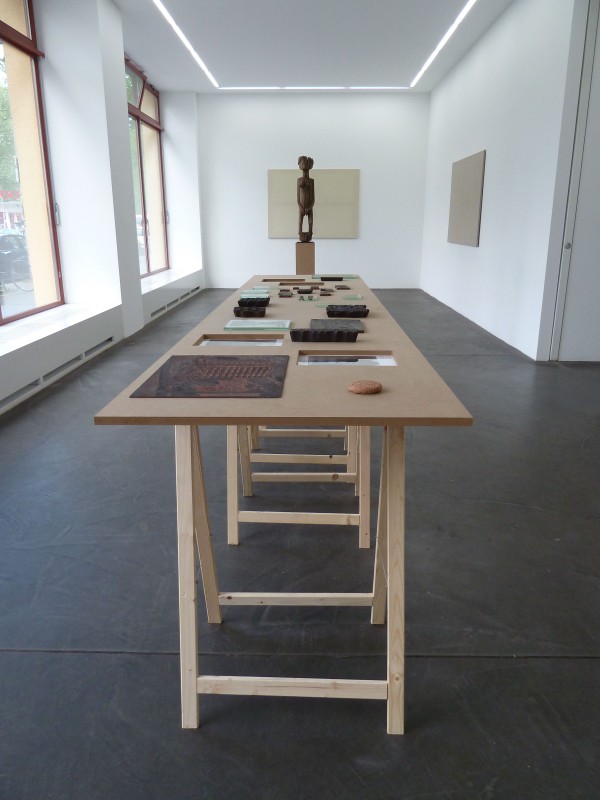
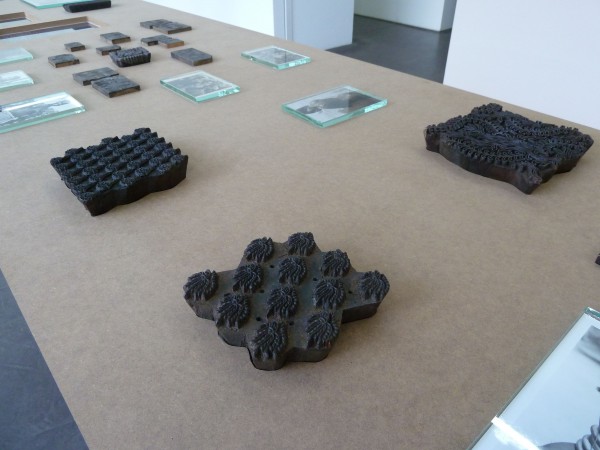
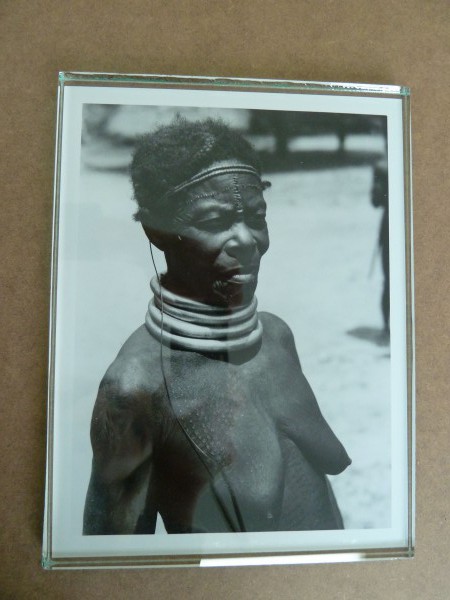
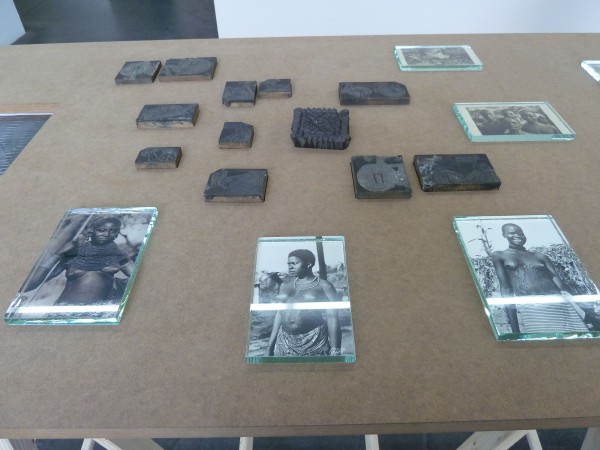
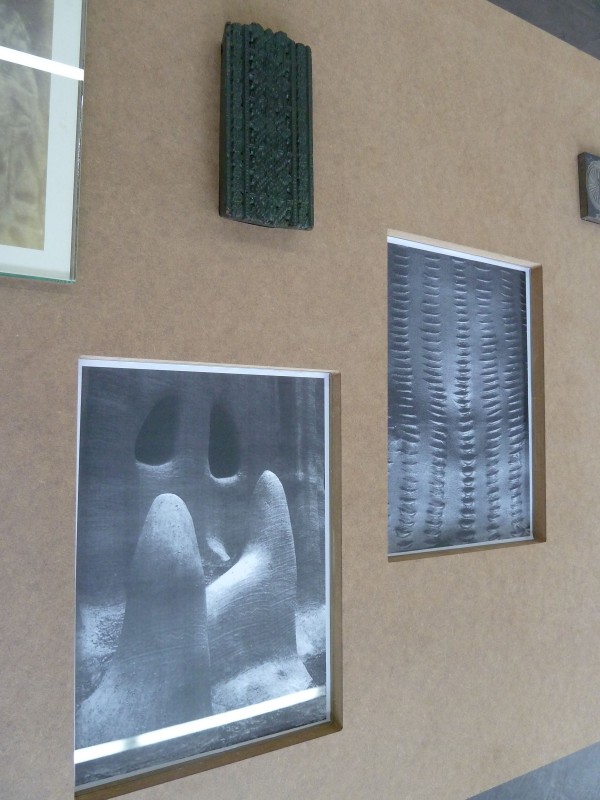
Untitled #3, 2015
Canvas and Yarn, 2015
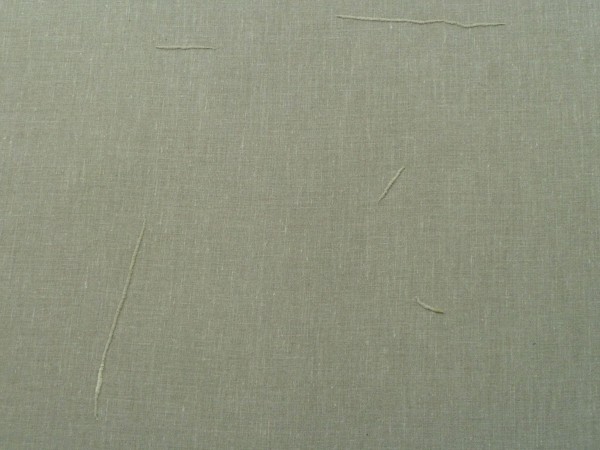


Untitled #2, 2015
Canvas and Yarn, 2015
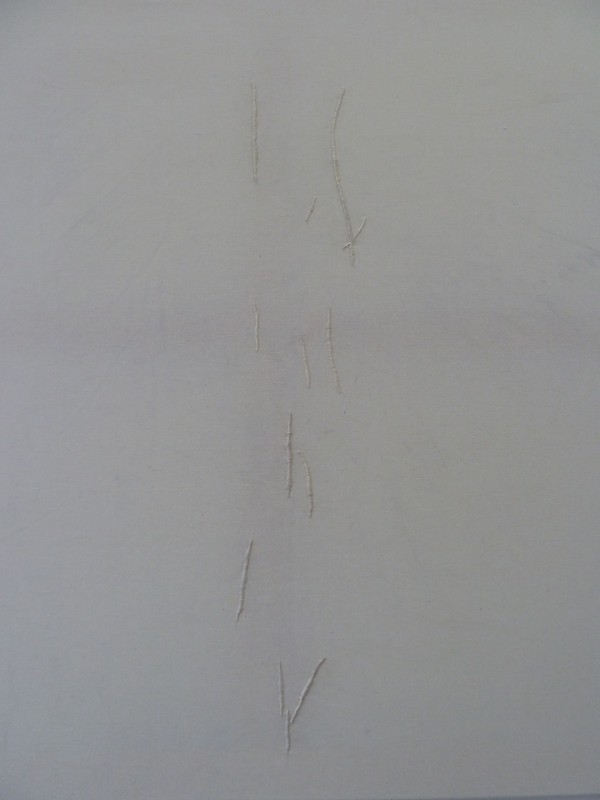
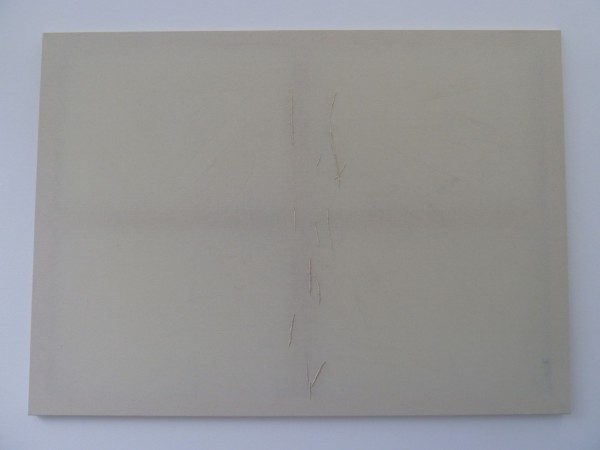
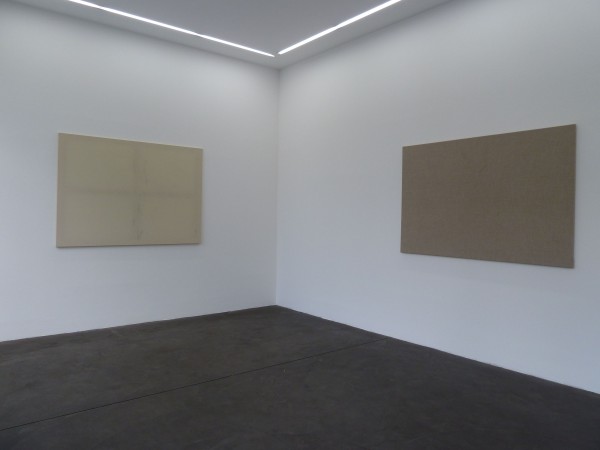
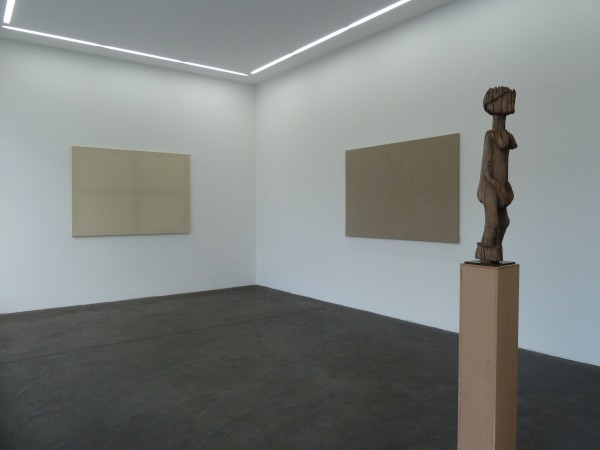
Scars Have the Strange Power to Remind Us that Our Past is Real, 2015
Wall Installation, 2015
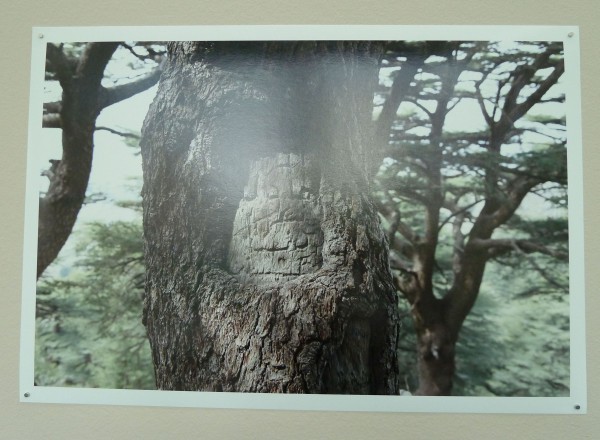
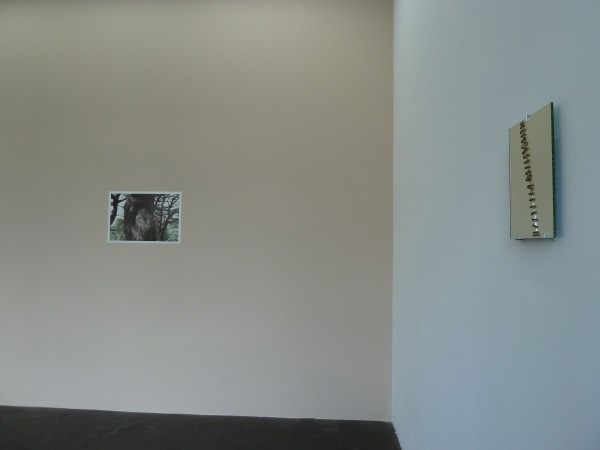
The Curtain, 2015
Photograph, 2015
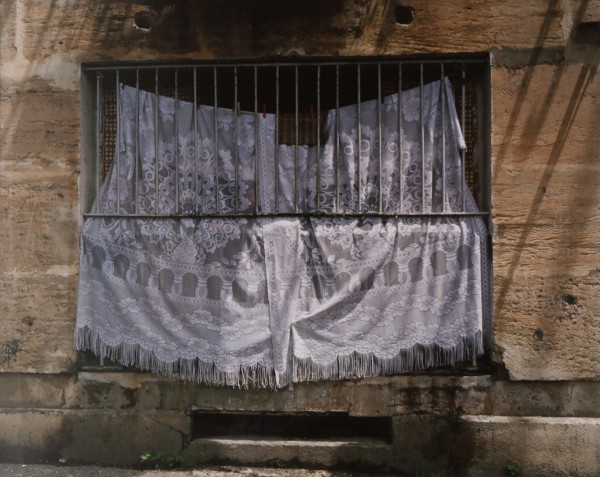
Syrian Shells, 2015
Installation, Deformed Syrian Bullet Capsule, 2015
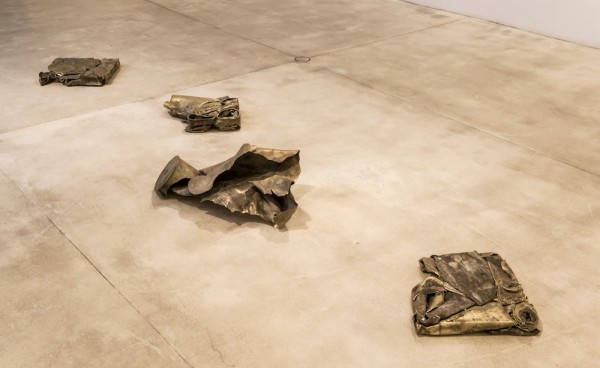
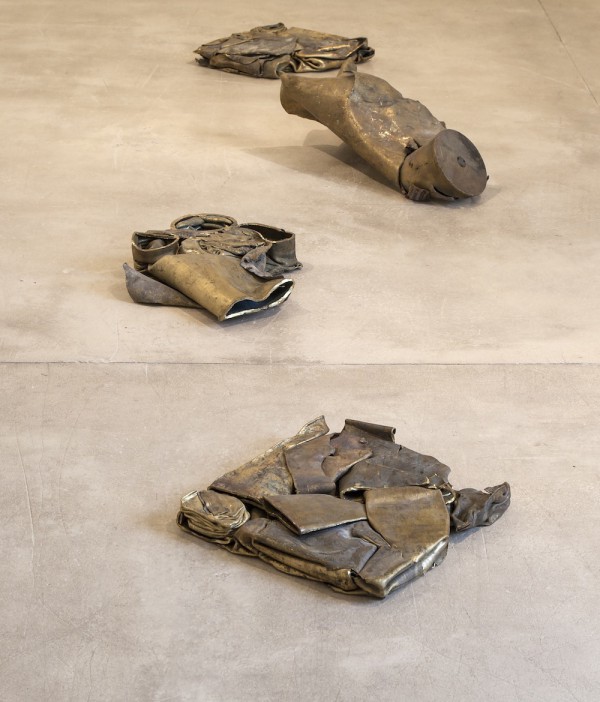

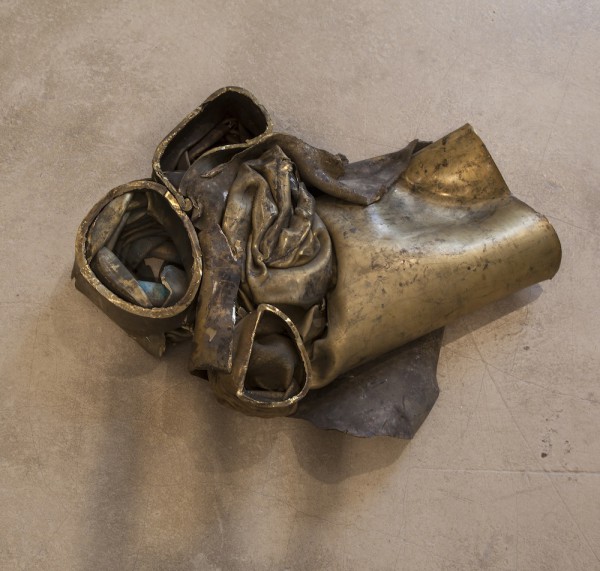
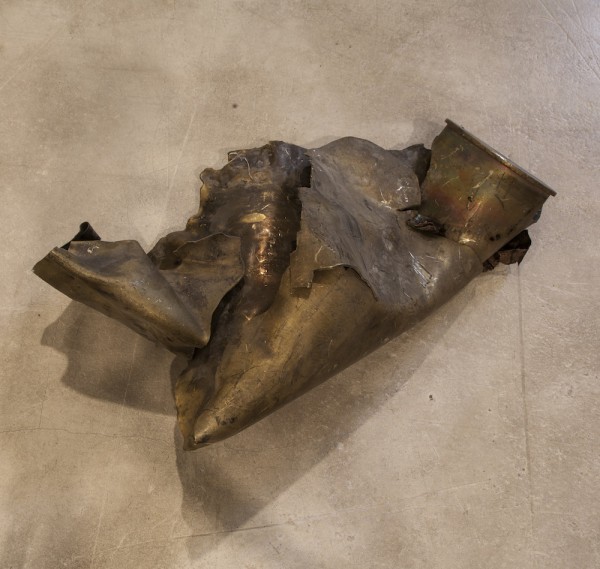
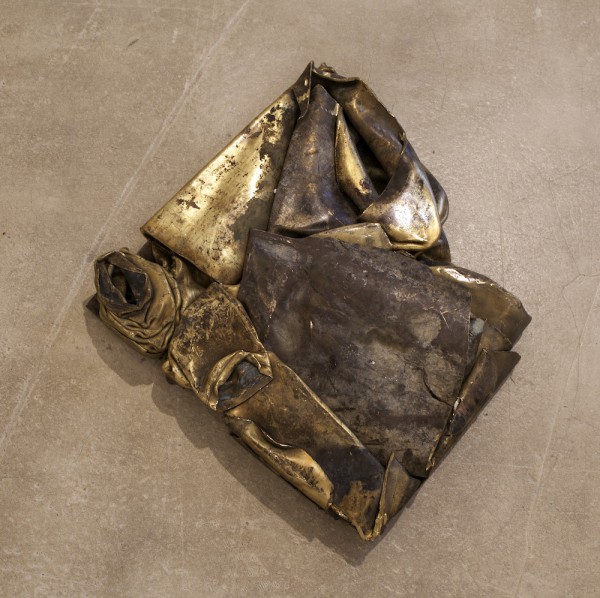
We Have Never Been Modern, 2015
Lightbox, 2015
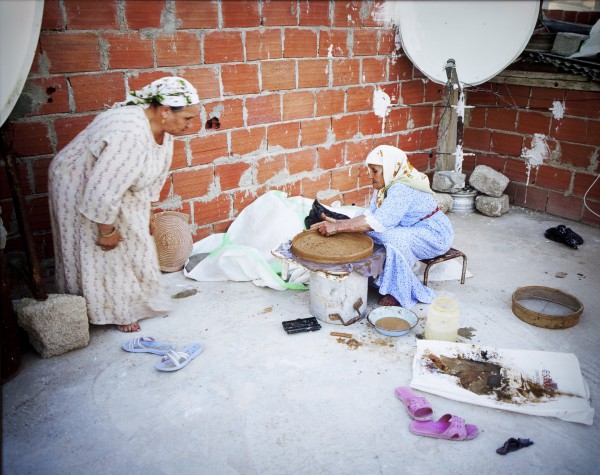
Untitled, 2014

© Axel Schneider
Collage, paper, photographs, graphics from old books
Untitled, 2014
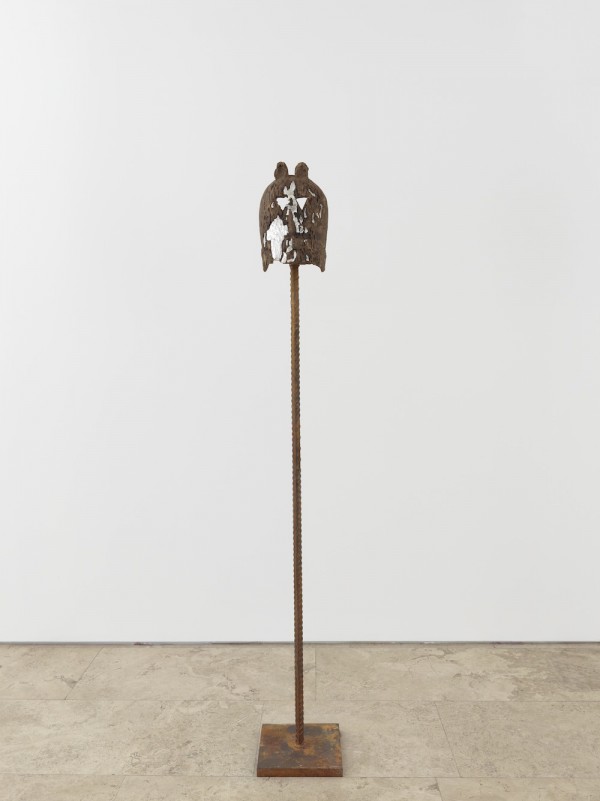
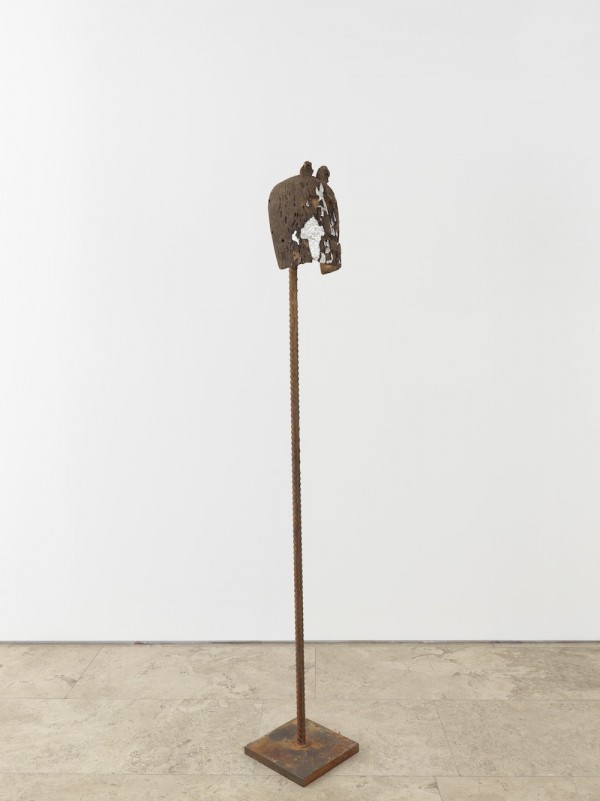
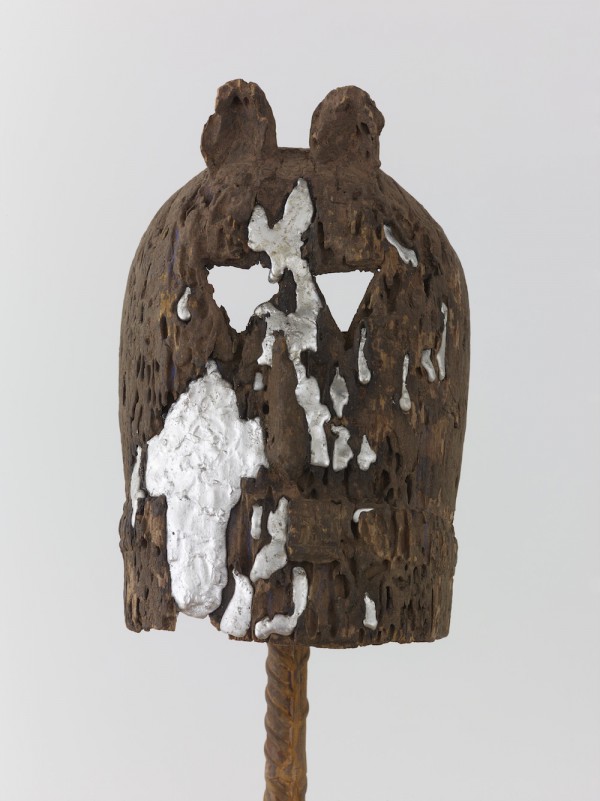
(c) Elisabeth Bernstein
Untitled, 2014
Sculpture and Collage, 2014
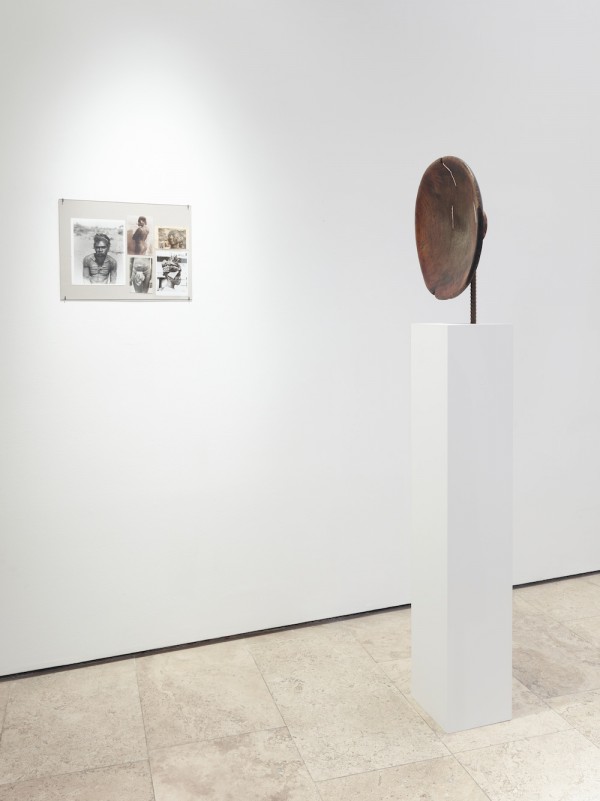
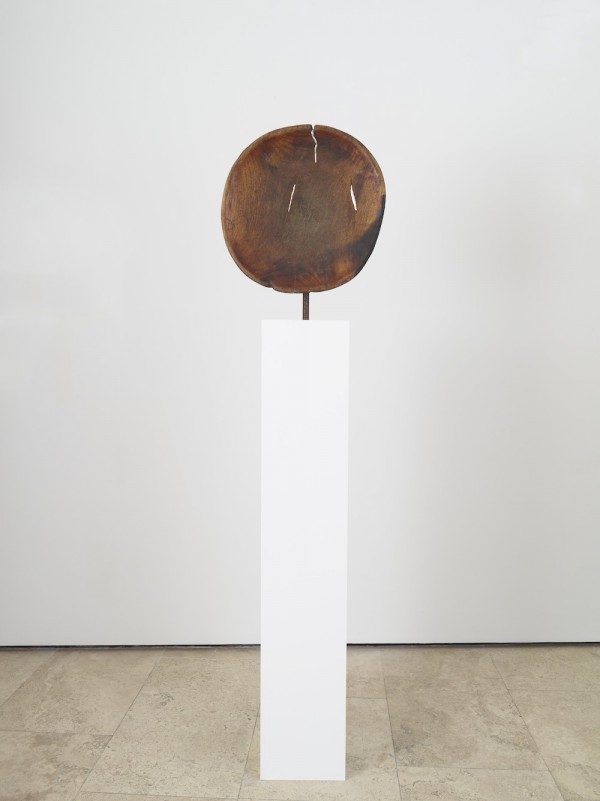
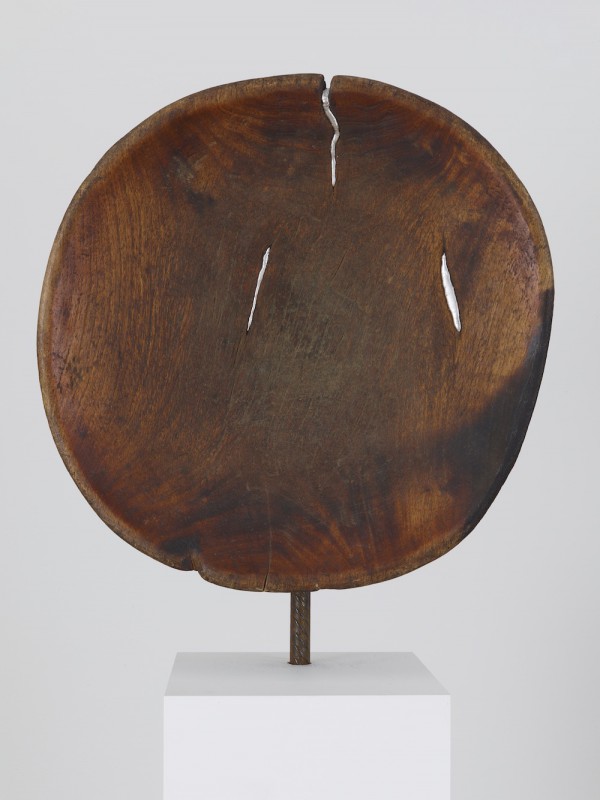
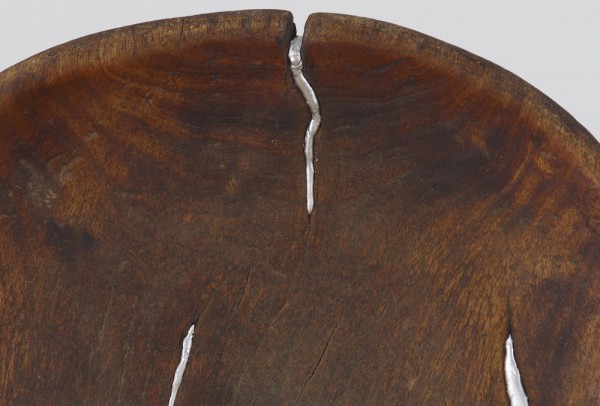
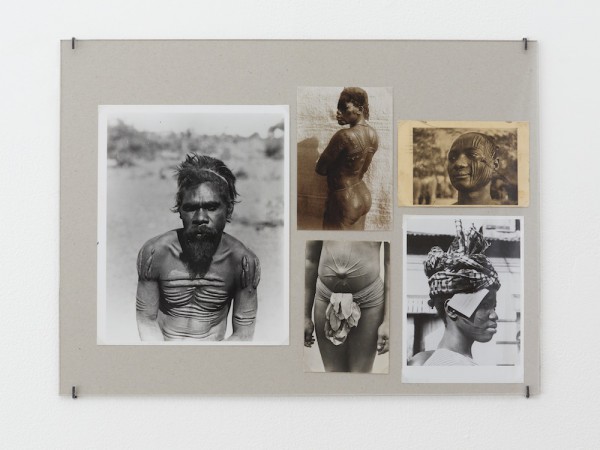
(c) Elisabeth Bernstein
Untitled, 2014
Installation, 2014
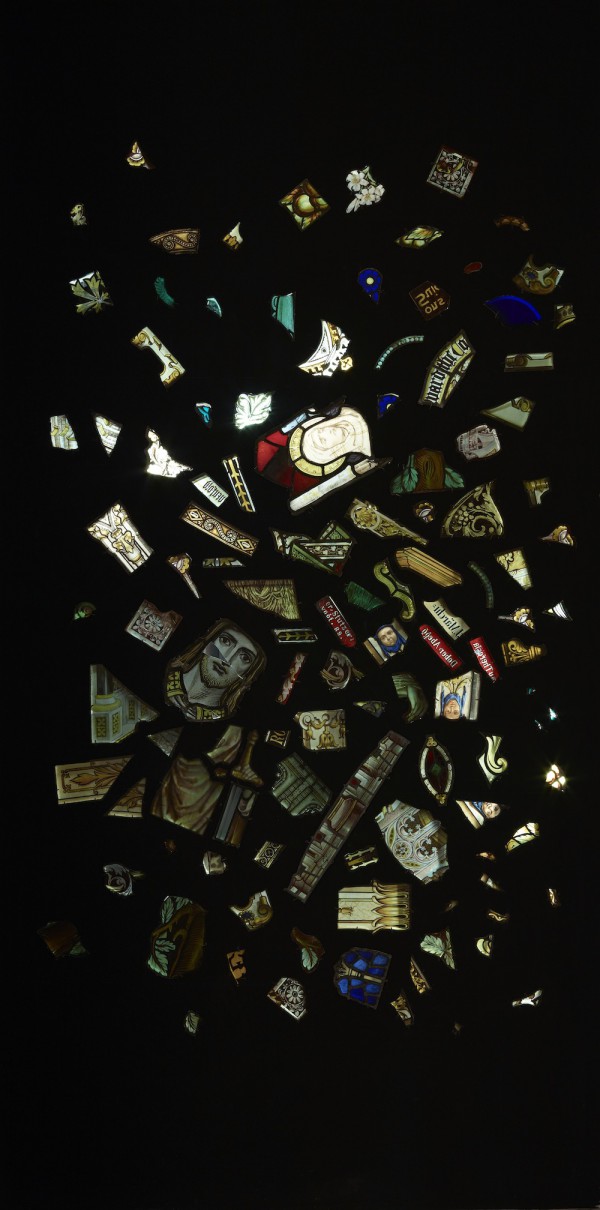
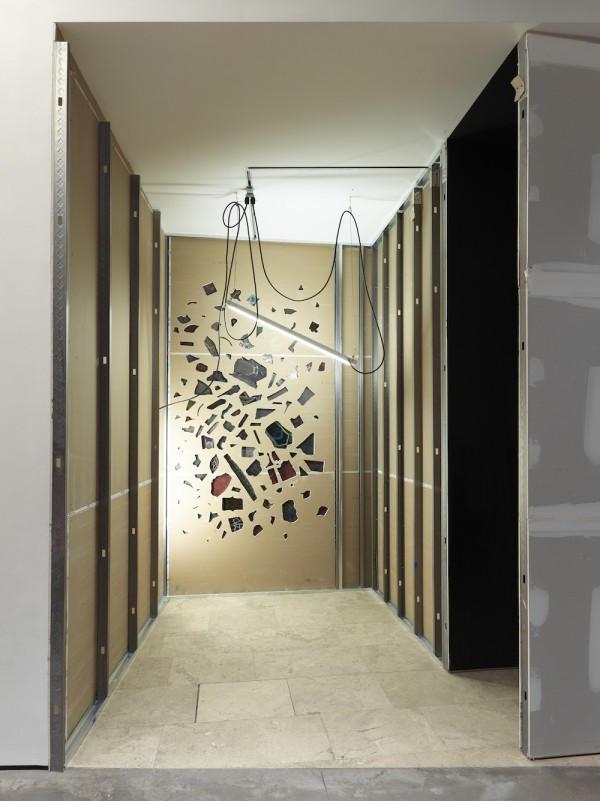
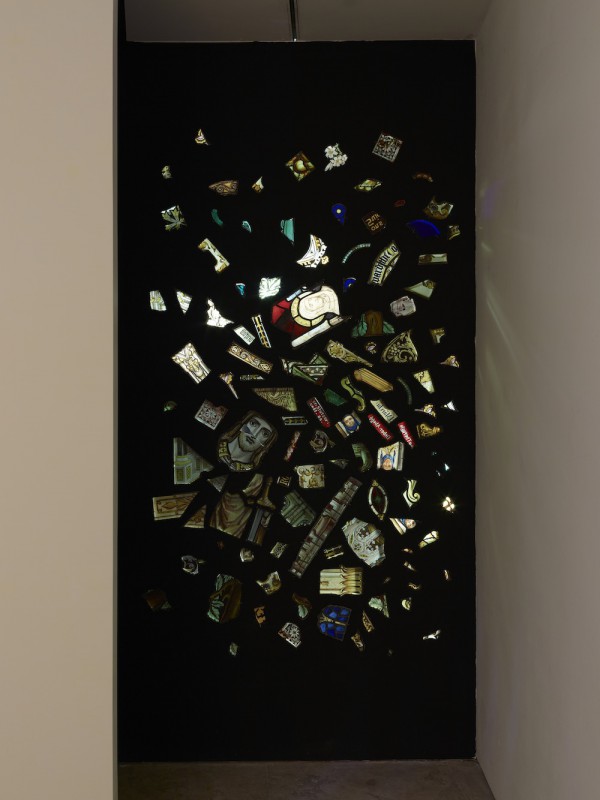
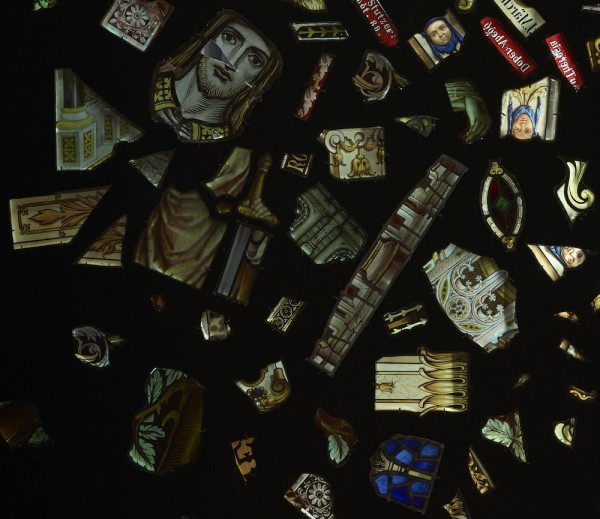
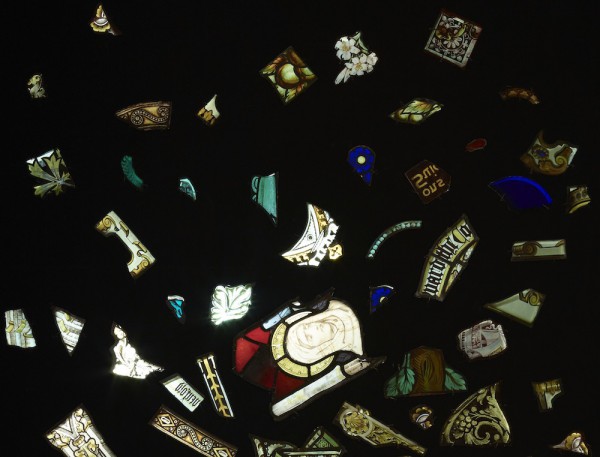
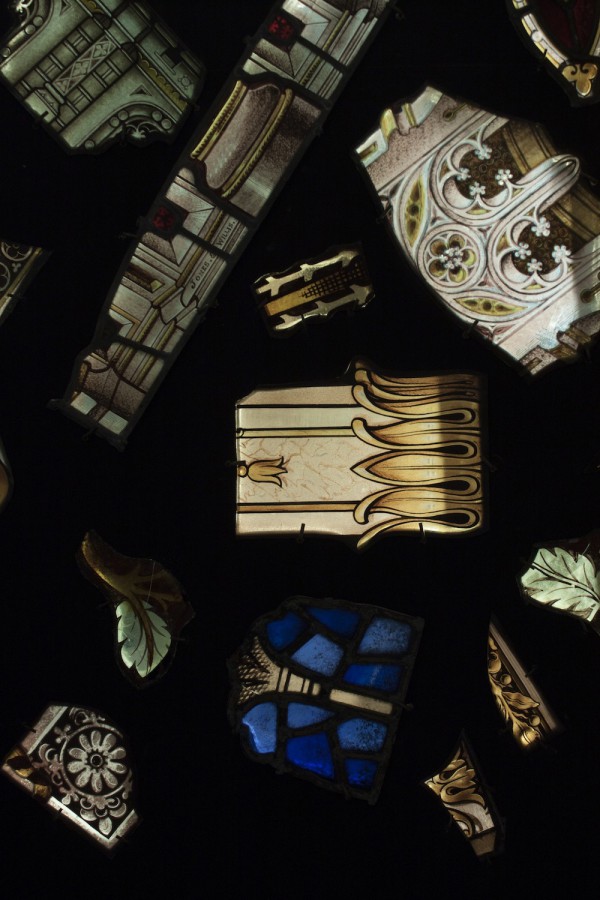
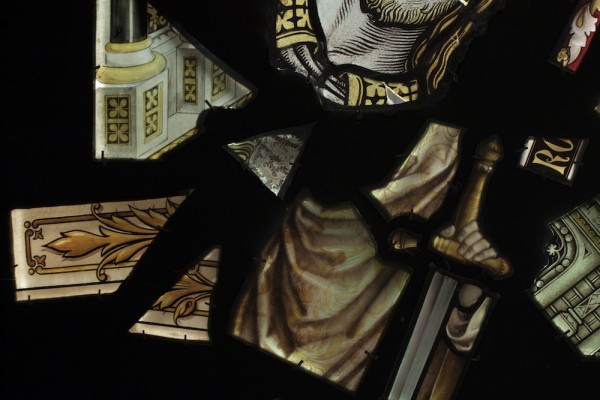
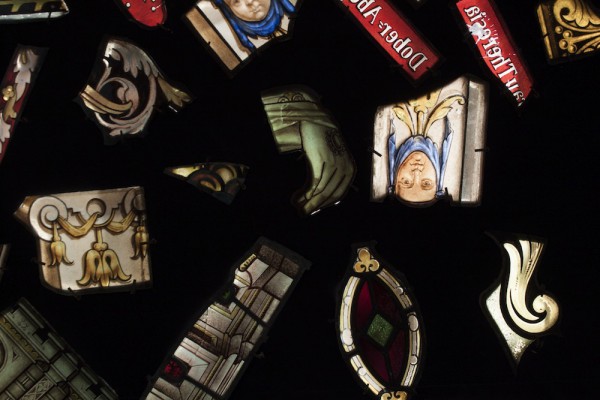
(c) Elisabeth Bernstein
Injury Reappropriated, 2014
Wall Installation, 2014
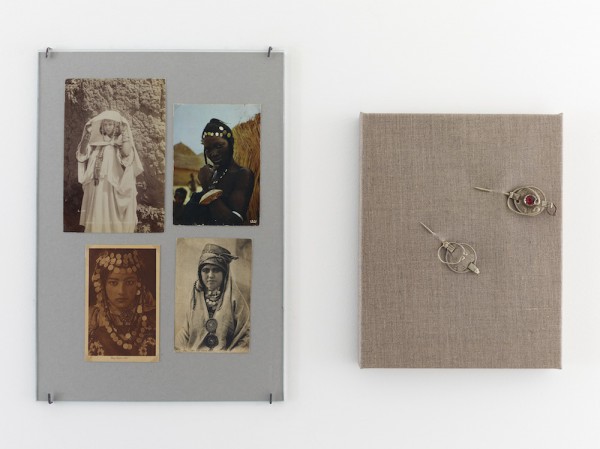
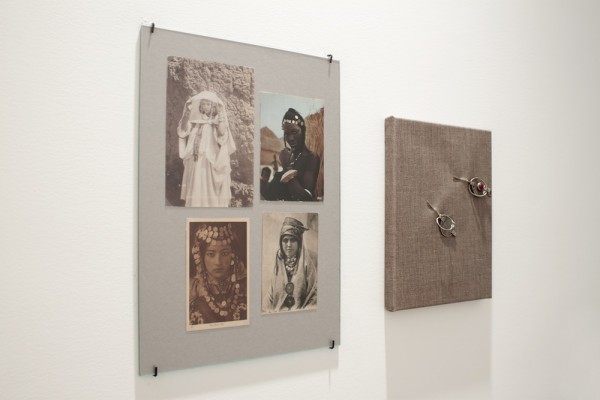
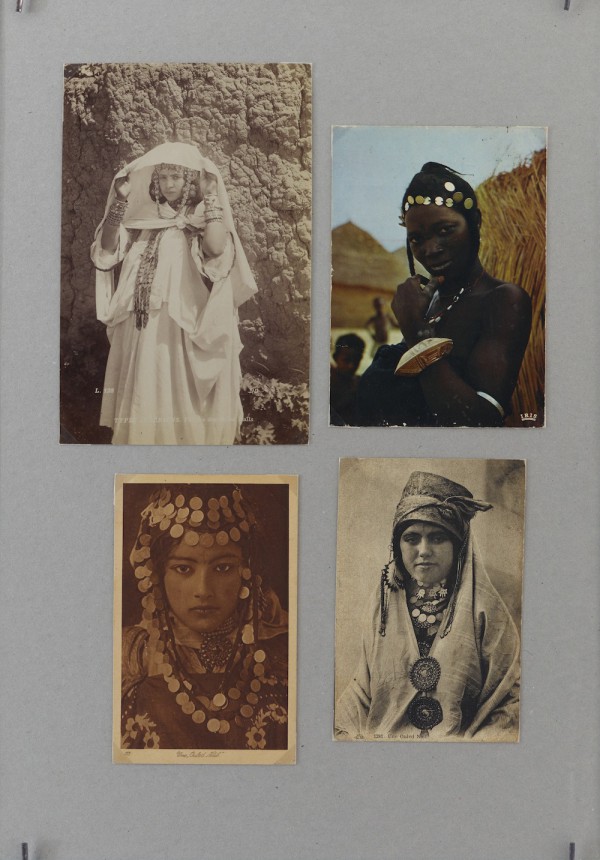
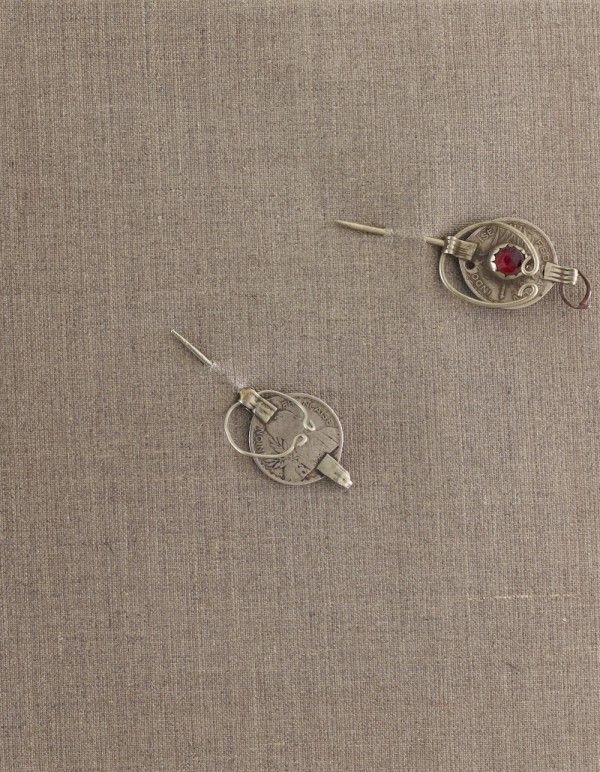
(c) Elisabeth Bernstein
Wall Installation, 2016

© Axel Schneider
Sculpture, canvas, ancient Berber Brooches
Untitled, 2014
Sculpture, 2014
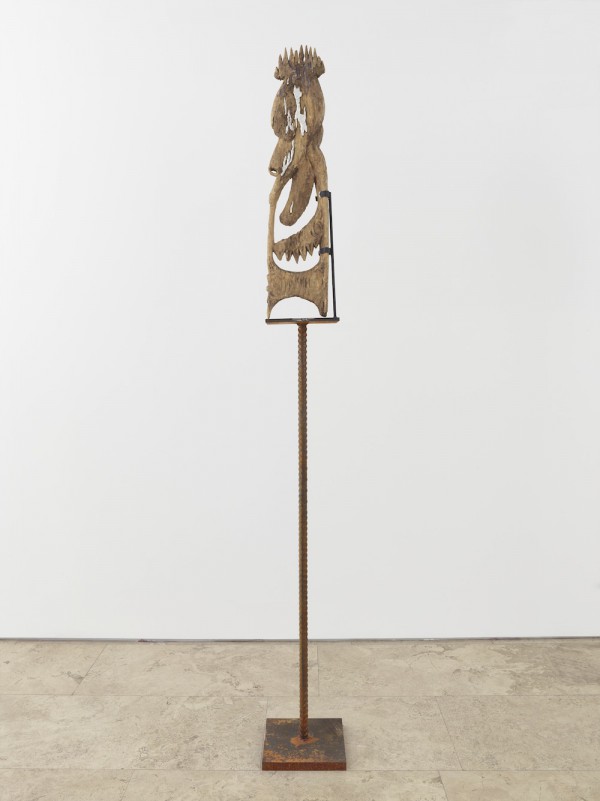
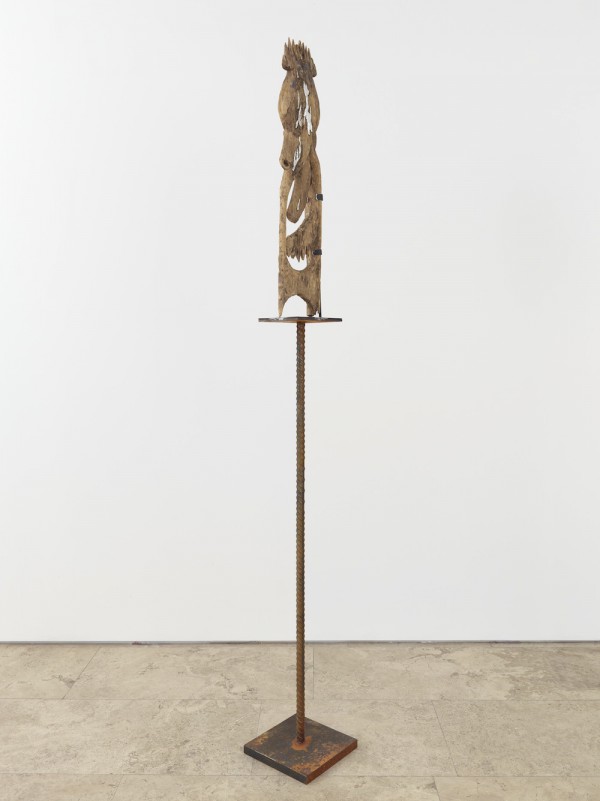
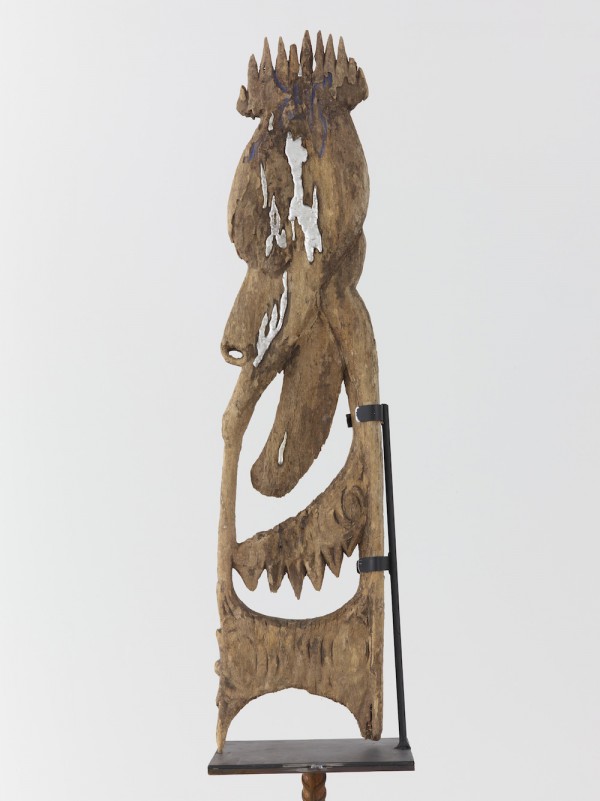
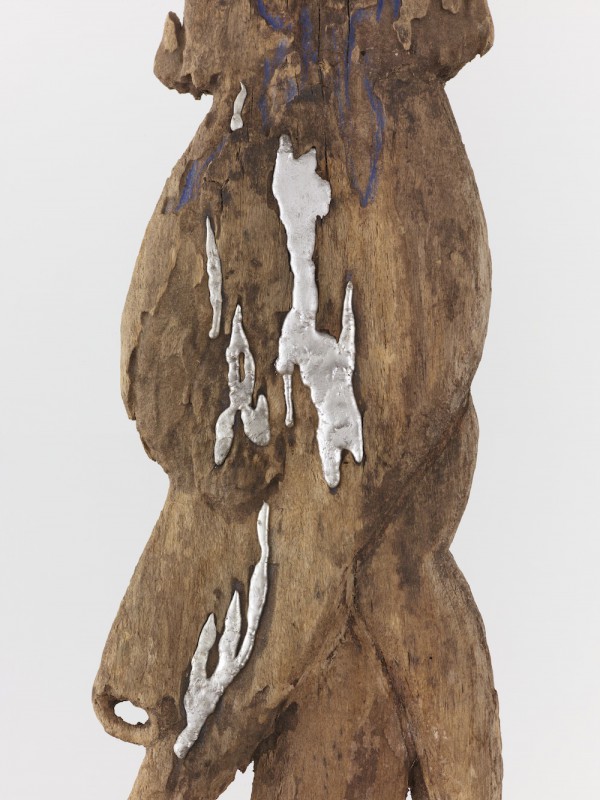
(c) Elisabeth Bernstein
Asesinos ! Asesinos !, 2014
Installation, 2014

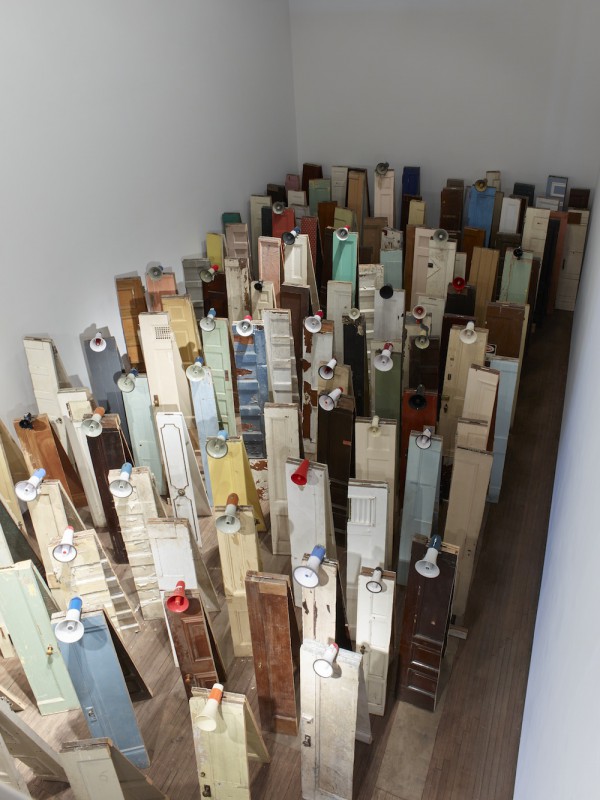
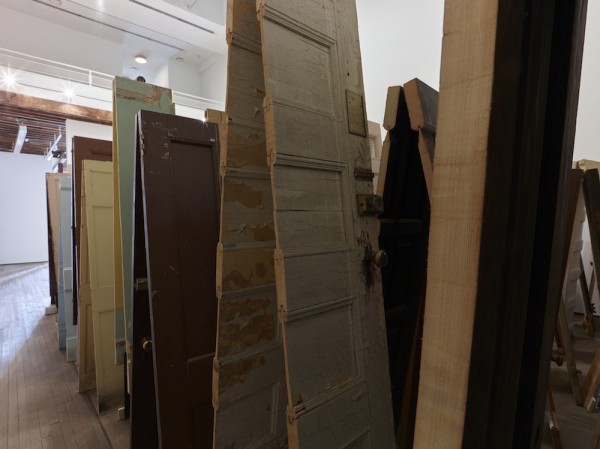
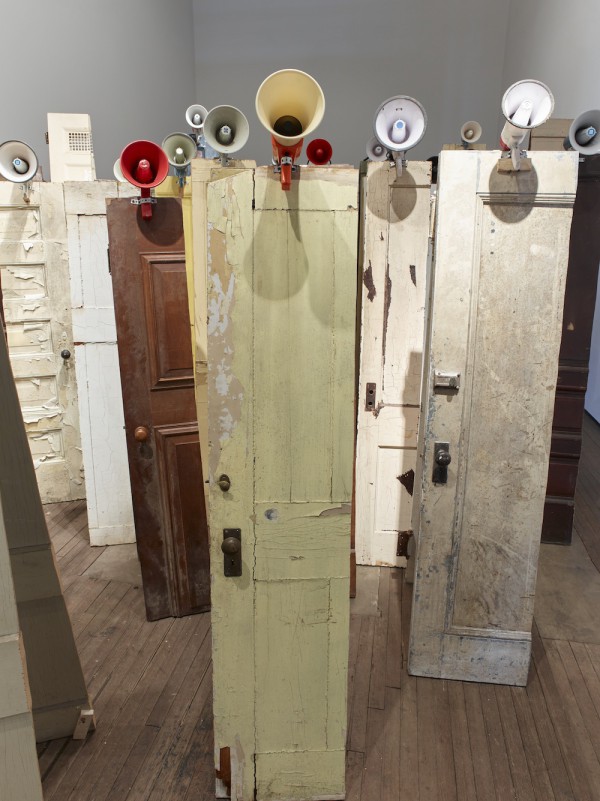
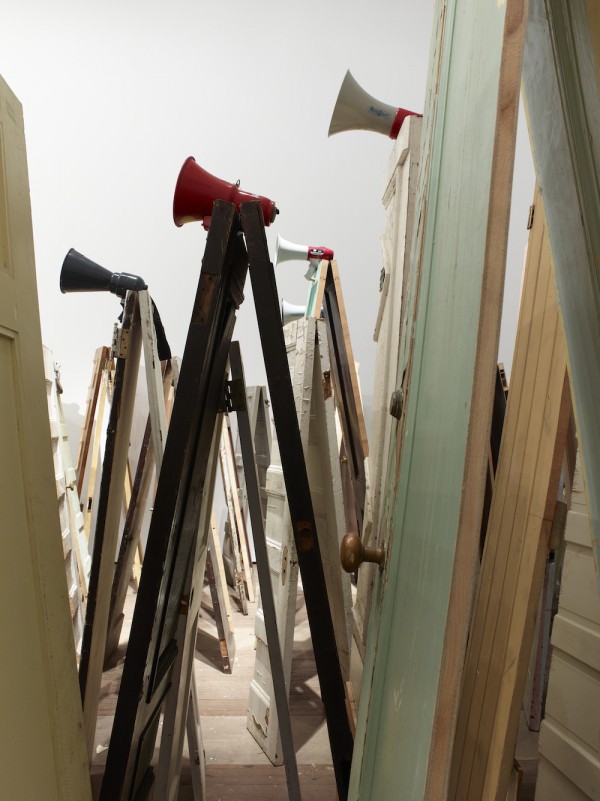
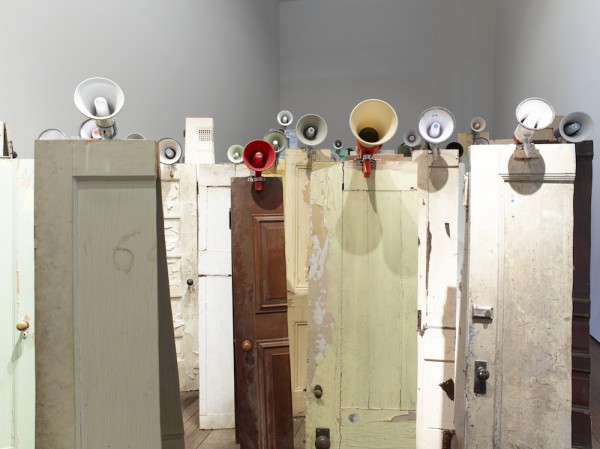
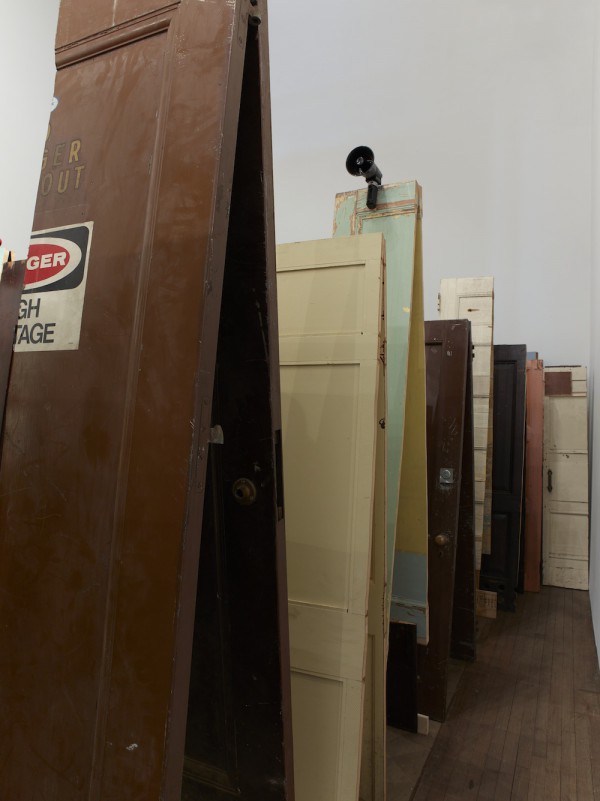
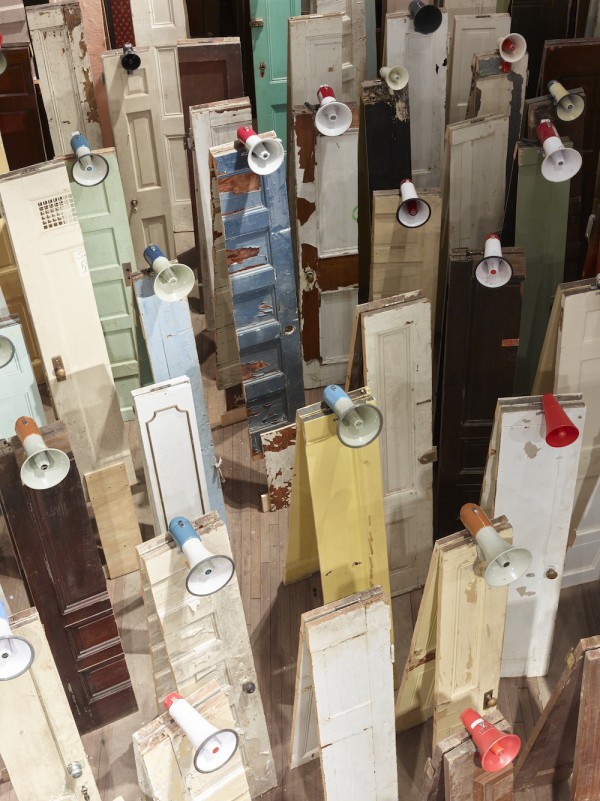
(c) Elisabeth Bernstein
Installation, 2015 at The Injuries are here, Musée Cantonal des Beaux Arts de Lausanne, Lausanne
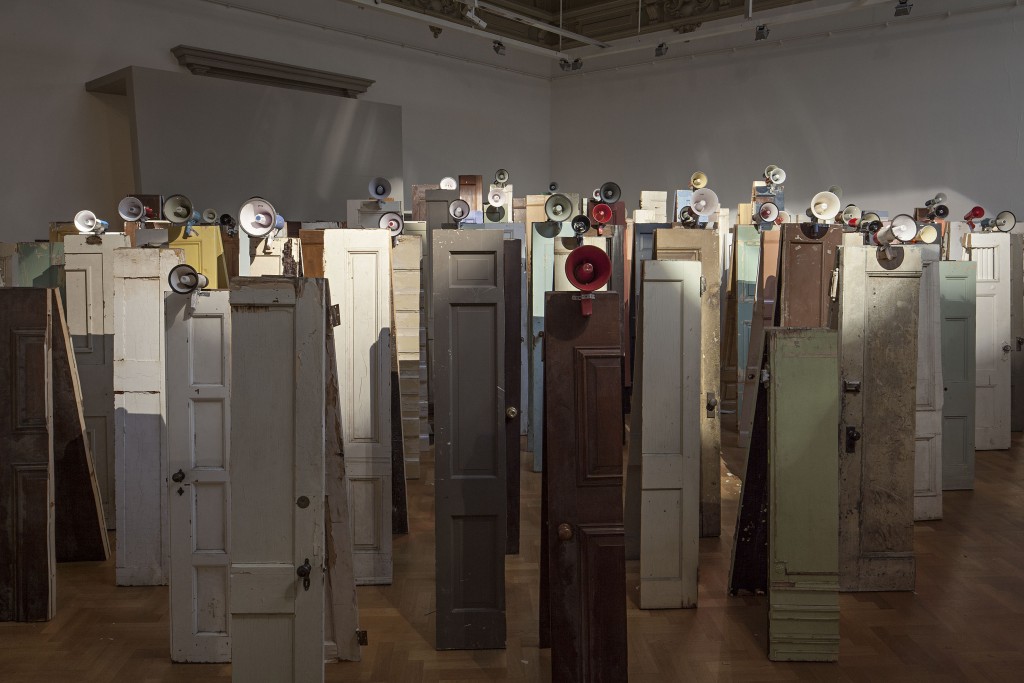
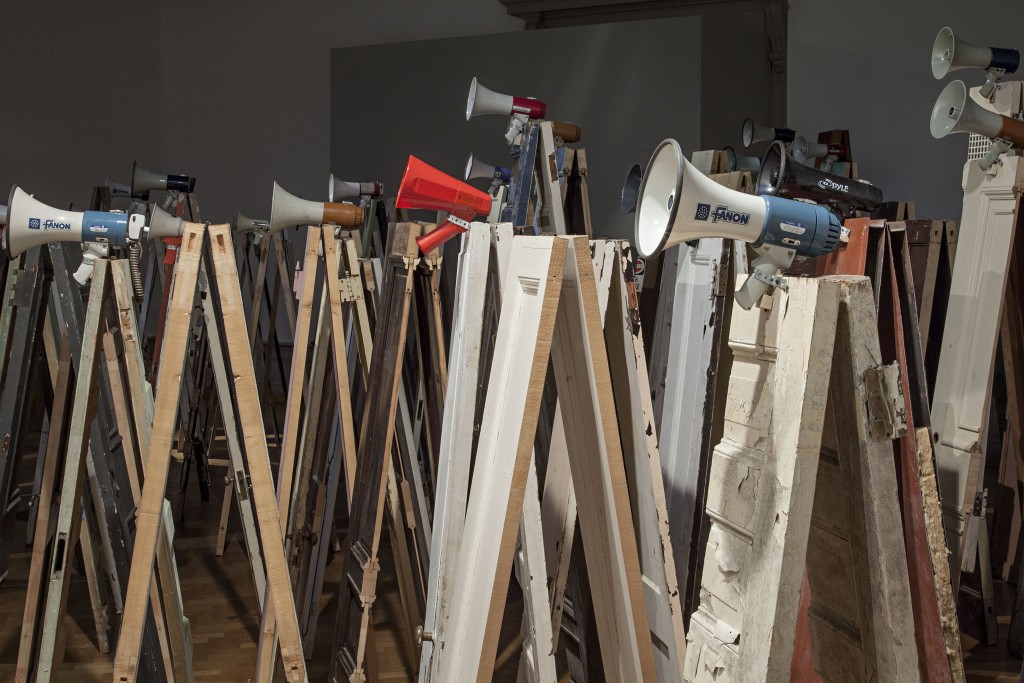
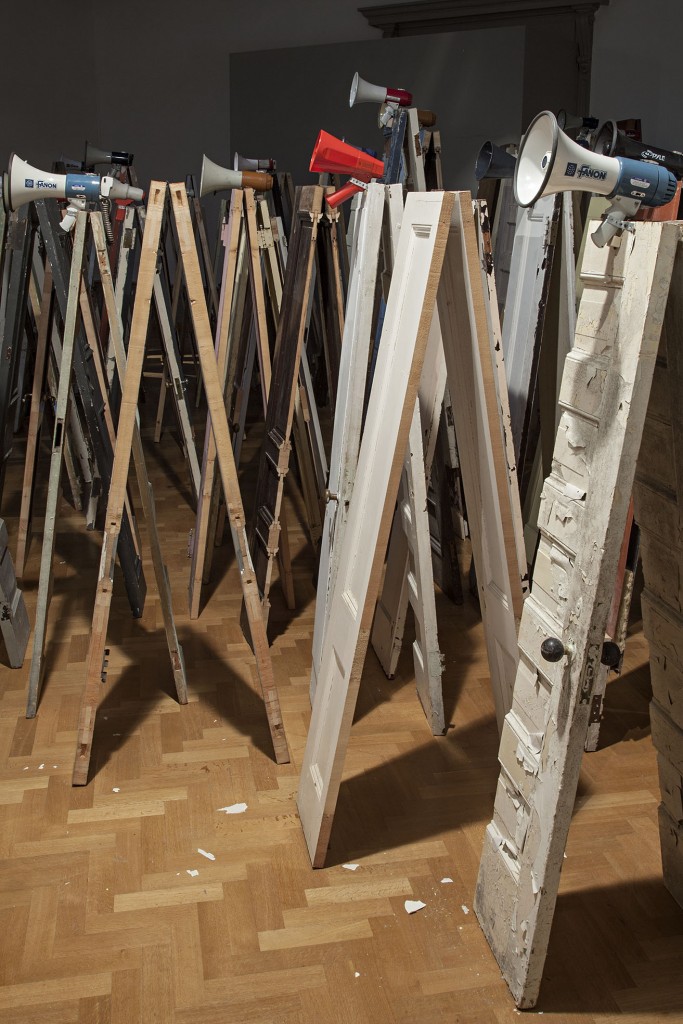
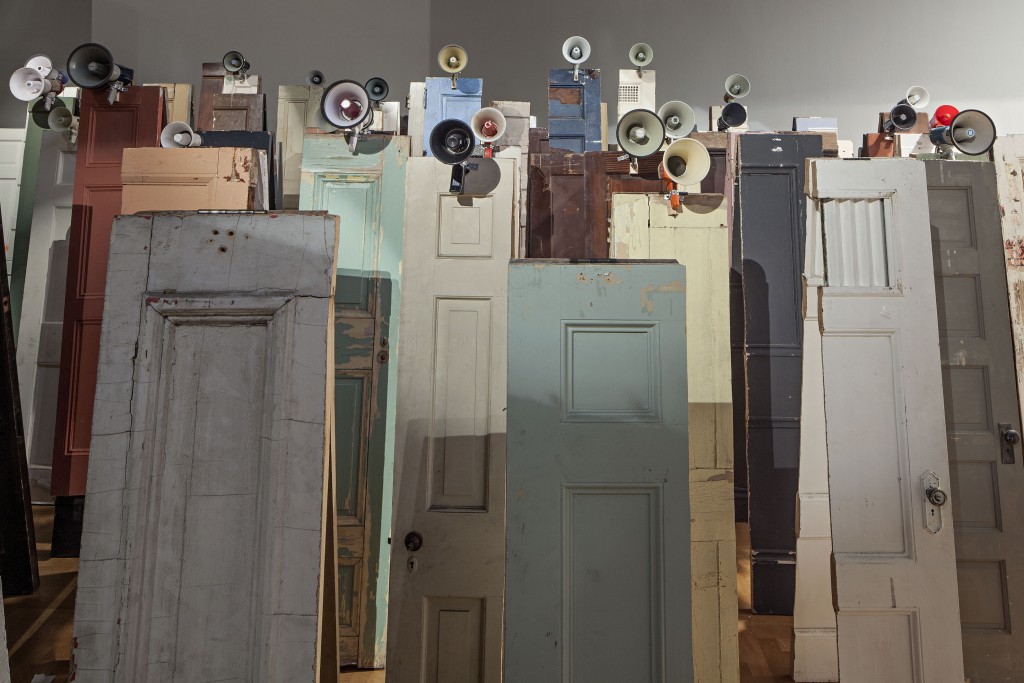
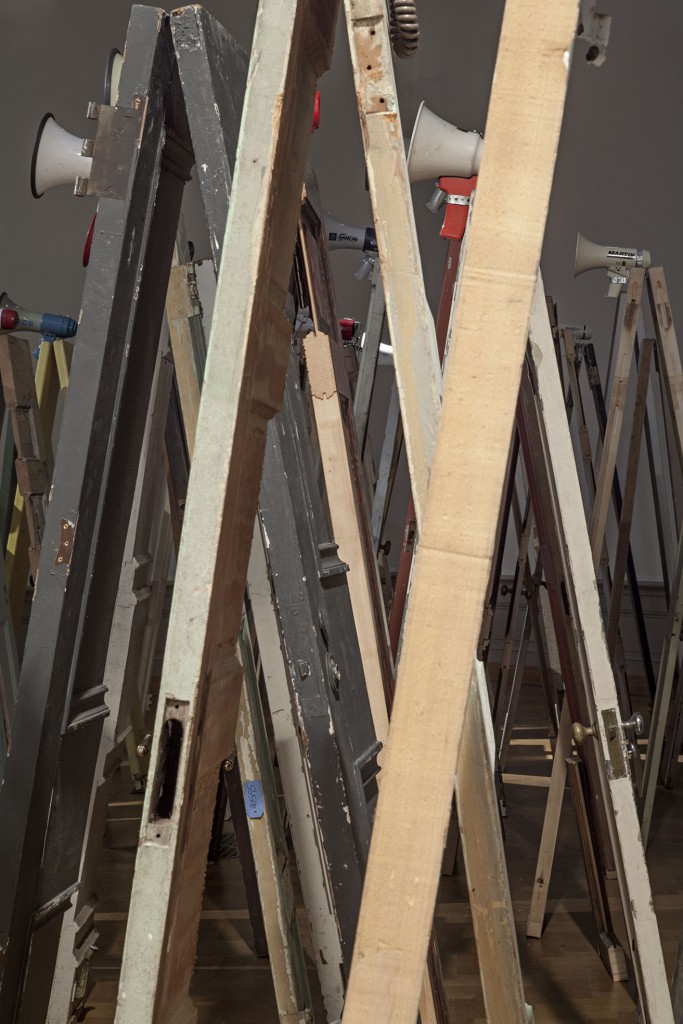
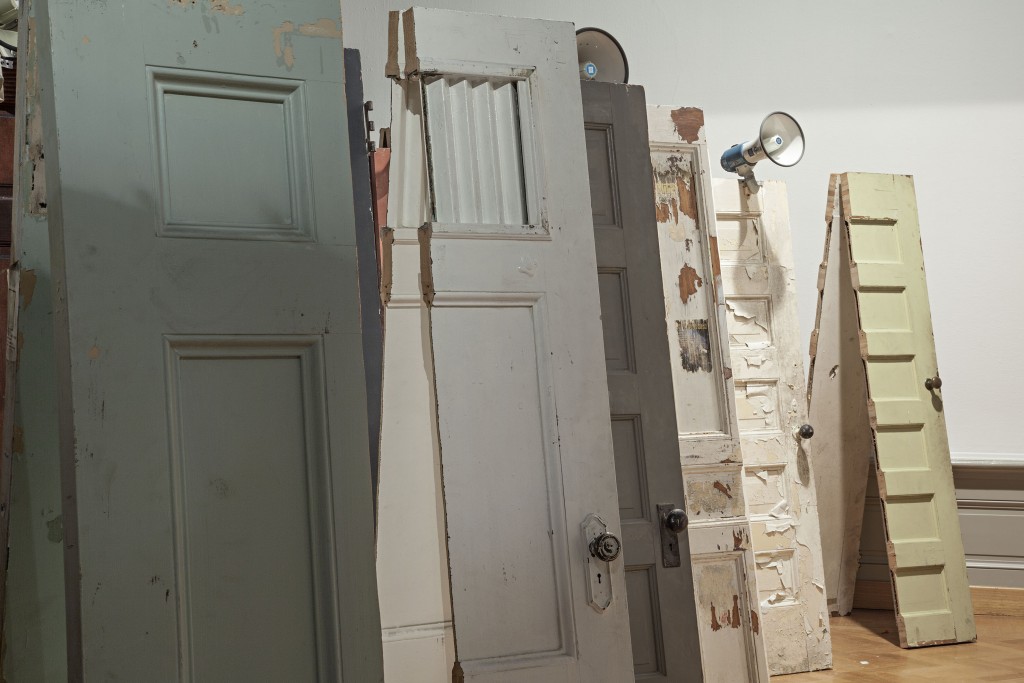
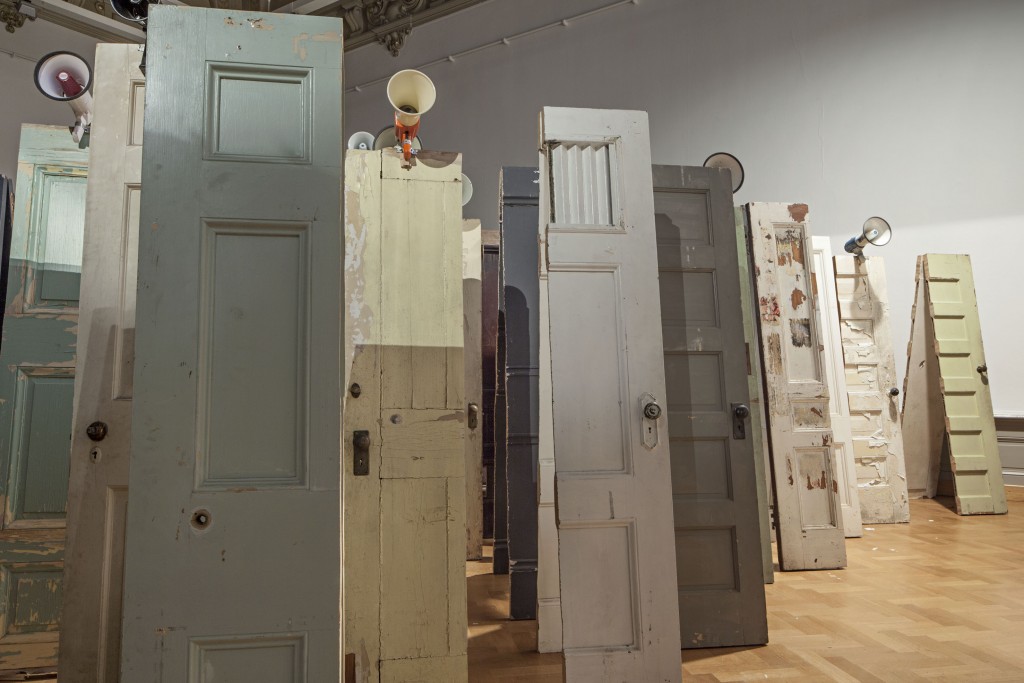
Chaos + Repair = Universe, 2014
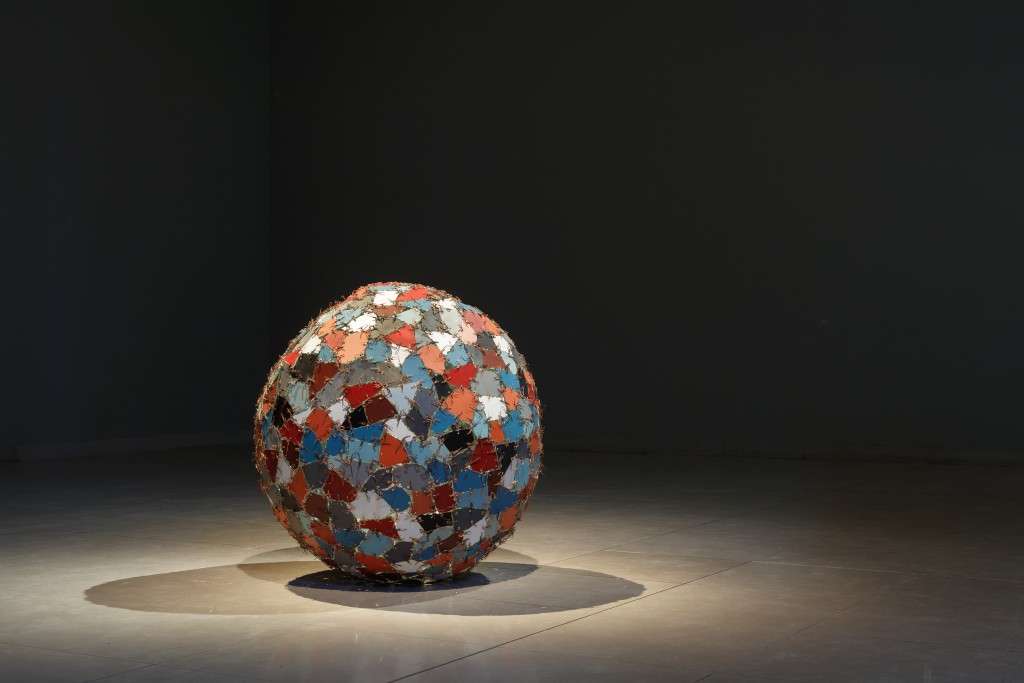
Sculpture, mirror fragments, metal wires
© Axel Schneider
We Want to be Modern, 2014
Installation, 2014
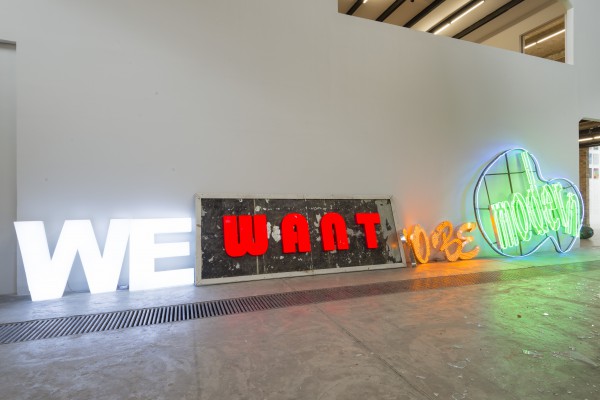
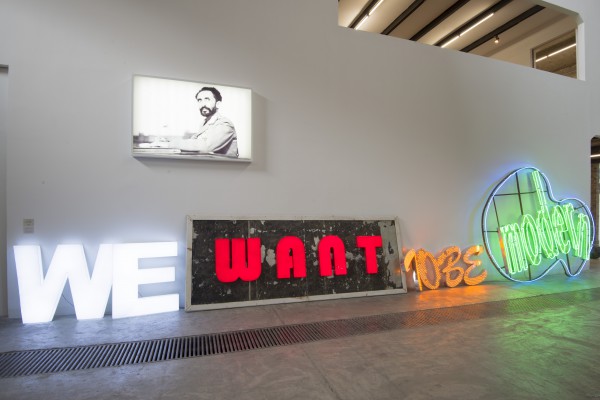
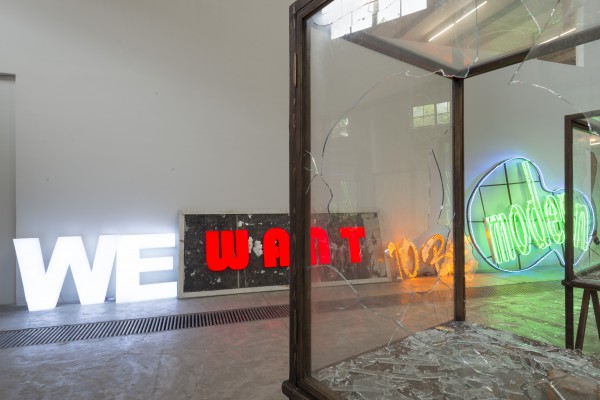
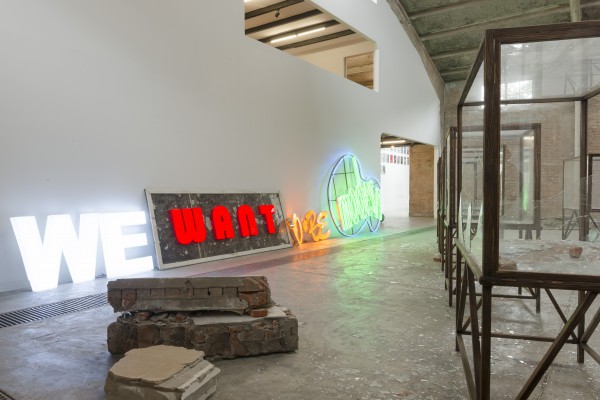
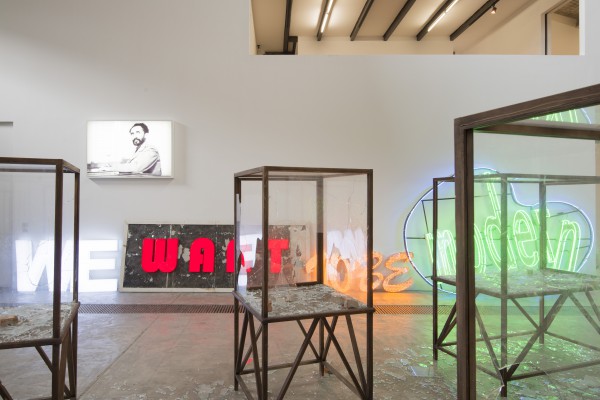
Arab Spring, 2014
Installation, 2014
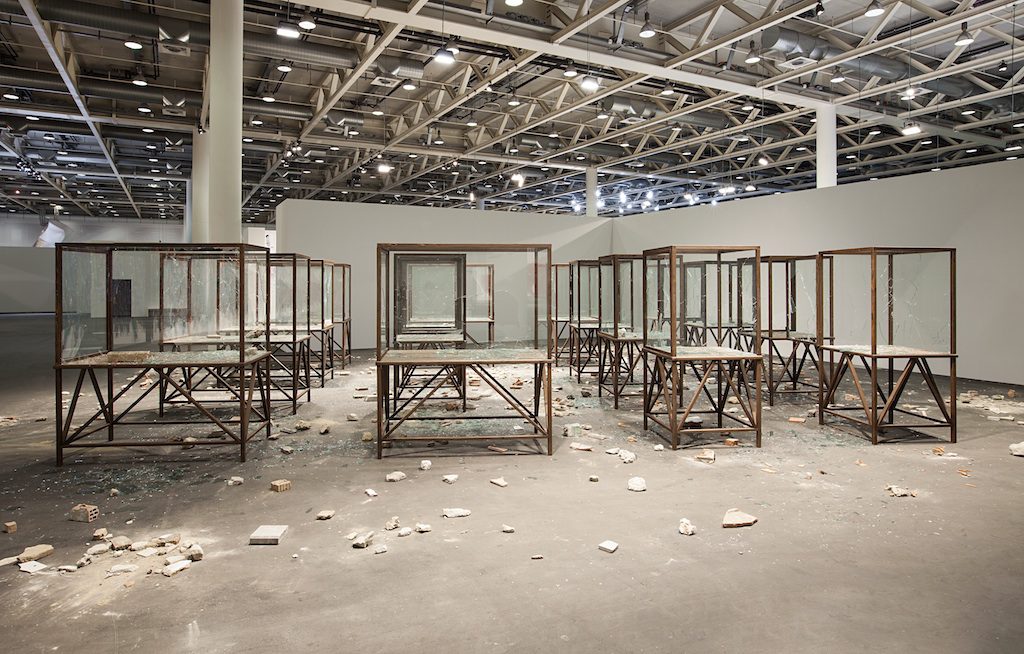
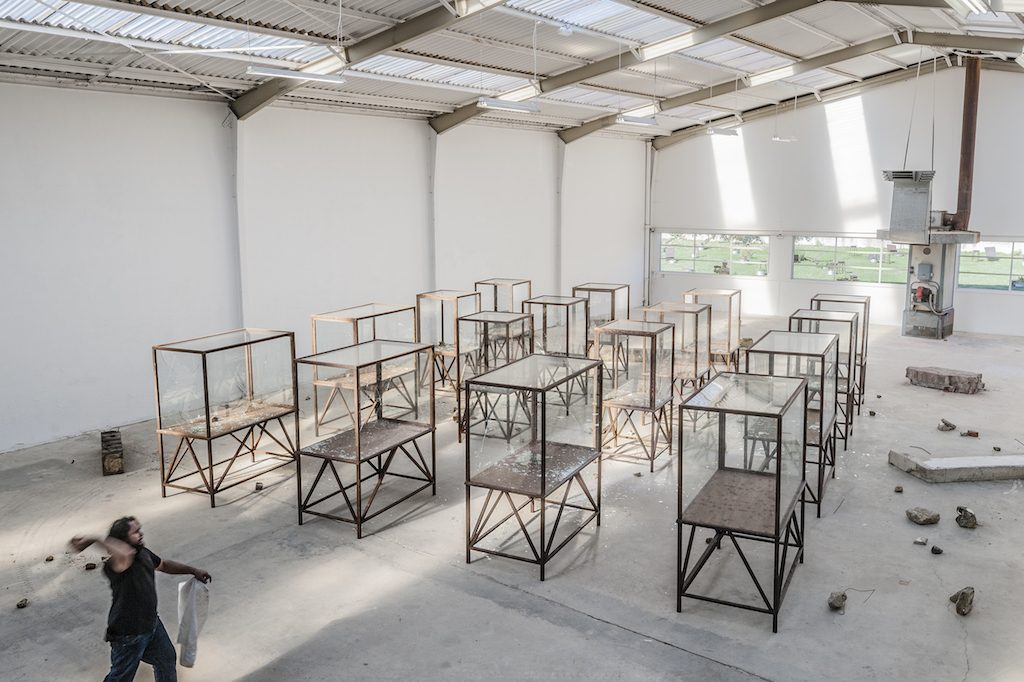
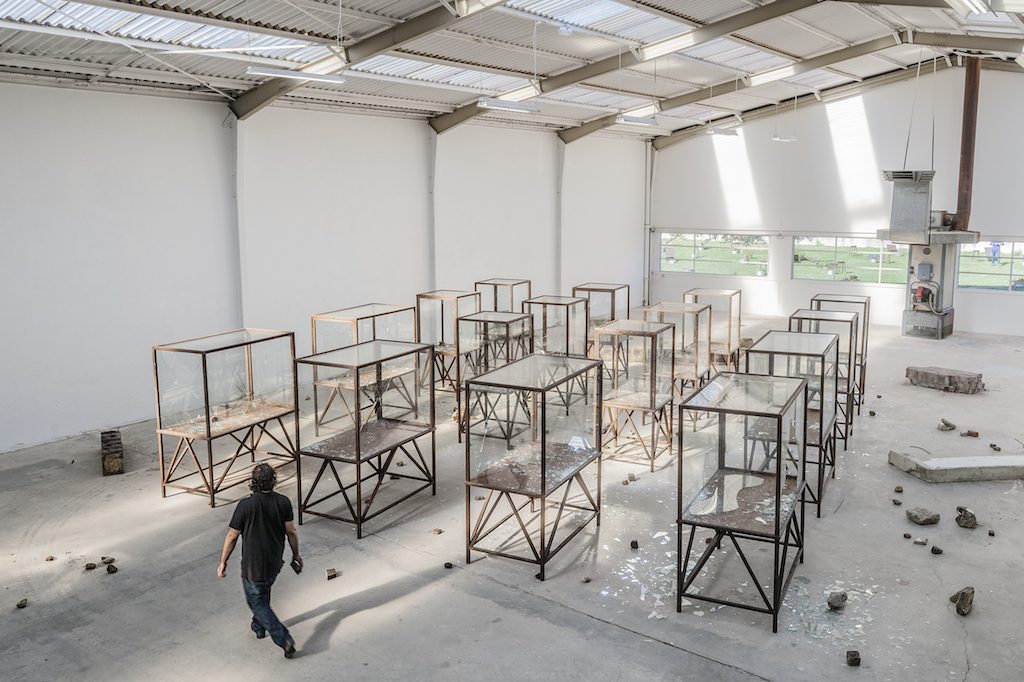
Culture Colonizes Nature, 2014
Installation, 2014
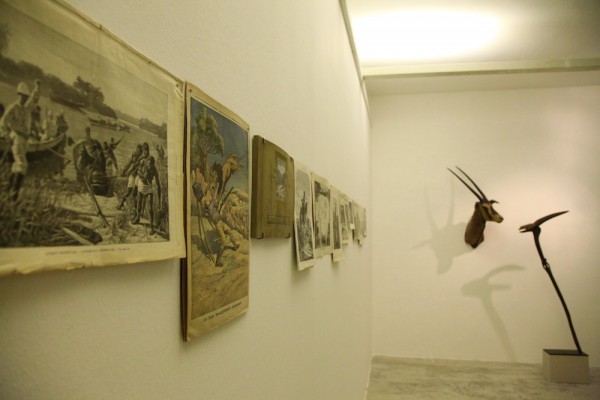
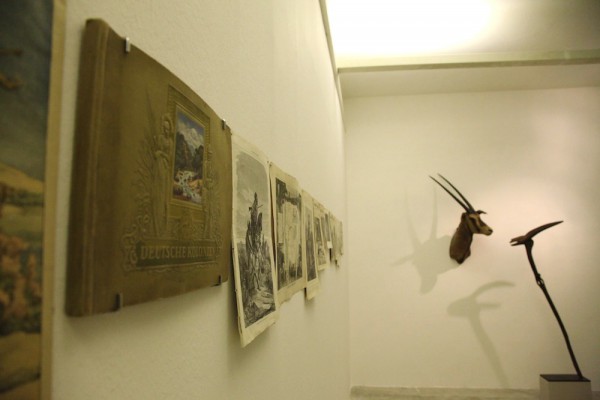
Endless Loop, 2014
Sculpture, 2014
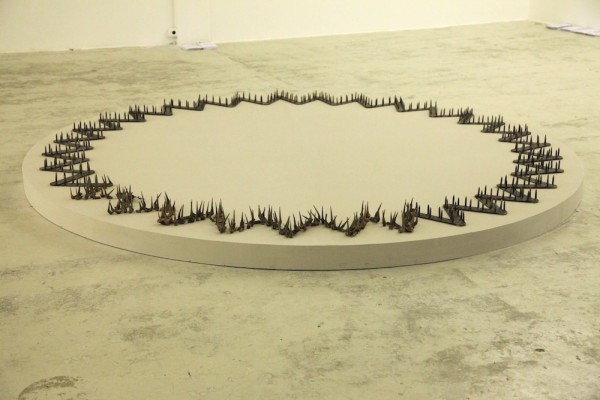
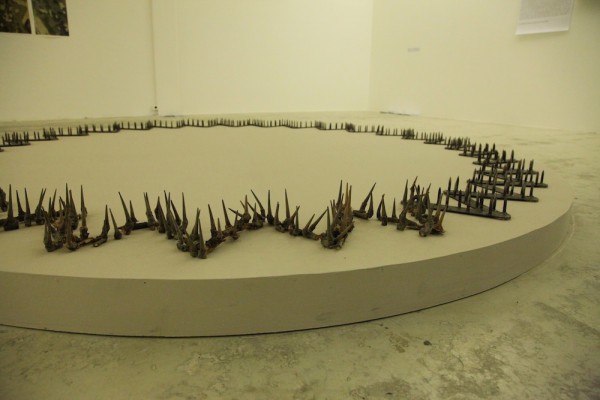
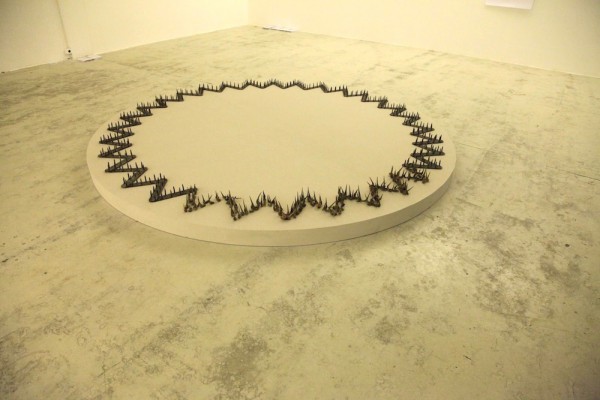
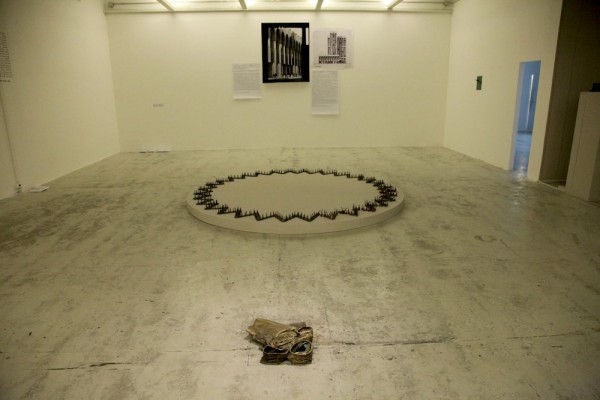
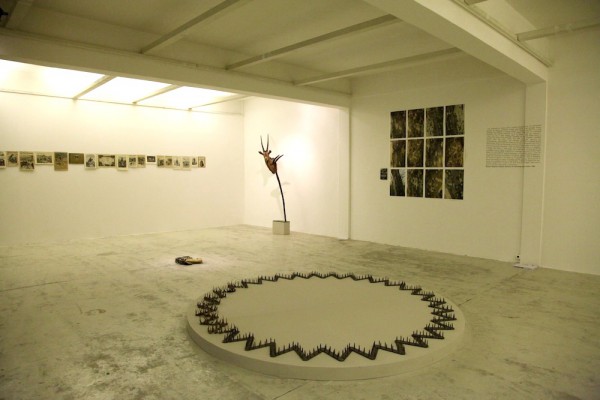
Traditional Repair, Immaterial Injury, 2014
Sculpture in Situ, 2014
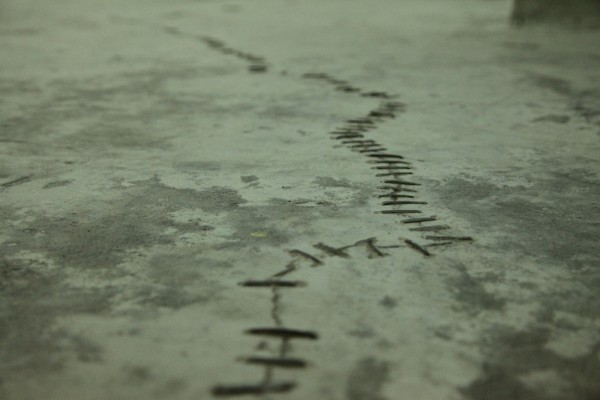
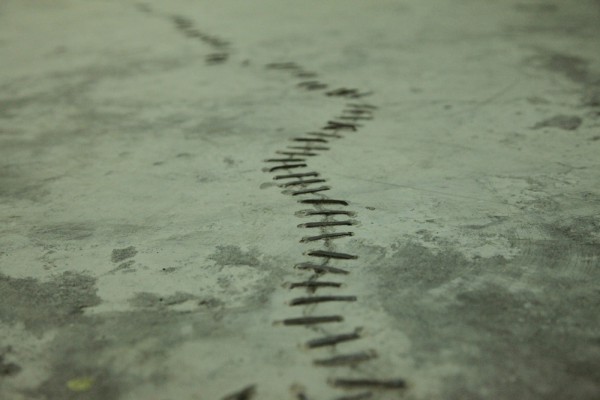
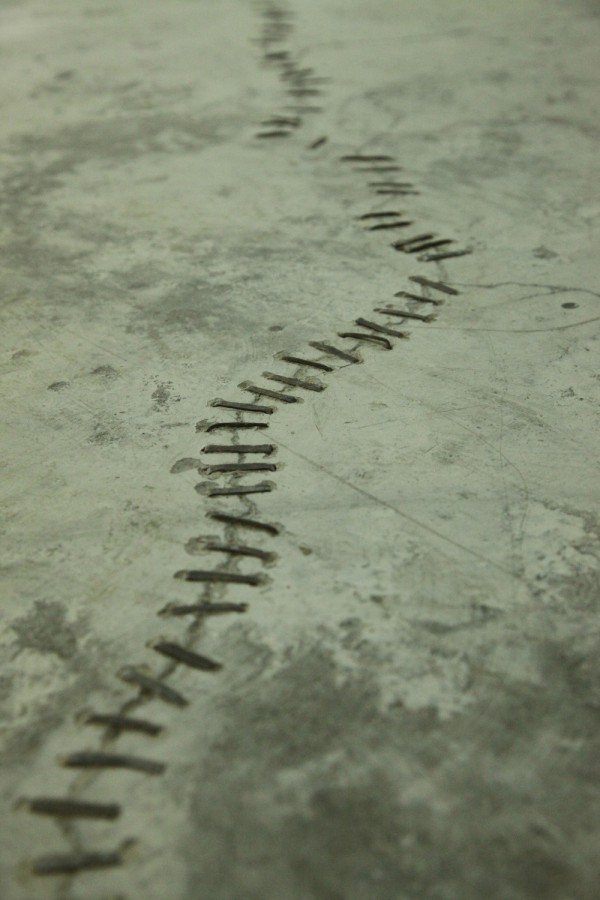
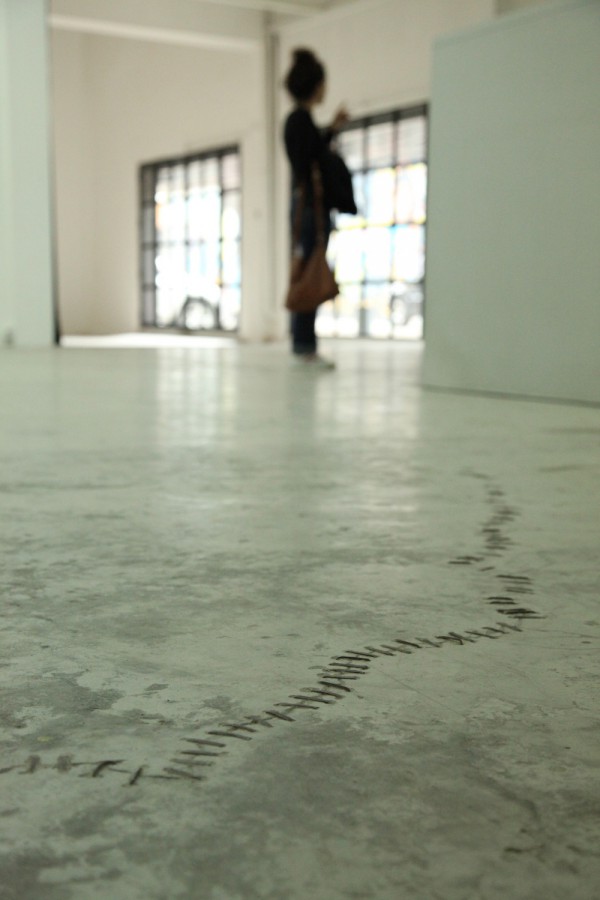
Cultures are Following the Same Animal #1, 2014
Series of Diptychs, 2014
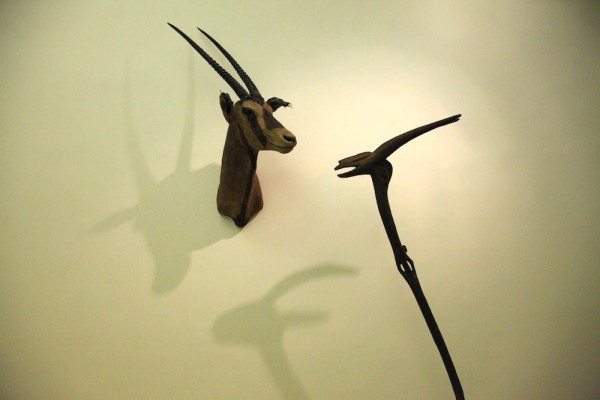
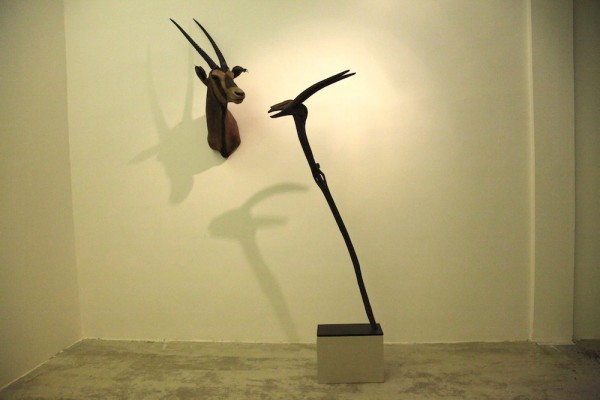
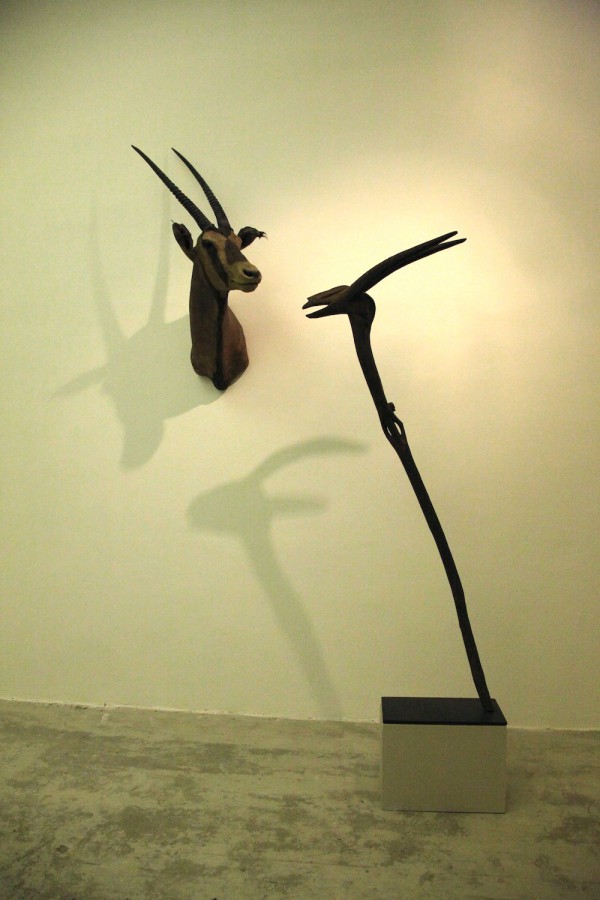
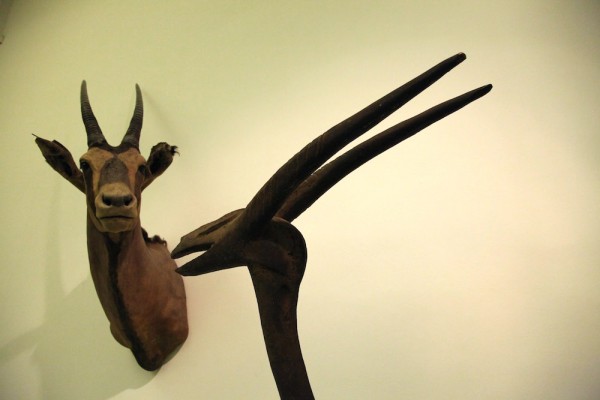
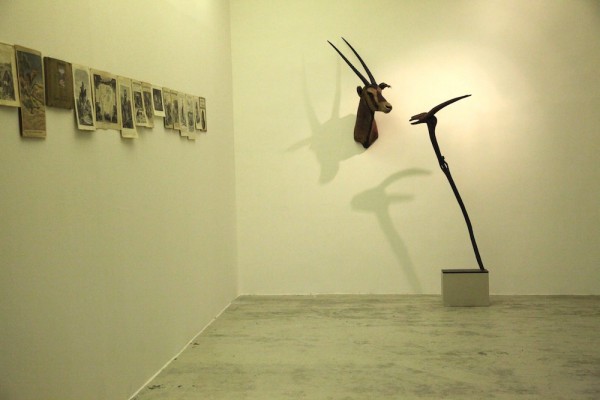
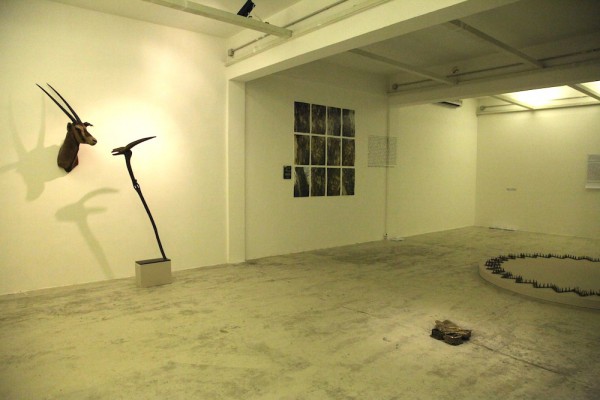
Scarifications, the Self-Skin’s Architecture, 2015
«Scars have the strange power to remind us that our past is real.»
-Cormac McCarthy (All the Pretty Horses, 1992)
The word “injury” has a different meaning from one culture to another, but it is always expressed through a semantic parabola that oscillates from the physical to the immaterial and vice versa. (más…)
Complementary Conversations, 2015
A few weeks ago, in Austria, a teenager was arrested and judged as a jihadist, and participant of the Islamic State. The Austrian Police reported that they discovered he was planning a bombing in Vienna’s Central Train Station. They found evidence of this plan, as well as visual documentation on the massacres perpetrated by ISIS not in his pockets, nor on his computer, but in his Playstation.
(más…)
All the Difference in the World. By Manthia Diawara, 2014
- Lieux-Communs
I was introduced to the work of Kader Attia at the 2009 Bamako Photo Biennale. At first, I was intrigued by his color photographs of a beach, covered with large sheets of white-grey concrete blocks, like somebody’s bad idea of a conceptual art installation. Then, on looking closely, one discovers that the photos are actually of a real beach, that of Bab El Oued, a poor neighborhood in Algiers, where the government had erected these huge concrete blocks to prevent young men from taking boats across the Mediterranean sea to Europe. So the photo installation by Attia, entitled Rochers Carrés, is not just a quixotic mise-en-scene for the camera, which would have been esthetically limiting, anyway; but an actual architectural structure that sets a boundary, a no-trespassing zone, between the South and the North, which distinguishes it as a found object for the artist’s camera.
The photo installation includes long shots of the multitude of concrete slabs looking like shoreline high-rises, from a bird’s eye view; low and wide-angle close-up shots of them standing on the beach, against the blue Mediterranean Sea; and medium shots with young men sitting or standing on them and looking at the ocean. Thus re-appropriated by Attia’s camera, the blocks on the sand, which were before perceived as masses of lifeless and hostile objects of obstruction, as a kind of wall, or frontier to stop people from crossing-over, are now recharged and invested with new meanings and emotions, that put them in a relationship with other objects of architecture around the world, other poetics of migration, and other imaginary of border-crossings.
In Philosophie de la relation, Edouard Glissant defines “lieux-communs” as those sites where ideas emerge, illuminate and influence other ideas from other places of the world. In this sense, a common site is different from a commonplace, which is made out of naked truths and obvious statements. By contrast, a common ground, (note that the French use ‘lieu-commun’ for both common place and common ground), is a source of creativity and opacity, a fertile ground of inexhaustible energies, where relationships are continually generated between the ideas and poetics of one place and those of another. Sharing a common ground with someone is to be related to him/her through the rhizomes of places and imaginaries, to have the same pulses about the world as him/her. A common ground creates the conditions of possibility for the emergence of unpredictable feelings of resistance against the systematic truths induced by commonplace thinking and reasoning; and against the meanings imposed by the logics of coloniality and governmentality.
The artistic genius of Rochers Carrés derives from Attia’s discovery and revelation of the site as a common ground, a lieu-commun, from where the youth show their resistance to the state’s attempt to control their movement from Algeria to Europe, where they might find a better life for themselves. By re-appropriating the “bétons bruts” as a point in the world for recreation, contemplation and other outlaw activities, they reinvest the place with new imaginaries, poetics and epic heroes. They also reconnect the place to Europe and other places where immigration is impeded by walls. To put it in Glissantian terms, the youth of the Rochers Carrés have created subterranean connections and rhizomic relations with other youth, in other places, confronted with frontiers of nationalism, prisons, immigration and discrimination. Lieux-communs are sites where calls are made about one condition of the world to the other sites of the world, so that they too may relate it to their own conditions and relay it to all the corners of the world.
Attia’s photos, by re-appropriating architectural concretes as lieux-communs or habitat, raise questions of resistance and defiance against walls erected everywhere against immigration and boundary crossing. As common grounds, the bétons bruts on the beach have become sites of contemplation and new imaginaries for the youth of Bab El Oued, a place that link their intuitions of resistance against global imperialism and the barbwires against peoples’ freedom of movement. As a common ground, the Rochers Carrés have become a place, like Lampedusa, Palestine, the frontier between the United States and Mexico, to speak about the walls of immigration and the inhuman laws; a place where a relation is created between the emotions of the people in these different sites; and finally, a place for conceiving new poetics and politics with other lieux-communs; or to put it in Glissant’s words, “un lieu où chaque fois une pensée du monde appellee et éclaire une pensée du monde” (a site whence thoughts and ideas always emerge to call upon and illuminate thoughts and ideas from other sites of the world).[1]
Still following Glissant, we can say that Attia’s work is about finding art in found objects, the Rochers Carrés, and revealing what they have in common with other contemporary propositions about the world; namely the conceptual statements they make about politics and resistance. Attia shows how the Rochers Carrés, a forbidden space, is appropriated by the very same youth it was designed to exclude. The history of the bétons bruts, an architectural structure, is thus turned upside down to signal a critic of anti-immigration laws, to celebrate boundary crossing, and to elect a common ground for relations between differences.
Great artists, before Attia, have played with the subterranean and fertile common ground between different objects. David Hammons, for example, has had to paint Reverend Jesse Jackson with blond hair to show the lieu-commun between him and the white American politicians. Edouart Glissant, too, has eloquently pleaded for the poetics of errantry and nomadology, which he deploys against the discourses of sameness, singularity of identities, and systematic systems. For him, “le Divers, la totalité quantifiable de toutes les differences possibles, est le moteur de l’énergie universelle, qu’il faut preserver des assimilations, des modes passivement généralisées, des habitudes standardisées”. (The diverse, that which constitutes a quantifiable sum of all the differences possible, is the engine of the universal energy that we must preserve from systems of assimilation, from passively generalizable models and standardizable habits). [2]
- Poetics of Relation: Bon appetite Monsieur Le Corbusier
We have just seen how important the local is to Attia’s work; and how he puts it into play to revive relations between Arab-African and French-European cultures. Attia incessantly uses art found in his background to think with the world—not for the world, like a conqueror or a colonizer—but with the world, like a person who’s searching for himself in the Other, and vice versa. It is in this sense that I call Attia an Afro-Arab and French artist who is incessantly looking for himself in sites such as the Rochers Carrés in Bab El Oued, the Cashbah, another neighborhood of Algiers, the ancient city of Ghardaia, the masks and sculptors of the Congo, but also in the Cubist paintings Picasso, and the modernist architecture of Le Corbusier. The creative genius in Attia is always after these spaces for the purposes of rediscovering or re-appropriating them as art, or to shed light on them as rhizomes and crucial links that have been ignored in the history of modernism.
This incessant search for lieux-communs, an unending search for the Other, can be considered as the very definition of Attia’s art. It is what Glissant calls the poetics for relation, which keeps the poet on his/her toes, hungering for perfections and totalities that are not totalitarian; and knowing fully well that he/she will never reach them. For the artists such Glissant and Attia, working from one’s own location in the world is what enable them to connect their intuition and sensibility with those of others in the quest for totalities, one world in relation, or “le tout-monde.” It is by participating in the revitalization and redefinition of lieux-communs, that such artists feel that they are restoring to the world the vital force that it needs for its equilibrium.
To paraphrase Glissant, artists work from their own locations and think with the world; “ton lieu est incontournable; il n’est pas de lieu qui ne signifie pas” (you cannot ignore your location, because every location signifies something different.)[3] For Attia, too, every one of the sites he choses to work reveals one aspect of the state of the world that needs our full consideration. Because every location reveals to us something about our humanities, it is also center of the world, no less important than Paris or New York. Every location can be used to think through the connections between art, politics and resistance. Thus, to create from your locality is one way of telling about the world, its weaknesses and strengths, it sensibilities, beauty and ugliness.
Perhaps there is no better place to illustrate this idea of the relationship between location and artistic creativity, what Attia calls the re-appropriation of a space in order to make a specific intervention in contemporary definitions of modernistic art, than in the installation, variously entitled: Bon appetit Monsieur Le Corbusier, or simply Ghardaia. Here, using couscous to reproduce the architecture of Ghardaia—a UNESCO classified monument—Attia puts into play the notions of cannibalistic consumption, appropriation, resistance and re-appropriation as objects of creation and self-validation in modernist architecture.
The mimicry of Ghardaia through its buildings made out of Couscous, an exotic Orientalist dish, does not only connote cannibalism, excessive consumption and regurgitation of Afro-Arab elements in modernist art and architecture, but also aspects of artistic influence, imitation and adaptation which are often swept under the carpet, when discussing the sources and quotations in the masterpieces of Le Corbusier and Picasso. Attia’s couscous installation forces the viewer to place Ghardaia in an affective and political relation with Le Corbusier’s buildings for social housing in France. The place has thus become re-appropriated as a site of resistance to theft and annihilation of the original by the copier.
By putting the so-called original, and the copier, Le Corbusier in a Glissantian relation, Attia’s art invites us to move away from such binary oppositions as orinal/copy, same/other, anterior/posterior, superior/inferior/ modern/traditional, exotic/domestic, etc., and to embrace the moment of their encounter—Le Corbusier at Ghardaia, or Picasso upon seeing African masks for the first time—as both moments of relation and equalization. The new architecture and modernistic art born out of the meeting point is relayed later to the word and relativized as modernism, at the center of which Attia puts Ghardaia and the African mask. To quote Glissant, “Dans la relation, ce qui relie est d’abord cette suite des rapports entre les differences, à la rencontre les unes des autres. Les raciness parcourantes (les rhizomes) des idées, des identitées, des intuitions, relaient: s’y révèlent les lieux-communs dont nous devinons entre nous le partage (In the theory of relation, what brings things together is first of all this successive rapport between differences, as they meet, one after the other. The roots, (rhizomes), that cause ideas, identities, intuitions to meet, relay them for the purposes of revealing to us the common grounds that we share.)[4]
For Glissant, the “poetics of relation” is that which relates, links, and relays in the relationship between all the differences that are possible and invisible in the “Tout-monde.” Glissant argues eloquently in the book that the only way to go beyond the boundary set by binary oppositions is through the recognition of the differences that constitute and hold together the tissue of the world into one; a totality that is inextricable, but not totalizing or totalitarian: “La pensee de l’Autre ne cessera d’etre duelle qu’a ce moment ou les differences auront ete reconnues.”[5]
Just as he ties the dualist conception of identity to a hermetic and unfathomable Other, and to the notions of single roots, Glissant posits his theory of identity as something acquired through Relation, through the theory of rhizomes, which, as we know, have multiple roots. Drawing on Deleuze and Guattari, Glissant states that rhizomes are roots that run like currents under the ground or on the surface, and multiply themselves, x-times, into a network of extended relations, without destroying or denaturing each other, unlike predatory roots that can only live among themselves. Rhizomic identities come through rootedness, without a totalitarian impulse.
In this sense, every identity is sustained through its Relation to the difference of an Other identity; every identity “s’etend dans un rapport a l’Autre,” (grows out of its relation to the Other), in a rhizomic manner. With Glissant, we are in the world of multiple identity positions, multiple relationships to the Other, where new possibilities arise and we find the fulfillment of our own identity in our search for the Other, our identification with his problems, etc.
With Attia, too, art must find its rhythm and vitality in difference and the performance of multiple identities. For him, identities find their authenticity through performances and productive repetitions, instead of being true to a singular truth and fixed origin. What is rewarding in Attia’s photo and video installations of “Trans-Sexuals (from Algeria and India),” is the manner in which they cross borders between identities–Algerian and French, for an example—without losing themselves in one single identity, and having it threatened every time they move across the border to the French side, change clothes and mannerisms to play like French transsexuals.
Attia shows us that the meaning of art lies in performances, in which identities become alive through “play” acts. It is in this same sense that Glissant, too, says “Rien n’est vrai, tout est vivant,” (which I’ll adapt here, first as: “There’s no truth; it’s all in the living;” and second as, “The only truth is that which comes alive through the relation between differences.”) In Ghosts (2007, 2012), for example, Attia produces an aluminum installation of women bent over on their knees, as if in prayer. The frontal part of each sculpture is hollowed at the level of the head, as if to indicate that the women have no faces, or that the faces were hidden behind a black veil.
The first impression the installation has on the spectator is that of a ghostly and fearful effect, on seeing this multitude of women dressed in a silvery outfit and all turned in one direction. The show connotes not only women wearing veils, but also Moslems praying in a Western space. Then the hollowed faces reveal that there’s no such thing as a fixed identity behind the veil; that such a fixed identity is in fact the projection of the spectator’s own anxieties onto the veiled women. Finally, we begin to appreciate the power and esthetics of the installation, when we realize that what we have in front of us are only empty identities—what Glissant calls “Literatures of traces”—and by multiplying them in the room we perceive a performance of identities that we, the spectators have brought with us to the installations.
The genius in Attia’s art here comes from the way he pushes the museum visitor to search for this Other: be it the Other place, the Other identity, or the Other in us, without which we always feel incomplete and inadequate. Le Corbusier eating couscous in Ghardaia is like the Transsexuals changing clothes between Algiers and Marseille, and the spectators confronting their own desires by filling the hollowed faces of the sculptures in Ghost; they are all forms of anthropophagi, desiring and searching for the Other, which is our own way of searching for ourselves, without any guarantees of satisfaction.
III. Attia, the Artist of Reparation
The reader would have noticed by now that the Other is perceived differently here, than with such postcolonial thinkers as Said, Bhabha and their followers who have remained faithful to the Fanonian definition of this difficult concept. As we know, the Other for Fanon was an Other of decolonization, an Other who was “against,” or “opposed to.” It is an Other that could not be defined outside of the context of national liberation, national culture and national sovereignty. The proponents of postcolonial studies took this Fanonian concept to another level with Said’s writings on the relations between and Orientalism, and Spivak’s definition of the Other as a Subaltern who cannot speak inside a Western discourse, be it Marxist.[6]
As we have seen in Glissant and Attia, however, the Other is someone, or something that we speak with in the One World, that we are all a part of; of which we all form the totality. Just as he ties the dualist conception of identity, that which is opposed to a hermetic and unfathomable Other, to the notions of single roots, Glissant posits his theory of identity, acquired through Relation, in the theory of rhizomes, which have multiple roots. Drawing on Deleuze and Guattari, Glissant states that rhizomes roots that multiply themselves, x-times, into a network of extended extremities in land or in the air, without destroying or denaturing one another in a predatory manner. It is rootedness, without a totalizing and totalitarian impulse.
In this sense, every identity is sustained through its Relation to the difference of an Other identity; every identity “s’etend dans un rapport a l’Autre,” (grows out of its relation to the Other), in a rhizomatic manner. With Glissant, we are in the world of multiple identity positions, multiple relationships to the Other, where new possibilities arise and we find the fulfillment of our own identity in our search for the Other, our identification with his problems, etc.
Glissant, in an ironic twist, states that Fanon’s search for freedom for Algerians, for example, lead him to discover his own; it shows that identity is not always buried in roots, only found in the recognition of one’s roots, but also through one’s Relationship with Others. Thus, for Glissant, a true decolonization, not only for the formerly colonized, but also for the West, will consist in going beyond the boundaries set by racism, sexism and nationalism. We have to dream of the impossible totality of the one world, in which all frontiers are abolished, except for those of difference and relations. Glissant finds the essentiality of difference through these terms: “I can change myself through exchanging with the Other, without destroying, or denaturing myself.”
It is with his new installation The Repair that Attia fully addresses what Glissant has often called “la complexité monde,” our relation to the Other as subject and object, and the subsequent difficulties that emerge from this encounter. We see all the possible representations of the Other in The Repair project: “les guelles casées” (the Broken jaws) of World War One, the traumatized bodies, the bodies for exhibitions, the repaired bodies, the fetishized bodies, the estheticized bodies, bodies of object, bodies of people, white bodies, black bodies, bodies of Africans, bodies of Europeans, bodies carved in wood, bodies stitched in clothes, masked bodies, tattooed bodies, hollowed bodies, protruding bodies, and bodies locked up in boxes like stereotypes. In this multiplicity of bodies, we find the body as opposition to; the body against; the hyphenated body, the relayed body and the relative body.
The common-ground for all these bodies is that they are all looking for reparation, they all need something else to make up for something missing; they’re all striving to achieving a perfect state in the world, a compensation for some kind of lack, an amputation, or something perceived as a due.
As a reparation artist, Attia makes us revisit, through his installation, Europe’s debt to Africa for the Atlantic slave trade, colonialism and the current mutilation of indigenous populations and their environment through mining and wars. Thus the show takes on, at least, two levels of signification. First we see that a broken body is a body that has had a weakness introduced into it, a hole that, if not repaired, becomes a sign of trauma. We need therefore to repair the hole, or the fissure, by covering it up, stitching it, or decorating it with other scars to re-appropriate it and make it familiar. It is in this sense that different ethnic groups in history have demanded reparation for crimes committed against them.
Some of the African masks that Attia uses in The Repair, were also used in traditional performances as symbols of ancestral deities who were called upon to repair damages caused by natural disasters and epidemics. Our understanding of reparation in this sense has the meaning of the restoration of a value that had been taken away. In so far as we think that damage was committed against us that has not only weakened us, but also taken a vital force from us, we feel that that we could only fix it through the payment of a debt, a legal settlement, or a psychological approach to the problem.
There is another level of understanding the show and Attia’s concept of reparation. Walking through the installation, one of the first things we realize is that the broken faces, of black and white, masks and people, utensils and human faces are interchangeable, because their scars are relatable. They each construct a lieu-commun, the myth of which can be shared with the state in which the others find themselves.
We need therefore to change our imaginaries in order to begin to see the relation between the different disfigurations in the installation. We change the way we see the victims of trauma by familiarizing ourselves with the victims, by embracing their scars and letting them embrace ours. By licking the Other’s scars and allowing him/her/it to lick our disfiguration, as Attia has done with every object in the show, we engage in an exchange that change us in the process. This, for me, is Attia’s fundamental discovery in The Repair.
What Glissant had to say about “Reparation” is equally profound. For him, a long and permanent reparation, beyond political and civic actions, is possible if seek out the Other and tremble with him/her. Building on what he has been calling “la pensée du tremblement” (a quakeful or tremulous thinking), Glissant argues in Philosophie de la relation that, faced with the misfortunes that strike people around the world, everyday, a quakeful thinking could open the door to a long term reparation, beginning by changing the imaginaries of the world. He states that myth and poetry find their condition of possibility in the quakeful, and the doubting thought. Even good philosophies must find their vocation in thoughts that are uncertain, timid, intuitive and opaque at first. To Glissant, thoughts that do not tremble are frozen, systematic and sterile. A people that only embrace themselves and their culture as the only culture, embrace nothing.
The quakeful thought is thus the very condition of reparation of our disfigured selves, searching for Other disfigurations to identify with, to tell their stories, and relay them with our own stories. The Repair by Attia tells the story of our guelles cassées and teaches us how to re-appropriate them as vital forces, sites of relation and creolization, as first obscure poetic and mythic scream of man on earth.
[1] Edouard Glissant, Philosophie de la Relation: Poésie en étendue. Paris (Galimard) 1990, p. 25.
[2] Edouard Glissant, Philosophie de la Relation: Poésie en étendue. Paris (Galimard) 1990, p. 42.
[3] Edouard Glissant, Philosophie de la Relation: Poésie en étendue. Paris (Galimard) 1990, p. 87.
[4] Edouard Glissant, Philosophie de la Relation: Poésie en étendue. Paris (Galimard) 1990, p. 72.
[5] Edouard Glissant, Philosophie de la Relation: Poésie en étendue. Paris (Galimard) 1990, p. 29.
[6] See Said’s Orientalism and Culture and Imperialism (Edward W. Said, Orientalism. New York (Pantheon) 1978; Culture and Imperialism. New York (Knopf) 1993.) and Spivak’s “Can the Subalten Speak?” (Gayatri Chakravorty Spivak, “Can the Subaltern Speak?”, in: Cary Nelson and Lawrence Grossberg (eds.), Marxism and the Interpretation of Culture. Urbana, IL (University of Illinois Press) 1988, pp. 271-313.)
Published in: Artforum, February 2014.
AF214Diawara
Artificial Nature, 2014
Installation 2014
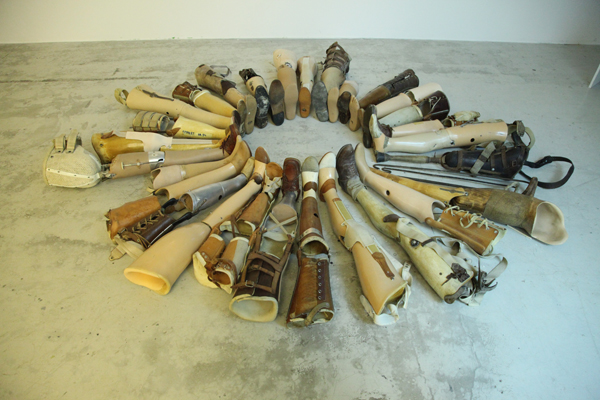
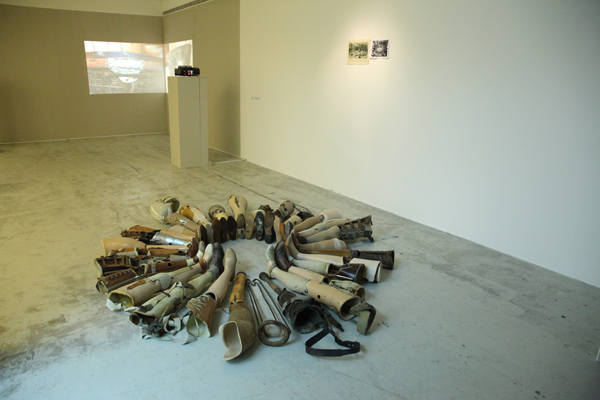
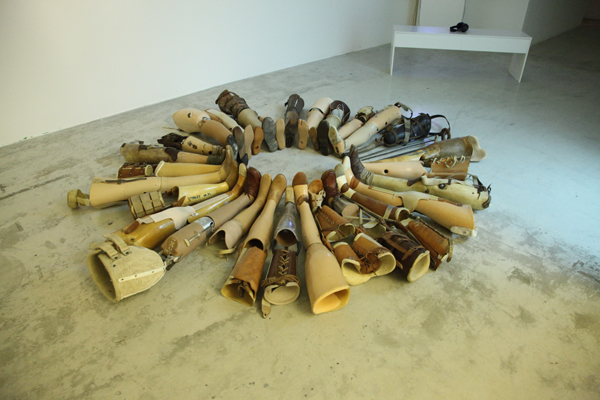

Installation 2015 at The Injuries are here, Musée Cantonal des Beaux Arts de Lausanne, Lausanne
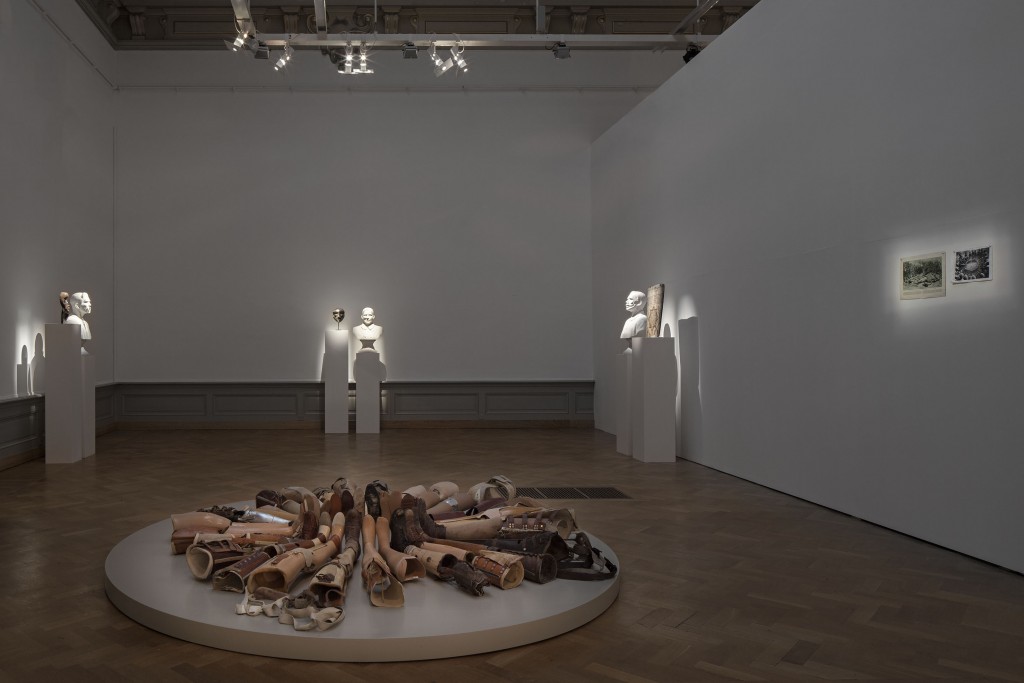
Interview between Kader Attia and Dr Bernard Mole, 2014
Kader Attia:
The issue of repair is now one major focus in my artistic research. I thought about it watching a mere piece of raffia cloth a friend gave me in Congo, in 1997. The peculiar thing about this traditional loincloth is that it is scattered with small western fabric “patches”, reminding of Vichy fabric. For years, I thought these elements were “just” decorations with unexpected aesthetics, bits of eastern modern material added like some sort of transplant on a traditional African piece of cloth. One day, I turned this ambivalent item around and discovered that behind each patch there was a hole due to excessive use. The patches are actually signs of both an aesthetic and ethical act: it is a repair. From then on I spent my life looking for such signs… It enabled me to discover the complexity of fixing, in traditional extra-western societies and in modern western societies as well. Objects, masks, intentional or unintentional physical injuries, all carry a repairing purpose changing from one culture to another. As a surgeon working in Paris, how do you understand this description of an inanimate, lifeless object; this loincloth mended by Kuba people in Congo with elements from a western culture? You also worked in Africa, if I am not mistaking.
Bernard Mole:
The repair you are talking about is a passive one, it is the same as what we use in reconstructive surgery when we have to make up for a lack of skin with a self-transplant (meaning taken from the patient themselves). The result is quite variable on a cosmetic point of view because the skin always keeps the characteristics of where it came from; even if it sometimes perfectly merges with the surrounding skin, it can also leave an “imported part” impression, which is obviously not the expected result for a patient, who always dreams of an ad integrum restoration. The most elegant repairs often make use of what can be very complex scraps allowing true reconstruction of several tissues at the same time; these can perfectly mimic the original one. The most ancient repairs go back to three thousand years BC, in India, and to the 15th century, in Italy, back when “traditional” punishment consisted of completely amputating one’s nose.
The ultimate stage for this kind of operations was reached a few years ago in France with a complete facial homo transplant (from someone else), under the guise of a very heavy anti-rejection treatment, bringing into light as many technical and ethical issues: as a matter of fact, spending the rest of your life with someone else’s face is not easy at all! However, by checking on the first cases several years later, it appears this integration is absolutely possible. Let us not forget such patients are completely disfigured before the operation and have, therefore, already “lost their original face.”
To some extent, mending a piece of clothing with bits taken from another eventually falls under the same process: you keep one alive thanks to the other and inasmuch as you can sometimes be quite emotionally attached to the former. This reminds me of a Sicilian story I heard from Dominique Hernandez about that very poor woman who owned an apron since her wedding day, and it had been sewn back up so many times that her husband ended up giving her a new one as a gift: as a reaction she did not replace the old apron with the new one but used the latter to cut new bits and complete her patchwork up “to the end” (all in all meaning death)!
K. A.:
I always felt the polysemous characteristic in the repair concept. For from the act to the result, possible interpretations are infinite, as much in who sees the repairing as in who carries it out and who/what is being repaired. Yet, some fixed up cloth has no self-awareness of having been so, just like it is not conscious of being fabric. As for the seer, can they think about the piece of cloth as repaired in itself? Impossible.
What enables the human mind to picture one thing and/or concept, like fabric or wound fixing, is the intellectual and experimental relation existing between the repaired item and its repairer, just like between the repaired item and the seer. This relation called “correlation” by “modern” philosophy is what structures and rules over knowledge. What I find fascinating in this idea is the way the link established between two independent things is what distinguishes them just like it ties them to create knowledge of the thing by inference. Without correlation, knowledge would not exist.
Do you think correlation is a conceptual form of repair specific to intelligence, that it fills the abyss between intelligence and things? Speaking about modern western thought, could we say that, up to our contemporary days, modern western reconstructive surgery would be looking for the ethics of ad integrum restitution as the one and only standard for perfection, because it seems (according to your earlier example) to be the effect the patient wishes?
B. M.:
I humbly admit my intellectual inability to give answer to such a question. Usually, surgeons are pragmatic, not to say down-to-earth people, they are artisans interrogating themselves before, and sometimes even during, the operation. Yet, what distinguishes them from any other craftsman is that they must absolutely “finish the job” once they started! Despite what could be said, even when the patient as a demand for perfection, modesty should make us recognize the fact that the best result also comes from some personal part played by the person undergoing the operation. Ambroise Paré said this astonishingly humble and clear-sighted quote that proves to be a sort of guiding light throughout a practitioner’s career: “I bandaged him, and God healed him.” By the way, on a legal perspective, the final result matters less than what was done to get to it.
K. A.:
I spent a lot of time watching the amazing formal analogies one could find between soldier’s facial reconstructed wounds, such as the “gueules cassées”, or broken faces, during World War one, and African traditional masks. I show particular interest in the early years of the conflict because at the time, physicians like Hippolyte Maurestin, in France, or Dr J. Joseph, in Germany, quickly got overwhelmed by the increasing number of casualties. They had to fix fast and with rudimentary means, because they lacked equipment due to war and certainly to the technology available at the time.
What is striking in those reconstructions is their ethical and especially aesthetic dimension, their expression echoes African masks traditional repairs in which other constraints fashioned almost similar aesthetics…
That aesthetics was limited by the means at hand, and Claude Levi Strauss even called it a “patch-up job.” In Europe, that expressive aspect inherent to reconstructed war injuries, inspired expressionist painters like Otto Dix and Georg Grosz. By seizing it they condemned the horrors of war and gave birth to an important artistic movement: German expressionism…
As I carried on my research, I discovered, especially with Dr J. Joseph from Berlin, that reconstructive surgery developed during World War one. A four year conflict is long, for soldiers and doctors as well. I was baffled by the physicians’ talent, not only by their skill but also their creativity that, sometimes thanks to single patch-up work, could do miracles…
Does your story about nose reparation fall under this kind of odd-jobs? What are the results? Could a patient attempting to hide his outlaw past manage to do it?
B. M.:
As terrible as the injuries were and as imperfect as the repairing was, a broken face led to certain respectability (for it brought to mind bravery, sacrifice and self sacrifice for your country, etc.). But things changed during World War two. After this conflict, priority was given to not showing signs or to hiding injuries the public could not have born to look at. At the same time, surgeons’ status changed as well: amputation champions under Napoleon (only chance of survival for soldiers with wounded limbs), claiming rightful status with the creation of the Red Cross by Henri Dunant who had been horrified by the butchery in Solferino, they benefitted from the shy but meaningful progress in anesthesia and the tottering surgery of bits seen during World War one and later managed to establish real rules in taking care of serious injuries during World War two.
I do not know if repairing amputated noses gave the operated victims a chance to change their social integration. We can assume it did whenever the result was skillful and discreet, but it must have been rare… Seeing the evolution of surgeons’ status throughout history is funny: during Antiquity, they were respected for their knowledge and boldness, then they were despised and put down to the same rank as barbers up until Renaissance (it is true they owned intellectual power in colleges but what they knew was based upon absolutely crazy theories that surely took more sick people to the grave than the disease itself). It would have taken surgeons to finally be able to cure Louis XIV’s anal fistula for them to win back a social position worthy of their talent!
K. A.:
Tracking down how some trades evolved in their social position throughout history is fascinating. Architects too have known various levels of acknowledgement depending on the time they lived in. I remember an interview of Auguste Perret complaining about architects’ status in the 20th century. They are not as praised as they used to be. In Ancient Egypt, Pharaoh would greet them almost like demigods, while nowadays they are just employees for local elected representatives or company managers… Still, apart from this acknowledgement you are mentioning with Louis XIV and his doctor, Félix de Tassy, to me, architecture sometimes seems to be sharing the same reason for being as surgery. You can find some kind of repair work in building. I am not only talking about reconstructing ancient ruins or renovating old modern buildings. I mean, what truly animates the human mind as both the factor and messenger of the evolution of its superiority over other species, through instinctive ethics urging it to compete against the laws of nature: building, enhancing, transforming, recreating, etc.
There are many possible analogies between the human body and architecture. According to philosophers like Michel Foucault, who expressed it in his lecture “Utopian Body”, body and mind are almost dissonant. The mind would be an inhabitant in the body the same way a body inhabits an architecture. Bernard, Kader, your relatives, mine, people outside, all the people you assimilate to their earthly body, are something else in reality. What you can perceive, their shell, only is a puppet controlled by their mind. Every living person is above all a “thinking mind.” Your body is not you, but the shell inhabited by your spirit. This idea can be contradicted, and Michel Foucault himself does it in the second part of his lecture.
Nevertheless, I would like to come back to an example you quoted earlier. This story raised up several questions I would like to ask you…
It was about a transplant on somebody who had been attacked by a dog, causing the said person to be disfigured. The operation consisted of transplanting someone else’s face. You said both body and mind could react negatively to such a graft, hence the necessity of complex medical disease prevention along with serious psychological follow-up care. Is there a double consciousness of the repair by the body and also the mind, or is it just a matter of medical ethics? I particularly recall a Cameroonian friend’s father who had been transplanted with someone else’s organ. He never psychologically accepted having something he could not see but that seriously felt like some alien presence inside of him… Eventually, his body never managed to accept the graft and he died. Are there situations where the mind welcomes the graft while the body does not, or vice versa? Does this particular face transplant, along with what it implies in matters of “acceptation and reject” by body and mind, fall under repairing or is it pure creation? In other words, when you transplant a new face, or new hands, on a body that has lost its original parts, does the surgeon only fix it or does he create some new being?
B. M.:
I would like to reassure you right away: there is no such thing as a “Pygmalion-surgeons”…or if there is, such a physician’s behavior is clearly due to pathological perversion. Literature is full of these kinds of myths, from Faust to Frankenstein, where man thinks he can act like God. In this respect, I cannot resist telling you a joke: “do you know the difference between God and a surgeon? There is not, except that God does not think he is a surgeon.” There is a tendency to fantasize about our power as surgeons. Actually, we have none, we only have duties, and the most important one is to act properly for the sake of whoever gave us their trust. Everything else is but literature… We have been overwhelmed for several years now with so many fantastical visions – that tend to be more or less pathological – and they do not help in improving our image. About this (is it coincidence?), for our next convention, set in Tours in late May, ORLAN will deliver a lecture I would gladly attend, but more out of curiosity than real interest mind you. Her trade is not mine, I leave her with full responsibility for that and do not want to be involved in that kind of approach. Still, I know some fellow physicians cannot resist such an extra, and perhaps they would need a bit of psychoanalytical flashlight, too!
No face transplant falls under creation, or maybe “re-creation”, meaning restoration-reparation. Nevertheless, this does not prevent one to wonder, of course, for our actions sometimes have an unexpected impact on a patient’s behavior. We always hope it will be a positive one, but with experience, you get to learn it can also be deleterious, probably because we did not really get what lied underneath this demand for reparation. Once you are more experimented, such consequences are seldom but one never knows! As far as I am concerned, I also chose this specialty for the psychological support it implies, as well as the impossibility to cheat with the result.
K. A.:
Perhaps the myth of Pygmalion surgeons comes from the fact they walk alongside death, and most of the times, cast it back to where it came from. They sometimes have out of size ego. Artists too have variable ego sizes, in the difference that they do not save lives. Their works create a vanishing point with the horizons of thought and emotion, but it remains mere representation, staging. Mankind’s superiority lies in the ability to bring science and art both in harmony and dichotomy… Everything can be measured and then explained with mathematics. Everything but Art. Not only contemporary art, but truly all artistic initiative without exception, from arts wrongly called primitive to the ones excessively considered as “major.” This is the reason why I am interested in the incursion of artistic process into the field of science. I mean, for example, a sculptor reconstructing and imagining down to the last detail what a broken face torn up part looked like in order for the surgeon to follow that lead and fix that face or order resin prosthesis. I saw such prosthetic items from World War one in Val de Grâce Hospital, in Paris.
What I find interesting here, is not only what you humbly mentioned as the artisanal part of your profession, but also the borderline between art and science, and honestly, between beauty and its opposite. All in all, the issue of beauty.
You work in Paris, but I heard you also go to Africa with an association aiming at fixing children’s smiles (or do you also perform all kinds of surgery on adults and children there?). Could you tell us a little more about this fantastic action you carry alongside your Parisian activities? What does it imply to help people who do not have the means to access facial surgery? I guess you involve your professional experience in both an ethical and aesthetical perspective…
And secondly – this question is a bit more sensitive – what can you say about beauty with the example I am about to give you? For several years now, I have been working on what is called “sickness masks” in Central, West, East and Southern Africa, and Asia (from Tibet to Indonesia), and I would not be surprised to find some in Japan as well. A mask representing a sick person’s face has got a very meaningful place. Some of these objects had a real impact on the evolution of 20th century western thought…
Pende people from Congo, even created the legend, and it might be true in fact, that such items directly influenced Picasso’s “The Young Ladies of Avignon”, the iconic painting of cubism golden age. If extra-western societies show sickness, it is surely in order to exorcise it, but especially to give it a noticeable position in public space: it is like acknowledging illness and giving it a social and material, as well as immaterial, almost divine, value. Sickness masks faces are misshapen, twisted and expressive, not to say expressionist. With off-the-wall aesthetics, they mark what the modern western mind finds asymmetric, anomalous, almost repulsive… They remind me of aesthetics concerns and social issues broken faces had to undergo in their after war life. Jacques Derrida said that human physical beauty is certainly what is truly rare. Perfect face symmetry is seldom, therefore it is beautiful…beautiful and rare, perhaps as much as a totally asymmetric face could be.
According to you, what is beauty in reconstructive surgery, is it primarily born from the surgeon’s personal choices or from societal codification?
B. M.:
Now, this is some delicate inquiry, and it questions the very notion of beauty: is it a gift from nature, a product of personal effort, a cultural footprint? Certainly a bit of all that. On the contrary to what people usually think, you must first approach the idea of beauty with lots of doubts and yet, some certitudes. First, beauty transcends the ages: even when you want to bring into contrast Rubens’ voluptuous Venus and Giacometti’s ascetic ones, you soon realize beauty is immanent, it imposes itself throughout history. Be it Nefertiti’s famous bust exhibited in Berlin, Praxiteles’ reproductions, faithful paintings of Agnès Sorel and so many others…who could possibly have a look at them and think “peuh, not that good…” ? Beauty is fascinating and repulsive, attractive and frightening, it is a grace one must use carefully, or a destructive weapon to whoever gets to be seduced (the devil’s beauty).
Strangely, it is rejected by our Judeo-Christian society…and yet it is worshipped by it. To those who tell me “after all, it is nature that made us the way we are, so we should not try and question God’s work”, I reply “our religion allows us to represent God, his son and his sanctified disciples in a glorified way: oddly enough, I never saw a painting of Jesus with sticking-out-ears, a crooked nose, or as a fat person.” And if you happened to be in such disgrace, would not you ask for “reparation” (also meaning “redressing injustice”)? Of course, as far as I know, there are several levels of appreciation according to civilizations…and needs. However, when you travel around the world, you soon realize beauty sometimes compellingly stands out by itself. Like a sort of masterpiece that is unfortunately temporary, but that you agree to behold without jealousy. I find it hard sometimes, but then I just play the part of the spectator who is simply happy to meet grace and exception!
I will conclude by saying that the purpose of aesthetic surgery is not to “bring beauty” (because what standards should we follow?) but harmony. By the way, such a demand is quite reasonable in France and only very few patients come with tabloid pages to use as model! Plus, those kinds of needs are quite dubious because they can lead to dysmorphophobia, which cannot be solved.
K. A.:
I always believed the apex of human civilization was ante-monotheist. As soon as the notion of a unique God appeared, human beings never stopped dogmatizing relations between people, from the social sphere to the intimate one, to finally control them through morals. Homosexuality, for instance, only was stigmatized and demonized after the advent of monotheisms. Greco-roman civilizations left us obvious proof about that. As a humanist photograph, I found interest in people from all confessions and sexual identities. A few years ago, I directed a movie with a transsexual friend of mine, who had been dreaming for years of going in India or Pakistan to meet with the Hijras. Originally, Hijras are men who enter an Ashram where they live with other men who took the decision never to live as males again, but as Hijras. When you do not know about them, they seem to live as women, but when you happen to spend some time with them, they will tell you “I am neither male nor female, I am hijras.”
Progress in plastic surgery does not only concern face, but body and genital organs transplants as well, it goes way further than breast implants we all know about. What does it mean, to a surgeon, to graft elements that were not on a body, but that people want because they utterly need them for personal reasons? When Dr Joseph, in Germany, or Dr Maurestin, in France, fixed broken faces during the war, I guess their actions embodied some sort of an ethical mission, and also some kind of exhilaration, a technical challenge for them to take up. And especially, they mended something that had been destroyed by a bullet or shrapnel. Sometimes, the purpose of transplantation is for a missing part to be replaced. I really like yours mentioning the artisan’s thorough mind and I have one final question for you.
To you, and on the perspective of repair, what does it mean to take male genital organs off a man who always felt a woman deep down inside, or to add flesh on female genital organs on a woman who is convinced to be a man? Unless I am mistaking, for I am not really knowledgeable on the technical parts of the matter, it appears that on the one hand, the surgeon is taking parts off, and on the other hand, he is adding things. From that on, could we say he is repairing?
B. M.:
From a technical point of view, a man-woman transformation is relatively easy and often so well done that it can even deceive your most intimate relatives, even gynecologists. Meanwhile, the other way around is way much harder, even though complicated and bold tricks may give partial illusion…but hardly…
In France, this sort of surgery follows serious rules and the procedure takes a lot of time. Indeed, you need a surgical-psychiatric-endocrinologist collegial permission for the act to be taken into consideration; this requires years of patience, mostly because of the psychiatric expertise, which actually is the key in such a situation. Once you have this permission, change in identity must be granted by State administration before the operation. The operation proves to be a major part of the process, but when making a man a woman, it is common to perform a reversible act, such as grafting breast implants or reducing Adam’s apple, in order for patients to get used to inhabiting their new personality beyond mere clothing. Also note that if you follow these official rules, the intervention is taken care of by healthcare services.
In margin of this “authentic” process certainly are less official operations with no psychological or psychiatric care. Those can lead to dead ends you have absolutely no control upon, to utter sexual misery and often suicide. So, as far as I am concerned, it seems fundamental to wrap this process up with long and thorough follow-up care during which the surgeon, though he seems to be playing the most essential part, has no right to say anything about the actual decision.
As for saying we mend things, this is what a psychiatrist could say about our trade. At best, surgeons bring balance between patients’ personal convictions and the attributes they are claiming! This enthralling issue inspired so many pieces of literature, and it obviously has nothing to do with what the public usually confuses with transvestitism. Then again, the fantasy box is wide open and the technical surgeon must remain careful…yet open-minded!
Bernard Mole, Plastic Surgeon, in France, is a founding member of the French Society of Plastic and Aesthetic Surgeons (SOFCEP). Former Paris Hospitals’ intern and later head of the Faculty Clinic, he has conducted research and fellowships on several topics such as clinical applications for the human epidermis growing. A precursor practitioner, he’s the main IMCAS Paris Course Coordinator regarding Plastic Surgery teaching materials for several years. As of today, he’s a renowned physician, specialized in plastic and reconstructive surgery. He is the national secretary for France of the International Society of Aesthetic Plastic Surgery (ISAPS). He divides his time between his local practice and his humanitarian activities.
Published in the Kader Attia Catalogue : Signes de réappropriation, BlackJack Edtions
On void and what it contains. By Jacinto Lageira, 2014
Any plastic material conveys socio-political meanings, even when its forms are clean, simple, seemingly anodyne and neutral, as though completely transparent. Donald Judd amongst others never ceased to assert this, thereby showing the error of excessively formalist readings of his work. In addition to the fact that a majority of receivers feigns time and again to separate content and form, content and appearance, or meaning and representation, such an attitude pushes us into the trap we wish to avoid, since the dichotomy is due in large part to socio-political prejudice. Seeing only form at the expense of content is not the result of the « intention of the piece », much less of its author who always produces form to some degree, but of a prior decision on behalf of the receiver who does not question himself as to the possible or impossible aesthetic legitimacy of the break, nor on the implicit criteriae which, conversely, might drive him to highlight the moral, ethical and socio-cultural stakes of the object in ignoring shape. Strictly remaining on the practical-sensorial or on the practical-moral level leads to two fatal errors : aestheticizing the object for various purposes which de-semanticize it and not being able to judge of its success or failure as a piece of art.
Kader Attia’s pieces bind the autonomy of the work and the social fact together not only because we produce all sorts of things which are full of various meanings – at this level the work of art cannot distinguish itself from these things other than by a certain qualitative measure – but especially because the artist works in a field where politics, economics and religion intersect, and he therefore cannot ignore the ideologies and visions of reality which arise from it under the pretext that we are in the supposedly magnifying world of art. Beyond the issues of Muslim culture’s more or less conflictual relationships with secularism, finance, money, democracy, civil liberties, women’s rights, among many other contentious issues, Kader Attia’s work touches on deeper structures of our imagination, our values and our practices. Structurally or anthropologically speaking, we find similar problems at the point where we thought they had disappeared, all the more so in that they move around, modify themselves and emerge elsewhere in forms which, literally and figuratively, ultimately express the nature of these very same problems.
Thus, in the Halal series with its products and its voluntarily derived by-products, we saw the conditioned reaction to the commodification of everything and anything, since clothing could become a brand under the powerful pressure of supply and demand. Whether they were food or clothing items, or objects originally intended for a use defined by religious rules, it appeared that not only did being labeled «halal» endow them with an aura that the trading system couldn’t give them, but that furthermore, this whole merchandising operation was fully accepted, recognized, justified, and sanctified. Religions, monotheistic or not, give a symbolic and market value to hundreds of objects, usually junk, supposedly in order to strengthen faith while at the same time filling coffers. A number of dominant religions impose their earthly power simply because they have money, either clean or dirty, involved in the vast system of neoliberalism. This was evident, for example, during a period of the severe financial crisis (2010-2012), when civil society, institutions, industries and banks had to tighten their belts, submit to restrictions and economic austerity, but it was in no way possible to touch the material assets of either the Greek Orthodox Church, or those of the Vatican. This makes sense, since «his kingdom is not of this world.» The money from the other world must not, therefore, be given to the needy who ultimately must take responsibility for the financial mistakes of their earthly world.
All religions are also businesses which make a profit because symbolic power is one of the communicating vessels of commodity fetishism that is greatly abstracted into the highly symbolic value of capital. It is neither an inevitable reversal nor an error, but a perfect match between the material spectacle of goods and the symbolic spectacle of belief. In order for the miracle of the transfiguration of the material into the symbolic, and in particular, as fundamental dramaturgy would have it, for the transfiguration of the symbolic into the material to take place, the spectacle must occur. Common man is neither an ascetic, a hermit, a martyr nor a penitent. Contrary to what is often argued, faith requires tangible, palpable, and concrete proof which can attest to the unverifiable, the hereafter, and the transcendent. The unseen is proved by the visible. The intangible by the material value. Or, as Samuel Beckett wrote in The Unnamable: «It is easier to build a temple than to make the deity appear in it.» Thus, we increase the number of temples we build in inverse proportion to the absence of their object: the presentification of the void.
But is it so strange to think that religion and the capitalist system are both based on symbolic and abstract values which exist because we believe in them? In the eyes of someone who believes in heaven, the presentification of the void is the essence of his faith and it could not be otherwise. For the atheist, this void and its presentification are confined to superstition coupled with market fetishization, which extends to the socio-political field. As can be seen on a daily basis, it is absolutely wrong to say that the spiritual is separated from the material, that being is not contaminated by having. It is no secret that Islamic religious practices in the middle classes and the upper classes are very often a front and that what is done in private is exactly the opposite of what these practices prescribe. Depending on whether one is rich, comfortable, modest or poor, precepts have neither the same weight nor, indeed, the same value. This situation is echoed in other religions and societies. Instead of being emancipatory, religions continue to be the main engine of social hierarchy (think of the caste system in India), of maintaining order, of permanent constraints, senseless rules, heavy and obsolete prohibitions, of a kind of contemporary feudal system in which the spiritual promises supposedly made to one and all create a huge system of market equivalence. Ultimately the owners of capital always benefit and accumulate material wealth which is not redistributed to the general public. In the main, the public feeds on spirituality, as is the case, for example, in the majority of the population of Latin America, which, in fact, has no other option.
If, as many economists believe, the violence of human passions has been diverted to benefit the search to satisfy one’s own interests and the maximizing of one’s own material well-being, it is clear that self interest dominates the quest for disinterestedness, for gratuity, altruism, and mutual aid. Moreover, these ideas may only be found in a text that prescribes the true path. Islam still forbids usury and interest, but it has not been difficult to circumvent religious law, and therefore morality and ethics, to increase property and investments in order to speculate without remorse and develop capital by making significant gains. The accumulation of capital is thus consistent with Islamic law. By means of an often twisted interpretation along the lines of the dominance of material values, these naturally lead to various hedonisms to which the capitalist system is supposed to give us access, so that none can be surprised that Kader Attia’ neon sign, where the word «mosque» alternates with the word «nightclub» (Mosque / Night Club), represents two sides of the same coin. Through ironic, sarcastic, and especially lucid pieces, one of the characteristics of Attia’s work is to expose the double bind in which the contemporary generation is caught. It isn’t so much that this generation has a hard time choosing between so-called modernity – the wonderful neoliberal world – and such and such traditional society, but because it chooses the capitalist society as if there were no other solution. As leaders on all sides and all religions continually repeat, echoing Margaret Thatcher’s sinister formula: “There is no alternative”.
Capital and religion have in common, at the very least, the fact that they are based on an absence, an abstraction, an imaginary construct, or an emptiness, what Marx called “the supersensible sensitive” drawing an analogy between both terms. For Marx, fetishism, and even the «mystique of the goods», are imaginary and abstract representations in which the relationships between men are substituted with the value ratios between things. The more importance is given to the supersensible things the greater their persuasiveness.
Hence the analogy between religious fetishism and commodity fetishism : «The religious world is but a reflection of the real world. A society in which the product of work usually takes the form of goods and in which, therefore, the most frequent relationship between producers is to compare the values of their products and under this envelope, to compare their private work with each other as equal human labor, such a society may find in Christianity with its cult of abstract man, and especially in its bourgeois types such as Protestantism, deism , etc., the most suitable form of religion.»(1) In today’s terms, when Kader Attia literally shapes the supersensible out of the sensible – i.e, the work he creates – he deals with that which is the central concern of people torn between being and having, spirituality and materialism, namely with an empty signifier. This signifier is a product of the human imagination understood as a temporary and material substitute for a supersensible world, also entirely invented, which thus creates a double fetishization of goods and the invisible. Nonetheless, it is a meaning that almost everyone wants to achieve in order to possess it and especially to use it in order to improve their existence, although it is empty by nature, will remain empty and will deliver only emptiness.
But which emptiness are we talking about? Kader Attia’s work is situated in the Chinese philosophy of Lie-tseu’s True Classic of Perfect Void, of Lacan’s empty signifier, or also in the criticism of the great void of the speculation that enables Capital to function at full power. Having understood the double discourse of other notions of the mortified voids, since they are made up of pure appearance and illusion, and as if he were adopting an attitude of non-action in relation to them, Kader Attia opposes them with work which is just as equally empty, but which is not filled, so to speak, with a similar void.
With an efficiency worthy of a Taoist aphorism, Kader Attia plays subtly and quite literally – hence the dialectic of action and non-action – with real life situations. These situations are depicted, for instance, in The Void, a photograph showing arches through which we see a mosque, and in its counterpart, The Complete, where huge slabs of concrete block a street in the neighbourhood of a Palestinian territory, specifically in Ramallah. We might obviously think of, wit almost obligatory reference, Yves Klein’s exhibition Void which was immediately followed by the exhibition Complete by his friend Arman who filled that same gallery with rubbish. Additionally, the socio-political importance of Klein’s material, spiritual and mystical Void both opposes and complements Arman’s material and disgusting Complete; in short, two antagonistic visions of society.
For it is indeed a representation of the social, its practice and its uses, which we tend to quickly move away from in favour of post- and neo-eclectic movements derived from pop, from assemblage, and Dadaism, movements which are themselves already embalmed and museified even though they expressed and still express socio-political positions. To paraphrase Marx, our relationship to human history is not mainly about the true or truth but about practicality. And the void is an integral part of practicality, as has already been said for a long time in the Tao To King (2):
«Thirty spokes share the wheel’s hub,
But it is the centre hole
That renders the care useful
We shape clay to make vases,
But it on the hollow space within
That their use depends
We build a house by cutting out
Doors and windows,
But again it is on the void which
Its use depends.
Thus «what is» constitutes
The possibility of every thing,
«what is not»
constitutes its function.»
Philosophical meditation like artistic creation is therefore above all practical. We have to invent, imagine, and think, but especially to be doing, to be in action, embodiment, and effectuation. In order for this to happen, there is no need for huge aesthetic machinery or grand objects, simple grocery bags are enough, placed just as they are in a venue, or given shape through drawing. The bags presented and designed by Kader Attia are empty, dangling, soft, and perfect. Their total banality and platitude cannot even qualify as a postmodern conceit. Because they are empty, they can be used for all kinds of uses and functions, and therefore it is indeed on the «internal void that its use depends», which any follower of the Way would certainly recognize.
This void creates uses ranging from the most detrimental to the most convenient, so it is quite clear that their utility depends, in the literal and figurative sense, on what is placed inside it. Their outer form will be based on the things they contain. When they contain nothing, they take on, paradoxically, the shape of this thing. And because there is nothing in these bags, all kinds of imaginary projections, more or less fair and legitimate, are allowed. They are then filled with these things imagined by the audience, which, hopefully, are not nothing, of nothing or nothing. The belief that these bags are uninteresting is immediately contradicted by the vast socio-economic and socio-political processes through which environmental, commercial, advertising, and ethical issues are synthesized by this strange profession we call “packaging”. We can sell you anything and everything if the packaging is attractive. It is more important and valuable than its content. Packing void reaps millions on a daily basis. These millions are themselves quite real.
In the installation Ghost, the empty aluminum envelopes which remain after the bodies of the models are removed also pertain to what the receiver places there. The emptying may be viewed as both that which takes part in the external material form and in a symbolic form literally built around this void and its envelope. We do not know if in fact they were men or women, although we inevitably think of women’s clothing, such as molded on women in prayer. Usually, only the women wear several scarves – like leaves here – that hide and cover their hair, whether in Islamic practices or in some Christian practices such as during Holy Week in Spain. If we refer to the title, Ghost, then we might have figures of prostrating – or at least kneeling – ghosts. Why women ghosts, and why so many? Why those sheets of aluminium, a ductile and lightweight material, often used for protection? Kader Attia has achieved one of his most striking and plastically successful pieces with almost nothing, with a void to be filled with meaning. Or emptied of meaning. The strength of this work lies precisely in the absence of the body of which only the ghostly shell remains, a final avatar of the concrete presence of missing beings, broken, faded, and dead. Upon initial viewing of the piece we might actually think of of dead women. Specters of women. Absence is part of presence.
In order for the artist to fill the empty space with void – as he claims to have done – it was necessary to appropriate and occupy the venue in order to make present the void which, paradoxically, could not have appeared and become visible if these carnal husks had not been placed there. If you see these hundreds of bodies or figures of bodies in prayer from the back, their mass and luminosity fill the place powerfully. As seen from the front, so to speak, since they do not have faces, the same elements reverse immediately into their opposites since these contours, these envelopes, and these clothes do not contain anything. It was necessary for the nothing or the internal void to take on an external shape – as in the vase, or in architecture – for that which is not there, not seen and yet which addresses us like a human figure signaling itself as absent, to become sensible. Each envelope seems to say: I’m here in my absence and by my absence. I am my absence.
We can not elide readings of Ghost which might view it as a denunciation of some of the servitudes of woman – including religion and morality – because in fact we are dealing with a large group of women in close ranks who seem to be either submitting to an authority, or, conversely, ready to rebel. We can only reject these possible interpretations if we are wary of the fatal separation previously discussed in which we only see the content at the expense of form. The notion of «content» is apt here since it refers to an empty content for each object and a content filled with voids with regards to the locus of representation. The language is also misleading: they are not women nor even metaphors for women, they are above all fictional objects. For everything that we see plays on this ambivalence in which we perceive both an excessively present object and an absent being. These things are not literal, precisely because they are things, nothing but aluminium foil to be filled with what we want like common plastic bags. The object is present but the being is defective. The Being is literally hollow – a person was a living model for an envelope which thus refers to it – without delivering a figure, a face, that which grants human beings their humanity. No face, no being. But these women whose faces are hidden, or who willfully conceal them, are not things. Kader Attia absolutely knows this, artistically and as a citizen, and it would be a reductive assessment of this work to view in it only a denunciation of the status of Arab women. To the extent that one could quite understand this deletion of the face from a Jewish perspective, specifically that of the philosopher Emmanuel Levinas, whose thinking attaches fundamental importance to the face of others. This is an unexpected connection but no more so than those established by Levinas between the Jewish tradition and the contemplation on phenomenology from which he philosophically originates and through which the idea has developed – from Husserl to Merleau-Ponty and Sartre – that I am constituted by the gaze of the Other. I exist in large part through the gaze focused on me, through a vis-à-vis, a concrete flesh and blood face-to-face. Once we get past our surprise at the objects in Ghost, which are ultimately only rolled up and stacked up materials which have taken on a human shape, our confusion, embarrassment, perhaps our discomfort arises from the fact that I am not viewed by others as might be expected, and in return, I can not watch a full representation of another. The void constitutes me, or more exactly, the gaze of the void or of this empty thing constitutes me. The great plastic and aesthetic intensity of Ghost stems from the fact that I am perceived by all these assembled voids, and the question is literally to know by which void I am in turn constituted.
No faces or bodies, no interiors or consistency, yet this group, which one hesitates to refer to as people or beings, has an overwhelming presence. In fact, these hollow sculptures are true impressions of someone, their form is that of a living being, the trace or residue of this contact and a temporary recovery. The material is extremely fragile, ephemeral, very malleable, very resistant, it can be reduced to almost nothing, a few balls or heaps, as we know through use. We are ultimately neither stronger nor more permanent than these aluminum sheets, these sculptures of void in which we can see the final image of our emptiness.
These bright, luminous, frankly spectacular sculptures which capture the reflections of the surrounding lights, are reminiscent of a certain tradition of baroque silver statues on which the scarcity of material vies with the vanitas. One cannot also help but think of the Western iconography that represents Death, usually a skeleton, completely covered from head to toe in a long cloth. However much fun we poke at these aesthetic games which seem distant, from a bygone era, it does not change anything to our condition, we will all die. We’re here, walking in the room and looking at these ghostly things and we can disappear forever in the blink of an eye.
What affects us physically in the empty presentified void of Ghost is a possible shape, although palpable and present, of our finitude. It is not the skulls, flowers and hourglasses which give us the image of the passage of time, the fragility of our existence, but precisely that which seems to wrap up existence, contain it, hold it inside until the container fades away. The presence is part of the absence. The aesthetic and artistic experience of the sculptures is diverse, and must primarily be an aesthetic and artistic experience, a most material and sensory experience that does not point to the supersensible, since it is, on the contrary, a live interaction between our own bodies and these envelopes of absent bodies. The number of sculptures also affects the presence-absence games and makes us feel even more sharply that we don’t amount to much against this army of ghosts. We all know that life is fleeting but we still do not see it. We prefer denial. Ambition, wealth, and power do not protect us from death, and all these themes that are considered trite cannot change our status, our destiny, and our purpose.
We have learned nothing from multisecular formulas, such as the the Latin adage which asserts:»certain Death, uncertain hour» (Mors certa, hora incerta). Ghost’s great achievement is to make sensitive, to shape esthesiologically so to speak, the confrontation with our finitude, and our futility. In this sense, the envelopes may certainly be understood as that which surrounds and contains the void, and the void is that by which they took shape, but also the incorporation of the void. The envelope does not truly have an inside or an outside, but is rather, the thin, weak and fragile joint between being and non-being, visible and invisible, presence and absence and, quite naturally, between full and empty. These experiments are supported by sheets that are 0.02 mm thick.
They are clearly feminine forms, and only feminine (no men or children), so that the risk of a literal understanding can reappear again and drag a gendered interpretation of the work. The first is that women are physically separated from men during prayer and that we might have a representation of such a moment here. This is a possible reading and in fact a legitimate one which should be approached from a critical angle: religious inequalities may take the form of these envelopes making manifest the objectification of women. That clothes which are more or less closed are recognized by some activists or intellectuals (such as Tahar Ben Jelloun who has spoken on this issue several times) as indeed being a reification of women’s bodies and, more broadly speaking, a denial of their civil liberties, immediately involves an attack on the shapes of the body through that which covers it. We have a plastic body, a shape, a physical structure, a configuration – what Merleau-Ponty sums up perfectly by saying that we are also a Gestalt – and controlling this external shape inevitably leads to a grasp on what it contains, both on the moral and on the physical levels. The forms are not only here in the pieces and as though detached from the concrete Gestalt of the models, rather, they are their image and their imprint.
Both perfectly singular and repetitive, these forms apply to each individual body and to all the bodies in Ghost, to the bodies of human beings in general. If, as Roland Barthes remarked about clothes that they are «a self-image that is worn on our selves», it is quite different if the image, that is this form, is imposed on me by another that is not always benevolent, friendly and my equal. I am then truly attacked in my image and in my representation. It is then no longer the forms I have chosen that are delivered to the gaze and the touch of others, but a social image that has been adopted for me without my consent. This imaginary form is also a void that is filled by good will, projections and fantasies that are foreign to me. My real and tangible body is then emptied of its substance, of its flesh, feelings and desires, and I present only a meaningless external image in all respects, since it is not connected to my true – i.e chosen – self-image. This refers of course to societies where strict religious rules are applied, and where it happens, as it does in Sudan, according to Article 152 of The Criminal Code adopted in 1991, that «whosoever commits an indecent act, an act that violates public morality or wears indecent clothing” is liable to forty lashes, most notably for having worn a simple pair of trousers(3). The law refers to «any person», but in most cases, it refers to women, since men are, of course, never indecent.
Let us repeat: those who choose and adopt clearly and knowingly the wearing of, in every sense of the word, forms and images of themselves through their social and cultural codes are fortunately free to do so. However, to authoritatively impose on others their forms and their images goes beyond the framework of a free and tolerant faith, freedom and the self determinations of each and every person. To attack mundane forms of clothing, simple envelopes of signs that, by nature and definition, must circulate in order to freely make sense of duty and power, attacks the various forms of life. Having power over or thinking that one has some rights on the forms of life of others is therefore not only spiritual, mental or intellectual. Control wants to appear in a concrete form, and in order to do so, must itself take shape inside other shapes, even if it creates empty forms which it will fill according to necessity. In order to become that power and control, taking on a form is necessary, which proves once more, that forms, all forms, are not neutral. By controlling the form it is already possible to enslave a large part of the container, thereby enslaving a being, a life, a psychophysical form. Ghost is an immanent critique – in the formed and forming object – a taking shape that can shift other forms of life which are by nature, mobile, modifiable, changeable and which continuously escape a definite representation into submission.
Fixing a form consists in preventing the container from being able to modify itself, and in doing so, of modifying the external envelope. Hence a completely different reading could be made of Ghost, which the installation exposes literally: in order to prevent the external form from changing, the container is emptied out. This omits the fact that the formative form is corelated to the formed form; a form is always a form of something else or of a person. Without being formalistic, Kader Attia does not forsake this problem, which attracts even more attention because the hollow of each sculpture immediately leads us to ask of what or of whom is this form the form?
Every artist manipulates shapes practically, as is Kader Attia’s case here with sheets of aluminum foil, which relates to forms of life which are reconfigured, sometimes in very different art forms. We are beings who take shape daily in order to live, and this recurrence of taking shape, which we might also call plasticity, can be found in the forms we produce, make, and manipulate, in order for them to keep at varying degrees, the traces of our own forms.. All the objects around us are just the negative taking shape of our bodies, they are our own inverse corporeal shapes. Architecture and urbanism, on which Kader Attia also works, are perfect examples of the complementarity of forms. If the forms of Ghost are the practical result of forms of life, practical in that the form must be accomplished, must be formed in the literal and metaphorical senses, life is essentially a practice of forms, by forms and with forms. In insisting upon the envelope and thereby highlighting the hollow, Kader Attia eradicates any formalist aestheticising of the sculptures, so that their voids become, so to speak, their principal form. The void is that which enables what we see on the outside. From the void emerges the being of the forms. Since this void is also physically invisible and relates to non visible or present bodies, we might think about the proof of the visible by the invisible.
Generally speaking, every day things, such as the air we breathe, our daily acts of freedom, are so present and obvious that they are no longer perceptible, and have become invisible. Speaking in strinkingly plastically similar terms to Kader Attia’s process Gunther Anders comments on those things which form the basis of our existence through the voice of a character in his novel The Catacombe of Molussia (4). Of those actions and facts which are the positive aspects of existence – contrary to sickness, for instance, which is a negative aspect immediately visible and perceptible – it can be affirmed that «the positive is invisible». The benefits of life, our individual and social freedom, our lives, are so evident that they are invisible to ourselves, and it is only when they are restricted or when we miss them, that we become aware of their existence. In this way, the invisible, the loss and the void, revive their dynamic roles. Our carnal presence in the word is a primordial source of the fullness of our beings, and the positive in Ghost is the body which is both form and container of our life and our existence which is also invisible. If the body is lacking – because it may be stigmatised as guilty and guilt making – our whole being lacks those hollows which are as many absences of the positive of corporal interaction. The other is also lacking, but this lack is understood as a call to presence which highlights the positive character. The relative negativity, absence or obliteration which could be perceived in Ghost can thus materially reverse itself in the sculptural object, because our carnal positive is so present that it becomes the invisible which has become visible through the void. An invisible and empty positive is the possible definition of the ghost of the other.
Translated from french by Vanessa Ackerman
Jacinto Lageira is professor of Aesthetics at the University of Paris 1 Panthéon-Sorbonne and art critic.
Notes
1. Karl Marx, Capital (1867), Volume 1 “The development of capitalist production, 1st section: merchandise and money. Chapter 1: Merchandise, IV- The Fetishization of merchandise and its secret. Translation J Roy, reviewed by K Marx.http://www.marxists.org/francais/marx/works/1867/Capital-I/kmcapI-I-4.htm
2. Lao-Tseu, Tao-tö King, transl. Liou Kia-hway, reviewed by Étiemble, Paris, Gallimard, La Pléiade, Philosophes taoïstes, 1980, p. 13. (translator’s own)
3. http://www.lemonde.fr/afrique/article/2009/11/28/ ; http://www.jeuneafrique.com/Article/DEPAFP20091128T130142Z/
According to Amnesty, thousands of women are arrested each year: tp://www.amnesty.org/fr/node/18595
Read about a different perspective at: http://lecoran.over-blog.com/article-soudan-20-coups-de-fouet-pour-2-femmes en-pantalon-38571189.html
4. Die molussische Katakombe. Roman (1932-1936), C. H. Beck, Munich, 1992. Some extracts of the text, included the text quoted here, were used in Nicolas Rey’s film, Autrement, la Molussie, 2012.
Writing published in «RepaiR«, edited by Kader Attia and Léa Gauthier, BlackJack Editions
Repairing, resisting. By Jacinto Lageira, 2014
The legal notion of reparations for historical wrongs is a product of US jurisprudence that is now recognized and applied internationally. Its claim is that History is now subject to trial, that reparations can now be sought on the basis of historical prejudice materially, politically and symbolically.
(más…)
The End and the Beginning, 2013
Lightbox diptych, 2013
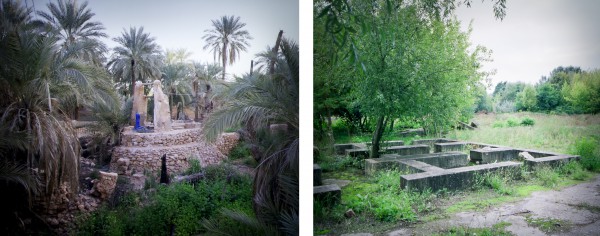
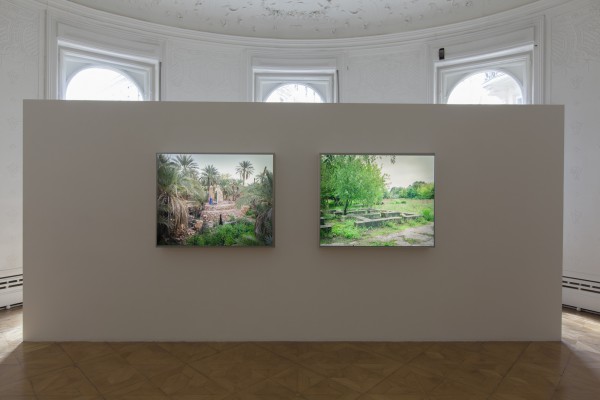
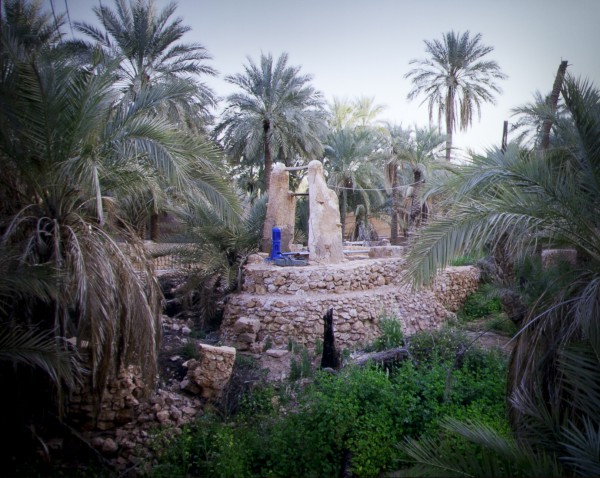
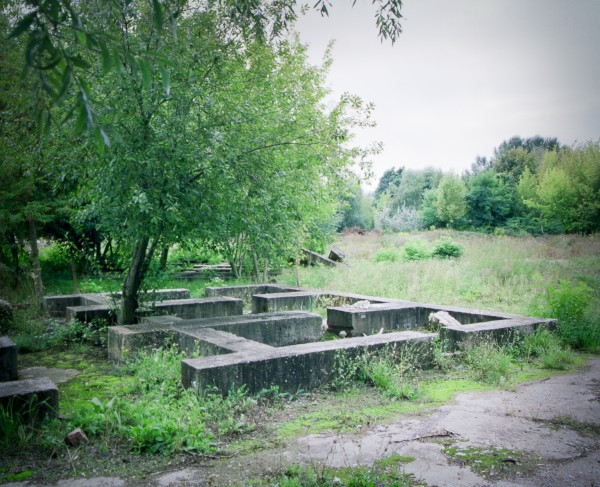
Measure and Control, 2013
Installation, 2013
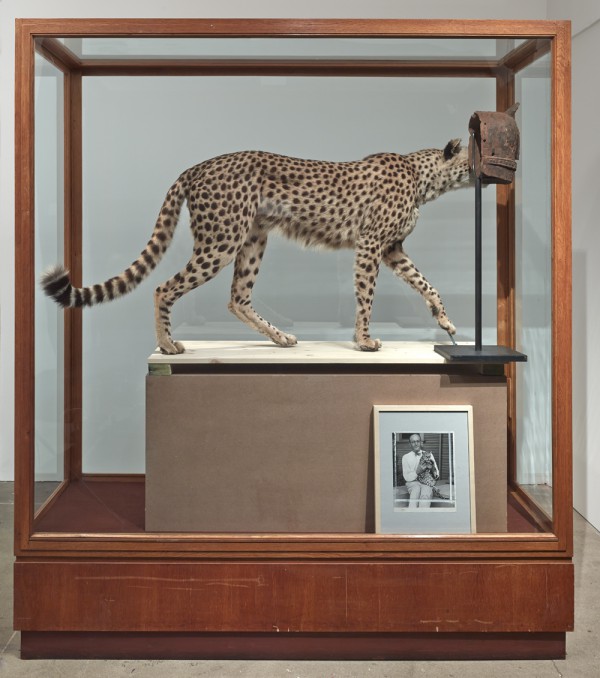
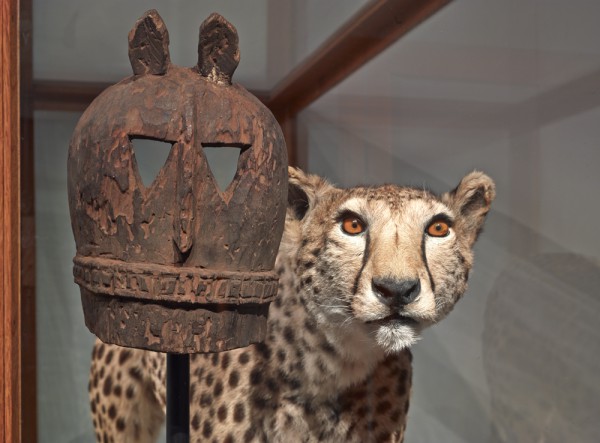
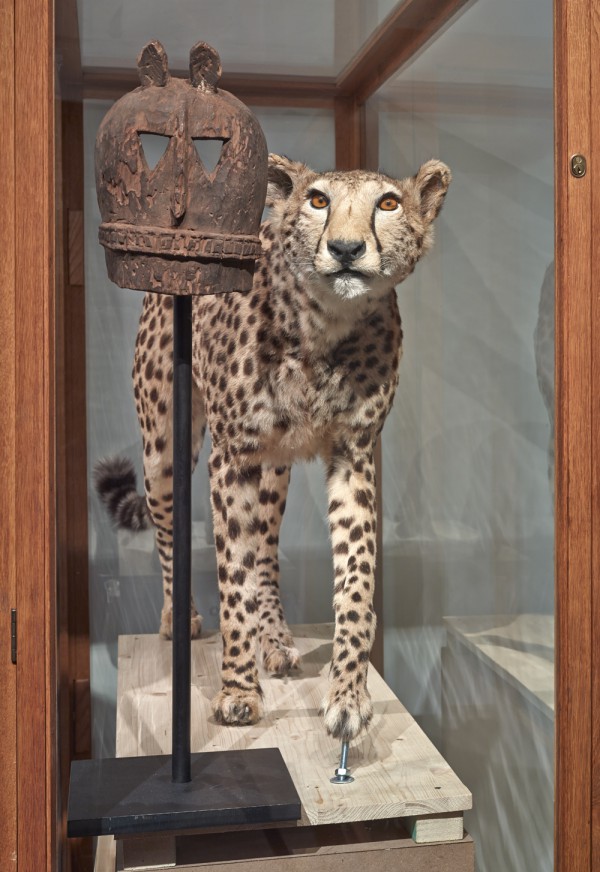
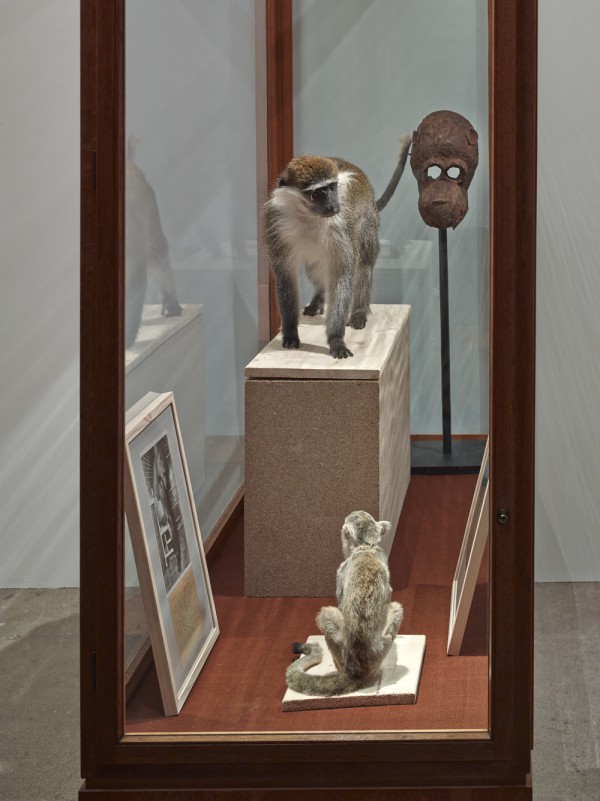
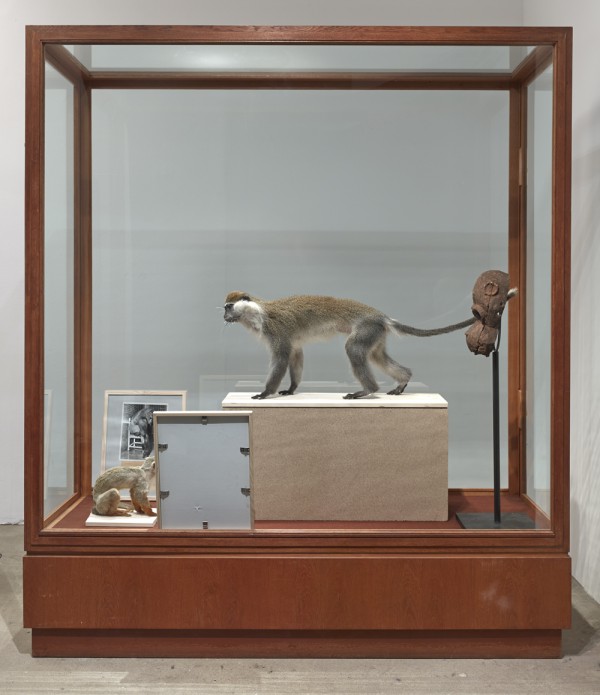
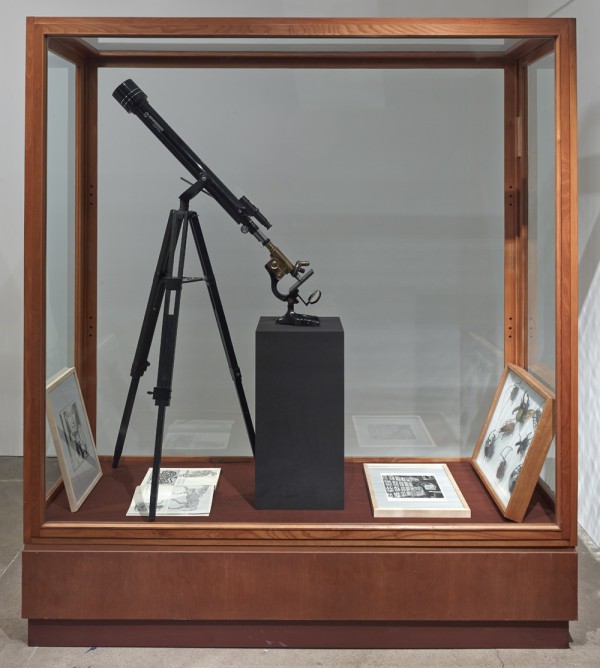
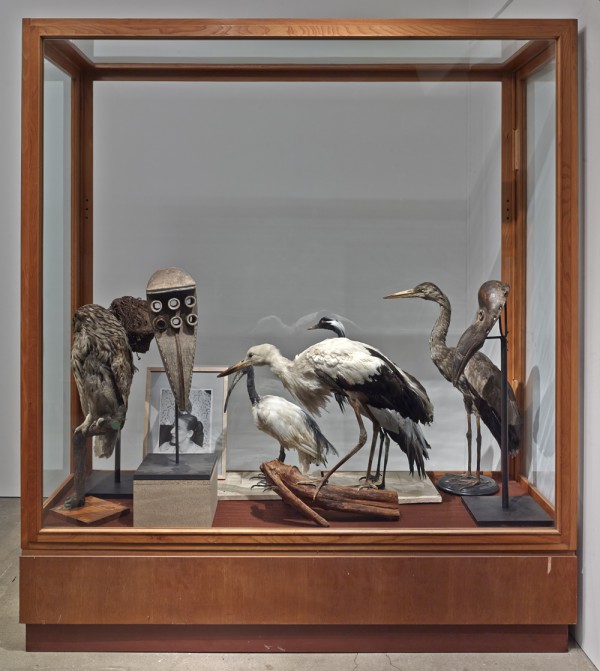
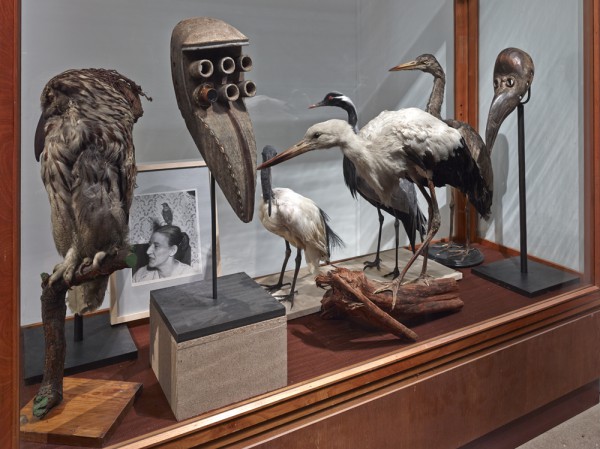
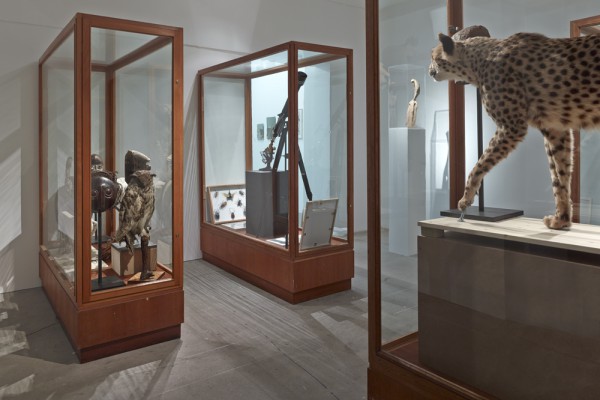
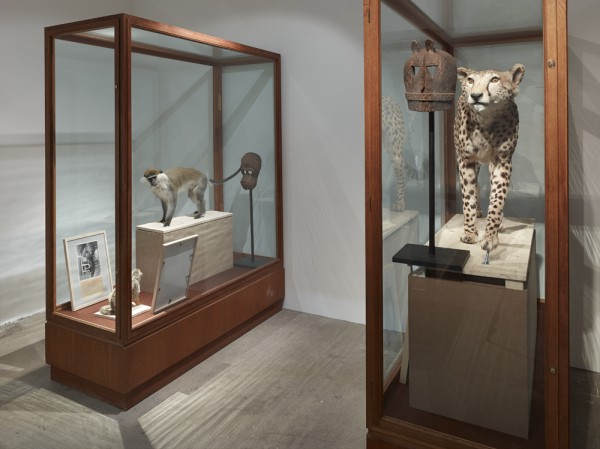
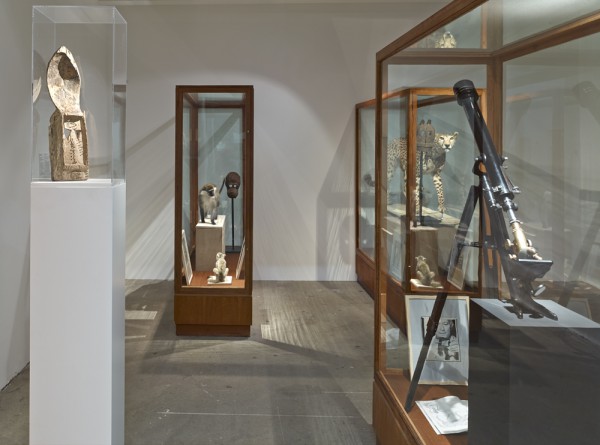
Installation 2016
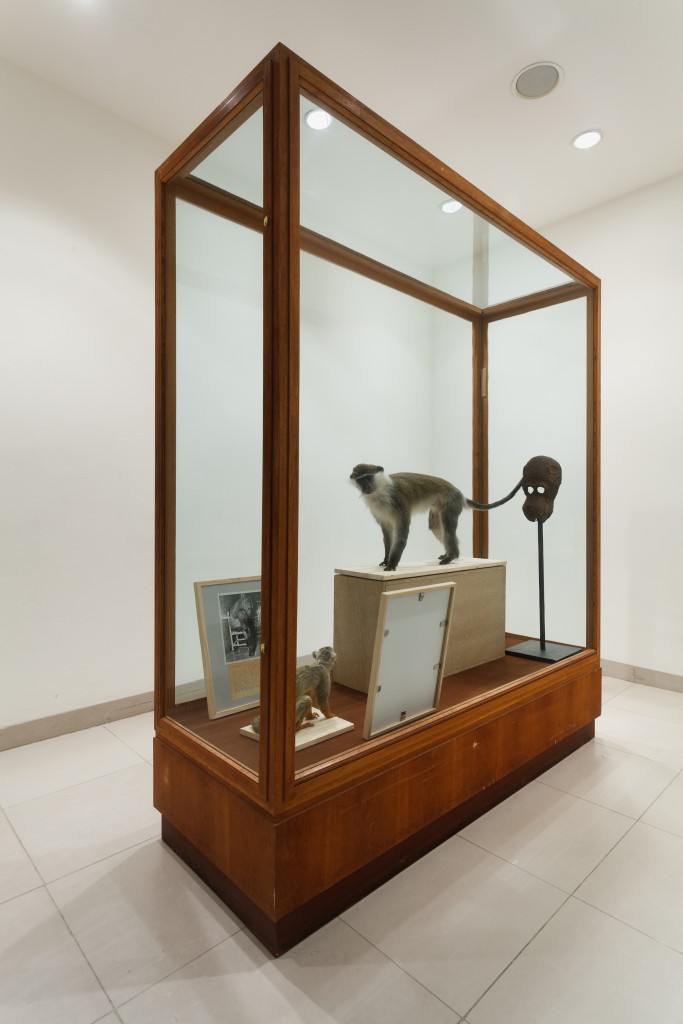
© Axel Schneider
Sculpture, cabinet, stuffed animals (monkeys), Dogon mask, various objects
The Repair’s Cosmogony, 2013
Installation, 2013
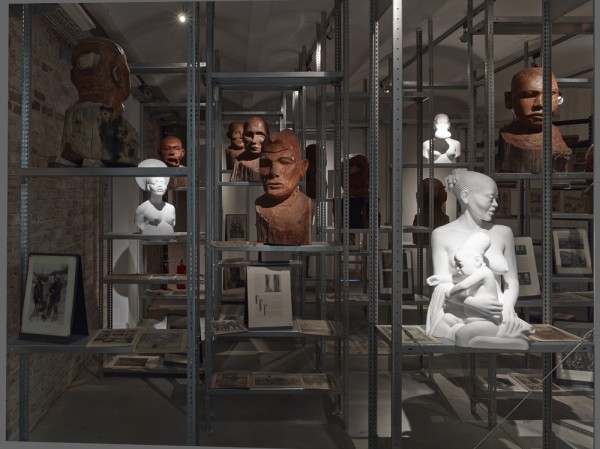
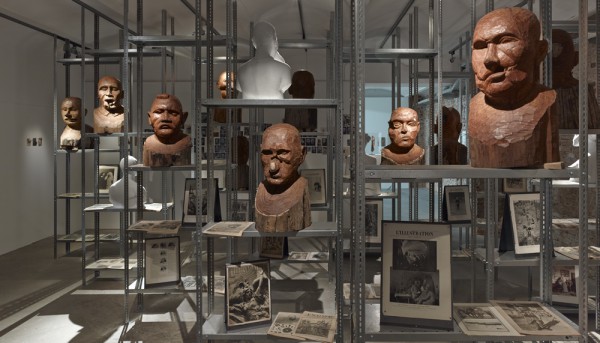
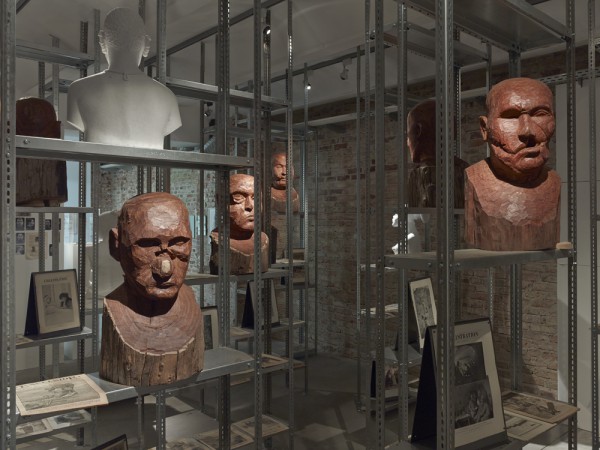
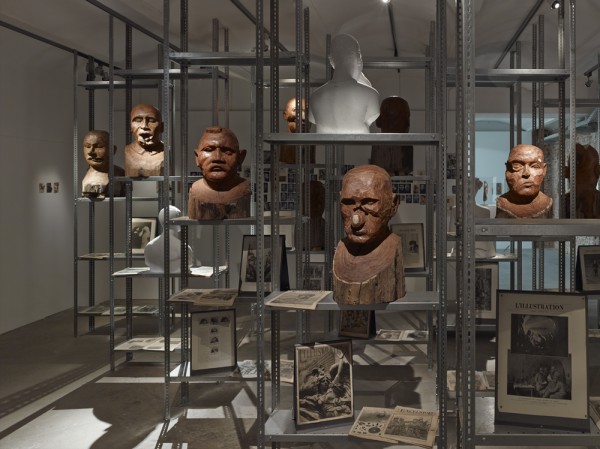
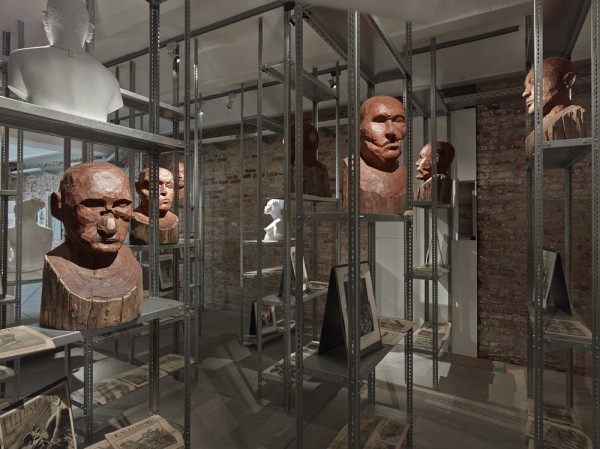
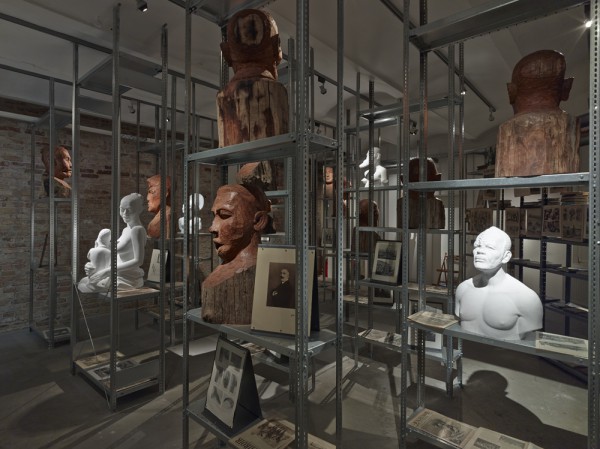
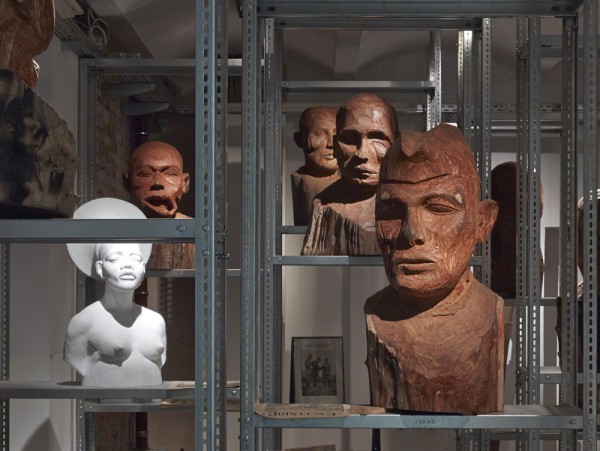
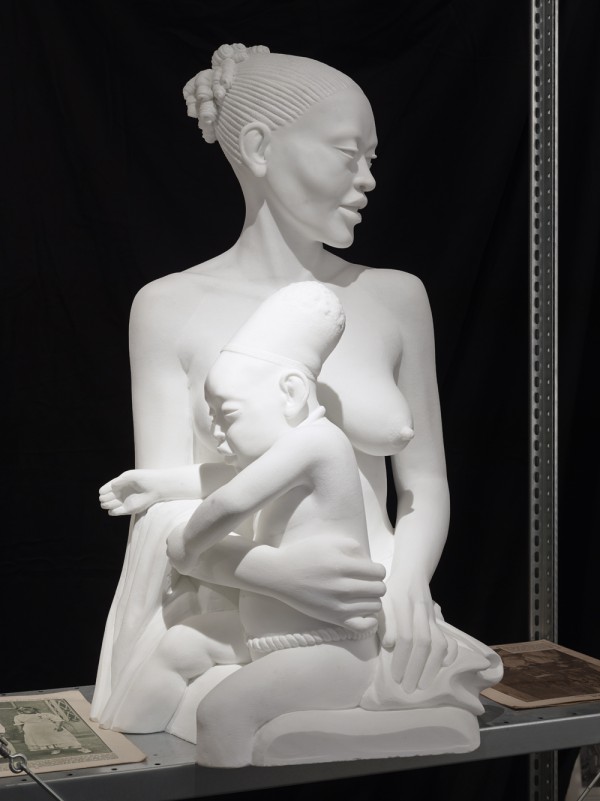
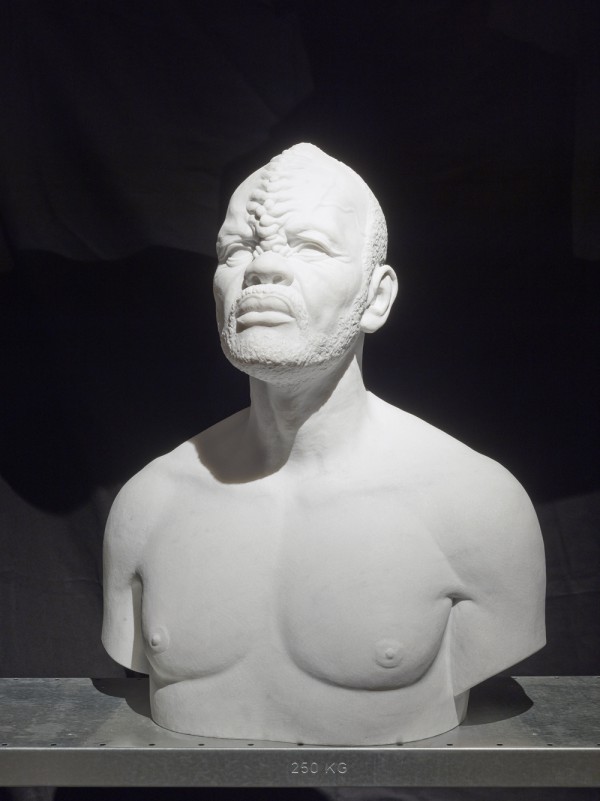
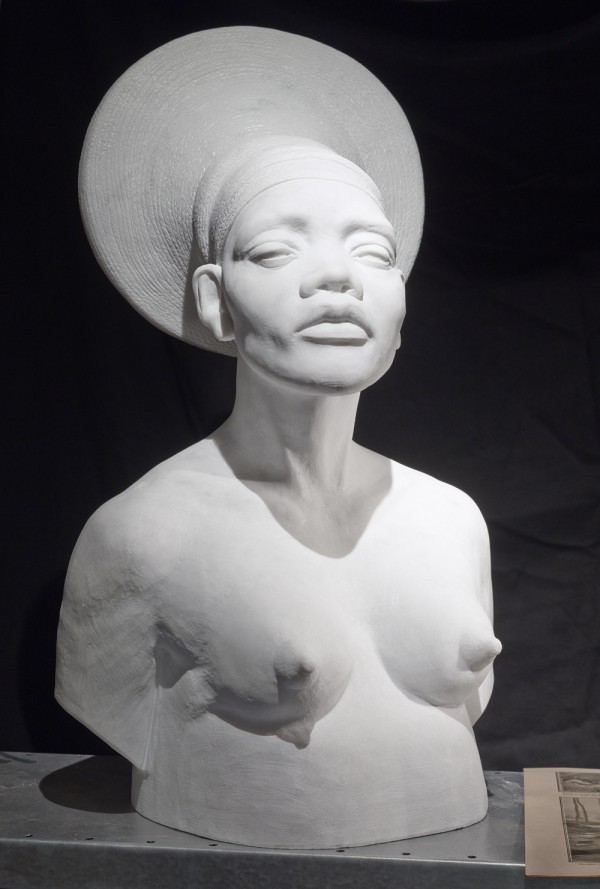
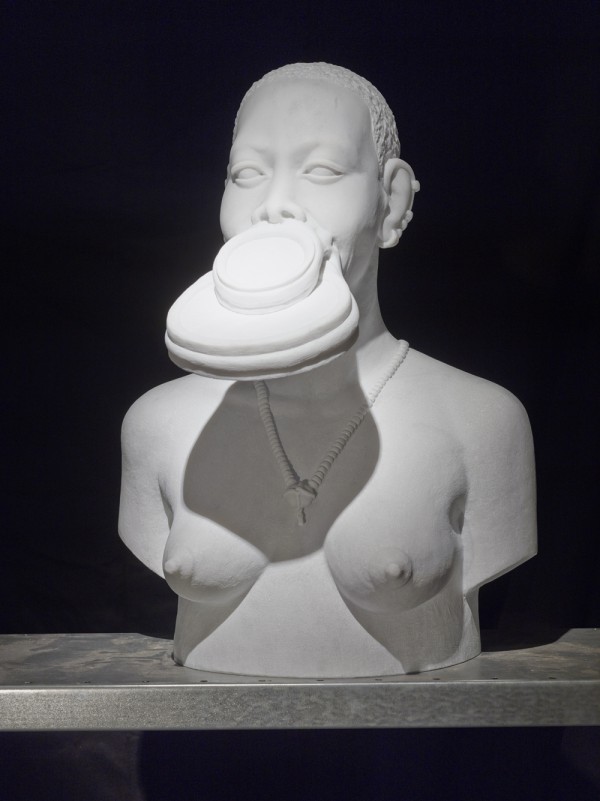
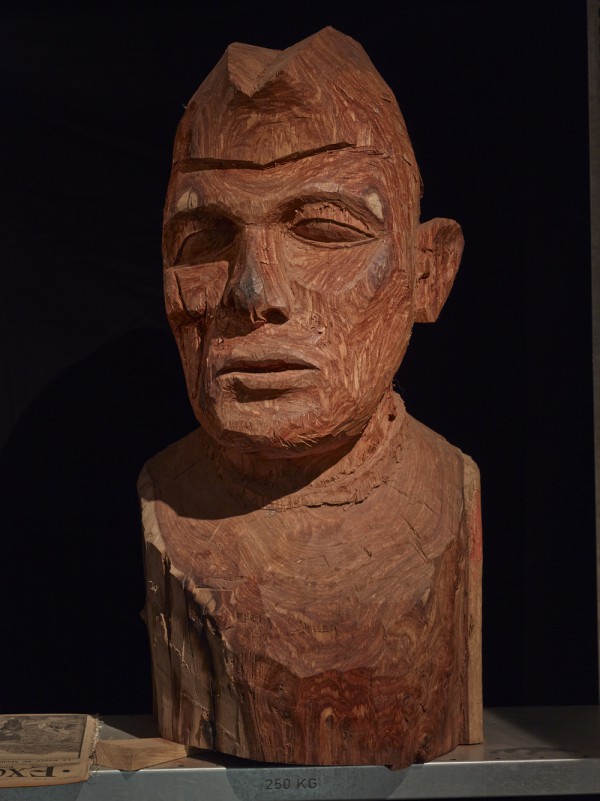
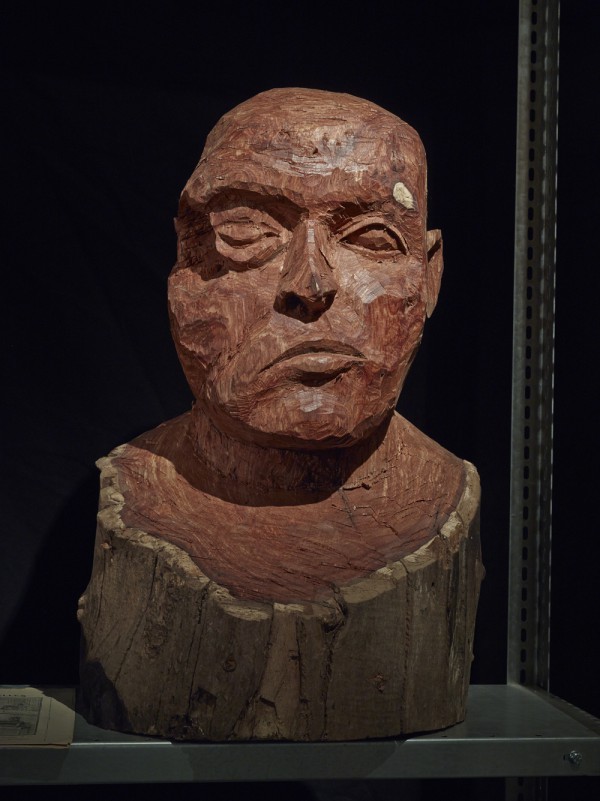
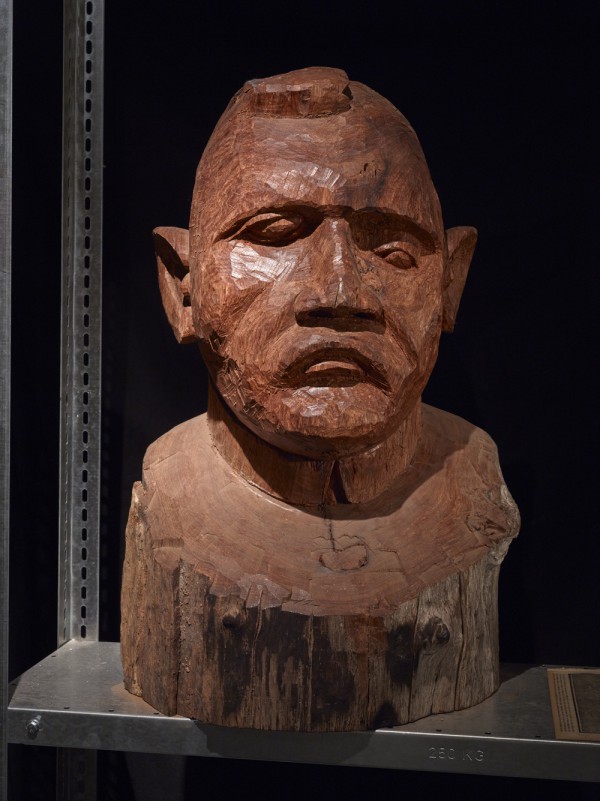
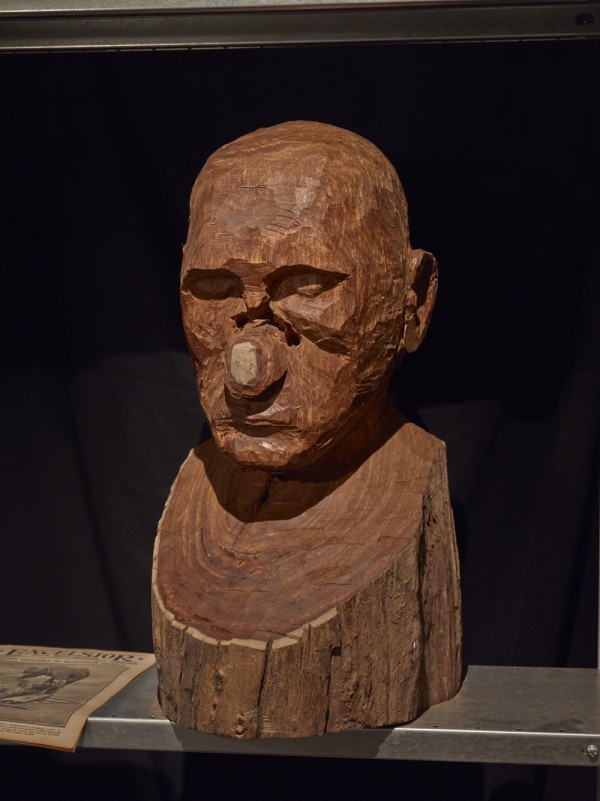
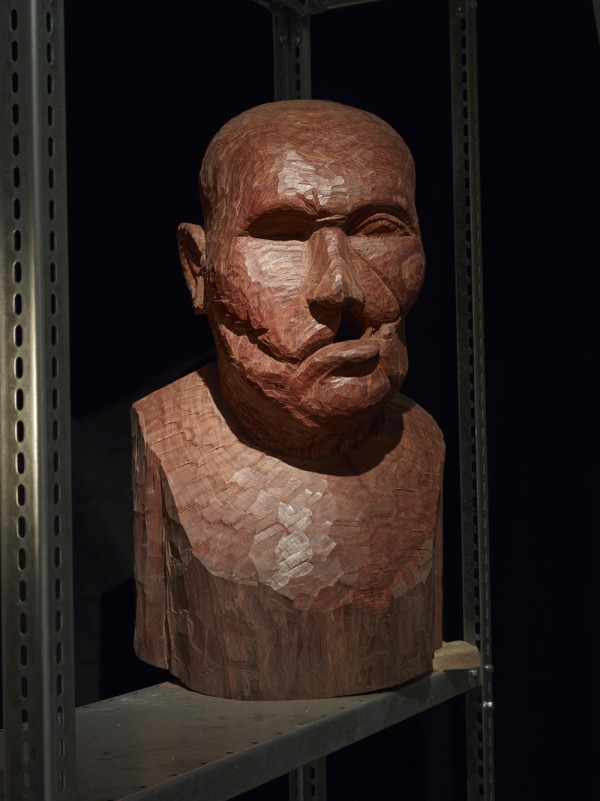
The Continuity of the Debt, 2013
Installation, 2013
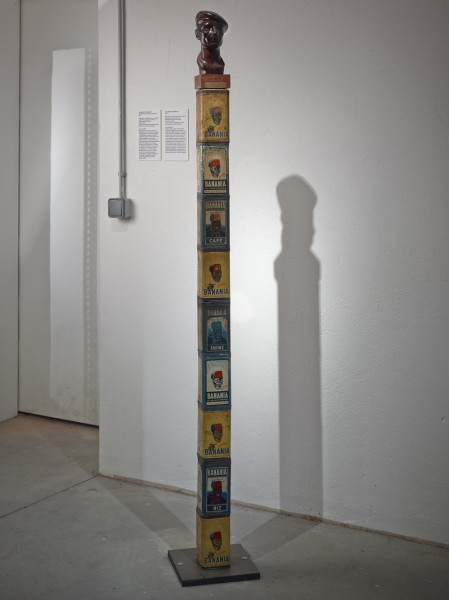
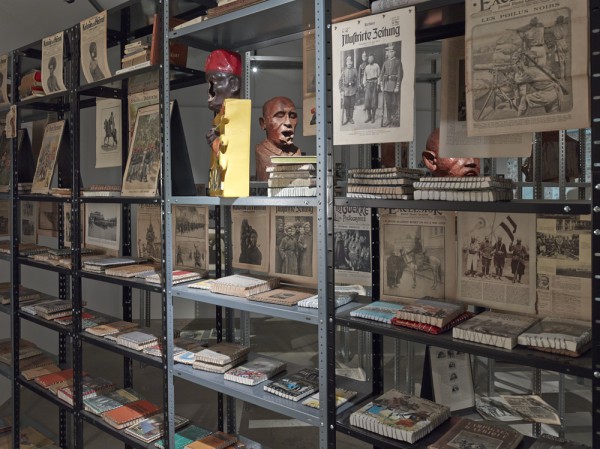
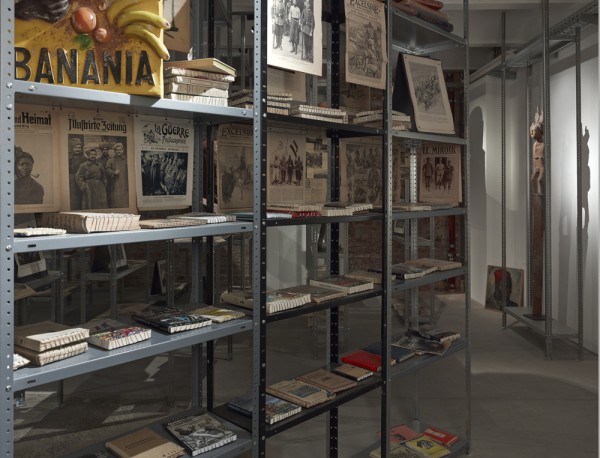
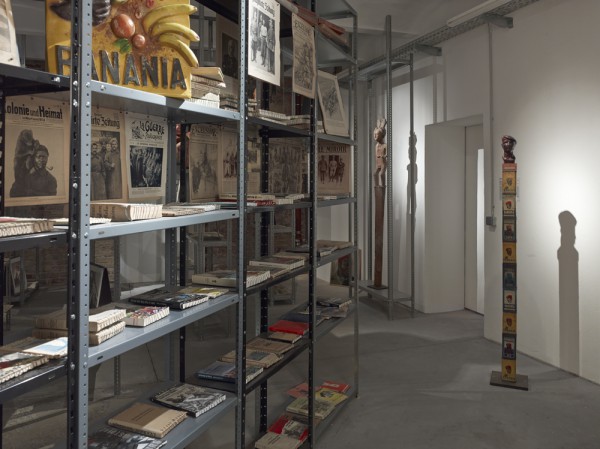
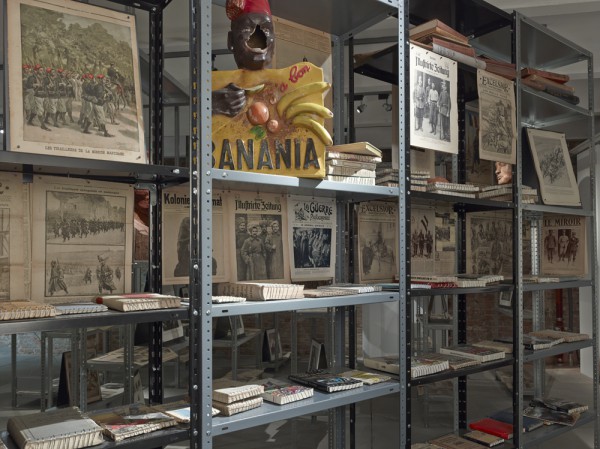
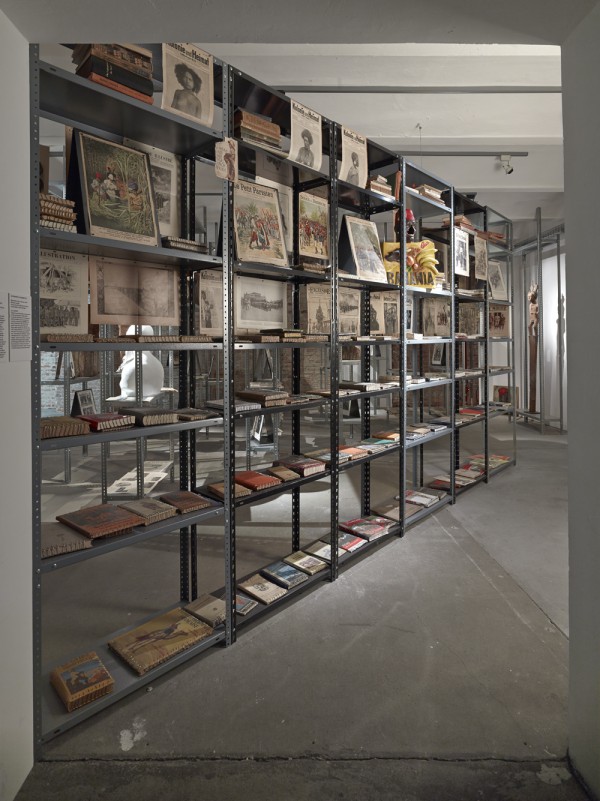
Mirrors and Masks, 2013
Installation, 2013

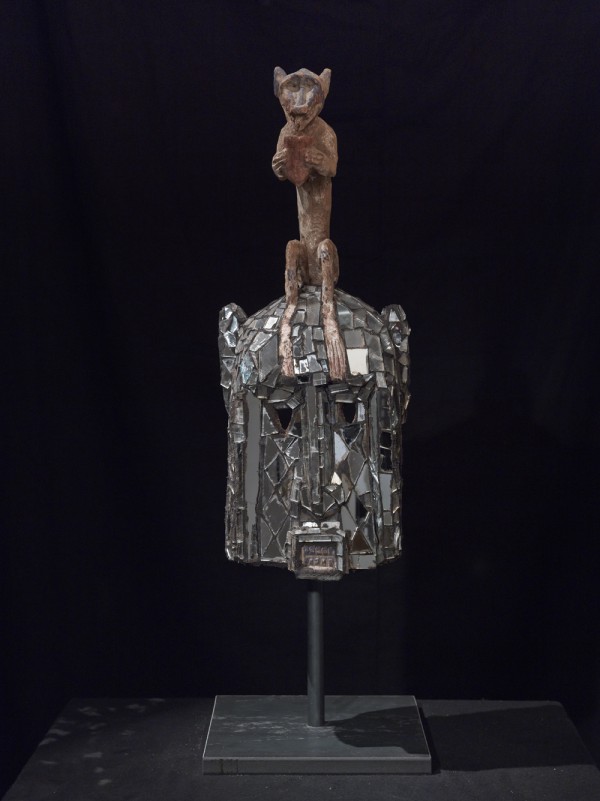
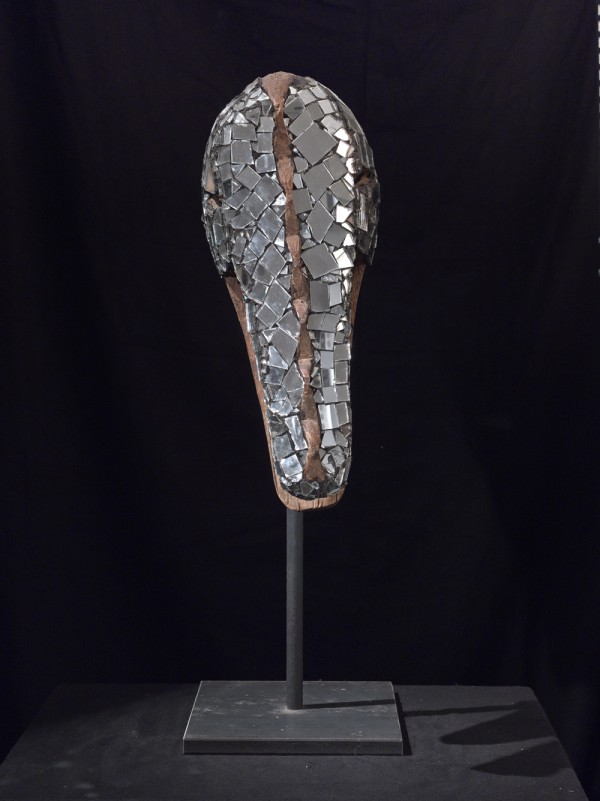
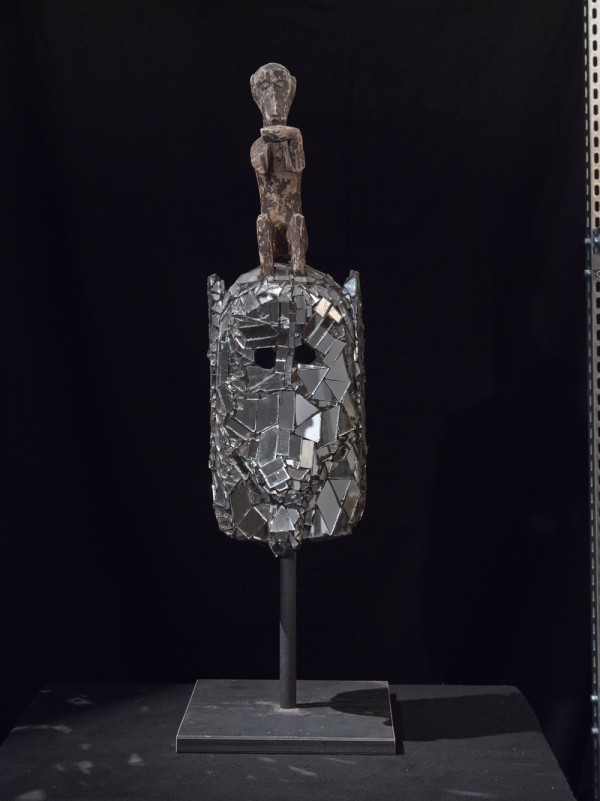
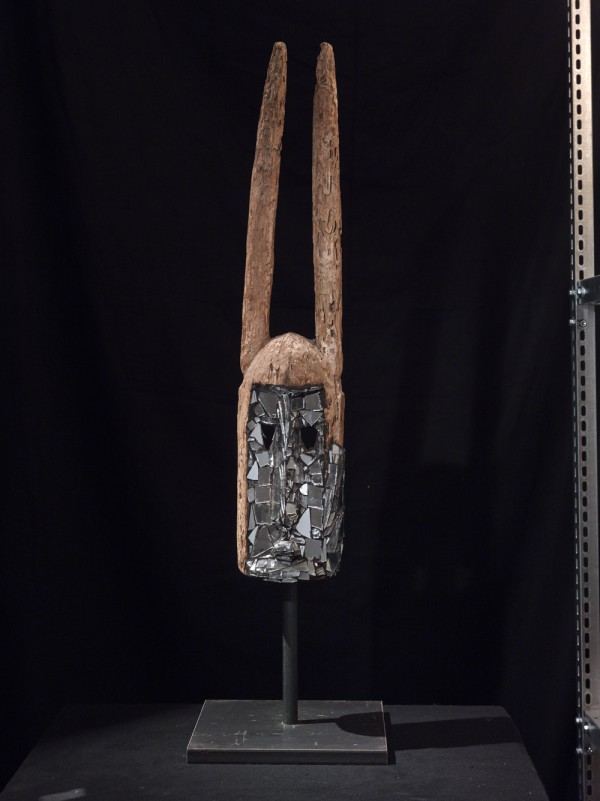
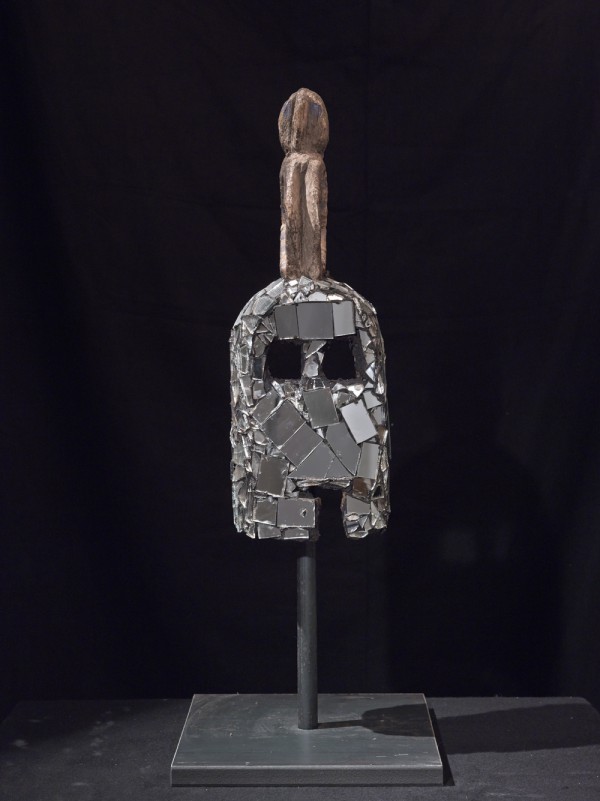
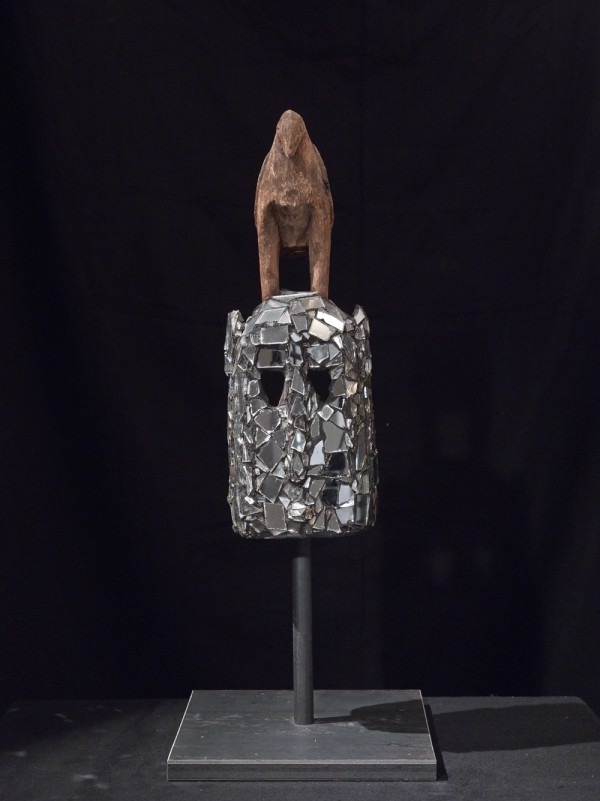
MMK Frankfurt 2016
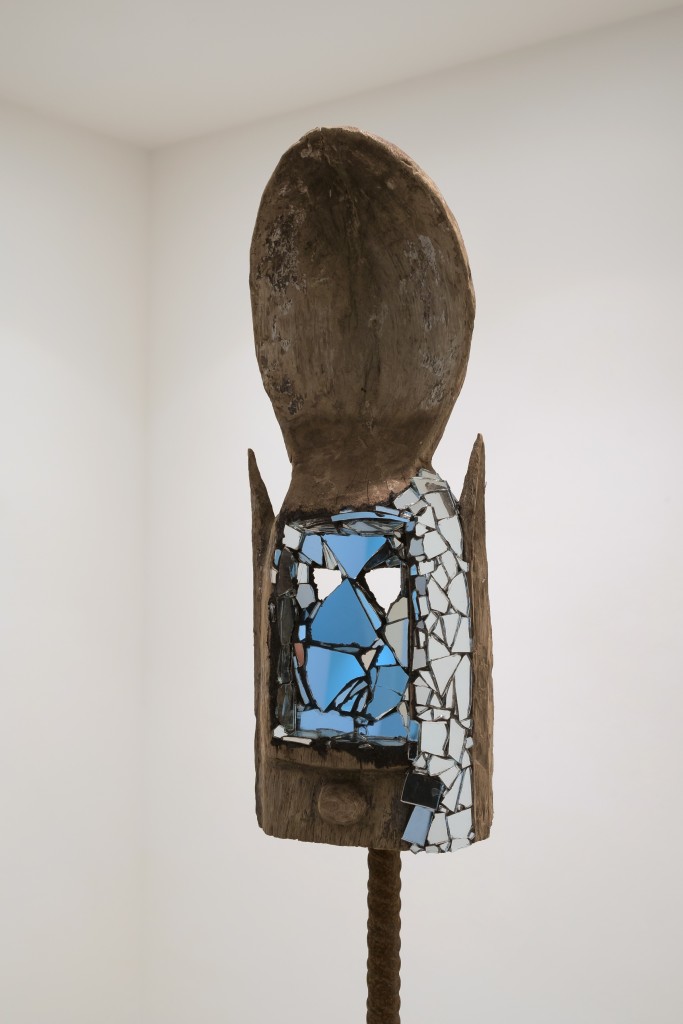
© Axel Schneider
Sculpture, wooden Dogon mask, mirror, metal base
History of Reappropriation, 2012
Photography, 2012
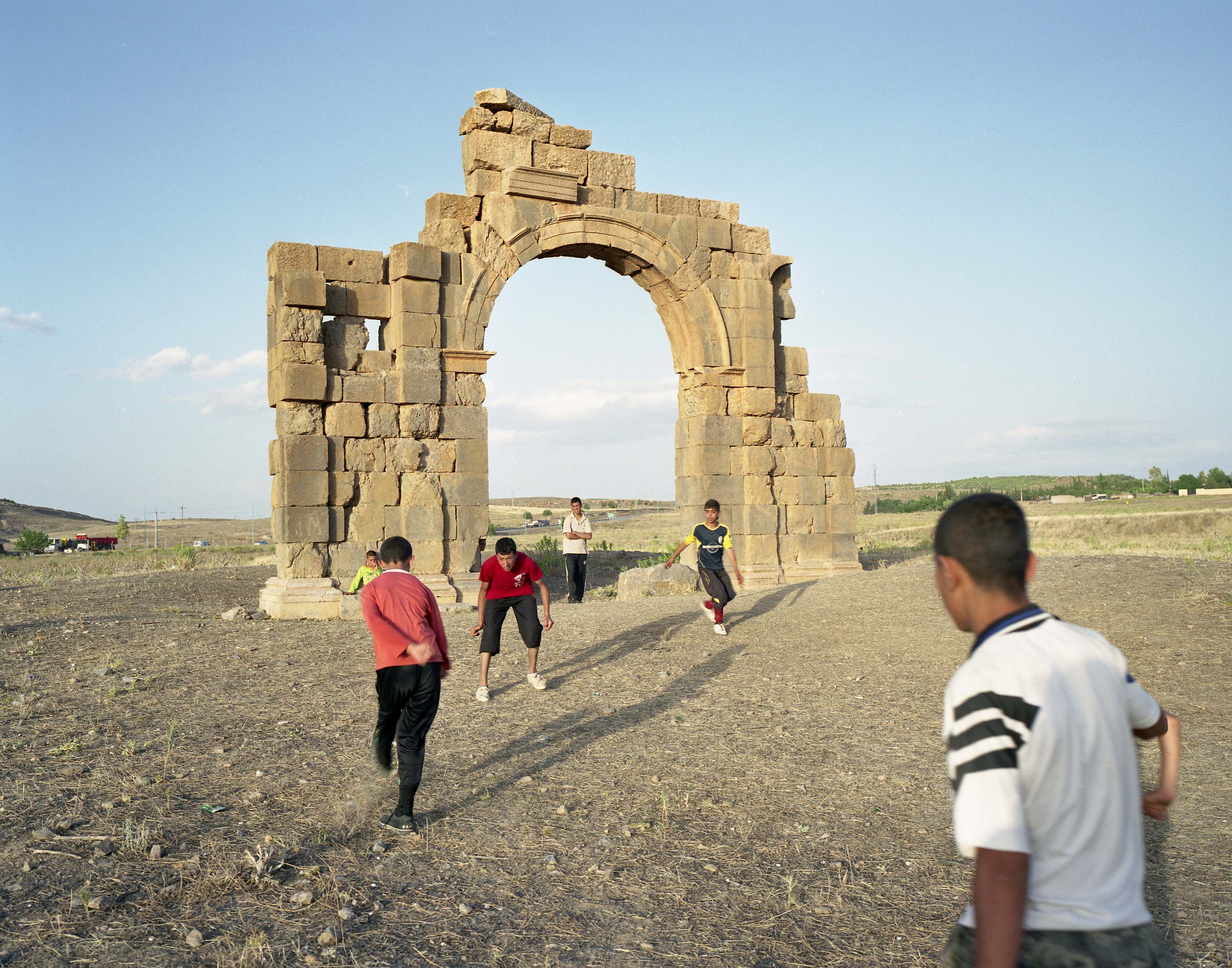
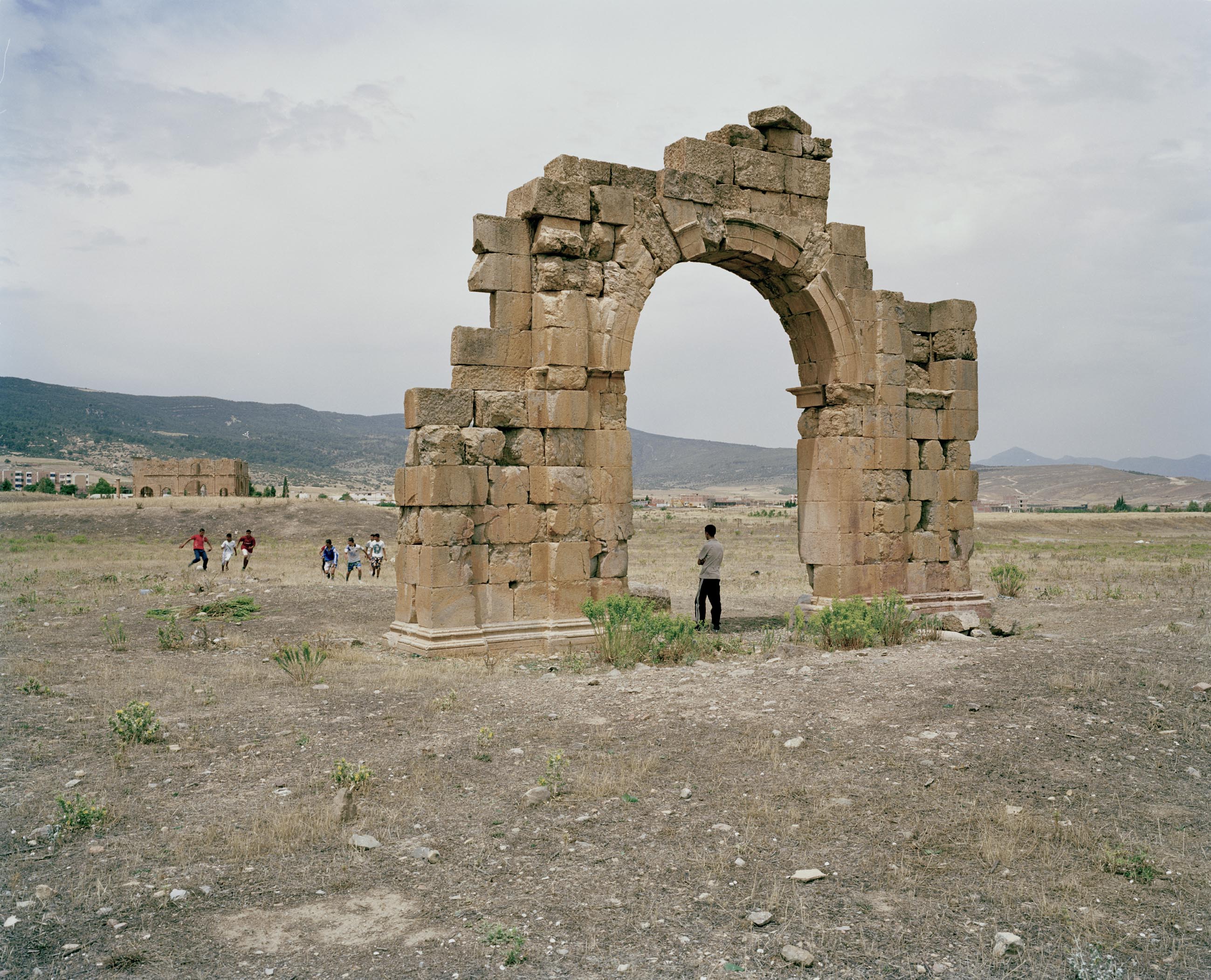
Following the Modern Genealogy, 2012
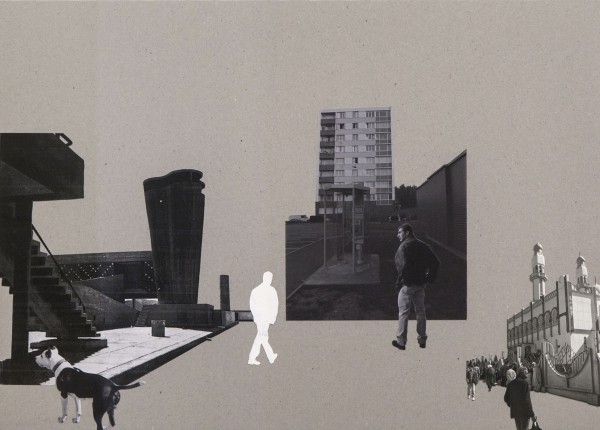
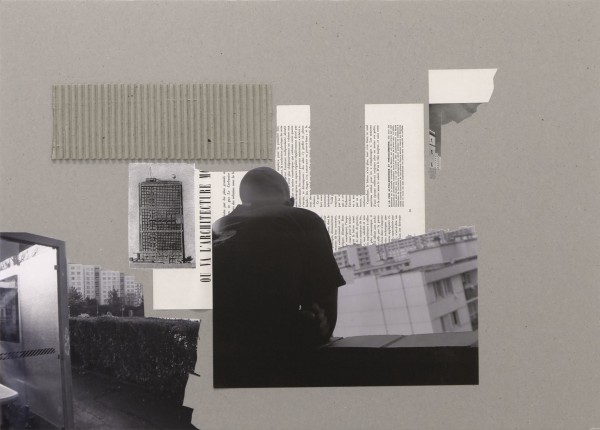
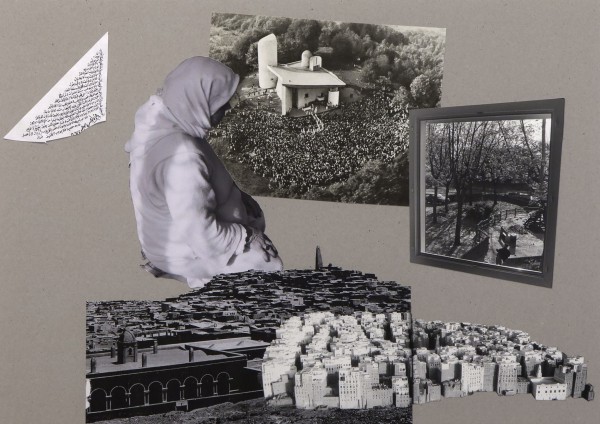
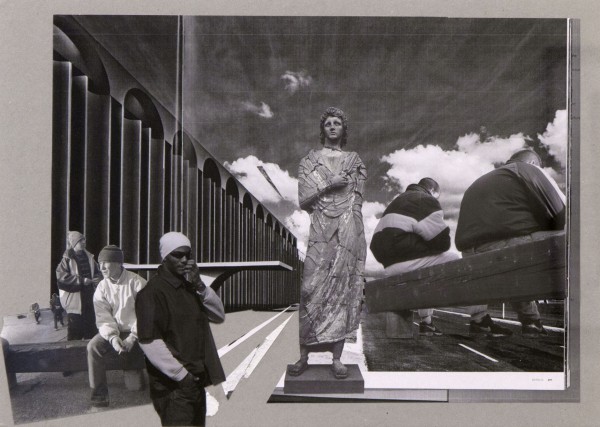
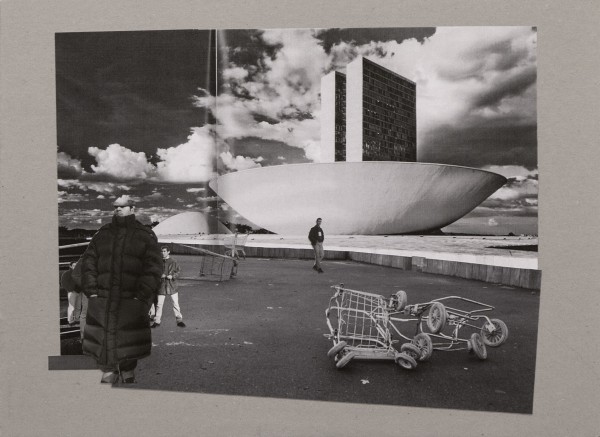
The Repair from Occident to Extra-Occidental Cultures, 2012
Installation, 2012

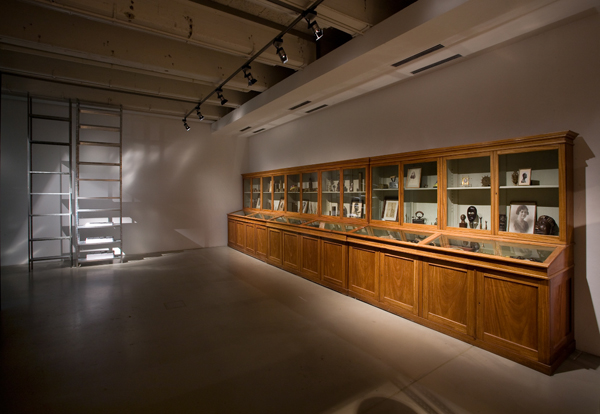
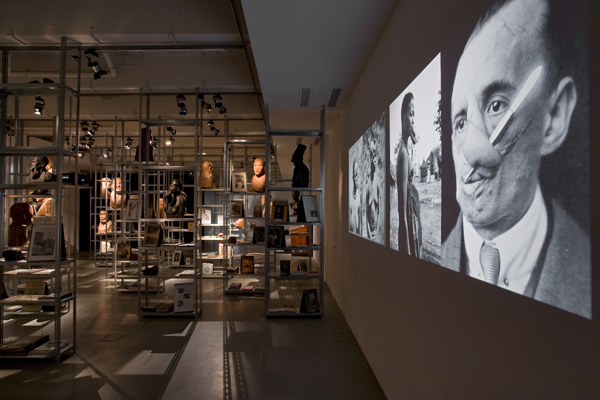

The Body as a Target and Object of Power, 2010
Slide Show, Kunsthaus Glarus, Glarus, Switzerland, 2010
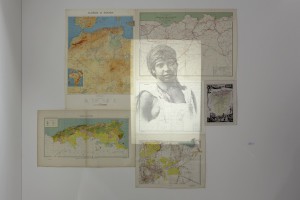
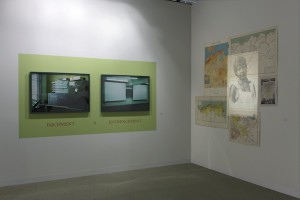
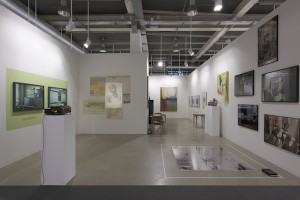
Satellite Dishes, 2009
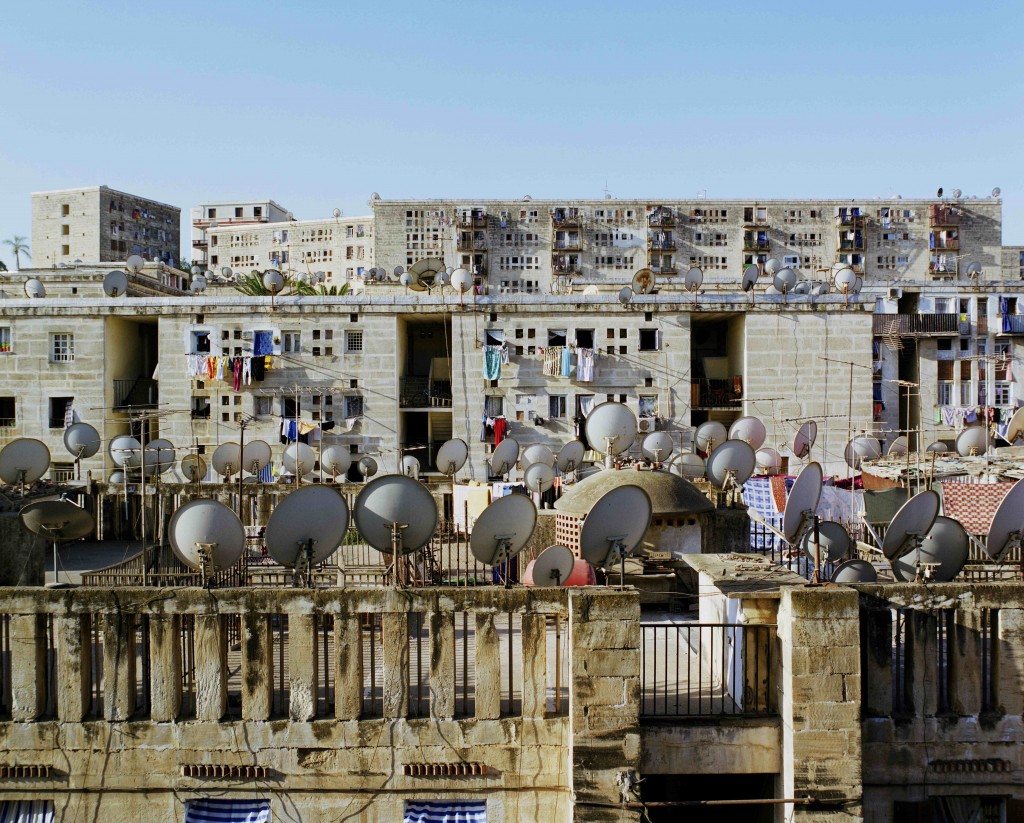
Photograph
Couscous Aftermaths (3000 years old movement), 2009
Video, 12 min, 2009

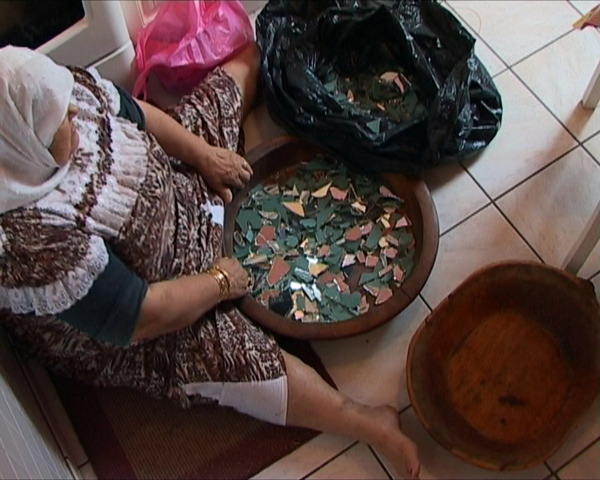
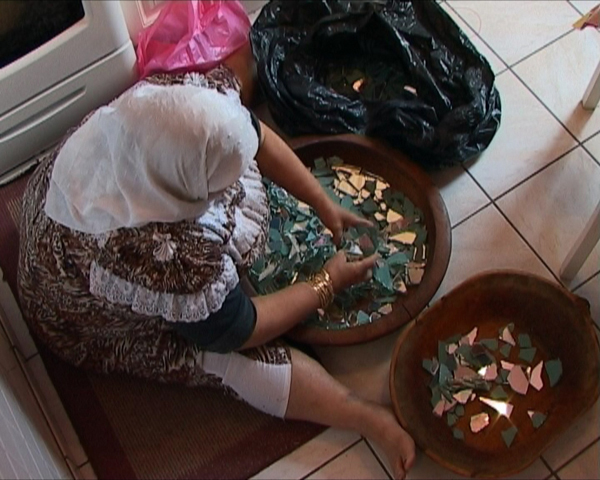
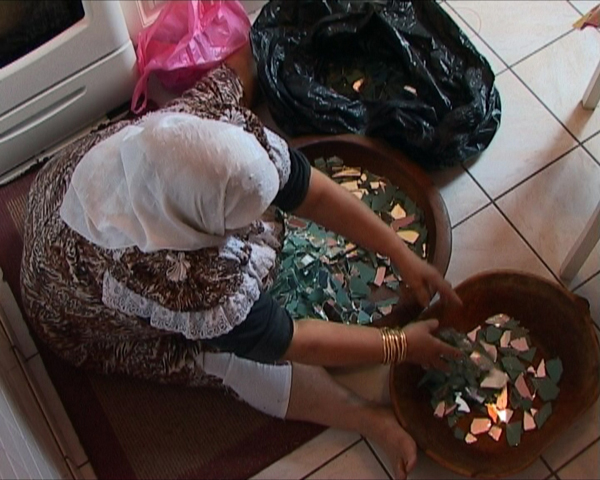
Demo(n)cracy, 2009
Sculpture, 2009
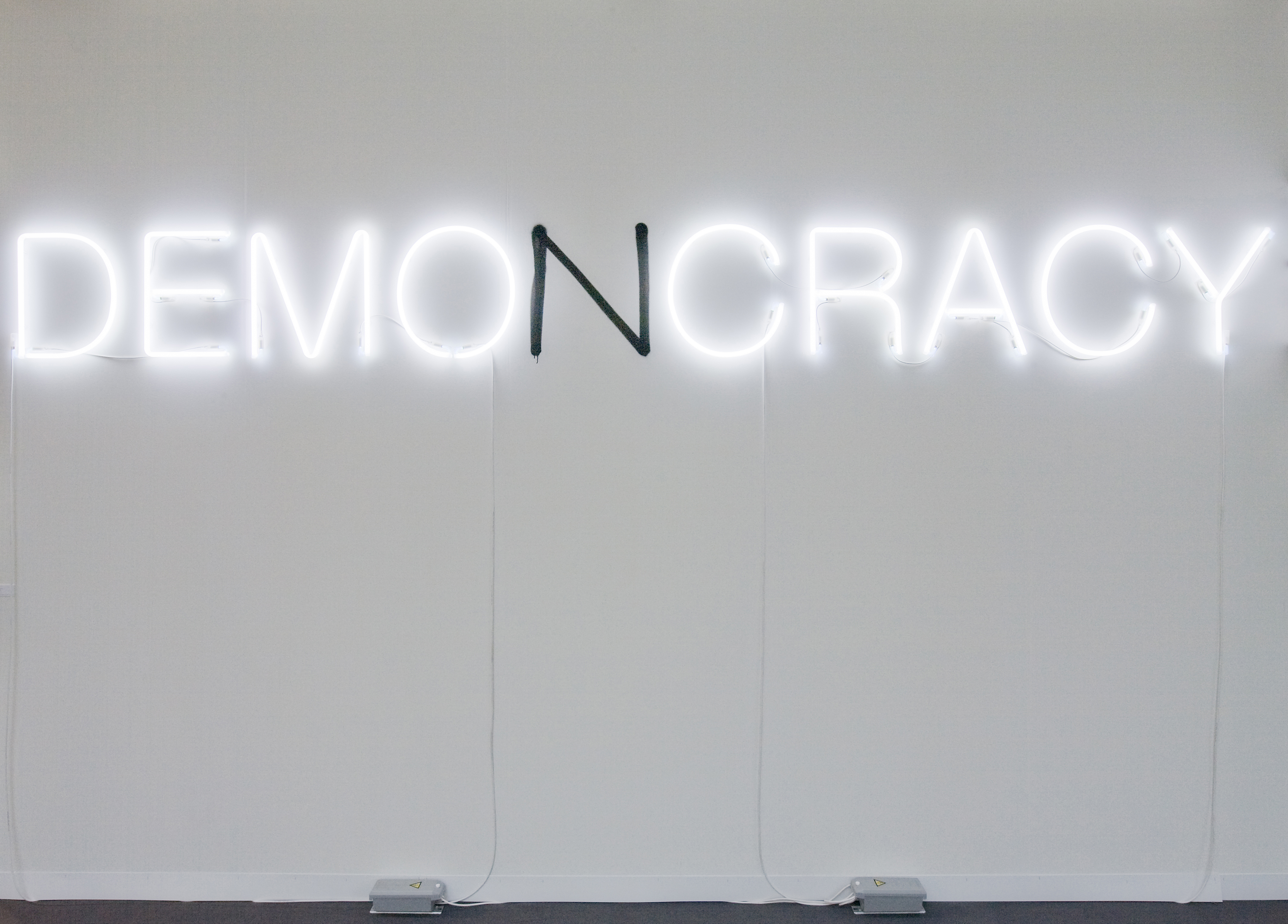
Tawaaf, 2009
Installation, 2009
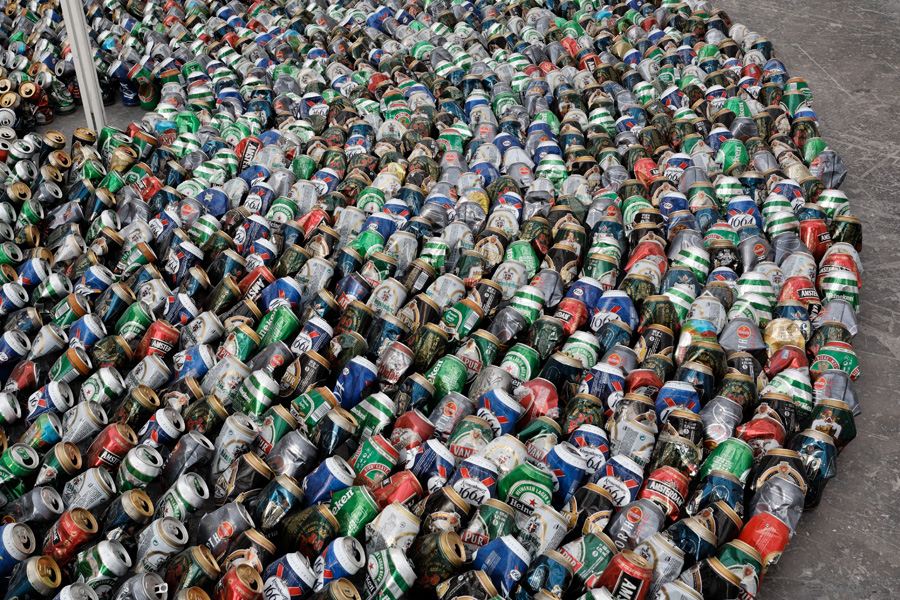
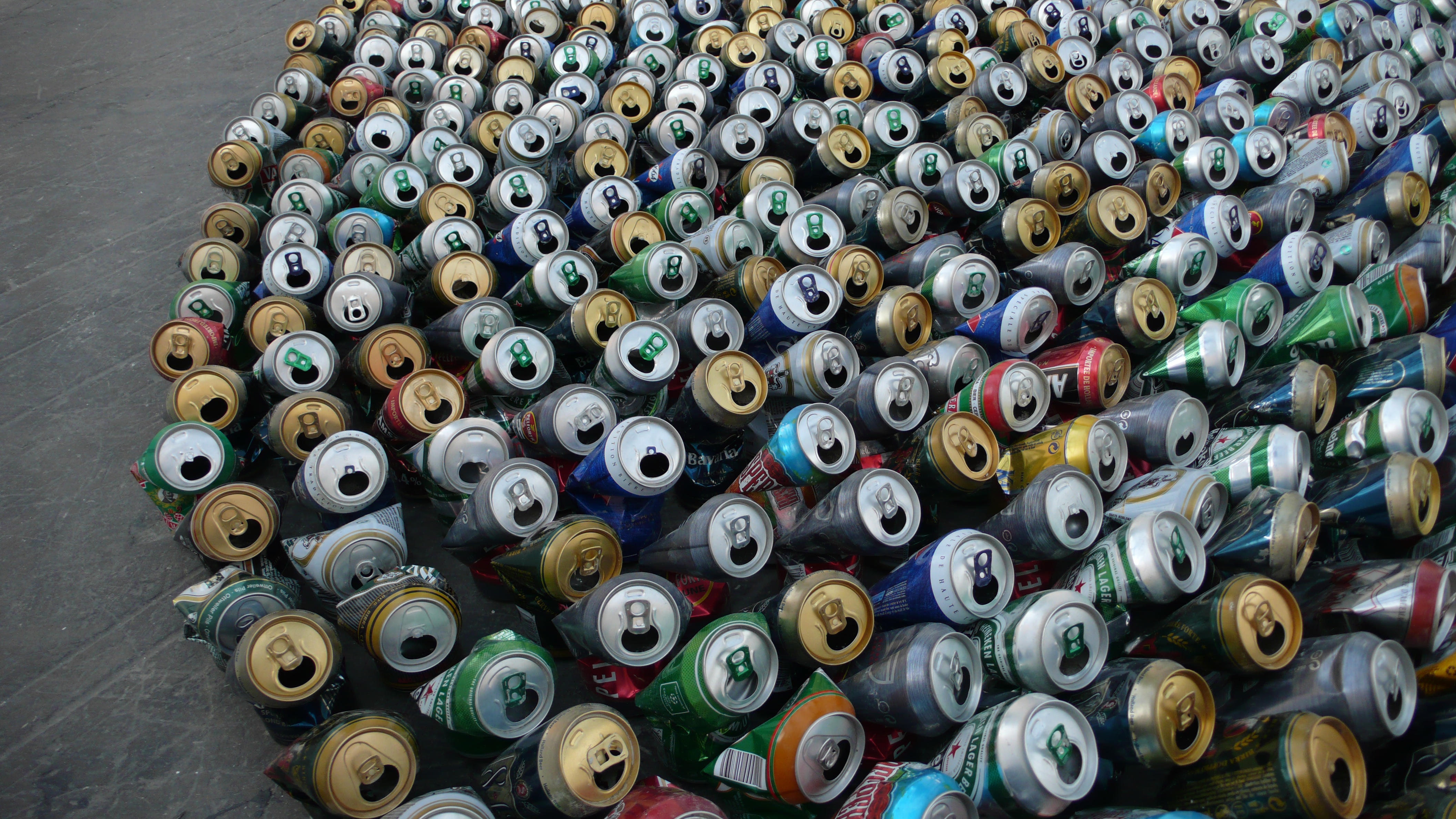
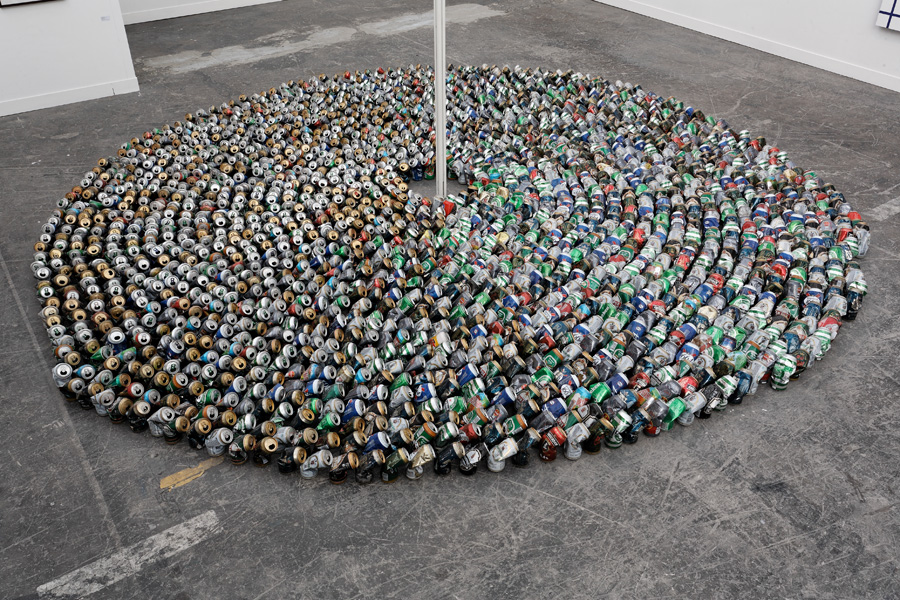
Untitled (Couscous), 2009
Sculpture
Kunsternes, Oslo, Norway, 2009
CCC de Tours
Collection Lambert
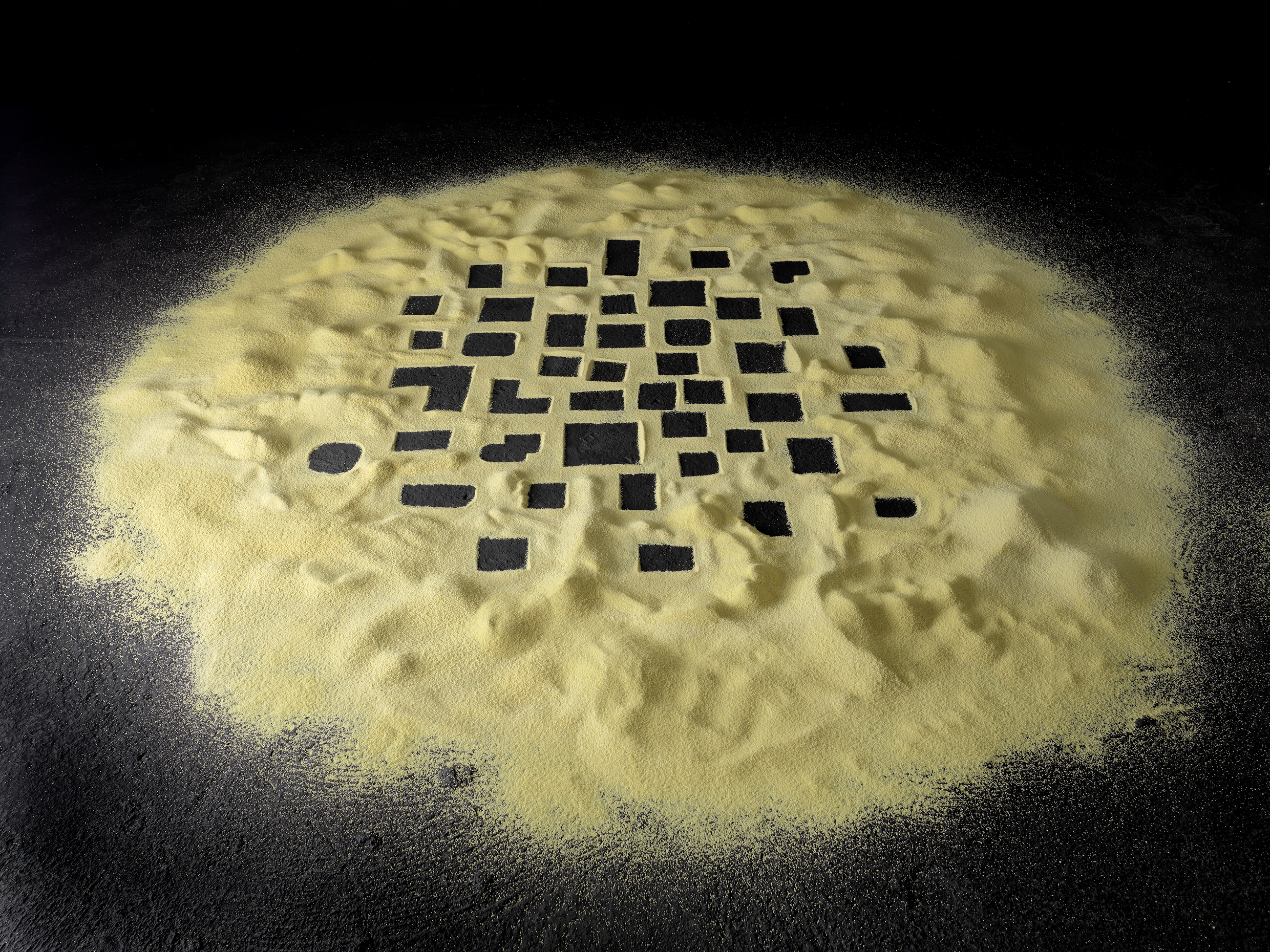
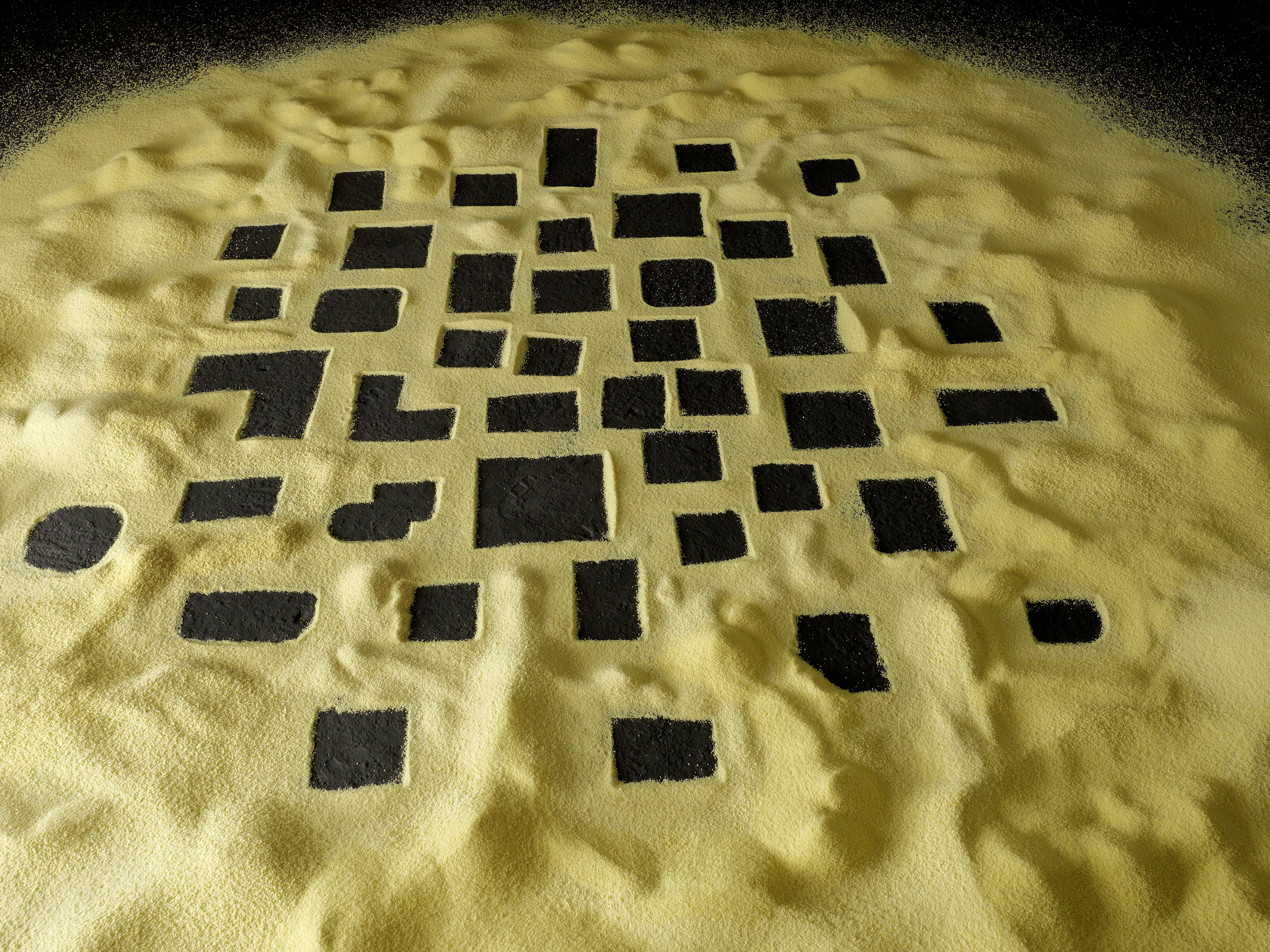
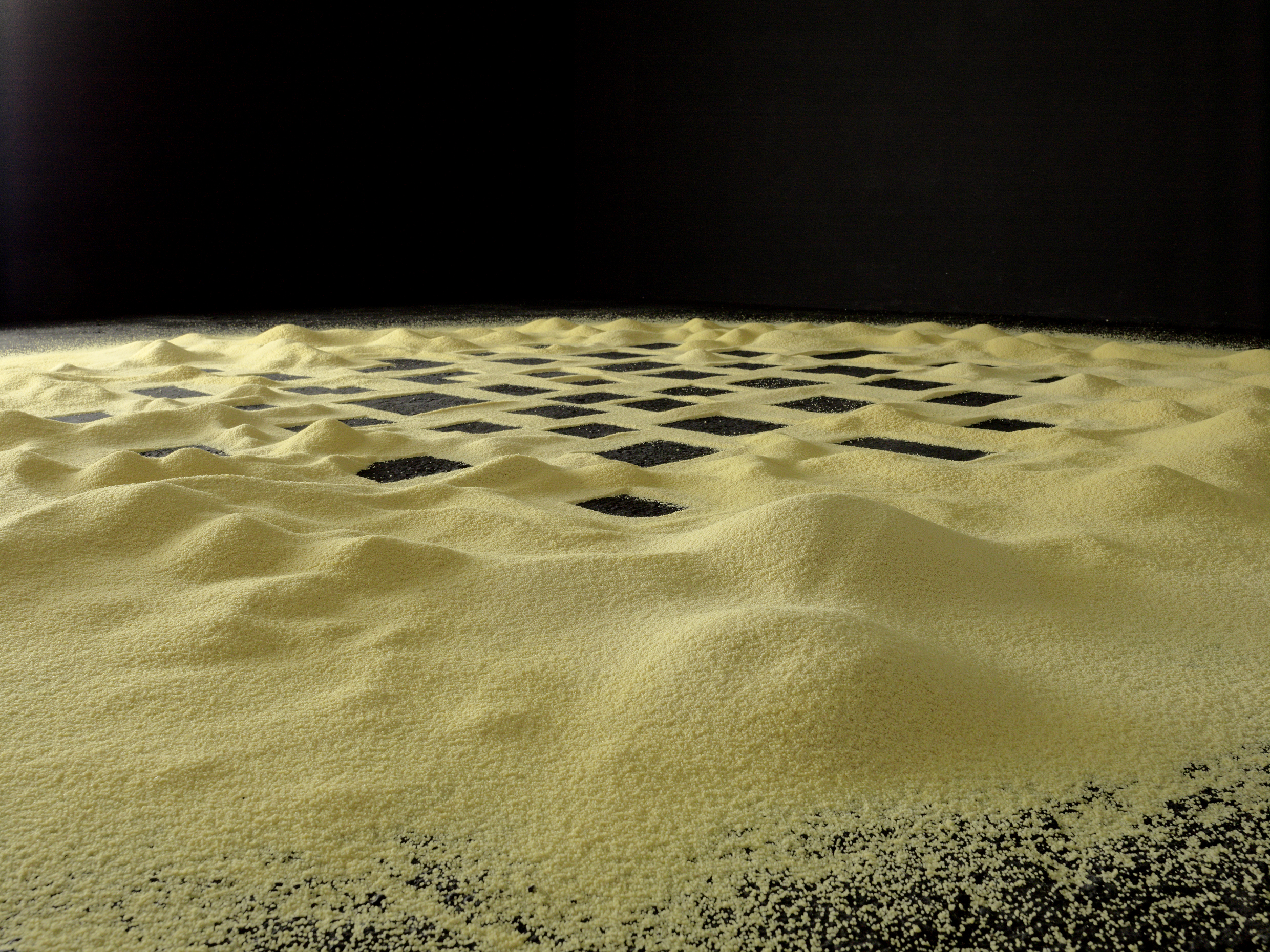
Installation 2015 at The Injuries are here, Musée Cantonal des Beaux Arts de Lausanne, Lausanne
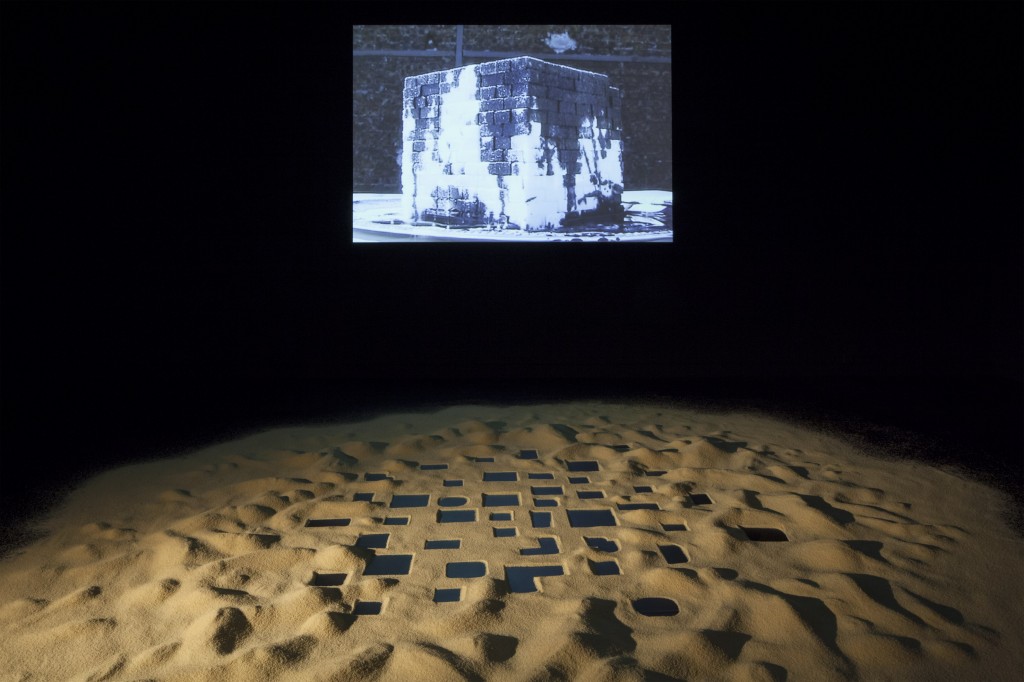
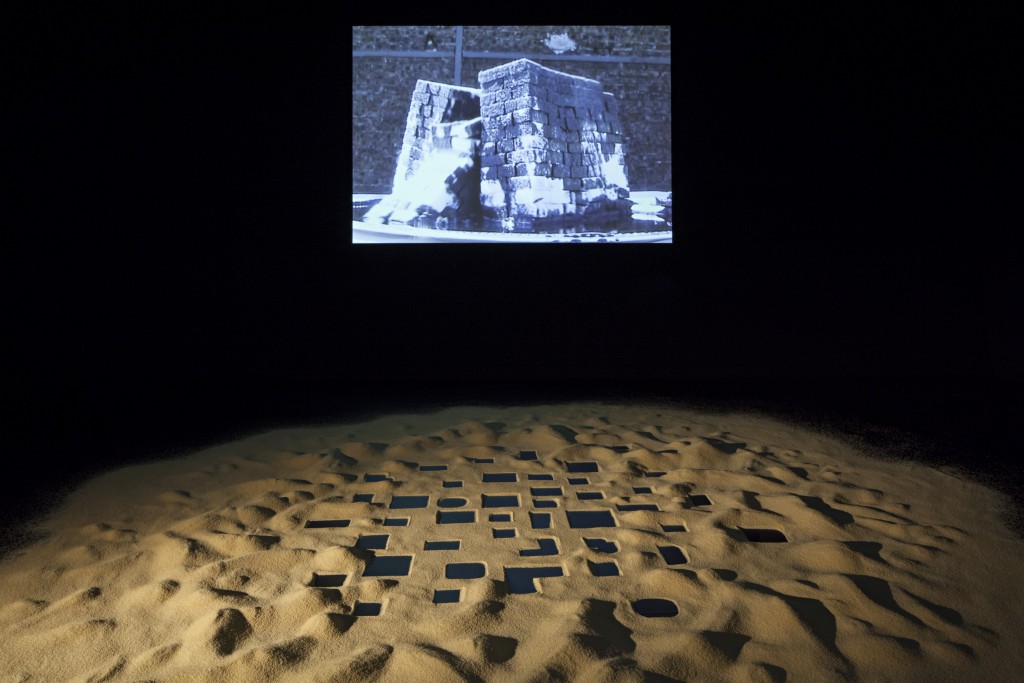
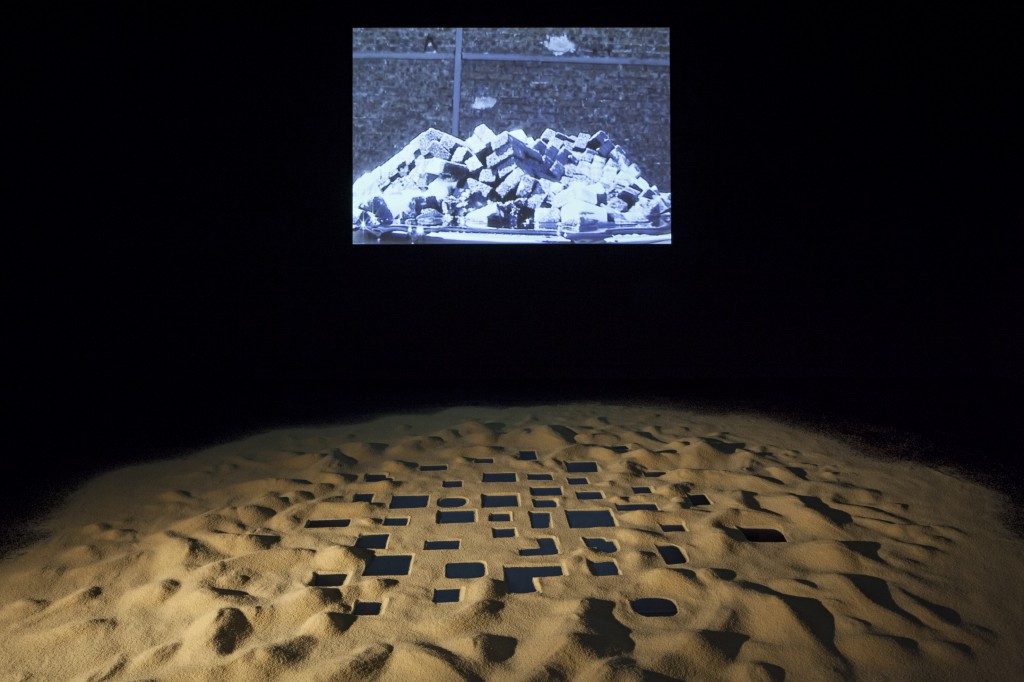
Mimesis as Resistance, 2013
Writing published in the catalog of the exhibition «Hlysnan The Notion and Politics of Listening»
If I am interested in “natural order of things”, it is because it binds us to our hidden human genealogy. In the spectrum between nature and culture, behaviors such as mimesis, raise a lot of questions.
Through the ideas of Renée Descartes – that the past should be removed in order to build a new world, to follow reason and the logic of categories and measurements – modernity and rationalism have cut us apart from nature. One of the main aspects of modernity makes us believe that humans invent to evolve, when in fact they only repair. They repair to resist; they attempt to resist disappearance, the extinction of the human kind and death. In the evolution of the human species repair has been as a creative and artistic practice. I would like to understand art and artistic practice in this context as any form of creation, which aims to improve a state of being and/or to transform a space/time of death to one of life.
The development of a culture of death could be considered a first form of such human artistic creation. For example, the Neanderthal when they started to become aware of their finiteness. Due to their desire for some kind of continuity for their dead beloved ones they developed practices and rituals like burials, or mummification, or representations in stone or wood. These practices are based on the desire to fill the absence of someone disappeared with something both concrete and abstract: a memorial of beliefs of a life after death.
“Repair” is an endless oxymoron; it carries both, the notion of destruction and reconstruction within the same terminology. It took me years of observations and investigations to understand that ‘repair’ is the core reason (“la raison d’être”) of the existence of “reappropriation”, and that in fact, it applies to culture as much as to nature.
When any social or ethnic group is ruled by another cultural order – for example during colonialism or times of slavery – forms of creative or artistic ways of operating that carry signs of reappropriation instinctively emerge among the oppressed. My grandmother’s story might be a good example to explain how I understand reappropriation: During the Algerian War of Independence my grandmother, a single mother whose husband had been killed by the French army in the area of Setif, was a partisan. Her job was to collect all over the “Douar” (the Algerian countryside in the eastern mountains) jewelry from women that they had received as brides. When her buckets (she had two) were full, she had to bring them to a cave located in a cliff nearby her farm. She would do this day after day until after two or three weeks, the jewelry would be transported at night with donkeys through the mountains to Tunisia. Tunis was the headquarter of the Algerian Liberation army during the War of Independence. There, the jewelry was melted into silver bars that subsequently bought Kalashnikovs. In circumstances like these, the notion of reappropriation is strongly linked to death and survival.
Another example for reappropriation could be the artefacts that the soldiers in the first World War would make to “kill” time while waiting in the trenches inbetween attacks. They were made with leftovers of deadly engines, bullets or shells of bombs welded together with gun powder.
Remember the sentence by Breton: “l’art sauvage n’existe pas“ (wild art doesn’t exist). To create something to enhance a situation through a gesture, I would consider as art.
During my research on reappropriation I discovered that already at the end of the 19th century, right during the Industrial Revolution, one of the fathers of Anarchism, Pierre Joseph Proudhon, created a theory from an axiom: Property is theft!. He was the first to use the terminology «reappropriation» in 1840. Later, in the 20th century – first in Brazil with Oswald de Andrade and his Manifesto Antropófago (1928) on cultural anthropofagia, and later in Algeria with Franz Fanon who theorised the concept in relation to anti-colonialism (The Wretched of the Earth, 1961) – the term takes its political dimension. Processes of reappropriation still continue today all over the world, where men and women instinctively attempt to reappropriate the freedom from which they have been dispossessed. They first start by absorbing, integrating and mimicking the oppressing power, to then one day dominate it. Mimesis as Resistance.But what looks like a political phenomenon – a product of human thought – is in fact rooted in what has preceded and what will go beyond us: The “natural order of things”.
The Lyrebird for example is a ground-dwelling bird in Australia that is most notable for its superb ability to mimic natural and artificial sounds from its environment. It perfectly mimics sounds that range from other birds’ extremely complex singing to the aggressive sound of the chainsaw that cuts the trees of its habitat and environment; it is a good example of nature’s absolute superiority over culture. Nature’s superiority determines the temporality of the human species, what human’s coming days of technological evolution and its blind course towards “progress” will be: an ephemeral superiority.
In the ideas of Naturalist thinkers such as Charles Darwin and Alfred Russel Wallace the challenge of the human being is to adapt to its environment, whereas in reality, human kind needs to adapt to itself. Both Darwin and Wallace, who first formulated the “Theory of Evolution” by means of natural selection, thought for a long time that the biggest stake for evolution was the species’ ability to survive in its environment. The human race so far has been the best to do so.
But Wallace raised a question that caused a famous controversy between the two, and that questioned that if the Neanderthal was able to survive in the savannah and the forest, why did it develop further into the Homo Sapiens, when it easily could have survived and remained at its stage of evolution forever? For Darwin, in a determinist way of thinking, human’s evolution is led by pure chance. According to him, the environment is changed by the human in order to help its own development; hence it is an ambivalent relation that is constantly changed by itself.
Alfred Russel Wallace did agree with this theory in principle, excepted for one detail: If the human species is constantly transforming and adapting to its environment for its survival – and thus indirectly contributing to the adaptation of its species – then why did the human race reach this extreme point at which it destroys its own environment? Bear in mind that these conversations took place during the industrial revolution, when the destruction of the environment started to become obvious and illogical to the conception of “harmony” between the human and its environment. For Wallace, the end of a harmonious state between the human and its environment as part of human’s evolution is absolutely illogical. He argues that, only if there is another element, an artificial intelligence that has a strong impact on evolution, it could mean the end of the human species, while its environment would survive.
There is no hierarchy in Art, 2013
There is no hierarchy in Art (André Malraux)
Considered at the time to be the capital of Negro Art, Paris was soon to meet its rival. In 1935 the Museum of Modern Art organized an important exhibition on African Art. Greatly influenced by the European avant-garde scene, this young institution was driven to become a major player on the modern art scene. However, in the early 20th century long before this occurred, private art galleries in Paris were already displaying Western modern art beside African art. In 2009, the Grand Palais held, what was to be considered, one of the largest exhibitions of Pablo Picasso and the artists who influenced him. Entitled: Picasso and the Masters it showed the masterpieces of the great masters of Western art, spanning from Caravaggio to Cezanne, el Greco and Manet to Goya.
Deserving the success it received, the exhibition satisfied the general public and connoisseurs alike, this was attributed to the exceptional quality of the work and the great range of the selection.
However, there was something absent in this exhibition. There was not a single African mask on display. Today, no one can deny the fundamental contribution of the aesthetics of the arts from the extra-Occidental cultures. Particularly, those of the Songye ethnic group in the Congo, who played a major role in the foundation of the analytical and synthetic Cubism of Pablo Picasso and Georges Braque.
But what does this absence mean?
If it is not considered as an unjustifiable amnesia, it is a sign for an indelible stain in human history, a simple denial that is taking away the fundamental notion of otherness in creation.
Achille Mbembe, an African thinker I met during a lecture I was giving a few years ago at the Tate Modern on the concept of re-appropriation, told me the following: “Kader, there is re-appropriation because there was dispossession”. From re-appropriation to repair, is only a small step.
Both the Picasso and the Masters exhibition and the Georges Braque exhibition, currently on display at the Galeries nationales in the Grand Palais, do not exhibit the true genealogy of Western modern art. This is due to the complete omission of traditional African art. They are actively taking part in the denial of historical influences, thus limiting the viewer’s knowledge of the evolution of art in general. Whether it is traditional or modern the main factor in both is repair. This repair took place through a mimetic process from one otherness to another. It is the result of two variables. On the one hand, the necessity to modernize the Western artistic thought among other developments from European human activities since the Renaissance. And on the other hand the scrutiny of extra-Occidental aesthetics and their grammar devoid of any European influence due to their distance in time and space.
From tradition to modernity. Picasso, much like another great genius of modernity, Le Corbusier, extracted the foundations of a modern aesthetic by inventing another look on the cultural creations from the extra-Occidental. The absence of African masks in these contemporary exhibitions breaks the cultural continuity that these geniuses have never denied.
Pablo Picasso used to say: “I felt my greatest artistic emotions when I suddenly saw the sublime beauty of the sculptures made by the anonymous artists from Africa”.
Since then the world has changed. For the most part, the extra-Occidental cultures, formerly colonized in the past, are now emerging both economically and politically. For others, they have become strategic powers courted by the West, namely India, Brasil, South Africa, Nigeria to name a few.
Why such a denial from the Grand Palais?
The rise of cultures, which were formerly colonized, is frightening. The West sees otherness, a ground for compromise, as the last stone of its secular hegemony. Forgetting the fundamental contribution of extra-Occidental cultures had on modern art is a complete denial that must be repaired. Repair is an endless process of intellectual, cultural, and political adjustments that humanity carries on in parallel with its natural process of evolution: natural selection.
What Picasso observed in the African masks is the genuine principles of another look, of a spread perspective that grants the sculpted object a polymorph and polysemous aspect that has nothing to do with a rational flight point, but with something else: a thought that links the rational to the magical. He sees oxymora in this defragmentation: fragmenting to repair.
Covering three African masks with mirrors, three objects sculpted by the hands of those Pablo Picasso calls “anonymous artists”, following each part, each fold, the viewer sees his/her own reflection fragmented. And shall experience what the genius of Pablo Picasso and Georges Braque saw in these masks: the fragmentation of the space in numerous dimensions (rational and magical), the continuity of which will be the invention of Cubism.
Pasting these mirrors on the surfaces made by another sculptor, this procedure is not to be understood as a repair of the work but rather as a kind of Western contemporary amnesia, covering the paternity of tradition over modernity and of tradition over contemporaneity.
——-
Kader Attia, 2013
Mimesis as Resistance, 2013
Kader Attia
If I am interested in “natural order of things”, it is because it binds us to our hidden human genealogy. In the spectrum between nature and culture, behaviors such as mimesis, raise a lot of questions.
Through the ideas of Renée Descartes – that the past should be removed in order to build a new world, to follow reason and the logic of categories and measurements – modernity and rationalism have cut us apart from nature. One of the main aspects of modernity makes us believe that humans invent to evolve, when in fact they only repair. They repair to resist; they attempt to resist disappearance, the extinction of the human kind and death. In the evolution of the human species repair has been as a creative and artistic practice. I would like to understand art and artistic practice in this context as any form of creation, which aims to improve a state of being and/or to transform a space/time of death to one of life.
The development of a culture of death could be considered a first form of such human artistic creation. For example, the Neanderthal when they started to become aware of their finiteness. Due to their desire for some kind of continuity for their dead beloved ones they developed practices and rituals like burials, or mummification, or representations in stone or wood. These practices are based on the desire to fill the absence of someone disappeared with something both concrete and abstract: a memorial of beliefs of a life after death.
“Repair” is an endless oxymoron; it carries both, the notion of destruction and reconstruction within the same terminology. It took me years of observations and investigations to understand that ‘repair’ is the core reason (“la raison d’être”) of the existence of “reappropriation”, and that in fact, it applies to culture as much as to nature.
When any social or ethnic group is ruled by another cultural order – for example during colonialism or times of slavery – forms of creative or artistic ways of operating that carry signs of reappropriation instinctively emerge among the oppressed. My grandmother’s story might be a good example to explain how I understand reappropriation: During the Algerian War of Independence my grandmother, a single mother whose husband had been killed by the French army in the area of Setif, was a partisan. Her job was to collect all over the “Douar” (the Algerian countryside in the eastern mountains) jewelry from women that they had received as brides. When her buckets (she had two) were full, she had to bring them to a cave located in a cliff nearby her farm. She would do this day after day until after two or three weeks, the jewelry would be transported at night with donkeys through the mountains to Tunisia. Tunis was the headquarter of the Algerian Liberation army during the War of Independence. There, the jewelry was melted into silver bars that subsequently bought Kalashnikovs. In circumstances like these, the notion of reappropriation is strongly linked to death and survival.
Another example for reappropriation could be the artefacts that the soldiers in the first World War would make to “kill” time while waiting in the trenches inbetween attacks. They were made with leftovers of deadly engines, bullets or shells of bombs welded together with gun powder.
Remember the sentence by Breton: “l’art sauvage n’existe pas“ (wild art doesn’t exist). To create something to enhance a situation through a gesture, I would consider as art.
During my research on reappropriation I discovered that already at the end of the 19th century, right during the Industrial Revolution, one of the fathers of Anarchism, Pierre Joseph Proudhon, created a theory from an axiom: Property is theft!. He was the first to use the terminology «reappropriation» in 1840. Later, in the 20th century – first in Brazil with Oswald de Andrade and his Manifesto Antropófago (1928) on cultural anthropofagia, and later in Algeria with Franz Fanon who theorised the concept in relation to anti-colonialism (The Wretched of the Earth, 1961) – the term takes its political dimension. Processes of reappropriation still continue today all over the world, where men and women instinctively attempt to reappropriate the freedom from which they have been dispossessed. They first start by absorbing, integrating and mimicking the oppressing power, to then one day dominate it. Mimesis as Resistance.But what looks like a political phenomenon – a product of human thought – is in fact rooted in what has preceded and what will go beyond us: The “natural order of things”.
The Lyrebird for example is a ground-dwelling bird in Australia that is most notable for its superb ability to mimic natural and artificial sounds from its environment. It perfectly mimics sounds that range from other birds’ extremely complex singing to the aggressive sound of the chainsaw that cuts the trees of its habitat and environment; it is a good example of nature’s absolute superiority over culture. Nature’s superiority determines the temporality of the human species, what human’s coming days of technological evolution and its blind course towards “progress” will be: an ephemeral superiority.
In the ideas of Naturalist thinkers such as Charles Darwin and Alfred Russel Wallace the challenge of the human being is to adapt to its environment, whereas in reality, human kind needs to adapt to itself. Both Darwin and Wallace, who first formulated the “Theory of Evolution” by means of natural selection, thought for a long time that the biggest stake for evolution was the species’ ability to survive in its environment. The human race so far has been the best to do so.
But Wallace raised a question that caused a famous controversy between the two, and that questioned that if the Neanderthal was able to survive in the savannah and the forest, why did it develop further into the Homo Sapiens, when it easily could have survived and remained at its stage of evolution forever? For Darwin, in a determinist way of thinking, human’s evolution is led by pure chance. According to him, the environment is changed by the human in order to help its own development; hence it is an ambivalent relation that is constantly changed by itself.
Alfred Russel Wallace did agree with this theory in principle, excepted for one detail: If the human species is constantly transforming and adapting to its environment for its survival – and thus indirectly contributing to the adaptation of its species – then why did the human race reach this extreme point at which it destroys its own environment? Bear in mind that these conversations took place during the industrial revolution, when the destruction of the environment started to become obvious and illogical to the conception of “harmony” between the human and its environment. For Wallace, the end of a harmonious state between the human and its environment as part of human’s evolution is absolutely illogical. He argues that, only if there is another element, an artificial intelligence that has a strong impact on evolution, it could mean the end of the human species, while its environment would survive.
Repair as Redemption or Montage: Speculations on Kader Attia’s Ladder of Light. By Kim West, 2013
1.
Kader Attia’s large, multi-media installation The Repair: From Occidental to Extra-Occidental Cultures, shown at dOCUMENTA (13) in Kassel, Germany in 2012, was articulated around a series of striking, unsettling juxtapositions. On the one hand, there were photographs of horribly mutilated, scantly reconstructed faces of survivors of the battlefields of the First World War. On the other hand, there were artefacts – totems, sculptures, toys and tools – from different cultures of the former colonies in Africa that had undergone different processes of makeshift repair. In a projection at the far end of the exhibition space, images detailing the gruesome results of improvised, desperate attempts at reconstructive surgery – faces torn apart by gunshots or shrapnel, then pieced together with remnants of live tissue and skin– were thus shown next to pictures of shattered wooden pots simply sutured with cord, or a sculpture whose eyes were replaced with buttons from a French overcoat.
In Kassel, these images were shown in a room filled with archival shelves and old-fashioned display cases, in a design evoking a storage space and an ethnographic museum from the age of the empires. On the shelves were books on topics ranging from anthropology to African (‘primitive’) art and the history of surgery, bolteddown, as if to signal that the installation was a system of signs rather than a library or an archive (which would have entailed a wholly different mode of spectatorship). There were also artefacts as well as new busts, commissioned by Attia from artisans in Bamako and Brazzaville, which were apparently modelled from the reconstructed faces from the First World War photographs. For Attia, the installation at dOCUMENTA (13) announced a new sequence of projects, all working from the bold assumption that repair, rather than progress or evolution (or decline, for that matter), is the very principle of historical development, in culture and nature alike – in politics, botany and similarly in art.
For his project at the Whitechapel Gallery – a building that formerly housed a library – Attia has devised an installation that according to him, extends this research into a different register. Here, a system of open bookshelves surround a large cabinet, on top of which is placed a fluorescent light tube. Mirrors above and below the tube create an endless reflection, suggesting a staircase leading upwards, infinitely. Engravings and books in the cabinet spell out Attia’s implied reference: Jacob’s ladder, the staircase that, according to the Book of Genesis (28:12) appeared in a dream before the patriarch, on which he saw angels ascending toward heaven. The titles on the bookshelves indicate that the biblical image is employed here for its metaphorical value – as an event of miraculous rupture with continuity and the logic of ordinary existence – as much as for its properly doctrinal significance: there are books on everything from the theory of evolution and the structure of scientific revolutions to the psychology of artistic creation or cenobitic life.
2.
How do we understand the relationship between these two projects? Above all, how do we relate the image of Jacob’s ladder to the general theme of repair? Of course, the notion of repair as an all-encompassing,almost mystical principle of historical development does lend itself squarely to theological interpretations. In fact, it seems to correspond rather directly to the basic structure of a messianic understanding of historical time: a time that passes in anticipation of redemption. In this understanding, repair as historical principle would entail the positing of a double origin of history. First, it obviously and necessarily implies the existence of an original defect, a fault or imperfection that historical development then attempts to repair. In biblical terms this would be the original fall, the first catastrophic event that opens human history as a successive series of actions and events that all belong to the order of sins, and which are all therefore subject to the ideal of penitence, that is of moral repair.
But the principle of repair also presupposes a second, more fundamental origin, which is of course the wondrous state of unity and perfection that preceded the original defect. If the first imperfection is the first event, the historical origin of subsequent human history, then the preceding moment of perfection – the paradise before the fall – is the origin of history as such. That is, it is a condition of history that is itself outside of history, and that corresponds to a realm which we can only access through a miraculous event, a momentous rupture that breaks with the continuity of historical development – like a ladder appearing in a flash of light, providing access to heaven. Doctrinal interpretations of Jacob’s dream must account for this double origin (and consequently double
end): the ladder is a great journey reassembling people under the blessing of God (for Jacob is one of the fathers of the people of Israel), or it is the long path of penitence (for the story of Jacob’s sins is an allegory for the sacrifice of Christ); in short, the ladder is a figure for history understood as the struggle to atone for the first defect, for original sin. But its sudden appearance, in a state of dream, beyond the control of the active mind, also suggests a miraculous event of redemption, the transition into a time beyond time, into a sacred garden, or a mythical, reconciled homeland that awaits us at the end of history as such.
This messianic understanding of repair corresponds in a very general way, to the historical structure underlying the civilizing missions of the colonial empires. The moral and eschatological understanding of historical time, where redemption demands submission under a strict code of behaviour and beliefs, of course entails a corrective, rectifying attitude toward indigenous people, toward the heathens living in primitive conditions: they must be brought to the right path, they must be directed towards penitence; their ignorance and wrongdoings must be repaired. We can note that this colonialist view of history is a central topic in Attia’s work, evident not least in an ongoing project where he examines the remarkable collection of the Vatican’s Ethnological Museum, composed of 100,000 objects ‘offered’ to the pope from missions and Dioceses all over the world – a collection of whichonly a fraction has ever been shown publicly and whose origins remain largely obscure.
In this sense, it is obvious that the understanding of historical development that is at work in The Repair differs from the messianic model. The notion of repair suggested by the juxtaposed images and artefacts in Kassel does not in any obvious fashion correspond to the desire for a return to a state of paradisiacal perfection, or reinstatement of an original wholeness. In fact, The Repair was precisely not alluding to any such conditions, but to the impure state in between, where the additions, subtractions or rearrangements of surgery and repair are disconnected from the ideal of the origin. The African sculpture or doll whose eyes have been replaced with buttons from a French overcoat was not a provisional or incomplete reconstruction of a local totem with the help of an element from a foreign culture, but a creative re-appropriation that generated a new object of positive hybridity. The deformed survivor of the trenches was not just an example of imperfect, emergency medical care, but instead announced a new figure of human existence, forged out of the fateful alloy of modern technology and obsolete habits of warfare.
The Repair, then, suggests another model of historical time: a time where development is understood not as decline, evolution, or messianic anticipation, but as a sequence of combinations and reconfigurations,convergences and bifurcations. It is a non-essentialist, non-eschatological time, which posits no origin andno end: a time of duration, of in-between, becoming and difference. Here, actions and events do not draw their meaning from their distant or close relationship to a primordial emergence or an ultimate goal. Instead, the sense of history is constantly generated anew, in the confrontations and juxtapositions that inevitably occur in the midst of cultural and social existence. In many respects, we can derive the concept of this understanding of history from the very principle of composition of The Repair, from the assemblage of images, words and things, the great play of similarities and dissimilarities, that filled up the room in Kassel’s Friedericianum exhibition space; history is an ongoing montage that creates significance out of encounters between more or less commensurable signs and worlds.
3.
The ladder of light at the Whitechapel Gallery, I believe, could be seen as a confrontation between these two models of historical time or understandings of repair as a principle of development and change. Attia’s version of the biblical motif of Jacob’s ladder reinterprets the classical figure in a way that withdraws it from its adherence to the messianic model, and reverses its significance, undermining the eschatological, teleological edifice’s claim to validity. We could imagine two ways in which Attia’s ladder suggests such a reversal: one that remains within the religious register and centres upon a traditional explanation of the image as a path of atonement and penitence, proposing a reversal of authority; and another that extends the image metaphorically to a wider field of references, where the ladder becomes the general figure for a telos that imposes reason and order upon history, and the very sense of the miracle is reversed.
With regards to the first understanding, the ladder in Attia’s installation seems to engage, however distantly, with an ecclesiastical legacy. A traditional reading, as we saw, posits that the image in Jacob’s dream is a figure for the path of penitence, for the struggle to atone for the sin at the origin of historical development, whose final aim is to gain access, through a miraculous event, to the
paradisiacal origin of history. But how does active penitence bring about a miraculous event – an event, that is, which should precisely be beyond the reach of active will? The answer is simple: through penitence so severe that it suspends desire and volition as such. In other words: through ascesis.
A form of religious self-discipline, of practice of the self upon itself, upon its own body, the aim of ascesis is ultimately for the believer to attain a state of complete apathy and indifference, where she is bereft of interest, wanting nothing, not even salvation. Because it is only when the believer does not want God, that is, does not subject God to her base desires, that the light of grace can shine down upon her.
Attia has consistently been interested in practices of the self which make the body a site of resistance or emancipation, of more or less utopian transgressions or transformations. In this respect there is a direct connection between his early photographic works documenting the everyday existence of a group of Algerian transvestites in Paris (La piste d’atterrissage, 1997-99, pp. 44-5) and the images of the distorted, reconfigured faces in The Repair.
The ladder of light belongs to this sequence to the extent that it can be seen as a figure for the path of penitence and ascesis. Because asceticism can also be a practice of resistance, a counter-conduct that reverses authority. By subjecting oneself to a strict regime of ascetic trials and exercises one not only submits to the command of another, to the pastor,or ultimately divine power. One also asserts an extreme form of mastery over one’s body and self: the subject vanquishes itself, gaining complete control over its needs and temptations in a way that places it out of reach of the governance of the pastorate. Obedience, in short, becomes self-mastery. The image of the ladder conveys this double reference,where the path of penitence and ascesis is at once a practice of submission and an assertion of autonomy.
Secondly, Attia’s ladder of light reinterprets the significance of the miracle in Jacob’s dream. Jacob’s ladder, of course, can be seen as the image of the ultimate goal, the telos that guarantees the validity and coherence of historical development as a struggle for redemption. In a more general sense, it can be understood as a figure for the transcendental principle that imposes reason and order upon history, that subjects the heterogeneity of historical development to the monologue of a single rationality, whether it is through the messianic promise of final deliverance or the scientistic vision of a mathesis universalis that encompasses all phenomena in a single explanatory framework. Throughout his practice, Attia has been critical of such all-embracing, ‘totalising’ models of understanding. In a series of works he has studied some of the more infamous modernist attempts at implementing universal solutions to social and political problems, notably by the International Style architects and city planners. Works such as Kasbah (2007) or Untitled (Skyline) (2008, pp. 32-3) evoke the projects that Le Corbusier and his disciplesdevised in Morocco and Algeria, and uncover behind their veil of rationalism and purity a history of multiple influences and origins, as well as a multitude of vernacular uses – indeed, repairs – that re-appropriate, transmute and distort standardized constructions.
Against the understanding of the miracle of the ladder as telos and universal principle of reason and organization, Attia consequently sets another one that reverses its logic and direction. Here the miracle is not a primordial event that takes place at the limit of history and guarantees its order and coherence but the exact opposite: an event that occurs inexplicably, without sufficient reason, in the midst of history, and disrupts its calm course. It is in this sense that we can grasp some of the more strained metaphorical extensions of Attia’s ladder of light, suggested by images on display in the Whitechapel Gallery exhibition space: the relationship between the biblical image, realised with the help of two mirrors and a fluorescent light tube, and a scientific experiment designed to study the properties of photon particles. This experiment was conducted by quantum physicist Serge Haroche using two concave mirrors and a light source, where the particle inexplicably disappears after an instant, as if it reclaimed autonomy, thus affirming the sovereign volatility of nature. For Attia, this notion of the miracle of the ladder as an event that upsets the continuity and rationality of history, this image of the rogue particle that defies the powers of science and eludes their command, seems to serve two purposes. On the one hand, it functions as a figure for the event of repair, that is, for the creation, within the midst of existence – and without sufficient reason – of meaning through the juxtaposition, combination and collision of separate worlds. On the other hand, it serves as a profession of allegiance to the legacy of the modern concept of art; to art as a non-instrumentalised activity.
Published in the Kader Attia Exhibition Catalogue : Continuum of Repair: The Light of Jacobs Ladder, 2013-2014, at the Whitechapel Gallery, London.
Kader Attia: The Infinite Library. By Emily Butler, 2013
The universe (which others call the Library) is composed of an indefinite and perhaps infinite number of hexagonal galleries. […] In the hallway there isa mirror which faithfully duplicates all appearances. Men usually infer from this mirror that the Library is not infinite (if it really were, why this illusory duplication?); I prefer to dream that its polished surfaces represent and promise the infinite…
Jorge Luis Borges, ‘The Library of Babel’1
A towering structure of open steel shelves fills the room piled with thousands of books from floor to ceiling. Kader Attia’s installation at the Whitechapel Gallery offers the viewer the opportunity to discover an extraordinary library. At times the publications seem casually stacked, awaiting further use or re-ordering. Some are carefully displayed on book stands, their covers offering a rich array of illustrations and conveying a sense of their varied subject matter: from a beginner’s guide to new technology, to the arts of Africa. It traces the evolution of book publishing: from leather bound tomes with engravings such as d’Alembert’s Encyclopédie (1751), to mass-published textbooks. It also charts the development of human knowledge, from early astronomical tools, through printed books and their impending obsolescence due to online publishing. The books are in many languages; they have been gathered from flea markets, international online sources but also from publishers and booksellers’ surplus stock in London where this piece was first exhibited.
In a space that was previously a library, the shapingof the project epitomises how books are as precious as they are obsolete, and knowledge is as valuable as it is disposable.
Attia has responded to the space, the former central reading room of the Whitechapel Public Library, which is steeped in history. The endless stacks of books on various subjects record the accumulation of human knowledge. Moreover, this library is a repository but also a display of knowledge. Attia says: ‘the display is both a celebration and critique of the library’, as Michel Foucault wrote in his Archaeology of Knowledge (1969) ‘the more you know, the more you control’.2 At the centre of the installation lies a wooden display cabinet, or cabinet of curiosities, filled with scientific instruments such as microscopes, telescopes and precious books. In the past, influential collectors would have carefully selected objects for display in their Wunderkammer or tomes for their libraries. These legacies later formed the basis of civic libraries and museums, which are still today carefully mediated for the benefit of the public. Attia is aware of the archive’s legacy, drawing upon an archival aesthetic in his work. By carefully orchestrating or re-enacting our encounter with the corpus of books and the central cabinet, Attia highlights how books and libraries have been used to collect, mediate but also, ultimately, to control knowledge.
The piece is titled Continuum of Repair: The Light of Jacob’s Ladder (2013). Here, Attia is alluding to two important concepts. Firstly, to Jacob’s dream as told in Christian, Judaic and Islamic scriptures, of a ladder of light with angels descending and ascending from heaven. Attia uses a minimal strip light between two mirrors to create a Jacob’s ladder, or a mise en abyme 3 reflection. This story offers a powerful metaphorical image of the link between the terrestrial and celestial, in other words man’s search for God or enlightenment.4 The second key subject is the Continuum of Repair, the artist’s idea of physical and cultural processes of repair.5 Here, the word ‘continuum’ refers to a continuous process of experience or to the repetition of history.6 Indeed, Attia problematises the concept of a single universal trajectory by inferring that nature can be cyclical, yet also unpredictable.7
The image that Attia uses to reinforce the idea of the continuum in his work is the loop. Indeed, the bookshelves are organised in a thematic loop, offering a progression through a series of subjects: mathematics, physics, astronomy, biology, architecture, archaeology, art history, non-Western cultures, medicine, war, philosophy etc.
The list is not exhaustive, however it does follow a specific sequence; this library is organised according to different disciplines or approaches to understanding the world: through the sciences to the arts and back via philosophy. For centuries, science and art subjects have been seen as polarised approaches to capturing and conveying reality, through objective or subjective means. According to Attia, these are not so distinct, both subjects aim to understand the world. What is more, he conceives philosophy as a bridge to these different approaches, and has placed the subject matter at the entrance to the inner sanctum, linking both sides of the installation.8 From the entrance you can also see the father of European Rationalism René Descartes’ Discourse on Method (interestingly published by the Religion of Science library in 1637) in prime position in the cabinet.
Another image associated with a continuum or loop is the idea of infinity. The Jacob’s ladder reflection in the two mirrors creates an impressive infinite ladder of light, which induces vertigo when stepping up to look at it closely. In the work, Attia harnesses the illusory and immersive potential of this endless reflection. Nonetheless, beyond making the viewer become highly aware of their spatial positioning, it also offers an impressive moment of existential self-reflection. On the subject of mirrors Attia has said, ‘what interests me is a direct relationship [with the viewer] […], people don’t really look at the work – they look at the mirror it holds up to them’.9
The idea of infinity can also be seen in the towering and cyclical shelving structures displaying thousands of books in multiple languages. «is reference to infinity is reminiscent of Jorge Luis Borges’ library in the short story ‘The Library of Babel’10 where an indeterminate number of possible books seem to extend to infinity. As we have seen, Attia’s work subverts the modernist idea of the library as a comprehensive space, a neutral conveyor of total or infinite information. Attia, like Borges’ story, shows that humanity’s vain attempt to reach enlightenment, either through the study of the infinitely small (biology, quantum physics…) or the infinitely large (astronomy, cosmology , philosophy…), will never capture knowledge in its entirety. Thus, the idea of total knowledge proves itself untenable and unfathomable.
The idea of the infinite library also extends Attia’s concept of continual repair, which has resonances with theories on the push and pull of chaos and order or on endless return, where history or time is seento repeat itself. By repeating chaos, does it become order? Borges employs the term ‘unlimited and cyclical’11 to discuss his concept of the infinite. Indeed, Attia’s library is not a static
repository, it is a living library. It is balanced between order and disorder, between being organised and disrupted. The public can leaf through these publications. People may unconsciously or purposefully move the books. Some will no doubt disappear. The books can also vary according to where the piece is shown. The library can transform and accumulate new books from the locations where it is exhibited. What is more, the creator of this library knows that it will never be able to contain all the books ever published.
Does the impossibility of creating a universal or total library make it redundant? Since the advent of the web, we can now potentially access all these books at the touch of a fingertip. Whilst the Internet is expanding at exponential speed it is not a universal source of knowledge, nor is it geo-politically neutral. Here, Attia encourages us to pause for a moment and to reflect on our traditional forms of capturing, recording and collecting knowledge, to look closer at how it has been conveyed
to us. At the same time, in the face of the plethora and the weight of this information, it highlights how knowledge is a continuous process of repair, helping us look into the unfathomable future, albeit with a bit more reflection.
Published in the Kader Attia Exhibition Catalogue : Continuum of Repair: The Light of Jacobs Ladder, 2013-2014, at the Whitechapel Gallery, London.
The Cannibalization of the Other. Mirror, Art, and Postcolonialism in Kader Attia’s Repair. 5 Acts. By Thomas Reinhardt, 2013
Acts of Cannibalism
Around 1510 the Portuguese painter Jorge Afonso (ca. 1470–1540) put the final touches on a depiction of the Annunciation. The painting, in the Italian style, is an early exercise in central-perspective composition. The Virgin Mary and Archangel Gabriel kneeling before a lectern take up the foreground, while the Holy Spirit floats above the scene like a round lamp. A suite of rooms, stairways, furniture, and porticoes attempts (with quite limited success) to give an impression of spatial depth. In accordance with contemporary taste, the clothing, physiognomy, and architecture are apparently of modern provenance. The same is true for the book being read by Mary and the vase of flowers in the background. Viewers of the time would not have had difficulty understanding it. Presenting the other in the mode of the self was common practice—and would remain so for several centuries.1
Of interest, however, is the question of what functions as “the self” in Afonso’s Anunciação. Maria and Gabriel are kneeling on a mat that at first glance looks rather unspectacular, like a patterned mat made of bast fiber; upon closer examination, it turns out to be a raffia mat in the typical design of the Bakongo from the region at the mouth of the Congo River. Portuguese sailors under Diogo Cão reached the region in 1482 and soon intensified peaceful relations with the local ruler, the Mani-Kongo Nzinga. He had already been baptized in 1491 and sent the first emissaries to Portugal. His son and successor, Afonso I, elevated Christianity to the status of a state religion and is considered to be the first indigenous king of a Christian, African kingdom south of the Sahara.
Relations between Portugal and the Kongo would, however, already cool down considerably during Afonso’s reign, and by the mid-seventeenth century at the latest, the Kingdom of Kongo had become just one part of the broad Portuguese colonial empire. For a few brief decades, however—including the one in which Jorge Afonso painted his Annunciation—the European-African encounter in the Kongo took place on equal terms, and Occidental painting at this time worked with “African” motifs with the same lack of prejudice as African artists integrated Christian symbols into their works.2 Neither direction of transfer is in any way an expression of a search for exoticism or of inspiration by a “primitive” other, as was typical of the assimilation of African aesthetics in the art discourse of classical modernism in the early twentieth century. What concerned Afonso and the African artists, who remain nameless, was not so much the enrichment of form by means of a radically foreign aesthetic, but rather a simple integration of objects, forms, and motifs that were perceived as beautiful or practical or important into their archive of materials.
“Appropriation” is what one would call this today in ethnology, making reference to how every form of cultural contact inevitably leads to manifold instances of blending and reinterpretation. One might also call the same structural principle cannibalism, “antropofagia,” as per Oswald de Andrade. When Andrade laconically declares “Tupí or not tupí: that is the question” in his Manifesto Antropófago, he is overwriting the monologizing presence of the skeptical Danish prince with the phonetic mimicry of the Tupí Indians, who in the European imagination came to be perceived as prototypical cannibals. The thought might be taken even further here: “to be” means “Tupí.” The only conceivable form of being is thus that of the cultural cannibal, who devours and transforms the surrounding world. Or to again cite the words of Andrade: “Cannibalism alone unites us. Socially. Economically. Philosophically. The world’s single law. . . . I am only concerned with what is not mine.”3
Andrade’s cannibal is not the wild other of European horror stories about foreign regions of the world; his practice is the “absorption of the sacred enemy. To transform him into a totem.”4 The self and the other thus enter into an inseparable alliance. As a visible external boundary of cognitive awareness, the human body must relinquish its illusionary autonomy and intermingle in order to be able to survive. For the cannibal, “his food is prior and subsequent at the same time,”5 and he draws his polyculturalist strengths from precisely this paradoxical constellation. From such a perspective, the pure, the unmixed, the original can only arise as a utopian phantasm. Culture, language, and art are always already mixed, are hybrid evocations of an origin that has never existed. If it is true, however, that the examination of the other inevitably implies an incorporation thereof, then the opposition of self/other, inside/outside, I/you dissolves at the very moment that it comes into being. A raffia mat from the Congo then becomes a quite natural element in a European scene that reconstructs an event from the Near East. Culture, one might instead say, requires contact with an other so that it does not ossify.
Incorporation, introjection, and internalization are not one-way streets, of course. A critique of colonialism that originates one-sidedly from an assimilation of the other into “European” values and norms would therefore be just as mistaken as one that exclusively denounces the exploitation of indigenous knowledge by the global North. “Cultures” that come into contact with one another devour each other reciprocally, and in doing so generate different hybrid forms in each case. “Africa in Europe” is something different than “Europe in Africa,” even when both are indebted to the same contact situation. The critical analysis cannot be limited to mourning lost origins but must instead work out the different accentuations of two-way appropriation, observe power structures and drawings of boundaries, and show the unavoidable dialogic dimension of every cultural practice6 in its own particular combinatorics.
Repair/Reparation/Repetition
Europe long viewed itself in the mirror of its non-European other and discovered its inner self not least by means of this exoticizing gaze.7 A look back to when Europe played the role of the other was thus largely ignored. Discursive processes and the balance of power simply seemed too obvious for a serious examination of practices of appropriation to have been deemed necessary. Therefore, it was not until recent decades that a change in thinking evolved, with this rethinking at first involving only a few disciplines in addition to ethnology.
A central intermediary role for the new way of thinking about cultural contact as a combinatory and recombinatory practice can be assigned to art. The French (?) installation artist Kader Attia addresses the corresponding questions in his work under the title Reparatur/Repair (2013). It is therefore worthwhile to briefly consider the origins of the term. The German reference work Duden describes “Reparatur” simply as “work that is carried out in order to repair something.” This at least makes reference to the associated verb, which defines the process somewhat more narrowly: “to bring something that no longer functions, has gone to pieces, has become defective or damaged, back to its previously intact, usable condition again.” The related German term “Reparation” also denotes, in addition to financial transactions compensating for war damage, the “natural replacement of corrupted, necrotic body tissue by means of granulation and scar tissue within the framework of the healing of wounds.”8
Semantically, the definition is comparatively unproductive. Much more interesting here is the English definition. For the verb “repair,” the 2008 edition of Webster’s New College Dictionary names four main meanings: restore, remedy, renew, compensate for. Differentiated in the case of the identical noun are: the process of repairing, the general condition after repairing, an instance of repairing. The etymological root of the term is the Middle English repairen, which found its way to the island via the Old French reparer (from Lat. reparare). In English, there is, however, also a homonym, “repair,” which is not derived from reparare (to bring back into order again) but instead can be traced back to the Late Latin repatriare (to return to one’s country).9 If we also consider Attia’s French mother tongue, it is possible to add the folk-etymological aspect of “pairing or mating,” the (re)uniting of people and things that have been torn apart or (randomly) brought together by the vicissitudes of time. The title of Attia’s exhibition can thus be read as: restoration, remedy, renewal, compensation, returning, pairing . . .
Attia himself defines repair as “reconstruction in an extended sense, and thus as a kind tool which can be applied to political, cultural, and scientific topics to examine their various interactions.”10 The five acts, through which he negotiates various aspects of such reappropriations, each address different facets of the motif and situate it in a broader context: in addition to the “continuity of repair” already addressed, these are “culture,” “politics,” “science,” and “nature.” In some, it is a cultural debt that is addressed, or exploitation and oppression, racism and discrimination. Others stretch the theme of appropriation much further and impressively show that when two do the same thing, it is still far from being the same.
What might therefore come to mind is Jorge Luis Borges’s both brief and absurd short story “Pierre Menard, Author of the Quixote,” in which the narrator has a French Symbolist prepare to write the ninth and thirty-eighth chapters of the first volume of Don Quijote de la Mancha by Miguel de Cervantes. Not to copy or imitate, and in no way to adapt or set in a new time, but rather truly to write—as an author of the twentieth century, but in a way that would ultimately allow him to produce at least a couple of pages that “coincided—word for word and line for line—with those of Miguel de Cervantes.”11 The Menard of the short story destroys all outlines and preliminary stages of the finished text and in this way effaces the traces of its creation. At the end of years of work, there are therefore only the two chapters, which superficially cannot be distinguished from those of Cervantes. Here “superficially” is used because: “The Cervantes text and Menard text are verbally identical, but the second is almost infinitely richer.”12 And what is even important: “I have reflected that it is legitimate to see the ‘final’ Quixote as a kind of palimpsest on which the traces—faint but not undecipherable—of our friend’s ‘previous’ text must shine through.”13
It is a truism that what matters is who says something. Attia’s Repair shows this exemplarily in the example of the Banania totem pole in the second act, Politics. Banania was a chocolate drink that was sold primarily in France and advertised starting in the nineteen-thirties using the picture of Senegalese tirailleur (the “L’ami y’a bon”), who holds a spoon in his hand and says “y’a bon . . . Banania” in the style characteristic of the petit nègre. For Frantz Fanon, trailblazer and coiner of keywords relating to postcolonial critique, European racism achieved its most perfidious form in the belittling “y’a bon”: “I cast an objective gaze over myself, discovered my blackness, my ethnic features; deafened by cannibalism, backwardness, fetishism, racial stigmas, slave traders, and above all, yes, above all, the grinning Y a bon Banania.”14
The Banania totem pole moreover makes reference to yet another aspect of Europe’s debt to Africa. It is not without reason that the totem pole shows a picture of an African soldier under the bust of a European military man. In both world wars, the European colonial powers made plentiful use of their “colonial subjects” and sent large numbers of African soldiers to the battlefields of Europe. There, the tirailleurs paid not only a high toll in lives; they were sometimes even denied pay for their period of service and the pensions to which they were entitled after the war ended. It was for this reason that soldiers returning from the war staged protests at Camp Thiaroye near Dakar in December 1944, protests that led the French commandant of the fort to have shots fired at the demonstrators and to allow them to be massacred. An animated short film by Rachid Bouchareb from 2004 takes on this topic—its title: L’ami y’a bon.15
The aspect of repetition plays a role in the case of “y’a bon” above all when dealing with the allocation of speaker roles. While the sentence might have been quite natural as expressed by a tirailleur in the thirties, its effect in advertising is decidedly racist and provocative as the title of the animated film on the events at Camp Thiaroye. The variance in meaning is thus to owed to more than just the different historical contexts, the different speakers, and different addressees. It also essentially results from the “Wiederholen,” or repetition, which is never exactly what it seems to be: a “Wieder-Holen,” or, literally, a taking or summoning once again. Whether only imitation or strategic citation, the repetition seems reinforced with new meaning, contaminated by altered context, and saturated with parasitical meanings.
Mimesis/Mimicry/Simulation
Imitation without variance in meaning is not possible. When the Australian songbird Superb Lyrebird (Menura novaehollandiae) imitates chainsaws and the clicking of camera shutters as it does during its courtship display (Act 4: Nature: Mimesis as Resistance [2013]), these sounds no longer make reference to forestry work or tourists taking photos, but rather to the male’s desire to mate. In the text accompanying Repair. 5 Acts at the KW Institute for Contemporary Art, Kader Attia emphasizes that the bird is the only animal that has incorporated the sounds of its habitat being destroyed.16 However, at the same time, one must add that it has also cannibalized the sound of its being preserved in the act of being photographed. A bird that sounds like the click of a camera shutter practices a form of mimicry that apparently has no practical utility (driving off rivals for food, mobilizing “auxiliary troops” to fight off predators, etc.) beyond the purpose of purely impressing. As an index, the sound has lost its referents; as a simulacrum, it remains linked to the system of value and of imitation.17 The hyperreal character of human acts of simulation remains out of reach.
Something similar arises in connection with the stuffed animals in the same section of the exhibition (Act 4: Nature: Mimesis as Control [2013]). A stuffed cheetah, taxidermied apes and birds, a wooden box with mounted beetles—they are only weak echoes of the living creatures that once animated these physical shells. Taxidermal appropriation thus represents not only a considerable reduction of an original complexity, but also a very European one as well. The taxidermist’s seemingly self-evident, limited focus on the external appearance and on one facet of the haptic quality of specimens would not be possible without the Cartesian separation of the discerning mind (res cogitans) and corporeal substance (res extensa). The essence of the creature that is preserved can thus, in the best case, be partially comprehended. Although a stuffed animal is certainly similar to a living one in many respects, similarity as a category still remains much too vague for it to be presumed as a basis for a sphere of shared experience that transcends cultural divides.
The relationship of human beings to their environment can be conceived in various ways. Ethnology has shown that modernist naturalism in the tradition of Descartes represents only one such way. In addition, there is a range of other ontological concepts on equal footing that assume completely different boundary lines between the realms of the human and the non-human.18 The fact that the sense of sight is ultimately an unreliable representative when dealing with the localization of meaning is also something that Tobias Wendl convincingly presented in a comparative cultural study on photographs and other graphic forms of representation nearly two decades ago.19 If, however, even the reading of images with a central perspective takes effort to learn and is not inscribed in our sensory organs as a “natural” form of perception, then to what extent does this apply to the privileging of visible over “invisible” qualities (strength, endurance, sharp-sightedness, cleverness, etc.)? The African masks presented by Kader Attia in glass cases might provide a first impression of the fact that a “correct,” a “true to life” representation of living beings, does not perforce have to approximate them in the mode of the visual.
Seams/Breaks/Traces
The modern Western ideal of repair aims primarily at an effacement of its trace. In the best case, a repaired object is “like new.” Neither the interim damage nor the vestiges of its being corrected should catch the eye of the observer. In repair, an attempt is made to divest the repaired object of its temporality and to return it to an “original state.” Here, an ocular-centrism that is similar to the simulation of living creatures by taxidermists prevails. It is paired with the ideological positing of a normal state, which the repair strives to achieve once again. Although this concept is in no way universal, with a view to the European appropriation of the world it proves to be quite symptomatic. It often appears coupled with a deeply rooted yearning for authenticity, a fetishizing of the original, and a rejection of any type of hybrid forms. It is the same characteristic normalizing mode about which the ethnologist and photographer Hugo Bernatzik once complained, asserting that the indigenous people of New Guinea spoiled his photographs because they integrated into their facial ornaments the colorful packaging material of the film canisters that he carelessly discarded, which has tourists today searching for “authentic” masks at African art markets. To put it in a nutshell: purity is good, amalgamation bad. This yearning for originality, however, fails to recognize the hybrid character of all culture and silences the polyphony of objects by attempting to force them into the straightjacket of a monologizing narrative.
This can never completely succeed. Objects, practices, and ideas do not exist independently of contexts, and every juxtaposition gives rise to new layers of meaning. The identity of objects and persons thus cannot be read as an intrinsic quality, but rather as a result of dialogues—of dialogues between things, dialogues between persons, dialogues between “cultures.” With regard to the identity of Africa and its diaspora since the sixteenth century, Paul Gilroy asserted the concept of the “Black Atlantic” twenty years ago.20 He describes a (black) “Atlantic” culture that does not lapse into specious essentialisms but instead has its basis in the movement of goods, people, and ideas over the Atlantic. Not “African,” not “European,” not “American,” but rather a bit of all of them, and none complete. Here, the question of origin loses its meaning. The fact that Afro-Americans in the nineteen-seventies combed their hair into prominent Afro hairdos or turned dreadlocks in order to celebrate their Africanness and cultivate what they considered to be a genuinely African style is just as legitimate in a culture of the “Black Atlantic” as in the countermovement on the African continent, where the same hairdos were cultivated as an expression of the connection to American modernism.21
Tracing such discursive contradictions and fault lines is undoubtedly worthwhile, and the documented history of the European-African encounter since ancient times provides innumerable further examples.22 Depending on the political goals of the particular time, Africa functioned as the noble savage or the barbarous-cannibalistic other of Europe, and vice versa—as a bright or dark mirror in which one catches sight of oneself shining brightly in the light of a higher civilization or else savage and degenerate.
The Mirror
As a good medium, the mirror, when we look into it, remains below the threshold of perception to a great extent.23 It evades being seen as a result of a specific form of “aisthetic neutrality”24 and/or “an-aistheticization and self-neutralization.”25 Generally speaking, it first becomes visible (like all media) when it does not function (anymore), when it “murmurs.” In the linear communication model by Claude Shannon and Warren Weaver, every murmur is conterminous with dysfunctionality. The fact that the media themselves speak is not anticipated here, hence it is neither precluded. The design of a dialogic reality breaks with the metaphysical illusion of the communication sciences. In it, things, messages, and thoughts are no longer simply for themselves but instead only still exist “as part of a process that cannot be concluded . . . , as a result of an eternal dialogue . . . , as a continuous becoming.”26 The becoming-visible of the medium is an important step toward this form of dialogic examination.
When Kader Attia “repairs” mirrors or books, he achieves precisely that: he generates dysfunctionalities and in this way forces a conversation between object and viewer. The masks studded with mirror shards and mended mirrors in Repair. 5 Acts refract wounded images and prompt viewers to consciously assemble the fragments of their mirror images into a whole. Allusions to injuries and scarring, to physical deformation and growth, are intended here. Seemingly fixed discourse positions are questioned or mixed up. Black becomes white—white becomes black. As in the case of the teak and marble sculptures that are juxtaposed in the second part of the exhibition, where on the one side there are gleaming white busts of African men and women made in Italy from Carrara marble, and on the other, dark heads of injured World War I veterans have been carved in dark teak in Senegal.
It is not least different aesthetics and conceptions of man that collide with one another here. Can scars be beautiful? How does the perfect human body look? Does the prevailing ideal of beauty demand preservation or modification? Should human beings preserve their bodies in the “natural state” or culturize them by means of scars, tattoos, deformations, or amputations? When and in what way does man become human?
The answers to these questions vary depending on where they are asked and of whom. Europe looks back on a long tradition of collecting, appropriating, and exploiting. In past centuries, it was mostly the white European man who told people in other parts of the world how things were to be done. Others were expected to listen and follow. Although this might still be the case in a large part of the world, the times where this was seen as the natural, correct, and only conceivable world order are now fortunately a thing of the past.
“The Empire Writes Back”27
At the beginning of this text, I placed a question mark in the phrase “French (?) installation artist.” Kader Attia was born in France as a son of Algerian parents and grew up between the banlieues of Paris and Algiers. He is thus a part of that majority of the world population whose lives have been shaped in one form or another by European colonialism and its aftereffects. He studied in Barcelona, spent several years in Congo-Brazzaville, and has now been living and working in Berlin for some time. In light of this résumé, it comes as no surprise that cultural essentialism is alien to the artist, nor does the fact that he makes use of cultural artifacts of different origins for his work with great naturalness. Polyglot and polycultural, Attia evades clear-cut classifications and presents himself as a wanderer between cultures who is at home in many locations in the Eastern and Western world, in the global South and the global North.
His “identity” is that of a postcolonial subject, an identity that is informed not by traditions and lore but by the complex interplay of roots and routes.28 The concept of culture for which he stands is not one that is organic, that has its specific location and its specific era, but rather one of competing historicities, of displacements and interferences—an ex-centric concept of culture that is defined not from a center but rather by its margins.29 Homi Bhabha even speaks of the nearly universal practice of creating “symbols of the elsewhere” for oneself, behind which the postcolonial subject of a globalized world rallies when a physical change of location, for whatever reason, does not come into question. As a result, for him, even people in the peripheral areas of non-movement become “travelers” within an economy of global movement.30
Displacement, rootlessness, diaspora—if there is something that unites the concepts, then it is their refusal to be tied down to one specific place. Their mode of being is that of a permanent in-between. They first acquire meaning in being reflected by what they are not.
In The Continuity of the Debt (2013), Kader Attia presents numerous “repaired” books. They come from the peak stage of the colonial project and tell stories of the heroism of European colonialists, who brought the light of civilization to the poor heathens in Africa and Asia. The repair that Attia has carried out—by “mending” their open edges with wire—silences them, just as they once condemned the “colonial subjects” to voicelessness. The stitched volumes can no longer be opened and can no longer disseminate their poisonous message. They nonetheless remain present as a memory trace and encourage us not to forget the past. Do they therefore speak? Can, as Gayatri Spivak once asked, possibly even “the subaltern speak” in this way?31 In the end, probably not. But uncomfortable art like that of Kader Attia can, in any case, encourage us (as the other of the subaltern) to listen to them.
Notes
1 This becomes quite clear in the wonderful woodcuts and etchings found in the collections of travel accounts by Theodor de Bry (1528–1598). While these collections have had an enduring influence on the colonial archive of images, they do not deal further with the distinctive features of non-European physiognomies but instead generate foreignness solely through an alienation of the self by means of nakedness or adornment.
2 What should be considered here in particular are the nkisi nkondi, the so-called “nail fetishes,” from the Congo, whose similarity to depictions of St. Sebastian caught the attention of numerous observers quite early on and might indeed represent an indigenous permutation of Christian iconography; see Zdenka Volavka, “The Nkisi of Lower Zaire,” African Arts 5 (1972), pp. 52–89.
3 Oswald de Andrade, “Cannibal Manifesto” (1928), Latin American Literary Review 19, no. 38 (July–December 1991), trans. Leslie Bary, pp. 36–47, esp. p. 38.
4 Ibid., p. 43.
5 Jens Andermann, “Antropofagia: Fiktionen der Einverleibung,” in Verschlungene Grenzen: Anthropophagie in Literatur und Kulturwissenschaften, ed. Anette Keck, Inka Kording, and Anja Prochaska (Tübingen, 1999), pp. 19–31, esp. p. 23. All citations from German sources have been translated into English by Amy J. Klement.
6 See Thomas Reinhardt, Jenseits der Schrift: Dialogische Anthropologie nach der Postmoderne (Frankfurt am Main, 2000).
7 See Edward W. Said, Orientalism (London, 1978).
8 “Reparatur : Substantiv, feminin—Arbeit, die ausgeführt wird, um etwas zu reparieren; das Reparieren; reparieren : schwaches Verb—etwas, was nicht mehr funktioniert, entzweigegangen ist, schadhaft geworden ist, wieder in den früheren intakten, gebrauchsfähigen Zustand bringen; Reparation : Substantiv, feminin—1. offiziell zwischen zwei Staaten ausgehandelte wirtschaftliche, finanzielle Leistungen zur Wiedergutmachung der Schäden, Zerstörungen, die ein besiegtes Land im Krieg in einem anderen Land angerichtet hat; 2. (Medizin) natürlicher Ersatz von zerstörtem, abgestorbenem Körpergewebe durch Granulations- und Narbengewebe im Rahmen der Wundheilung.”
Duden: Das grosse Wörterbuch der deutschen Sprache in 10 Bänden (Mannheim, 1999), vol. 7, Pekt–Schi, pp. 3173–74. Emphasis added by the author.
9 “repair1 (ri-pâr’) v. –paired, -pair-ing, -pairs. [ME repairen < OFr. Reparer < Lat. reparare: re-, back + parare, to put in order]—vt. 1. To restore to sound condition after damage or injury: FIX. 2. To set right: REMEDY 3. To renew or refresh. 4. To compensate for (e.g. a loss or wrong). vi. To make repairs. –n. 1. The work, act, or process of repairing. 2. General condition after use or repairing 3. An instance of repairing.—re-pair’er n.
repair2 (ri-pâr’) vi. –paired, -pair-ing, -pairs. [ME reparen, to return < OFr. repairer < LLat. Repatriare, to return to one’s country.—see REPATRIATE. ] To betake oneself : GO –n. 1. An act of repairing. 2. A place to which one goes often or habitually : HAUNT. —re-pair’a-ble adj.”
Webster’s New College Dictionary, 3rd ed. (Boston, 2008), p. 961.
10 Cited in Ellen Blumenstein, “Kader Attia: Repair. 5 Acts. Four questions of the curator to the artist,” in the leaflet for the exhibition at KW Institute for Contemporary Art (Berlin, 2013).
11 Jorge Luis Borges, “Pierre Menard, Author of the Quixote,” in Fictions, trans. Andrew Hurley (New York, 1998), pp. 33–43, esp. p. 37.
12 Ibid., p. 40.
13 Ibid., p. 42.
14 Frantz Fanon, Black Skin, White Masks (1952), trans. Richard Philcox (New York, 2008), p. 92. See also ibid., pp. 35–36, 116, and 163. The brand has meanwhile been taken off the market after an association of Antillean, Guianese, and Reunion citizens took legal action in 2005 against what in their opinion was a racist portrayal of blacks in Banania advertising.
15 Rachid Bouchareb, L’ami y’a bon, 2004, Tessalit Productions, Thoke+Moebius Film, Tassili Film, available online at: https://www.youtube.com/watch?v=buqlH2Sblak (accessed January 15, 2014).
16 See also Barbara Wittmann, “Prachtleierschwanz,” in Eine Naturgeschichte für das 21. Jahrhundert: Hommage à / zu Ehren von / in Honor of Hans-Jörg Rheinberger, ed. Department III of the Max Planck Institute for the History of Science (Berlin, 2011), pp. 113–16, esp. pp. 113ff.
17 Jean Baudrillard, Symbolic Exchange and Death, trans. Iain Hamilton Grant (London, 1993), p. 71.
18 Philippe Descola, Beyond Nature and Culture, trans. Janet Lloyd (Chicago, 2013).
19 Tobias Wendl, “Warum sie nicht sehen, was sie sehen könnten: Zur Perzeption von Fotografien im Kulturvergleich,” Anthropos 91 (1996), pp. 169–81.
20 Paul Gilroy, The Black Atlantic: Modernity and Double Consciousness (London, 1993).
21 Philippe Wamba, Kinship: A Family’s Journey in Africa and America (New York, 2000), pp. 95–96; Thomas Reinhardt, “And the tom-toms beat: Figuren der europäischen Imagination und das afroamerikanische Afrikabild von den Anfängen bis zur Äthiopienkrise 1935,” Paideuma 48 (2002), pp. 207–23, esp. p. 215.
22 See Thomas Reinhardt, History of Afrocentrism: Images of Africa and America Made in the USA (Stuttgart, 2007).
23 On this, see Marshall McLuhan’s thesis that it is “typical” that “the ‘content’ of any medium blinds us to the character of the medium,” among other sources; Marshall McLuhan, Understanding Media: The Extensions of Man (New York, 1964), p. 24. A brief overview of the history of “an-aisthetic” media theories is provided by Sybille Krämer in Medium, Bote, Übertragung: Kleine Metaphysik der Medialität (Frankfurt am Main, 2008), pp. 273ff.
24 Sybille Krämer, “Erfüllen Medien eine Konstitutionsleistung? Thesen über die Rolle medientheoretischer Erwägungen beim Philosophieren,” in Medienphilosophie: Beiträge zur Klärung eines Begriffs, ed. Stefan Münker, Alexander Roesler, and Mike Sandbothe (Frankfurt am Main, 2003), pp. 78–90, esp. p. 81.
25 Krämer 2008 (see note 23), p. 274.
26 Reinhardt 2000 (see note 6), p. 226 (emphasis retained from the German original).
27 Title of the book of the same name by Bill Ashcroft, Gareth Griffiths, and Helen Tiffin, The Empire Writes Back: Theory and Practice in Post-Colonial Literatures (London, 1989).
28 See James Clifford, who declares traveling and the traveler to be the prototype for culture in the late twentieth century: James Clifford, Routes: Travel and Translation in the Late Twentieth Century (Cambridge, MA, 1997), p. 6.
29 See ibid., p. 25.
30 “(P)eople caught in that margin of non-movement within an economy of movement,” cited in ibid., pp. 42–43.
31 Gayatri Chakravorty Spivak, “Can the Subaltern Speak?,” in Marxism and the Interpretation of Culture, ed. Cary Nelson and Lawrence Grossberg (Urbana, IL, 1988), pp. 271–313.
Published in the Kader Attia Exhibition Catalogue : Repair. 5 Acts, 2013, at Kunst-Werke, Berlin
“The Sound Like a Rumour”. By Françoise Vergès, 2013
Never has the world been so rich, and yet never has it been so out of joint. The gap between the remarkable accumulation of discoveries in technology and science in the fields of biology, neurology, reproduction, archaeology, climate, astronomy, and of evolution is growing—and also between the ferocity of financial capitalism and the difficulties faced by societies in resolving basic problems (access to clean water, to health, to food). We are simultaneously told that the current globalization will bring a world of happiness for all and that the planet cannot support what is presented as the desired way of life for all humanity.
The Promethean ideal of limitless growth and of “man’s” capacity to master all living organisms is with us today more than ever. The notion of “colonization” has contaminated political and economic vocabulary. Despite the twentieth-century struggles for decolonization, which should have contributed to a very careful and critical use of the notion, it has reappeared in governmental vocabularies. We again hear of the colonization of all parts of the planet or of other planets; its logic has become hegemonic. It is easy to trust in science and technology. In recent decades they have opened up new fields, comprehended areas that seemed impossible to explain, resolved problems that had remained unresolved for centuries. Who would not be excited and confident that humanity has a manifest destiny? Yet are not technology and science contaminated by Promethean thinking—promising that we, humans, will always be able to overcome the problems we create? Yet still, the sound of a rumor is disturbing the scenario, the sound of discontent, of anger and frustration, and of a desire for a post-Promethean way of life. At the entry of Chernobyl, an immense statue of a Prometheus now stands alone and forlorn. It is a monument to hubris and excess. The Promethean ideal has provided a frame for the economy, science, governance, and technology; it has even stimulated them, as philosopher François Flahault has written.2 As humans, we do not like to have limits. Modernity opened the world wide to us, yet the “mechanisms that explain the extraordinary of modern society and thus its thirst for energy are the same that explain its tendency toward self-destruction.”3
The current economic geography of exploitation and consumption is seeking to construct a seamless world “in which a continuum of locations is arrayed in a line from north to south and climate,” producing an “equilibrium” rather than a specialization of nations.4 This project, which links climate, demography, geography, and economy, ignores—thanks to the neat clarity of numbers and the fascination brought about by algebraic formulas—the materiality and immateriality of human lives, flesh, bones, language, dreams, hope, anger, joys and sorrows, conflicting passions and interests. In the world of numbers, the technologies of power erase the singularity of each life. Capital mobility and increasing freedom of trade suggest a model of a free place for everybody, whereas the freedom of the few rests on the immobility of the many.
The world of the “free” throws a veil on the world of the billions held in bondage. Gender, race, and class still constitute the nexus through which the global workforce is organized. The figures of the migrant and the refugee have become the figures upon which many of the problems of our age concentrate: new social inequalities, new wars, new forms of xenophobia and racism, new crisis. They flee wars, dictatorship, poverty, desertification, floods. They disturb a global order based on national sovereignty and established borders. Yet, it must be said that their status as “illegals” benefits both sending and receiving countries. They belong to the long history of the fabrication of precarious lives, of superfluous beings, and to the long history of the organization of a mobile, gendered, and fragile workforce on a global scale. The migrant and the refugee stand apart in a world of riches, where a new market has emerged for the increased number of millionaires; exclusive spas, hotels, private jet companies, specialized travel companies and shops, and golf courses dedicated to the rich are multiplying. Parties are once again magnificent, with the rich seeking to outdo one another in lavishness, pomp, and flaunting of wealth. Palaces and châteaux that had become mere museums have now been reclaimed for balls and banquets. Everything must be sumptuous—diamonds and gemstones, silk, satin, cars, tables, dinners, yachts . . . Far away, kept from entering the grounds of such lavish parties, young women and men stare at the sea and set out on flimsy boats, hoping to make the crossing that separates them from the bright lights of the cities. Their corpses litter the deserts of Africa, the coastlines of Europe, the mountains of Turkey, the waters of the Indian Ocean. New borders are being drawn to contain these pariahs, though wealth circulates freely.
The Charons of our neoliberal age are carrying not the souls of the dead across the Styx, but living human beings. Yet, they could cry, as the Charon of Dante’s Divine Comedy: “I come / To take you to the other shore across, / Into eternal darkness, there to dwell / In fierce heat and in ice.”5 Those who succeed in crossing the Styx are taken into the eternal darkness of the seas or into the fierce heat and ice of a life in the margins of society, in the shadows of society. The small boats sinking in the waters of Lampedusa and the kwasa kwasa6 sinking in the waters of Mayotte are the coffins of those who do not make the crossing. The ones who manage to reach the other side will camp at the gates of the rich cities. They will glimpse the beauty of gardens and palaces. But the poor, the vulnerable, are condemned to obscurity. “He is not disapproved, censured, or reproached; he is only not seen”, John Adams wrote.7 The lives of the oppressed are denied existence; their lives register when they die in mass—a state that is lamented by Soeuf Elbadawi of Comoros:
There are the dead and there are the dead.
Ours are more easily forgotten.
Because they were born on a forgotten shore of the world.
The world of the powerful has no pity for the People of the Dhow . . . How can I be a foreigner or an illegal in the country of my ancestors?8
What is needed to break the silence is what has always been needed, solidarity. In Tunis, in Algiers, in Dakar, in Mayotte, in Lampedusa, in Calais, and in other cities around the world, associations, artists, jurists, mayors, and scholars are mobilizing to help migrants and refugees. This is why states have been criminalizing solidarity with refugees and migrants. European laws against refugees and migrants have tightened. The projects Eurosur and Frontex have been reinforcing the regulations, protecting Fortress Europe. Italian fishermen who rush to save people in sinking boats are subjected to heavy fines;9 in France, in a 1991 interview, former president Giscard d’Estaing used the expression “immigration-invasion” and proposed to abolish the principle of jus soli whereby a child born in France is automatically a French citizen. Since then, Conservatives and the National Front have lobbied to replace jus soli with jus sanguinis. A 2005 law made it illegal to feed, house, or help the “sans papiers” (the law was repealed in January 2013).10 In 2013, Interior Minister Manuel Valls declared that Roma had “life customs which were extremely different from ours” and thus “had vocation to return to Romania or Bulgaria.”11 Fifteen thousand Roma suddenly became a threat to a nation of sixty-four million.
Although the transnational migrant has become the figure through whom fear and xenophobia are activated by political parties, migrants actually represent only 3 percent of the world total population. And only one third of this 3 percent comes to Europe, while the others move from south to south countries. Other states regulate migration as harshly as Europe. The figure of the migrant and the refugee challenges our certitude and comfort. “One day, I may become that person,” we think, and the sentiment translates either into fear or into empathy. Fear is manipulated by political parties and corporate media, and nowhere is this more glaring than in Europe, where the poor are encouraged to wage war on others living in poverty. The poor are always afraid to become the poorest or to be confused with the poorest. This legitimate fear is instrumentalized by such political parties and corporate media, which seek to racialize rights.
The reasons that European policies about migrants and refugees have been under scrutiny are twofold. On the one hand, Europe has represented itself as the land where human rights were invented, where inalienable principles about the individual were elaborated. On the other, Europe once dominated three quarters of the planet, subjugated peoples, instituted regimes of exclusion and racial discrimination, and pillaged the wealth of conquered countries. Indeed, Europe became “indefensible.”12 Colonization distilled a poison “into the veins of Europe and, slowly but surely, the continent proceeds towards savagery.”13 Europe must therefore enter the process of its own decolonization.
In the eighteenth century, Europe’s surpassing technology in weaponry, acumen to play on rivalry between indigenous groups, and ruthlessness allowed a shift in the cartography of power. Europe’s hegemony lasted until independence was achieved in the second half of the twentieth century, yet it never went without resistance, unexpected contacts and exchanges. Artists, writers, and scholars challenged Europe’s alleged superiority from the first moment of colonization. Their words and images constructed an alternative library. The long history of their critique culminated at the 1955 Bandung Conference. During this watershed event, leaders of the twenty-nine newly independent countries challenged the European cartography of power and provincialized Europe. As Richard Wright wrote:
The despised, the insulted, the hurt, the dispossessed—in short, the underdogs of the human race were meeting. Here were class and racial and religious consciousness on a global scale. Who had thought of organizing such a meeting? And what had these nations in common? Nothing, it seemed to me, but what their past relationship to the Western world had made them feel. This meeting of the rejected was in itself a kind of judgment upon that Western world!14
Africa and Asia reaffirmed their millenary connections interrupted by European colonialism and insisted on the role of culture in constructing a new world. Though Bandung was also pregnant with tension and contradiction, the final resolution mapped a multipolar world.15
Europe is no longer at the center of gravity. It has been further provincialized by reemerging powers in Asia, South America, and Africa, or so we are told. It might be interesting to ponder what has really been provincialized. European thought? Yes, to a certain extent, but certainly not European banks or the arms industry. European peoples? Perhaps. It depends on which social class we are observing. The poorest are trying to survive; they attempt to migrate to the richer countries of Europe, or to move to their former colonies which are now “emerging powers.”16 Should we rejoice? There is certainly an element of comprehensible schadenfreude. However, if we look at the global economic and social model, we may want to rein in our expression of joy. We observe the same Promethean model rooted in European thought at work in the world; and if the axis of power is moving toward Asia, then the accumulation of wealth still rests on forced labor, the organization of a mobile, gendered, and precarious workforce, and the production of goods for global consumption based on the principle of obsolescence. The world has embraced the ideal of limitless growth and of man’s capacity for mastering all living organisms.
Postcolonial states adopted the politics of growth of the West (with the full support of the Western left): industrialization, construction of huge infrastructures (roads or dams, “the new temples of India,” according to Nehru), urbanization, and production turned toward export. Nation-states are now following the European Bank, the IMF, and World Bank policies. The manipulation of nationalism, tribalism, or chauvinism that was connected to European colonialism is now common politics. Frantz Fanon’s lesson about the pitfalls of national consciousness has been forgotten. Fanon wrote that the battle against colonialism “does not run straight away along the lines of nationalism.”17 Otherwise, it will be an “empty shell, a crude and fragile travesty of what it might have been” and soon enough societies will “pass to ultra-nationalism, to chauvinism, and finally to racism.”18 The “new humanism” invoked by Frantz Fanon, Amílcar Cabral, Aimé Césaire, and others may then be neither “an emaciated universalism” nor a “walled segregation in the particular or dilution in the universal.”19
The mobilization of antiracist groups has made the criminalization of migrants more visible. But some of the borders where migrants are retained and sent back are not those we associate with Europe, and they remain invisible. In the Indian Ocean, the border between the French department of Mayotte and the Comoros Islands archipelago; in South America, the longest border of France with a foreign country, the border between French Guiana and Brazil; in the Atlantic, the coasts of the Canaries and the Azores; in the Caribbean, the coasts of Martinique, Guadeloupe, and St Martin.
Certainly, Europe is far from being the only continent to criminalize migrants. In Africa, in the last ten years, more than eight million Congolese left their country because of instability caused by armed conflict; so, too, did Sudanese, and many people in the north of Mali with the Touareg group, the Al-Shabab in Somalia, and so on. They have fled to African countries where they experience discrimination and xenophobia. In Asia, female and male migrants are deprived of rights.20 Moments of international celebration—Olympic Games, the World Cup—are built upon the brutal exploitation of internal or external migrants. Rape, torture, humiliation belong to the structure of power. In South Africa, incidences of xenophobic violence are increasing, and migrants and refugees speak of constant police harassment.21
The contradiction between a capital’s need for a mobile workforce and a state’s need for defending its borders against the “invasion” of refugees and migrants is always worked out to the benefit of the neoliberal economy. In fact, “it is a transnational division of labor that is shaped simultaneously by global capitalism and systems of gender inequality in both sending and receiving countries of migration.”22 In many countries, the racialization of the growing industry of care has led to a global trade in women, which “has proven immensely profitable to sending countries’ governments and entrepreneurs, and highly ‘economical’ to the governments that recruit them and the elite who employ them.”23 The majority of migrant women are held in “conditions of debt bondage.”24
The broken lives, broken bones, and broken hopes of refugees and migrants have built an immense library of the intangible and of testimonies about the cruelty and brutality of the economy of predation. Recovering their voices and their words has long been the work of those who want to keep their existence alive. The world of migrants and precarious lives is caught between opposite “trends of ‘denationalization’ of economics and ‘renationalization’ of politics in the new global economy,” which results in their conflicted incorporation as workers whose rights are denied and as rejected citizens of receiving nations.25 The current situation of female migrants reveals clearly the perpetuation of the racialization of the workforce. The new technologies of control (e-governance, biometric identification) contribute to diffusing the microphysics of power that reinforces the process of racialization.
Liquid Cemeteries
Ya l-babur, ya mon amour
Kharrejni men la misère
oh boat, my love
take me out of misery
(rim-k) going far away
in my country I feel humiliated
I’m tired and I’m fed up
(rim-k) that’s right.26
Among the great cemeteries of the world where disposable and superfluous people are buried, oceans and seas have occupied a special place. Throughout history, they have received the bodies of women, children, and men dead without a sepulture, their flesh food for the fish, their names lost forever. Oceans and seas are the liquid memorials of a forgotten humanity, victim to predatory economy.
When was human life transformed into a good to be trafficked and sold, bought and killed, according to the caprice of its owners? It seems that human society has long been familiar with enslavement. The fabrication of precarious and fragile lives has a long history. The World Heritage list of monuments details monuments built by forced labor, whose foundations rest on the crushed bones of thousands of slaves. The world has been crisscrossed by the routes of the slave trade: the Silk Road, the Road of Cotton, Tobacco, Coffee, Sugar, and Spices. During the “Axial Age” (Karl Jaspers), armies needed to be paid in coins, mines were needed for producing coins to pay mercenaries, slaves to working in the mines, wars for capturing slaves.27 But slavery was not racialized, was not “Africanized.” It was between the sixteenth and the nineteenth centuries, during the colonial slave trade, that being a slave and being black became synonymous. The invention of blackness as a cultural and social status went along with the invention of whiteness.
It started when capitalism had to resolve a conundrum: how to reconcile the immobility of land and labor versus the need for mobility (bringing goods to consumers and seeking to lower the cost of transportation). The immobility of labor was partly resolved through the organization of a mobile workforce on a global scale, which was gradually racialized and gendered. African women, children, and men were enslaved and sent to lands chosen to produce the goods (coffee, sugar, tobacco, cotton, . . .) needed by a growing class of customers. The history of a racialized and gendered mobility has long been a history of murder and exile.
The Atlantic became a vast cemetery for the bodies of millions of enslaved Africans. Their last sight was the view of a vast expanse of water, the ocean their sepulture. On the other side of the African continent, the Indian Ocean also swallowed the bodies of enslaved Africans and Malagasy. Though one could think that a rationalized approach would have sought to bring down the loss of women and men as merchandise, their disposability was part and parcel of the economic system. In the wealthy port cities of Liverpool, Bristol, and Nantes, slave traders were careful to recover their loss using the same claims as those used for manufactured goods. The predatory economy of colonial slavery rested on a logic in which bodies were accounted for along with donkeys and furniture and losses were covered by insurance. When, in 1819, thirty slaves were thrown overboard from the French boat called Rodeur, “a ground was laid for a claim on the underwriters, by whom the cargo had been insured, and who are said to have allowed the claim, and made good the value of the slaves thus destroyed.”28
The cost of transport of disposable people is today absorbed by the victims themselves, an advantage for both sending and receiving countries. As I have said, the need for a mobile workforce and the laws against “illegal migrants” are not contradictory. Both lead to precarious and fragile lives, so that migrants and refugees remain dependent. The process of creolization that was at work in the plantations—the “seasoning” of new slaves by creolized slaves, that is, teaching them how to work, how to act with other slaves or their owner, how to speak—and which was borne by slaves is still at work today. Migrant communities bear the burden of labor market functions (recruitment, training).29 They teach new migrants how to circulate in the city, where to go, and what to do and not do. According to Nathalie M’Dela-Mounier:
Sirens have changed since Homeric times, those who intone their lugubrious cantos have dark skin and braided hair stuck on their skull, brown seaweeds that they tear away by handfuls.30
The Mediterranean Sea and parts of the Indian Ocean are the liquid cemeteries of our neoliberal age. Women and men tell the story of a departure at night, of their dealings with the smuggler, of a boat carrying too many people, of babies and small children forced into silence so their cries do not attract the police, of men or women jettisoned to relieve the boat, of the lack of drinking water, of the fear and the stress, of the boat capsizing, of the panic, of the fishermen who try to save the shipwrecked or those who continue their route deaf to their cries, of those who drown, of the search by the authorities, of the floating cadavers, of the cadavers found later in the fishermen’s nets . . .31 The small gestures of empathy, charging for free the battery of a cell phone, offering clothes, coffee, arms . . .
In the public dump of Lampedusa, a small island in the Mediterranean, closer to Africa than Europe, lies at the moment a small amount of boats, while more than 200 ships have [sic] been burned in September 2010. Someone burned all these boats, canceling de-facto the biggest contemporary evidence of the immigration phenomenon in the Mediterranean, in Lampedusa, and in Europe in general. It is still not possible to rescue nor to buy some of these boats: so they lie abandoned, waiting for destruction, under Lampedusa sun.32
Hundreds of women, children, and men have died since 1988 in the waters of continental Europe. “As things stand we are just building a cemetery within our Mediterranean sea,” said the Mayor of Malta when a boat carrying more than two hundred migrants capsized on October 11, 2013.33 The images of overloaded boats strike our imagination.34 They evoke exodus, women and men fleeing terror, misery, torture seeking refuge, hoping that a feeling of common humanity will prevail. Yet, as we look at their visages, as we contemplate their gaze, realizing that they have seen and endured terrible things, we know that the reception is becoming increasingly hostile. The ten to thirty thousand arrivals in Lampedusa each year constitute an invasion for panicking Europe. The “cost” of migrants and refugees is always presented as the proof that they are a heavy burden on societies. We are told daily that they do not want to integrate, they have different values, they lie to authorities, they are not deserving of empathy, they are not thankful enough, they should force their own government to resolve their problems of poverty, lack of health facilities, lack of jobs . . . Nothing is said of the asymmetry of power, of the routes of inequalities.
Studies show that it is the more educated who try to migrate. The journey tests their intelligence, their resourcefulness, their resilience, and their courage. We should admire their bravery and temerity. They go over mountains, survive in hostile countries, reconstitute communities. Their stories should be taught in school as lessons of indomitable courage and hope. We must listen to their incredible journeys, their tales of woe, their humor, their songs. Upon their arrival, the survivors are housed in terrible conditions; in Lampedusa, they are often a thousand in a place built for 250.
Details of the crossing are few. A survivor of the journey between Anjouan and Mayotte tells that a smuggler will leave Anjouan once he has collected 1,500 euros. The price per person is thus around 100 euros, and boats built to carry eight persons will transport between twenty to forty. During his own crossing, the narrator counted twenty-five passengers, two pilots, luggage, and two hundred liters of oil.35 Though many dead are not accounted for, the estimate in the waters of Mayotte is 150 dead per year, mostly women and children who cannot swim.
We must be careful with the term “migrant” or “refugee,” for it tends to subsume under a unified category a myriad of experiences, and it is necessary to remind ourselves that we are speaking both of the experience of one woman, one child, one man, with their own singularity, their private thoughts and dreams, and of a collective experience. Migrants and refugees often do not want to be considered passive victims. During the Lampedusa Festival held each year, their words can be heard breaking the clichés about their reasons to migrate, which are diverse and complex.36
The people and artists of Lampedusa have elaborated different answers to the increasingly hostile Italian and European laws. Contemplating the wrecks that have caused a cemetery of small boats to accumulate in the middle of their city, Giacomo Sferlazzo of the local Askavusa association suggested creating a Museum of Immigrants with his friends. Scraping together the 400 euros in monthly rent among themselves, they found a small place. They collected eight hundred objects on the beach and in the “boat cemetery.” Others are items that less fortunate refugees were carrying with them when they died. The objects are displayed on wooden boards. They are what “the refugees have lost or left behind: a comb, a pot, an ashtray, a telephone book, a mirror, a single sneaker, Korans and Bibles.”37 They also “have a folder full of photographs they have collected. The pictures are washed out from the salt water and yellowed by the sun; only the outlines of faces are still recognizable. Here, a woman smiles shyly into the camera; there, a group of young, confident men flash victory signs.” “The pictures are still beautiful,” says D’Ancona, another founder of the museum. “They’re memories of lost lives.”38 “These aren’t just objects. They’re clues that tell us something about people’s dreams.”39
Yo pa renmen Ayisyen, men yo renmen konpa
yo pa renmen Ayisyen, men yo renmen Ti Payis.40
Promethean Engineering
The “creative destruction” which recognizes change as the one constant in capitalism has become the centerpiece for modern thinking on how economies evolve.41 In June 2013, The New York Times reported that
China is pushing ahead with a sweeping plan to move 250 million rural residents into newly constructed towns and cities over the next dozen years [. . .] The ultimate goal of the government’s modernization plan is to fully integrate 70 percent of the country’s population, or roughly 900 million people, into city living by 2025 [. . .] The country’s new prime minister, Li Keqiang, indicated at his inaugural news conference in March that urbanization was one of his top priorities.42
The Chinese government declared that its plan was necessary if China wanted to keep its rate of economic growth: “‘If half of China’s population starts consuming, growth is inevitable,’ said Li Xiangyang, vice director of the Institute of World Economics and Politics, part of a government research institute. ‘Right now they are living in rural areas where they do not consume.’”43
Chinese technocrats have adopted an ideology that links production, consumerism, and growth: if more citizens lived in cities, consumption would rise, and raising consumption is considered the key to creating a sustainable economy over the long term because exports and investment-led growth are faltering. Already around twenty million Chinese are moving to cities every year. It has been the greatest shift in human history, with 150 million moving so far from rural to urban settings.44 According to China’s Development Research Center, an additional three to four hundred million people—more than the entire population of the United States—are expected to move from the countryside to cities over the next thirty years, causing China’s urban population to rise from 47 to 75 percent. The Chinese government has absorbed the old lesson of capital well, that wealth rests on the capacity to organize a mobile workforce kept in a precarious state. Indeed, as Kam Wing Chan has shown, “the success of ‘Made in China’ is inextricably meshed with the story of migrant workers toiling for subsistence wages to produce for exports.”45 The 155 million rural migrant workers have been, he said, the “backbone of China’s export industry since the 1990s”.46 And more women and children are now participating in migration to cities.
This formidable and unsurpassed plan of internal migration in a single country adheres to the Promethean ideal. However, this Promethean feat is not rooted in “Chinese” thought. Europe gave it birth. To European philosopher Immanuel Kant, the sublime elevates “the strength of our soul above its usual level,” allowing us “to discover within ourselves a capacity for resistance of quite another kind, which gives us courage to measure ourselves against the apparent all-powerfulness of nature.”47 The expression “the apparent all-powerfulness of nature” says it all about the refusal to admit the interdependency between human beings and nature. The European idea that man is a natural colonizer, who has received the Earth to tame and colonize at will, contaminated modernity.
To Europeans, the colonization of the world meant bringing progress to unenlightened peoples. Nature was either untouched and virginal, to be preserved without the presence of indigenous peoples unable to appreciate fully the aesthetics of Nature, or savage and in need of being tamed. Nothing would stop progress, neither humans nor nature. The history of colonization was the history of devastation of the environment on an unprecedented scale. This is not to say that before the arrival of Europeans in countries of the “South” there had been no projects which had required forced labor, had deeply affected the environment, and had led to famine, migration, or desertification. Certainly not. But environmental historians agree on the turning point operated by European colonization thanks to European discoveries in weaponry. Colonial environmental change started with colonial slavery.48 European colonial empires witnessed the greater exchange of plants, animals, and human beings across continents. Post-slavery colonization pursued these policies supported by new technologies in agriculture and transportation.
The Promethean ideal was adopted by the Soviet Union and the postcolonial world, dominated global policies during the Cold War, and has found a new life today. The Cold War (1945–89), which was so important in shaping priorities in the economy for decades (and whose legacies are still with us), led to similar policies around the world, influenced by a belief in technocratic solutions, by the links made between demography, agronomy, water management, and botany, by the control of the environment, and by space technology. “The Cold War was the twentieth century’s longest war, fought extensively on a global scale across a range of environments.”49 It was in the Soviet Union that these policies and practices led “to environmental degradation on a scale that may be exceeded only by current practices in China”.50
The Soviet Union fully embraced Promethean thinking. Stalin invited writers to become the “engineers of the soul.” Literature was meant to service industrialization and identify those who resisted, the “enemies of the people”.51 Though nothing would resist the will of the people, for “Soviet rivers they do flow / Wherever the Bolsheviks want them to go”, said a popular song, and deserts would be “liquidated.”52
These policies, whether in the North, South, West, or East, have had similar consequences: reinforcing the power of science and technology (and hence of business) over politics. They have perpetuated a form of killing that has become “commonplace: one that is undertaken through degrading environmental conditions to affect quality of water, hygiene, nutrition and healthcare”.53
If Ghosts Could Speak
In Nostalgia de la luz (Nostalgia for the Light, 2010), the Chilean filmmaker Patricio Guzmán traveled to the Atacama Desert. In the vast lunar landscape, high altitude and dry climate made it the ideal site for a huge new observatory opened in 1977. Astronomers could start to peer deep into the cosmos in search of answers concerning the origins of life. Nearby lay the remnants of the Chacabuco Mine prisons, the concentration camps instituted by General Pinochet for political opponents. Bodies were buried in secret mass graves in the desert. For years, wives and sisters of the disappeared have sifted through the sand searching for body parts of loved ones, dumped unceremoniously by Pinochet’s regime. They will continue their daunting task in the colossal desert, they said to Guzmán, until death overtakes them. One interviewee suggested that Chile needs an observatory that can look at its own landscape, find the missing bodies, so as to uncover and root out all its unresolved agony. The contrast between the infinite faraway (galaxies of dying stars) and the infinite fragments (bits and pieces of bones mixed with desert sand) forcefully evokes the power of the human imagination and the need for mourning, for giving the dead the sepultures they deserve. The women’s search for a memory of a memory is poignant. It finds an echo in the certitude of a Tunisian mother convinced that her son did not die in a shipwreck, but rather that he has succeeded in reaching Europe but cannot call her. She worries for him, she imagines his loneliness, she prays for him.54
Wandering souls and ghosts are haunting our planet. If they could speak, the words of those fabricated as disposable and superfluous would tear the veil of hypocrisy and reveal the cruelty and brutality of an economic system based on predation.
Notes
1 Derek Walcott, “The Sea is History,” Selected Poems (New York, 2007), p. 139.
2 François Flahault, Le crépuscule de Prométhée: Contribution à une histoire de la démesure humaine (Paris, 2008), p. 25. Translated from French into English by the author.
3 Jean-Pierre Dupuy, Retour de Tchernobyl: Journal d’un homme en colère (Paris, 2006), p. 99. Translated from French into English by the author.
4 Masahisa Fujita, Paul Krugman, and Anthony J. Venables, The Spatial Economy: Cities, Regions, and International Trade (Cambridge, MA, 2001), p. 309.
5 Dante Alighieri and Henry F. Cary, Divine Comedy of Dante Alighieri, vol. 20: Harvard Classics (New York, 1909), p. 15.
6 “Small boat” in shi mahoré dialect.
7 Quoted by Hannah Arendt, On Revolution (New York et al., 2006), p. 59.
8 From the poem by Comorian writer Soeuf Elbadawi, “Un dhikri pour nos morts,” http://www.la1ere.fr/2013/04/23/un-dhikri-pour-nos-morts-le-drame-des-kwasa-kwasa-entre-les-comores-et-mayotte-30745.html (all webpages cited in this essay were accessed in November 2013).
9 On the Bossi-Fini law (2002), see, for example, the European Roma Rights Centre website, www.errc.org.
10 Léa Ticlette, “Sans-papiers: le délit de solidarité supprimé,” RFI, January 3, 2013, http://www.rfi.fr/france/20130102-papiers-promesse-tenue-le-delit-solidarite-est-supprime.
11 http://www.lemonde.fr/politique/article/2013/12/19/valls-et-les-roms-la-plainte-du-mrap-classee-sans-suite_4337736_823448.html; http://tempsreel.nouvelobs.com/societe/20130925.OBS8312/9-questions-sur-la-situation-des-roms-en-france.html; http://www.la-croix.com/Actualite/France/Roms-en-France-des-chiffres-inedits-2013-09-26-1026172.
12 Aimé Césaire, Discourse on Colonialism, trans. Joan Pinkham (1972; repr., New York, 2000), p. 32.
13 Ibid, p. 36.
14 Richard Wright, The Color Curtain (New York, 1956), p. 12.
15 See Modern History Sourcebook: Prime Minister Nehru: Speech to Bandung Conference Political Committee, 1955, http://www.fordham.edu/halsall/mod/1955nehru-bandung2.html.
16 The Portuguese to Brazil, Angola, Mozambique; the Spanish to South America. The French still have their overseas territories where they receive substantial financial, cultural, and social benefits and higher salaries than in France for the same job.
17 Frantz Fanon, The Wretched of the Earth, trans. Constance Farrington (London, 1990), p. 119.
18 Ibid., p. 165.
19 Letter from Aimé Césaire to Maurice Thorez, October 24, 1956, trans. Chike Jeffers.
20 See http://www.ilo.org/asia/whatwedo/publications/WCMS_BK_PB_64_EN/lang–en/index.htm; http://www.ilo.org/asia/whatwedo/publications/WCMS_170518/lang–en/index.htm; http://asiasociety.org/policy/social-issues/women-and-gender/visible-work-invisible-women; Mary C. Brinton, ed., Women’s Working Lives in East Asia (Stanford, 2001).
21 See the Consortium for Refugees and Migrants in South Africa (CoRMSA), http://www.cormsa.org.za.
22 Rhacel Salazar Parrenas, Servants of Globalization: Women, Migration, and Domestic Work (Stanford, 2001), p. 72.
23 Grace Chang, Disposable Domestics: Immigrant Women Workers in the Global Economy (Cambridge, MA, 2000), p. 151.
24 Ibid.
25 Ibid., quoting Saskia Sassen, p. 247.
26 “Partir loin,” written by Algerian rappers Reda Taliani and 113, whose first recording dates back to 2005. See http://fortresseurope.blogspot.de/2011/04/partir-loin-musique-cest-parti.html.
27 See David Graeber, Debt: The First 5,000 Years (Brooklyn, 2011).
28 James Walvin, The Zong: A Massacre, the Law and the End of Slavery (New Haven and London, 2011), p. 201.
29 See Zygmunt Bauman, Globalization: The Human Consequences (Cambridge, 1998); Pheng Cheah, Inhuman Conditions (Cambridge, MA, 2006); Chang 2000 (see note 23); Pun Ngai, Made in China: Women Factory Workers in a Global Workplace (Durham, NC, 2005); Parrenas 2001 (see note 22); Saskia Sassen, Globalization and Its Discontents: Essays on the New Mobility of People and Money (New York, 1998); and Saskia Sassen, Losing Control? Sovereignty in an Age of Globalization (New York, 1996).
30 Nathalie M’Dela Mounier, “Rivage Atlantique,” October 2013, www.africultures.com. Translated by the author into English from the original French: “Les sirènes ont changé depuis les temps homériques, celles qui entonnent leurs lugubres mélopées ont la peau sombre et les cheveux crépus, tressés-collés sur le crâne, algues brunes qu’elles s’arrachent par poignées.”
31 See, for example, “Immigration clandestine Naufrage d’un kwasa-kwasa,” http://mjamawe.skyrock.com/3148815472-Immigration-clandestine-Naufrage-d-un-kwasa-kwasa.html.
32 Askavusa, Museum of Immigration, Lampedusa, http://www.mariotrave.com/projects/civilians/2011/10/16/askavusa-lampedusa/.
33 “Migrant boat capsize leaves 27 dead in Mediterranean,” BBC News Europe, October 11, 2013, www.bbc.co.uk/news/world-europe-24499890.
34 See the Askavusa blog, http://askavusa.blogspot.fr.
35 Eric Trannois, “La grande traversée: Anjouan Mayotte en kwassa-kwassa,” www.malango-mayotte.fr/immigration_clandestine/traversee.htm.
36 Lampedusa Festival, http://fr.scribd.com/doc/154299567/LampedusaInFestival2013-English.
37 Askavusa blog (see note 34). All quotes from this blog translated from French into English by the author.
38 Ibid.
39 Ibid. See also Charlotte Bonzonet, “Lampedusa, seule au monde,” Le Monde, 14 October 2013.
40 “They do not like Haitians but they like their music; they do not like Haitians but they like Ti Payis” (Haiti). Declaration by Admiralty, a singer from Guadeloupe, about anti-Haitian racism in Guadeloupe. See “La dispora haïtienne en Guadeloupe – comment l’aider?,” October 30, 2010, http://www.migrantsoutremer.org/La-dispora-haitienne-en-Guadeloupe.
41 A term coined by Joseph A. Schumpeter in his work entitled Capitalism, Socialism and Democracy (1942) to denote a “process of industrial mutation . . . that incessantly revolutionizes the economic structure from within, incessantly destroying the old one, incessantly creating a new one.” See Joseph A. Schumpeter, Capitalism, Socialism and Democracy, 3rd ed. (1942; repr., New York, 2008), p. 83.
42 Ian Johnson, “China’s Great Uprooting: Moving 250 Million Into Cities,” June 15, 2013, http://www.nytimes.com/2013/06/16/world/asia/chinas-great-uprooting-moving-250-million-into-cities.html.
43 Ibid.
44 “Invisible and heavy shackles,” The Economist, May 6, 2010, http://www.economist.com/node/16058750. The author invited the Chinese government to “unleash the buying power of its people.” It seems that the 2013 decision is going in the direction of unleashing the buying power.
45 Kam Wing Chan, “Chinese Internal Migration,” in The Encyclopedia of Global Human Migration, ed. Immanuel Ness (Hoboken, NJ, 2013).
46 Ibid.
47 Immanuel Kant, Critique of the Power of Judgment, ed. Paul Guyer, trans. Paul Guyer and Eric Matthews (Cambridge, 2002), pp. 144–45.
48 See Joachim Radkau, Nature and Power: A Global History of the Environment (Cambridge, 2008); Alfred W. Crosby, Ecological Imperialism: The Biological Expansion of Europe, 900–1900 (Cambridge, 2004).
49 J. R. McNeill and Corinna R. Under, eds., Environmental Histories of the Cold War (Cambridge, 2010), p. 225.
50 Ibid., p. 21.
51 In 1933, Maxim Gorki led a group of 120 writers to a visit to a gulag, more precisely to the camps built for forced laborers constructing the Bielomor Canal between Leningrad and the White Sea, which was 227 kilometers long.
52 See Frank Westerman, Engineers of the Soul: In the Footsteps of Stalin’s Writers (London, 2011), p. 111.
53 Eyal Weizman, The Least of All Possible Evils: Humanitarian Violence from Arendt to Gaza (London and Brooklyn, 2011), p. 86.
54 “Tunisie: les limbes des rapatriés,” http://fortresseurope.blogspot.fr.
Published in the Kader Attia Exhibition Catalogue : Repair. 5 Acts, 2013, at Kunst-Werke, Berlin
Randonnée: Objects and Quasi-Objects. By Ellen Blumenstein, 2013
The new Zenon, from Paris or London, called his method “randonnée” because two close and nonetheless differentiated relative words developed from an old word from the language of hunters: the French “randonnée,” wandering or foray, and the English “random,” chance, and because he wanted to unite the two meanings with each other once again, across the English Channel or the St. Lawrence River.
Michel Serres, Hermès V: Le passage du Nord-Ouest
Topos
My place as a thinking being, as a being of this world who is irrevocably enmeshed in the scientific or cultural community, as an epistemology, this place has no place, this point unceasingly decentralized because it is understood as being in constant motion, this here-somewhere-else, the path of my odyssey, on which I traverse a multitude of networks that I constitute in part as a result of my transport.
Michel Serres, Hermès II, L’Interférence
In the late nineteen-sixties, the French philosopher of knowledge Michel Serres set about breaking open the linearity of transmitter, channel, and receiver in favor of a mutually dependent triad. He came to describe communication as a form of transmission in which the medium is decisive since it is what first gives rise to the identities that it seems to interconnect.1 Since then, Serres has been sending this mediating figure through the global networks in the form of a messenger, joker, angel, or hermaphrodite in order to find passages “from exact science to human science” and “from us to the world.”2 Against the backdrop of such an engaged philosophy, which does not, for instance, bemoan the alienation of the individual in the technological age but instead strives to show productive ways for dealing with reality as it is, Serres conceives a complex image of the world that interconnects forms of knowledge in the natural sciences and the humanities. His thoughts range “between rigor and fantasy, between myth and precision, between established and untamed knowledge.”3
The Algerian-French artist Kader Attia is very closely allied with the philosopher Serres, both in this suggestion but also in his approach. Attia comprehends existence as ongoing transformation, posits relationships between the local and the global, tradition and modernity, Africa and Europe, the banlieue and the university. He problematizes seemingly established knowledge by making visible in his works the path between places “of which it is generally assumed that no connection between them exists.”4
Attia thus utilizes hyper-coded motifs like identity, border, face, and migration in both scholarly discourse and public contexts. Over time, this approach has become hackneyed as a truism for revealing rhetorical automatisms in collective language usage.
This text takes up the role of the messenger and, based on Serres’s reflections, traces Attia’s works back to their place of origin—to then from there turn back and show the reader the lines that connect them.
Indeed, the form of Attia’s works does not precede but instead emerges from the immanent comparison. The artist thus attempts to apprehend our ideas of “difference” and “otherness” anew in ever-changing manifestations. Although his works are not dependent on a higher truth, they do endeavor to touch viewers and to establish a relationship between them and the world—and in this they resemble Serres’s “quasi-objects,” yet another of his mediator types.
What quasi-objects are and how they function is demonstrated by the philosopher in his study The Parasite.5 There, the quasi-object only acquires meaning as a result of the fact that it marks a subject in a specific way. Like a ball, which has no function as an object alone and first in the game marks the subject in whose possession it is as the one in the group of players who drives the course of the game, the quasi-object forms a bridge to other subjects. It is in the shared reference to this subject-object, which remains unspecified on its own, that a community forms.6
It is from mathematics that Serres takes the formally most potent motif for the precedence that he gives to interconnections over identities. Until well into the nineteenth century, it seemed self-evident that the space of contemplation, with its three dimensions, was just as immutable as the passage of time. However, since non-Euclidean spaces and the mathematical-physical interrelationship of space and time began to be studied, the prerequisites for this (Western) conception of the world have been radically transformed.
Today there is no longer only the one universal space and the one universal time, but instead a vast number of possible spaces and times that can be constructed in reference to one another. The mathematical discipline that makes it possible to describe these relationships is topology. It specifies the positional ratios of dimensionless points to one another, starting from which a space first opens up, a space that is not preexisting and stable in form but instead has to be produced. With the aid of topology, it is possible to precisely describe any random constellation of points lying more proximate or distant to each other, which nonetheless remains variable. It is also possible to identify such an approach in Attia’s work.
Identity
Gender makes reference to the same gesture as distinction: understanding separation and cutting. Phallic law prevails there. What if castrating gender meant as much as: cutting off the cut?
Michel Serres, L’Hermaphrodite
One of the first places that Kader Attia went to with his art was the “landing strip,” an abandoned bit of highway on the northern edge of Paris. Algerian transsexuals and transvestites who have come to France illegally work there as prostitutes, often under life-threatening conditions. They are discriminated against sexually, socially, and culturally by the society in which they live and work, enjoying no protection under quasi-clandestine and extremely precarious conditions. Nevertheless, they create stable social structures: collective evening meals and excessive parties bring the community together, although they also protect each other in high-risk, everyday working life and give each other warmth and a feeling of security.
Attia observed this world characterized by exile and the sex trade, and he produced a monument to it in one of his earliest works, the installation La Piste d’Atterrissage (Landing Strip, 2000–02). In a diaporama with 156 color slides accompanied by Afro-pop, traditional Arabic music, and street sounds, what develops is a picture of the fringes of French society that seems both alien and familiar to the viewer.
The installation calls to mind Nan Goldin’s intimate portraits of her own transgender surroundings in the nineteen-seventies,7 with which she left behind a “record of my own history”8 and differentiated herself from the artificial world of the media. She deliberately recorded moments that looked different than the pictures that fill bourgeois family albums; her photos are self-confident manifestos for a life beyond conventional gender roles that allow viewers to participate and experimentally immerse themselves in this world.
In contrast to Goldin, Attia does not share this life, even when it intersects with his own experiences. Coming from an Algerian immigrant family himself, Attia campaigns as an activist for the rights of the “Sans-Papiers.”9 The nature of his artistic interest is, however, more structural than identificational.
Attia plays with clichés of otherness and collective fantasies of the “happy life.” He also problematizes the relationship between the observer and the observed, between subject and object, that has become so precarious in postcolonial discourse by making hierarchies and viewpoints fluid and rearranging their relationship to one another. He wants not only to understand and describe his protagonists and the reality of their lives but above all to also place himself and his viewers in a self-reflective relationship to their otherness.
After Serres, it might be said that La Piste d’Atterrissage goes beyond showing difference to be the basis of every construction of identity, which is reshaped or transformed in the relationship to others. This is because the transsexual epitomizes not only deficiency but also abundance at the same time. As a hybrid being who is simultaneously “man and not-man because castrated, hence not-woman, but also pseudo-woman,”10 he no longer falls under “the dominant phallic law”11 that cuts, divides, determines but rather “excludes exclusion”12 and thus stands for a principle that finds in castration not deficiency but excess instead.
As a hermaphrodite—the androgynous offspring of Hermes and Aphrodite who bears the traits of both sexes—he is the messenger, marking whatever he touches without losing himself in it. His position is “to find himself in-between”13 and to bring forth identities appropriate to our present anew.
Mirror / Border
Full of mirrors, worlds and bodies multiply and divide—the universe thus carries its own image with it.
Michel Serres, L’Hermaphrodite
Just as the transsexuals in Attia’s work repeatedly look at themselves in the mirror in order to scrutinize and, if necessary, freshen up their masquerade, viewers are mirrored in the photographs of La Piste d’Atterrissage, which show their being-a-man or being-a-woman to them in differentiation. Attia organizes these images as tangencies from which one’s own aspirations look back, because they not only lack what one has oneself (a regulated life, citizenship), but they also have what one lacks (being-other, being-both-man-and-woman). The mirror makes visible the otherwise concealed border between right and left halves of the body,14 between I and other, between places, cultures, ideologies, between the real and the possible.
The installation Holy Land (2006) links the waterside, or better, the seashore to Attia’s growing topological network. Within the framework of the Canary Islands Biennale, the artist positioned forty-five mirrors on the beach of Fuerteventura, which, as the crow flies, lies around one hundred kilometers away from the Moroccan border; he situated the front sides of the mirrors facing the sea.15
From a distance, the mirrors seem to be an optical illusion, almost as if someone had punched holes in space and a second reality had come to light behind it. Depending on how the mirrors are positioned and from what perspective they are approached, reflected in them is sunlight, the sky, the sea, or the surrounding landscape. From particular angles, and when approached closely enough, it is also possible for viewers to see themselves.
Drawing a connection between Attia’s interest in mirrors and the mirror stage theory16 of the French psychoanalyst Jacques Lacan, which is so important for the Western subject, then seems natural. In this theory, the mirror is presented as a central medium in the development of small children, who acquire a self-image—which always remains incomplete—by recognizing their own mirror image.
In an interpretation of the mirror motif that is oriented less individually than collectively and thus politically, and that is based on the geographical proximity to Morocco, the title of the work seems to make reference to the exodus of African refugees to Europe and/or to their search for the promised land. As a result of the orientation of the mirrors toward the sea, those who would catch sight of themselves in them would be immigrants coming from the water, rather than the island residents and the art public who approach them from behind. But since apparently no one will arrive on this coast, visitors to the biennale can ask themselves on which principles this identificatory identity that Lacan describes is based, to what extent it is not constituted more from the difference to the displaced other, and whether this constellation still corresponds to the present reality. This interpretation has also been underscored by Attia himself.17
Upon closer examination, the viewer is only reflected as a whole from one specific position at a relatively large distance, or when he or she bends over the mirror. The setting is moreover oriented too much toward movement and mutual observation for a visitor to remain before one of the mirrors for a longer period of time without embarrassment.
Another interpretation therefore seems possible to an equal extent if one recognizes in the form of the mirror the allusion not only to Gothic architecture but also to the Islamic ornament. In Islam, the use of mirrors—unlike in Western culture, where it is considered to be the medium of self-knowledge per se18—is paramount as an instrument for refracting light. It also fulfills scientific and aesthetic-spatial functions.19 From this perspective, the power of the form and the symbol, as well as the beauty of natural elements (earth, water, air), comes to the fore. Reflected in the mirror is not only the individual but also the whole universe. The “other” of the Western subject is not only the non-Western but also the world—based on which part of its imperial identity can also be explained.
Attia once again takes a different approach to this relationship between light, mirror, and space in one of his most topical works to date, Continuum of Repair: The Light of Jacob’s Ladder (2013), shown at the Whitechapel Gallery in London. The installation is based on the Old Testament story of Jacob, who in a dream catches sight of a ladder by means of which the angels move directly back and forth between heaven and earth. The work consists of several elements: a depot-like shelving structure surrounds the installation like a shell or protective barrier and is filled with literature from the most diverse fields of knowledge that makes reference to the parable mentioned from various perspectives. In this “space” stands a very large vitrine that houses a curio cabinet filled with objects, lithographs, and other found objects that are also connected associatively with Jacob’s Ladder. On top of the vitrine lies a mirror with the same surface area, while a second mirror hangs opposite the first with the mirror surface at a distance of some 180 centimeters from the ceiling. On the first mirror lies an illuminated neon lamp that is multiplied infinitely in the other mirror.
The partial installation made up of the mirrors and the neon tube20 is linked to Holy Land in various respects: in the case of Continuum of Repair, the motif of light refraction as an aesthetic appeal is deliberately utilized as an effect that is meant to captivate the attention of the visitor. Although the installation itself is abstract, its similarity to the image of Jacob’s Ladder is nonetheless irrefutable. The spatial arrangement makes the distance between heaven and earth and/or between man and God tangible in a way that the flat—purely visual—image cannot. The juxtaposition of the two mirrors here raises the undefined space of the infinite to a higher power in comparison to Holy Land. Infinitely multiplied in the reciprocal reflection, the three-dimensional extension of the material form is very easy to comprehend, yet it is no longer possible to apprehend the virtual space with the naked eye. The topos itself as a point without extension from which a space opens up becomes the subject here, while the world at the same time expands infinitely and becomes suspended. The oscillation of the rays of light makes the mediator into an absolute, although without interpreting this as transcendence; identity in fact unfolds in a purely immanent manner, without recourse to external forces.
Shore / Bank
Clear and distinct is alone the border.
Michel Serres, Hermès V: Le passage du Nord-Ouest
Two other topoi extend Attia’s net further over Algiers and Marseille. As in Holy Land, he uses outdoor spaces in both projects and in doing so takes up the shore theme once again.
The first work, Rochers Carrés (2008), is a series of photographic portraits of male adolescents on the beach of Bab el Oued, one of the poorer districts of Algiers. Called “rectangular rocks” by the residents after the multiple-meter-large cement blocks that are stored there, this narrow section of shoreline is used by young men as a meeting point for watching ships, fishing, smoking, or prostituting themselves.
The second project, Les Terrasses (2013), was realized in the harbor of Marseille within the framework of the European Capital of Culture initiative. On the southernmost edge of the seawall, which crosses the harbor basin between the city and the sea and has been inaccessible to the public for years, Attia erected an architectonic sculpture made up of white-painted concrete modules that are accessible to visitors. With reference to the architect Fernand Pouillon, who rebuilt Marseille’s harbor district after World War II and later realized numerous public buildings in Algiers, and to Cité Radieuse (1947–52), Le Corbusier’s renowned residential project, what interested Attia was designing this part of the public space in such a way that people have the desire to spend time there. The white, abstract forms of varying heights at three different points along the seawall may evoke oversized building blocks, modernist sculptures, Escherian stairwell formations, or the roof terraces, public squares, and shaded niches of old Mediterranean cities. The spatial proportions are nested in one another in such a way that it is never entirely clear on which level of urban architecture the visitor is currently situated—real or perceived.
Both works utilize the phantasma of the shore as the place of departure, of a bridge to another world, which is crossed in leaving the old behind, in beginning something new (better?). But they stand in a complementary relationship to one another: northern Africa versus southern Europe, functional versus model architecture, poverty full of hope versus diffuse financial power dissatisfied with its own life. It is as if the young men shown in the photographs and the art public of the Capital of Culture were looking at each other across time and across the sea.
Yet while the symbolism in the earlier photographs still clearly pictures the coast as a place of longing against which the arriving and departing ships cross like floating spaces of fantasy,21 the disposition of Les Terrasses is ambivalent. The material and form once again cite both Western and non-Western models and allow for associations that are aesthetic and physical, political and cultural, present and historical, but keep them in a state of flux. When the one is noticed, then the opposite simultaneously appears behind it, without offering a decision for the one or the other reading. The sculptural ensemble on the embankment is both a contemplative vantage point and a political memorial to the failed refugee policy of Europe or, completely different, an architectonic amalgam of modern and traditional building traditions. At the same time, it is quite simply a constellation of objects that invite one to relax and look at the blue skies of southern France. Indeed, just like the mirrors in Holy Land or Continuum of Repair, the gleaming white modules have a direct physical effect that routes perception over the body yet precedes any reflection. As a result, this effect has the power to also impact laypeople who are not familiar with art- or architecture-historical references.
Face / Mask
Narcissistic idealism found in the world only its own image, which it stamped on with great effort. Science and technology reduce the real to their representations. Now the soft earth, the stone before the instrument, metal in its matrix, crystalline, in themselves and by themselves conceal hundreds of artifacts as in a cornucopia . . .
Michel Serres, “Gnomon: The Beginnings of Geometry in Greece,” in A History of Scientific Thought, ed. Michel Serres
While for a long time the position of the individual was considered principally from the perspective of his or her role in the community and/or society, or in agreement or interplay with the respectively applicable conventions, laws, and hierarchies, and the mask was thus paramount as an abstracting medium, this changed with the idea of individual subjectivity. As already established in ancient Greece, in Christianity the face became the central attractor of attention.22 Individual identity can be fathomed on and in it, above all in the expression of emotion as a reflection of an inner state. A central motif for this is the connection between the individual and society, which is based not on external laws, but simply on inner convictions.
Attia’s sculptural installation Ghosts (2007) approaches the tension between individual and community from a reverse side and shows not only that this perspective is not inevitable, but also that it is not self-evidently better.
Fascinated by the ambivalent power of collective religious rituals, Attia here selected the topos of the “mosque” and started by first forming a solid-seeming group of Muslim women in prayer. The figures made from commercially available aluminum foil have their backs turned to entering visitors, thus turning the visitors into intruders in a community to which they do not belong, only able to walk along the figures’ collective body as guests. It is first when one turns around that it becomes clear that the bodies are not solid but instead hollow. Each figure was taken as an individual molding from a model kneeling on a table, and what remained is a fragile, ghostly figure without a face. Disclosing the production process, nevertheless, in no way detracts from the effect. Although aware that the malleable aluminum foil is capable of reproducing the curvature of a spine, a particular head shape, or an individual posture in the smallest detail, the physical presence of these empty shells is nonetheless astonishing. On longer consideration, one begins to increasingly differentiate the individual figures from one another based on just such distinguishing characteristics. From the community emerges the individual, who specifically does not become recognizable by means of the—absent—face, but who precisely for this reason is also impossible to conceive alone. The individual figure requires figures like it to produce weightiness in the space. In a mass, however, the figures become so imposing that the confrontation in the museum situation becomes a real bodily experience for visitors, an experience that would hardly be possible as an encounter with foreign rituals in “real” reality.
Not only the spheres of art and religion, which are today otherwise strictly separated from one another in museums, meet here. (Artworks from religious contexts, such as altars, sculptures, or paintings, then come into museums, if at all, as art.) Here the museum space as such is transformed by a principle that is just as powerful as the modern white cube, which developed in the nineteen-sixties and still today continues to specify our understanding of museums.23
Attia once spoke in another context of how important space and surroundings are for his artistic activity, of the fact that they are integral to his works.24 Even when he was referring at this time to public space, this description applies to the museum space to the same extent, if not even specifically to it. Instead of merely reacting to the conditions of a space and redesigning it according to its possibilities, Ghosts overwrites space with another order. The systematic rows of humbly kneeling, praying individuals have a different function than, for instance, the “total installations” of Emilia and Ilya Kabakov,25 or environments by artists such as Jonathan Meese, John Bock, and Bjarne Melgaard,26 who make the museum space disappear by means of exuberant narratives and pictorial worlds—for they work in the register of Western concepts of space and subject, which use the museum as a mirror for the realities of their own lives, while Ghosts confronts the museum with its “other.” This other does not eliminate the logic of the museum. But just as Michel Serres in his philosophical work finds new mediator and messenger figures again and again, in this case it is the ghost women who communicate between the two logics and simultaneously introduce a third logic that is neither one nor the other, but rather put together from both: a quasi-object.
Quasi-objects might also be helpful in understanding Attia’s more recent works. The cycle of works Repair, which extends from Attia’s presentation at dOCUMENTA (13) in Kassel, The Repair from Occident to Extra-Occidental Cultures (2012), to Reparatur: 5 Akte (KW Institute for Contemporary Art, Berlin, 2013), to Continuum of Repair: The Light of Jacob’s Ladder (Whitechapel Gallery, London, 2013–14), no longer places human beings at its center but instead situates them more intensively in context vis-à-vis the things around them.
Repair weaves its own network and connects the most diverse locations with each other: Brazzaville in Congo with the marble quarries in Carrara, theaters of war in World War I and II with the hospitals of the wounded, the Congo Conference in Berlin in 1884–85 with the present era of “Sans-Papiers” street fighting in Paris, South American slave colonies with the Nigerian jazz of the nineteen-sixties, the first hominids in Stanley Kubrick’s Space Odyssey 2001 (1968) with the Australian rainforest and the Superb Lyrebird in a BBC wildlife documentary.27
Attia here brings the ambivalence dealt with implicitly in other works to the surface and uses it as an organizing principle for quite diverse artwork. The two-channel slide projection Open Your Eyes (2012), for example, always juxtaposes two pictures: on the one side, mutilated European soldiers from World War I, and on the other, African masks and other handcrafted objects or articles of daily use. Here, the disfigured face as a form of expression already seems to be anticipated in traditional African cultures and/or war in the form of relicts “cannibalized”28 from the African side and transported into the postwar period: a type of aesthetic combination that calls to mind Aby Warburg or that equals a Mnemosyne of violence,29 which, independent of the original contexts, shows the injuries that war and strife leave behind on the human body.
As the first “modern” war, World War I inflicted wounds that had not existed up to that point in time, leaving behind survivors missing entire extremities (feet, hands, arms, legs) and permanently disfigured, visibly carrying memories of the war and their injuries with them. To help the soldiers, but also to find a way for society to deal with these new types of injuries, which traumatized not only the men themselves but also the public, researchers and physicians realized vital developments in cosmetic surgery and prosthetic technology.
In this way, the bodies were supposed to be “repaired” at least outwardly, meaning reconstructed to such an extent that they externally once again looked as if unharmed. Repair Analysis (2013) bears witness to the medical prehistory of this Western cultural technique, points to its weak point, at which the contrasting concepts of individuality and type (face and mask) again meet. Staged as a cabinet exhibition, it juxtaposes illustrations from an anatomical picture atlas from the nineteenth century with pieces of broken mirrors subsequently sewn together with wire—in which viewers look at their own faces. When the physical injuries or natural features of said individuality (crooked noses, very small or large breasts, fat deposits, et cetera) are today compensated for and aligned with the norm, the specific is moved closer to the typical, only that the psychological no longer has any visible equivalent toward the outside. This is an extreme case of a socially ideal image of physical integrity in which individuality becomes a stereotype.
In contrast to this Western ideal of beauty, various African cultures make targeted use of physical mutilation and deformation in order to make courage demonstrated in combat or pride in belonging visible toward the outside (The Repair’s Cosmogony, 2013). Faces here are in no way bearers of individuality but instead embody superordinate principles and qualities indicative of the abilities of the individual. In animist cultures, masks of apes, predatory cats, or birds of prey, for example, incorporate the powers of the animals they portray and pass on qualities like cunning, speed, or a surveying view to the humans who wear them (Mimesis as Control, 2013).
In the African masks with the small pieces of mirror stuck onto them (Mirrors and Masks, 2013), three of the perspectives outlined here even ultimately come together: the cult object (animism) refracts and reflects light in the mirror fragments (Islam), through which viewers are confronted with fragments of themselves (the West).
Migration
On Sundays method rests; rambling saves lives every day. If what you need is victory, everything in its place, battles, banks or institutions go by way of the first. The other is there for time and intelligence, the well-being of thought, freedom, peace: the creation of unexpected places. But take both paths, condemn neither; those who love the countryside sometimes need expressways.
Michel Serres, The Five Senses: A Philosophy of Mingled Bodies
The pivotal point for all these constellations is the museum, the exhibition space, whose immanent conventions of showing have been increasingly addressed by Attia in his works of recent years. His means are the transferring, converting, and reinterpreting of context, as well as the putting together of superficially disconnected individual parts.
Attia explicitly uses museum-like locations to double existing societal—social, political, or historical—locations in such a way that the underlying but possibly unconscious conventions, the naturalized structural principle of these spaces, become visible. At the same time, he also juxtaposes them with an alternative perspective.
For Attia, the museum space as a concrete location with validated conventions of seeing and showing, but also art as an aesthetic space of perception and increased attentiveness, function as a filter through which he is able to unmask illusions and make visible what exists but is yet unseen. In this regard, the subject of migration is a special case in Attia’s oeuvre because it is a connection that links quasi-objects (works) with the topos in which they are located (exhibition space). On the one hand, migration in the sense of the Latin root of the word migrare—in English “wander,” “change,” “transport”—does not settle down in any one location but rather, like the mediator, always produces two or more interferences between space and time.
Where the “landing strip” Algeria and Paris, center and peripheral area, or Holy Land Fuerteventura and the Northern African coast, sky, earth, and water only establish a link between points that are spatially distant from one another, the double slide projection The Debt (2013) also produces connections across different times: the Congo Conference in Berlin of 1884–85 meets the protests of the “Sans-Papiers” in the Paris of the nineteen-nineties, and Senegalese colonial armies from World War I meet Algerian troops in World War II.
On the other hand, Attia shows how forms are also able to migrate. How, for instance, does the modern architecture of Mies van der Rohe behave toward traditional Arab or African buildings (Untitled [Ghardaïa], 2009), or Roman architecture toward the Algerian present (Arch of Tazoult, 2012)? Why do used plastic bags or bottles suddenly become beautiful when they are taken from the street and exhibited? How does the music of Africa travel to the colonies in North and South America and back once again (Sound of Reappropriation, 2013)? What connects Greek statues with Congolese arts and crafts (The Repair’s Cosmogony, 2013), or what do weapon casings have to do with articles of everyday use in the home (The Repair from Occident to Extra-Occidental Cultures, 2012)?
What first wanders from the world into a work changes once again in the museal space, whence it in turn refers back to the world. The just over two-minute-long video (Mimesis as Resistance, 2013), in which a short section from a BBC television documentary on the special talent of an Australian Superb Lyrebird is presented, shows this manifold transformation in an exemplary way. In the large exhibition hall of the KW Institute for Contemporary Art, visitors are alone in the nearly 600-square-meter space with a medium-size, flat-screen panel over their heads. The specific talent of the bird is its singing, which during courtship display not only attracts female mating partners but also imitates every sound it its surroundings with such deceptive authenticity that other animal species respond to it trustingly. Since human beings have infiltrated its habitat, the Superb Lyrebird has also come to copy the sound of cameras, alarm systems, and chainsaws just as convincingly. Reduced to a minimal intervention by Attia, this space concentrates on the topos—the location and the subject—itself. The bird’s original habitat is the Australian rainforest. The video not only transports the location of the Superb Lyrebird into the exhibition space but also simultaneously documents its own dislocation.
Another strategy of dislocation is the act of migrating the form of presentation. In recent years, Attia has often fallen back on traditions of exhibiting from other museum contexts: scholarly presentations of nature and culture are cited in his installations, just as the curio cabinet or the presentation depot.
There, the exhibition space is structured by means of simple, floor-to-ceiling metal shelves, which as architecture specify the spatial arrangement and the movement of visitors while simultaneously also serving as display space, thus structuring the installation both horizontally and vertically. Objects in depots are generally kept on shelves in this way in order to store collection holdings as efficiently and accessibly as possible for their custodians, or specific segments of the public; however, Attia uses this method to make reference to the difference between public presentation and the professional handling of museum objects. He strips away the hierarchy of access for the viewers, who, surrounded by artifacts, select the ones that awaken their interest for closer examination instead of being confronted with objects that first have to be explained to them.30
Elsewhere (Measure and Control and Mimesis as Control, both 2013), Attia blends the two non-artistic presentational forms used by ethnological and natural history museums and, in doing so, also hybridizes the reference contexts that they represent. Shifted to a third location, the art museum, he alienates the two genres of objects from their original surroundings and thus opens them up to new possible interpretations. For renewed examination, individuals have to clarify their own relationship to the things—which have now both become alien.
An essential function of such sensual materials and spaces is keeping the threshold of access to his art as low as possible. These are close to everyday experiences that viewers have already had, thus making it easier for them to engage with a different or novel art experience. Just like the Serresean quasi-objects, the objects, materials, and forms from which Attia’s work is assembled change their function when viewed. Things that at first seem to come from everyday use or areas distant from art—such as mirrors, concrete, plastic bags, aluminum foil, or even video clips, old magazines, medical documents, and stuffed animals—and that evoke associations particular to them are, when seen as art, initially deprived of their original purpose. The gap that is created by doing so thus has an effect in two directions at the same time. On the one hand, it opens the eye to the alien in the familiar (and not perhaps the other way around!), and on the other it, like the Serresean angel, makes “perceptible the imperceptible forces that populate the world, affect us, and make us become.”31
1 Michel Serres, Hermès I: La communication (Paris, 1968).
2 Michel Serres, Hermès V: Le passage du Nord-Ouest (Paris, 1980), p. 15.
3 Translated from the jacket text of the German edition of Michel Serres, Hermes V: Die Nordwest-Passage (Berlin, 1994).
4 Ibid.
5 Michel Serres, The Parasite, trans. Lawrence R. Schehr (Minneapolis, 2007).
6 See ibid., pp. 224–34. “This quasi-object that is a marker of a subject, just as it is said that a lamb is marked for the altar or the slaughterhouse, is an astonishing constructor of intersubjectivity. We know, through it, how and when we are subjects and when we are no longer subjects. ‘We’: what does we mean? We are precisely the fluctuating back and forth of the ‘I.’ The ‘I’ in the game is the token exchanged. And this passing, this network of passages, these vicariances of subjects weave the collective.” Ibid., p. 227.
7 Nan Goldin, The Ballad of Sexual Dependency (New York, 2012), p. 145.
8 Ibid.
9 Migrants with no official residence status.
10 Michel Serres, L’Hermaphrodite (Paris, 1987), p. 74.
11 Ibid., p. 95.
12 Ibid., p. 94.
13 Serres 2007 (see note 5), p. 230.
14 See Serres 1987 (see note 10): “Why do we again and again forget that our body is mirrored from one half to the other, that our left hand mirrors the right, and so forth with breast, foot, kidney; that a mirror that cuts through the middle of us from the crown of the head through the navel to the perineum invisibly accompanies us?” p. 71.
15 In 2007, Attia installed the work once again in Saint-Tropez on the French Côte d’Azur as part of the Dialogues Méditerranéens à Saint Tropez; in 2010 also in La Moulin, as part of Sphères, and in the Galleria Continua in San Gimignano; in 2013 in Amsterdam, as part of ARTZUID. The analysis only refers to the original context in which Holy Land was created.
16 See Jacques Lacan, “The Mirror Stage as Formative of the I Function as Revealed in Psychoanalytic Experience,” in Jacques Lacan, Écrits: The First Complete Edition in English, trans. Bruce Fink (New York, 2007), pp. 75–81.
17 See Serge Gruzinski, “From Holy Land to Open your eyes,” 2012. Available online at http://kaderattia.de/de-holy-lans-a-open-your-eyes/ (accessed April 1, 2014).
18 See Hanna Gekle, Tod im Spiegel: Zu Lacans Theorie des Imaginären (Frankfurt am Main, 1995), pp. 33ff.
19 It was the Islamic mathematician and astronomer Abu Ali al-Hasan ibn al-Haytham (964–1040) who was thus the first to study the use of curved surfaces and, in doing so, invented the magnifying glass; see David C. Lindberg, Theories of Vision from Al-Kindi to Kepler (Frankfurt am Main, 1987), pp. 60ff. At the same time, because the mirror has no permanence, it is also not as problematic as, for instance, the painted image or the photo.
20 For the sake of practicability, a detailed analysis of the elements surrounding the center of the work will be dispensed with.
21 See Michel Foucault, Die Heterotopien: Der utopische Körper: Zwei Radiovorträge (Frankfurt am Main, 2005).
22 See Hans Belting, Bild und Kult: Eine Geschichte des Bildes vor dem Zeitalter der Kunst (Munich, 2011).
23 See Brian O’Doherty, Inside the White Cube: The Ideology of the Gallery Space (San Francisco, 1986).
24 “The space and the environment in which my works are displayed are extremely important: they are part of the work.” Kader Attia, press kit, Marseille-Provence, 2013, http://www.mp2013.fr/pro/files/2013/05/CP-Les-Terrasses-Kader-Attia-anglais.pdf (accessed April 1, 2014).
25 See Galerie Arndt, Emilia and Ilya Kabakov, http://www.arndtberlin.com/website/artist_1928?idx=k (accessed April 1, 2014).
26 See the installation view of Bjarne Melgaard, A Kidwhore in Manhattan: A Novel, Galerie Guido W. Baudach, Berlin, 2008–09.
27 See David Attenborough, The Life of Birds, BBC documentary, DVD, 1998, http://www.youtube.com/watch?v=mSB71jNq-yQ (accessed April 1, 2014).
28 See Oswaldo de Andrade, “Manifesto Antropófago,” Revista de Antropofagia 1, no. 1 (May 1928), pp. 3–7. English version: “Cannibal Manifesto,” Latin American Literary Review 19, no. 38 (July–December 1991), trans. Leslie Bary.
29 See Martin Warnke, ed., Der Bilderatlas MNEMOSYNE (Berlin, 2008).
30 “In the end, there are still heterotopias that seem to be open but to which only the already initiated have access. Although one intends to gain access to the most simple and most open, in reality one is really at the heart of the mystery.” Foucault 2005 (see note 21), p. 49.
31 Gilles Deleuze and Félix Guattari, What Is Philosophy?, trans. Hugh Tomlinson and Graham Burchell (New York, 1994), p. 182.
Published in the Kader Attia Exhibition Catalogue : Repair. 5 Acts, 2013, at Kunst-Werke, Berlin.
In No Man’s Land. By Ana Teixeira Pinto, 2013
There is no document of civilization, which is not at the same time a document of barbarism.
The term “No Man’s Land”–originally used to designate the area between two enemy trench systems which neither side could claim as its own; a stripe of mud, gravel and barbed-wire, under gruelling artillery fire. During World War one, trench warfare resulted from the asymmetry between firepower and mobility, and quickly consumed many lives: more than 1,000,000 were wounded or killed in the Somme, there were an estimated 975,000 casualties in Verdun. Roughly one century later, the space separating trenches has expanded to include vast swathes of the planet. Like the ill-fated infantry on the Western Front, waves and waves of migrants and refugees perish while attempting to cross no man’s lands such as the Sahara desert, the Sonora desert, the Indian Ocean or the Mediterranean Sea, across which they will face border fortifications, barbed wire and armed police. The in-between-trenches are not an anomaly or an aberration, they are an emblem for uneven development and asymmetric power; the ever-recurring zone of abrasion between the human and the techno-economic complex.
Suffering –as Theodor Adorno stated– is born from unreason: it is an experience of harm that cannot be coded into a discourse on injustice, the part that has no part in our inconsistent totality. Suffering is everything and nothing simultaneously – the identity and non-identity between industrial exploitation and colonial terror; between empire and periphery; between the ever-increasing pile of consumer goods and products and the human lives they are made of; and the missing link between art and history.
In his work “Prisms”, published in 1982, Adorno wrote that “In the open-air prison the world is turning into, it is no longer so important to know what depends on what, such is the extent to which everything is one.” I understood the meaning of his words in October 2012, when I accepted an invitation to visit the Qatari capital, Doha. Our press-trip itinerary started with a walk around the pier, which culmination point is Richard Serra’s ‘7’. Seven massive steel plates arranged in a Heptagonal shape, ‘7’ is the greatest public art commission ever made by the Qatari Museum Authority. The sculpture was installed at the tip of the man-made pier adjacent to the Museum of Islamic Art, built by star architect I. M. Pei. As we approached the towering colossus, a journalist walking by my side confided, “I was here last year while they were building it, you should have seen the Indian workers, those poor folks, toiling under the blazing sun.” As I looked into her eyes, she became apologetic. “I know it’s an amazing artwork, but I am only human…” she explained. Her expression betrayed genuine concern, yet she could not bring herself to disavow the sculpture. While circling around the metal edifice, I came face to face with another journalist who whispered, “After the HRW (Human Rights Watch) released a report condemning their labour policies, Qatari authorities issued a ban on outdoor work when the temperature rises above 50 degrees Celsius. But ever since, it has never officially been over 50 degrees Celsius!” He shrugged and kept snapping pictures. For all their qualms about labour rights, there are two things that my fellow travellers do not seem to question: that Richard Serra’s ‘7’ is an artwork; and that an artwork is a good thing.
Introduced into the philosophical lexicon during the eighteenth century, the term «aesthetic» is predicated on discontinuity; the aesthetic experience is somehow severed from usual conditions of sensible experience. From Kant onwards, detachment becomes the hallmark of the aesthetics, which always entails a double negation: its object is neither an object of knowledge nor an object of desire. By introducing the notion of disinterest, Kant brought the concept of taste into opposition with the concept of morality. At the beginning of his “Critique of Judgement”, he illustrates his reasoning with the example of a palace, in which aesthetic judgement isolates the form only, disinterested in knowing whether a mass of poor workers toiled under the harshest conditions in order to build it. The human toll, Kant says, must be ignored in order to aesthetically appreciate an artwork.
But one could also say that, in the guise of a Hegelian totality, an essence manifests itself in its alienation, and any phenomenon is also defined by what it negates or denies. Kantian aesthetics mirrors British utilitarianism – Whereas Adam Smith bracketed out the sociological conditions that necessarily precede the contractual conditions in his parable about market-place interaction, Kantian philosophy brackets the issue of power being out of the question of representation; and the command to “look but don’t touch!” severs the eye from the hand, following the scopophilical logics of advertisement.
Either way, in Qatar, Kant acquires an unwitting materiality. Whether or not one chooses to ignore it, ‘7’ stands at the unstable borderline between art history and labour history; at the tip of a vortex of transnational capital flows that relentlessly hauls bare life into the unyielding machinery of autocratic power. In the Gulf, social division of labour conflates with global division of labour generating a so hierarchical hierarchy that only a culture of terror can sustain it. Not the terror of chaos that rules in slums and shanty-towns all over the world but the terror of absolute order. The man-made pier, the outdoor cafeteria protected by sailing canopy, the designer museum, Serra’s sculpture, all exist inside what Michael Taussig would have called a “space of death”, in the sense of the death of collective memory and communal experience –running parallel to the occasional death of migrant labourers or domestic aids, whose work is always external to the art-works they labour to erect.
The link between political and cultural representation was never straightforward, but nowadays, “a growing number of unmoored and floating images corresponds to a growing number of disenfranchised, invisible or even disappeared or missing people”. As a result, the term “art” acquired two contradictory meanings; it can refer to ways of effectively claiming representation, or it can refer to a mode of expression, employing a set of formal tropes so as to limit ways of effectively claiming representation. But this conflict is not a conflict between the art market and contemporary art, nor is it a conflict between art and politics, it is a conflict between two different sensible worlds and their political correlation.
Throughout modern history, the worker and the artist have always been kept in dialectical tension. As a consequence, art’s ontology was never settled; art always divided into two. The Romantic ethos was built upon the opposition between art as a totalization of experience and labour as an alienation of experience. Hegel’s “end of art” is not the end of art as such, but the end of one of its facets: art as a pedestrian activity engaged with mundane wishes and needs, which must be superseded so that the other side of art can be freed to “lay a claim to the absolute” . Because, in order for art “to be art at all, art must be something beyond art”.
In his essay “Modernist Painting”, American critic Clement Greenberg argued that Kant was the first real modernist. In his view, the essence of modernism, inasmuch as that of Kantian critical philosophy, lied in the use of a discipline’s own methods in order to entrench it more firmly in its area of competence. The article achieved a canonical status and, in retrospect, turned “Modernism” into a synonym for artistic autonomy –a self-sufficient, abstract and hermetic form. Greenberg also implied another Kantian idea, that of progress. Modernist art seems to move forward in time, away from manifestations of extraneous content and towards a specificity of means, and, as such, becoming a purely aesthetic experience. In Greenberg’s own words: “Nothing could be further from the authentic art of our time than the idea of a rupture of continuity (…) Modernist art develops out of the past without gap or break, and wherever it ends up, it will never stop being intelligible in terms of the continuity of art.”
Emerging out of the horrors of trench warfare, the early 20th century movement Dada wanted to be anything but art. Dada’s emphasis on rupture was not an aesthetic gimmick, but the allegorical doubling of a material trauma, a gash literally inflicted on the surface of the picture reciprocating the lacerations on broken faced soldiers’ flesh and the craters scarring the land, gorging up the living. Around 1918-19, the movement adopted the term “Photomontage” in order to distinguish their politically oriented practice from the fantasist postcards and dioramas so popular during the Victorian and Edwardian eras. The Victorian fantasist postcards were, typically, the product of combination printing, a technique –howbeit more complex– similar to the dual-negative photography invented by Hippolyte Bayard. Bayard had initially used the technique to achieve higher photographic realism –namely to solve the problem of overexposure which would cause the sky to appear like a blank slate, by juxtaposing a perfect cloud abode over his street photographs– but it did not take long for this usage to explode in a myriad of fanciful compositions. During World War I, it was popular amongst young soldiers’ families or fiancées to copy-paste themselves onto the plane cockpit of the soldier they knew, in an illustration of the adage “always with you” –if not in body at least in image. Another common habit would be to include juxtaposing photographic elements onto watercolours or creating fictional landscapes. But whereas the photographic montage used in traditional postcards created an illusion of continuity by artfully fusing all elements together, the Dadaist collage made the artifice visible by fully displaying the sutures and the cuts their images were subjected to; upon viewing, the illusion was shattered and the gap between sign and referent became apparent. The choice between photographic illusion and photomontage is not merely an aesthetic choice between kitsch and avant-garde. What is at stake is the insertion of a diegetic element onto the imagetic plate; recounting instead of just showing. That is, the commitment to a synchronic, rather than diachronic, understanding of art and life. Photocollages –Walter Benjamin noted– typically interrupt the context into which they are inserted, making it manifest that the present is composed of manifold irreconcilable states; that every actual thing is a concrete unity of opposed determinations.
The first ready-mades emerged out of the Dadaist assemblages, the three dimensional counterpart to the collages and photomontages. Objects were nailed, screwed or fastened together, in tortured makeshift compositions, exposing shards, knobs and wire mesh. The broken bones and incongruous experiences of shell-shocked soldiers were codified as fractured images and fragmented objects. Reminiscent of the concept of bricolage (patch-up job), introduced by Claude Lévi-Strauss, the assemblages make do with a universe of heterogeneous elements, which “bears no relation to the current project, or indeed to any particular project”. Instead of obedient objects, subservient to the designs of the people they are meant to serve, the assemblages confound and reverse the respective positions of dead materials and living beings. Whereas Greenberg proposes a neat historical chronology, in which all fundamental antagonisms are solved by rearranging the conflicting terms into a temporal succession; Dada makes it plain that modernity never ceased to be a battleground, and that the present is constantly at war with itself.
In the pictures Henri Pierre Roché took between 1916-18, Marcel Duchamp’s studio appears littered with industrial debris and every-day objects hung to the ceiling or nailed to the floor. The small porcelain urinal hangs over a doorway. Its origin is unclear. “One of my female friends who had adopted the pseudonym Richard Mutt sent me a porcelain urinal as a sculpture,” Duchamp would later write to his sister, probably referring to Baroness Elsa von Freytag-Loringhoven. Either way, the choice of ready-mades –he claimed– “is always based on visual indifference and, at the same time, on the total absence of good or bad taste.”
It was part of the political program of the avant-garde to “replace individualized production with a more collectivized and anonymous practice and simultaneously to evade the individualized address and restricted reception of art,” and, as Elena Filipovic noted, “Ultimately, Duchamp meets the museum’s desire for precision with irony and approximation, its desire for totality with a fragmentary story, its desire for encyclopaedic coverage with “à peu près,” its desire for system and order with volatile taxonomy, its desire for the original with an ensemble of copies, and its desire for linear history with caesura, delay, and ungraspable logic.”
No object is a stable, univocal entity. To be clear, an object is not really something one owns or uses; it is rather a relationship into which someone enters. Fifteen years ago, while living in Congo, Kader Attia was given a piece of Kuba raffia cloth to which patches of Vichy fabric had been carefully applied in order to mend a hole, possibly made by wear or by insects. At length, it dawned on him that there was an intention behind the stitching, that the usage of the Vichy fabric was not accidental or arbitrary –simple raffia cloth would do, had the needle worker merely meant to hide the tear. Struck by the poignancy of this artifact, the French-Algerian artist initiated a decade long research on the ontological status of repaired objects. The project’s first iteration, The Repair, shown at the dOCUMENTA (13), was an essay in comparative aesthetics written from the vantage point of the wretched of the West. In the darkened rooms of the Fridericianum, the disfigured faces of World War I soldiers were juxtaposed to broken fetishes, fractured African masks, stitched up pieces of loincloth, describing a narrative arc, from the empirical notion of repair to the juridical realm of “reparation” as in the replenishment of a previously inflicted loss.
The project of The Repair points to a continuity, but this is the continuity of incision, which cuts across the rural landscape, the draftees’ faces, and tribal integration. As Kader Attia noted, drawing on Oswald de Andrade’s concept of cultural anthropofagia, the repair is not a passive act, but a sort of re-appropriation of the self: the staging of a dialectic of destruction and healing, which aims at replenishing a previously inflicted loss. The act of repair, as a cultural practice, allows the people living in the periphery of Western Empires to appropriate the symbols of the colonizing powers into their own cultural order, and as such, it threatens the totalizing unity of the cultural icon. The repaired objects do not speak of syncretic abstractions, instead, they articulate a new cultural idiom to address the arbitrariness of colonial power and the terror of slavery. But The Repair is not, strictly speaking, a research project, it is an artwork, and, as such, it doesn’t just address the notions of anthropology, artefact or archive; it addresses the concept of aesthetics and the field of contemporary art. Though their sincerity seems at odds with the ironical stance of the ready-made, these objects do come to us as ready-mades, inasmuch as, and somehow ironically, the bullets or coins which compose them came to their makers’ hands as raw materials. By placing the colonial otherness at the heart of the industrial revolution, The Repair makes it manifest that “formalism” and “dadaism”, “modernism” and “postmodernism”, are not historical moments but political positions. In the similar way, colonies and manufacturing centres represent the partial truths of the industrial whole, the repaired anthropological artefacts and the ready-made objects, each of them represents partial attempts to reconcile social function and aesthetic form.
In spite of Duchamp’s intentions, for almost half a century now, the notion of the ready-made or found object has been heralded as the starting point in a long lineage of laboriously crafted conceptual distinctions, which sustained the transition from high modernism to so-called post-modernism. The original act of appropriation signified a rupture, a break with the tradition that preceded it. Mistaking the abstractions performed by aesthetics with a totally abstract aesthetics, the current acts of appropriation signify a continuity, they reclaim the tradition which precedes them, constituting a commercially viable mode of artistic production, from whose perspective work is always external to the artwork, and it is not something born from suffering; just something to be commanded at the click of a keyboard.
Or to put it differently and under the guise of a conclusion: much like the term “art”, the term “modernism” came to acquire two diverging, even conflicting, meanings. The first, which became shorthand for artistic autonomy, sees history as the schematic process through which art rids itself of any reference to political life. The second one insists that there is a correlation between modern regime of representation and the constitution of the political subject. From the perspective of the former, there is no historical dimension to contemporary art, just an explosion of stylistic eclecticism made possible by the demise of media-specific mandates: we are living in a post-critical and post-subjective era. According to the latter, however, modernity has barely begun.
Ana Teixeira Pinto is a writer from Lisbon, currently living in Berlin. She is PhD candidate and occasional lecturer at the Humboldt University, and a regular contributor to E-Flux Journal, Art-Agenda, Mousse, Frieze/de and Domus. Her work was also published in Inaesthetics (Merve Verlag), Renaissancen (Archive für Medien Geschichte, University of Weimar) and ISPS (International Studies in Philosophy of Science, Routledge).
Published in: Kader Attia, Signes de réappropriation, BlackJack Edtions 2013
Snails, 2009

Untitled (Ghardaia), 2009
Installation, 2009
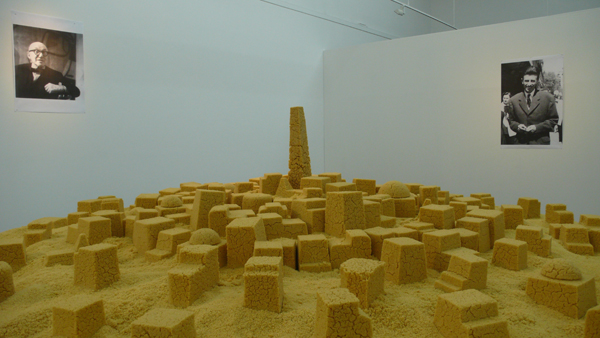
Installation, 2016


Repair: Architecture, Reappropriation, and The Body Repaired, 2013
«From Antiquity, we have believed that we build, deconstruct, and rebuild, while all we do is repair.» — Serge Gruzinski
1. Reappropriation (más…)
Kasbah, 2008
Centre de Création Contemporain de Tours, 2009
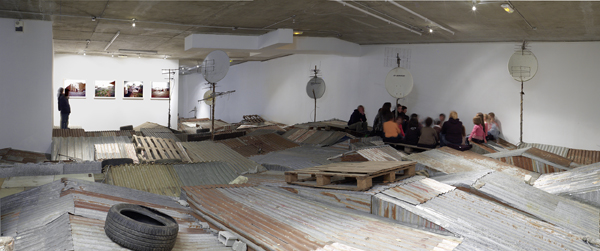

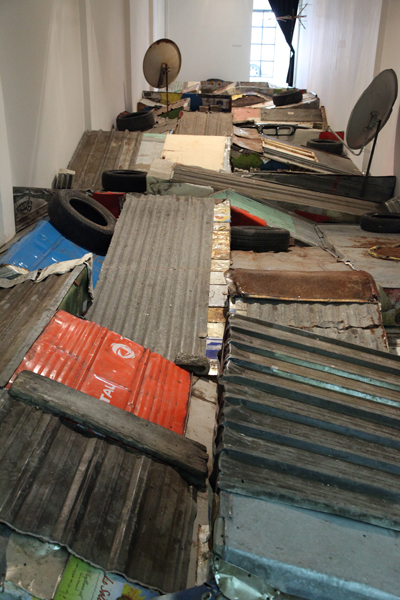
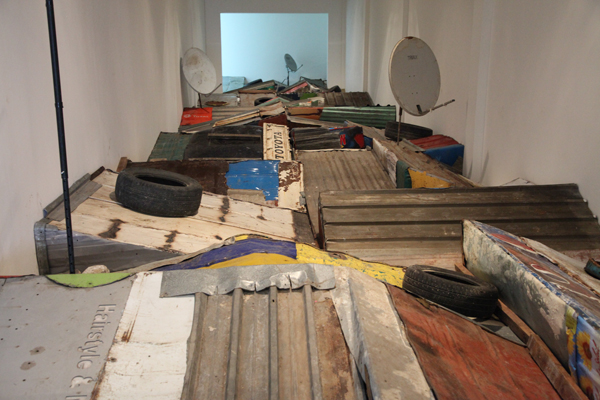
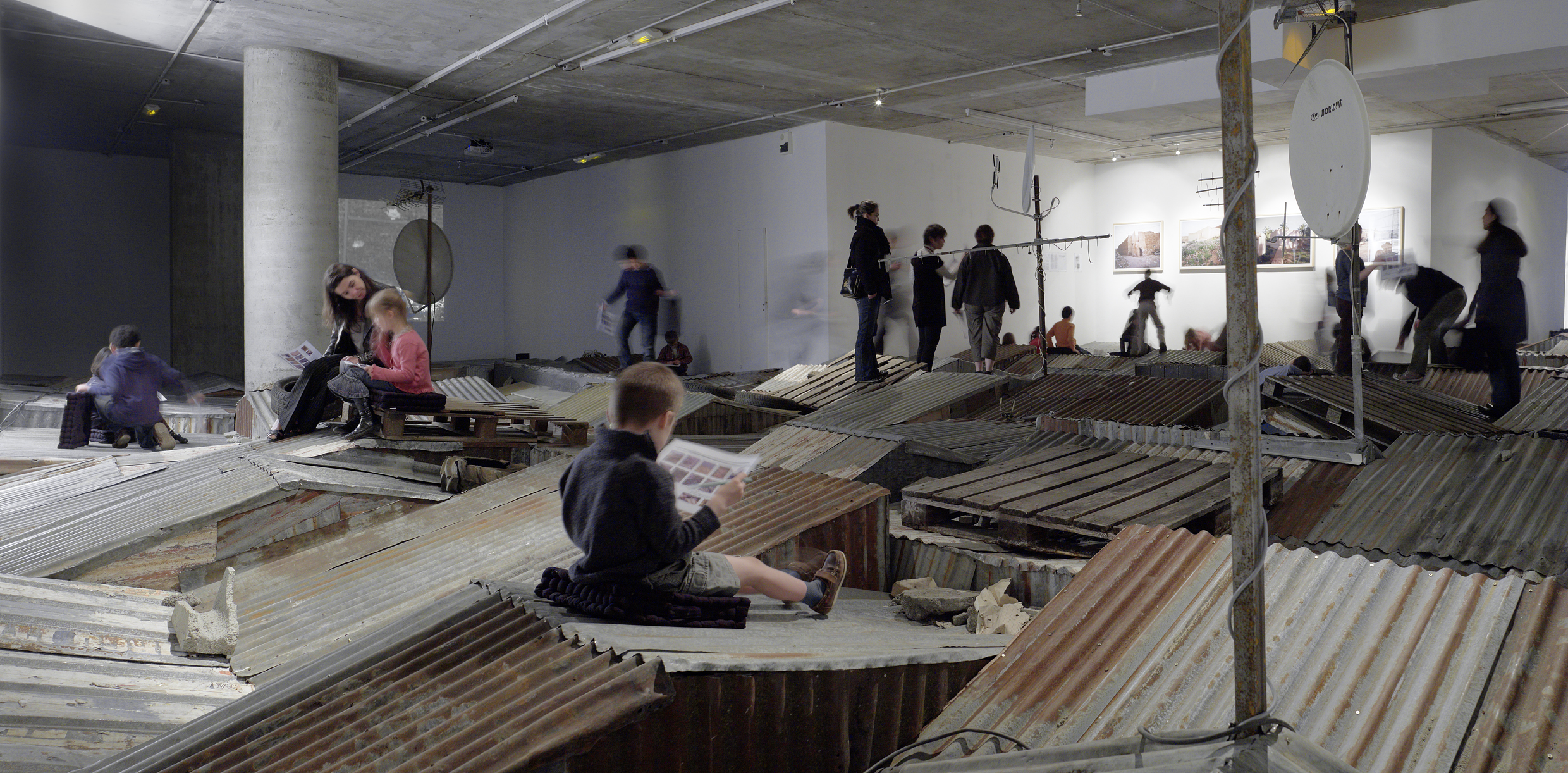
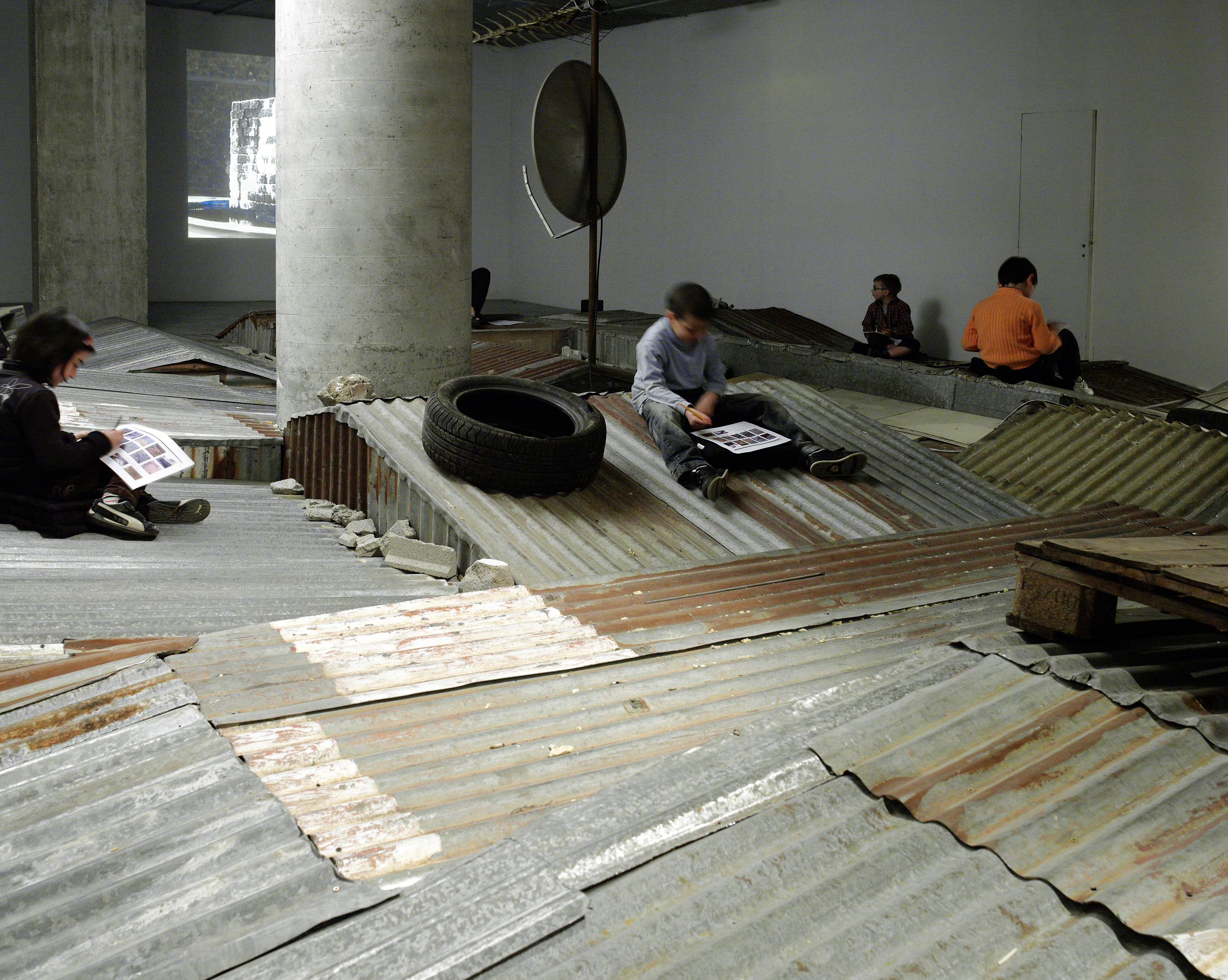
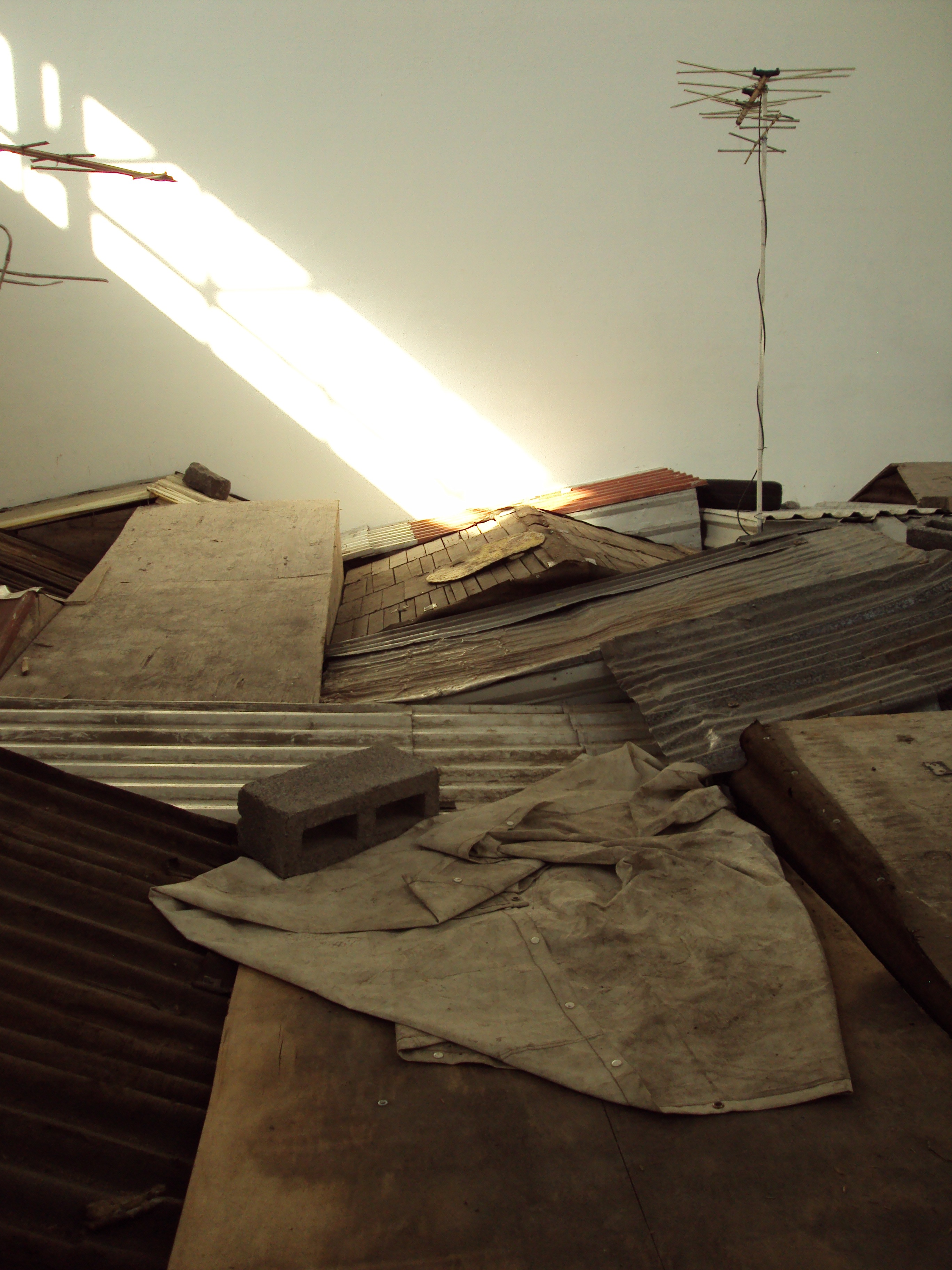
Sala de Arte Público Siqueiros, 2009/2010
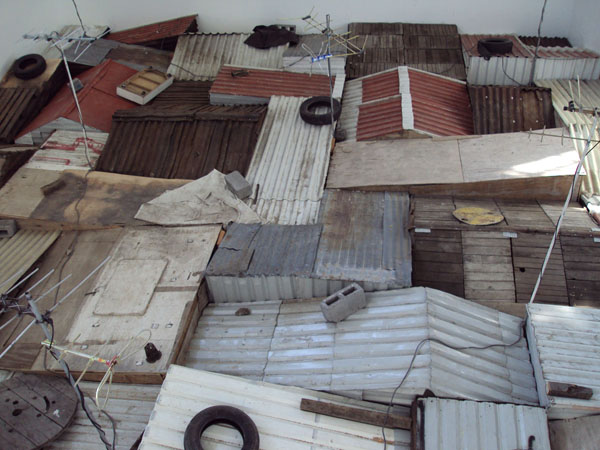
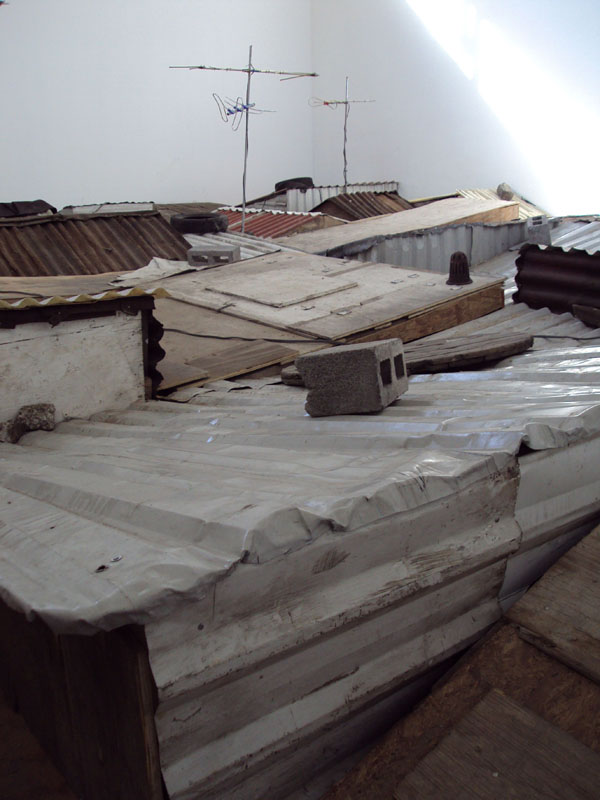
Biennale of Sydney, Sydney / Australia 2010
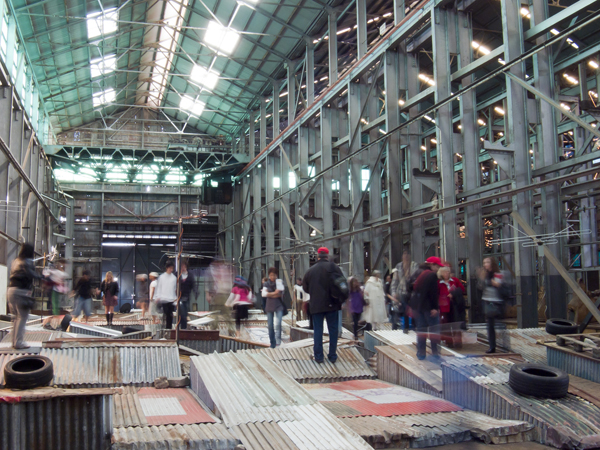
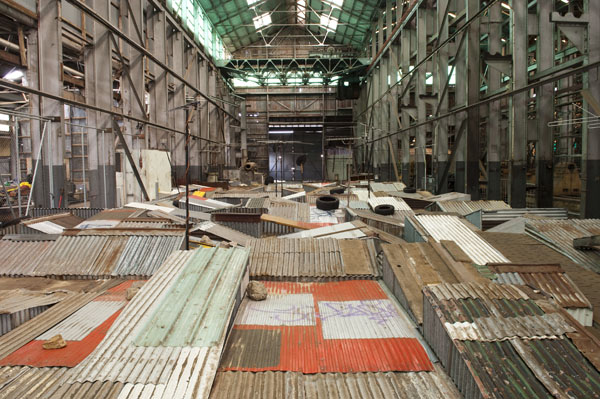
Culturgest Fundação Caixa Geral de Depòsitos, Lisbon
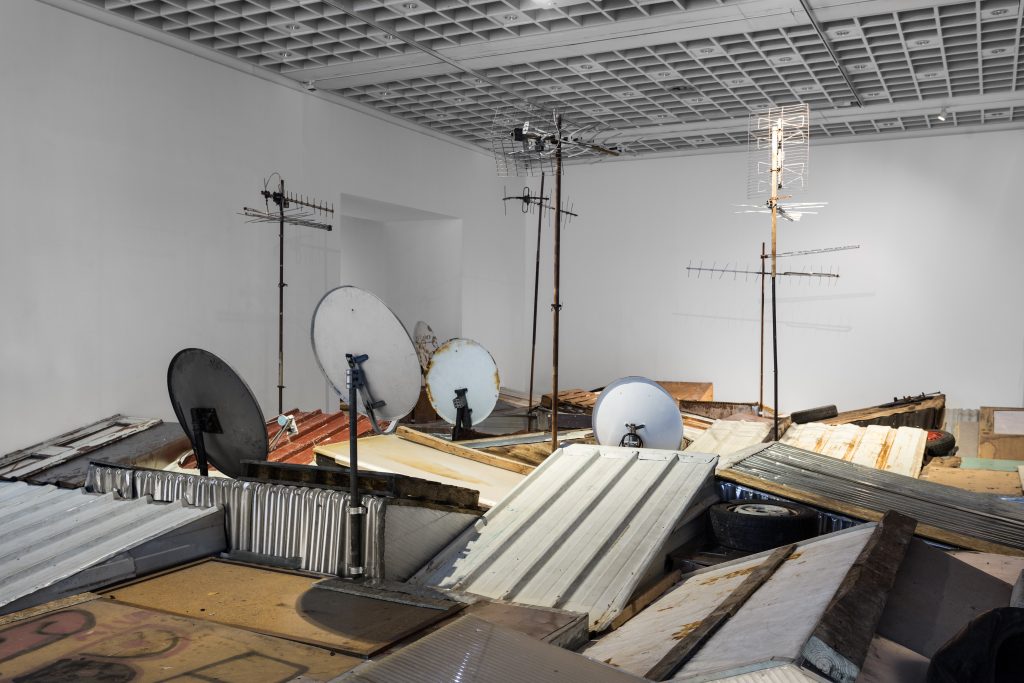
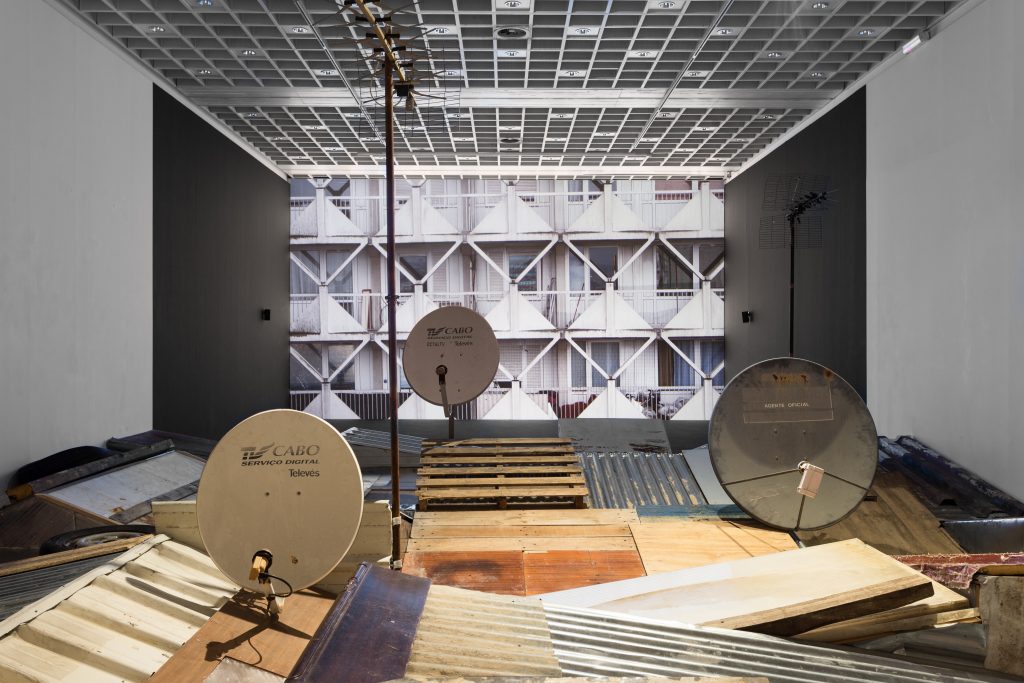
Plastic Bags 2008
Centro de Arte Contemporaneo Huarte, 2008
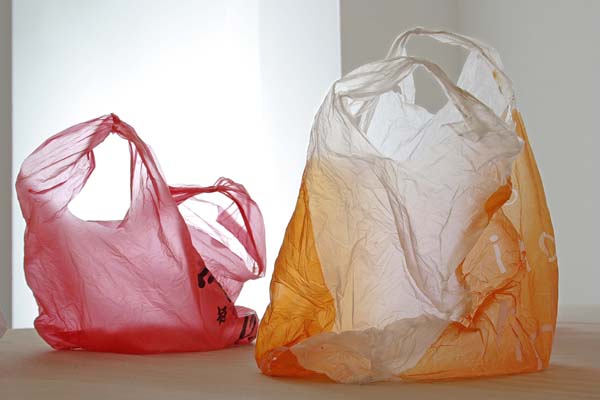
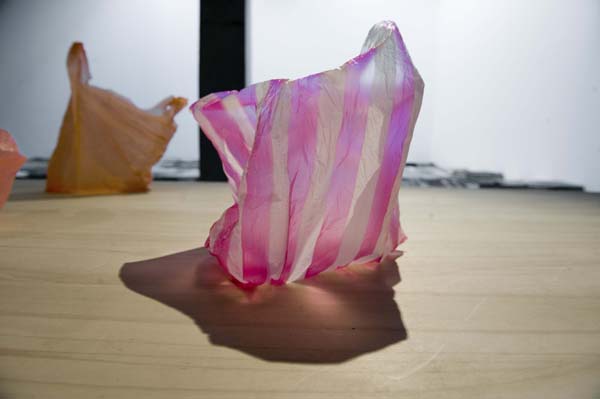
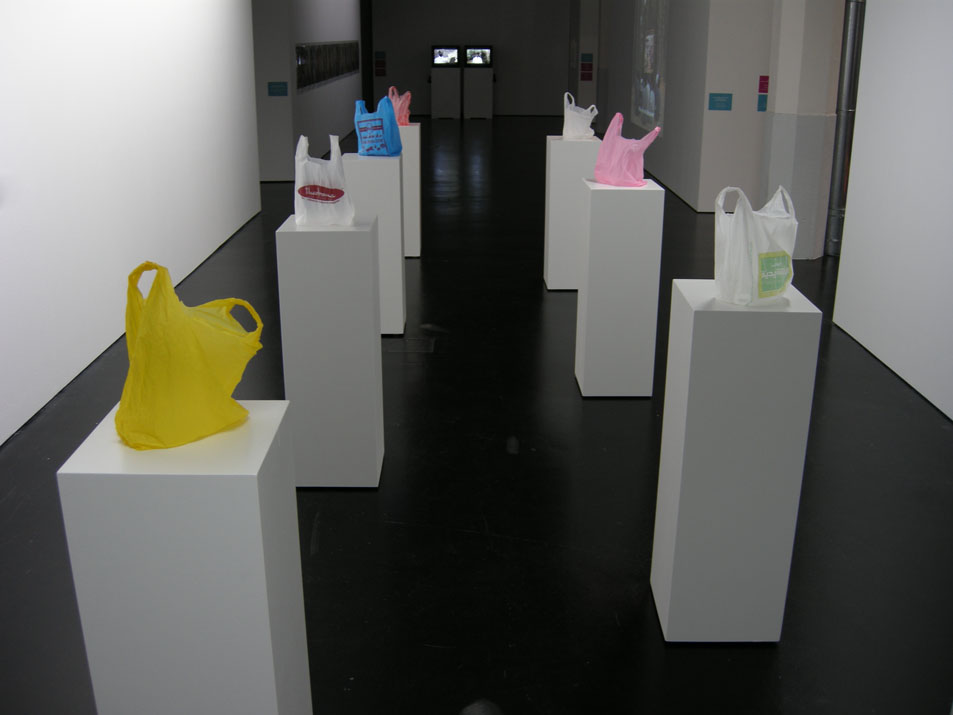
ZKM, Center for Art and Media Karlsruhe, 2011
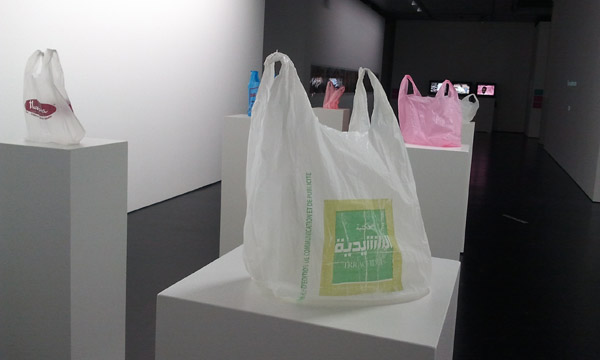 photo: Steffen Harms
photo: Steffen Harms
CAPC, Bordeaux 2013
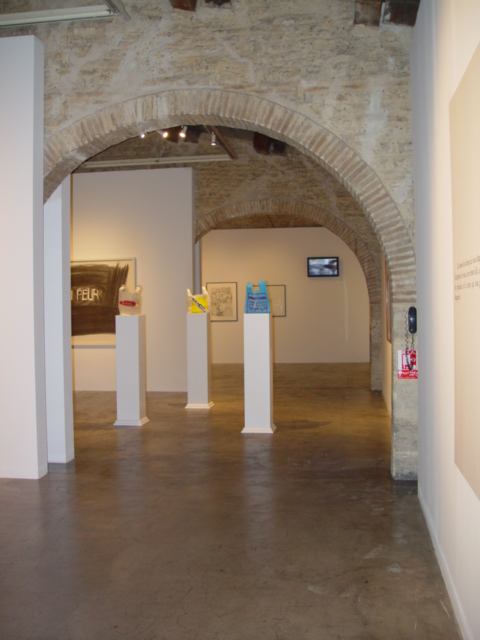
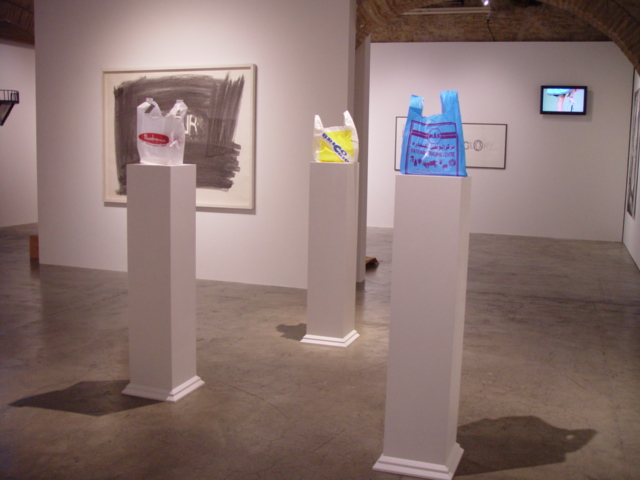
Räume der Erinnerung, Kunsthalle Düsseldorf, 7.07.-09.09.2012

From Holy Land to Open your eyes. By Serge Gruzinski, 2012
We remember Holy Land (2006), this Canary seashore that Kader Attia turned into a cemetery. It is on a similar strand that motor-boats unship stowaways who are in search of a promised land, at least those who didn’t disappear swallowed up by the waves.
(más…)
The space, another body
My name is Kader Attia, I grew up between France and Algeria.
Until the age of 12, my parents were not decided to stay at the same place. So I was going back and forth between Algeria and France, between an Oriental and an Occidental world.
(más…)
Reappropriation as Resistance, 2012
According to several postmodern philosophers and other theoreticians of Architecture, from Foucault to Lyotard and Charles Jencks, modernity is said to have started with the Renaissance.If I reach into my cinematographic memory and remember the movie 2001: A Space Odyssey (1968), I tend to believe otherwise.
(más…)
Lost Boundaries. By Kobena Mercer, 2009
A line cuts through a town square and divides public space in two. As a result of this action a boundary has been created,
(más…)
The Landing Strip – 50th Venice Biennale, 2003
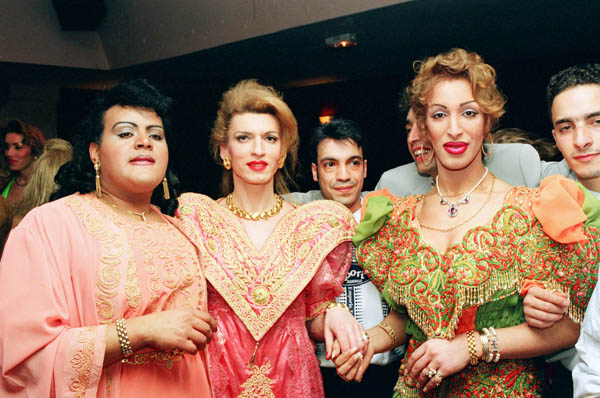
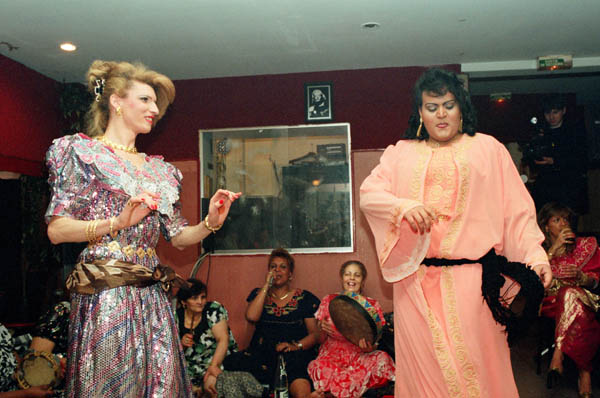
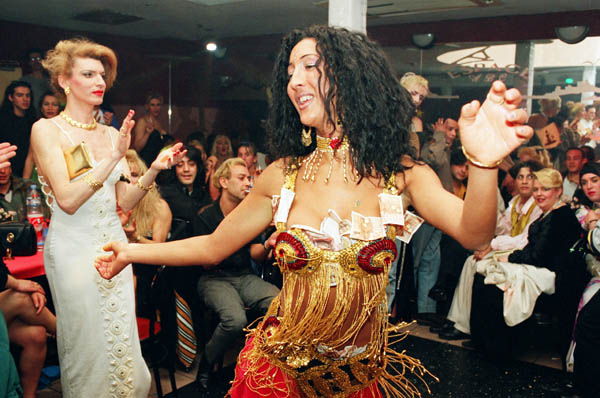
Open your Eyes – Tate Modern, 2011
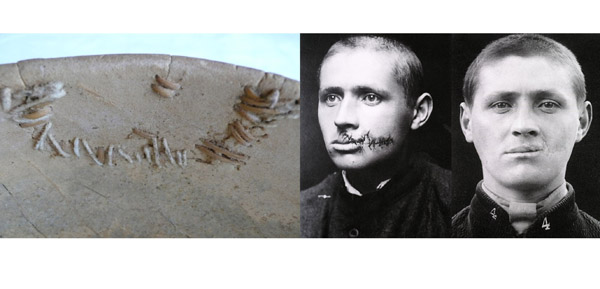
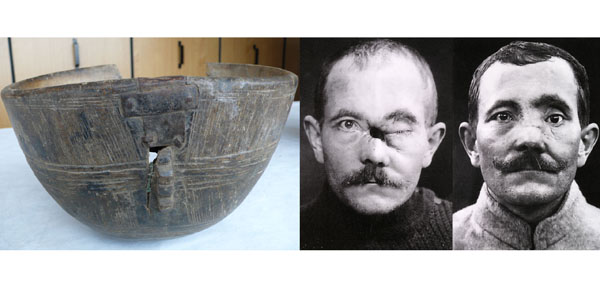
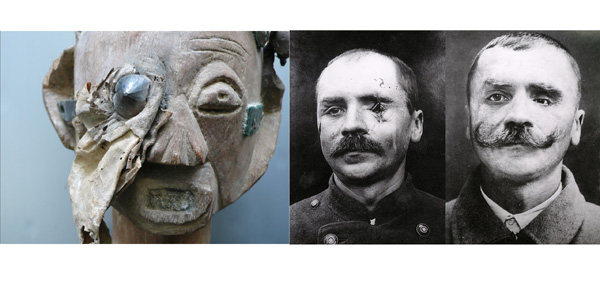
Open your Eyes – Palais des Beaux Arts Brussels, 2010

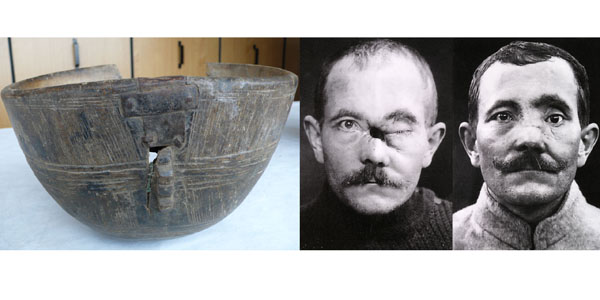
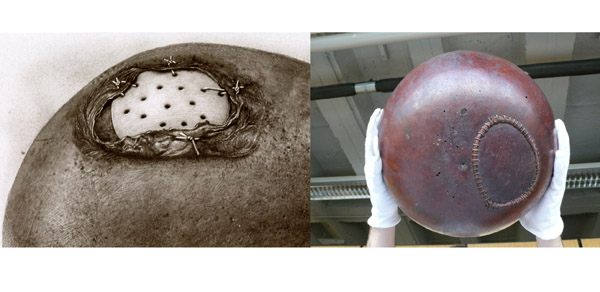
Black Cube, 2007
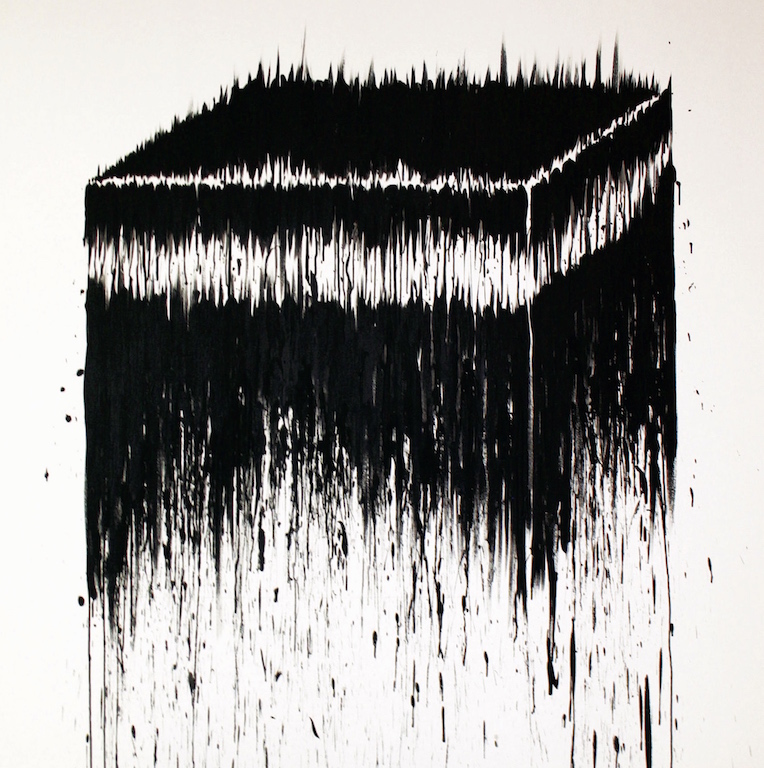
Painting.
Ghost, 2007
Galerie Christian Nagel, Berlin Germany, 2007
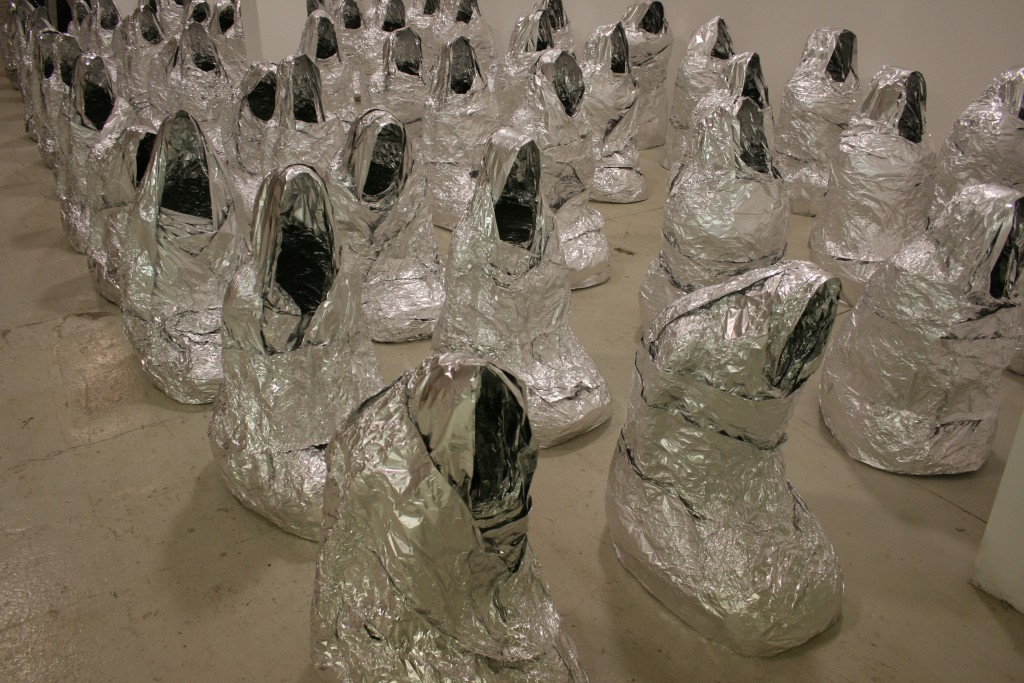
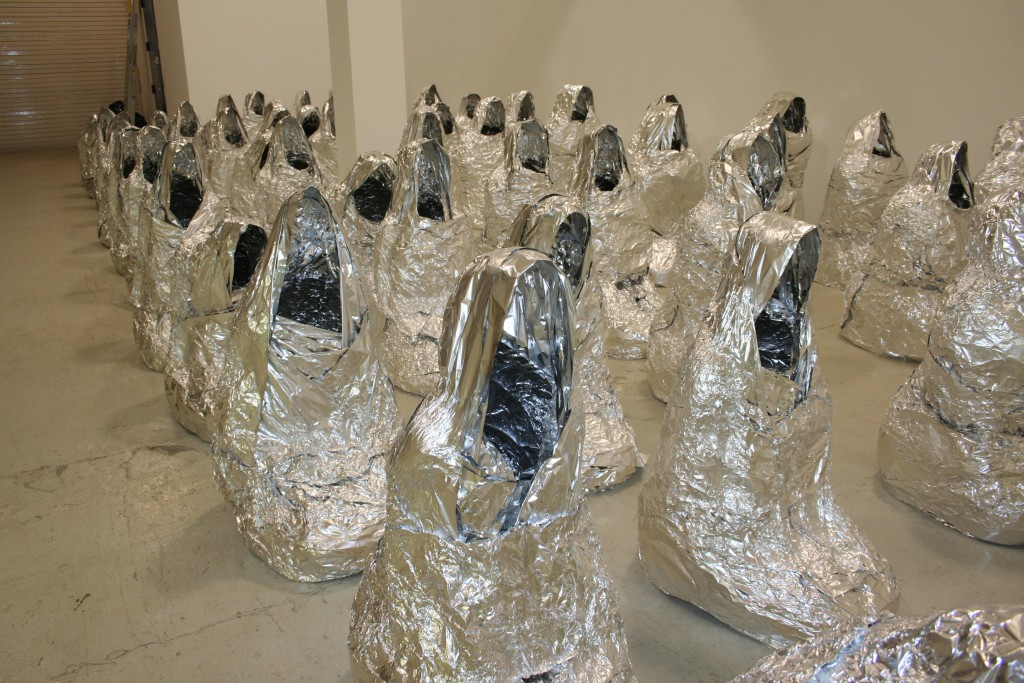
Stiftung Federkiel – Halle 14, Leipzig / Germany, 2007
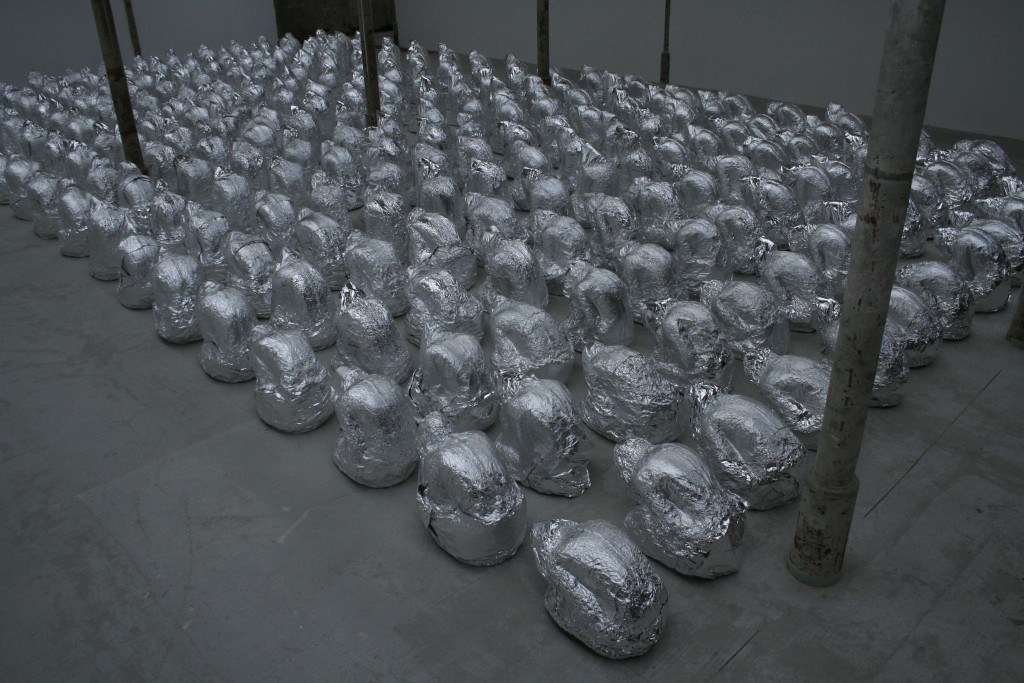
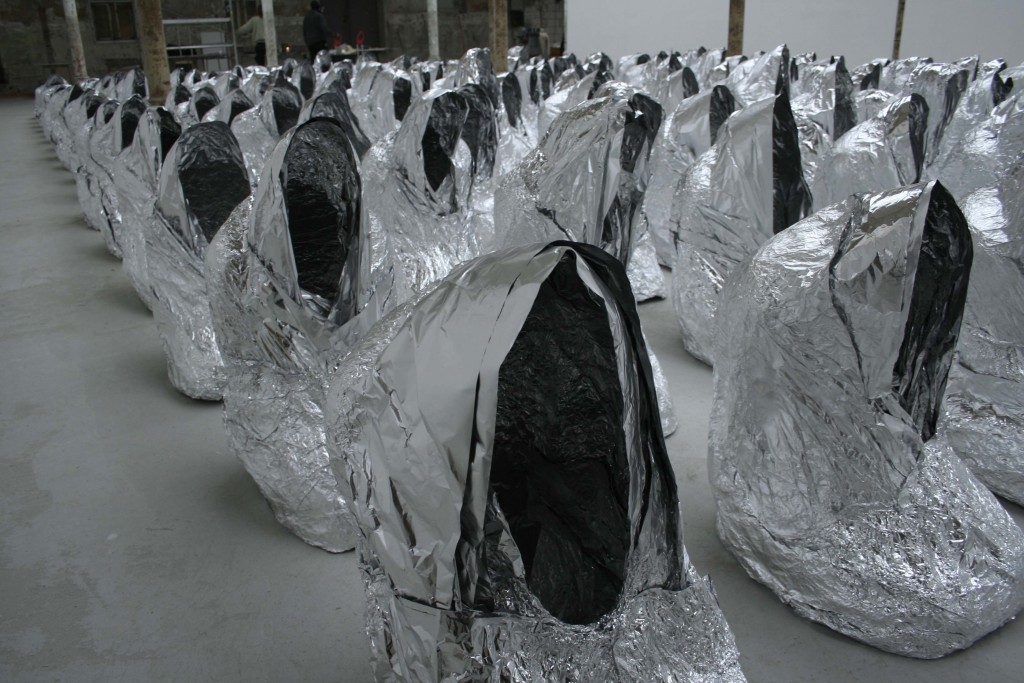
Galerie Krinzinger, Vienna / Austria 2008
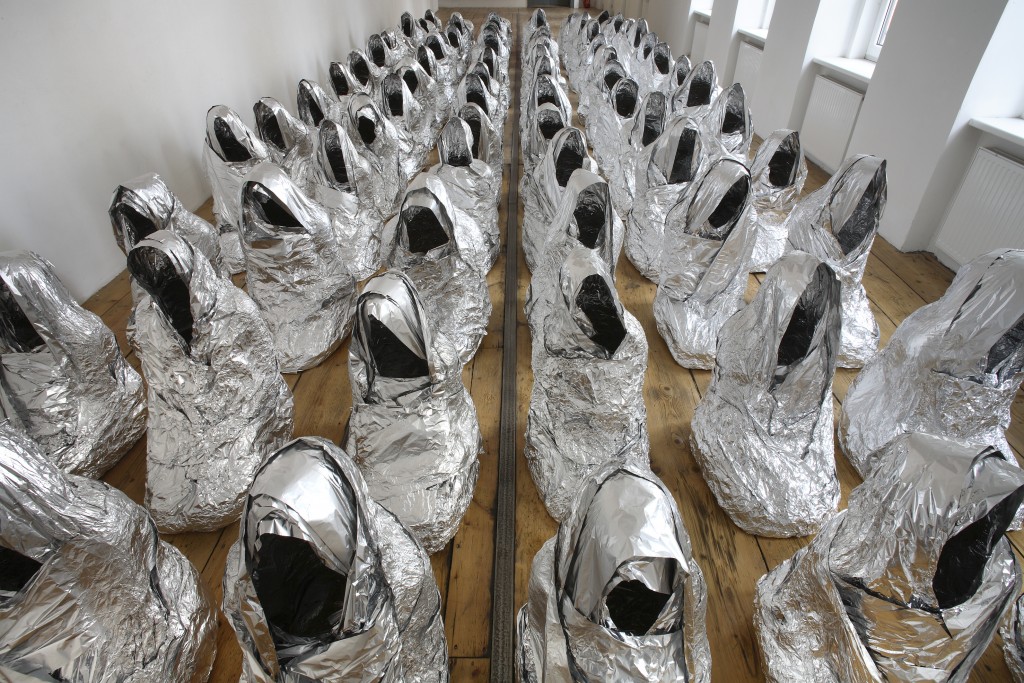
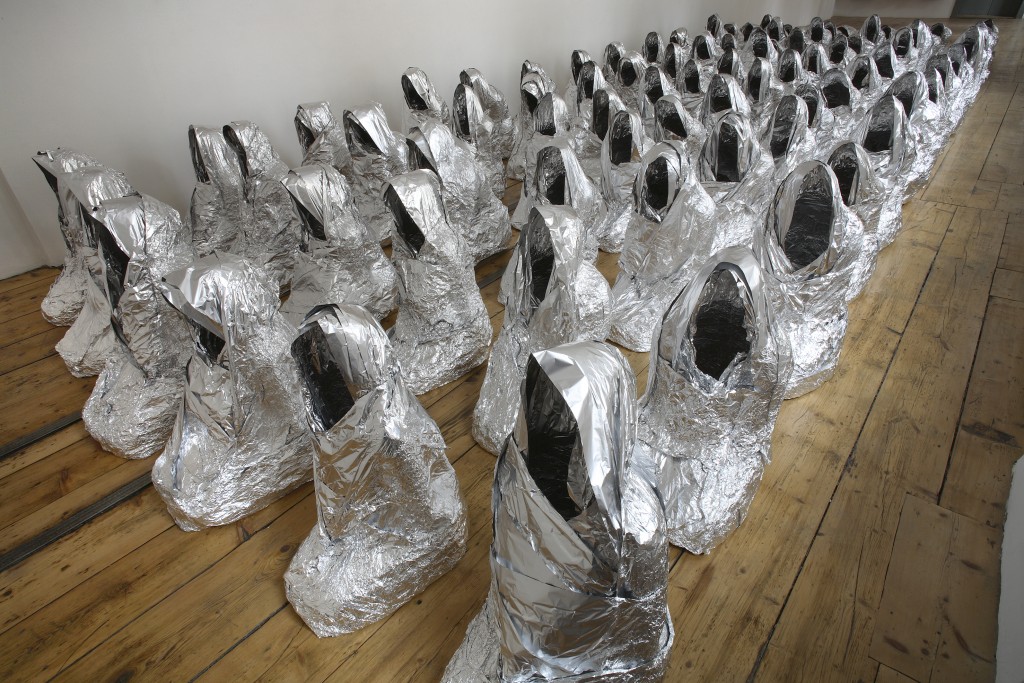
Diego Riviera Museum, 2008
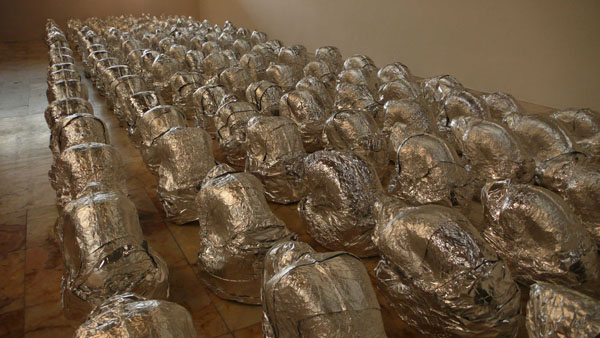
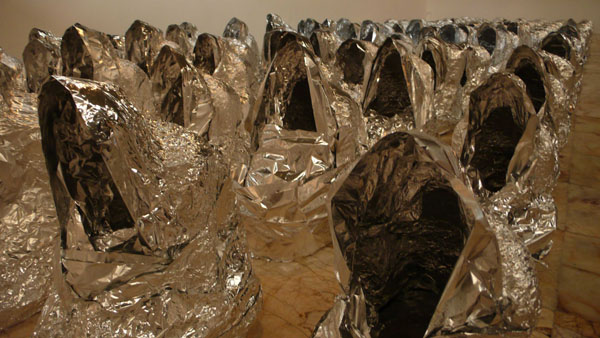
Collection of the Fond National d’Art Contemporain, Le Tri Postal, Lille / France 2010/2011

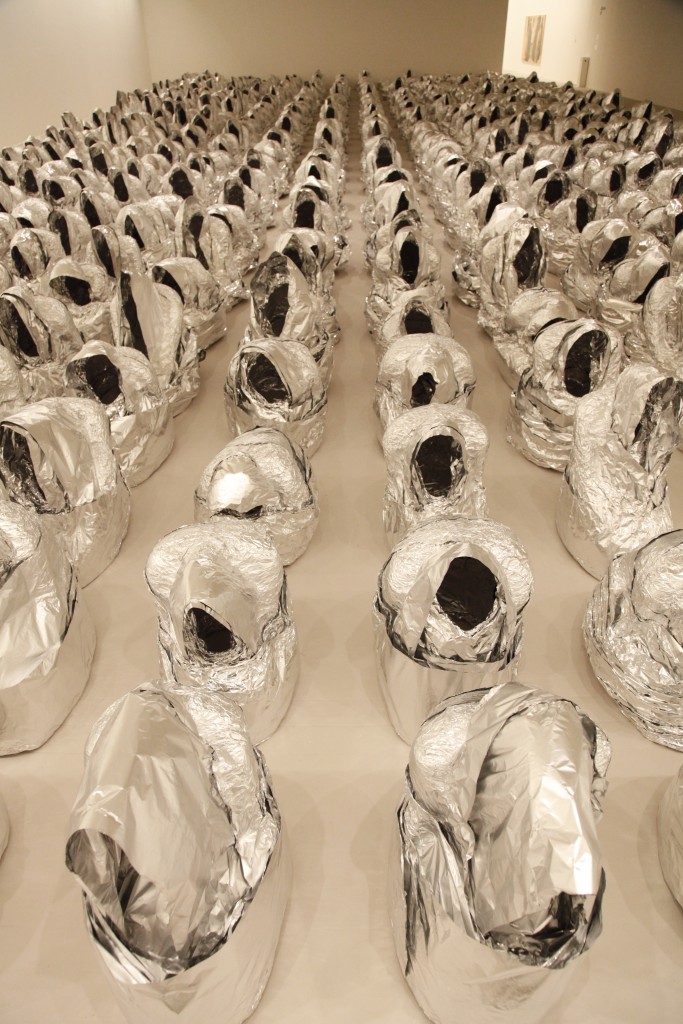
© maxime dufour
Galerie Christian Nagel, Antwerp, Belgium 2012
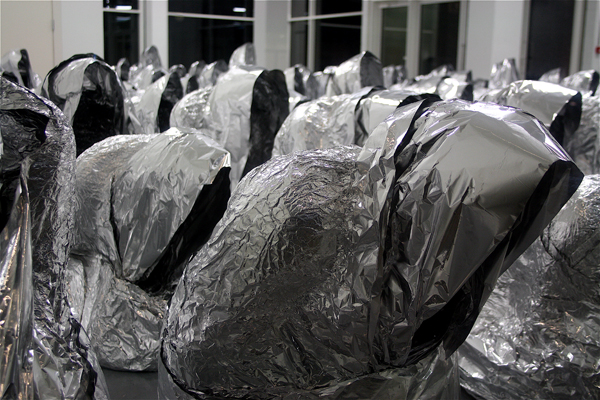
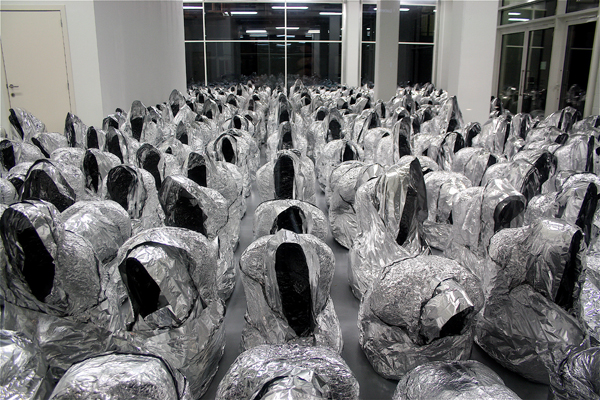
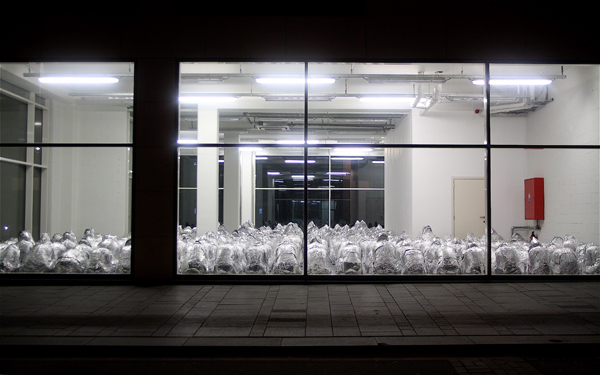
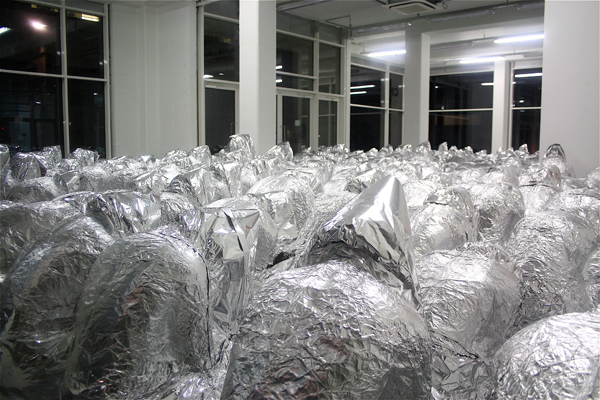

Deichtorhallen Hamburg, 2011/12
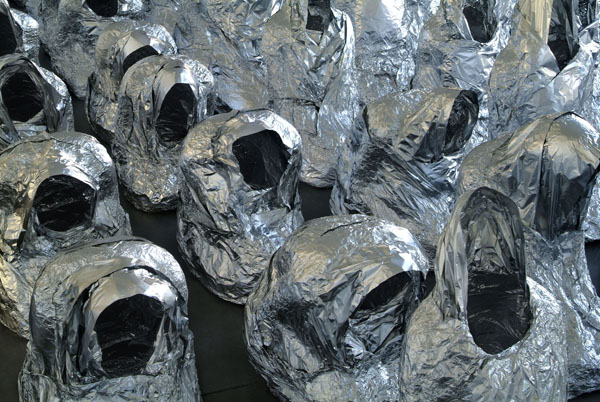
Centre Georges Pompidou, 2012
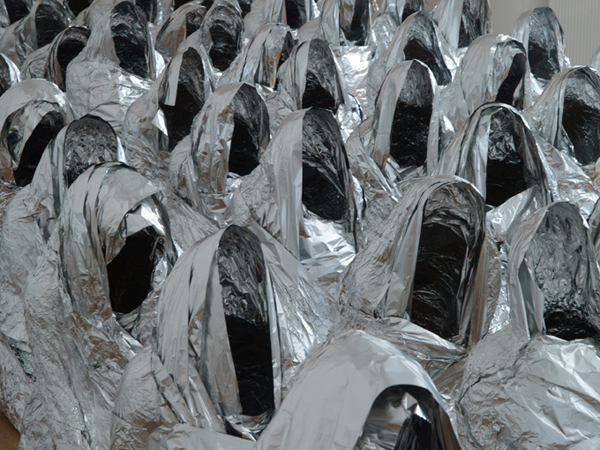
Untitled (Skyline) Baltic Center for Contemporary Art, 2007
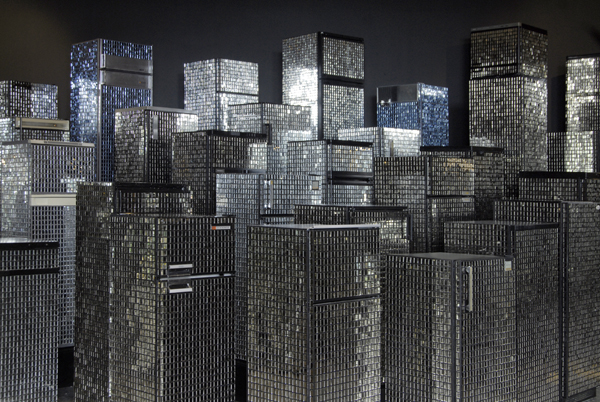
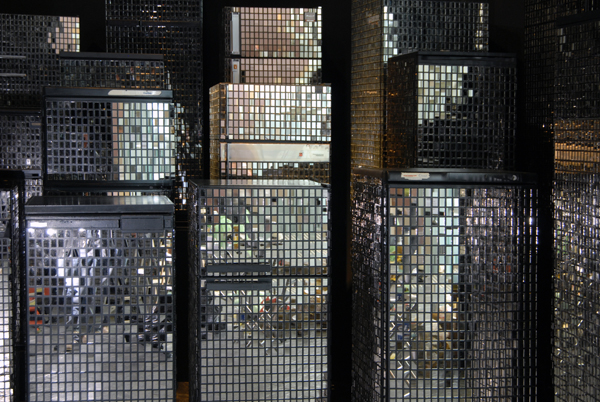
Holy Land, 2006
Installation, 2006
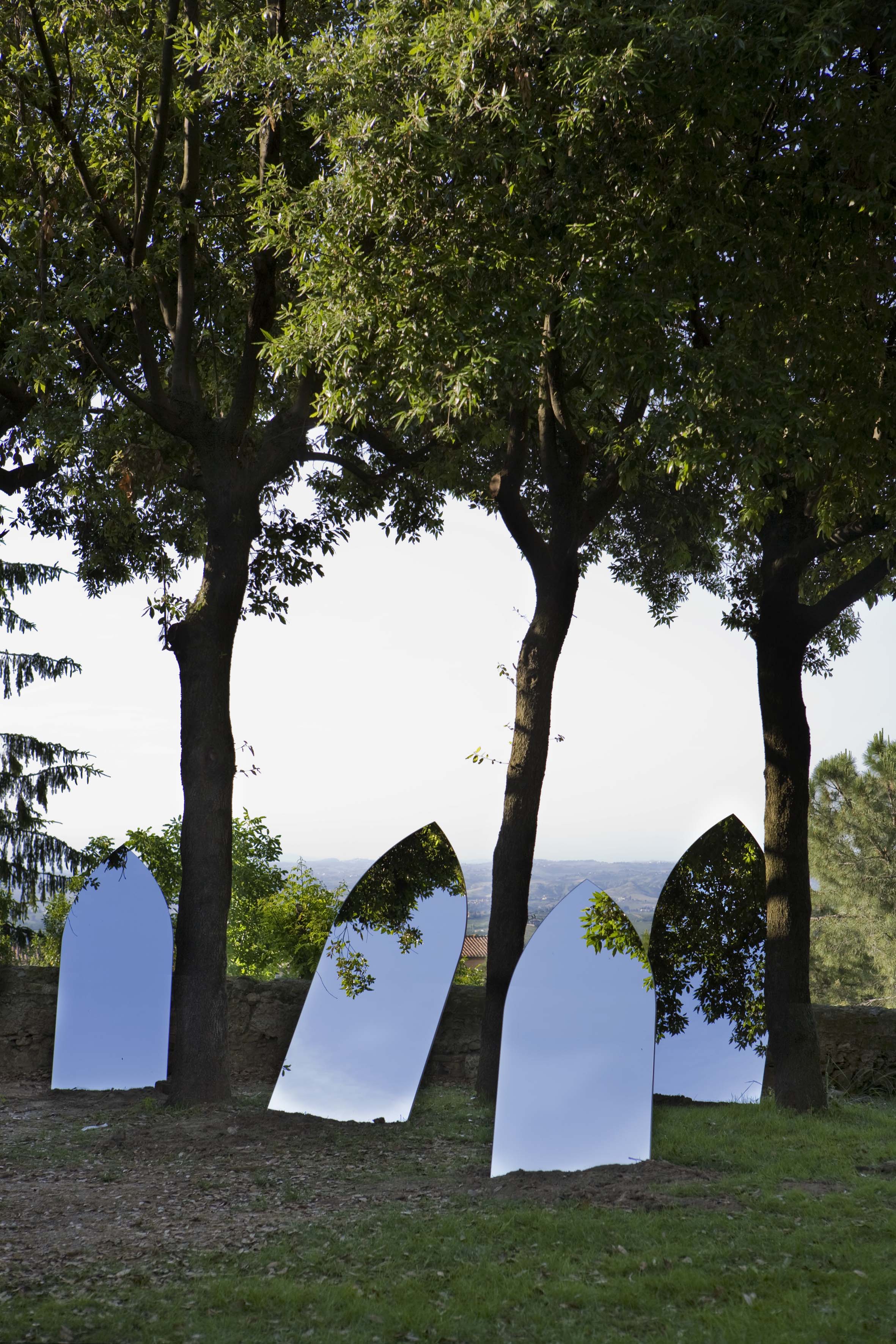
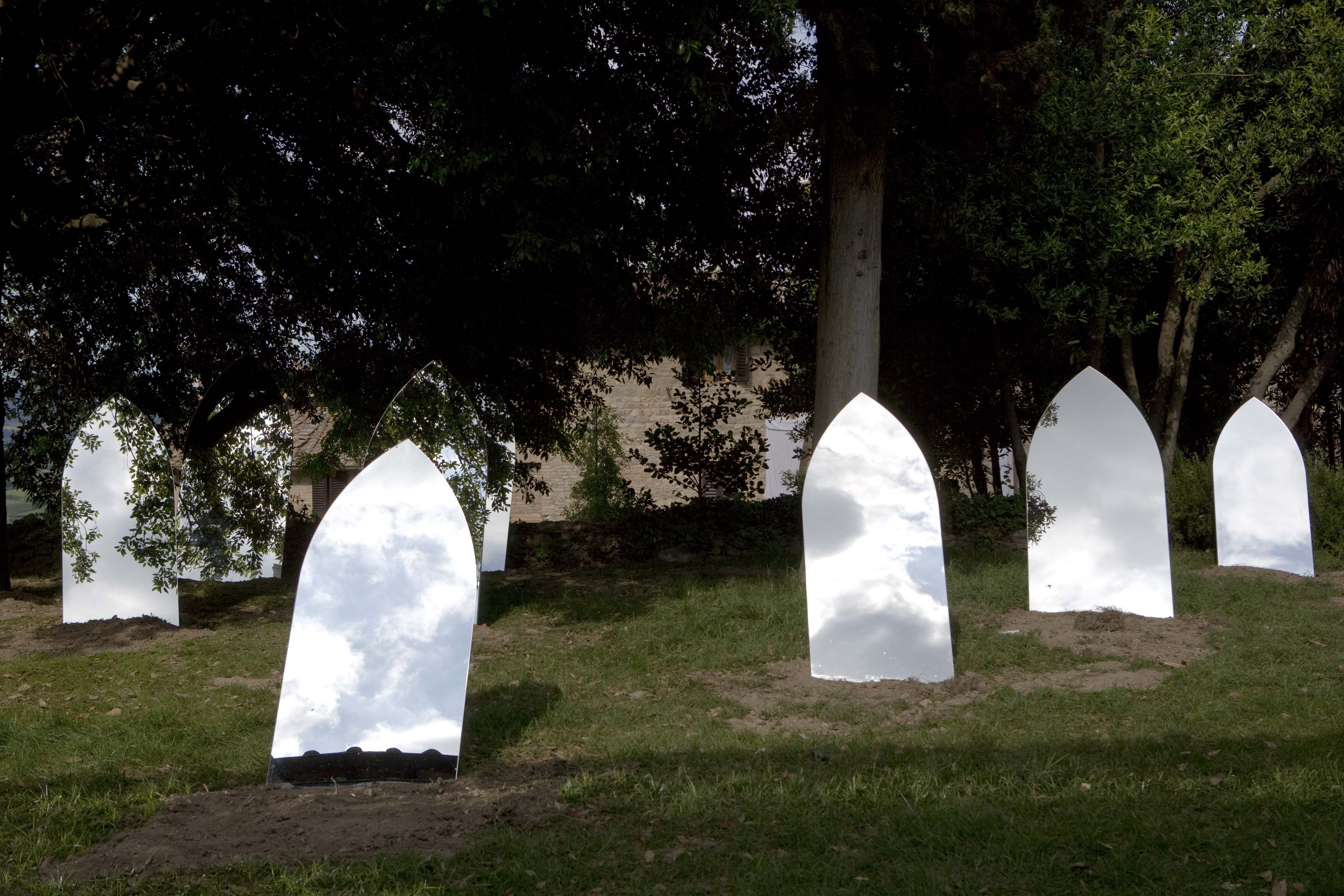
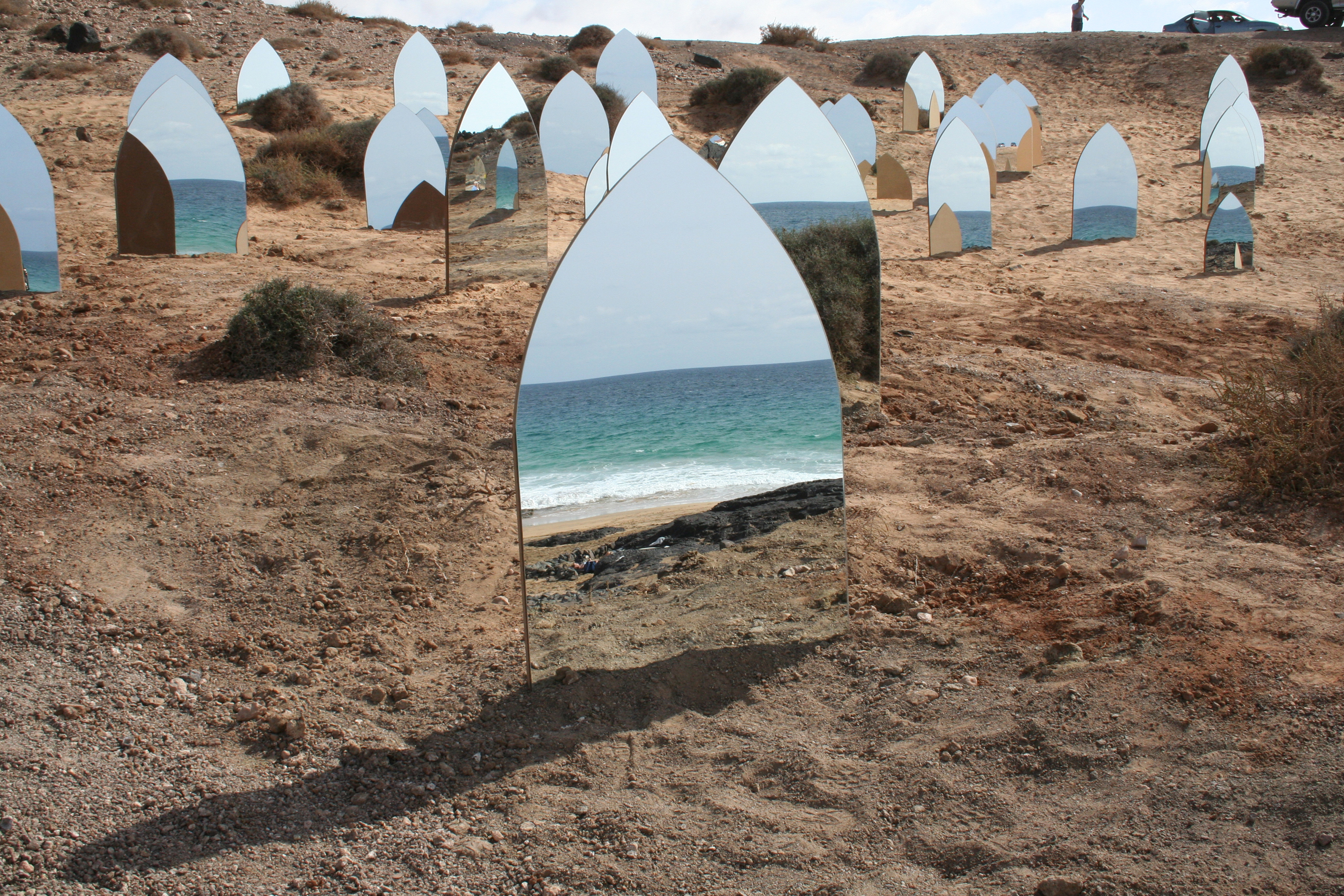

Arabesque, 2006
Sculpture, 2006
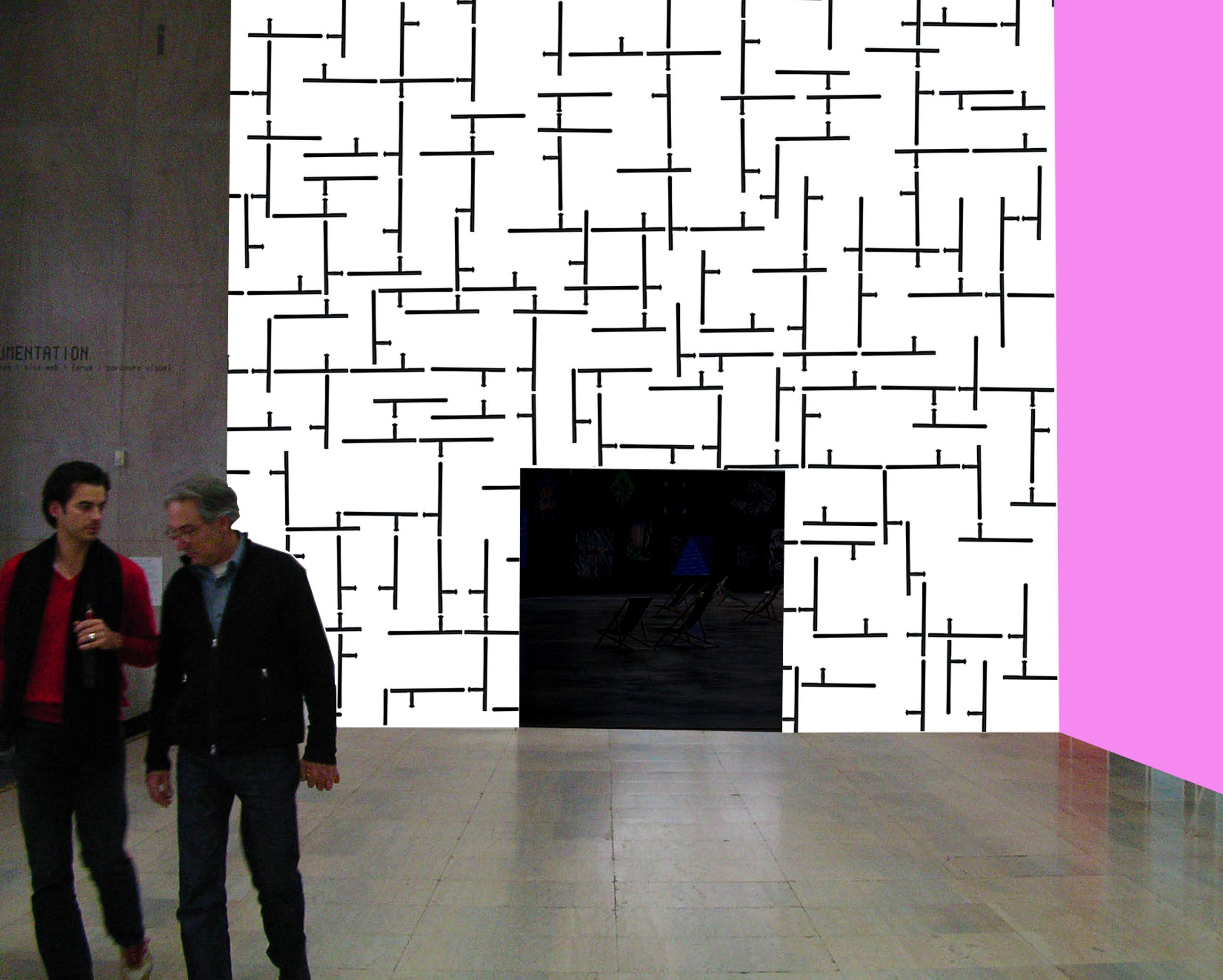
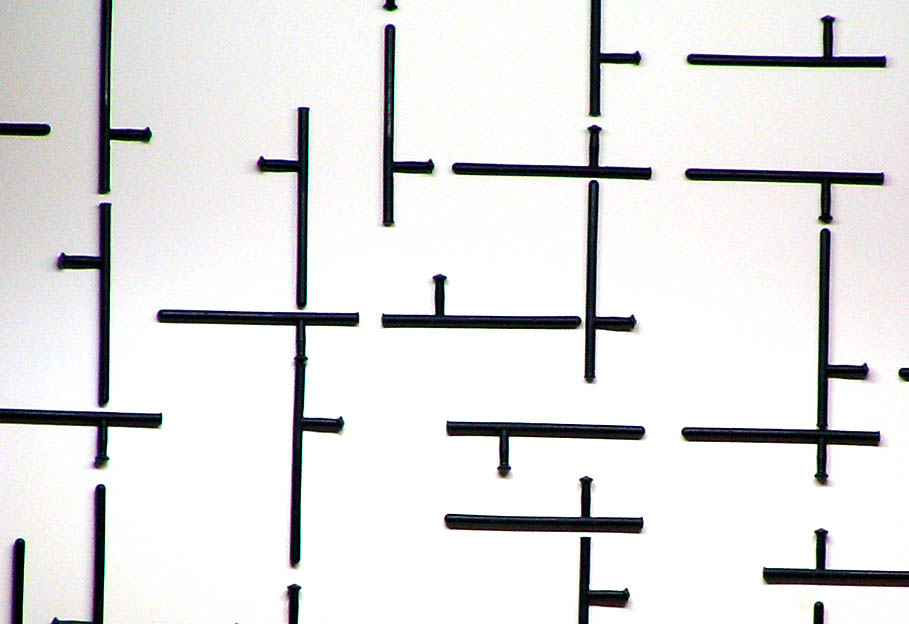
Untitled (Glass Cube), 2006
Sculpture, 2006
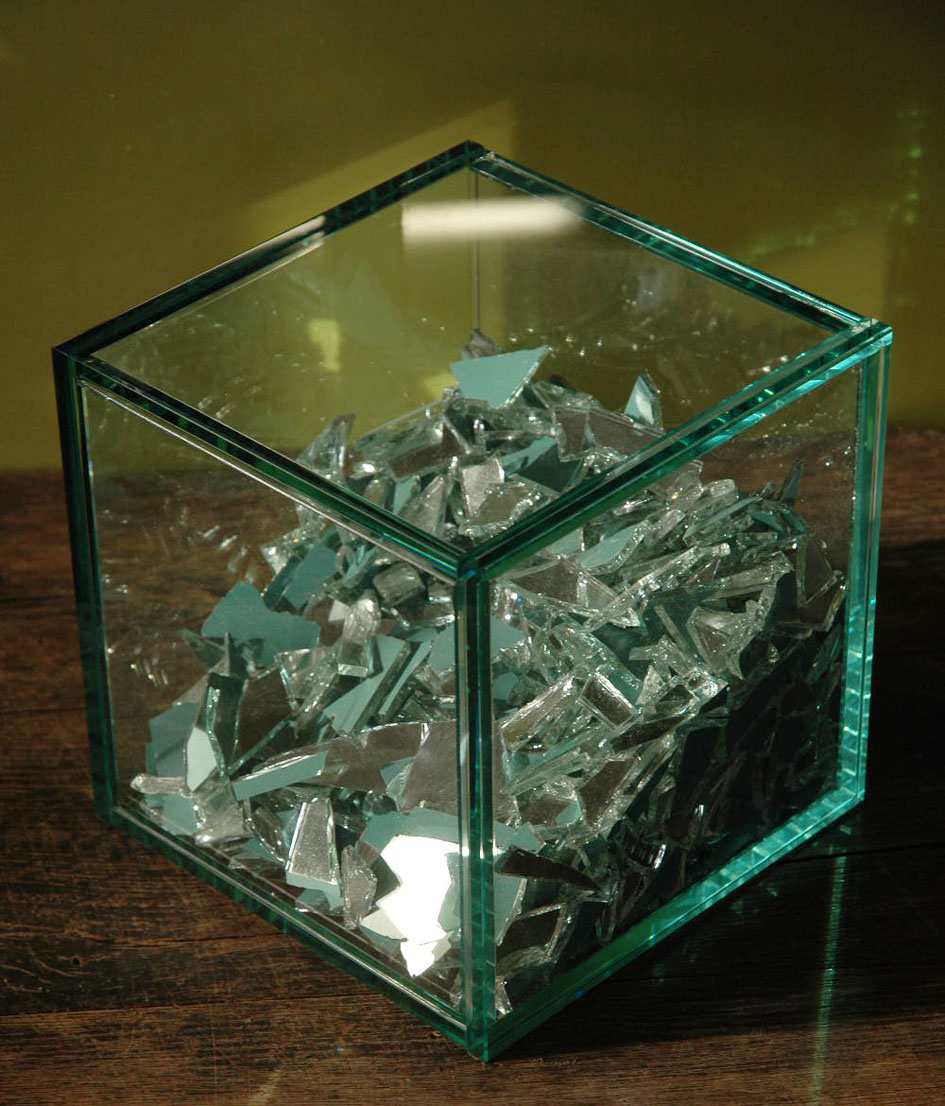
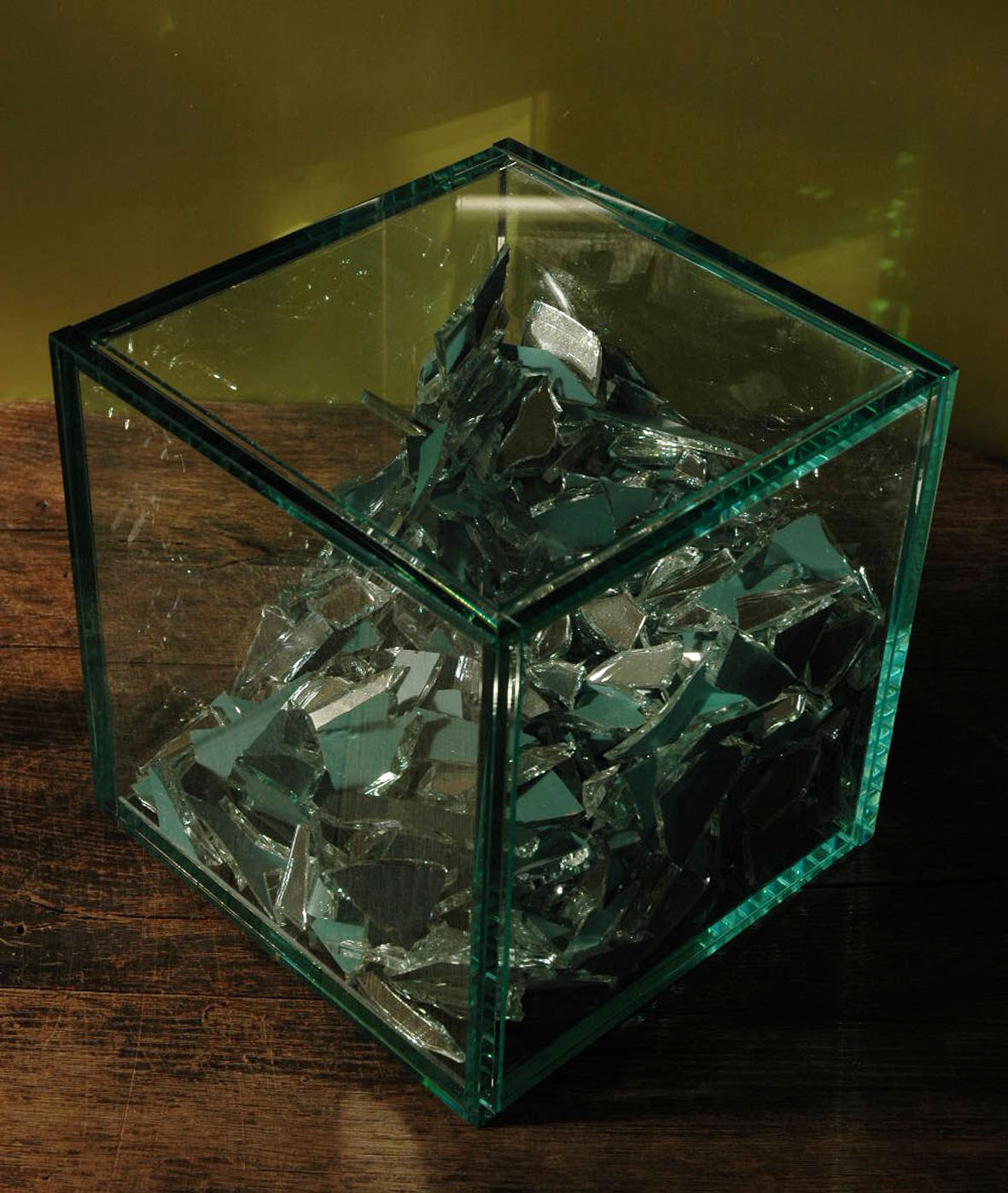
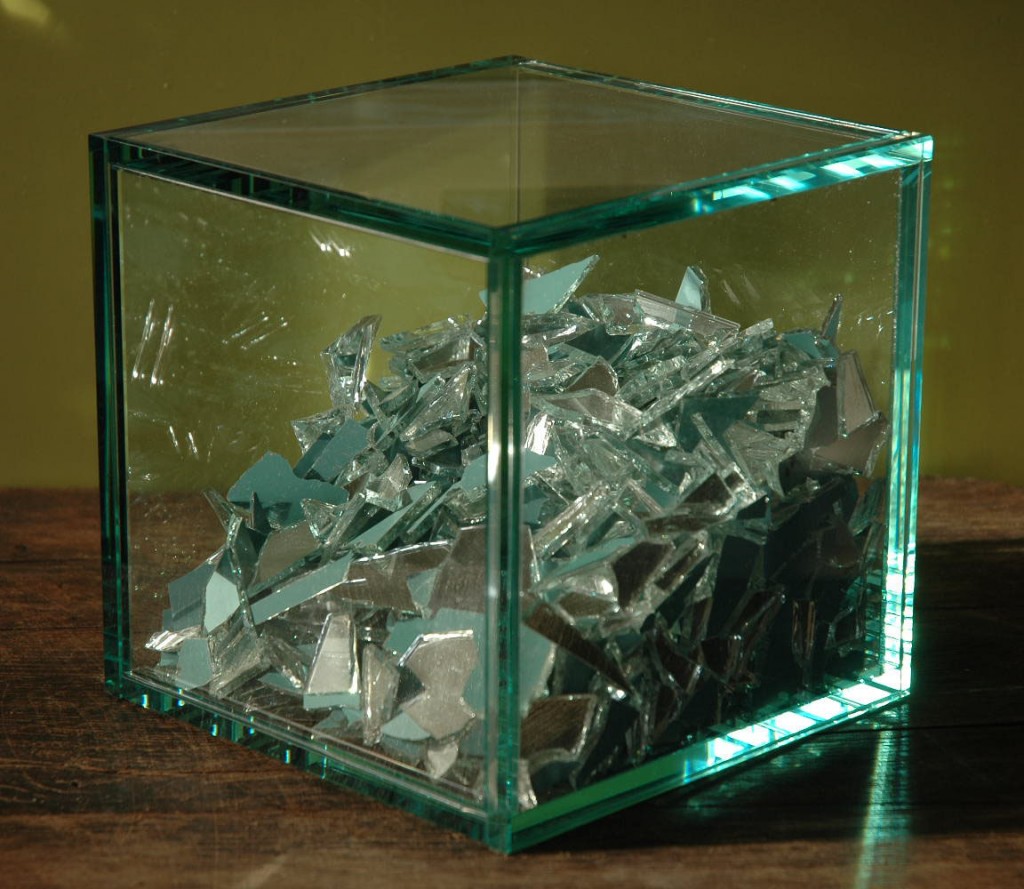
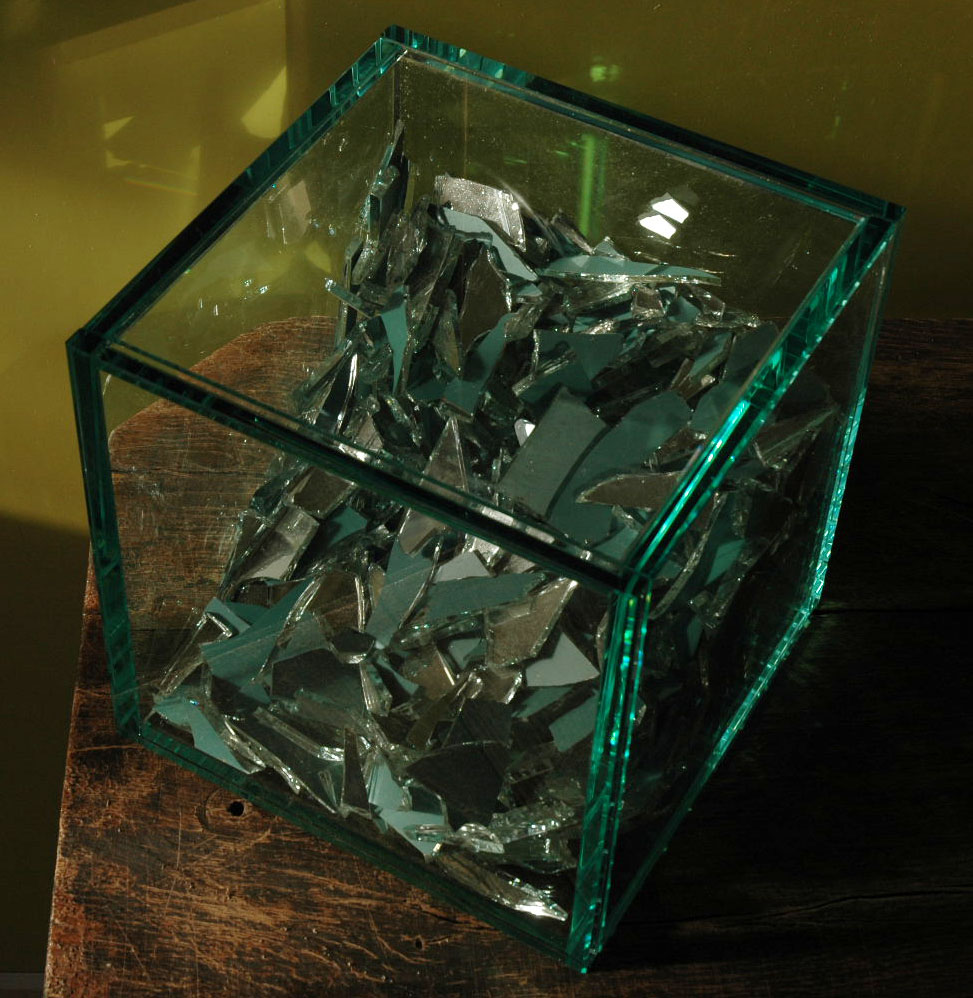
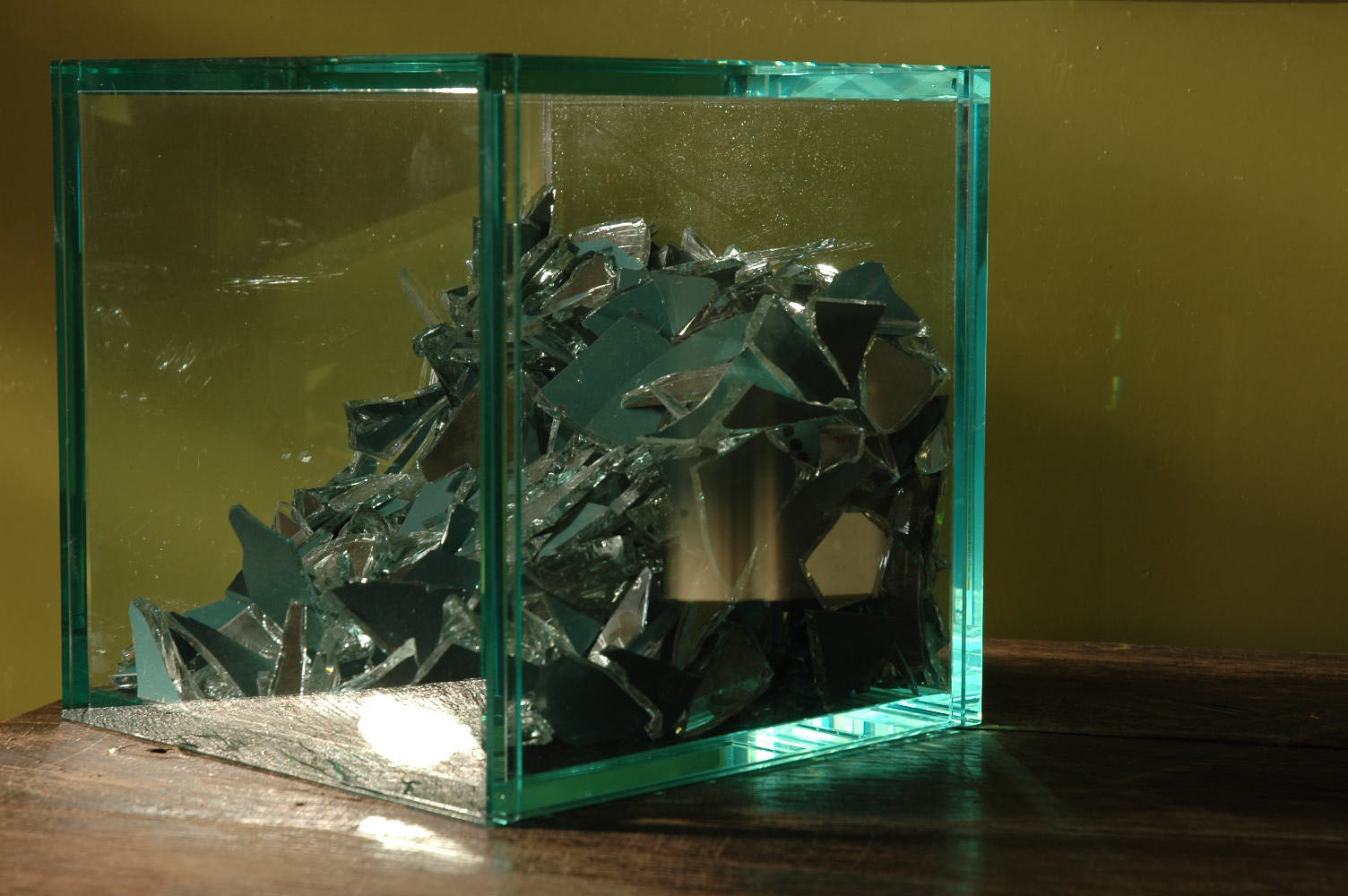
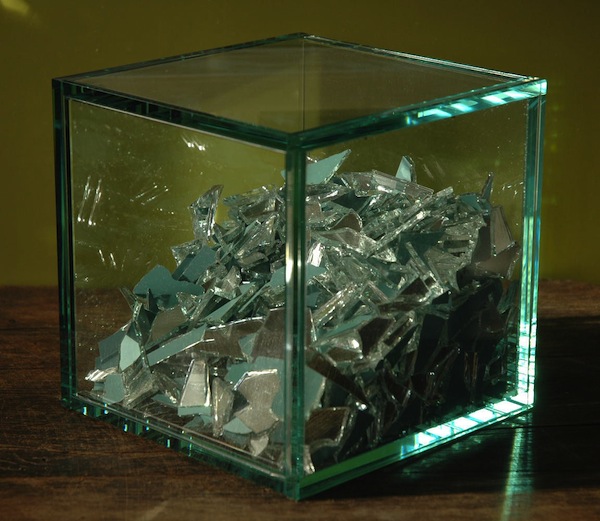
Dream Machine, 2003
Installation, 2003
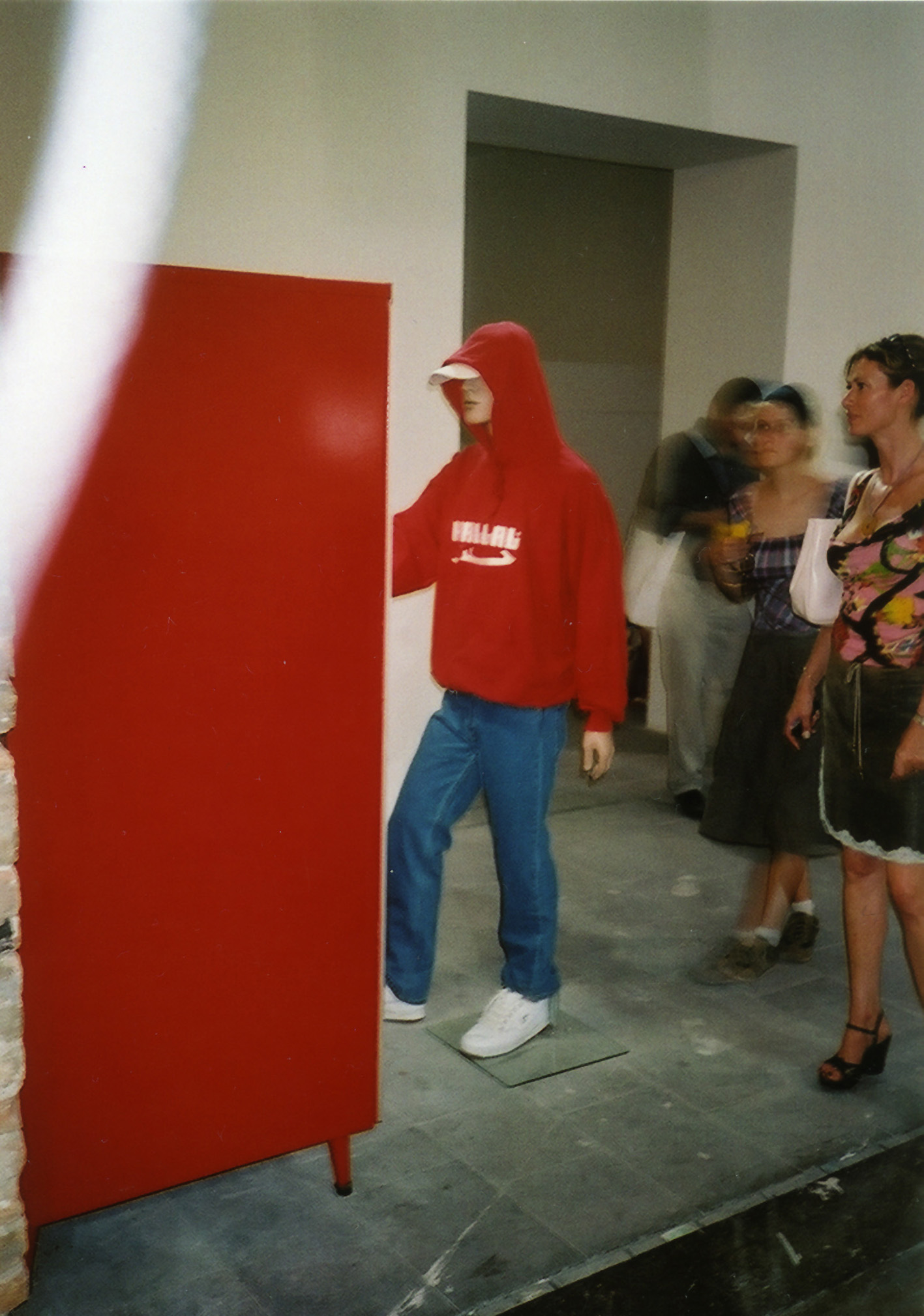
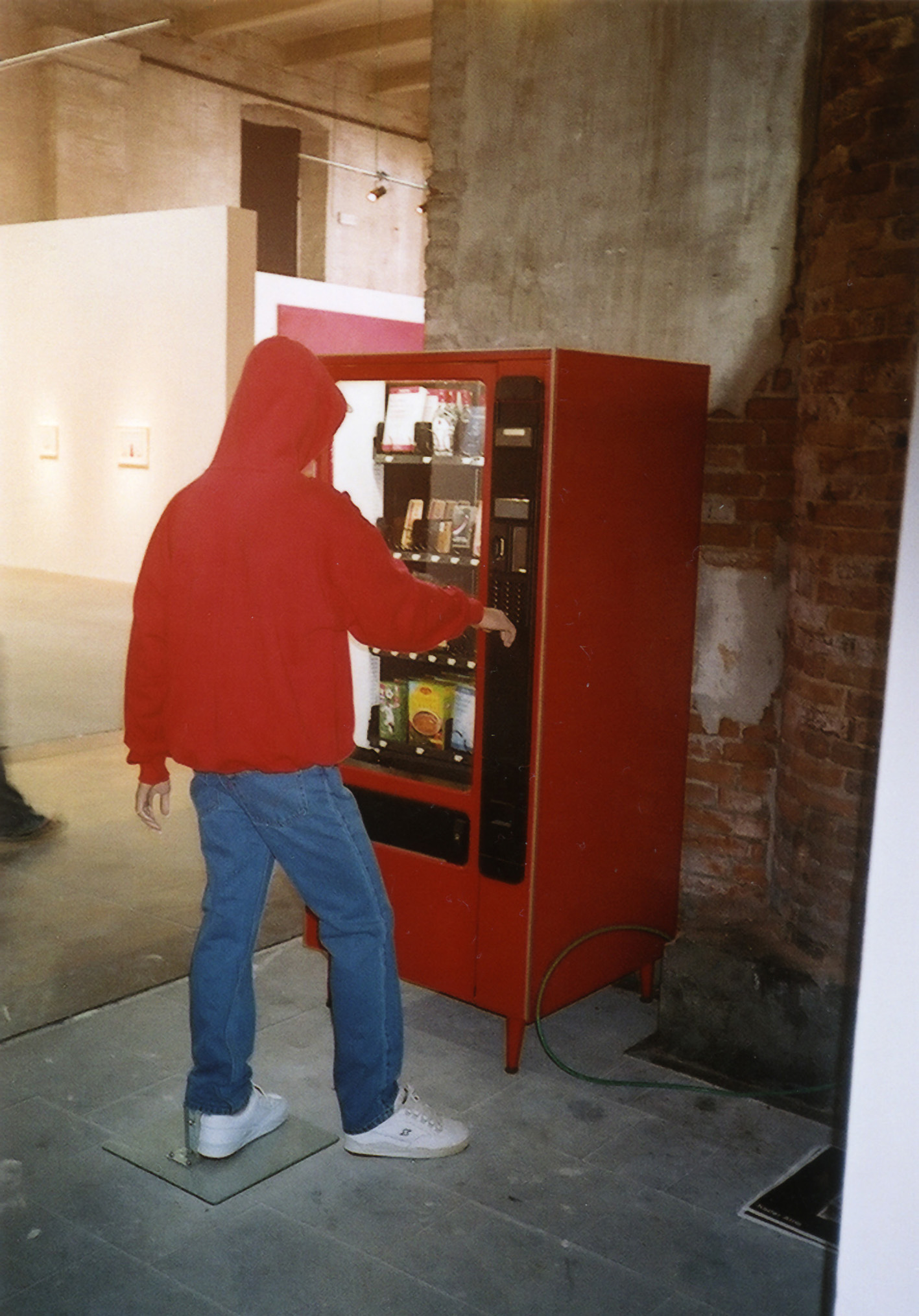
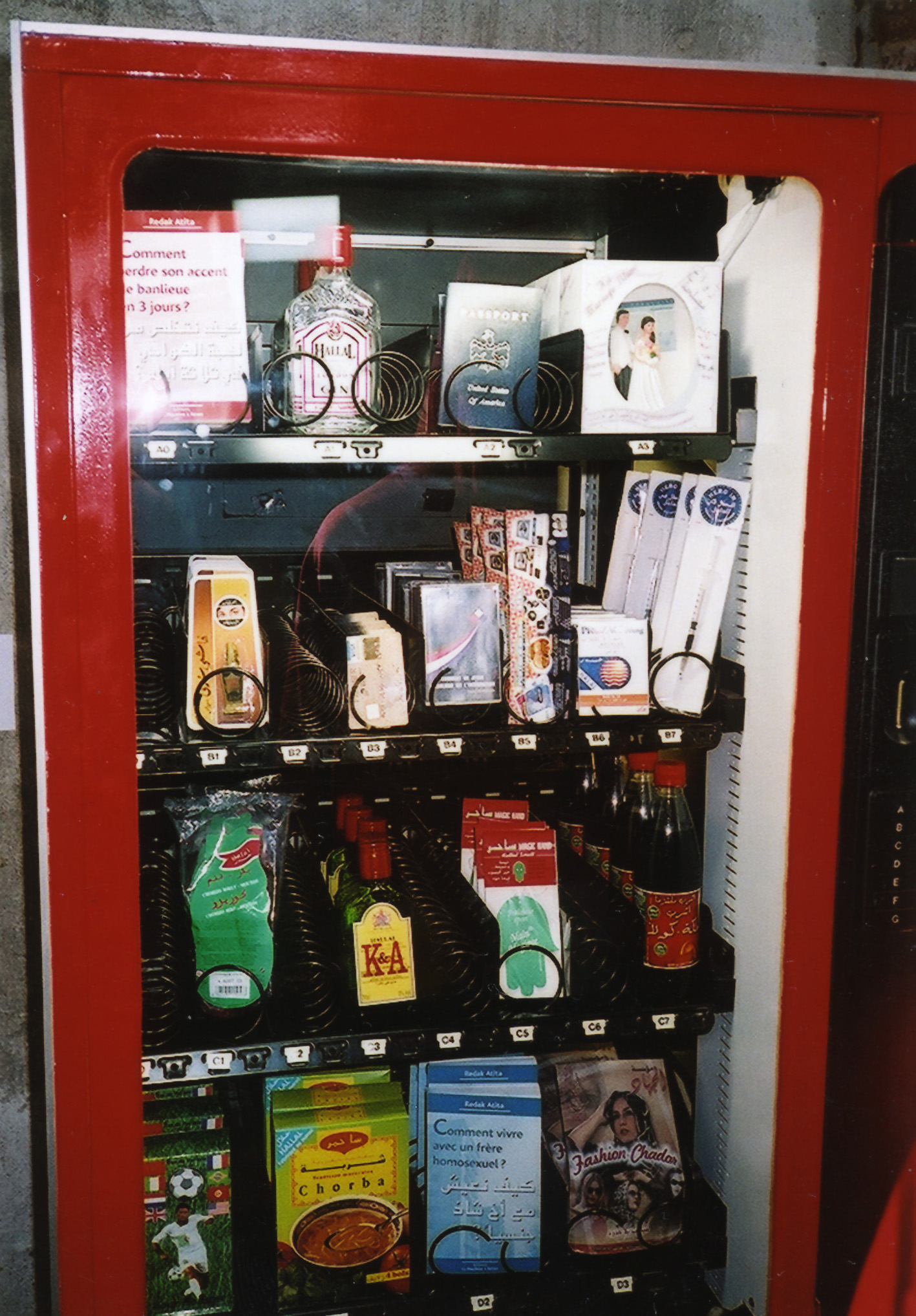
Conceptualising Modernist Architecture in Trans-Cultural Spaces, Interview with Kobena Mercer, 2011
Kobena Mercer: Art and architecture have become increasingly closely connected, but in con- trast to artists whose sculpture explores the purely formal properties of space, or architects who have constructed gallery spaces for the exhibition of art, your work has a strong historical or even archeological dimension with regards to our understanding of architecture in colonial or post-colonial contexts. How did your research interests in colonial architecture come about, and how would you characterize the conceptual issues that you set out to explore in works such as Kasbah (2007)?
(más…)
Signs of Reappropriation, 2011
Our economy is a system in which amnesia and sophism fuel short-term vision and thought. People do not invest in a real thing anymore. Today, it is always about “the option to buy” any and every commodity.
(más…)
Kader Attia’s History of a Myth: The Small Dome of the Rock. By Laurie Ann Farrell, 2010
Aesthetic, cultural, philosophical and social theories all buttress the conceptual underpinnings of Kader Attia’s installations, photographs and films.
(más…)
The Space in Between. A conversation between Kader Attia and Rebecca Dimling Cochran, 2010
Kader Attia is captivated by what happens in the space between things. He often inverts the traditional figure /ground relationship, focusing, for instance, on the environment created between two buildings rather than on the buildings themselves.
(más…)
Kader Attia at Christian Nagel. By Gregory Volk, 2010
BERLIN Kader Attia is a French artist of Algerian descent who grew up in the immigrant banlieues of Paris, sites of poverty, crime and, in 2005, massive rioting.
(más…)
The Colonial Modern, 2009
My researches have led me to be more and more interested in the notion of «signs of reappropriation». It is important for me, especially when talking about some «post-modernist» architectural theories that were experimented early 50’s, in Algeria, by Fernand Pouillon, and then implemented in the French banlieues, before being spread all around the world.
(más…)
Ghardaia-Le Corbusier, 2009
My researches have led me to be more and more interested in the notion of «signs of re-appropriation».
(más…)
Kader Attia, Centre de Création Contemporain Tours, France. By Nuit Banai, 2009
The implications of Kader Attia’s installation Kasbah, 2009, extended well beyond the gallery’s bare concrete walls and low, unfinished ceilings.
(más…)
Kader Attia – Alpha Beta. By Storm Janse van Rensburg, 2009
Kader Attia conceived the sublimely dangerous installation, Alpha Beta at a time, perhaps surreptitiously, when knife crime in London hit headlines in tabloids and dailies in the United Kingdom and abroad.
(más…)
Between the Things and the Words, Interview with Octavio Zaya, 2008.
Octavio Zaya- In a recent statement that you made public during your exhibition at the Henry Art Gallery in Seattle (USA), you mentioned that you have been questioning political issues through art, and that from the resulting reflections you have taken “a more critical step”, questioning “the limits of these discourses” in the face of everyday life. Could you elaborate on these “critical steps” and on what is it that you understand as the “limits” of these political discourses?
(más…)
Rochers Carrés, 2008
I have been thinking about the notion of boundary — geographical, cultural, sexual, religious, philosophical — for a long time. I am interested in that issue, notably through the way architecture and urbanism have an impact on peoples’ everyday life, and particularly the way power has always used them to oppress pop- ulations.
(más…)
Myths and Poetry of emptiness, 2008
For several years now, I have been questioning political issues through Art, conducting my researches on these topics always in the light of psychoanalysis and philosophy. As someone born in France from Algerian parents, my childhood, spent between France and Algeria, has led me to feel close to Oriental and Arab philosophy, as well as to Occidental philosophy.
(más…)
Black and White – Signs of Times, 2008
Reason demonstrates that the order of things does not only lean on a system based on comparisons or similarities (Rene Descartes, Les Regulae).Indeed, through inference, we can also assimilate differences between things, as analogies that bind things together.
(más…)
Upon Pillars of Sand, Pillars of Salt… Kader Attia’s Holy Land. By Octavio Zaya, 2008
The body of work which has won Kader Attia recognition and acclaim is customarily considered through the popular cliché concerning the simplistic opposition between East and West.
(más…)
Life on the surface of everywhere. By Hannah Feldman, 2008
Space seems to be constricting in Kader Attia’s recent work. What little room there was to navigate the already crowded cityscape that the artist forged out of more than one hundred scavenged refrigerators at the Musée d’Art Contemporain de Lyon (Fridges, 2006) has buckled beneath the glittering refraction of the same slab-and-fridge skyline tiled with tiny mirrors at the BALTIC Center for Contemporary Art (Untitled (skyline), 2007). Even the scant volume that remains between these shimmering towers is little more than illusion, a mise-en-abîme of surfaces reflected off of other surfaces to present a spectacle of depth and light, to conjure a pretense of breathable air. No longer does there exist any margin for bodies in this urban grid, even as it is only the spectators’ reflection from without that animates the fractured, mirrored surfaces, giving contour, color, and a sense of life to the ‘buildings’ and the cities they mean to evoke. Architecture and the cities it constructs, Attia’s work intones in an increasingly dramatic register, live off more than they provide for.
Such is certainly true of the French banlieues that provide the most immediate architectural inspiration for these installations. Originally meant to provide housing for a burgeoning immigrant and working class population following World War II and the second swell that ensued at the end of the Algerian War of Independence, the housing projects of such townships as those within the département of Seine-Saint-Denis—‘le 93’ for short—where Attia spent his childhood, had, by the early 1980s, become the site of massive discontent and unemployment, fragmentation and isolation. Today, the technophilic world of promise these architectural agglomerations were originally meant to embody has certainly given way to grimmer realities, just as the allure of Attia’s undulating skylines are quickly thwarted by claustrophobia and anxiety. In so doing, these room-scaled cities encapsulate for the art world spectator—while simultaneously implicating her within—the trap of consumerist aspirations that Attia has long ironized with work like La Machine à rêves (2003) and Looose Weight (2004). Even more significantly, these works quickly conjure the tension between inclusion and exclusion that has animated Attia’s decade-long investigations into cultural identity under the hegemonic index of globalization and the increasingly fraught condition of those rendered in exile as a result of the geopolitical conflicts that are often called postcolonial, but remain decidedly rooted in a long history of colonization and the battles fought to refuse it.
Attia’s interest in this subject matter takes root in his own experience, wherein the interrelated crises of community in both France and Algeria after the 1962 resolution of the Algerian War of Independence anchor the oppositional poles of postcolonial possibility and probability. Indeed, despite the French Republic’s ongoing reticence to compile statistics regarding the ethnic origins of its citizenry or to substantiate the kinds of identities earmarked by the hyphen that might otherwise or elsewhere appear between a range of geographic or religious markers and the national identity they mean to complicate or complement, Attia is consistently referred to as a French-Algerian artist. Moreoever, he understands himself precisely as such.
Attia’s mother is Arab, his father a Berber of Chaoui lineage. Both are from highland regions surrounding Constantine and so both were once subjects, if not citizens, of France before Independence rendered them Algerian. Born just eight years after Algeria achieved its sovereignty and eleven years before the national conflicts generated during the battles for this right devolved into a bloody Civil War, Attia grew up in those northeasterly suburbs of Paris that have since come to epitomize immigrant and youth-generated violence for a rapt Western audience. It was in the unyielding grid of these urban developments that Attia came to know and hate the claustrophobic isolation that his ‘fridge installations ascribe so effectively to the spatial terrain of the French suburb. And yet, honed in equal part by the cultural heritage of the banlieue, itself a cosmopolitan collage of religious and geographic tradition, that of his hybrid family lineage in rural Algeria where he would visit as frequently as war and the school calendar would allow, and the high cultural realm of art as it was presented to him in the Parisian museums he would visit on his own every Sunday, Attia’s upbringing was as transculturally porous as they come.
From this culturally composite constellation of experience, Attia has honed a sense of art as a simultaneous means of communication and method of catharsis. Art enables him to speak with, but also to act against. In this sense, he refuses the notion of a pure or autonomous sphere of artistic production, even as his work has become increasingly attached to the institutional parameters of the art world and the large-format spectacles it allows, if not demands. From his earliest photographic foray in the mid-1990s, when he documented the two halves of his family in France and in Algeria, Attia has used the tools of his trade to bridge gaps and to attempt to bring people and places closer together, whether in reality or in the symbolic space of representation.
At first, this might have seemed a hopeful endeavor, full of faith and a desire to cross boundaries and to bend genres. Fittingly enough, the project for which he would first achieve international celebration, La Piste d’Atterrissage (1997-1999), combined both these desires as it represented a population of Algerian transvestites and transsexuals, or what the French language names as transgenres—a nomination that, even if inadvertently, likens sexual difference to a category of things constructed across a series of discursive practices. In this series, Attia presented 156 photographs documenting the daily life of a community of Algeran-born transvestites as they made their living working as prostitutes on the Boulevard Ney, itself also something of a border between city and suburb, center and periphery, here and there.
Unlike the authors of so many of the photographic archives presented in art spaces over the last decade, Attia had come to know his subjects quite well over the two years he spent documenting them. The photographs he took were first and foremost, one senses from the intimate detail and affectionate rendering, produced for these subjects, and were meant to help achieve the visibility and hence the representation as political subjects that they had been denied, first by increasingly fundamentalist factions in Algeria during the Algerian Civil War and again as undocumented immigrants in an inhospitable France. Twice excluded, they lived the precarious vulnerability of what some have come to call “bare life,” stateless and unprotected by either Algerian or French law. In particular, the latter refused to recognize the transvestites as political refugees and refused to ratify their quest for the residency papers that would allow them to find legal employment. It did equally little to protect them from the violence and abuse they received in their current line of work, especially from young beur males from the cité beyond the Boulevard.
In this project, Attia’s interest in creating bridges, in incorporating the unincorporated into a universalism that did not have room for them, took on an even more literal form than that which might have otherwise been afforded by the simple act of interrupting the gallery’s privileged space with the image of those it might normally exclude. Indeed, these images, still best remembered in the art world as the ephemeral, color-slide projection that Attia first installed in the architectural grandeur of the Centre National de la Photographie in 2000 and then again in 2003 at the Venice Biennale, had made their public debut in the pages of Têtu, a popular, full-color French monthly marketed exclusively to a gay and lesbian readership. In Têtu’s pages, the photographs provided both illustration and impetus to a compelling article—equal parts autobiographic lament and impassioned defense—written by journalist, music critic, and activist Hélène Hazera about the plight of these individuals in relationship to both a history of gay-bashing in France and its sinister double in the Algeria of the 1990s. Hazera’s article made unflinchingly clear that Attia’s investments were neither purely aesthetic nor remotely opportunist—a distinction that, for her, rendered the work categorically unlike similarly perceived folios produced by figures such as Nan Goldin. Instead, Hazera carefully foregrounded Attia’s aesthetic practice within the sphere of his social conscience and in his own, autobiographical investments in refusing the invisible conditions of being only ever either this or that, here or there. To this end, Hazera explains how Attia had championed the rights of his photographic subjects, laboring with them to achieve residency papers for no fewer than eight amongst them.
That photographic imaging could facilitate such crossings of journalistic reportage, activism, and art world spectacle provides an important insight into the rigorously straightforward lexicon of forms, shapes, and allusions that have constituted Attia’s more sculptural and site-specific installations in the decade since La Piste d’Atterrissage. Whether two- or three-dimensional, all of these works are still meant to function, in Attia’s lexicon, as “pictures,” and to speak to experience across the unique aspects of a cultural specificity that he is certain has become increasingly suspect.
It is well known, if not already something of a truism, that France is a country less interested in promoting diversity than in maintaining an implicit sense of frenchness through assimilation and integration. In recent decades, the mounting presence of the legacy of the Wars fought in Algeria has presented itself as an expanding set of stumbling blocks to the construction of a seamlessly postcolonial, European France and its concomitant cultural image. As French governmental policy has strictly enforced a policy of universalist assimilation and labored to keep private most visible evidence of religious and other sectarian difference, an increasingly alienated banlieue-bound generation of African and Maghrebin descent has become more and more susceptible to the separationist identities marketed to them like so many other commodities by Islamist (and other) groups seeking to augment their numbers with bodies reaped from the fertile discontent of the banlieues.
When Attia satirized the fashion of this kind of religious affect by creating a line of hip-hop clothing called Halal (2004) and placed it as the saleable product of an extremely visible boutique (in reality the artist’s then gallery) in the heart of the French capital, his humor cut more than skin-deep—just as the knife of his critique sliced both ways. The very desire to belong that enables the appropriation of religious symbols as tools of access rather than avenues of devotion (and the fear that these augur for the majority population) is not a psychological phenomenon so much as it is a historical one, born of years of disenfranchisement and isolation at the margins. In Attia’s repertoire and in accordance with his investment in thinking about identity across lines of sexual or cultural or religious boundaries, this appropriation is as applicable in the construction of, for instance, Jewish identities as it is in Islamic or Christian ones. To make his point, Attia’s 2005 wall-based Star, for example, features an array of golden, Star-of-David-shaped sequins arranged against a black velvet background to spell the work’s title, demonstrating this collision of material desire and religious symbols while also highlighting the ambition to be seen, to be, in effect, like a star. Similarly, the hastily rendered sketches Attia makes of faceless youth in hooded sweatshirts alternately emblazoned “Halal,” marked with the secular icon of McDonalds’ golden arches, or festooned with six-sided stars and Islamic crescents decry a rapidly multiplying mass identity, distinguishable only by brand, but united only in their aspiration to achieve this minimal mark of difference. The aftermath of a failed universalism is manifestly clear.
In more global terms, since those are the ones to which Attia is increasingly turning, we might also imagine the facelessness of this population—invisible beyond the iconic brands of their faith—as similarly related to the fate of the subject conjured by the reflective surface of the mihrab-shaped mirrors that the artist temporarily sunk into the arid terrain of the Canary Islands in an artistic gesture of symbolic welcome to the dispossessed migrants who arrive illegally and with growing frequency on the shores of this intermediary body between Africa and Europe in search of a “Holy Land” that, by default, the mirrors insist is always already somewhere else (Holy Land, 2007). Facing the sea and evoking in equal measure religious architecture and rudimentary tombstone, these sculptural fragments also enjoined the actual art world audience that would have been the only one to literally appear within the reflective frame of their surface during the duration of the 1st Architecture, Art, and Landscape Biennial of the Canary Islands to imagine itself as occupying this same subject position. To imagine itself, that is, in the impossible position of seeking to enter, but of being shut out by an impenetrable surface. The installation’s title subtly joined this pilgrimage, occasioned for one population by displacement and hunger, but by the quest for greater cultural capital for another, to the idealization and corresponding contestation over certain religious sites in the Middle East as constituting a land more holy than any other.
But, perhaps the most eerie manifestation of Attia’s fascination with the façade of faith as yet one more identity to be marketed and consumed is Attia’s Ghost (2008). Here, row upon row of diminutive, but nonetheless life-sized, silvery body-shaped sculptures bend in a unified posture of prayer. From behind, the sea of fragile forms fills the room like a distorted regiment of Andy Warhol’s Silver Balloons tethered to the ground in neat formation. Cross the room, however, and the elegant slope of what appears to be the figures’ hooded heads open to reveal gaping holes where faces should be. Made from tightly wrapped tin-foil castings of women’s bodies, these hollow shells are the logical companions to the triad of religious symbols with which Attia adorns his armies of suburban youth. Located at the margins of state-bound culture, his subjects become drones, emptied of substance and devoid of interiority, willing to bow down to any or perhaps all dogma or religious creed.
Space, we might recognize, is compressed here too, precisely as it evacuates and territorializes the body we see represented only in its trace and only in its acquiescent sameness. By virtue of this sameness, by virtue of an existence defined only as pliable surface, these figures conjure the same subject we have seen elsewhere in the collapsing spaces of the world Attia remakes for us. Exclusions such as those that order the experience of the French banlieue, Attia’s presentation begins to insist, cannot but fail to condition exactly the same culture we see here—and there. It is also only according to this same rhythm that the undulating flow of Tsunami (2006) can abstract the tin-roofed huts of all the world’s shantytowns into one massive wave of ecological disaster, evoking in terse sculptural form the same global catastrophe that Mike Davis laments with such scholarly fervor in his Planet of Slums. The global networks celebrated by so much aesthetic practice, including, perhaps, Attia’s own earlier works, as ways to hybridize and so universalize cultural belonging, here collapse into an endless repetition of the same empty spacelessness. What was once the utopian vision of a culture that might be located both here and there or somewhere in-between has given way to the dystopia of a culture that is everywhere and nowhere at once.
It is only, for instance, the subjects conjured by the hollow shells of Ghost that might find a home in Attia’s ‘fridge cities or on the cement beaches of Algiers that Attia represents with the plywood and sheetrock obstacles of Rochers Carrés (2008). Based on the artist’s memories of childhood visits to the Algerian coast and the suburban shantytowns that sprang up around the abandoned French infrastructure, these looming masses once again threaten the individual subject with their scale, perilous volume, and rigid rectilinear formation, pointing to another instance of modern universalism gone awry and lining it up alongside so many others around the world. The irony may be that even as they describe this failure, these just-past modernist structures cannot exceed it and so too yield, albeit deliberately and purposefully, to the repetition of sameness that dominates a world stripped of cultural specificity.
At the heart of Attia’s artistic investigation into these particular spaces and the experiences they foster lies an unresolvable paradox, a paradox from which his work takes it greatest force. In the world Attia builds to mirror our own, it doesn’t matter, in the end, where you stand; there is still never enough room for you.
Published Kader Attia, BlackJack editions 2009.
Kader Attia. By Régis Durand, 2008
From La Piste d’atterrissage (The Landing Strip, 2000–02) to Rochers Carrés (Square Rocks) and Casbah (2008), Kader Attia has come a long way.
(más…)
Empty and Full Against the Night Sky. By Courtney J. Martin, 2008
Emptiness and Fullness
In discussing his notion of emptiness as a sculptural form, Kader Attia posits Yves Klein’s notoriously empty exhibition of 1958, La Spécialisation de la Sensibilité à L’état Matière Première en Sensibilité Picturale Stabilisée, Le Vide (The Specialization of Sensibility in the Raw Material State into Stabilized Pictorial Sensibility, The Void) as a model. In the exhibition, Klein crafts a journey through the gallery in which nothing is spectacularly on view, save for a blue curtain at the entrance and a white cabinet. Despite its lack, the exhibition attracted throngs of curious visitors who wanted to locate the nothingness, or simply to participate in the spectacle. On the surface Le Vide (the void) of the title was explained in the gallery’s emptiness. But that reading was undone by the presence of the spectators. Did a congregated mass constitute the void? If so, was this art-going mass a stand-in, a metaphor for some other entity? Maybe. If we consider that Klein’s point was made in the title —that is, before the act — then his intentions were obvious. Klein attempted to locate the void, a space of everything and nothing. For Attia this quality is compelling:
Emptiness is not only something physical, something concrete, it is psychological, I think it is existential, and, obviously, it is also political.
Fullness is emptiness’ presumed superior and thus its binary opposite by the terms of Deconstruction. For example, something may be empty if it is not completely full. Partiality, in this case, is out the window (or through the curtain for Klein). If not full, it is then inadequate, inappropriate or inauthentic. Set as binary oppositions, however, the inverse possibilities of the pair emerge. Fullness, at first vivacious, is also gluttonous, overdone, over-formed and over-performed. In his work, Attia insists on such an understanding of this binary in his work:
…If you think about emptiness, you can speak about emptiness today describing its opposite side in society: overdose, overpopulation, pollution, war, over-consumption.
Fullness is as much an excess as emptiness is a deficit. Klein’s void makes sense as a hinge between the two, marking the space where both are interdependent and counter-balanced. Klein summoned the void again by producing a series of photographs that supposedly recreated his jump from a building. The photographs, Saut dans le Vide (Leap into the Void), present Klein with head, arms and legs askance as if flying through the air. This void agitates Attia’s understanding of this binary as concrete, psychological, existential and political—in other words real or not real, seen and invisible, body versus mind, and possible or impossible.
The multiple operations of fullness and emptiness ground the logic of 20th-century modern architecture, with its vocabulary of open space, simplified forms, lack of ornamentation and utility. Modernist architecture could be understood as a vernacular of excessive reduction. Attia’s description of the binary (fullness and emptiness) as temporal and fragile also speaks to the language of conceptual art, another realm in which the idea that less is more strategically turns on itself and the viewer. Attia’s Untitled (Skyline) (2008) lives between the two. It is a sculptural installation of major proportion that mimics the assumption of skyline vistas and bounded urban cityscapes, while borrowing from the dynamic of architecture in scale and order. It is decidedly unreal, a fantasy city constructed of disused refrigerators. In this way, it also speaks to the political component of fullness and emptiness, in which the rabid consumerism that drove the modern city contributes to its decline. The waste, represented by the discarded household item, is a metaphor not simply of excess (the once full refrigerator now empty) but also of the excesses of the state, specifically the once-used foreign departments, like Algeria, whose descendants have fared unevenly in France. Untitled (Skyline) is the type of model microcosm that Giorgio Agamben might have called a state of exception. Attia alludes to this space alternately as Paris’ banlieue or any city unwilling to see its reflection. This might explain why Untitled (Skyline) is festooned with reflective mirrors.
During the fall of 2005, Paris’ banlieue became a suspended space, paralyzed equally by indifferent modernist housing, a spate of violence (most notably the fire-bombing of buildings and cars by the so-called pétroleurs), and the glare of international media on the supposed immigrant rioting, symbolized by the structural divide of the Boulevard Périphérique, the autoway that circles and separates Paris from the banlieue. Under curfew and surveillance (from a distance), those once-ignored provinces became excepted, places under the extended watch of government powers. Their exception, their reformation as states of exception, happened via the outbreak of violence. Yet it was their constituency ― working-class and poor, immigrant and marginal ― that allowed the extension of untold lawless power to be the primary action of administration. And here, as Agamben points out, fullness and emptiness reassert themselves as agents of power: “…the state of exception is not defined as a fullness of powers, a pleromatic state of law, as in the dictatorial model, but as a kenomatic state, an emptiness and standstill of the law.” The void then may have been the point at which Paris (its civilians, its leaders) realized that it was held in and surrounded by the Périphérique and that the world was watching periphery turn on Métropole.
A big jail with an open sky
But this is really a longer story about the success(es) and failure(s) of modernism in theory (colonialism) and practice (architecture). Born in France in 1970 to Algerian parents, Attia grew up in Dugny, near Paris, and spent summers in Algeria. His understanding of emptiness and fullness shows the mark of his generation. His education, like most French schoolchildren from this time, would have included a general understanding of post-structuralism, such as that of Michel Foucault, Jacques Lacan or Jacques Derrida. It is Derrida’s method of Deconstruction from which Attia’s full/empty binary takes shape. In its most reductive form, this binary resonates with the France that Attia grew up in ― post-Indochine and Algerian Wars. The country was still in a state of ideological flux brought on by the loss of its colonies. Though a person was either French or not, Derrida and others opened up the space to question that assumption within the country. For an immigrant, that realization first occurred outside the country with the bestowing of nationality by way of the passport. The local confrontations over identification cards and religious dress were secondary concerns. An individual might be expected to be French, but France was still reformulating its national codes, often at the expense of its immigrant bodies.
Attia first exhibited an installation of refrigerators in 2006 at the Musée d’Art Contemporain de Lyon, under the title Fridges, a nod in slang parlance to the ubiquity of the object. This installation included 172 white refrigerators, each marked with gray hues to approximate the concrete-slab architecture of modern Paris, particularly its overbuilt banlieue. The refrigerators stood at varying heights and widths, some larger than human scale, others diminutive, a show of the potential for complexity in built environments. If these objects were immediately related to the Parisian suburbs, they also referenced the colonial social housing built by French architects in its foreign départments.
Fridges recalls the housing complexes Diar es-Saada (1953-54) and Diar el-Mahsul (1954-55) designed by French architect Fernand Pouillon in the Clos Salembrier quarter of Algiers. The former was to be an exclusively European dwelling for the French settlers in Algiers. The latter was to house European and native Algerians, in a plan organized by Algiers’ colonial mayor, Jacques Chevallier, to promote cohabitation between the two groups. Built from near-white imported French limestone, the multi-storied Diar el-Mahsul compound contrasted in color and form from the partially built dwellings beside it or the more typical Algerian architecture of the Casbah. As extant images show, the central tower was dominating and rigid. While the residential structures (some strict squat monuments, others rectangular expanses) varied in height, they too were taller and more imposing than the city’s other architectural forms. To move within Diar el-Mahsul was to be dominated. Attia replicates this type of confinement in Fridges. The visitor must move within the maze of the installation, without a clearly delineated path of entrance or exit. More importantly, Fridges lacks a horizon, suggesting that the city is a controlled environment without regard to the natural world or normal expectations.
This domination had a purpose. As Franz Fanon described in his study of colonial Algiers, the city, including Diar el-Mahsul, was compartmentalized. The complex was divided into two sections, separating European from Algerian whilst creating an elevated Algerian citizen that might rest somewhere between French and Arab. After Algerian independence and the departure of the French, both complexes were repopulated by Algerians. Here fullness and emptiness rock back and forth between the desire for a specific population of French citizens in Algeria to balance the native population (thereby emptying out France to fill Algeria) and the restriction of Algerians in domestic spaces through the purposeful maintenance of emptiness inside the housing complex. Attia grew up watching these buildings morph into their post-colonial status.
Attia’s plywood and sheetrock installation, Rochers Carrés (2008), looks like a typical minimalist sculpture. Rochers Carrés resembles the utilitarian forms and rigid thought that dominated the so-called new three-dimensional objects of the 1960s. Like Sol Lewitt’s modular grids or Carl Andre’s compilations of uniform bricks, Rochers Carrés was composed of several rectangular boxes, set on end at a nearly off-balanced angle and arranged into tight symmetrical rows. Installed in a room, it appeared to be a repetitious, geometric and materially specific work cast from the 1960s minimalist idiom. Fixed by the gallery walls, Rochers Carrés managed to consume the space while approaching a material and formal sparseness.
Despite its stylized full/empty minimal look, Rochers Carrés, was a model of a very real thing: a man-made beach barricade in Algeria set up to bar people from fleeing to Europe via cargo ship. Lined along the edge of the beach, these chunky, irregular quadratic concrete posts create an unstable ground from which the sea is almost impossible to reach. So too is the civic and environmental necessity of the beach vacated. The barricades are a hazard. The area around each post is wide enough for a body to slip into the water and be battered by the concrete. Undeterred, people use the barricades as a social surface, a place to relax or to gaze out toward Europe in the distance, because, as Attia points out, “sometimes when the weather is beautiful, you can see the light of Spain.” But this view is not without complications. Even though the view is open, true mobility is restricted due to immigration, incubating what Attia describes as “the depression of feeling that you are stuck in a big jail with an open sky.”
If the beach barricades evoke the growing impenetrability of European immigration, they also reflect the city’s colonial past. The compartments that Fanon described were not limited to housing and schools. Before the outbreak of the Algerian War in 1954, parts of the city that had been Europeanized were socially, if not physically, barred to Algerians. After the war started, curfews and military patrols ensured that the Arab quarters were encased and forcibly managed. Rochers Carrés resembles the type of military barricade used in Algiers, like that portrayed in the film The Battle of Algiers (1965). To pass between their section of the city and the European section, Algerians had to show proof of their intentions to armed guards who arranged themselves around a stable implement, like the Rochers Carrés posts. In the film the inflexibility of these checkpoints, at which masses of Algerians were withheld from the center of the city, serves as a sort of void of subjectivity. Inside the Arab quarter, people moved in a congested maze. Downtown, space, and thus bodily movement, were limitless. In contrast, the barricade between the two was messy, haphazard and dangerous, a place where chaotic moments determined the otherwise mundane passage between pedestrian zones.
The civic unrest of 2005 in Clichy-sous-Bois followed decades of unofficial discord. Like Paris’ other ring suburbs, Clichy-sous-Bois sits far enough outside the city that it developed its own identity. Following the massive exodus of French nationals in the 1980s, Clichy-sous-Bois’ main characteristic is its immigrant population. Another characteristic is its deteriorating concrete social housing, most of it modernist in design. Together the two created a separation from the city, a barricade between Clichy and Paris that mimicked the one between France’s immigrants and its natives. Attia grew up in the same department as Clichy-sous-Bois, Seine Saint-Denis, and understands its psychic link to Algeria.
I am really convinced that the manipulation of a population of people is totally psychological. The architecture is destroying the subjects’ personality. You cannot grow up in this suburb without any neurosis with the concrete. I am not speaking about people, I am speaking about myself. I grew up between this beach and the northern suburbs of Paris.
In this way Fridges and Rochers Carrés are as much about the relationship of colonial Algeria, present-day Algeria and Paris’ banlieue as each is about the other. France’s presence in Algeria altered both Algeria and France itself. Similarly, the forms of restriction — be they housing or barriers ― reflect and resist this history even as the bodies who inhabit them change.
Rochers Carrés is in Algeria, but it could be in Venezuela. It could be in Cuba.
For Untitled (Skyline) 2008, a site-specific installation at the ACA Gallery at Savannah College of Art and Design in Atlanta, Attia reclaimed more used refrigerators and, as he had with Fridges, assembled them into a city. Unlike those used in Fridges, the refrigerators gathered for Untitled (Skyline) are adorned with mirrored pieces. The walls of the installation are painted charcoal grey, casting a fanciful stage set for the refrigerators as the viewer is invited into the twilight of the built environment. Sparks of light dance across the classicized façade of the refrigerator-cum-skyscraper. Luminous spots on the surface suggest working and living environments that do not heed the 24-hour clock. If Fridges is about the uneasy relationship between modernity and consumption and modernism and colonialism, Untitled (Skyline) allows for another reading of the modernist project, one in which modernism’s obsession with material (concrete, glass and steel) and materiality (opacity, grain and shininess) is as glamorous and high-minded as it is ,literally, dark and narcissistically self-reflexive (reflective).
Untitled (Skyline) is the model workspace of the post-national world. It could be Dubai or Niemayer’s Brasilia. These could be multi-national corporations, NGO’s, residences or a Bollywood back lot. They might be what Esposizione Universale Roma (EUR) is to Rome. And, like these cities of schematic fantasy, the problem of emptiness and fullness rears its head again. Practically, these are still disused refrigerators, former containers of bounty. Dressed up against the night sky, they replicate the skeletons of their function: containers without contents, facsimiles of the used thing. (Somewhere someone screamed, “Why did we not ask where they would end up?”) In the case of the other model cities, we all know that a twin or mirror city operated for it to function. Dubai has its oil fields populated with foreign workers. For EUR’s Rome it was Asmara, then Tripoli, both practice modern metropolises for the reemergence of the third Rome. And if it was Brasilia, well, the favelas of Rio have told and retold their stories each year in Carnival. As the presence of the mirrored pieces suggests, there is always fracture in the refraction of light.
To fulfill his French national civil service, Attia went to Brazzaville, Congo, in 1994. There he became acquainted with the local built forms. Modernist architectural experimentation in the colonies, like Le Corbusier’s unrealized projects for the Marine Quartier or Pouillon’s housing developments in Algiers, is one of many commonalities among France’s present and former colonies. In the Congo Attia saw how Brazzaville had been a site of re-design by Jean Prouvé.
Part of a circle around Le Corbusier, Prouvé was a designer and architect known for his interest in prefabrication. After World War II he established a factory workshop near Nancy in France. There he elaborated on his earlier forms of temporary metal structures, like vacation houses for French workers or residences for war refugees. Tropical House was one such invention. As with most colonial architecture, it was created for the benefit of the settler population; a proposal for living in the unlivable, as the colonies were deemed. Built initially for colonial architects Paul Herbé and Jean Le Couteur, who had been posted to Africa but were unable to adjust to the climate, Tropical House was constructed from light aluminum and sheet steel instead of concrete, which retained too much heat. Prouvé’s design consisted of sliding doors and a central ventilation system, which allowed the heat to be released from the house. Two prototypes were installed in Brazzaville in 1951.
Prouvé’s Tropical House was made in the spirit of adaptation to the local environment. It also engages one of the key tenets of modern architecture: material play. Prouvé exemplifies the way in which French designers and architects conceptualized the colonies: They were spaces where ideas could be tested and refined, often on a transient population (airline employees, urban planners on fixed-term projects, government officials subject to re-posting) whose expectations and assessments could be measured for application in Europe, but for whom they were not accountable. Despite the fact that another space was being re-colonized for play, the colonies allowed architects and designers an unencumbered space for imagination, one not permissible in France, where modernism (as it gave way to International Style) had become rigid. By contrast, the ideal of modernism that Attia grew up with in Paris, the architecture of the banlieue, was not about experimentation. It was a product of raw implementation. In a sense, modernism’s embrace of simplified forms and reduced ornamentation, most noticeable in its material, made it the perfect style for hurried, careless construction.
As soon as architecture becomes a memory, the architecture develops its artistic ability to speak with history.
From his own model city in the Paris suburbs, Attia’s interest in Prouvé reflects a measure of hope, one that is clearly visible in Untitled (Skyline). The tension in Untitled (Skyline) is that break, the potential void, between architecture and art. Though Untitled (Skyline) might very well be a model of the ways in which cities operate, it is not a model for civic motivations. In drawing from Prouvé’s own improvised forms, Attia is allowing his to make their own adaptations. The use of discarded refrigerators in a world in which a significant portion of the population goes hungry is less a response to the world than an acknowledgment of it, just as Prouvé’s improvements in sheet steel and aluminum responded to his world’s desire for new ways of living. Here the modernist mantra “glass, steel, concrete!” resounds in the refrigerators as discrete buildings in a city, though that mantra is upended. “Where are the people?” also reverberates off the shiny exterior surfaces. And that is the position Attia takes:
There is a strong difference between art and architecture. An architect or a designer responds to a question that a society is asking. So architecture is an answer, whereas art is the contrary, art is making questions.
The questions “What are they doing?,” “What do they need?” and “What do they want?” are left to the viewer. If, as Attia maintains, there is a tragedy in the discarded refrigerators, that fact only deepens when their form is given over to suggest another. The fullness of the gleaming, bright cityscape is bereft of a soul, empty of the very thing that gives it meaning. To be clear, Atttia is no more making architecture than he is making art about architecture. He is, however, responding to his environment, which happens to include both high design and trash. With subtlety, he makes the viewer locate the line between the two, a game that might be called “fill it up until it is so full it’s empty.” Sadly, this is a game that is played between nations and landfills alike, sometimes rendering them indistinguishable (Congo, Rwanda, Clichy-Sous-Bois…).
If Klein’s void was provoked in part by the generational doubt over France’s looming loss of its colonial control (hence the desperate quality of his work), a national breach that sparked individual crisis, then his leap and exhibition of nothing represented a fearless embrace of new possibilities. Staged as performances, the exhibition and the leap were no less important or stilted than Prouvé’s aesthetic risks in the Congo. Like them, Attia has shown viewers what we have: a bunch of glass, steel and concrete, a mess of everything and nothing against the glittering night sky.
Published in the catalogue «Signs of Reappropriation«, ACA Gallery of Savannah College of Art and Design, Atlanta / Savannah, 2008
The Landing Strip, 2000
Slide Show, 2000
Centre National de la Photographie, Paris, France, 2000
50th Venice Biennale, 2003
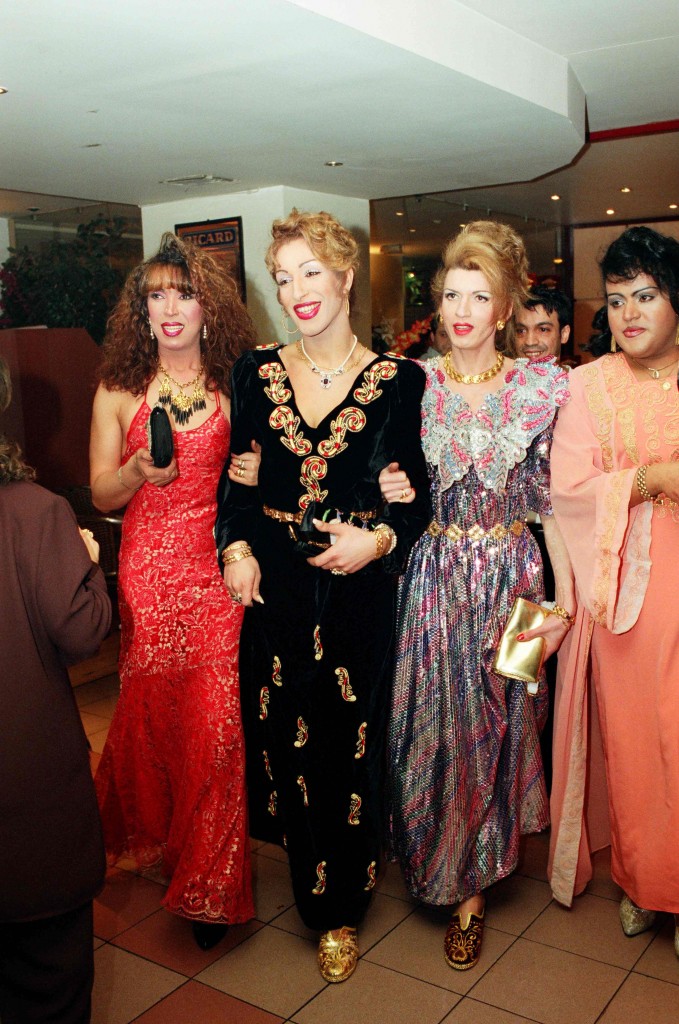
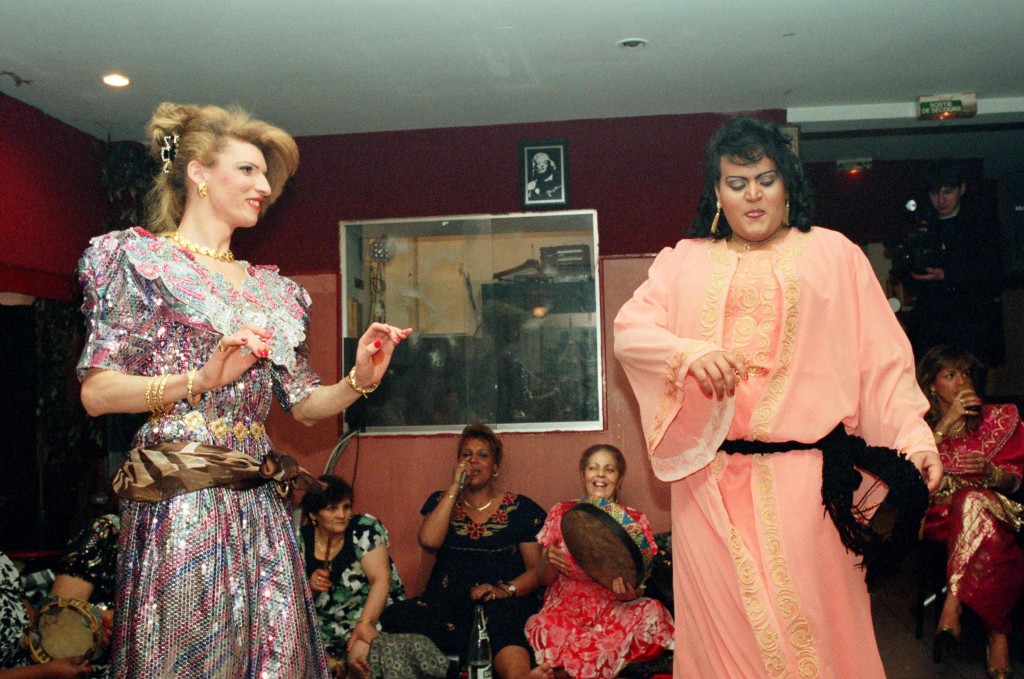
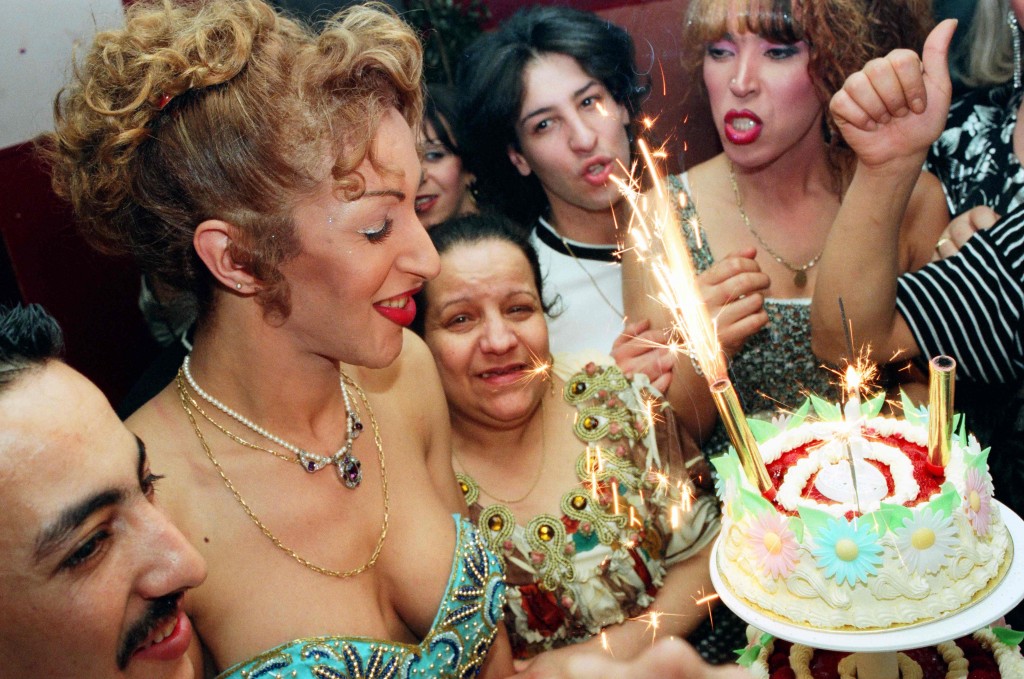
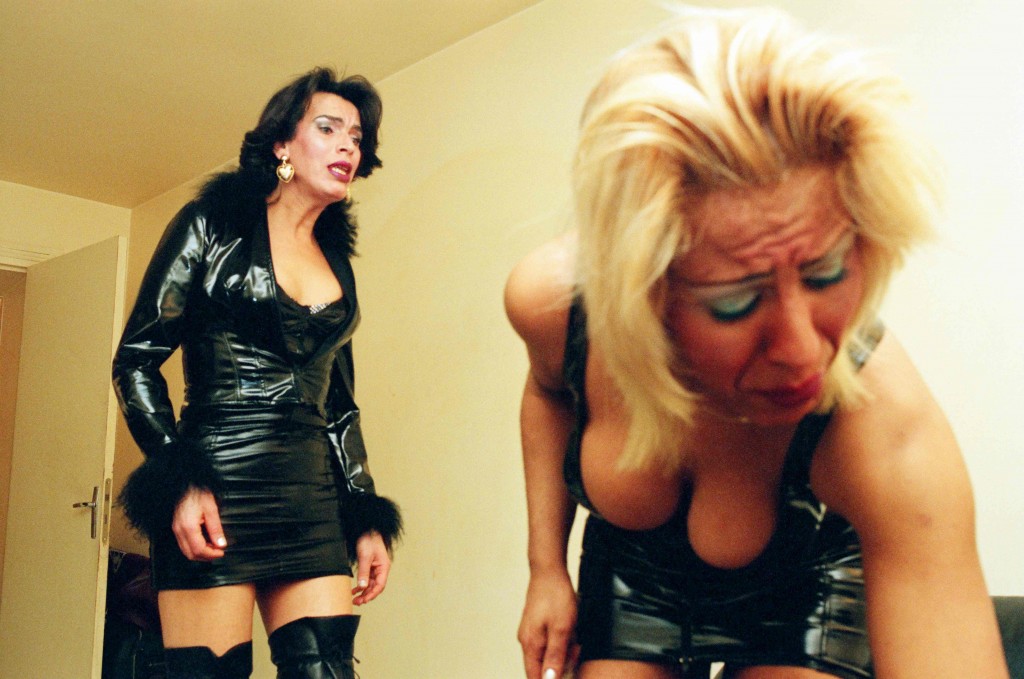

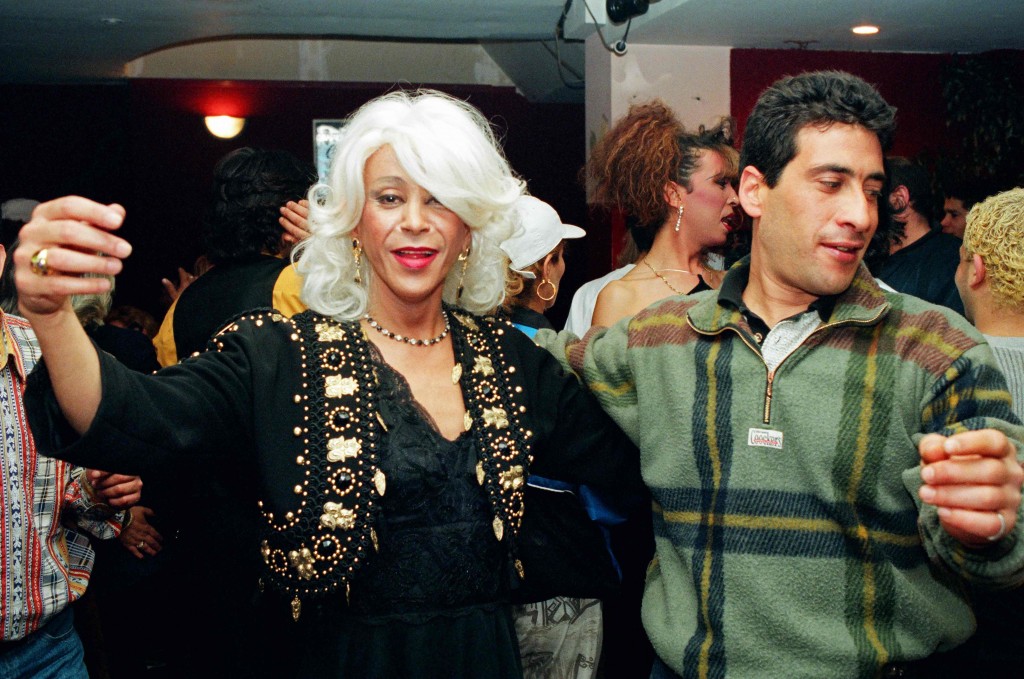
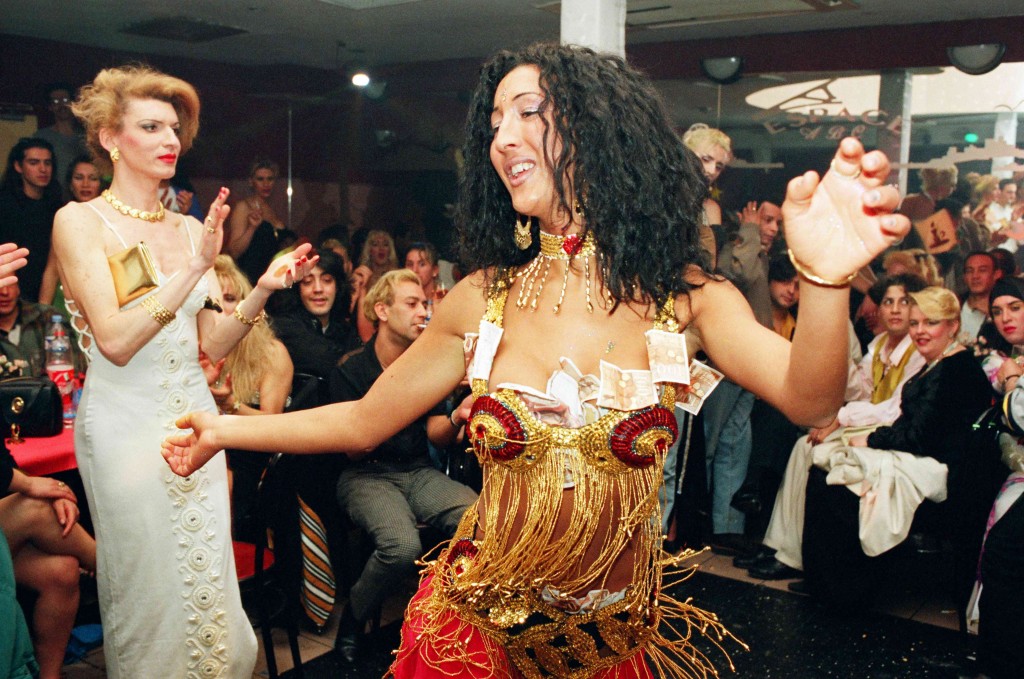
Interview with Nicolas Baume, 2007
For Momentum 9, French artist Kader Attia uses simple materials—foam-padded cots bearing the imprints of bodies—create a poetic meditation on childhood, absence, and community (see p. TK). Chief Curator Nicholas Baume spoke with Attia recently about his creative approach, the threads that unite his works, and the importance of emptiness.
(más…)
Sleeping from Memory. By Nicolas Baume, 2007
One motivating question informs all of Kader Attia’s art: how to find in his own experience a chain of ideas that will lead him to the poetic, transformative work of art.
(más…)
The Dream Circus or: Why did the D.J. commit Suicide? By Tami Katz Freiman, 2007
Kader Attia belongs to a special breed of artists, who in another incarnation might have become anthropologists or scholars of culture. As a member of the north-African community in Paris, Attia examines the conflicted identity of his uprooted culture vis-à-vis the seductiveness of consumer culture and the Western world of material abundance.
(más…)
Faults, 2003
For several years now, I am questioning fundamental issues through Art, conducting my research- es on these topics always in the light of philosophy, psychoanalysis and poetry.
(más…)













































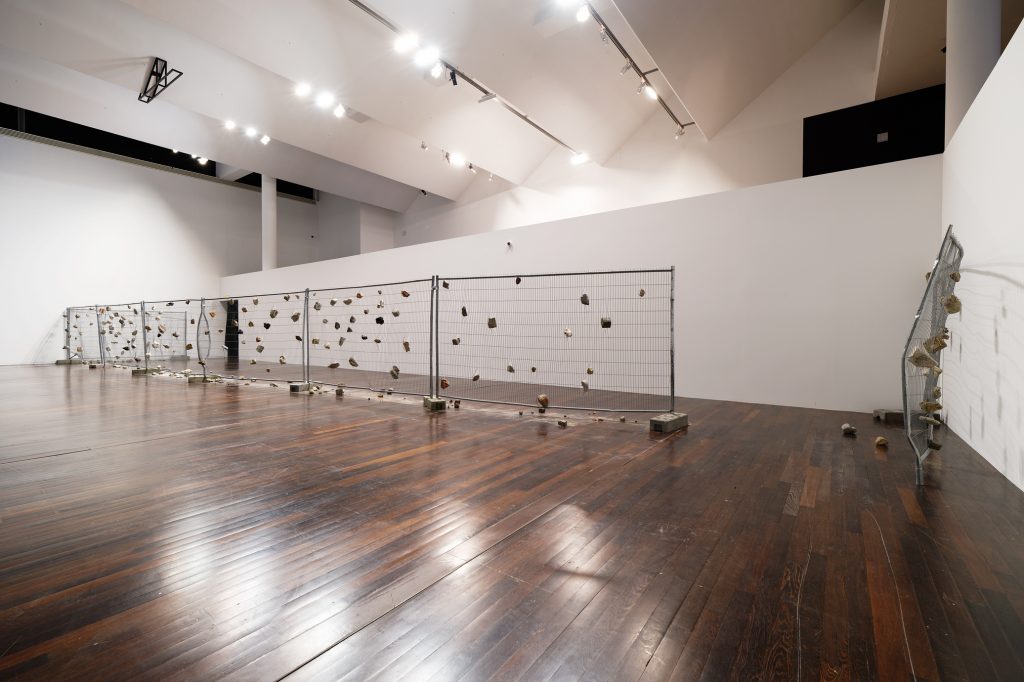
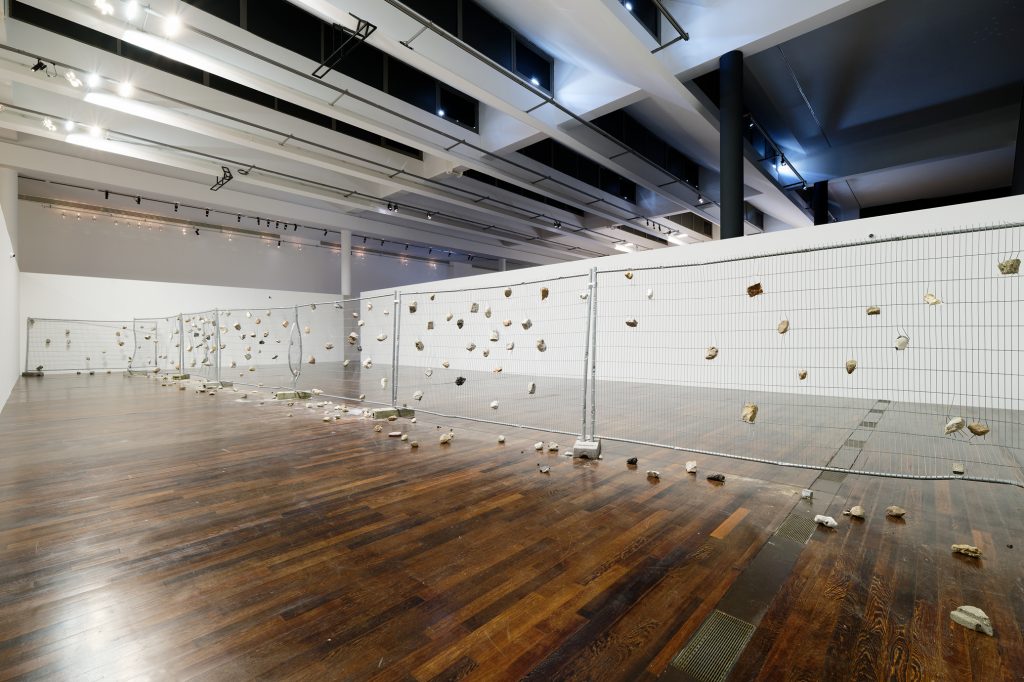
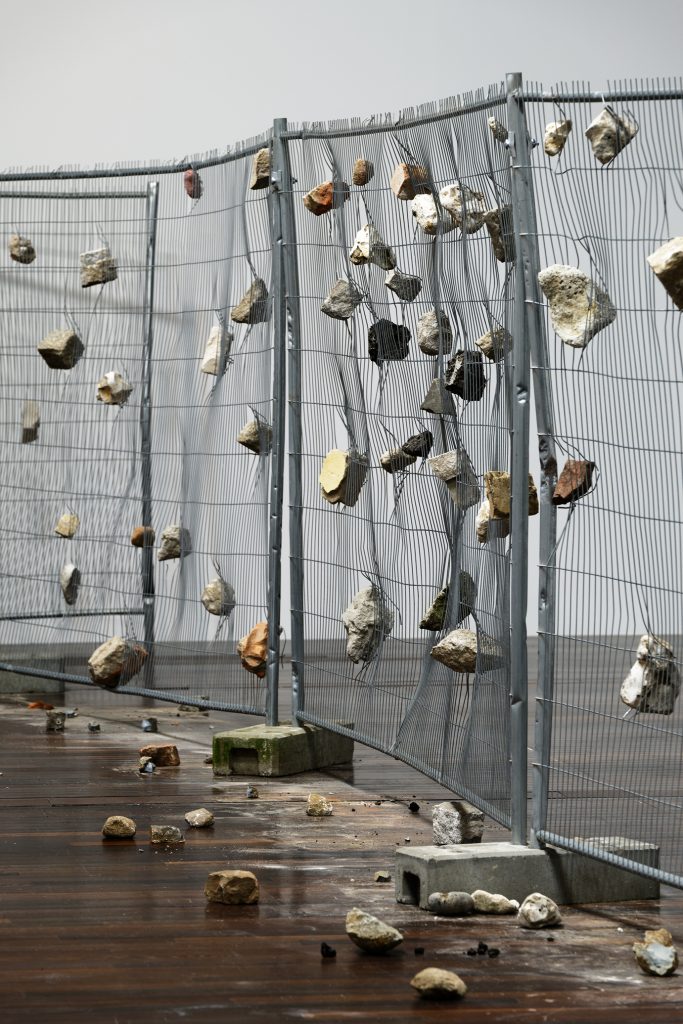
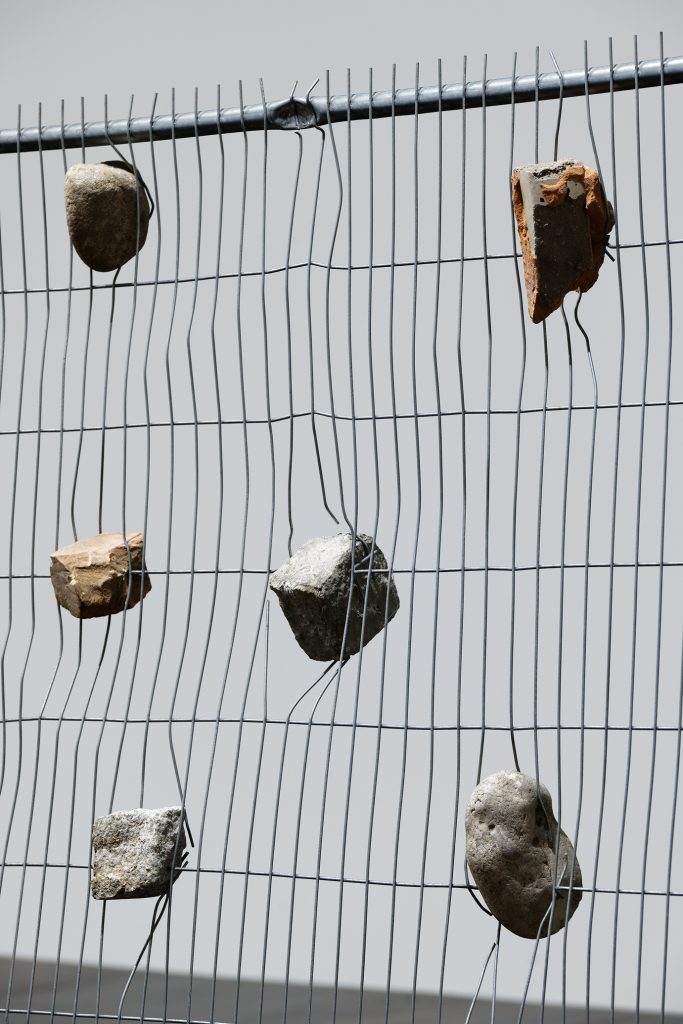
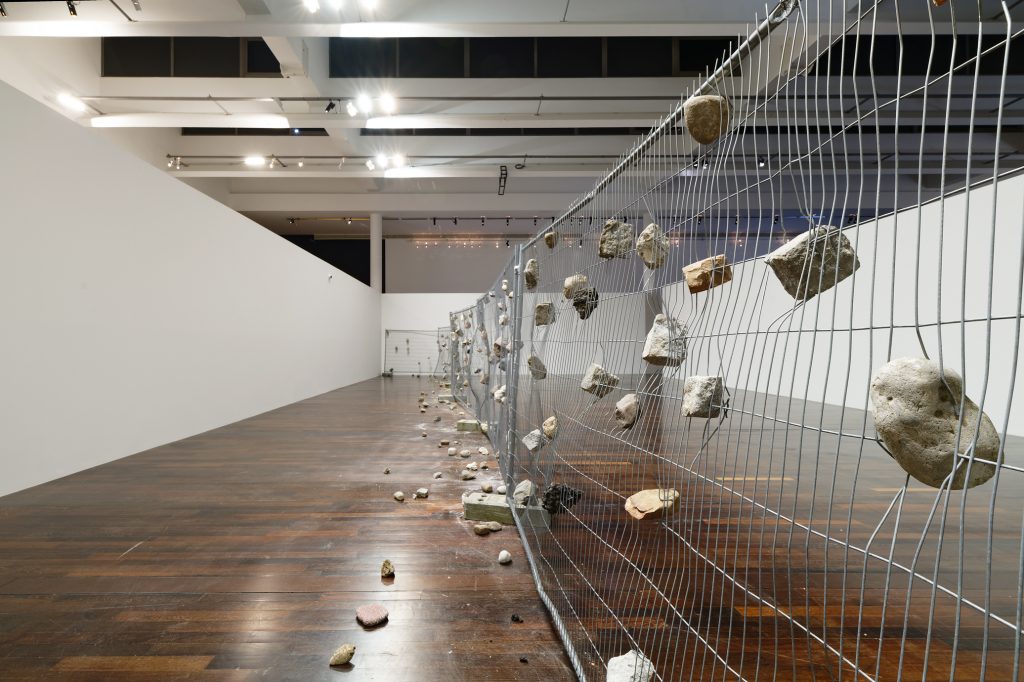












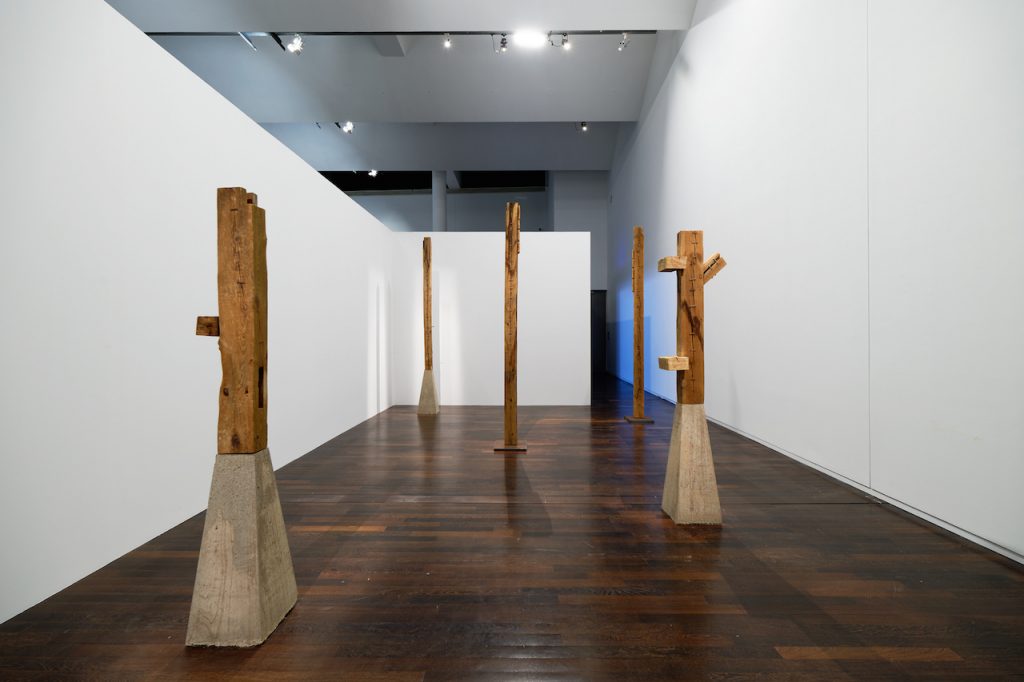
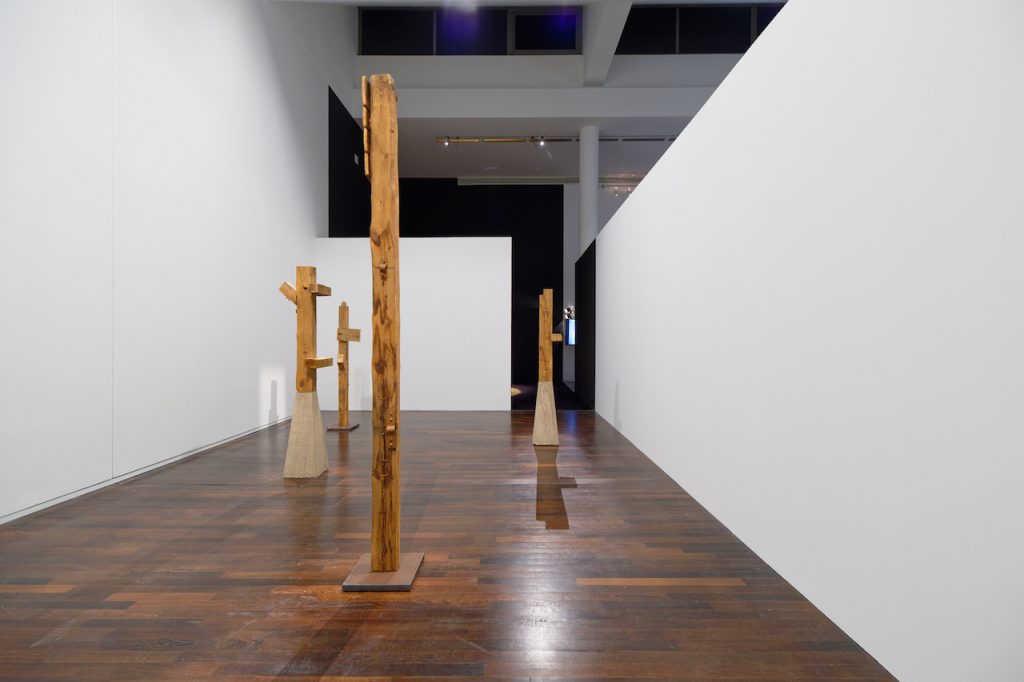
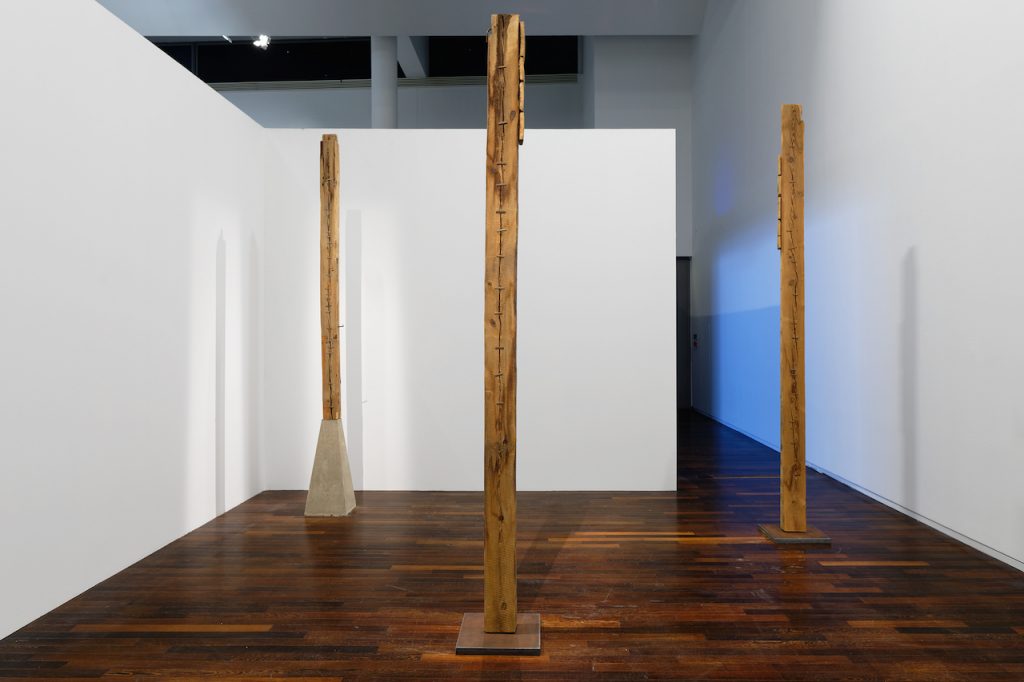
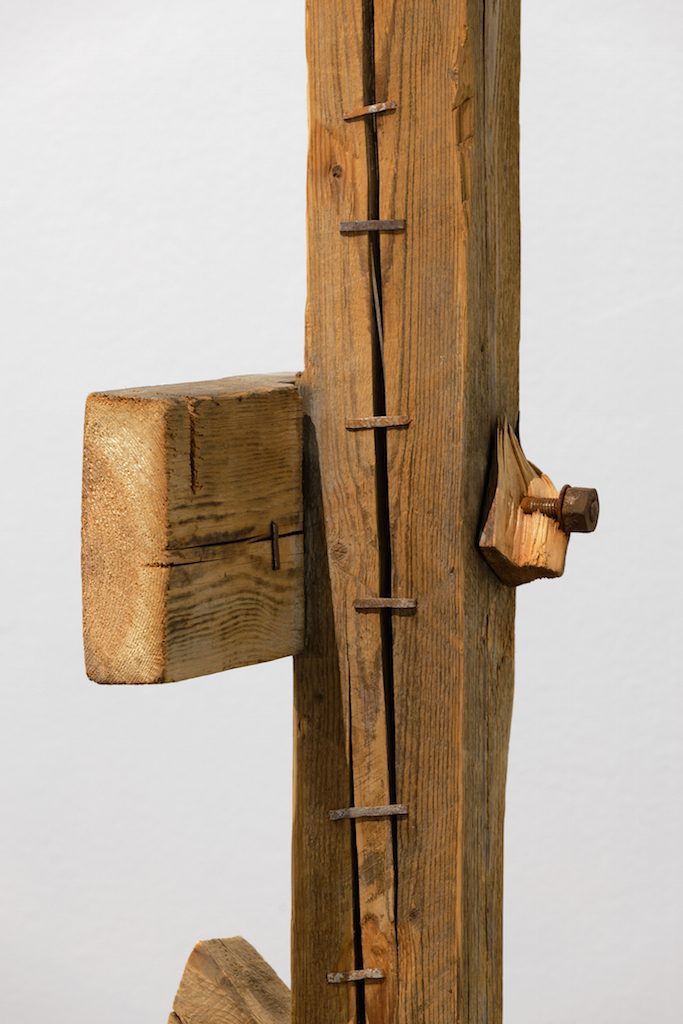
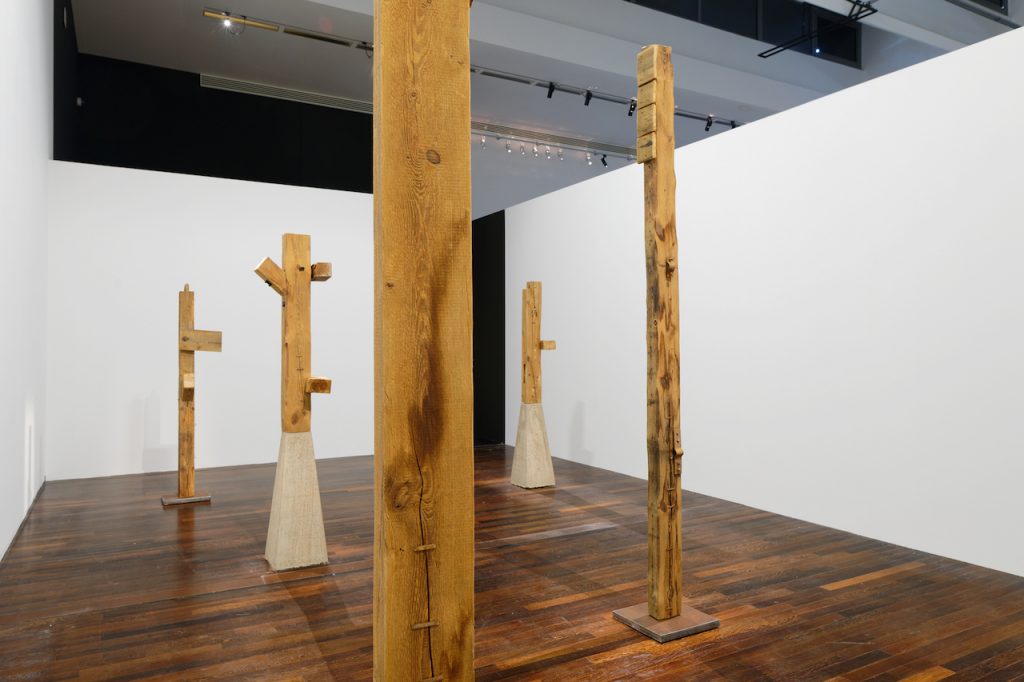










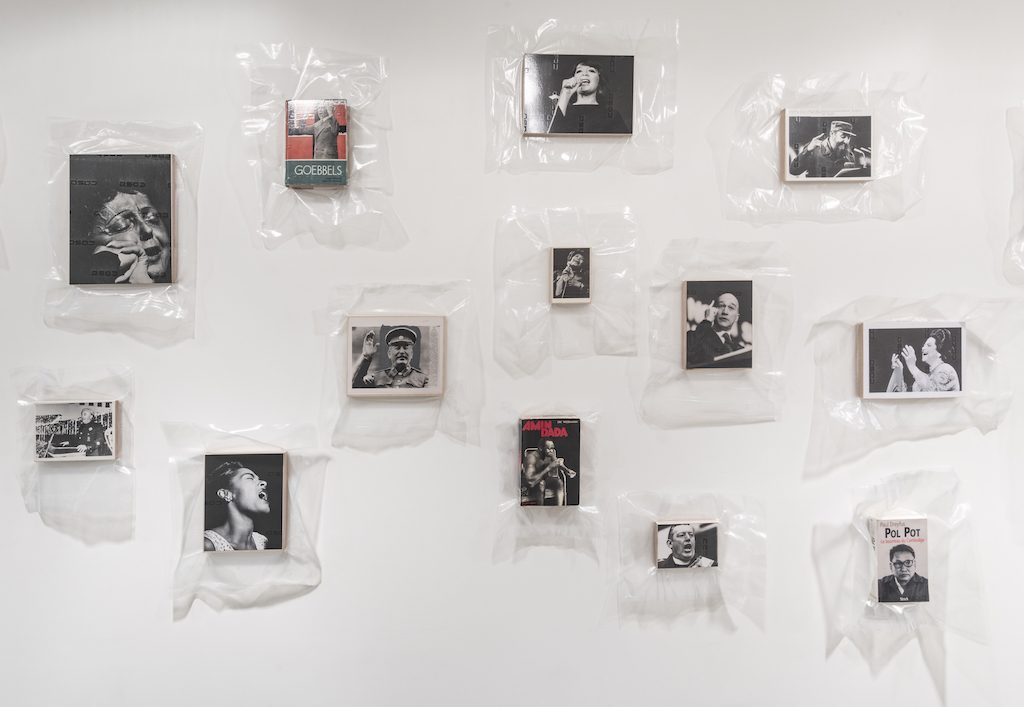
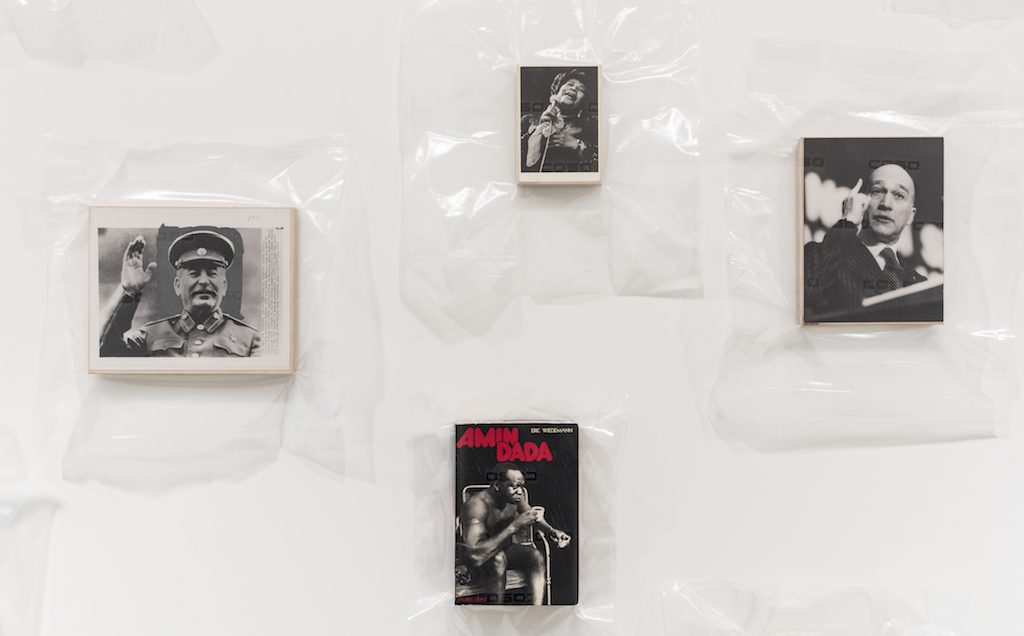
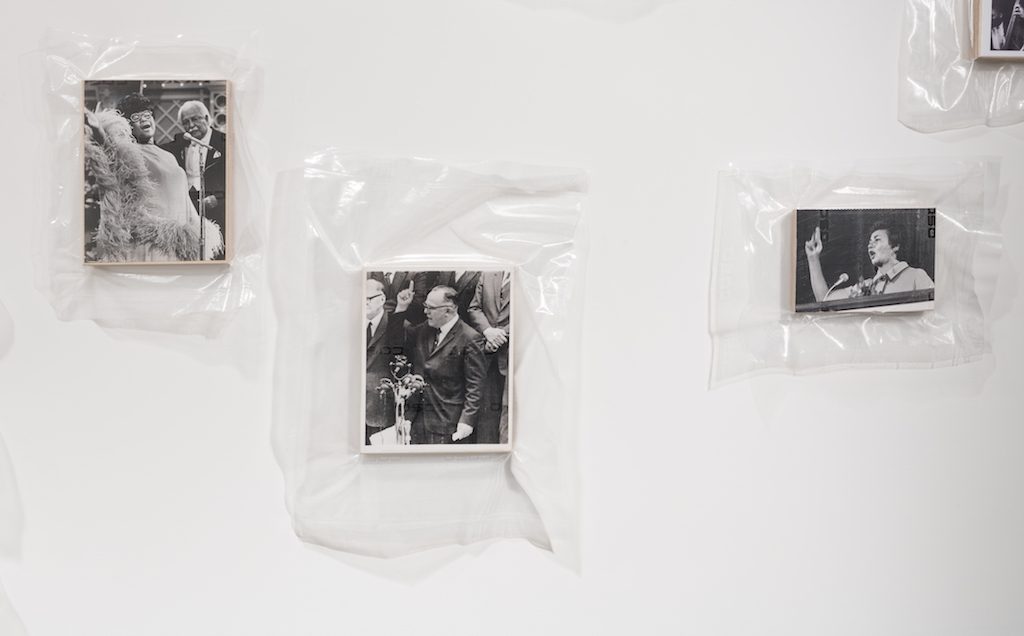
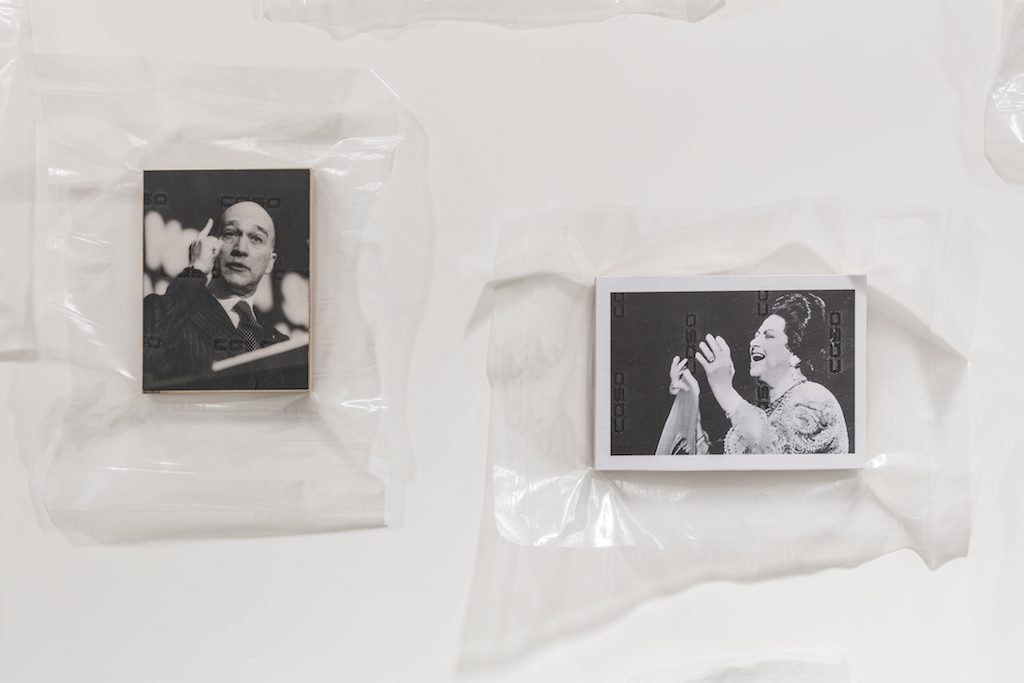

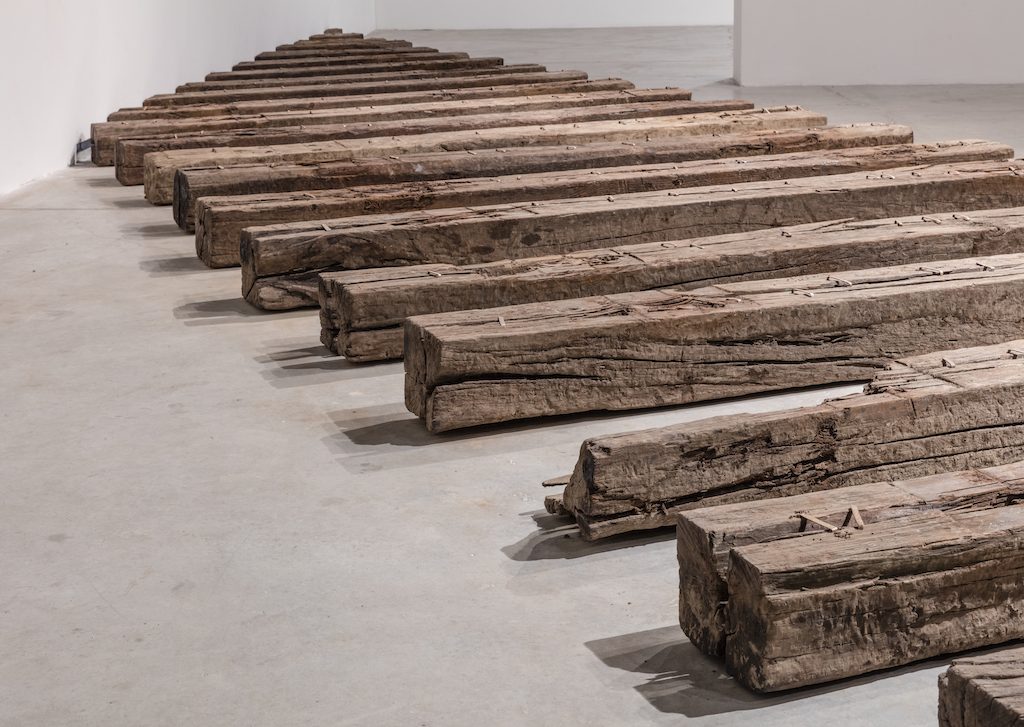
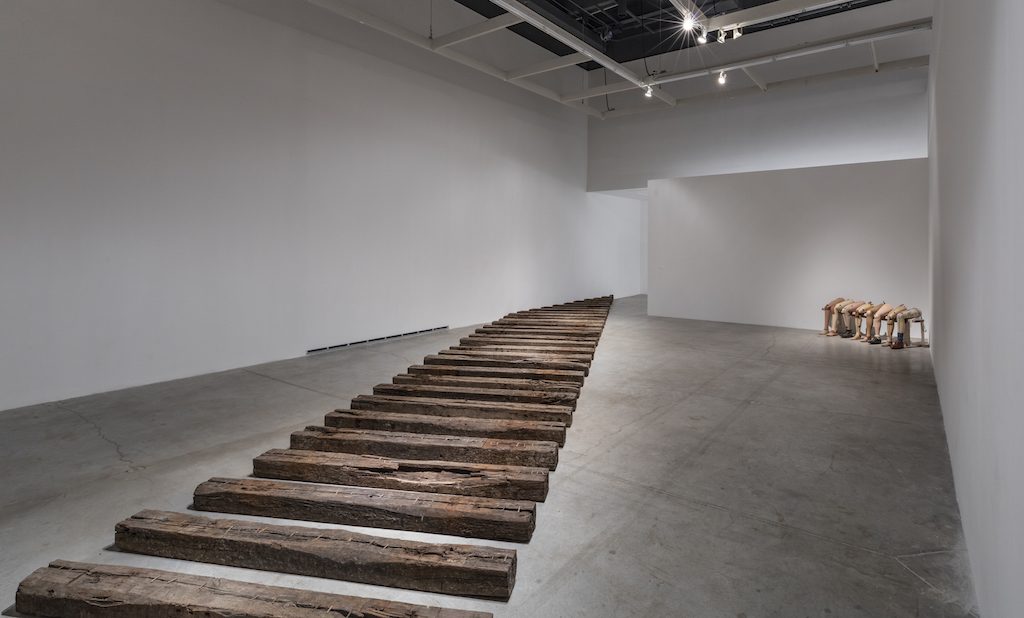
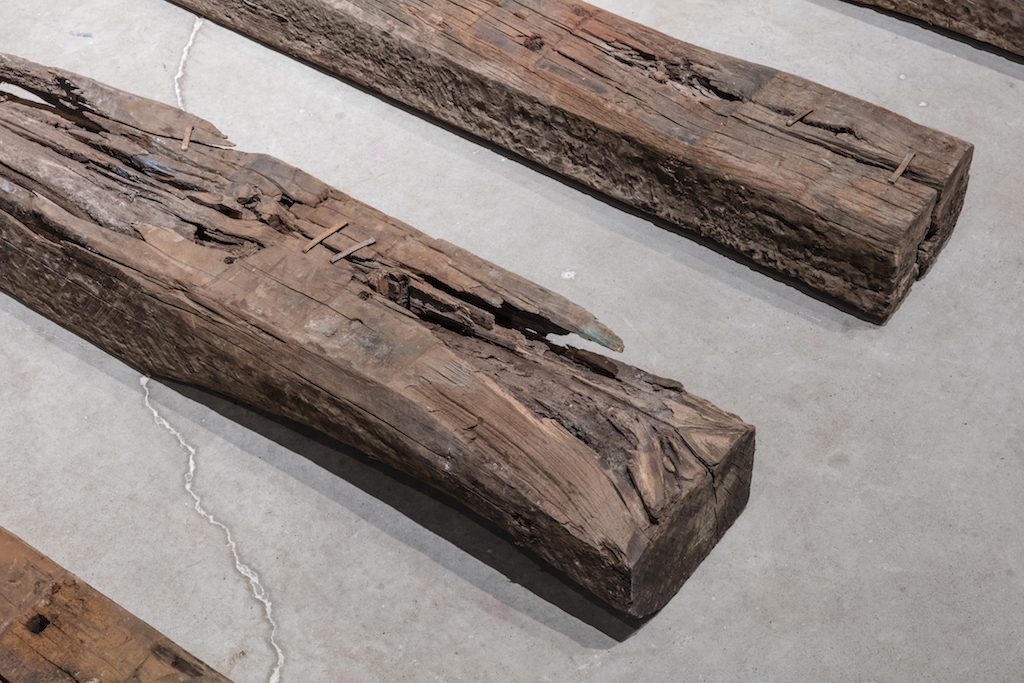
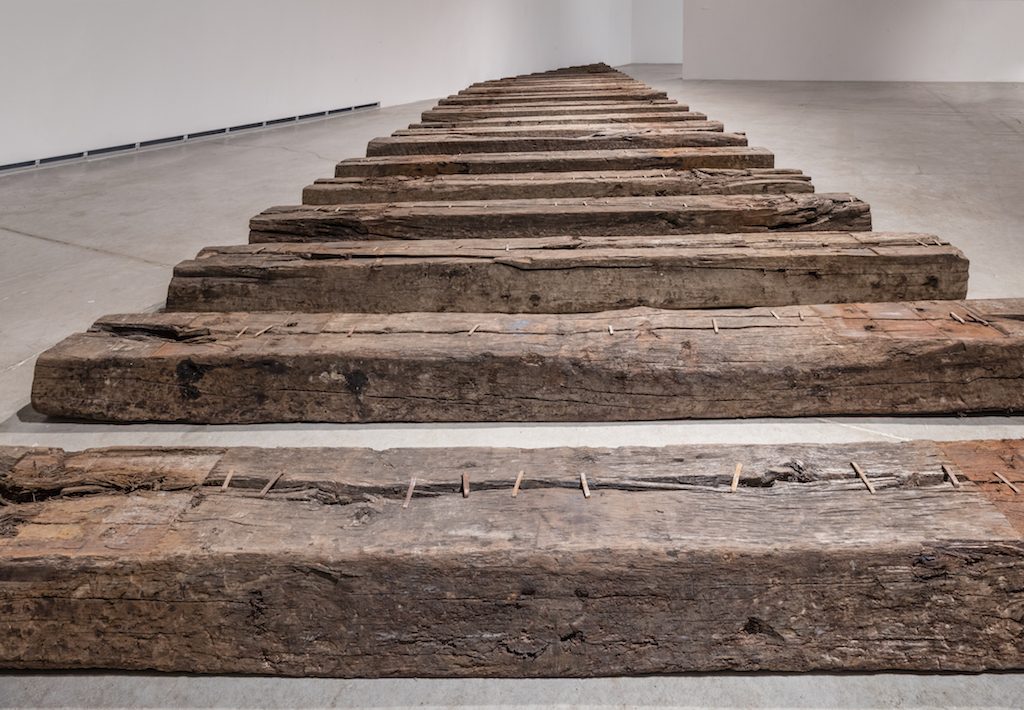
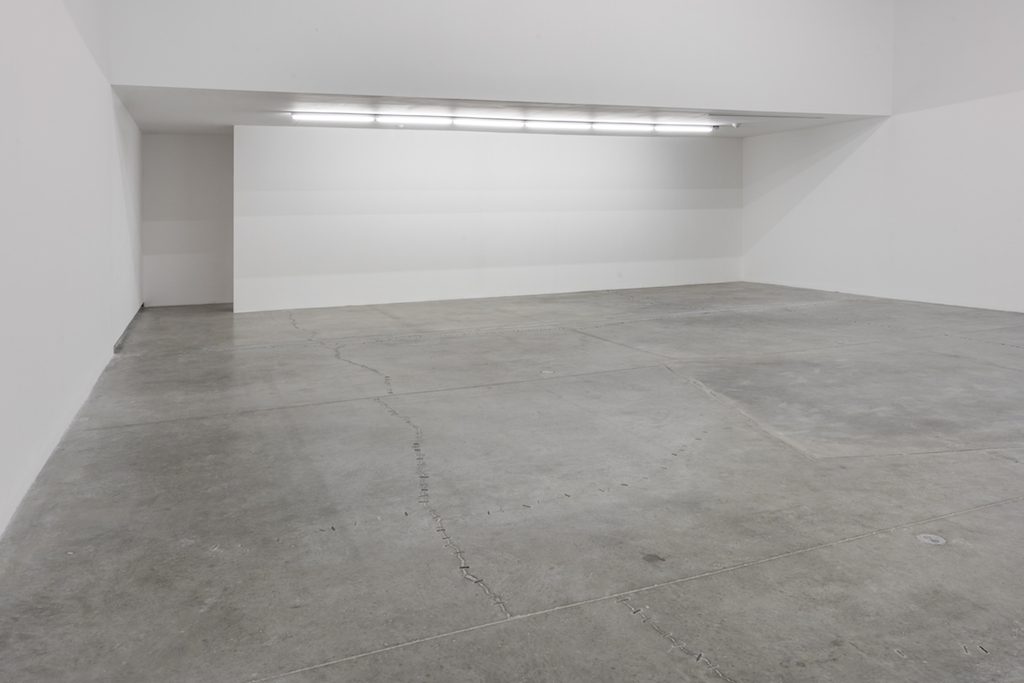
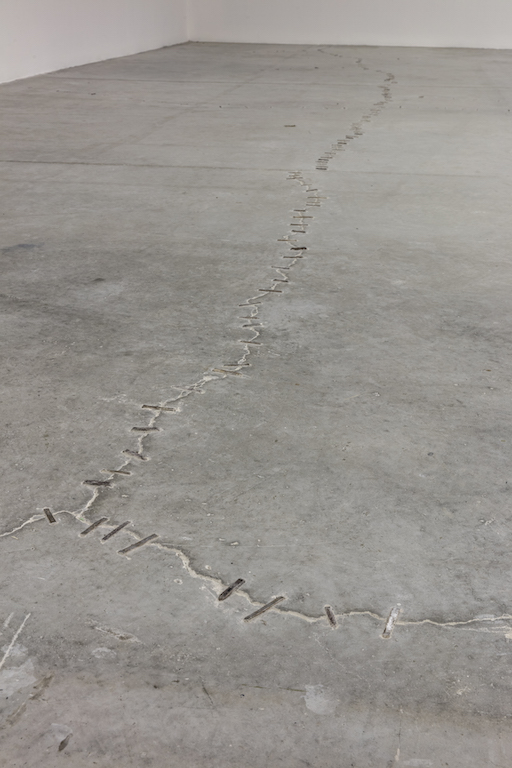
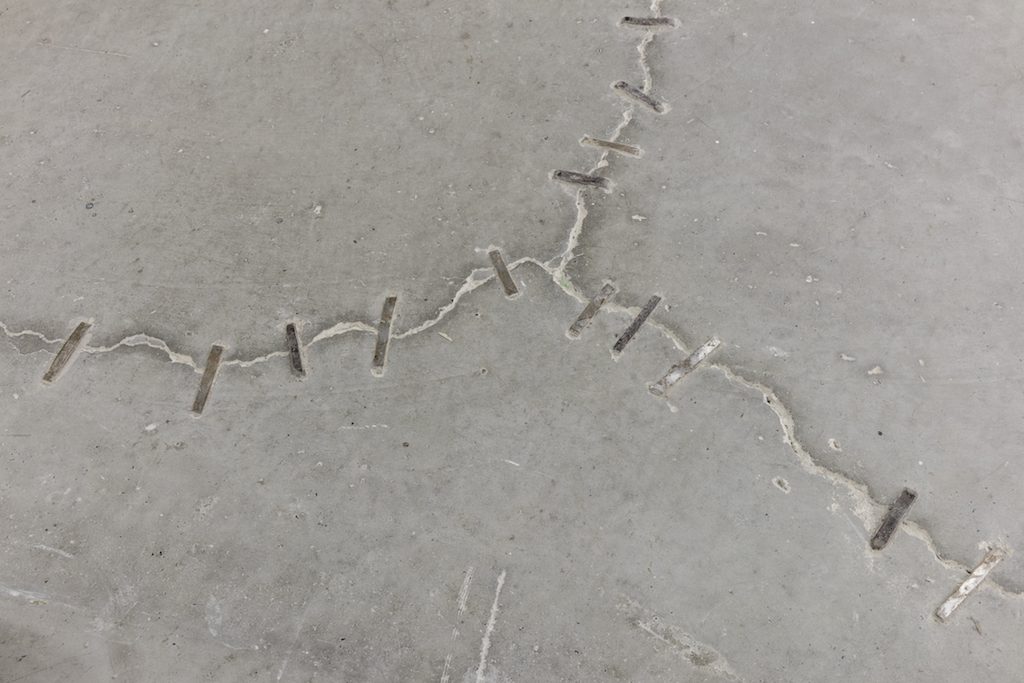
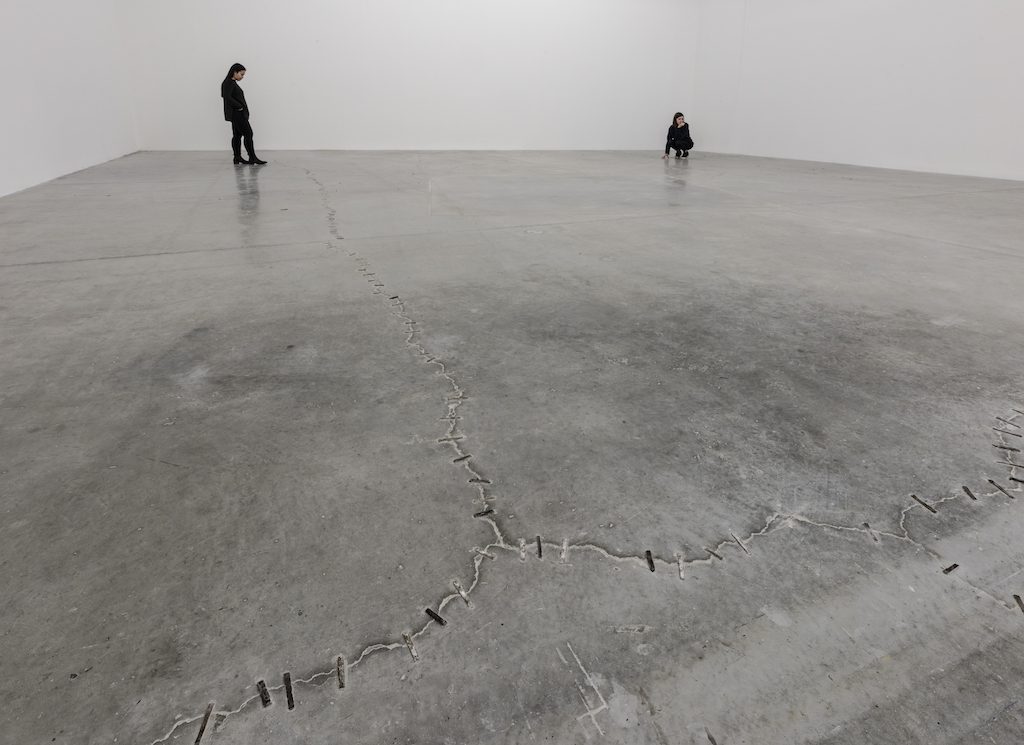
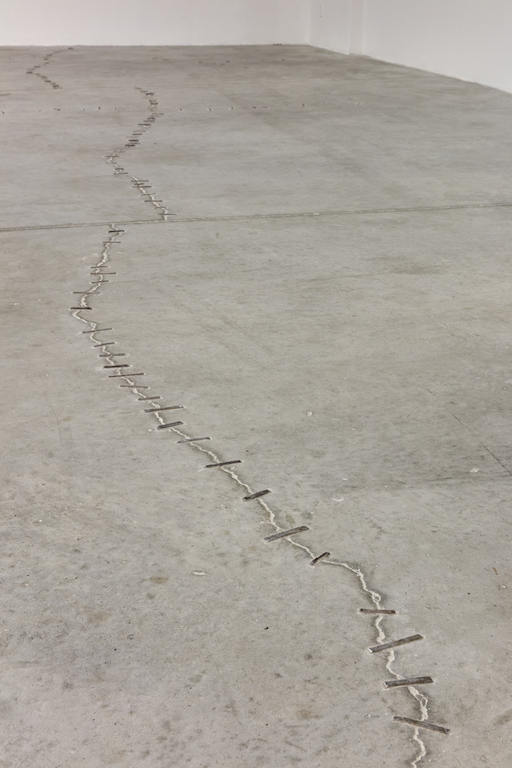






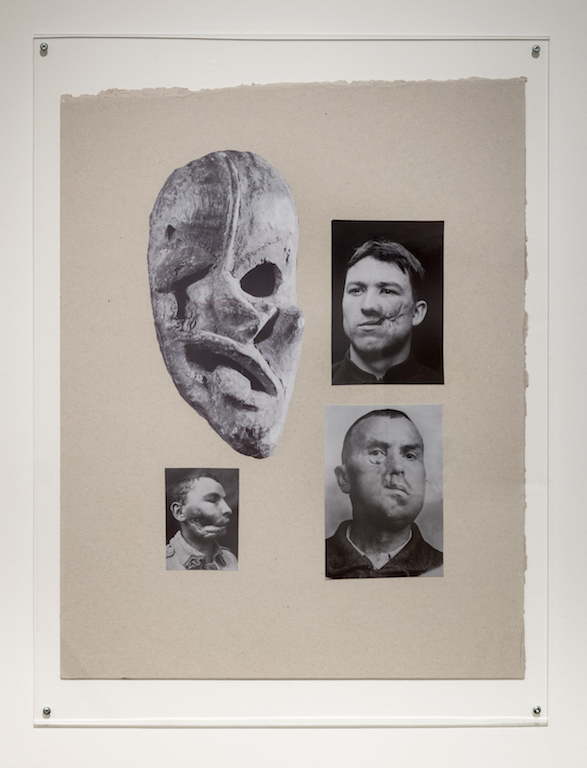
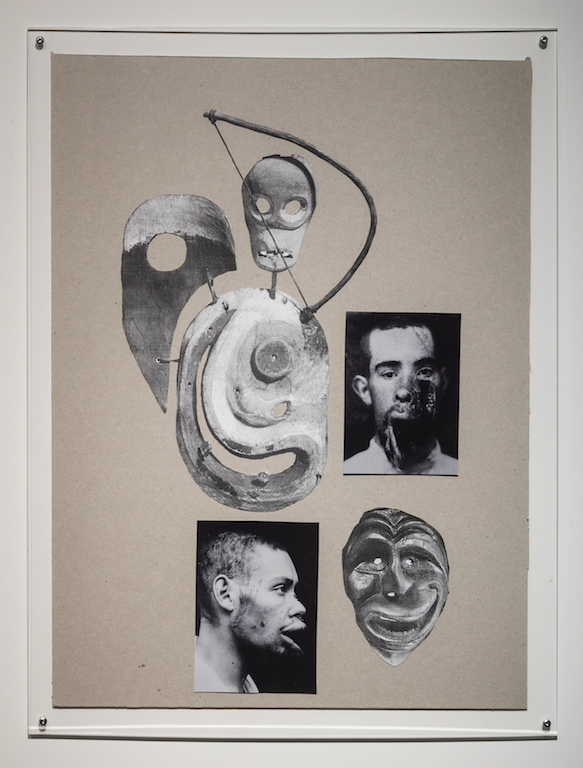
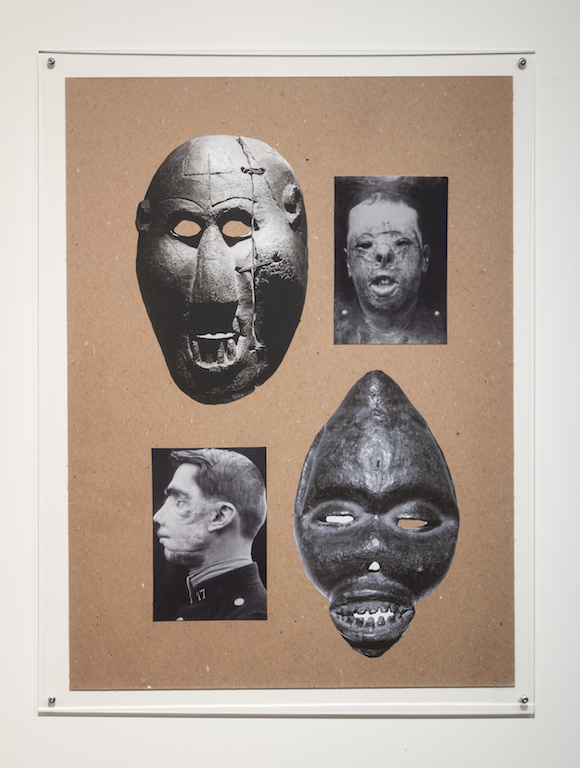
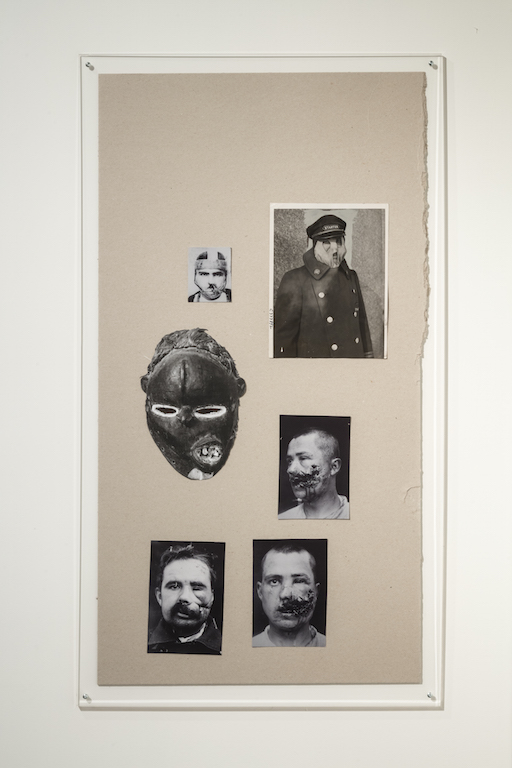

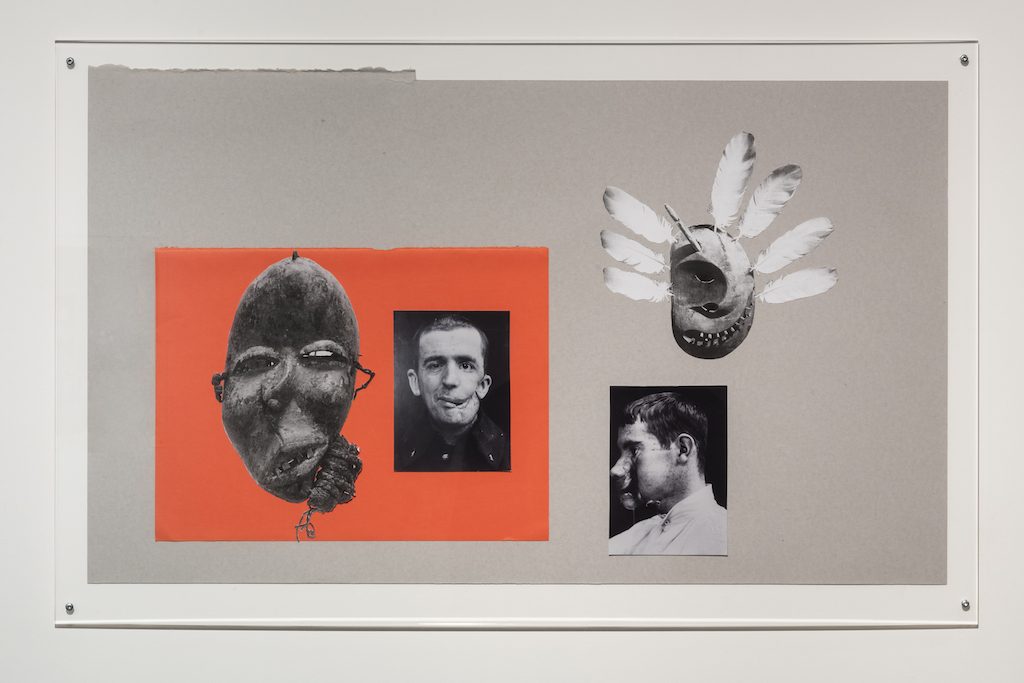


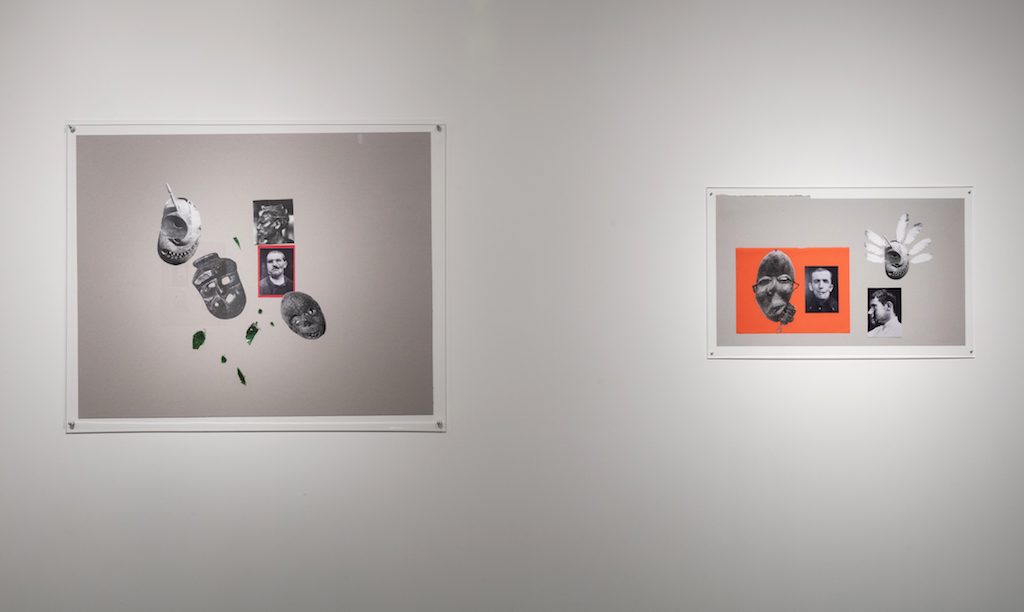
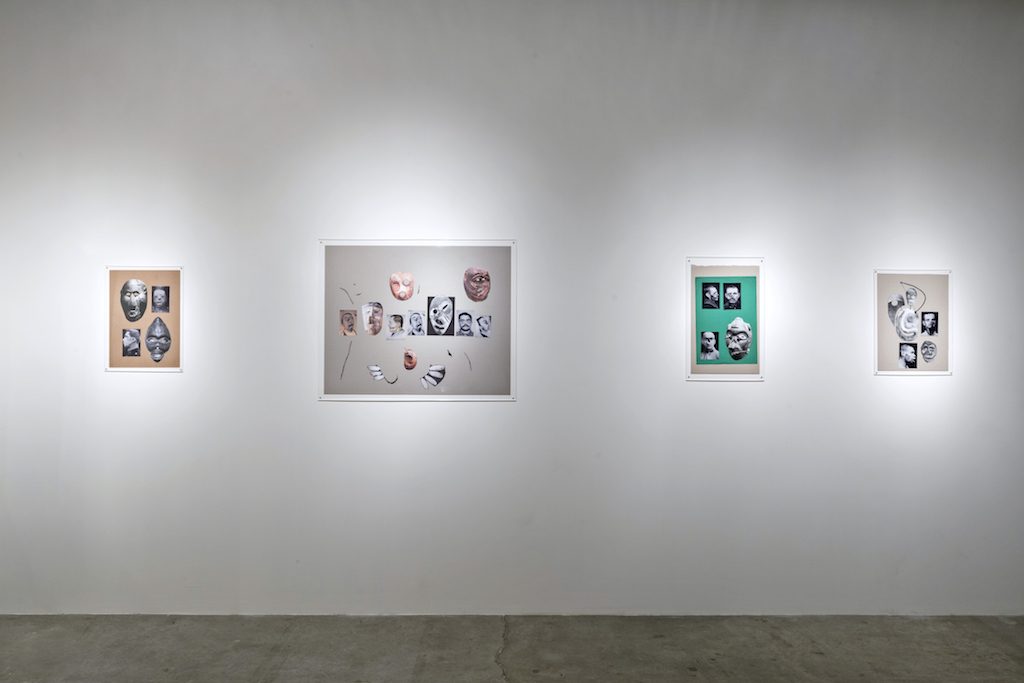
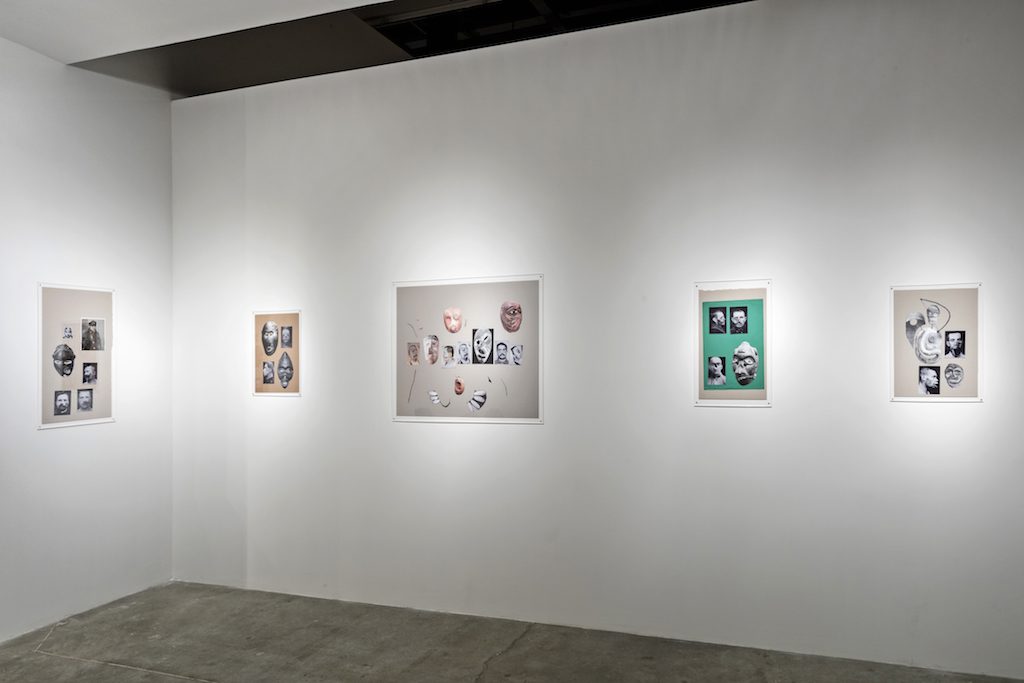



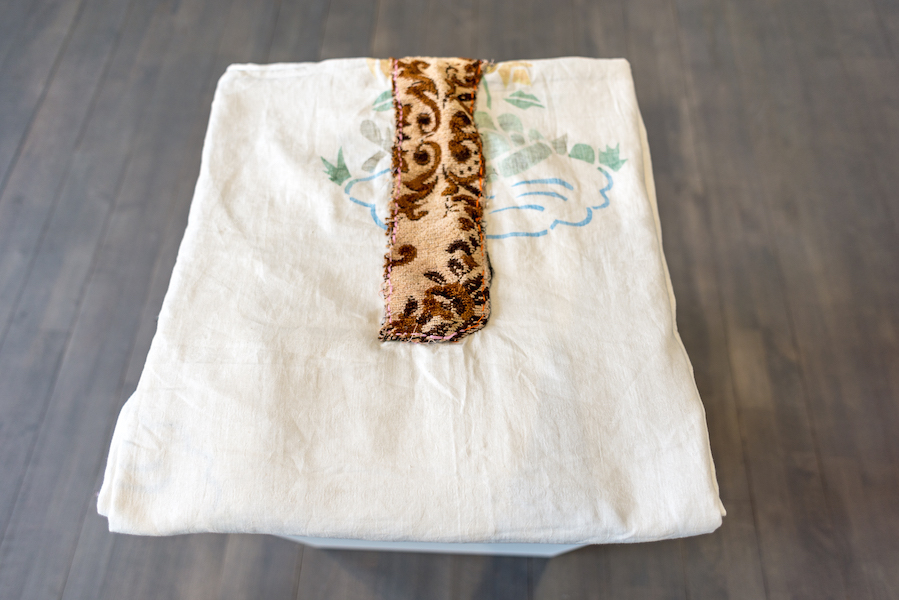
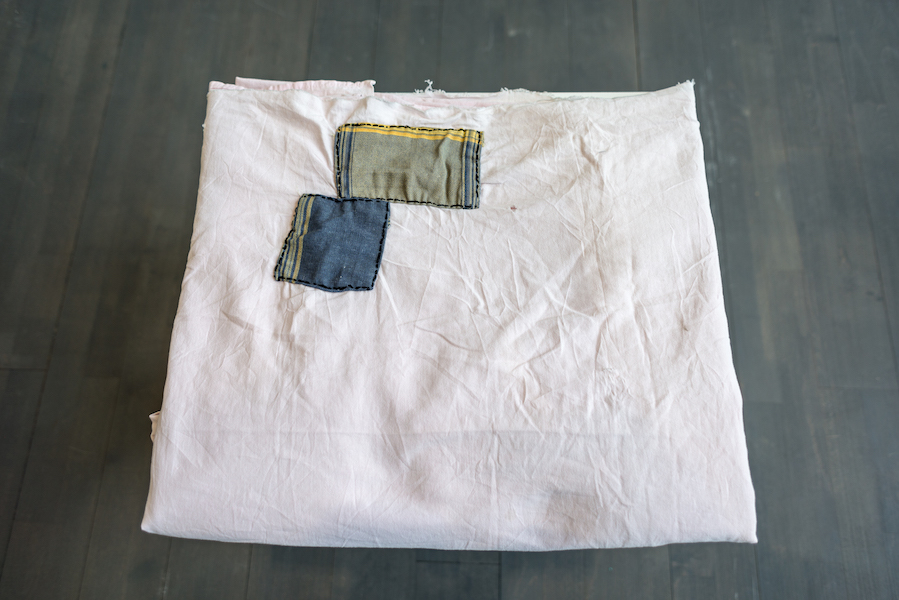
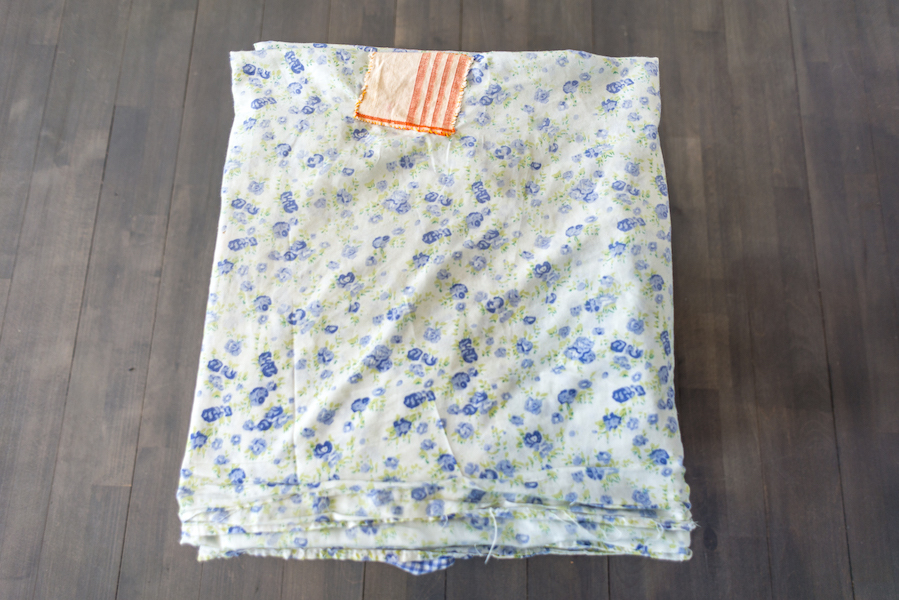
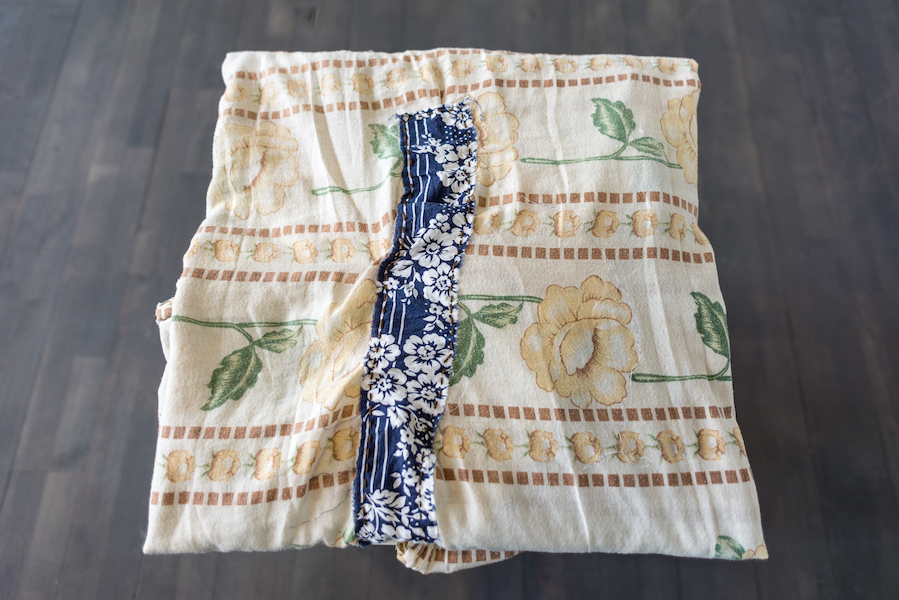

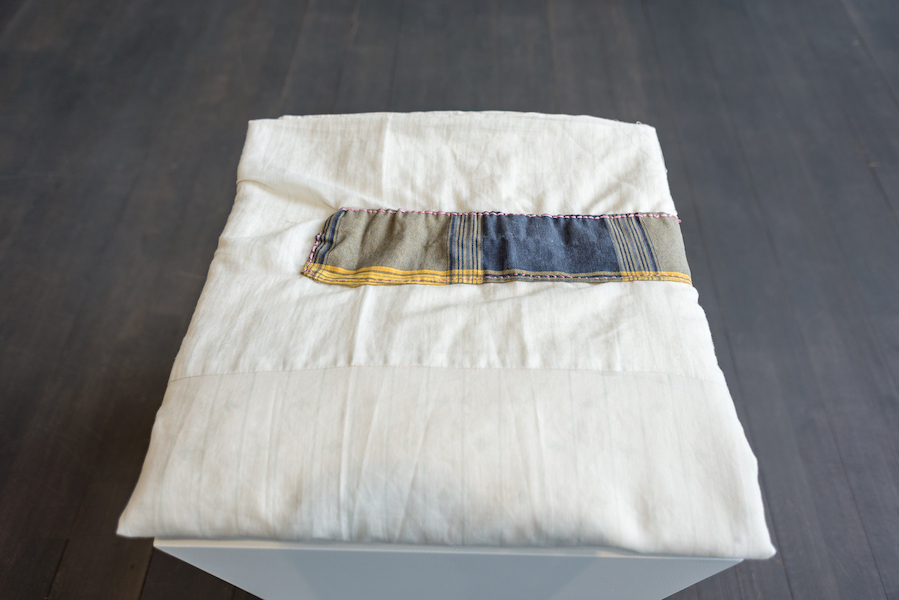









































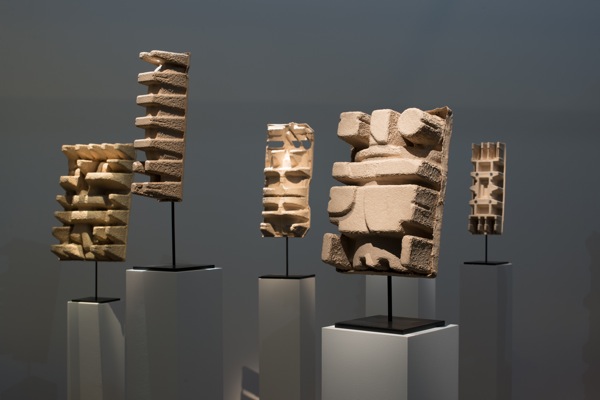
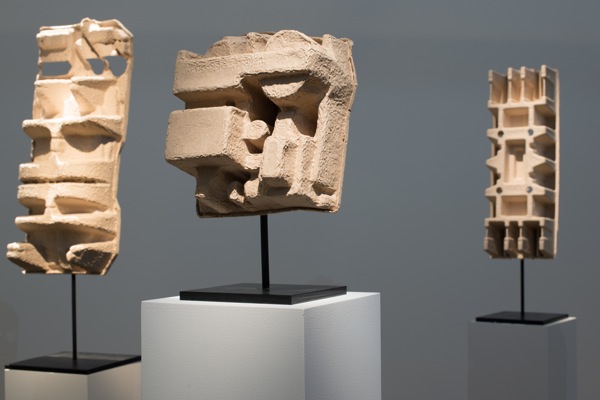
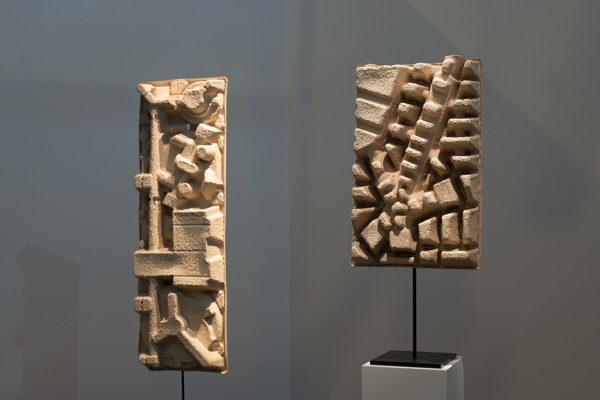
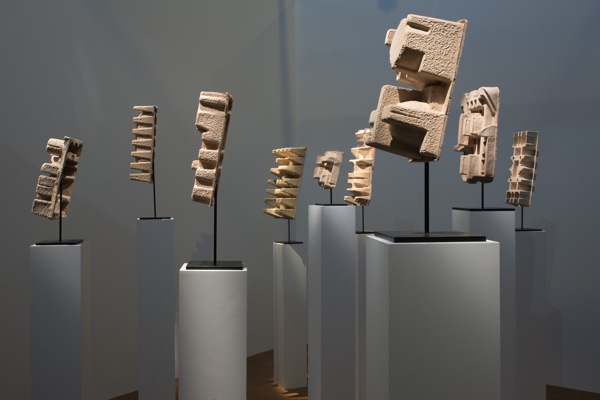
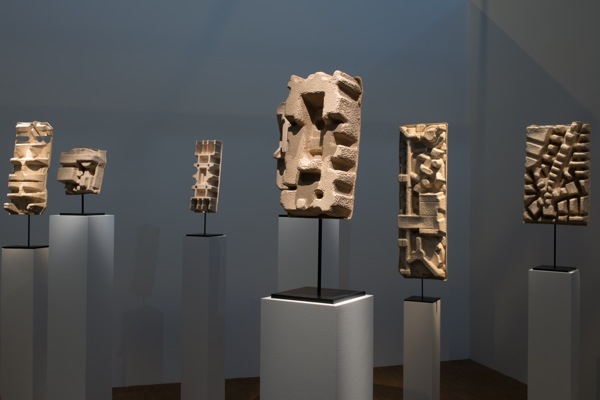



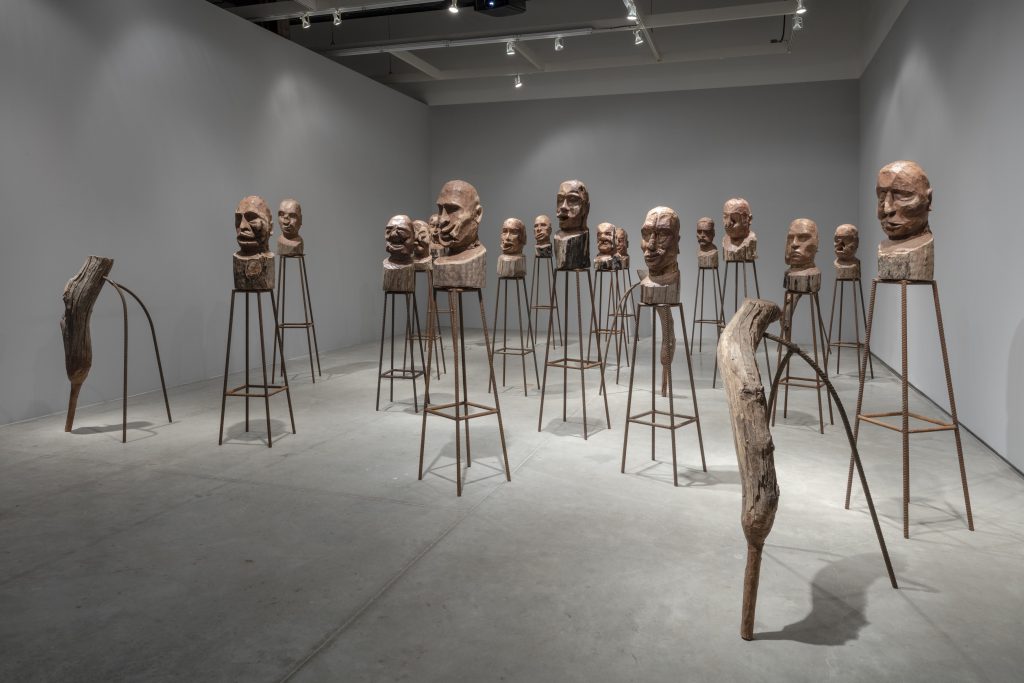
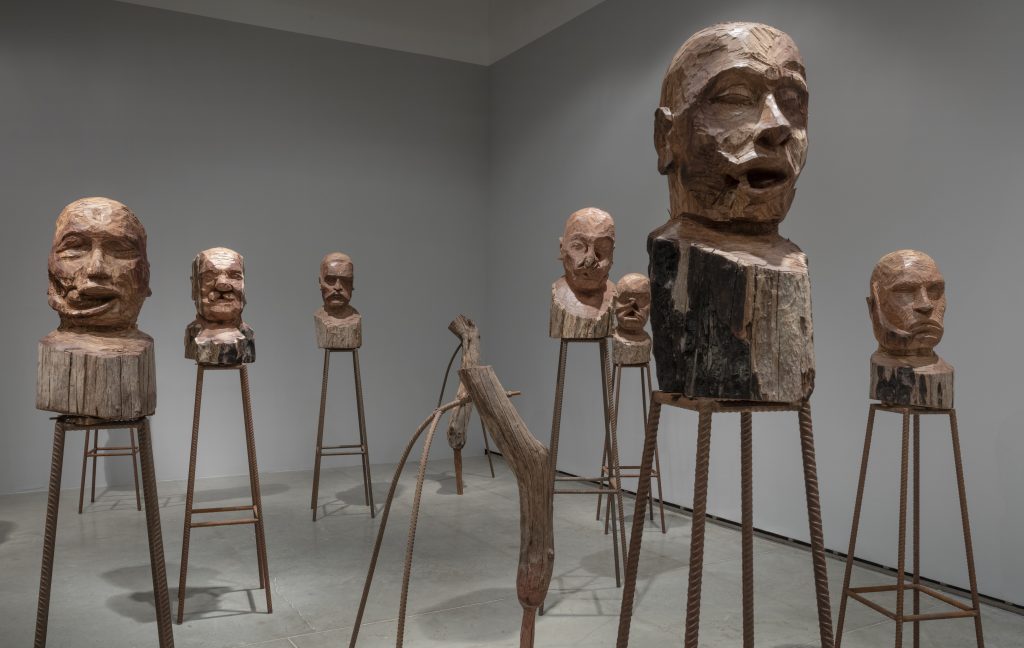
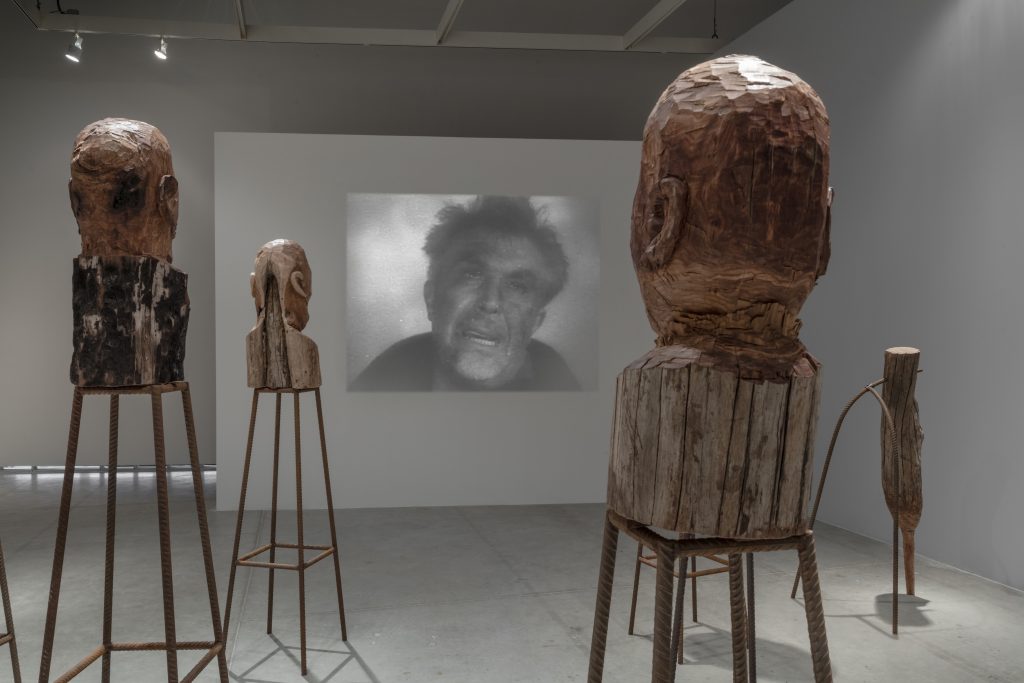

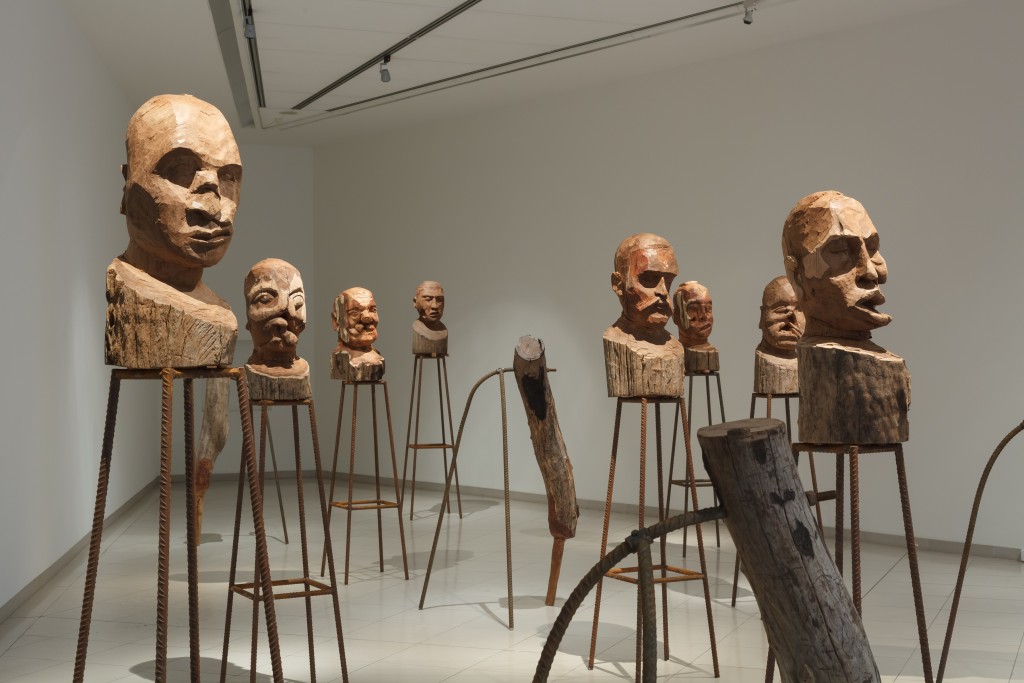
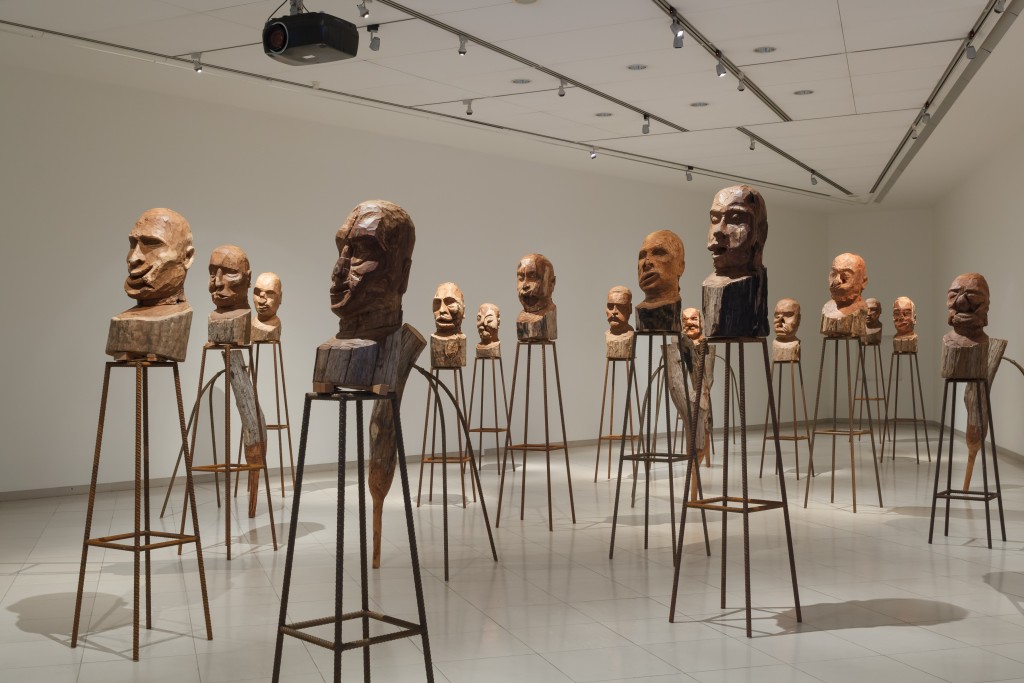
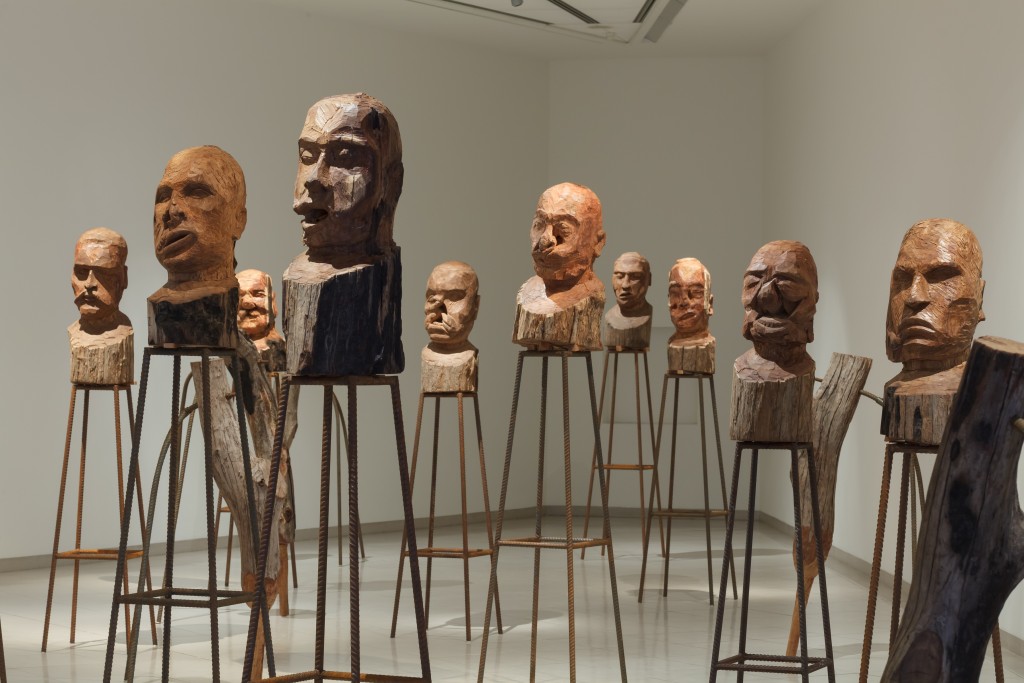
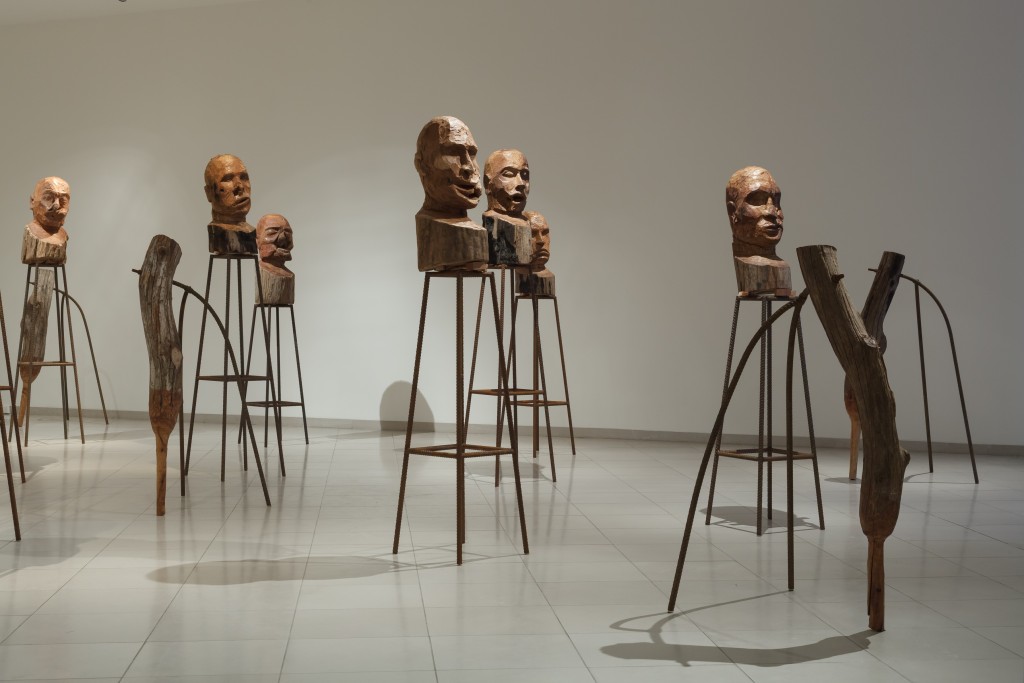
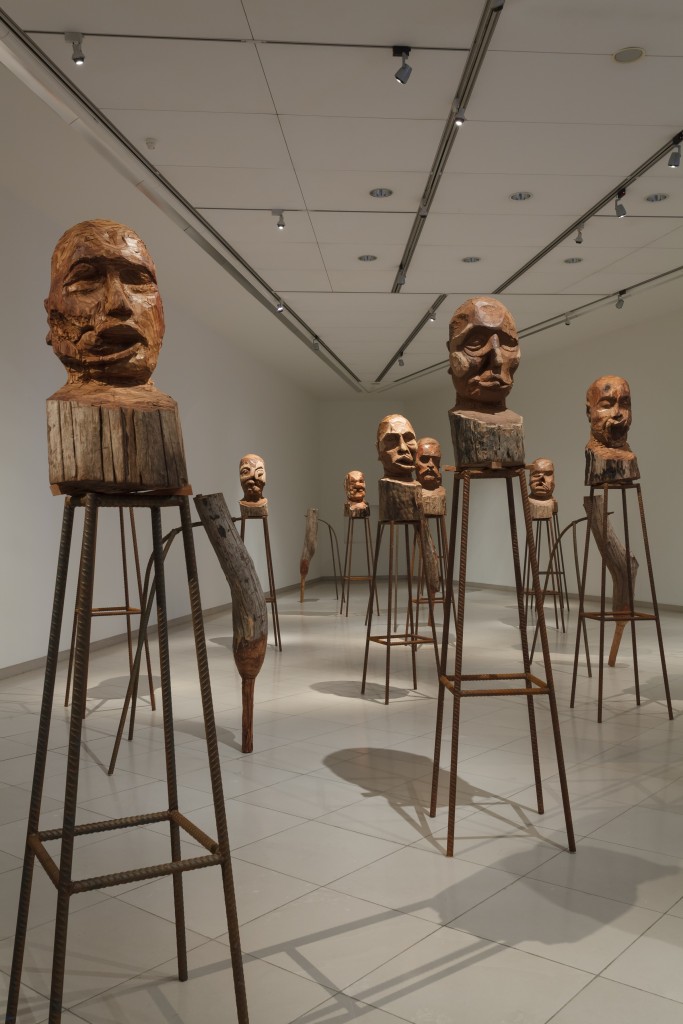
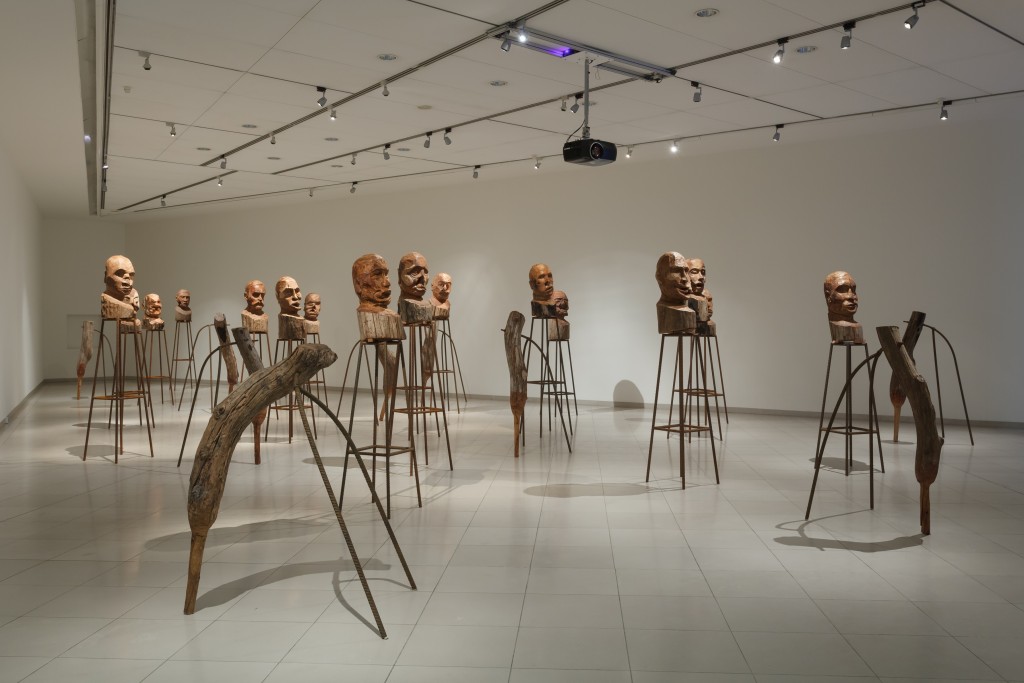
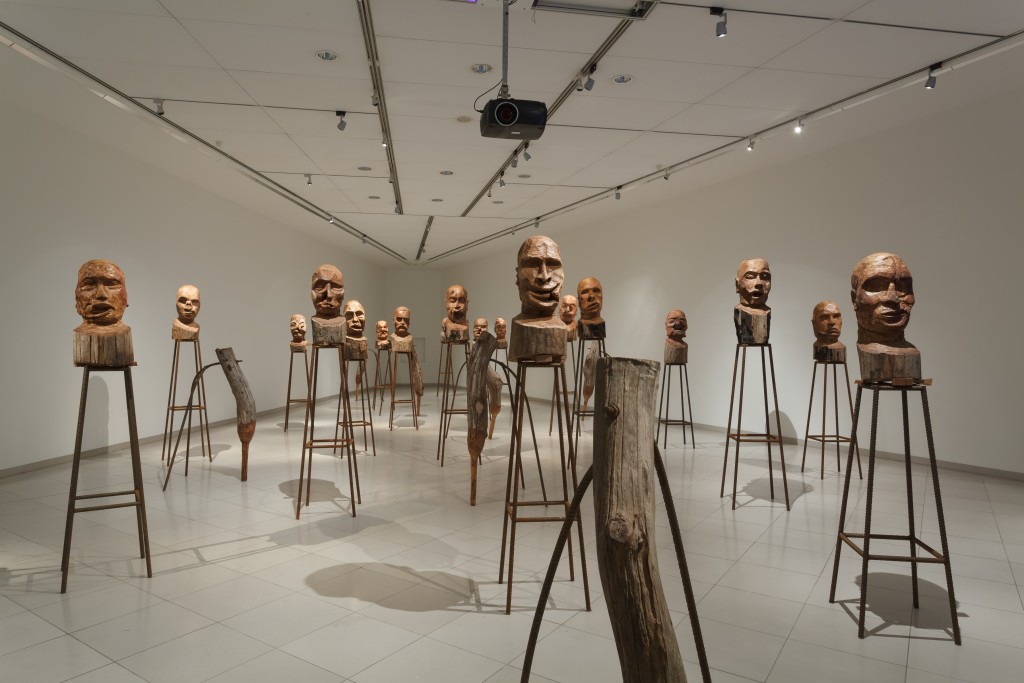














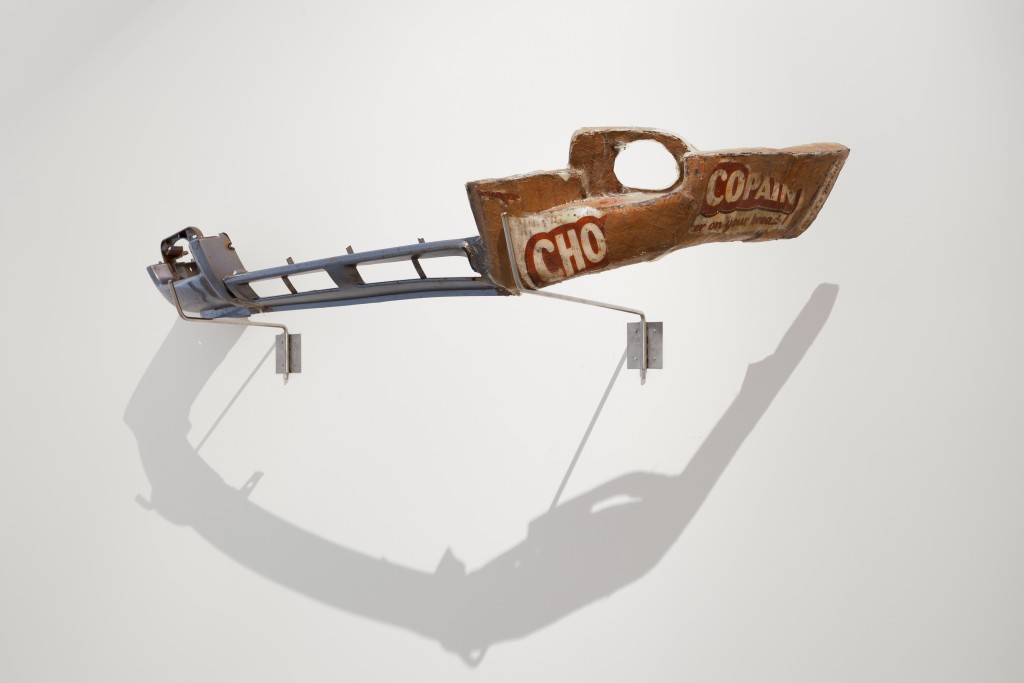




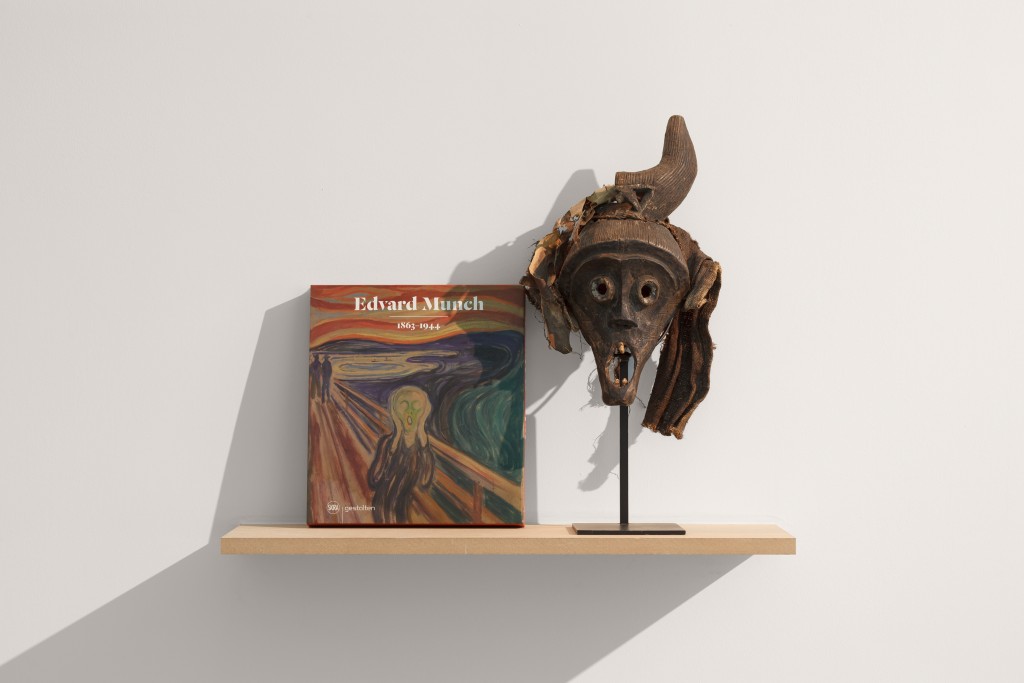





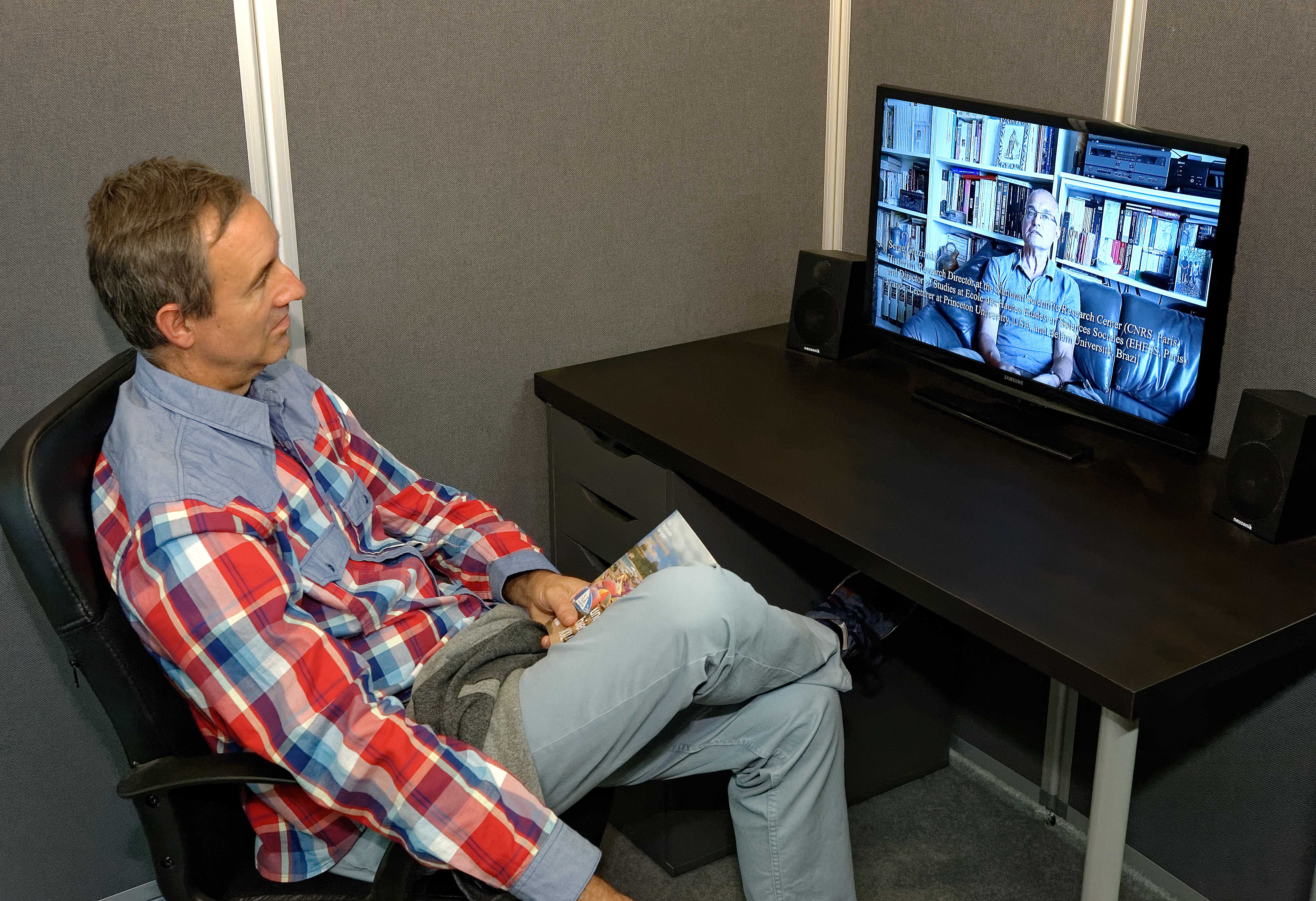
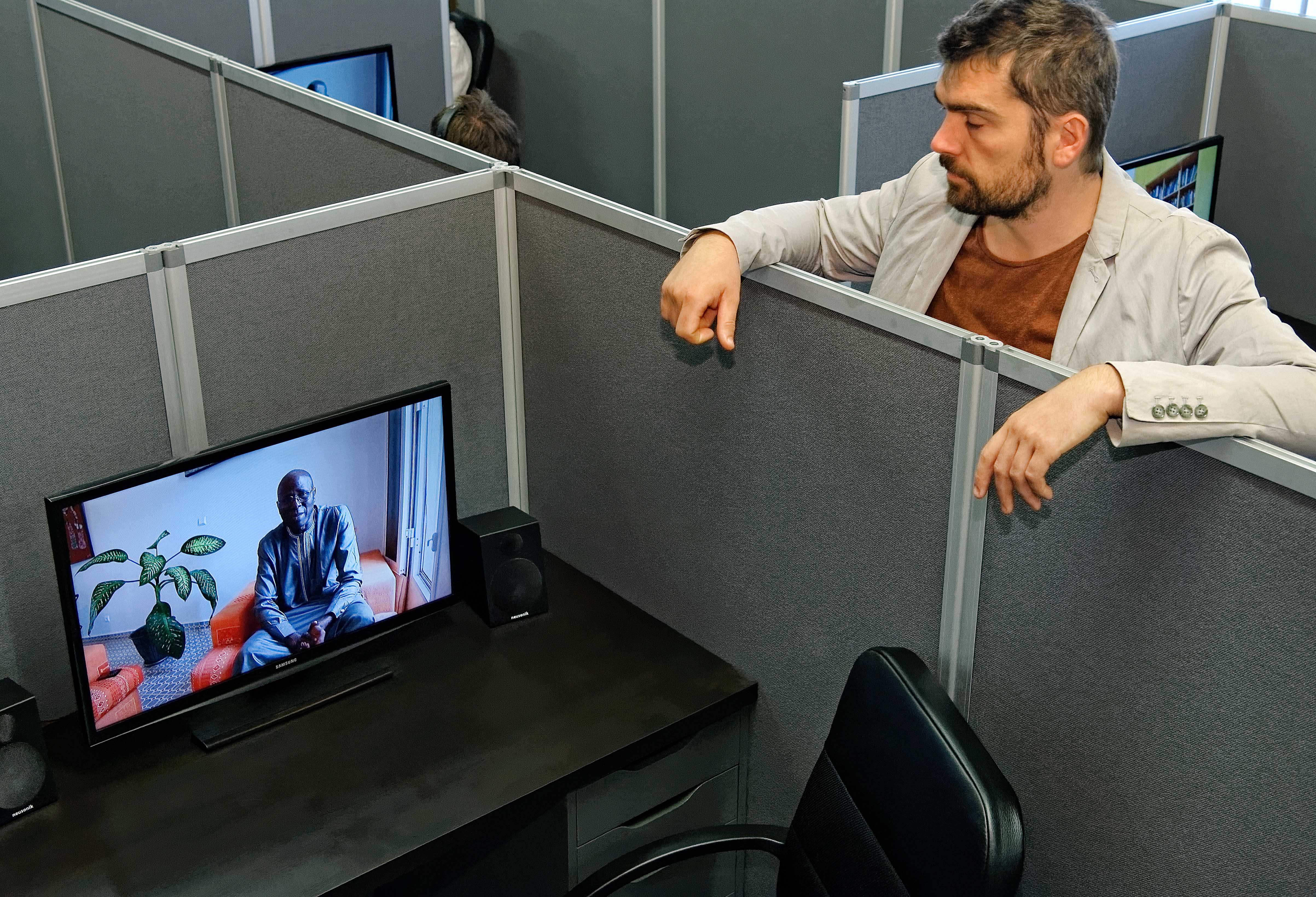
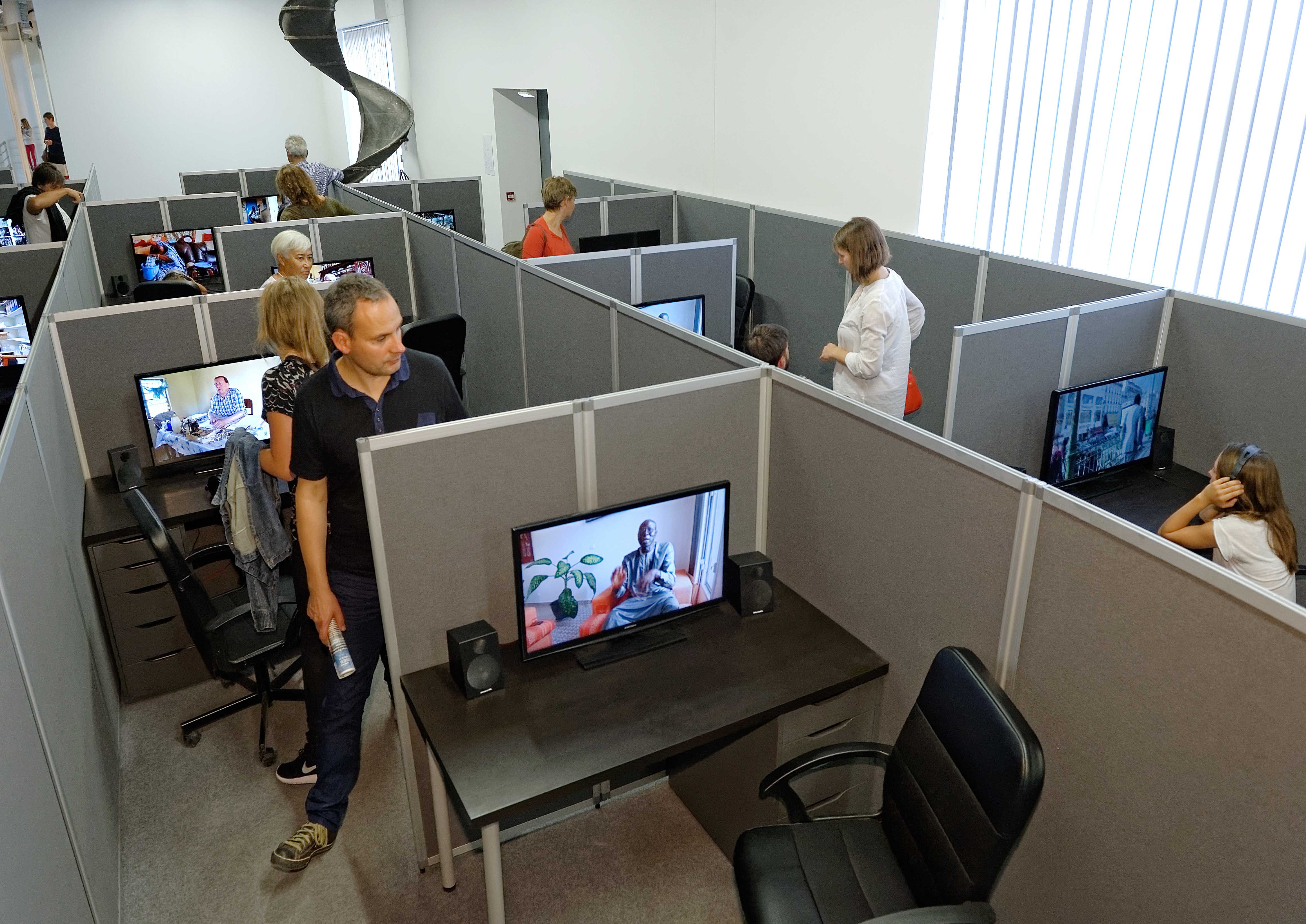
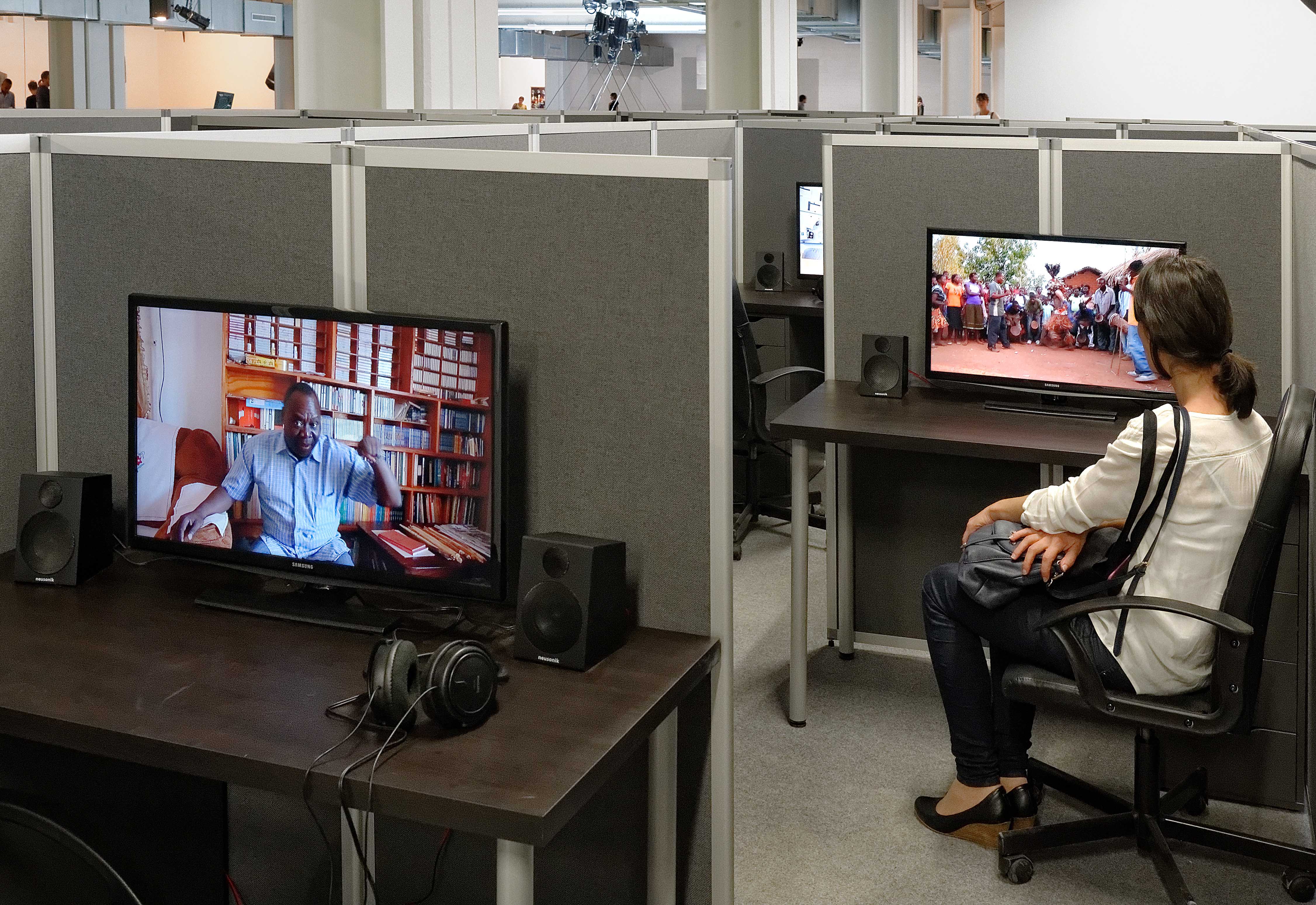
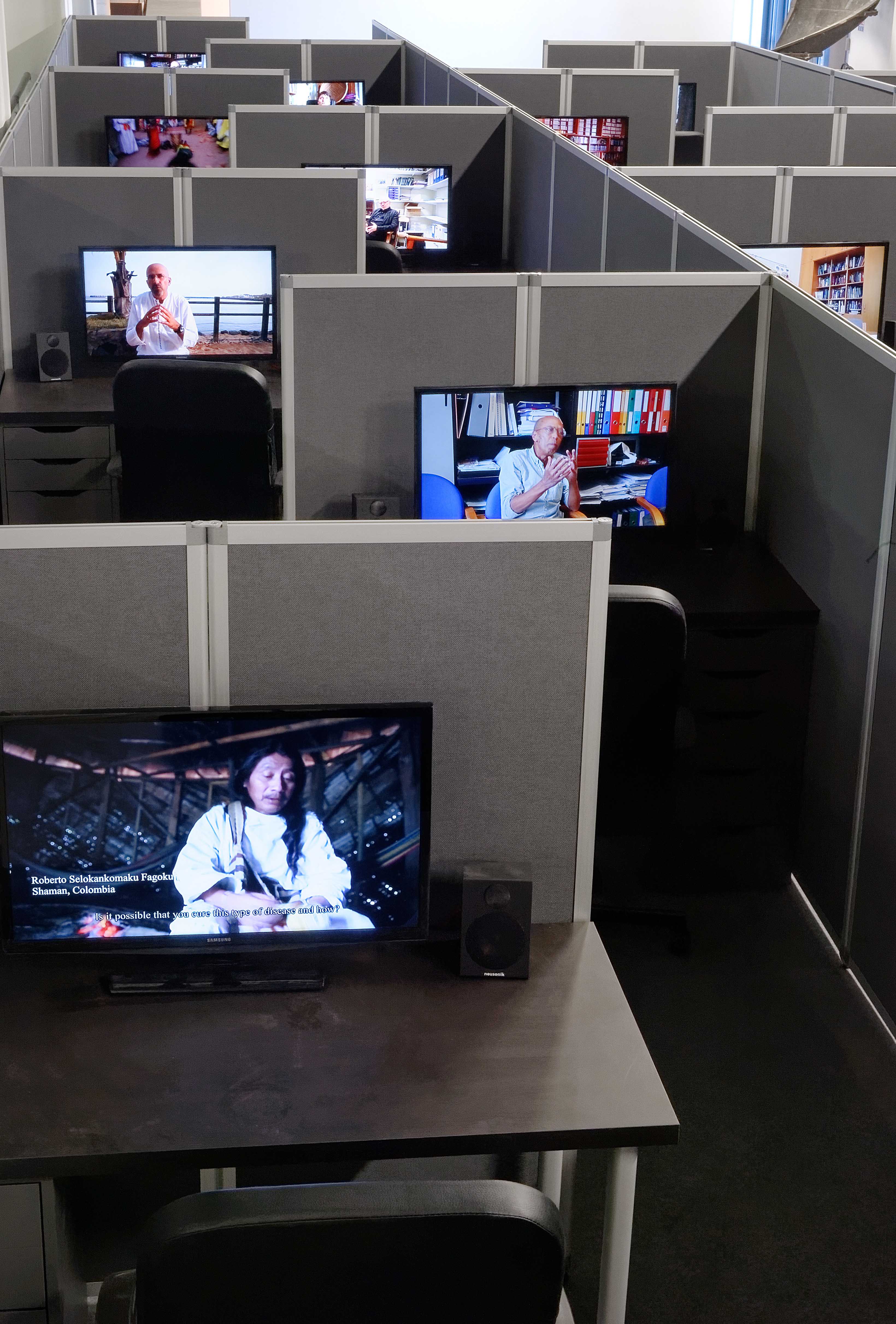
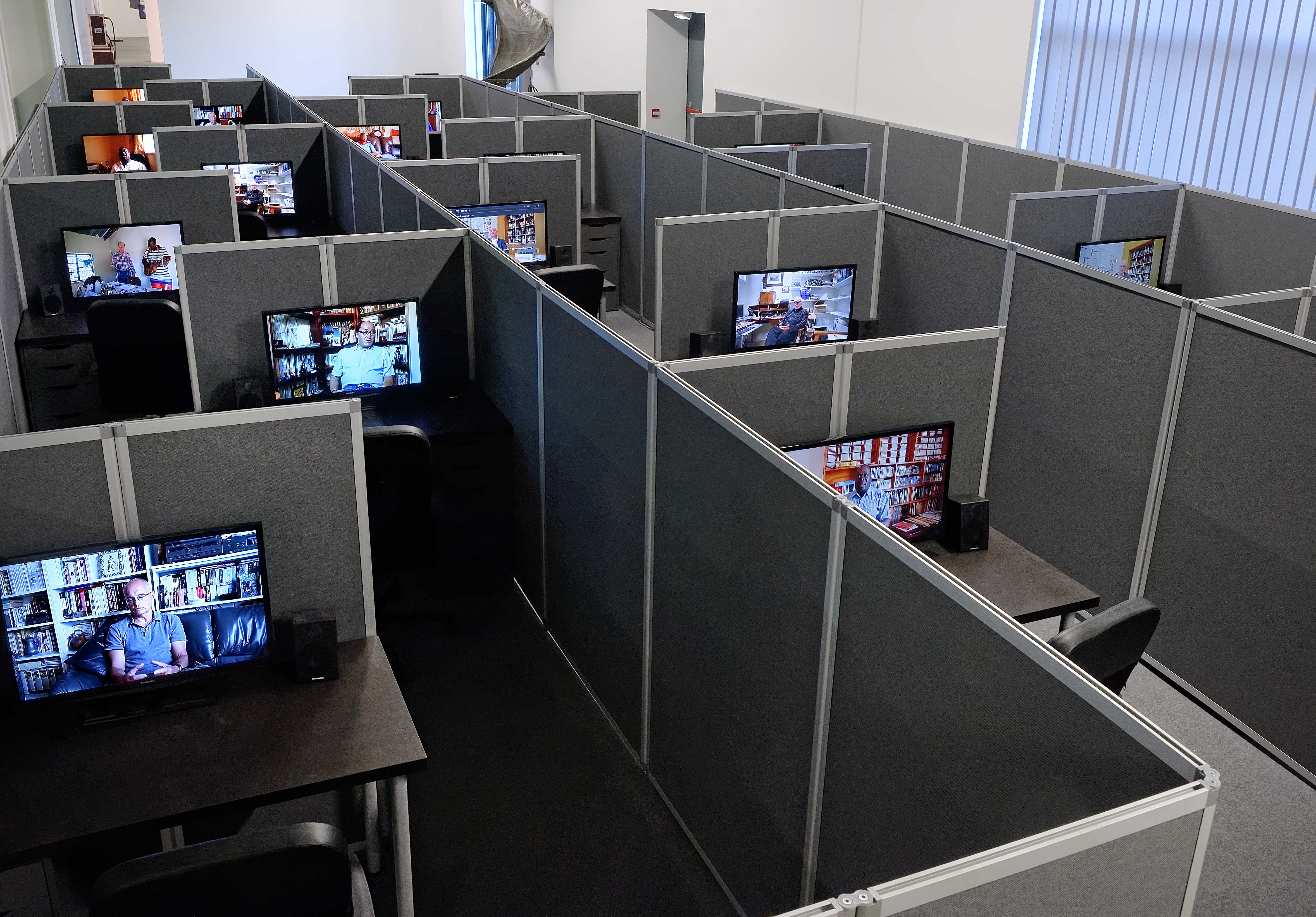
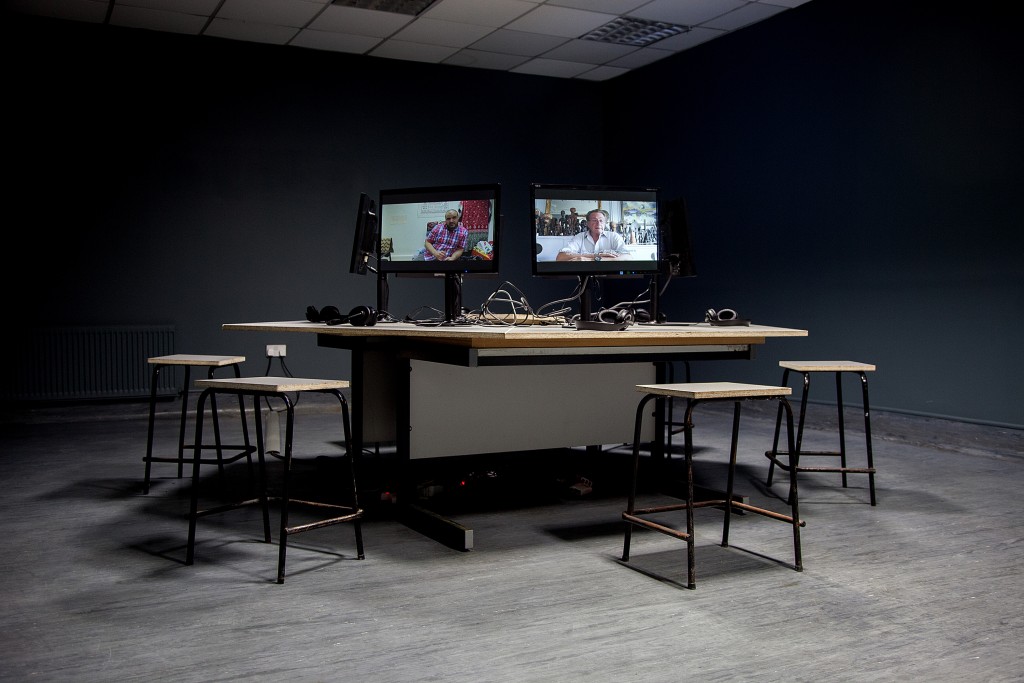
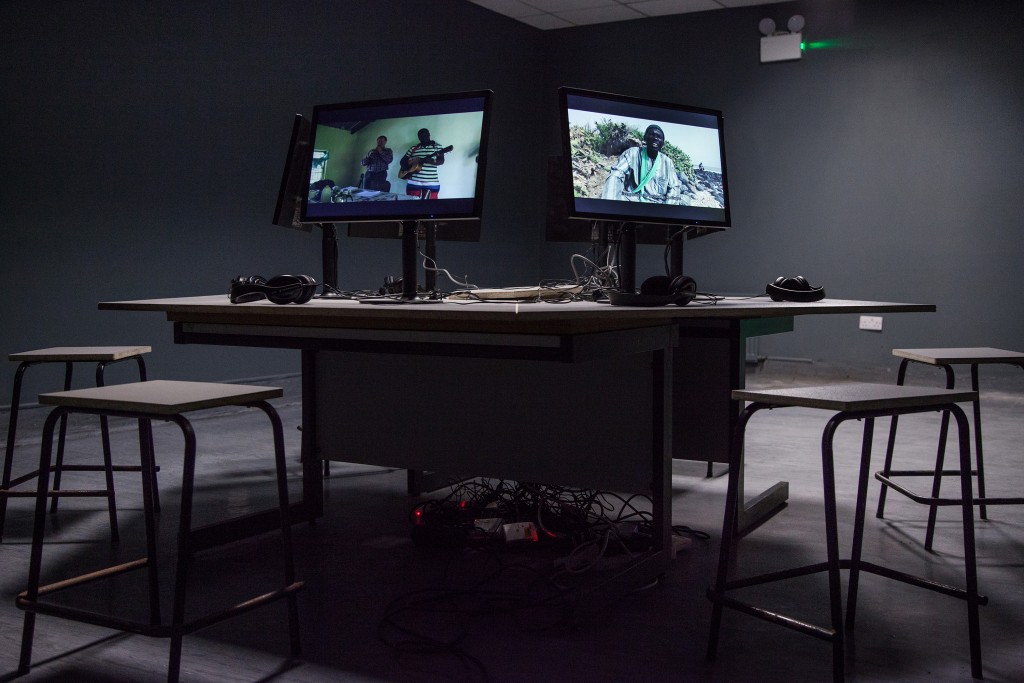
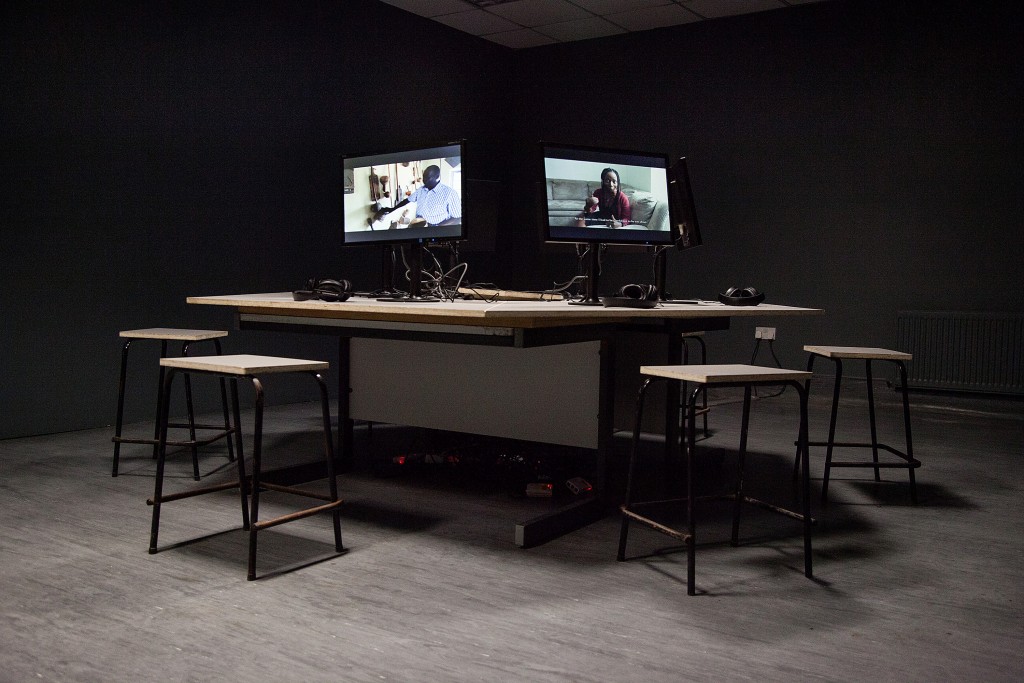
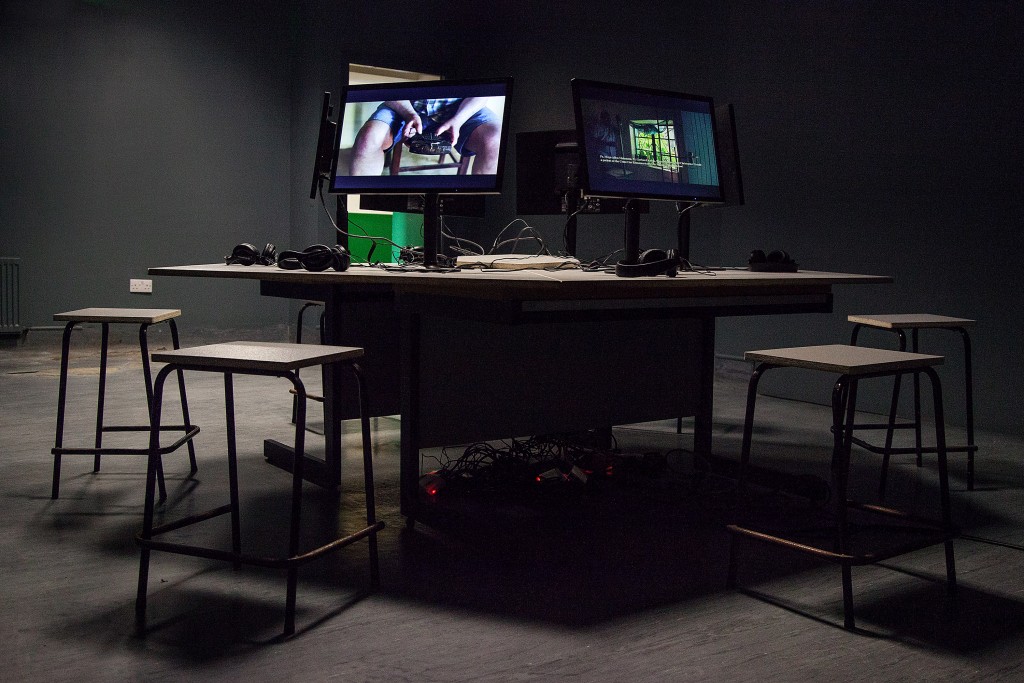
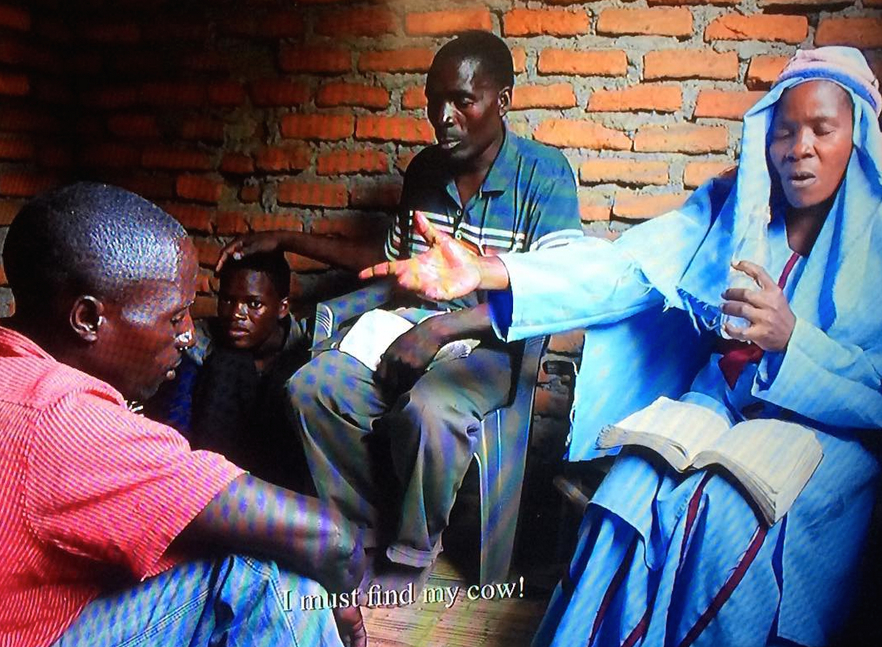

























































































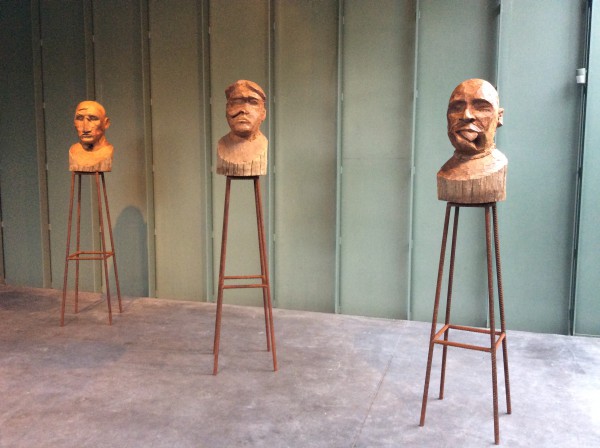
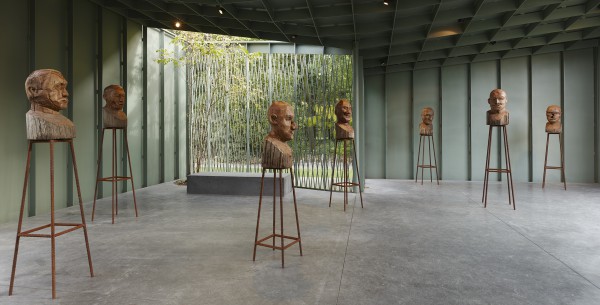
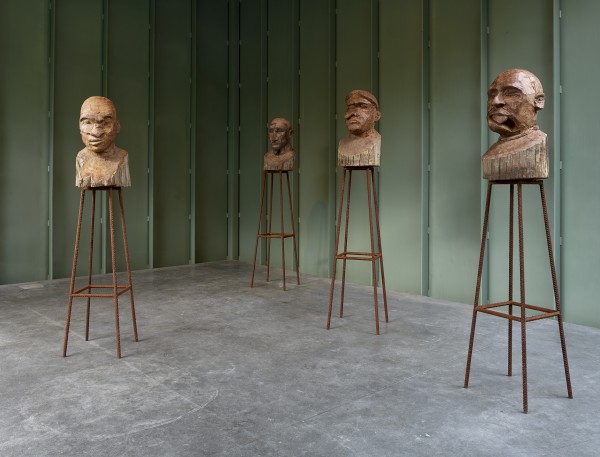
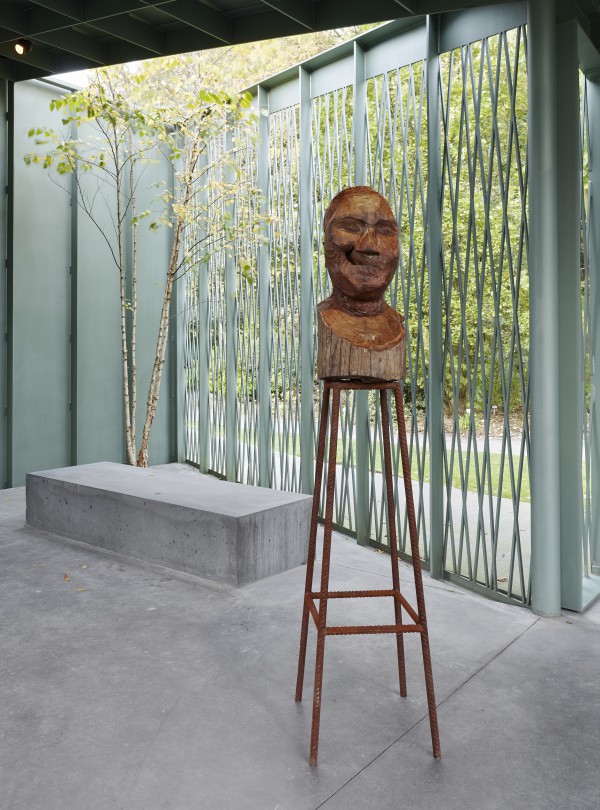
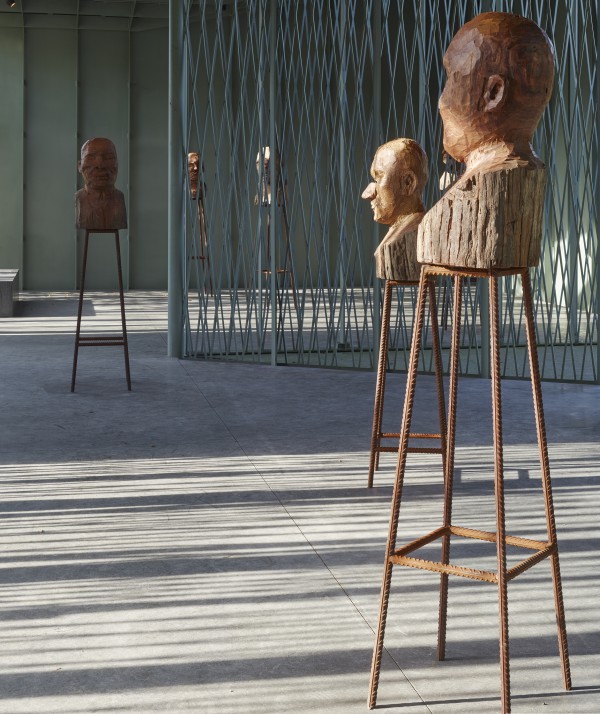
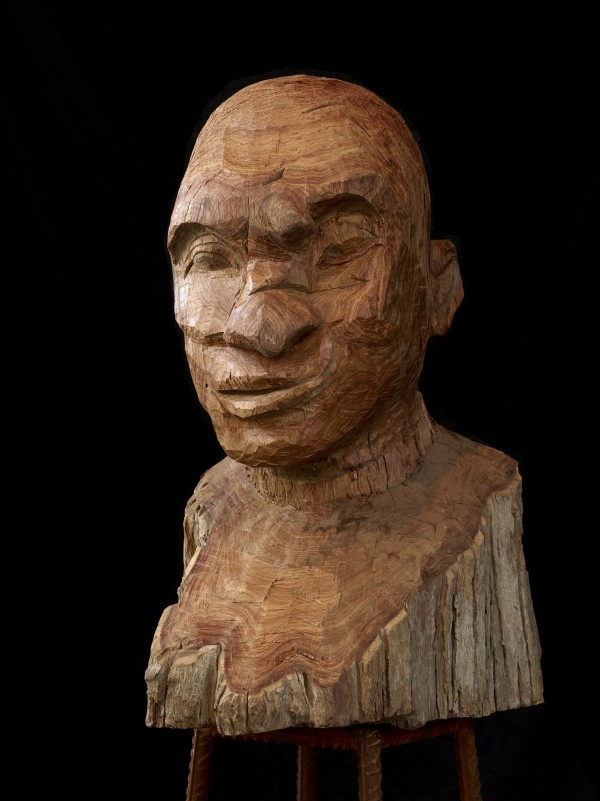
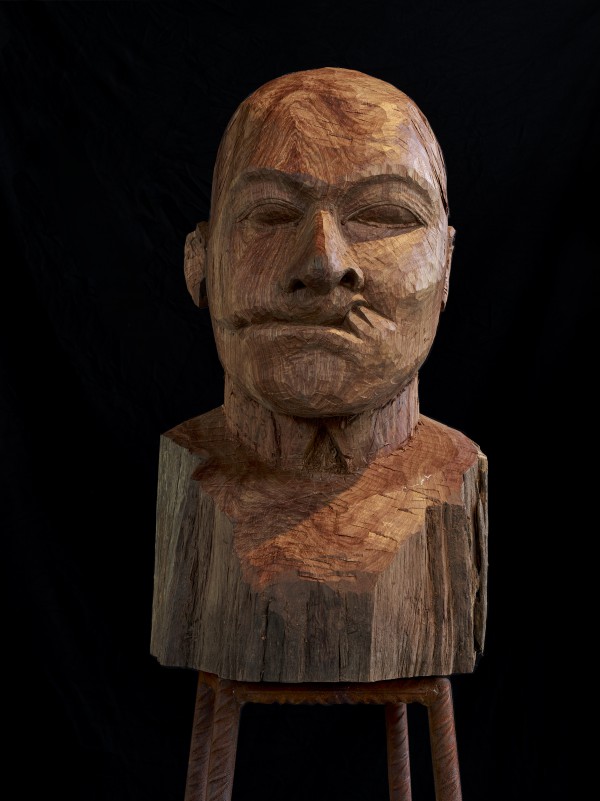
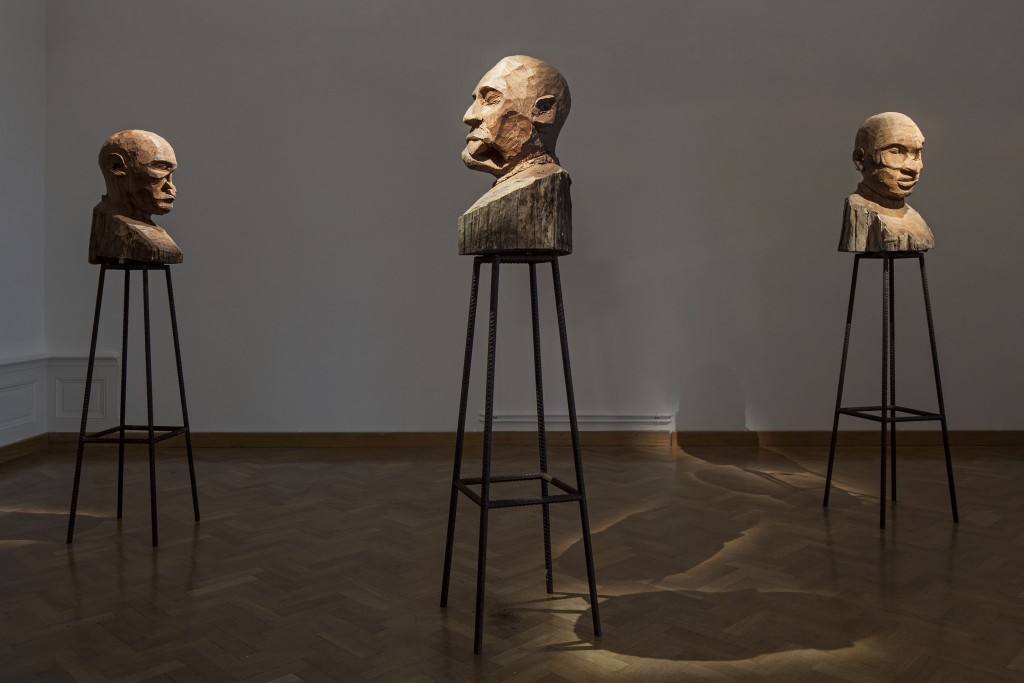
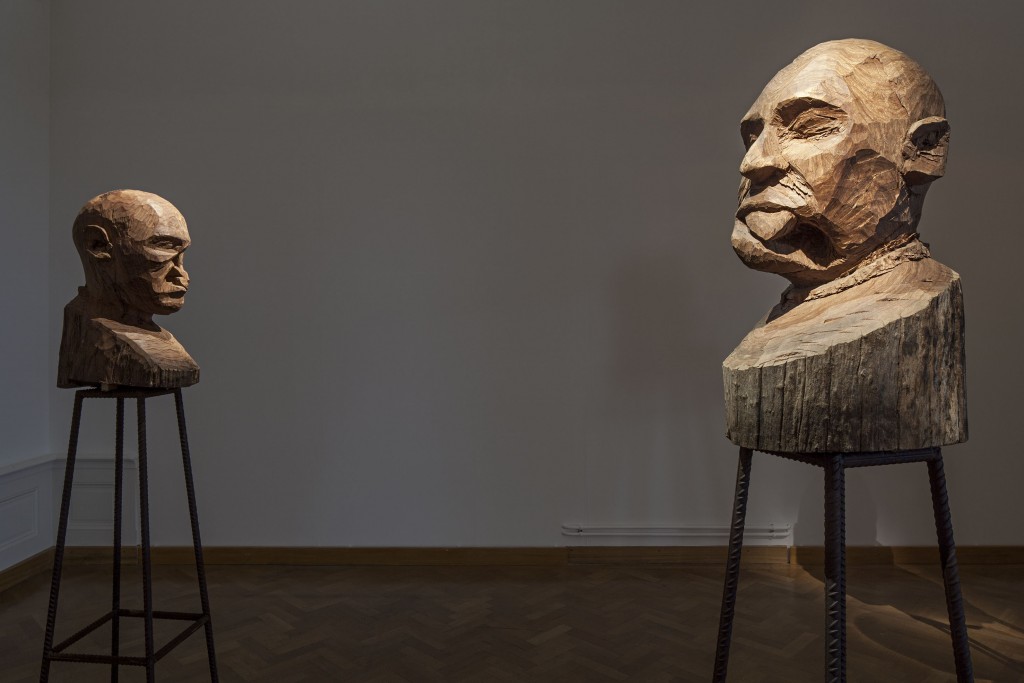
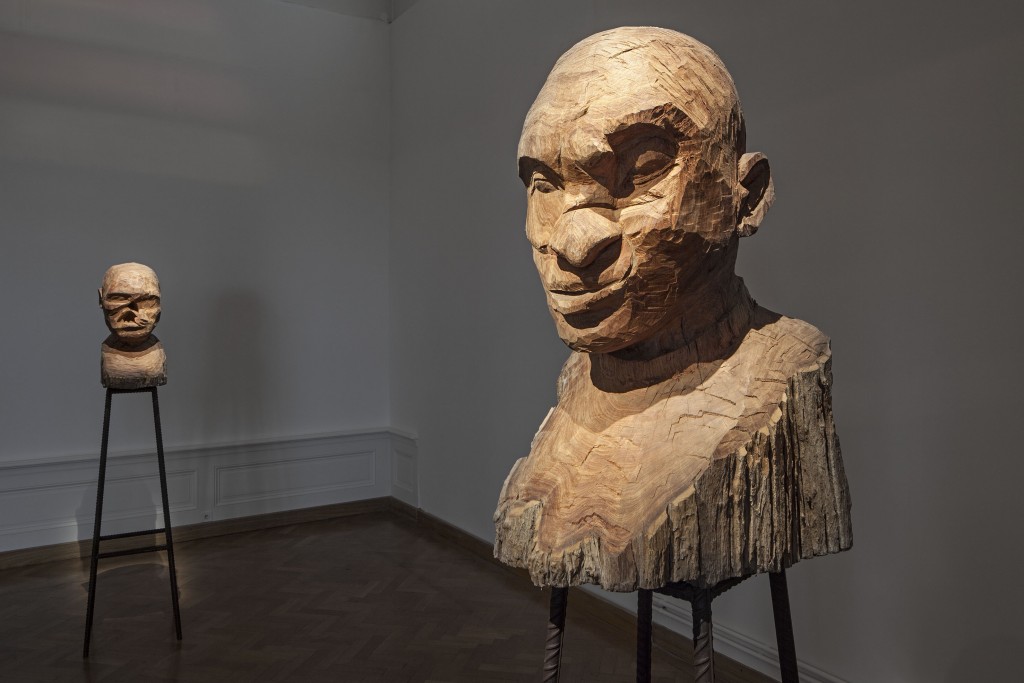
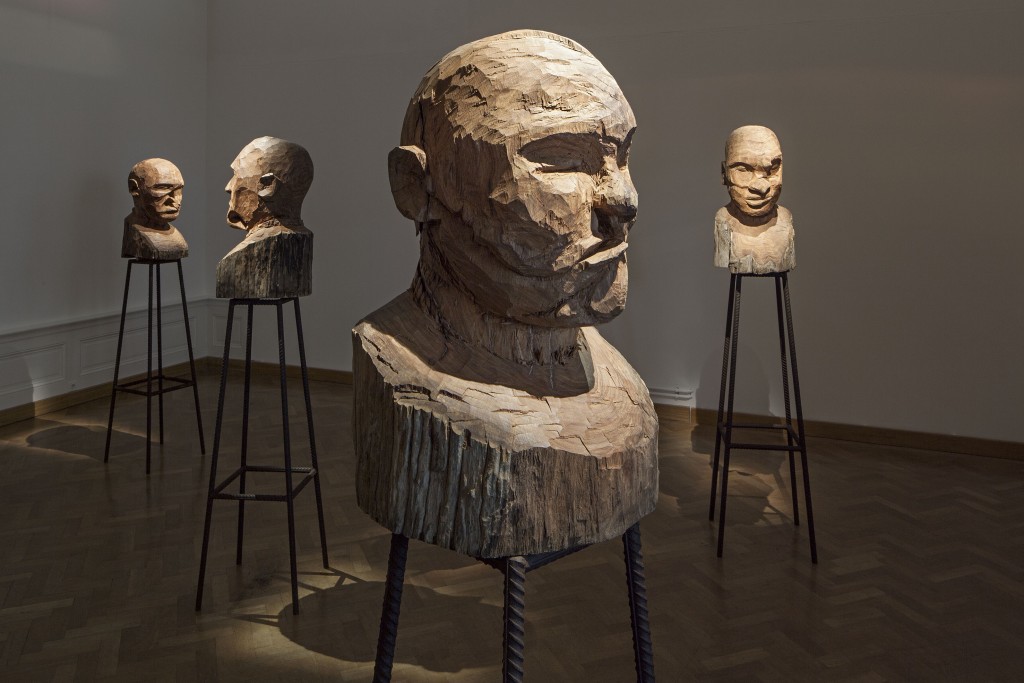
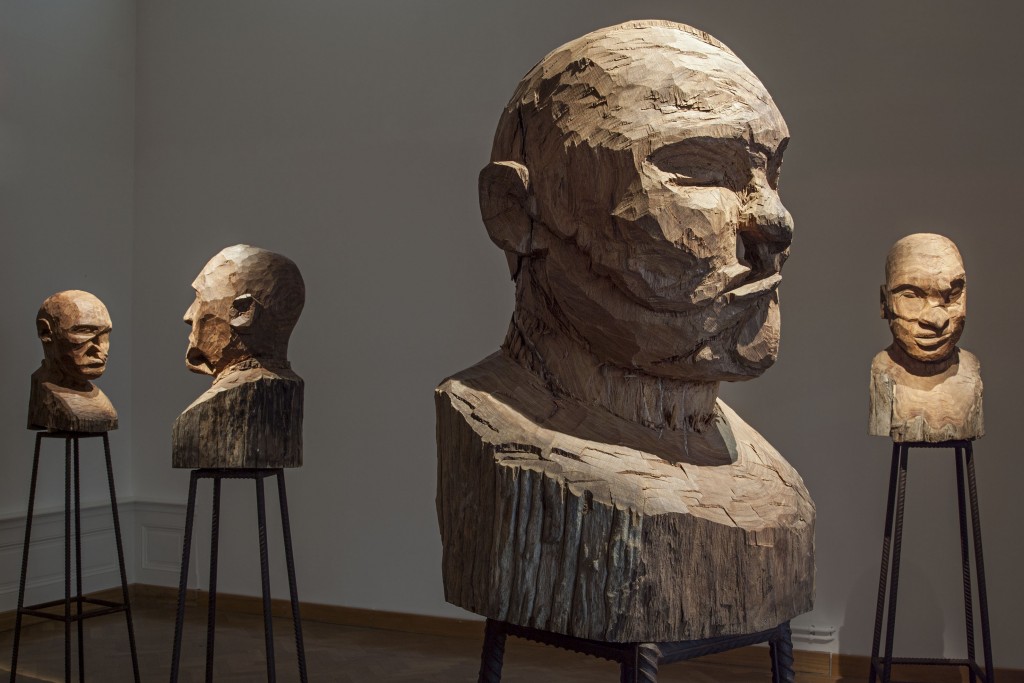
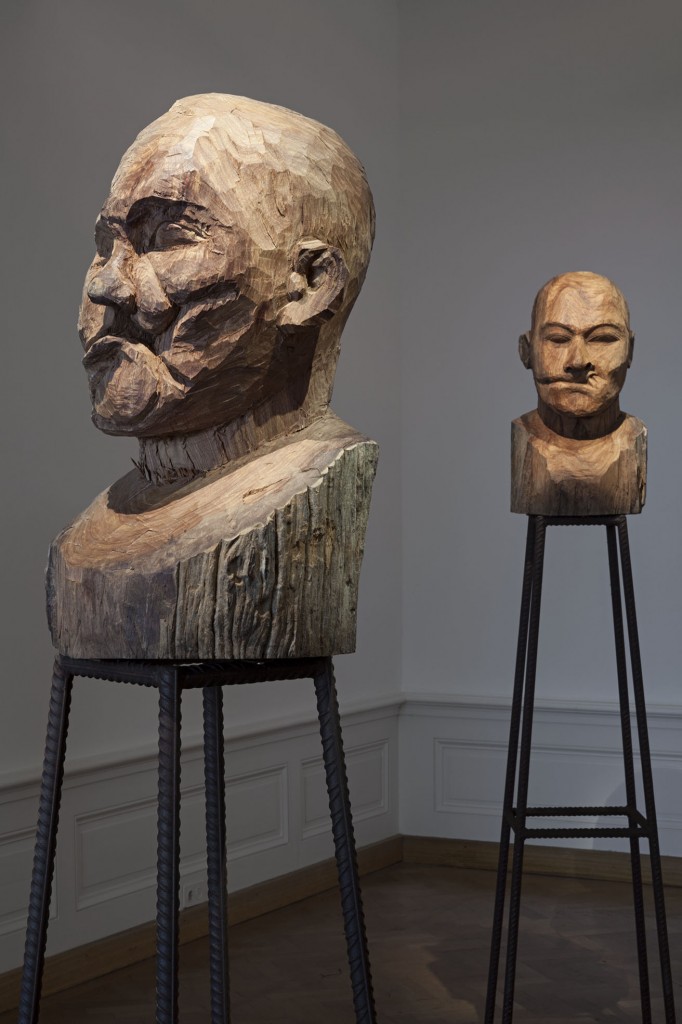





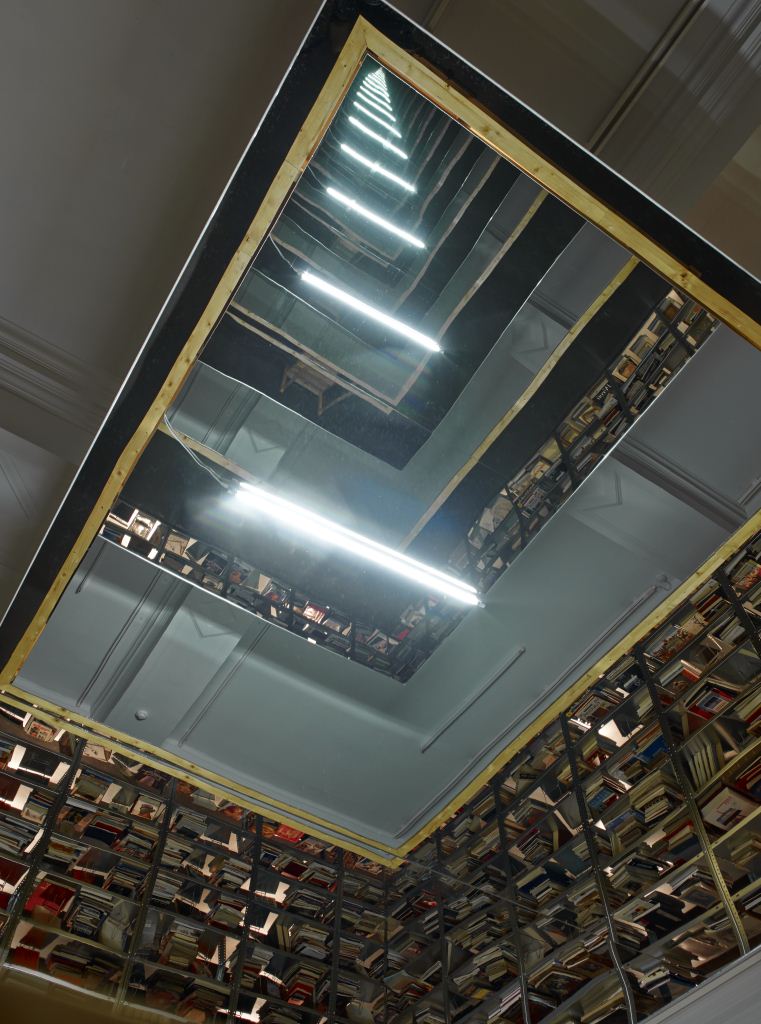
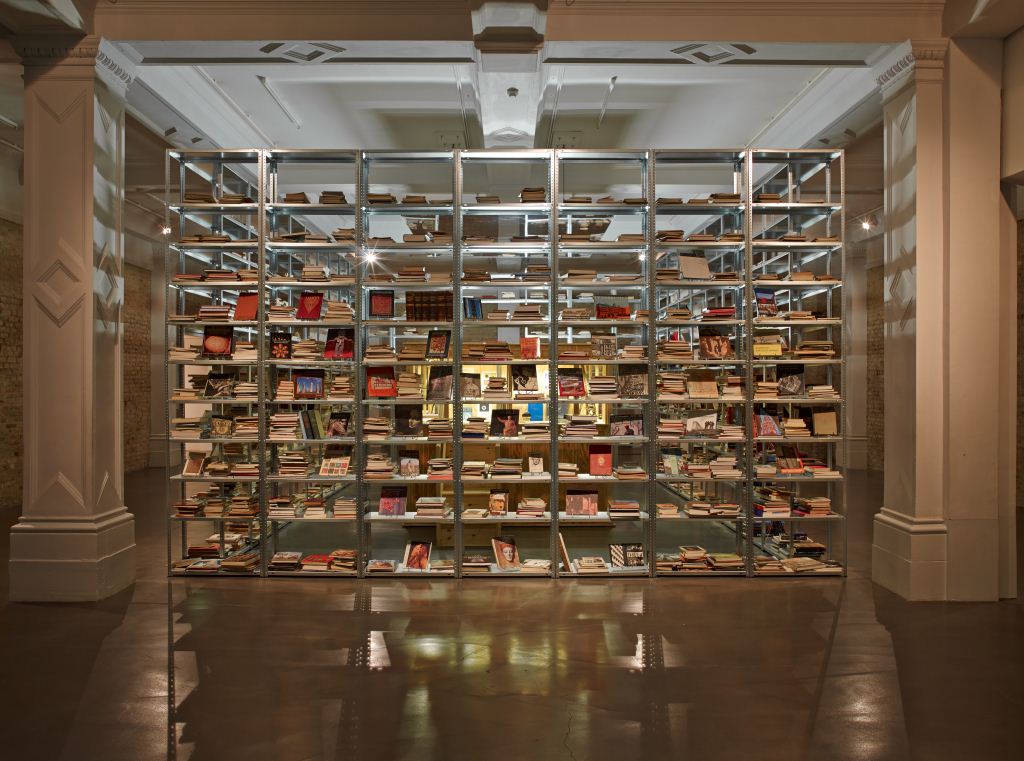
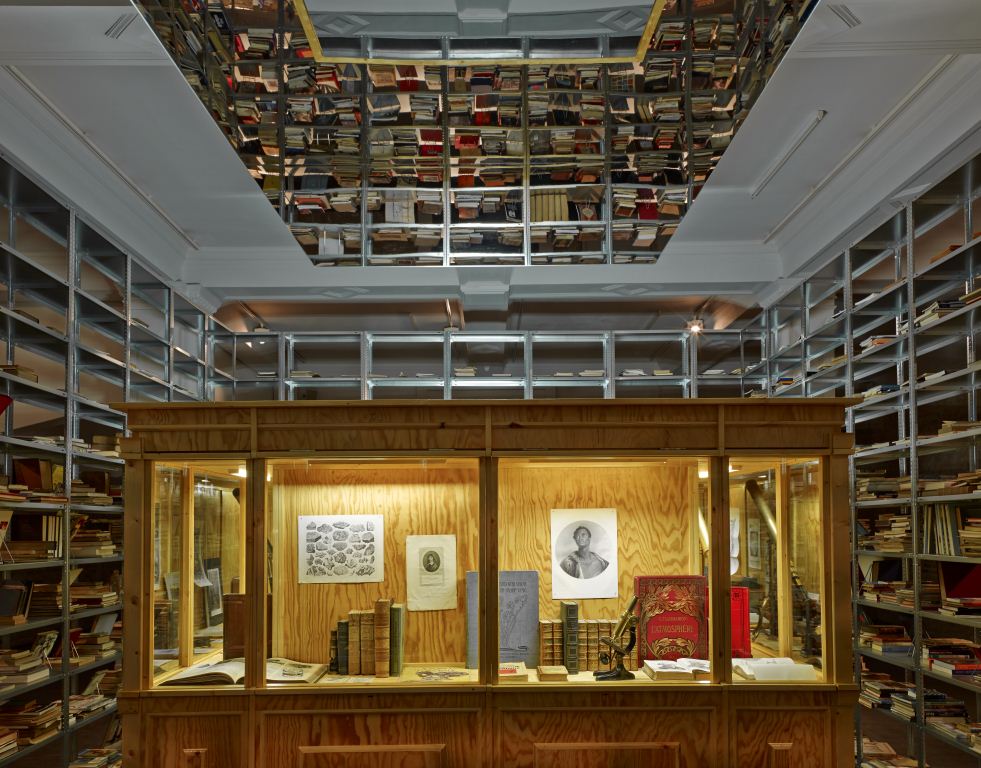
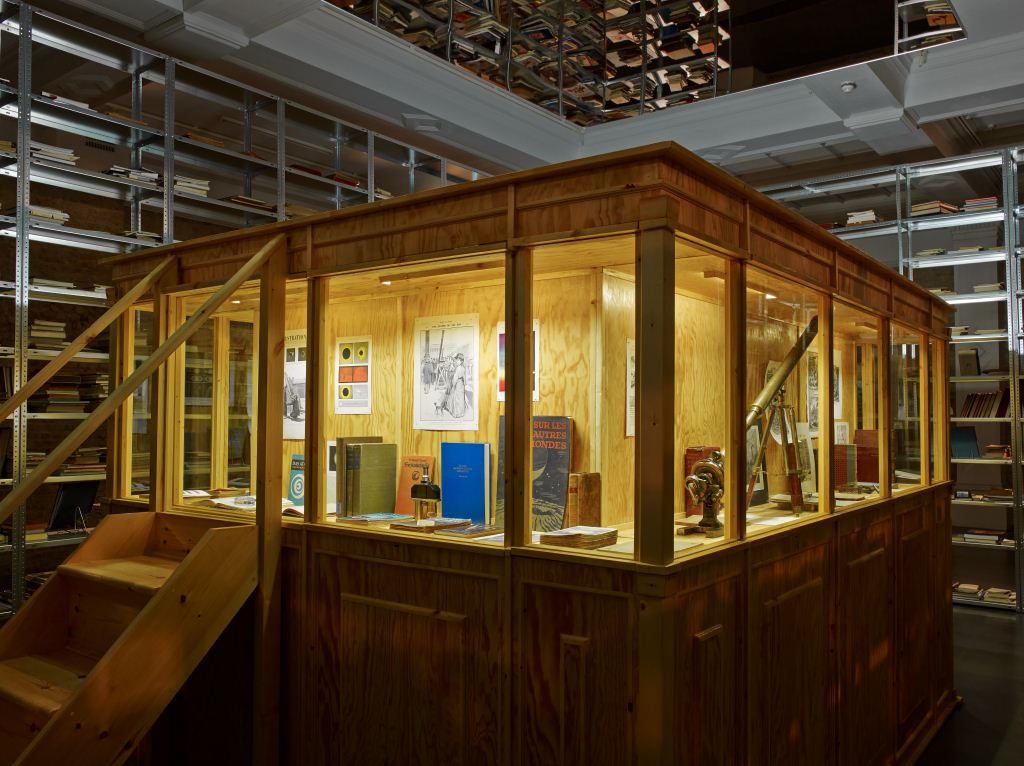
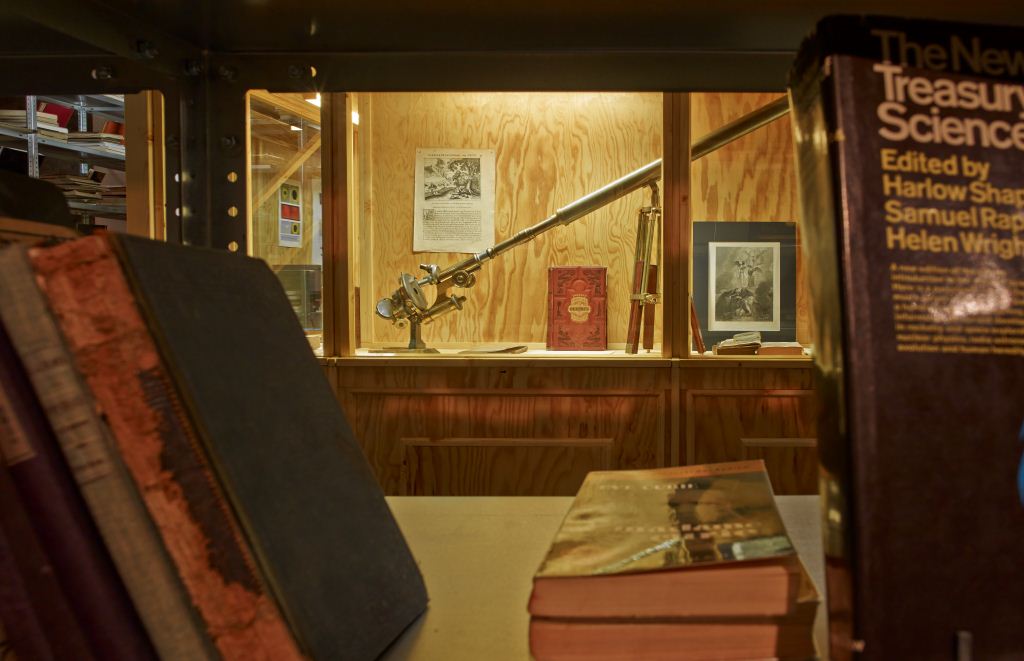
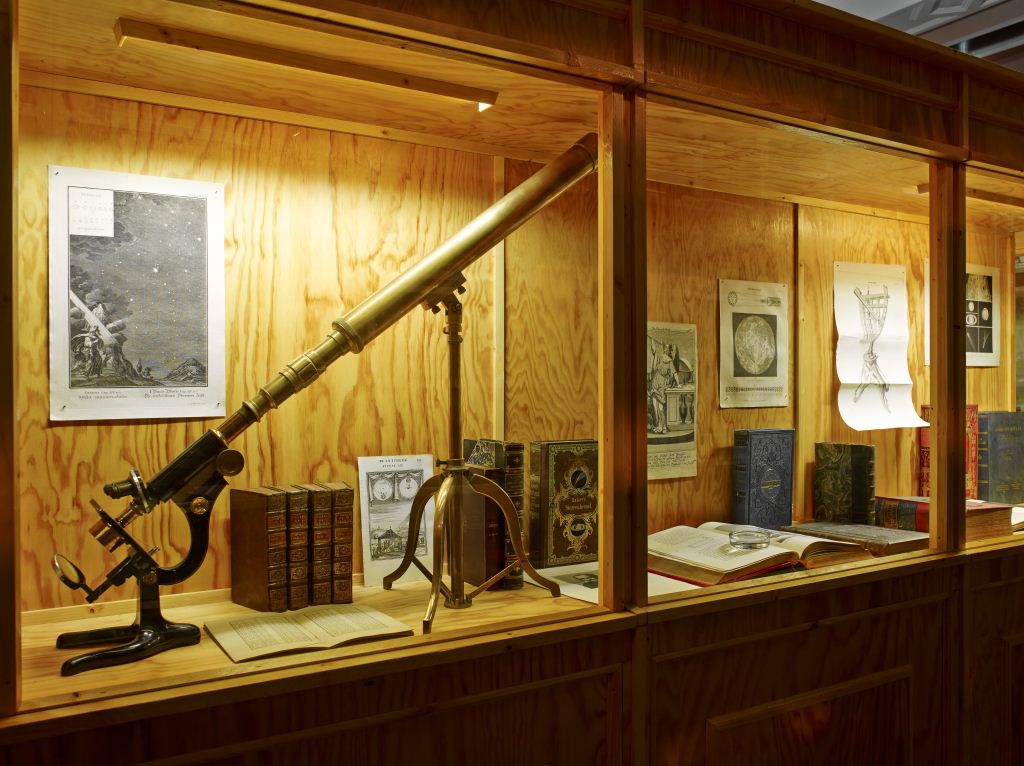





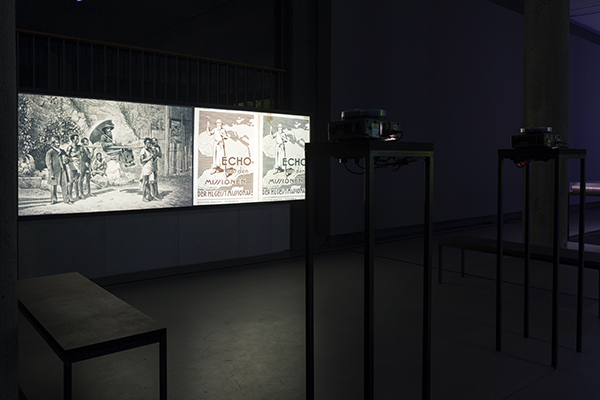
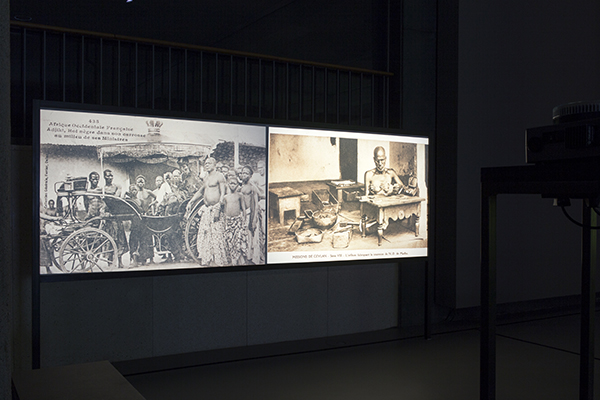
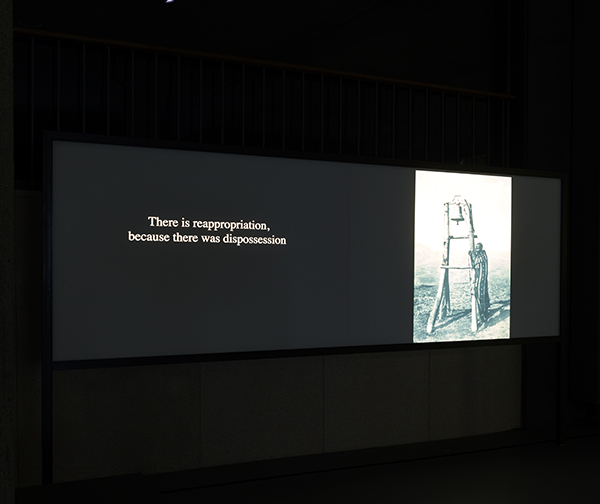
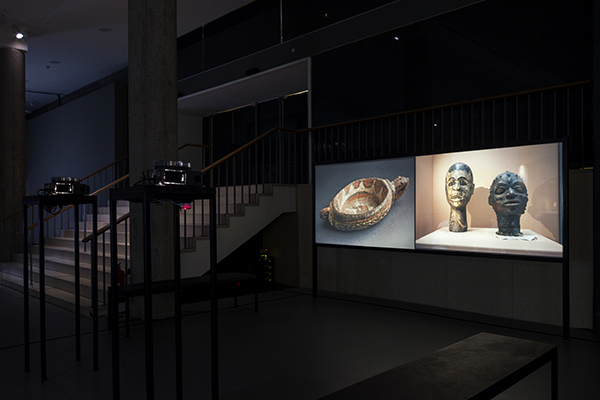


































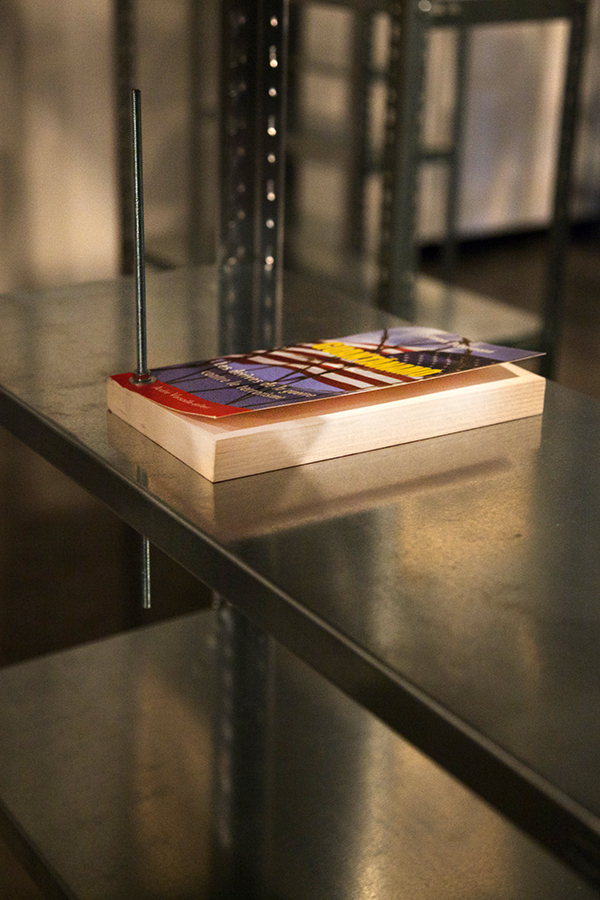

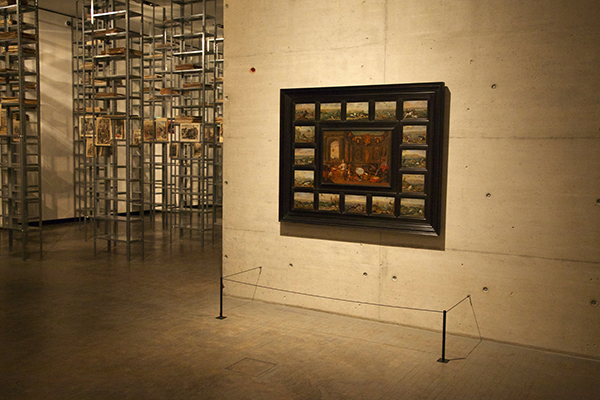
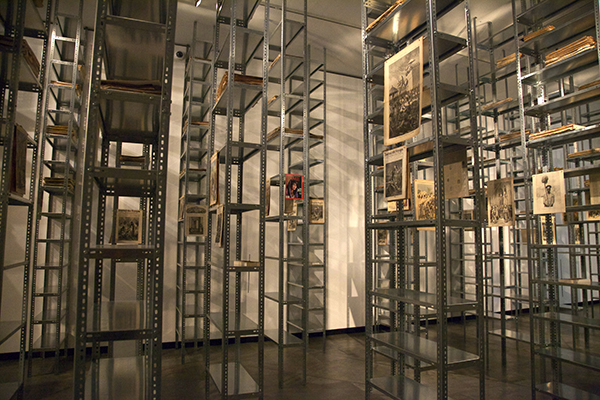

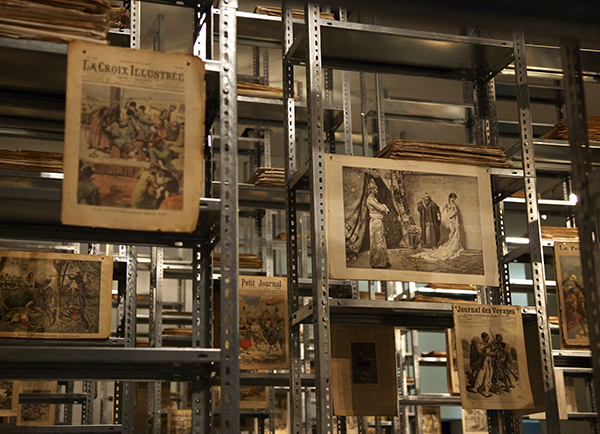
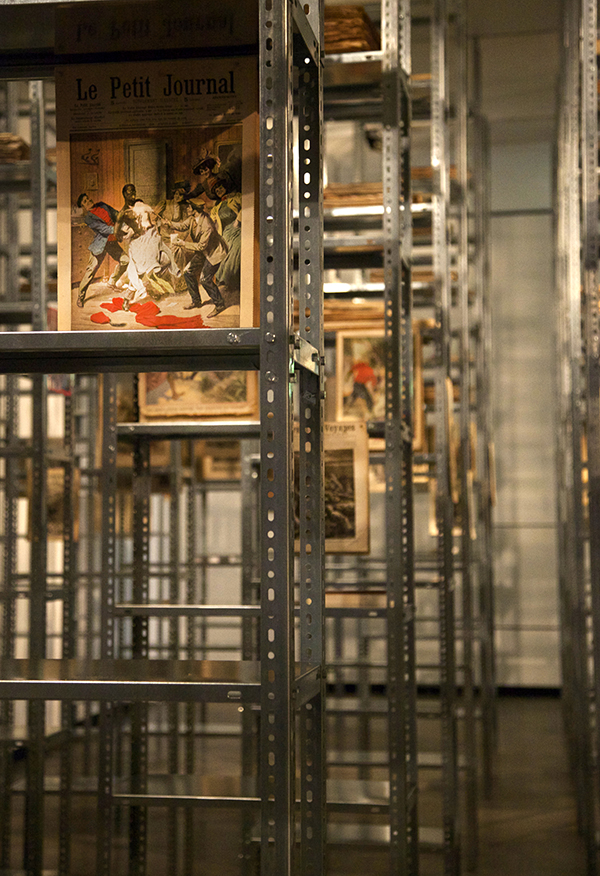
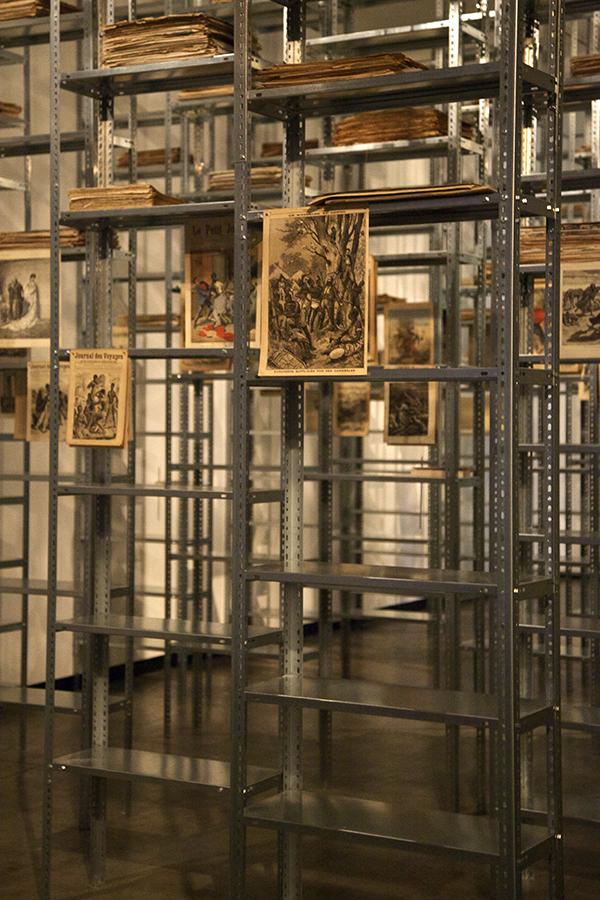
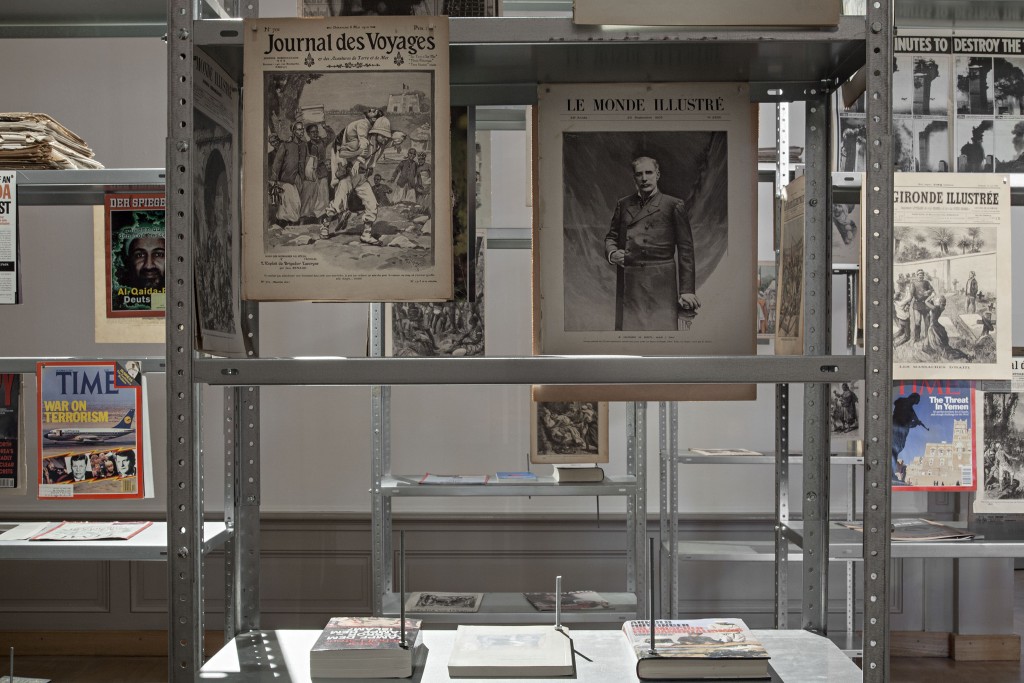
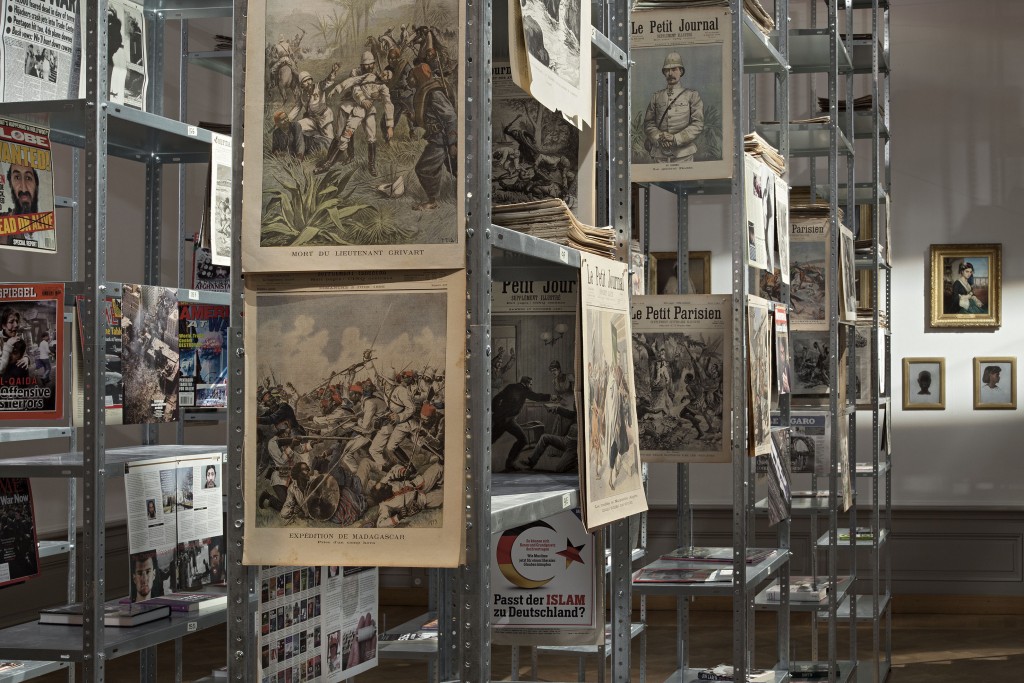
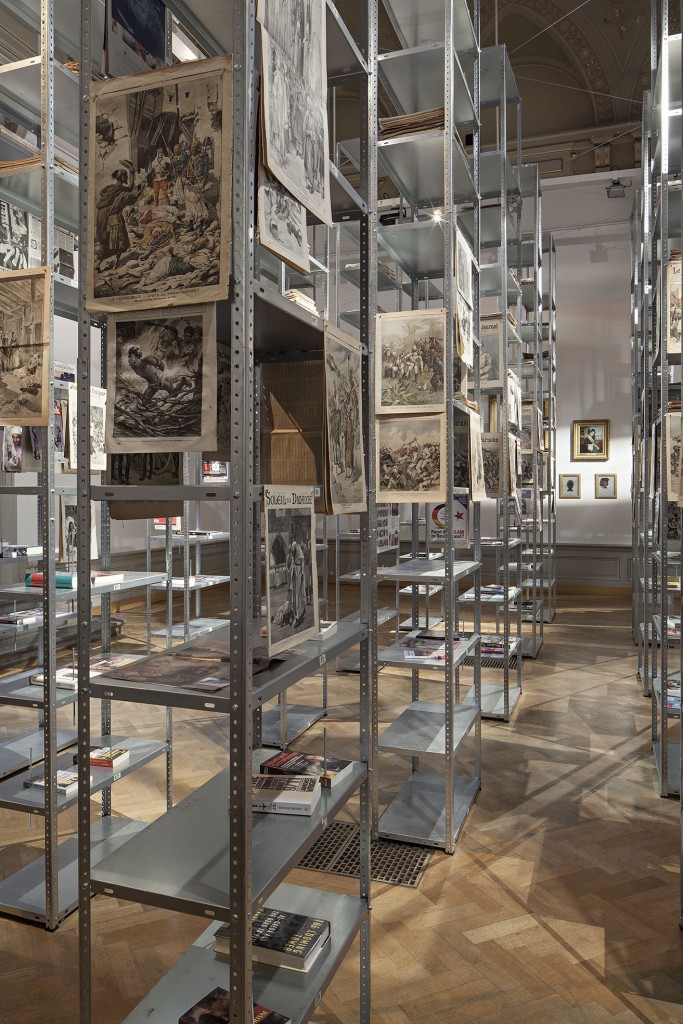
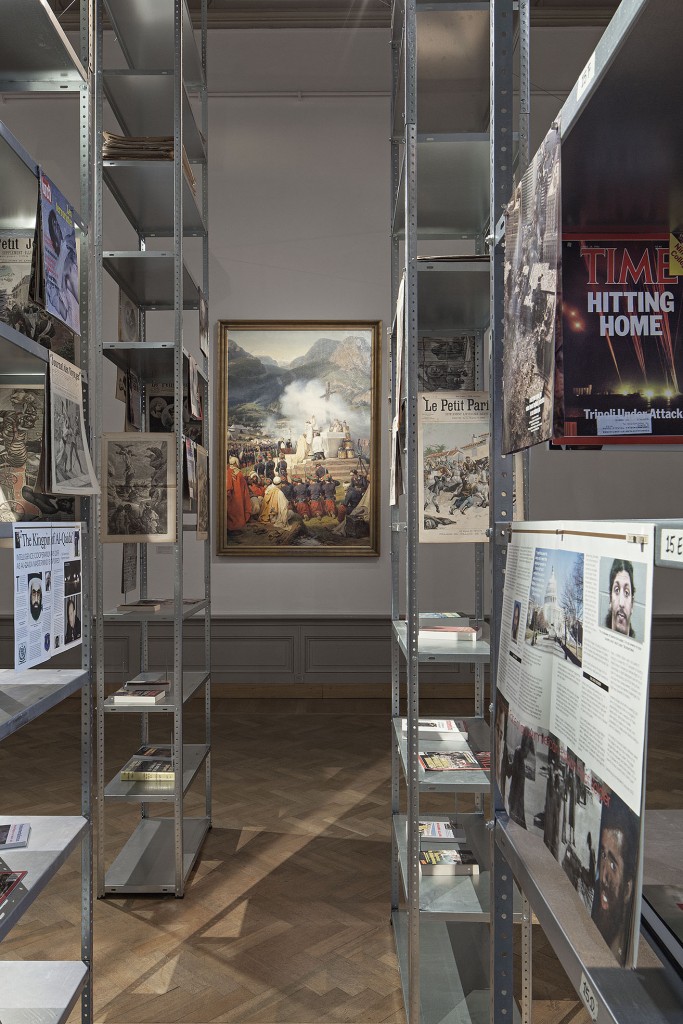
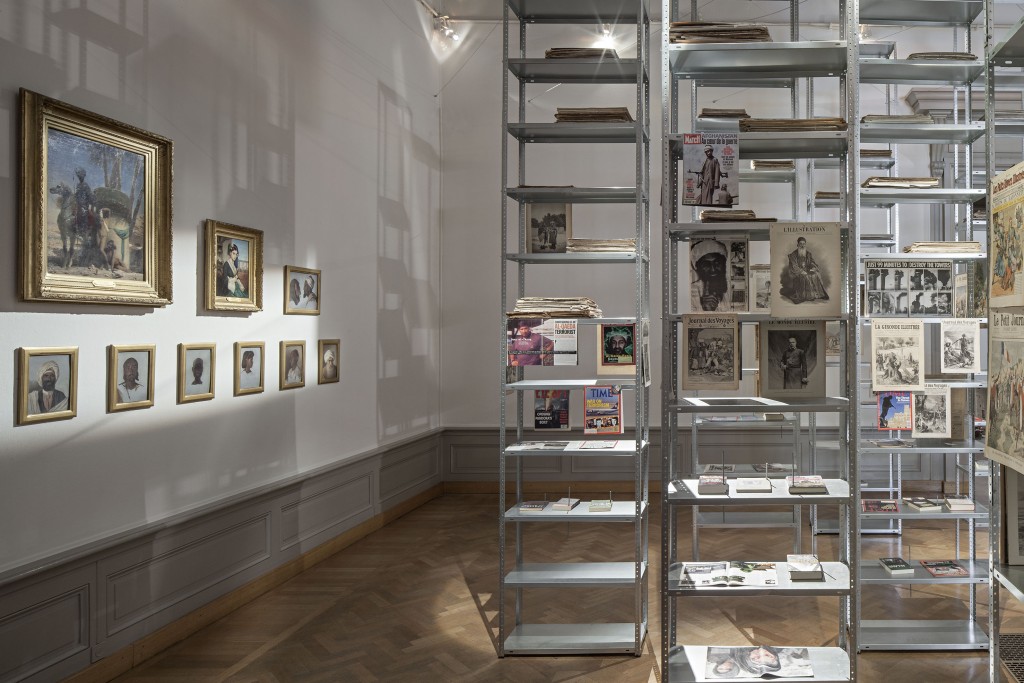











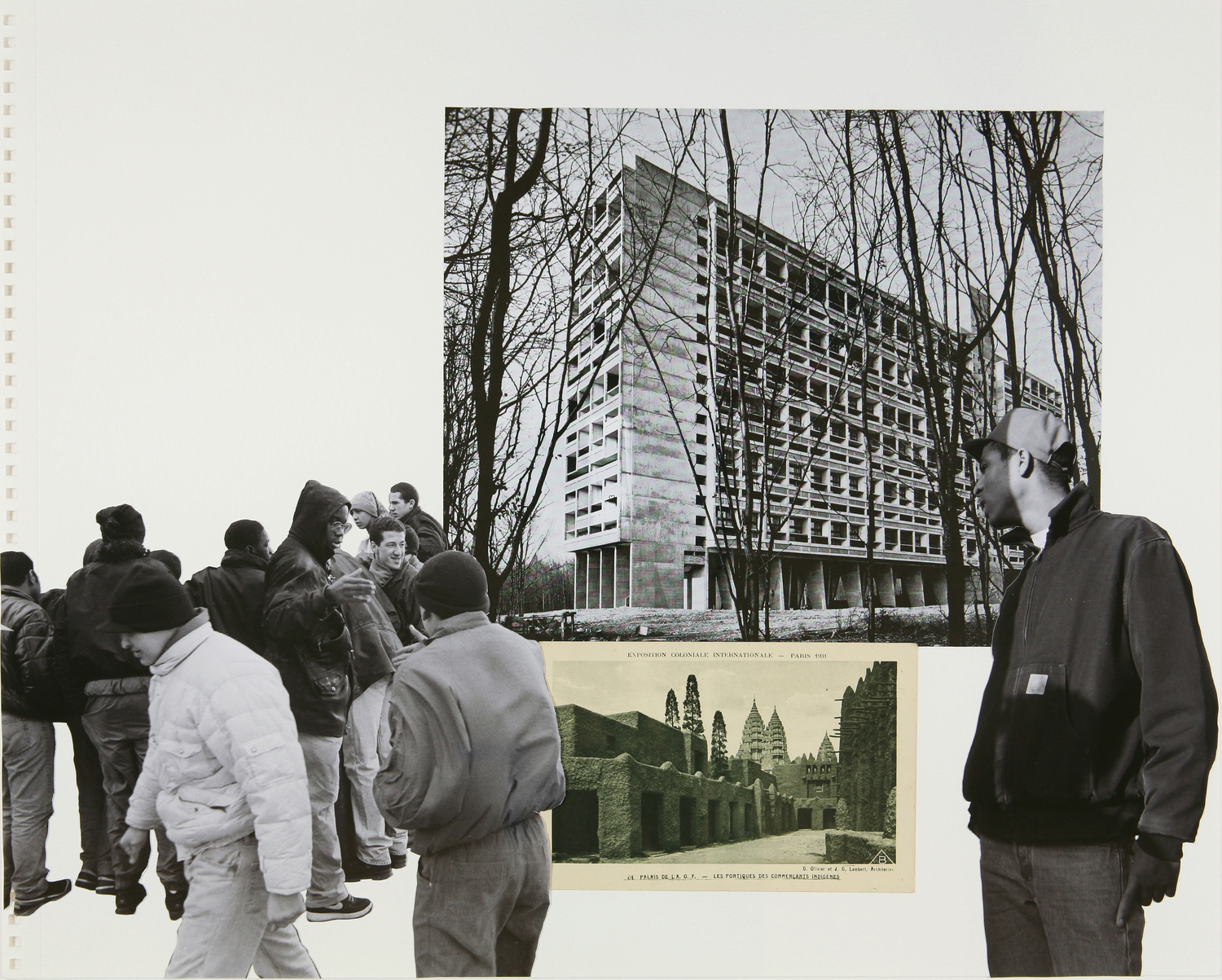
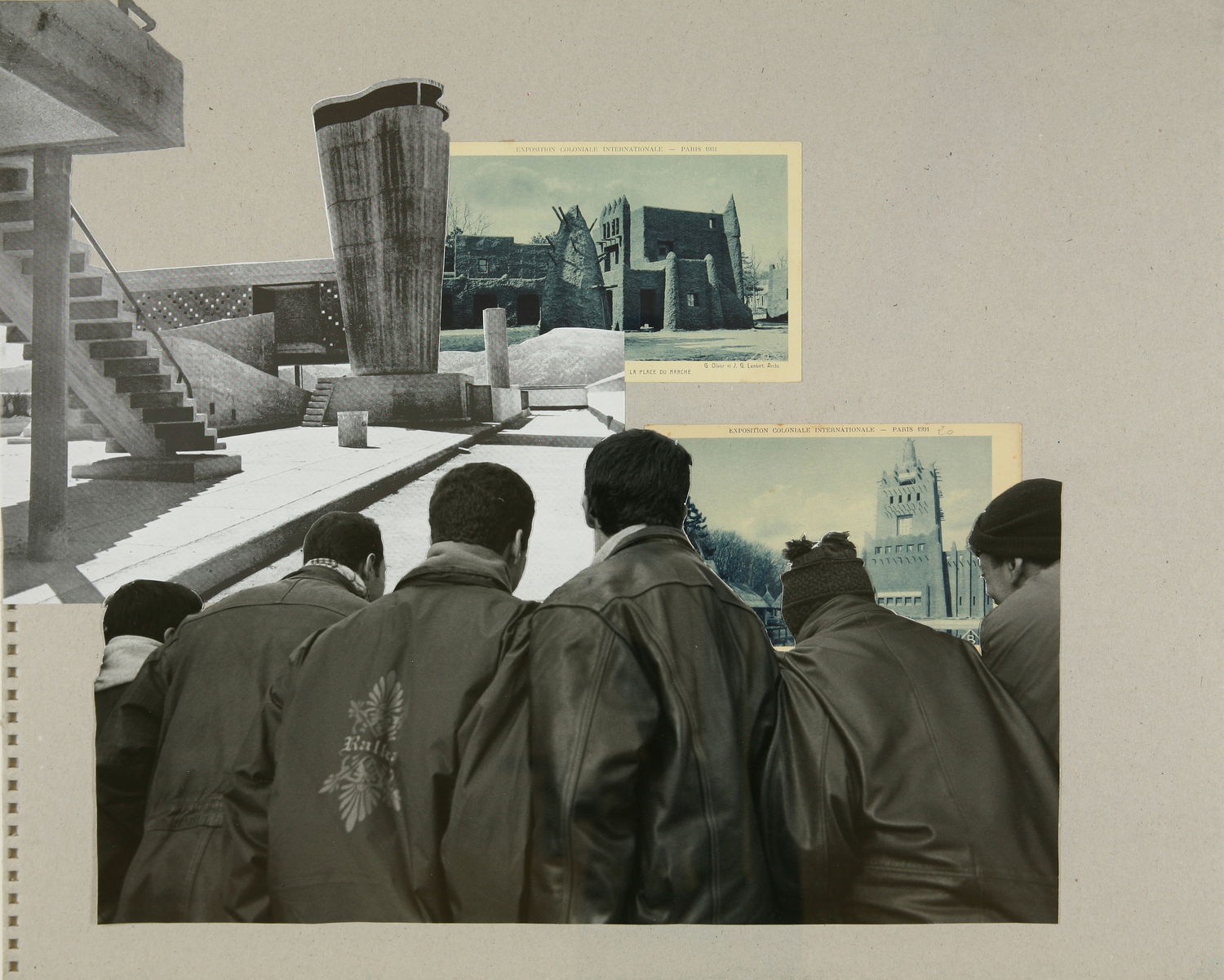

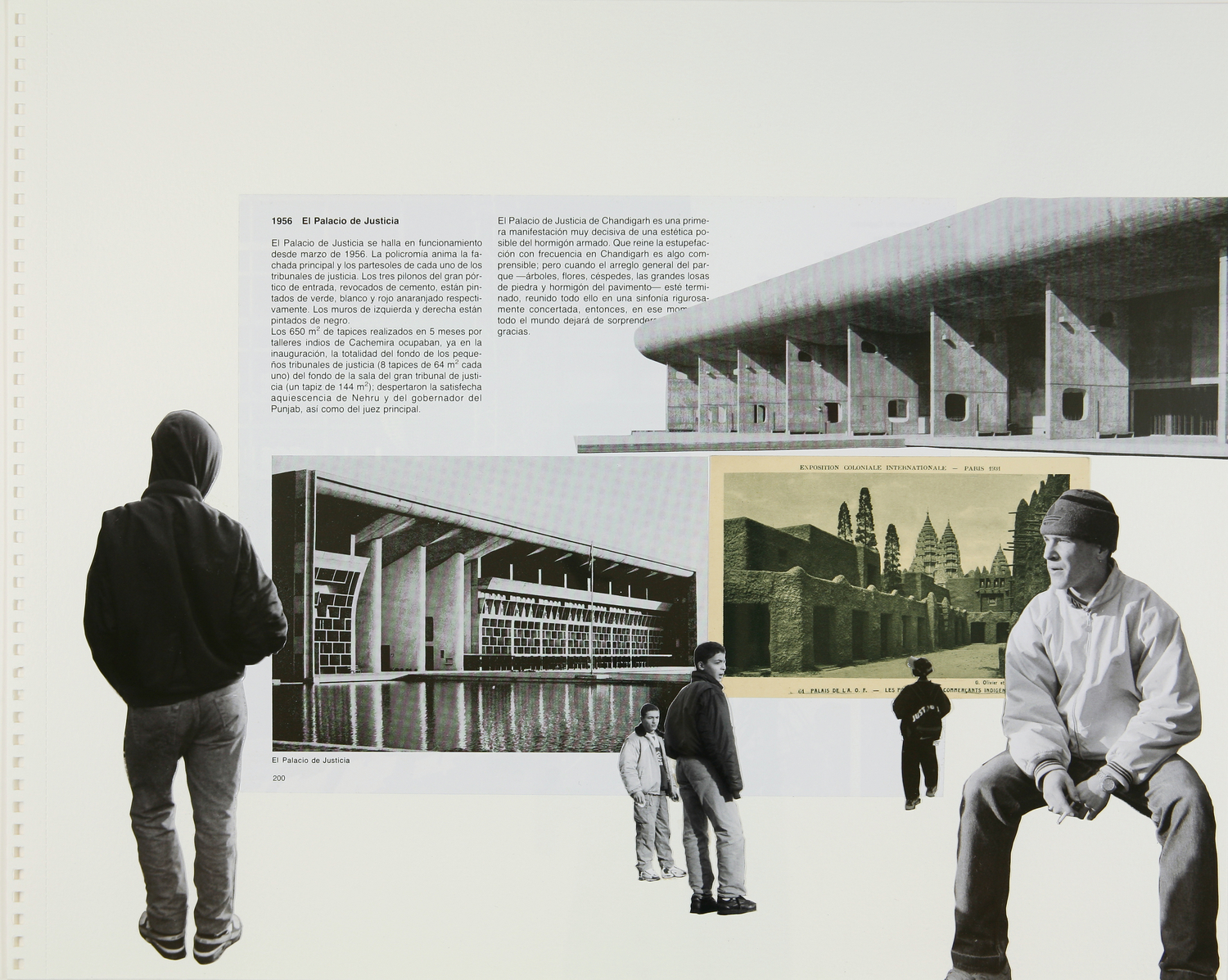
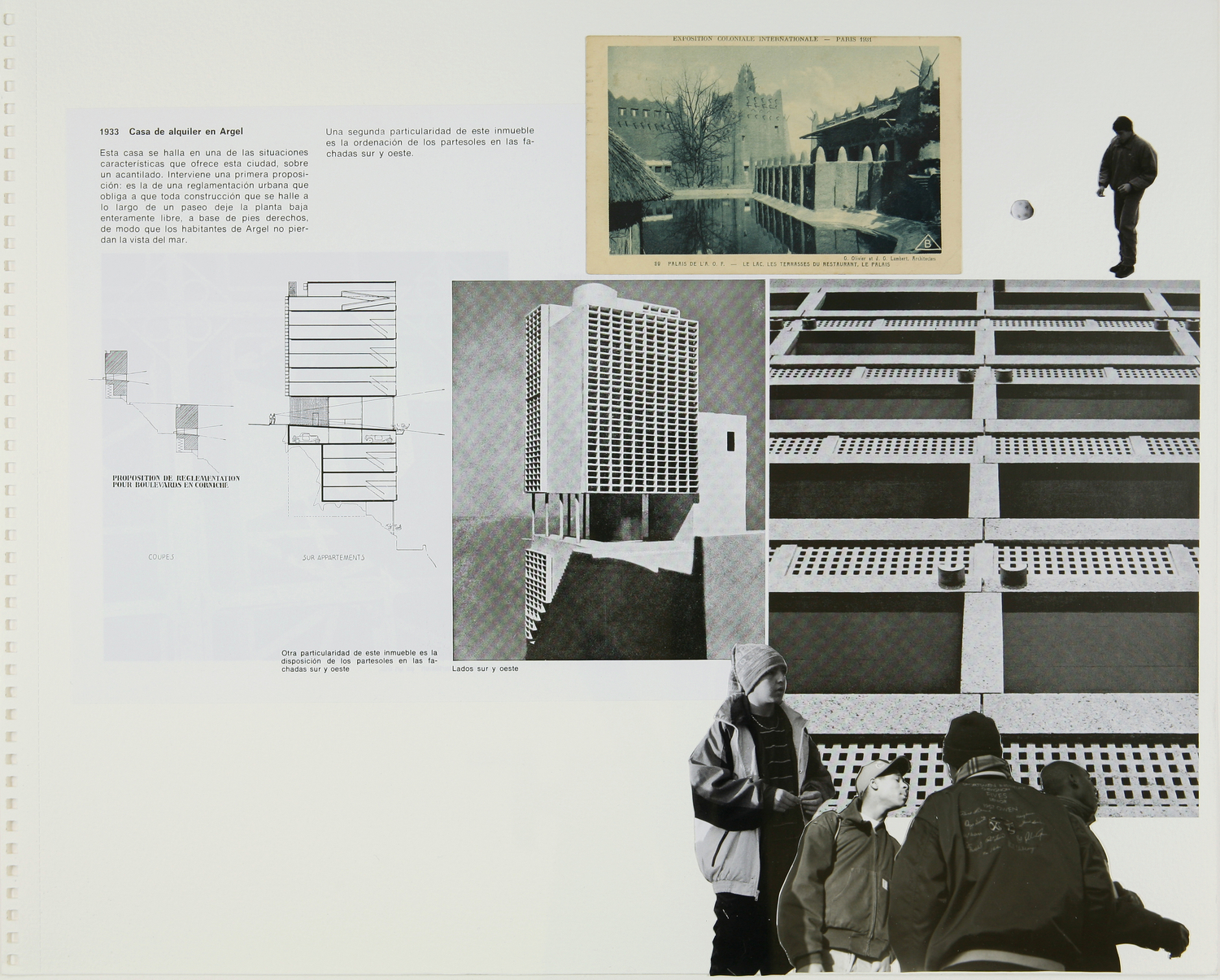









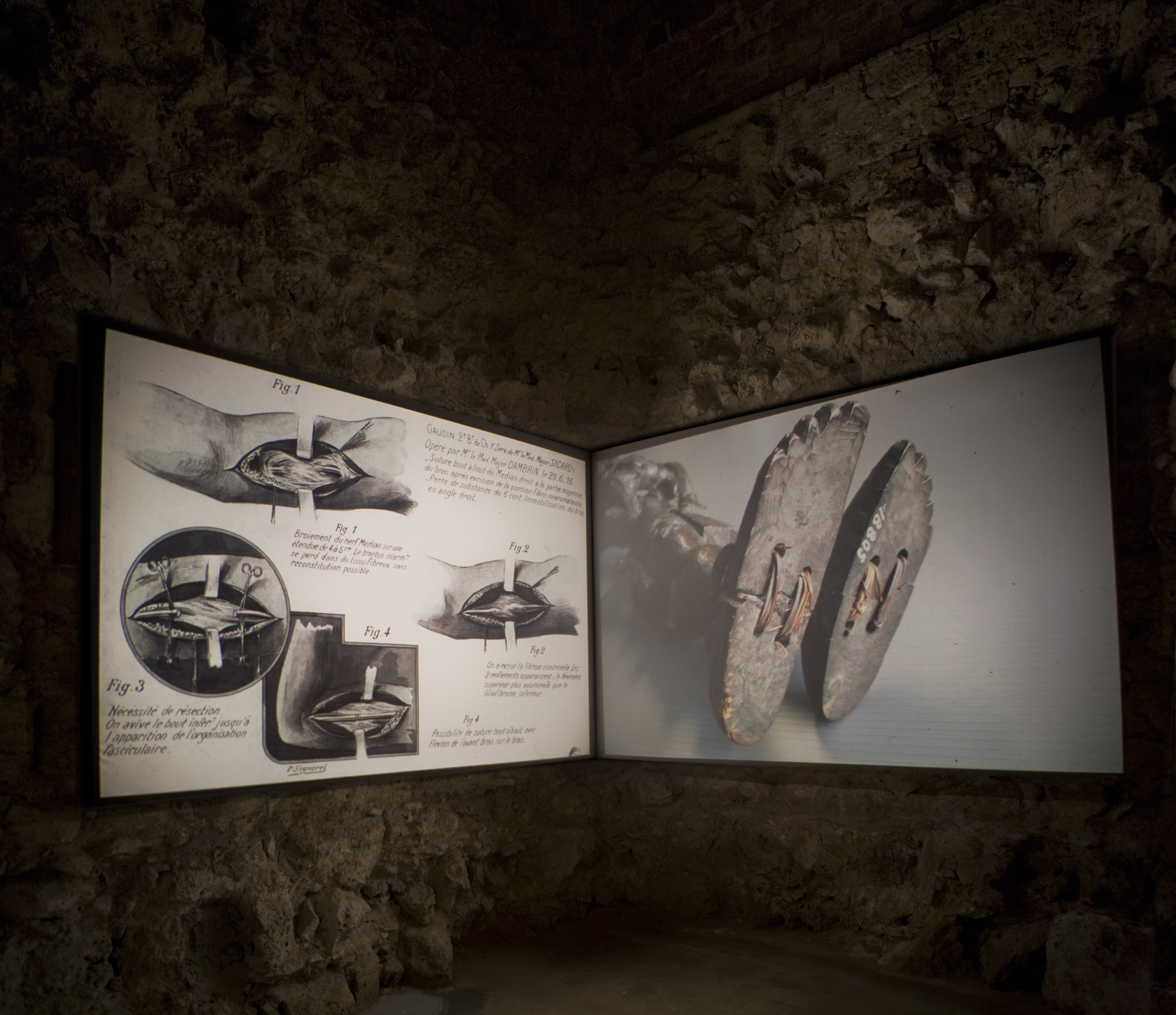
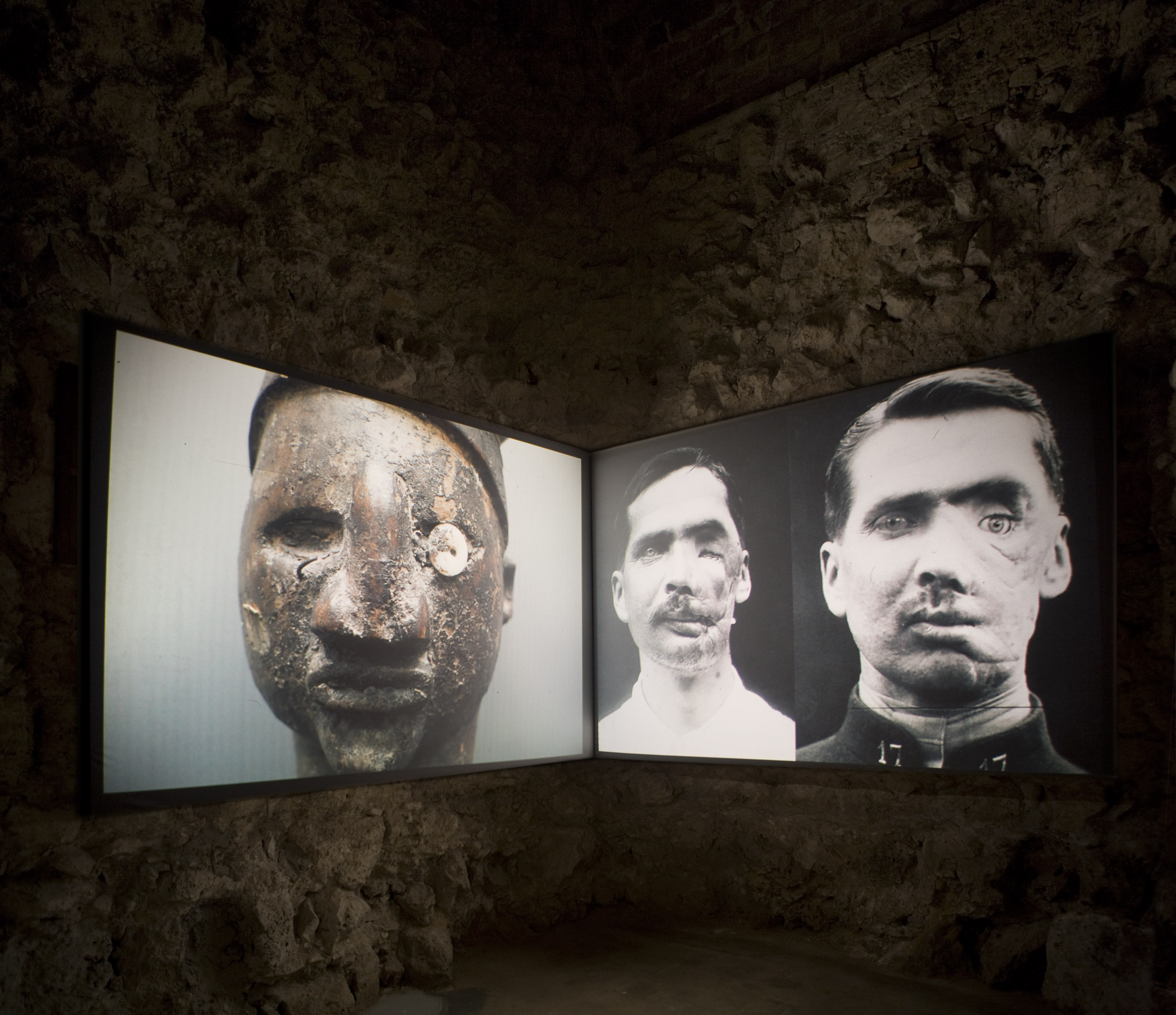
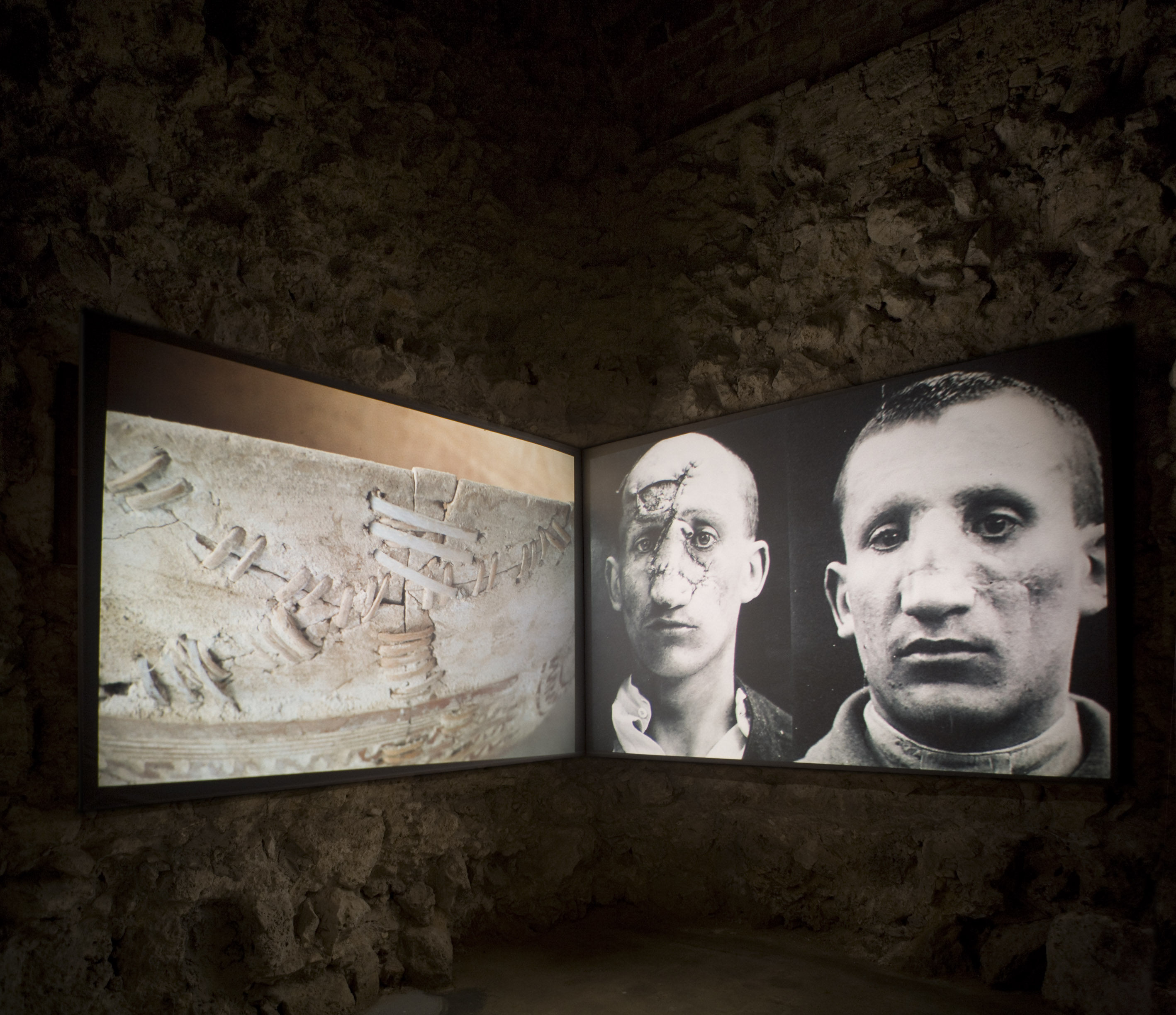
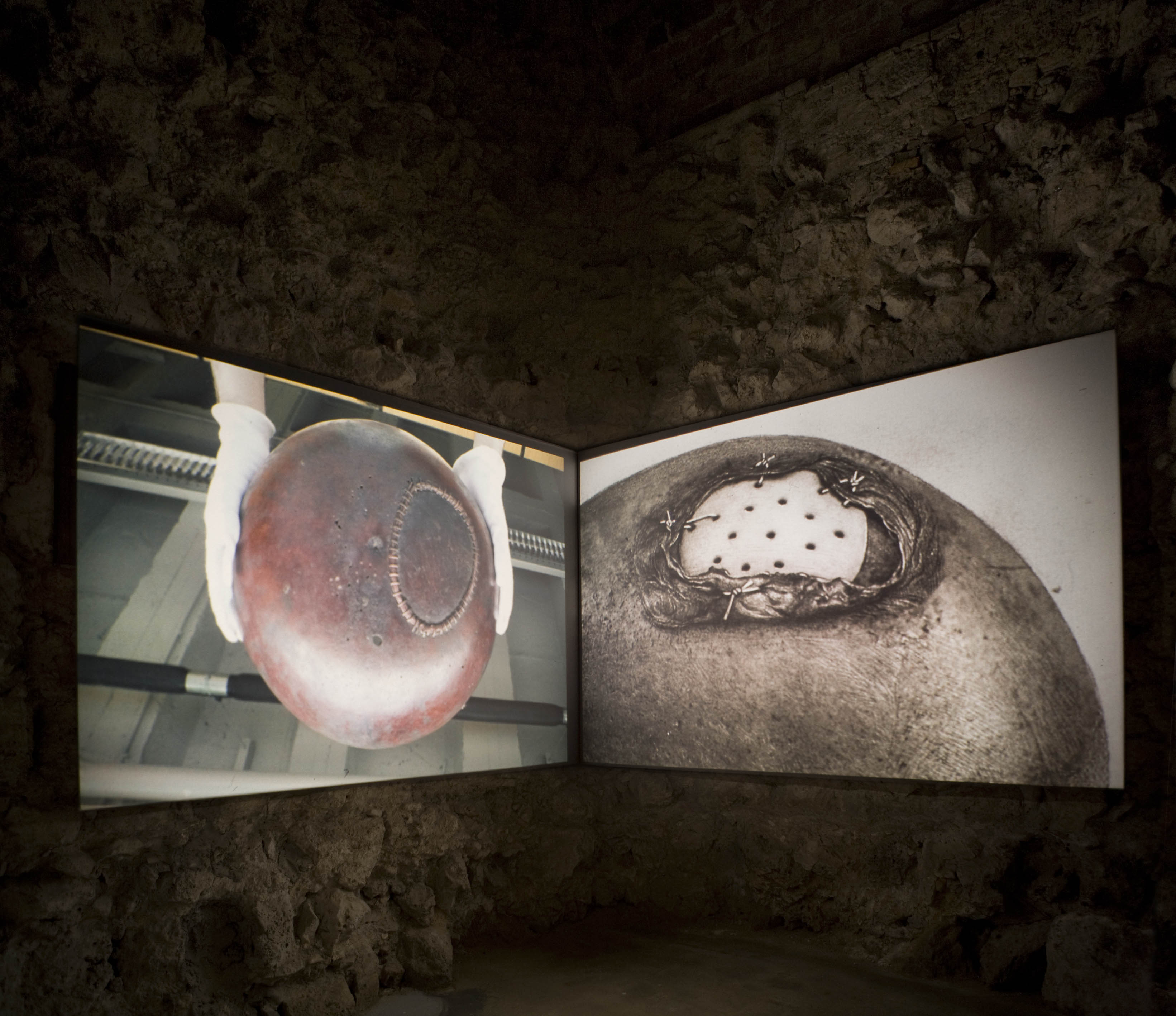








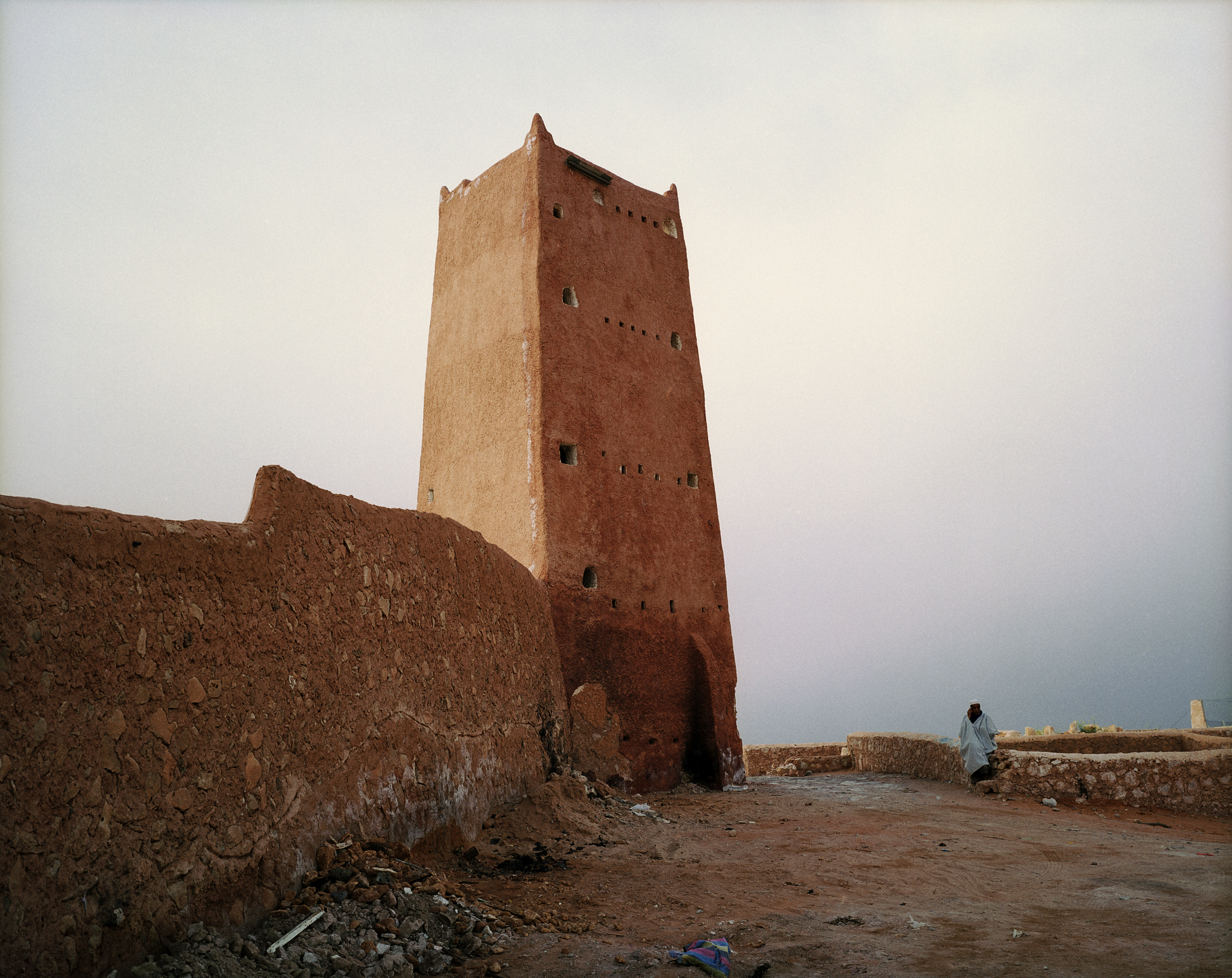
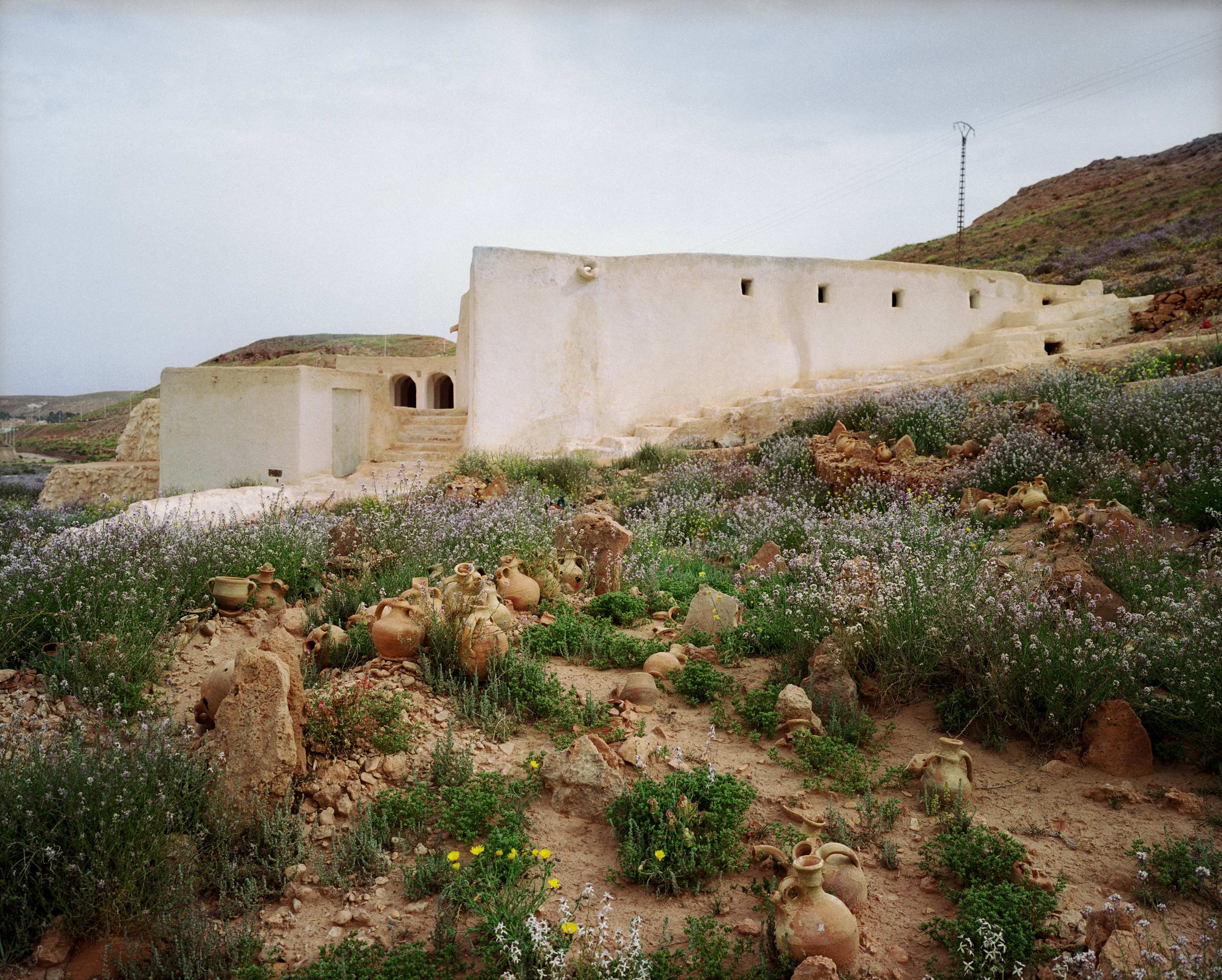
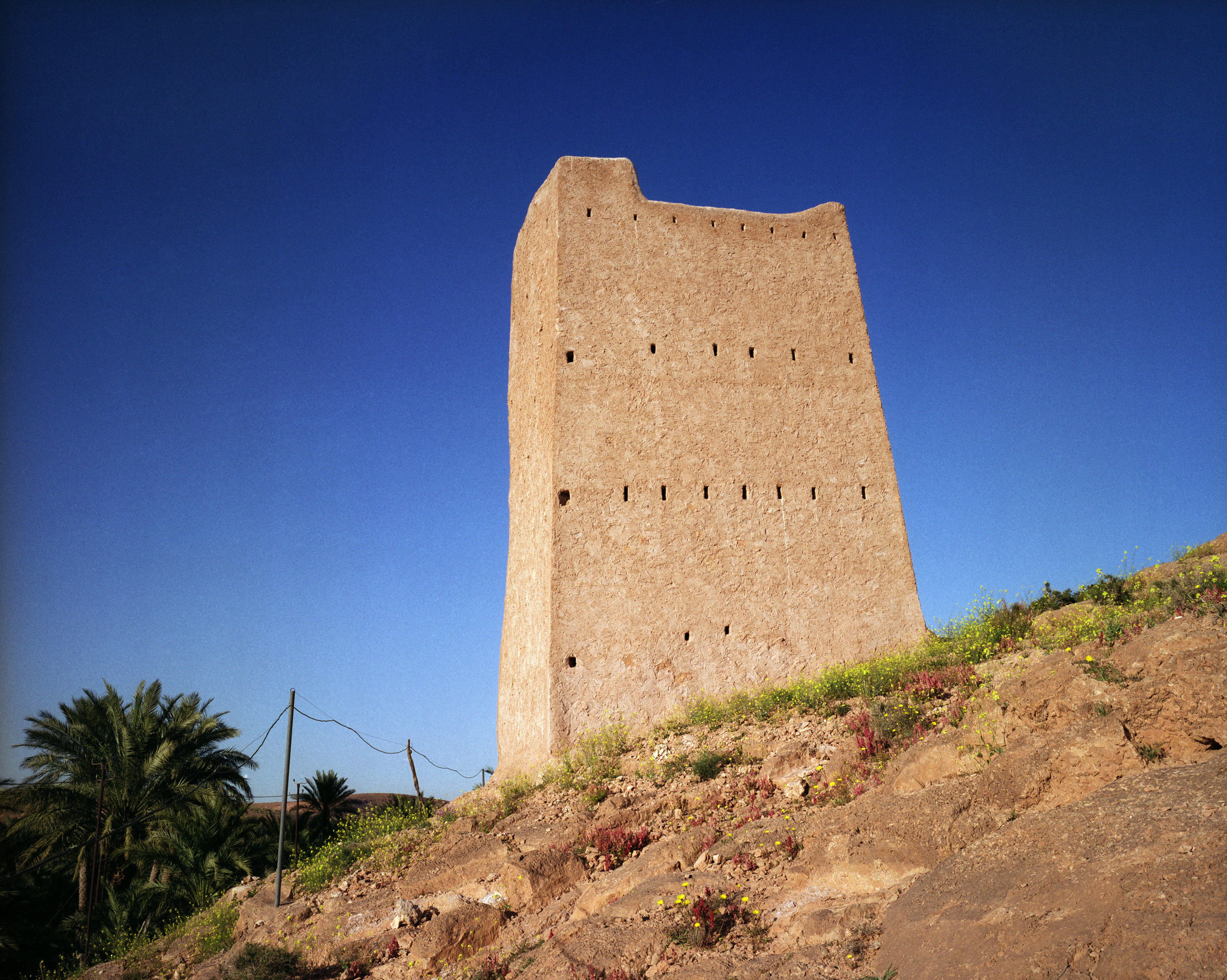
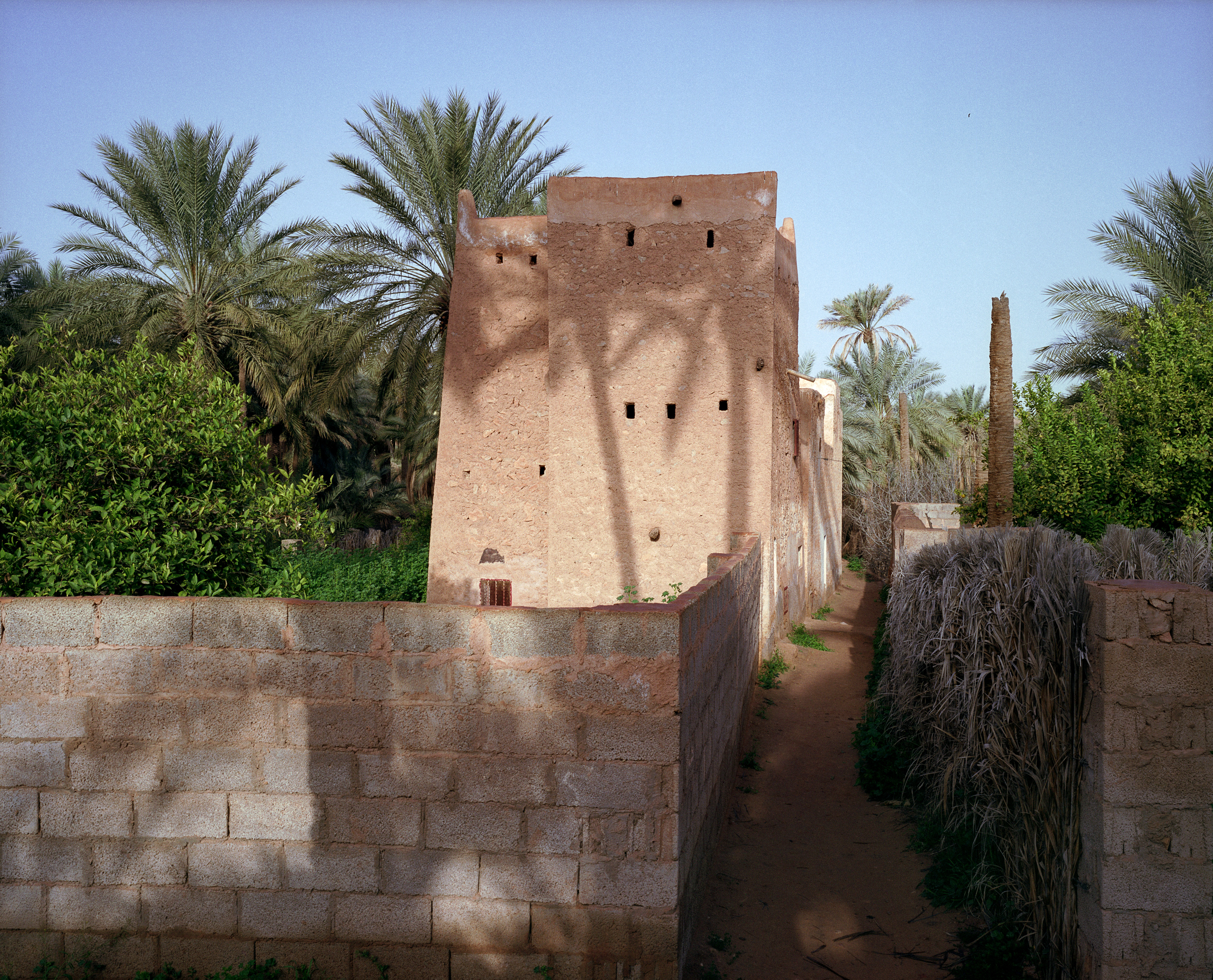


















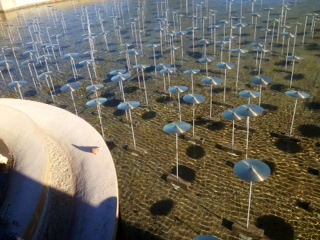













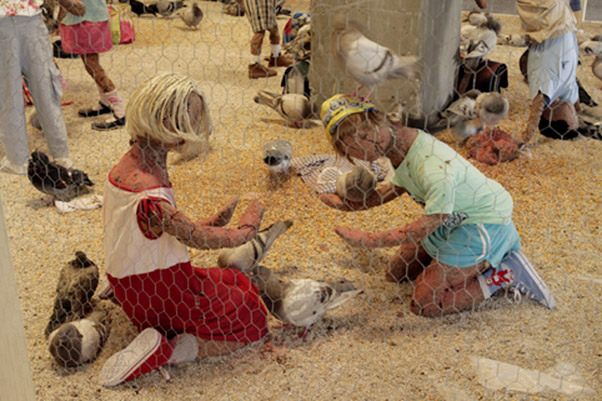
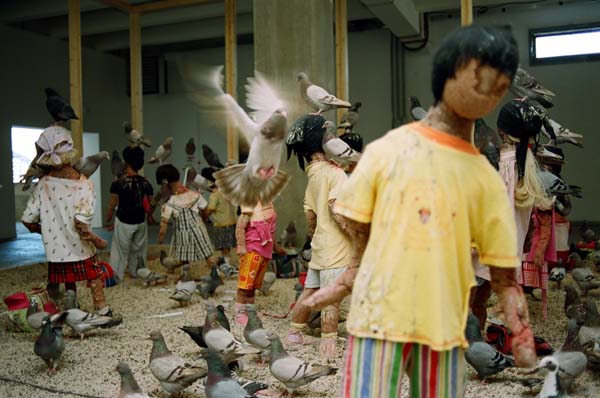
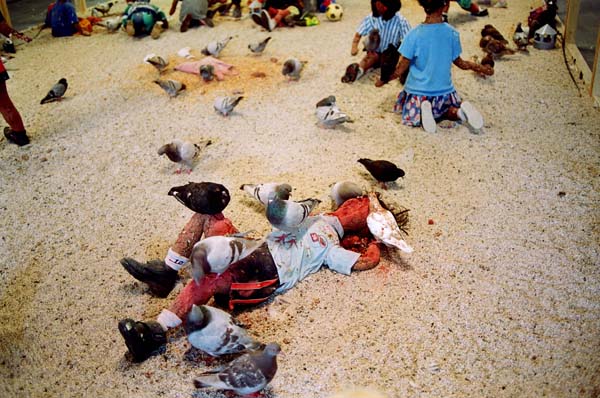



 photo: Steffen Harms
photo: Steffen Harms

